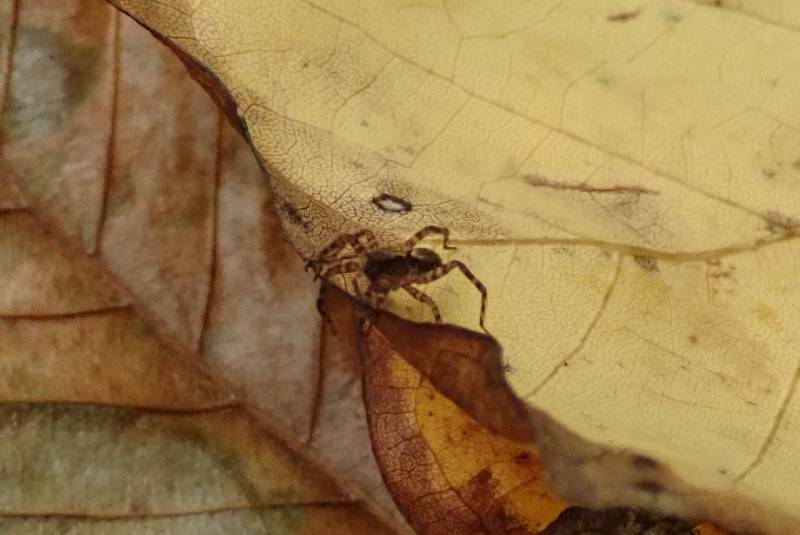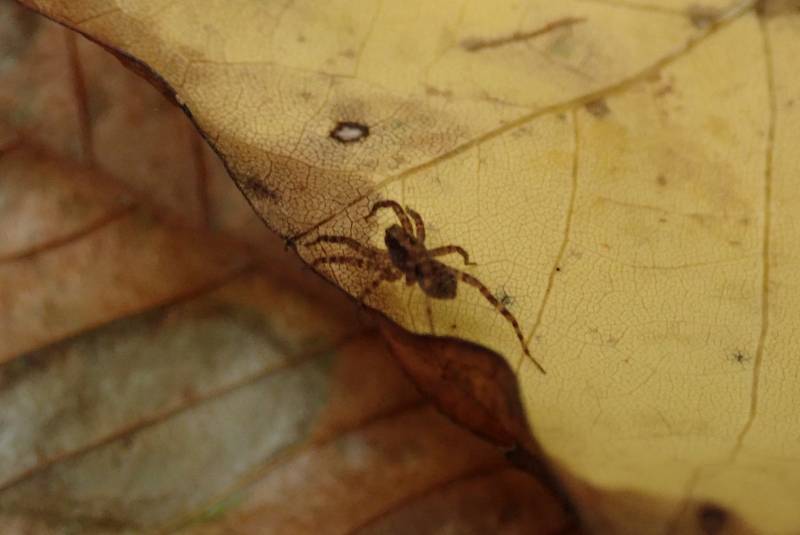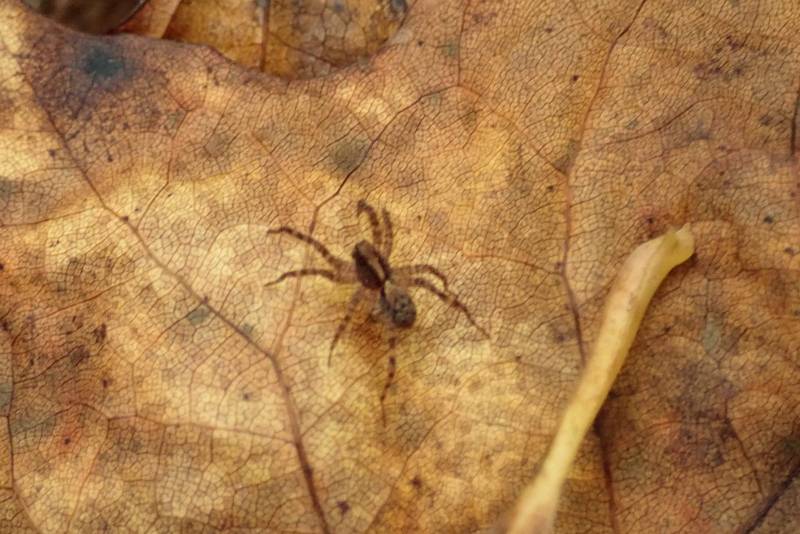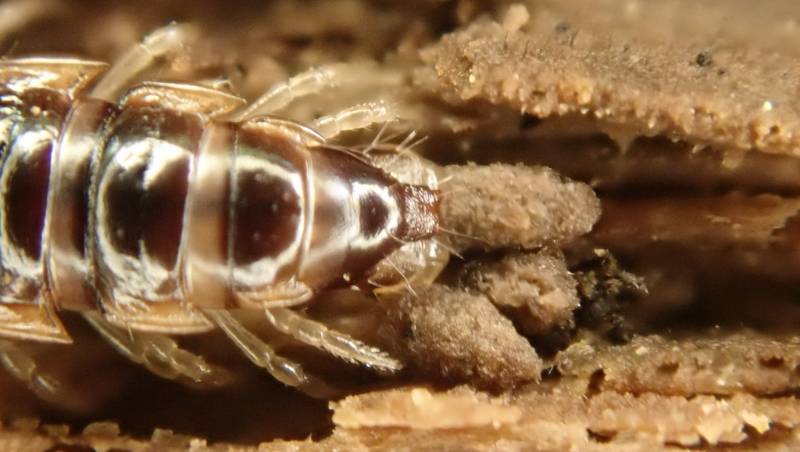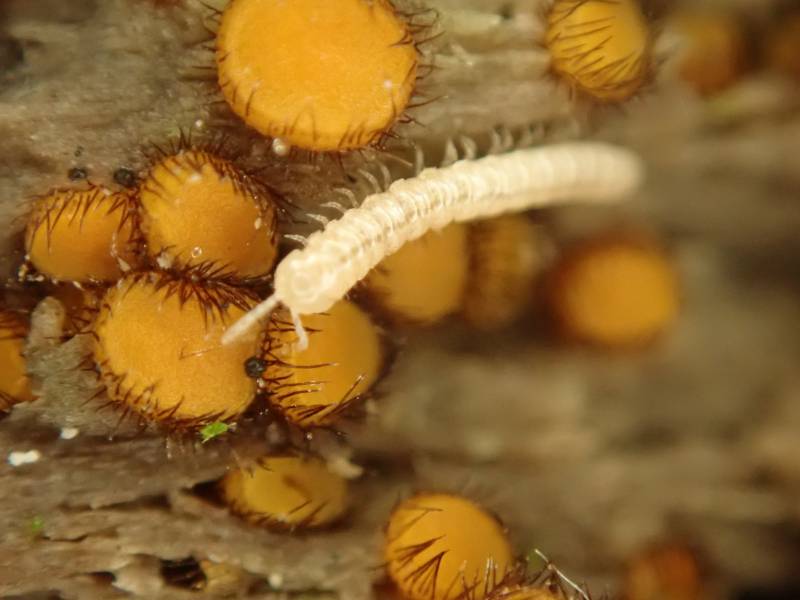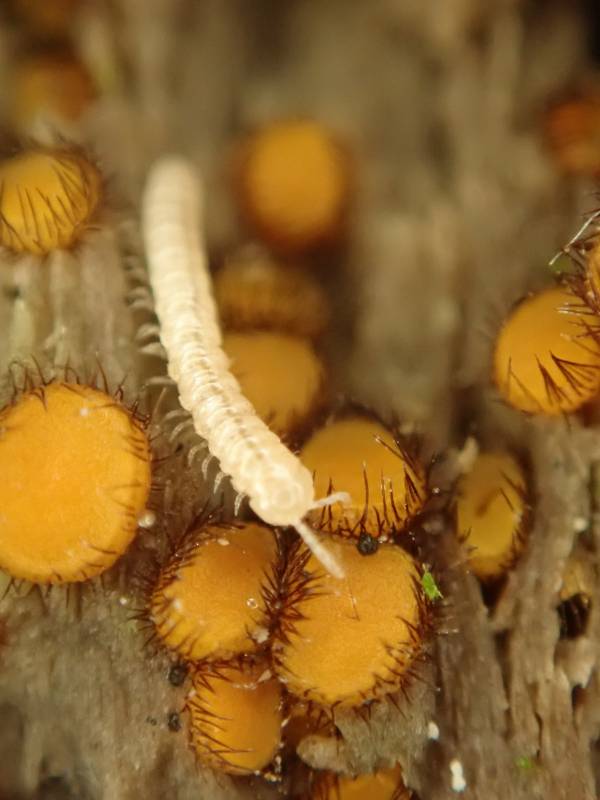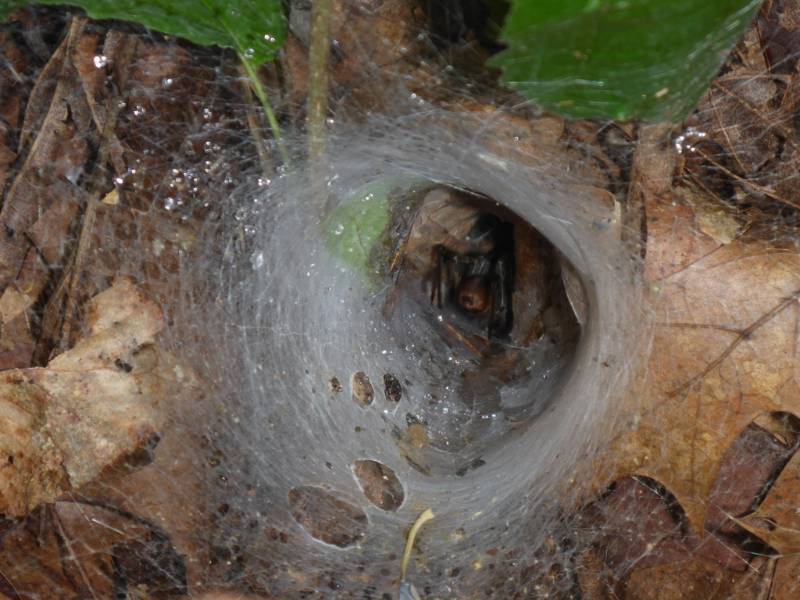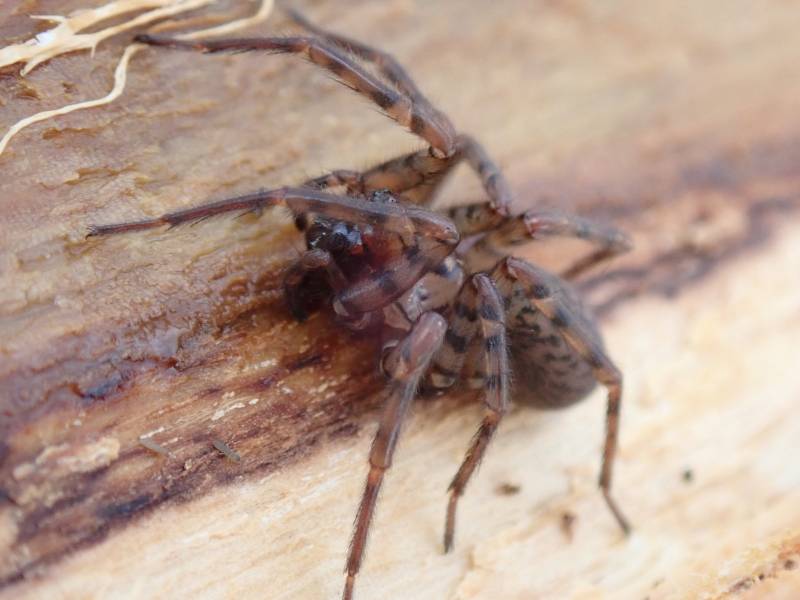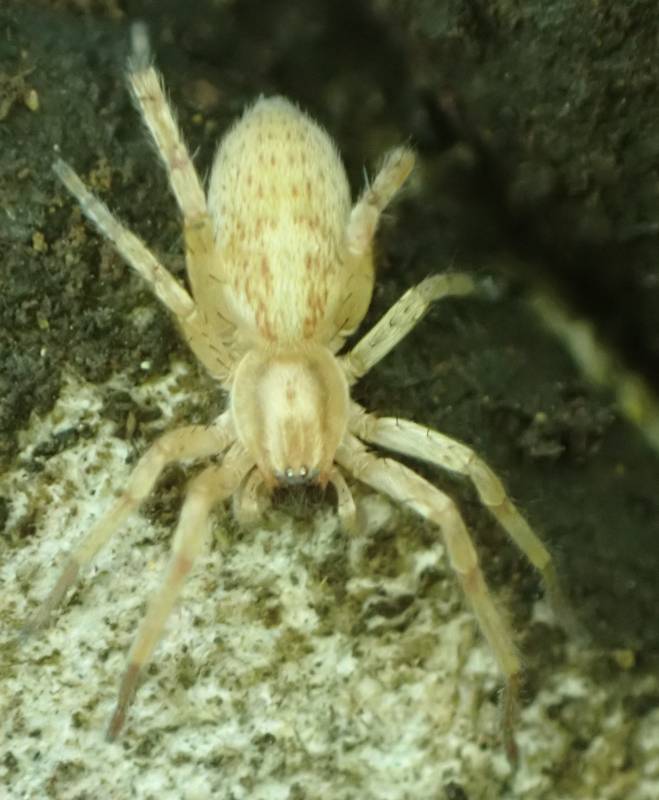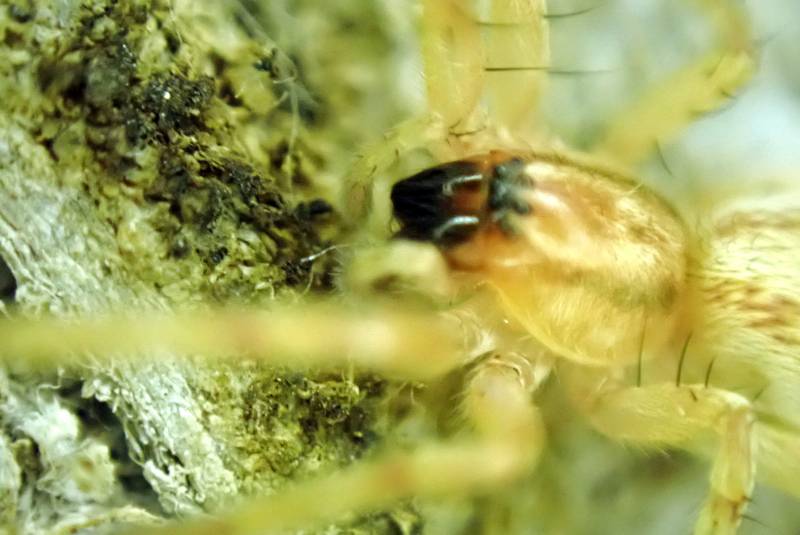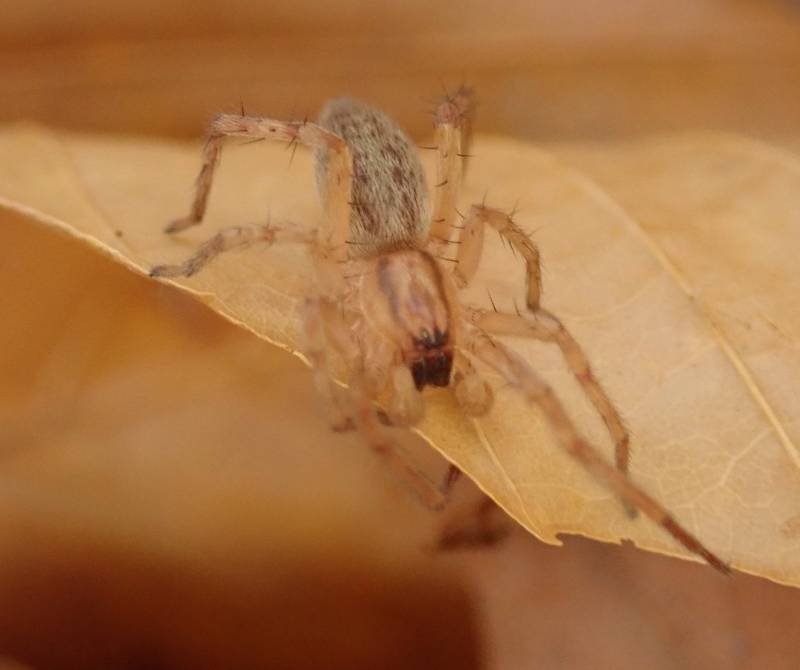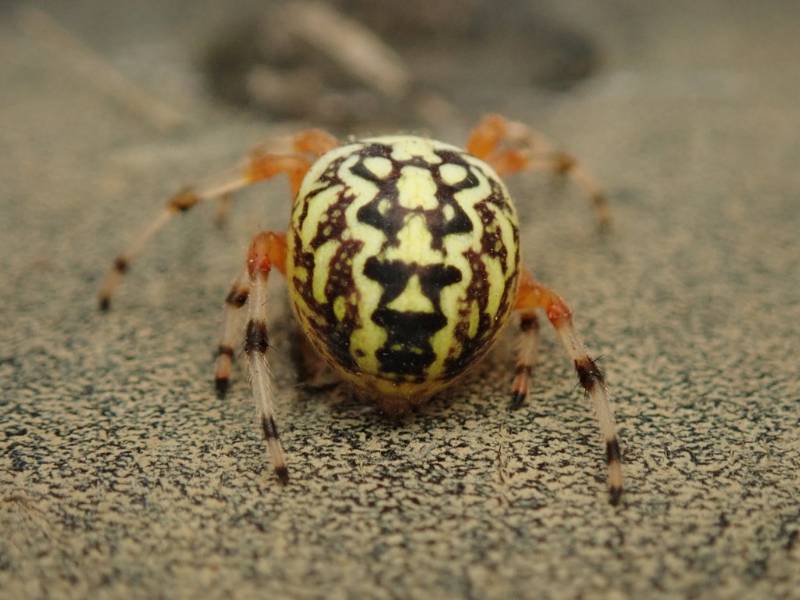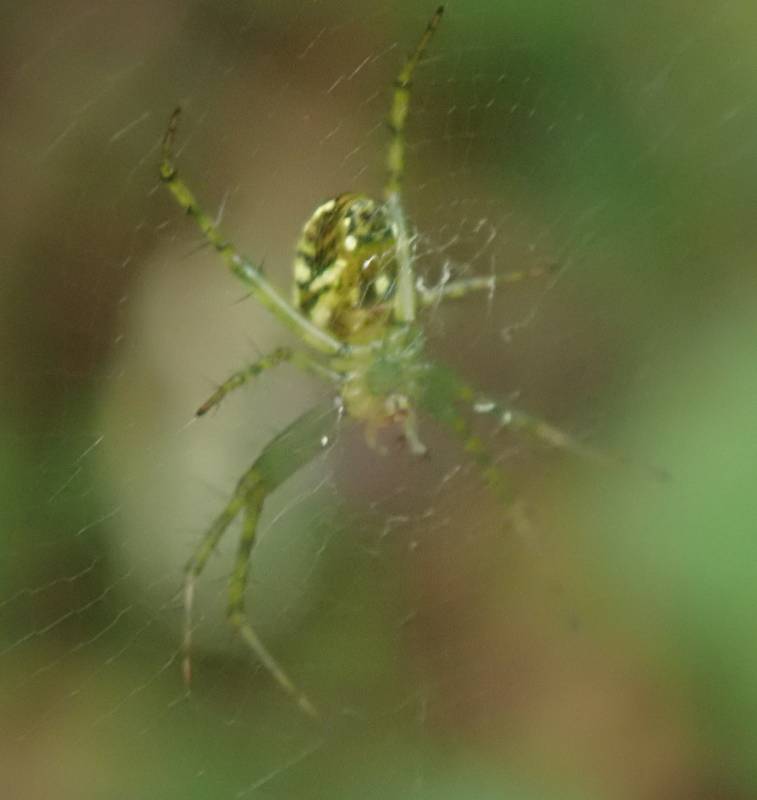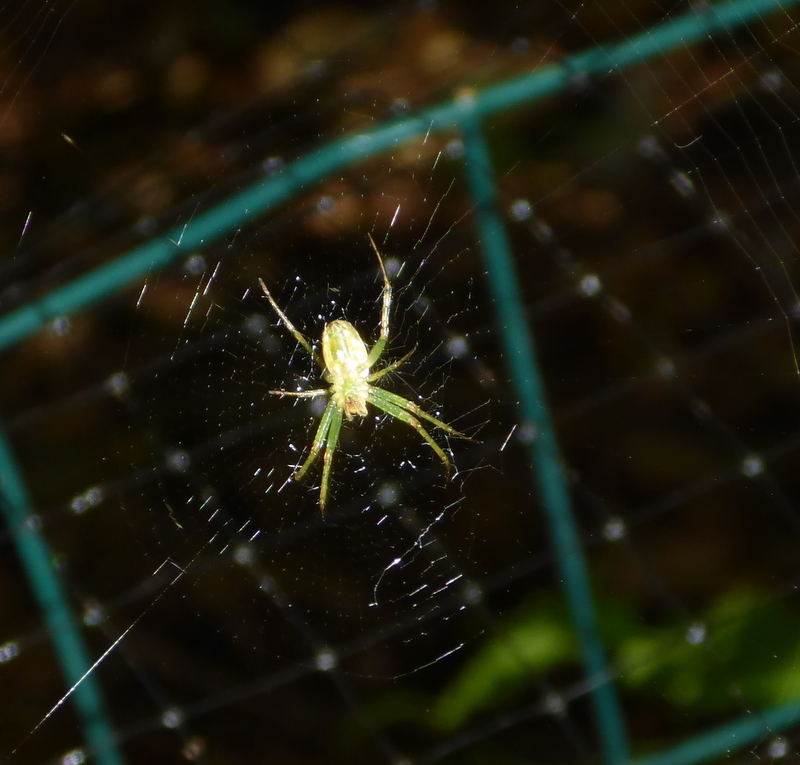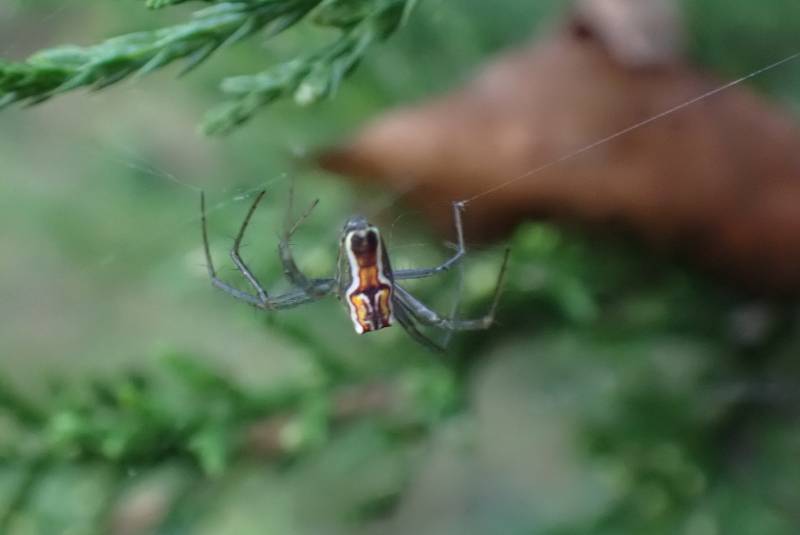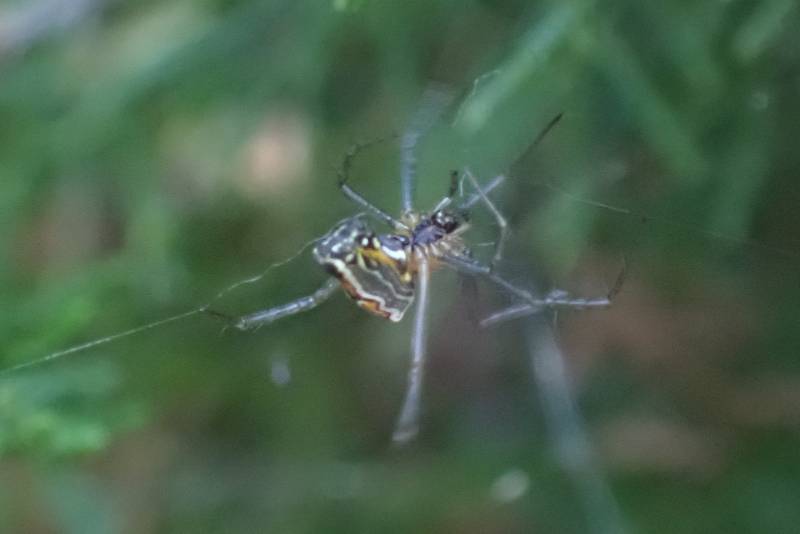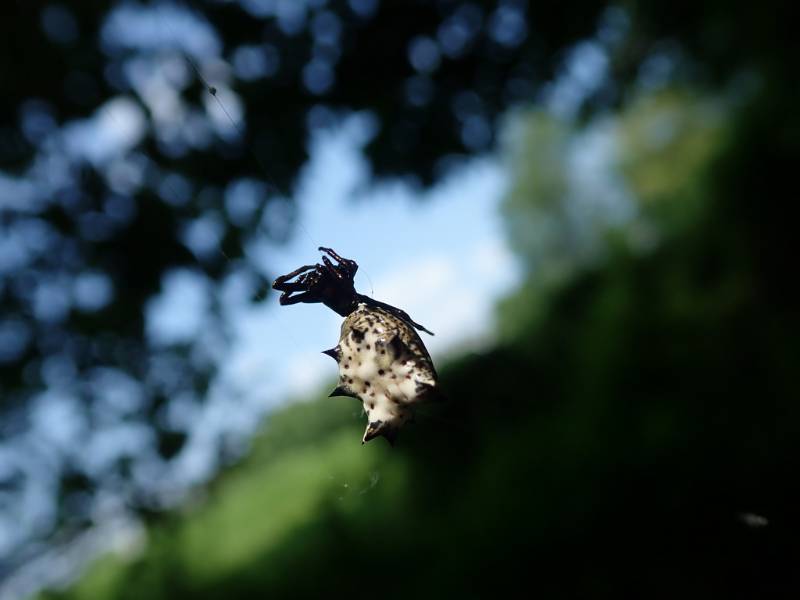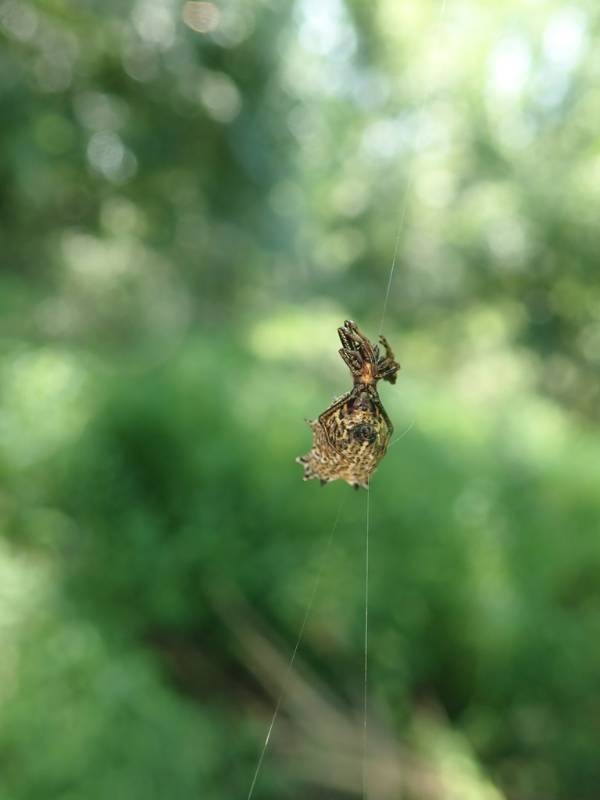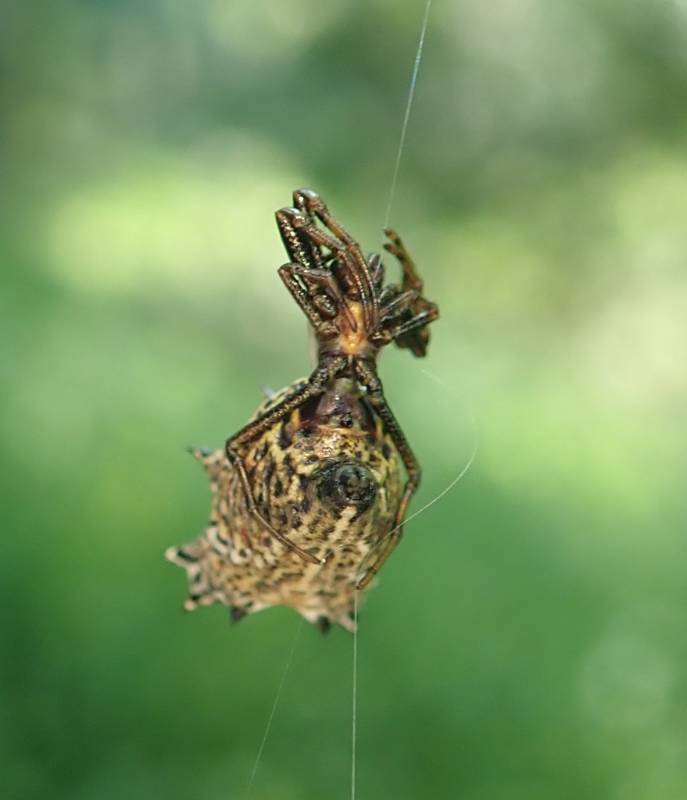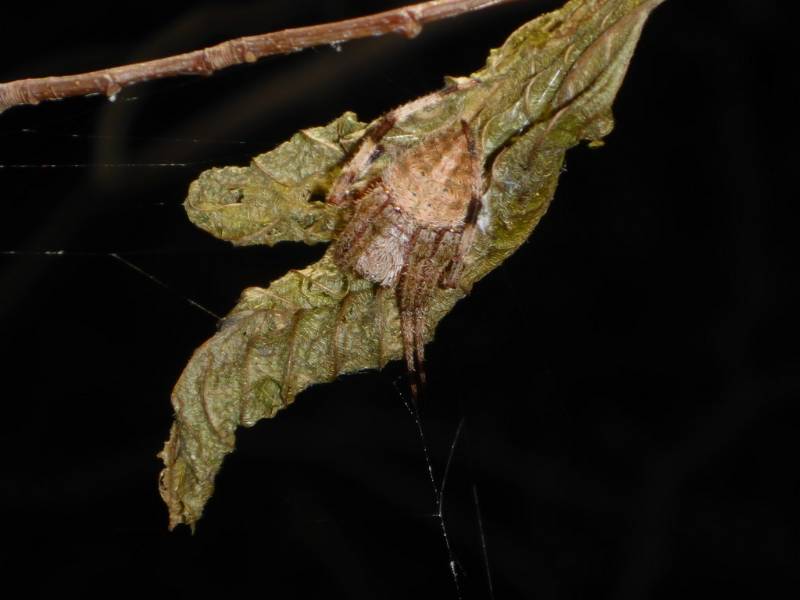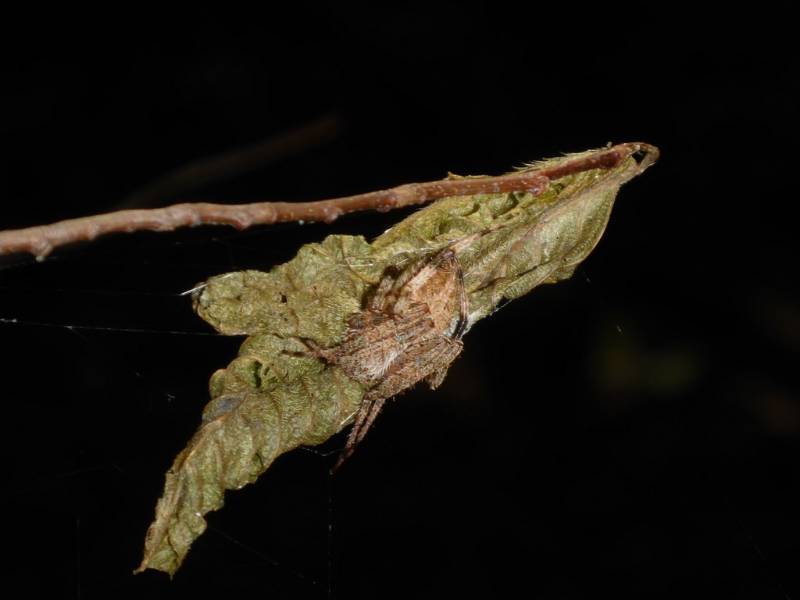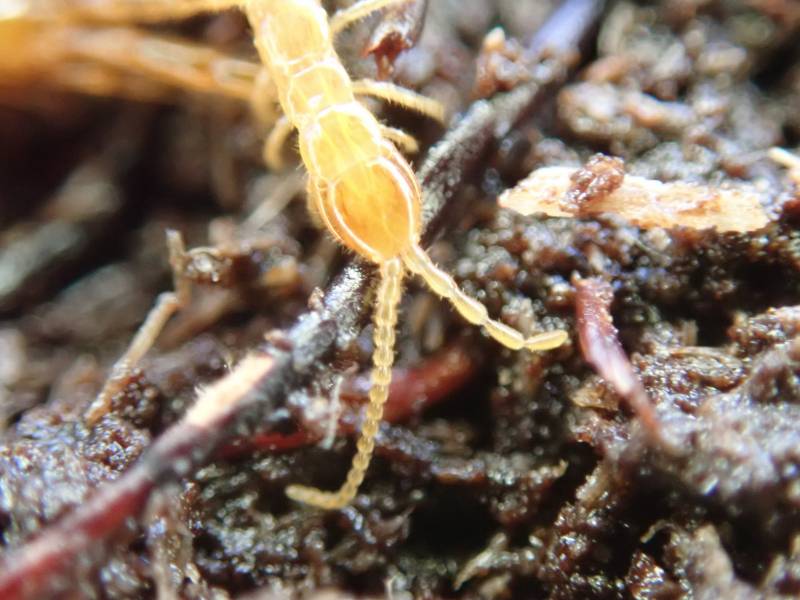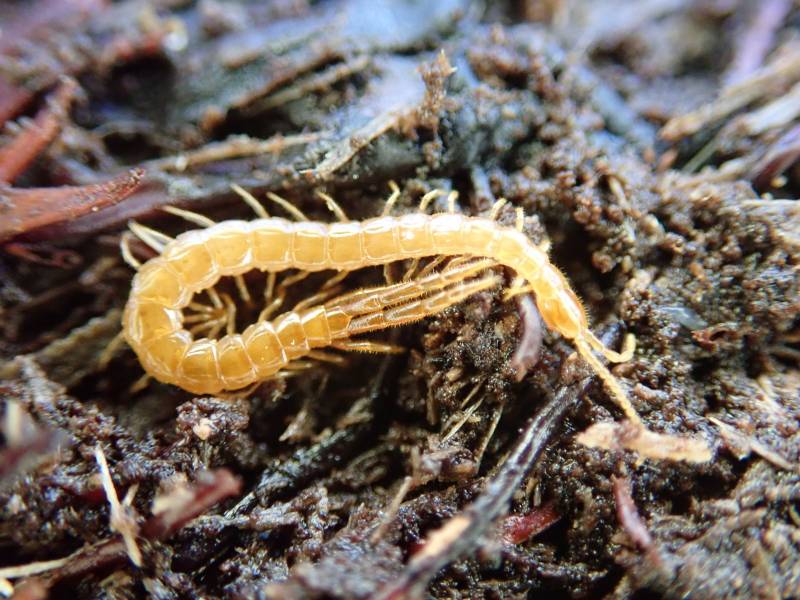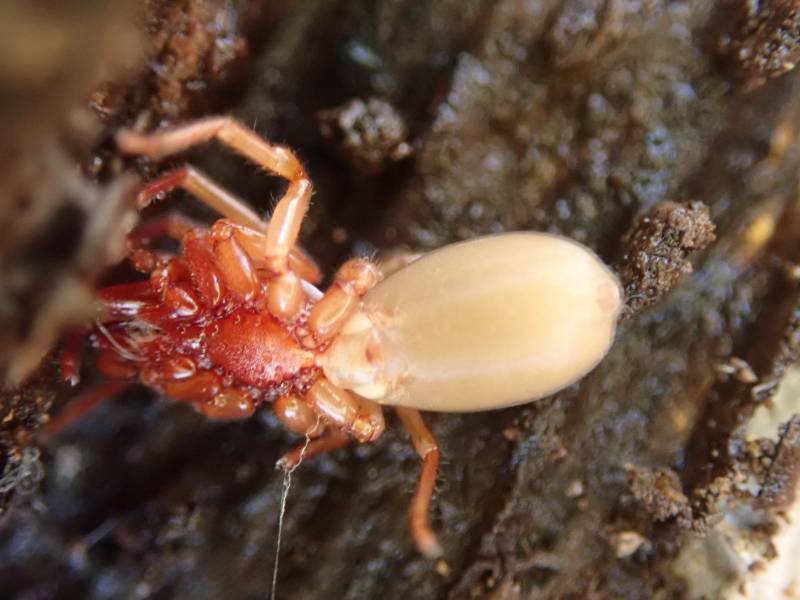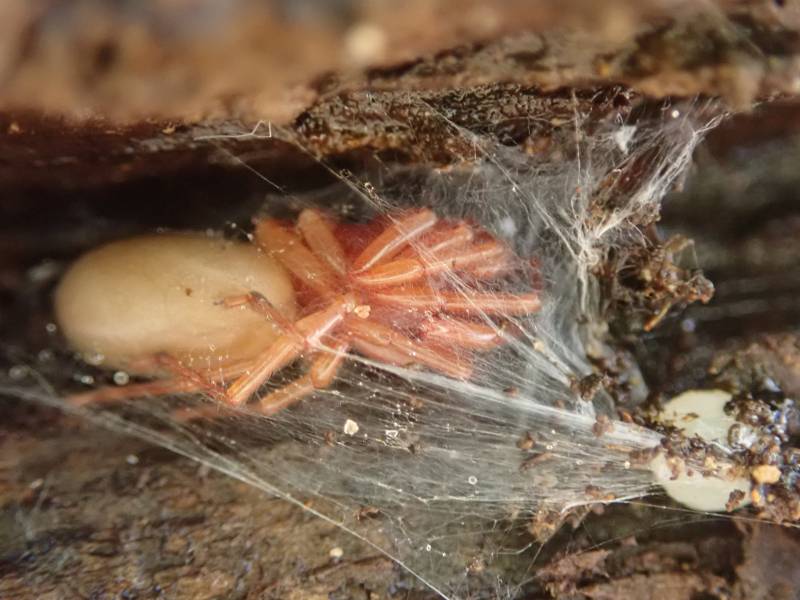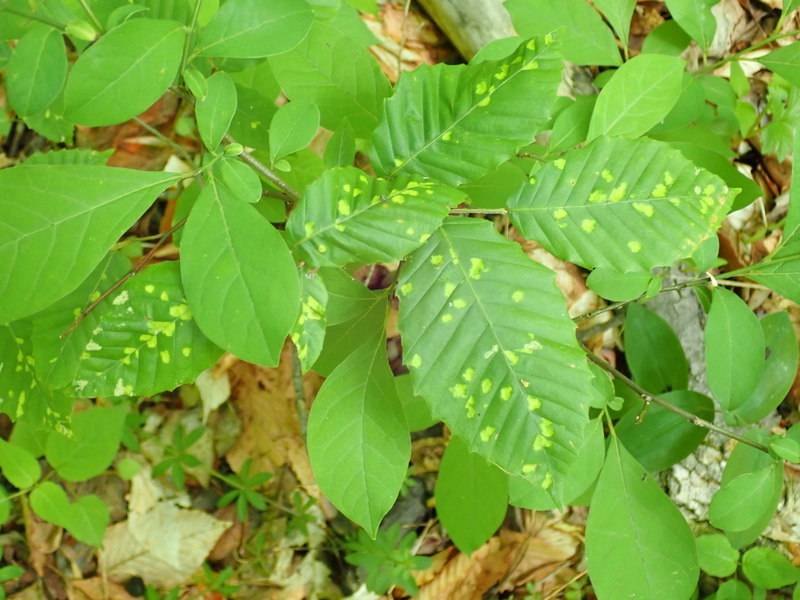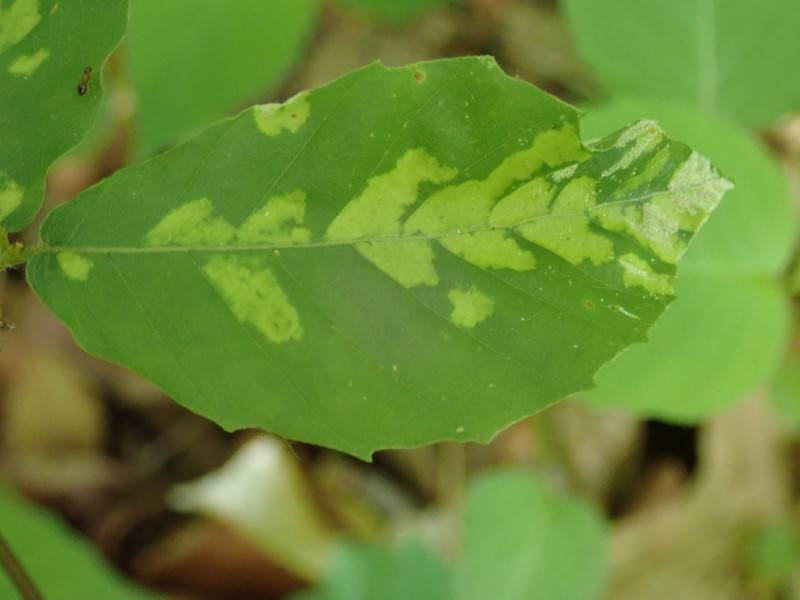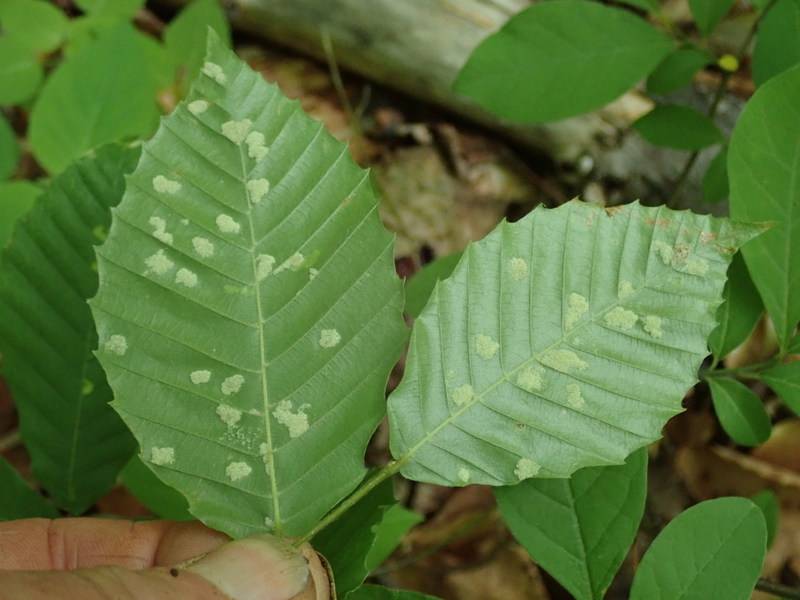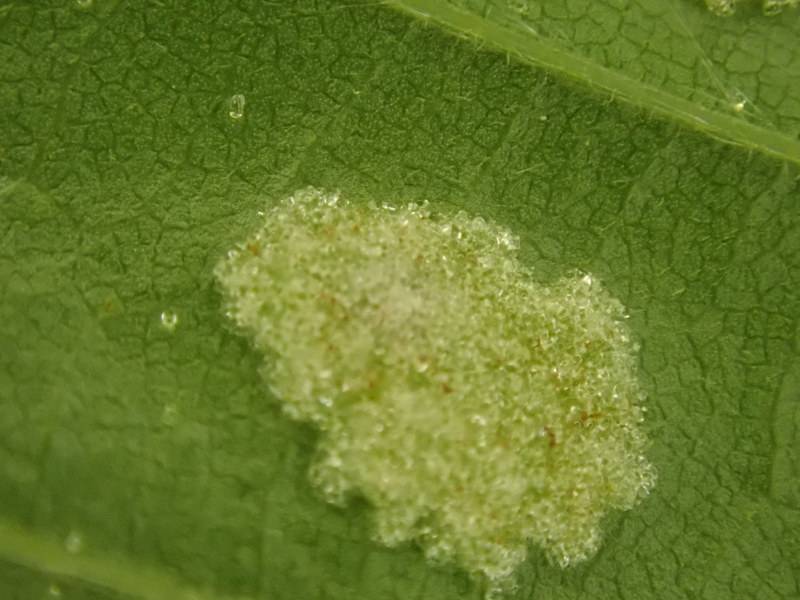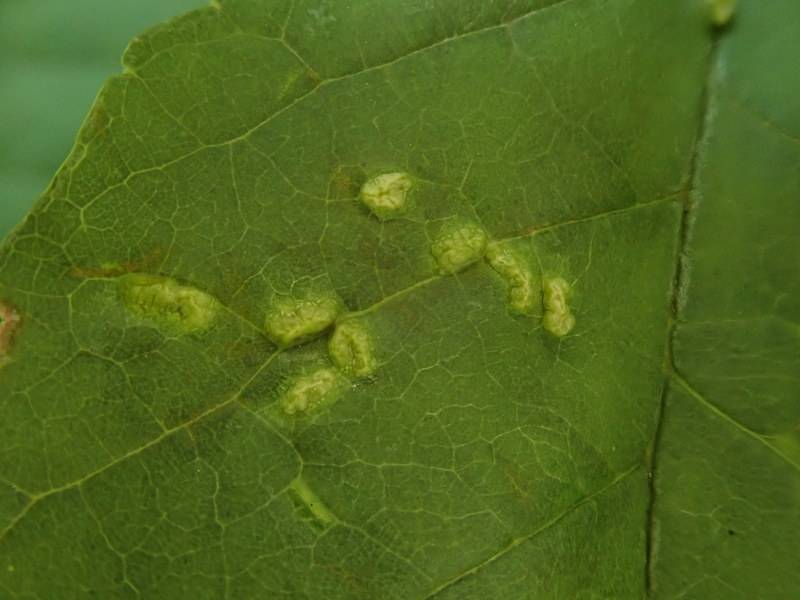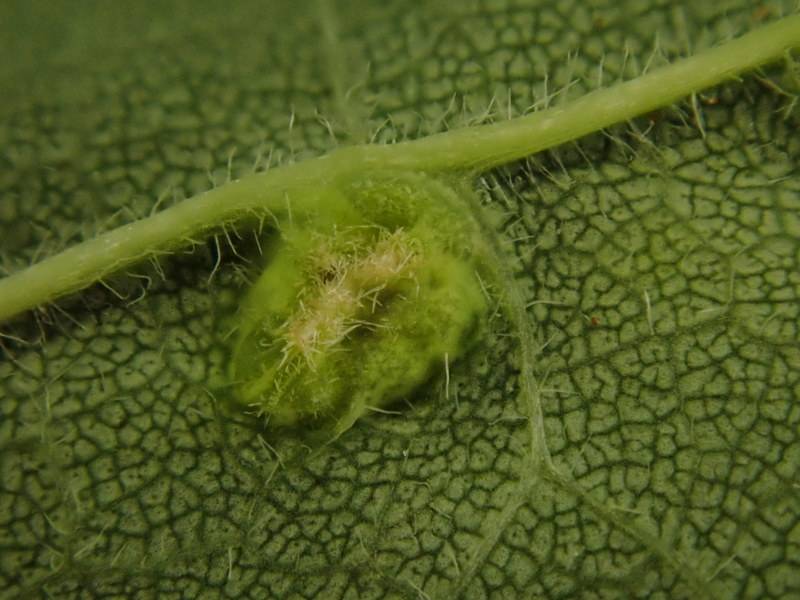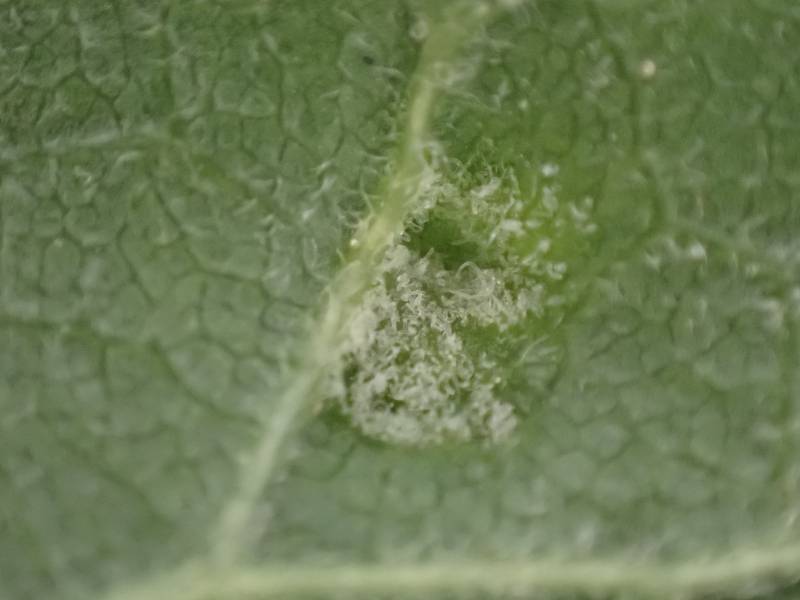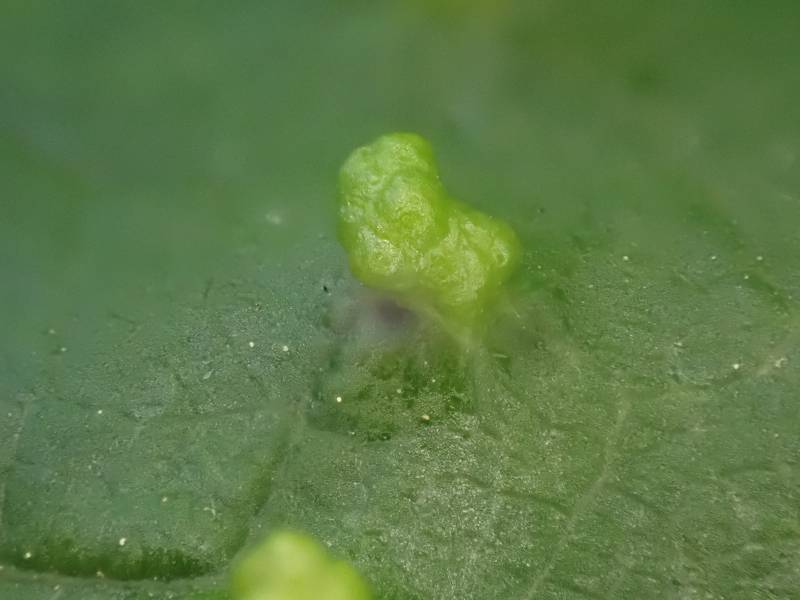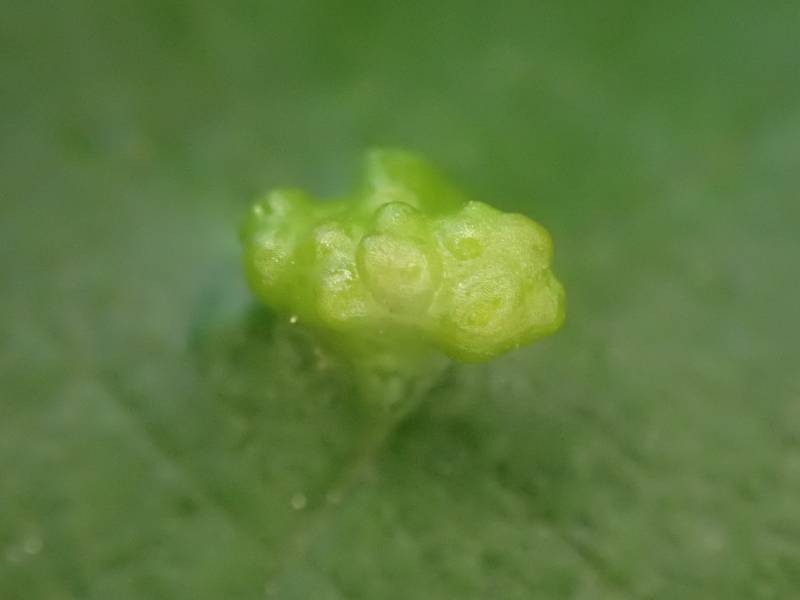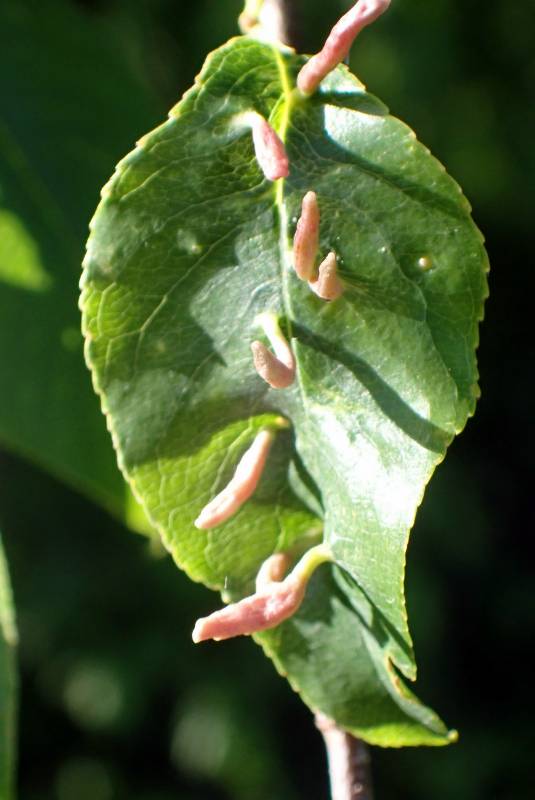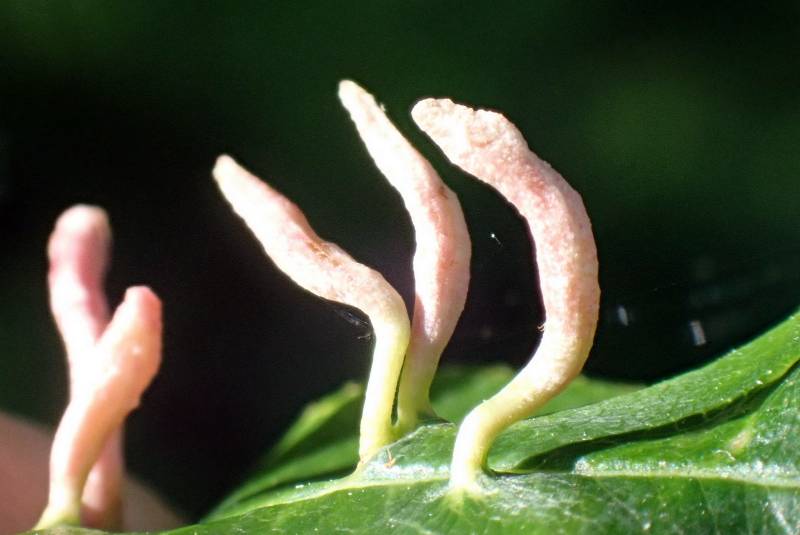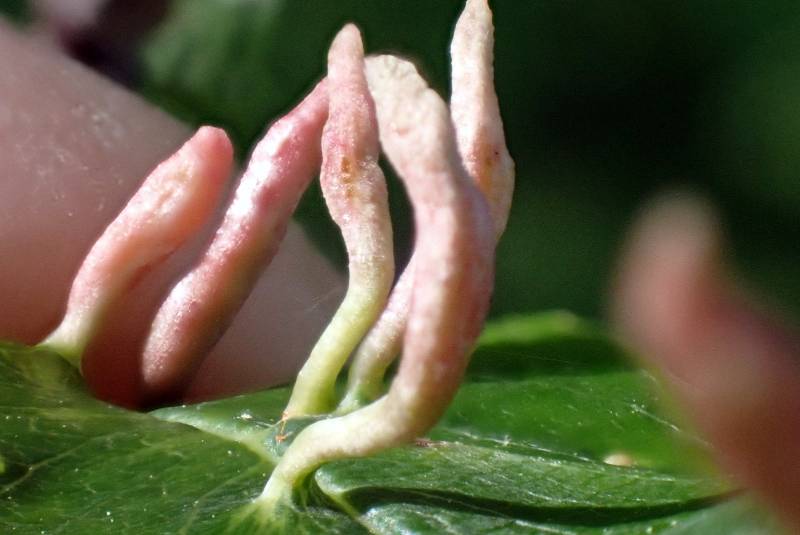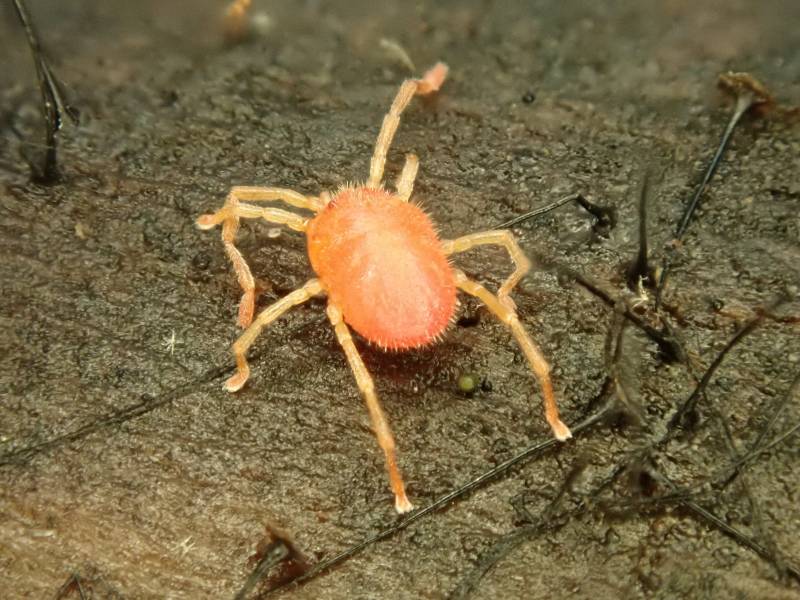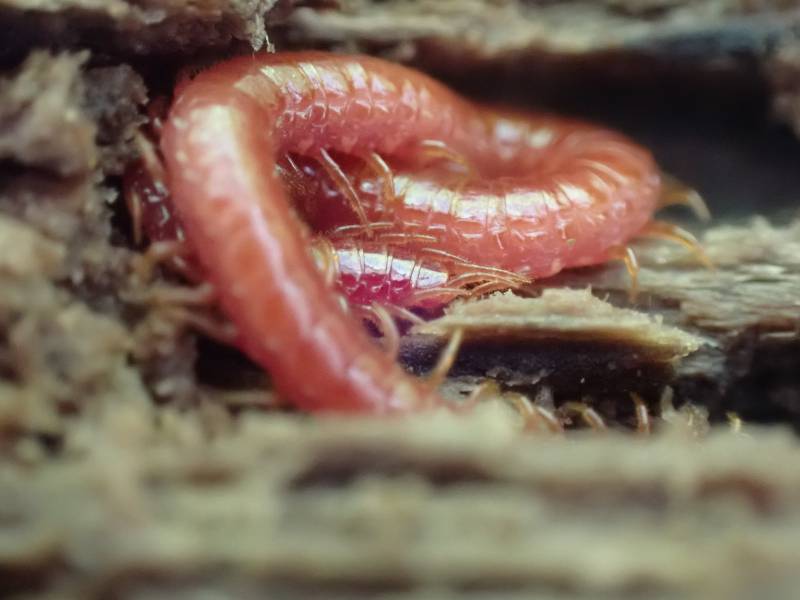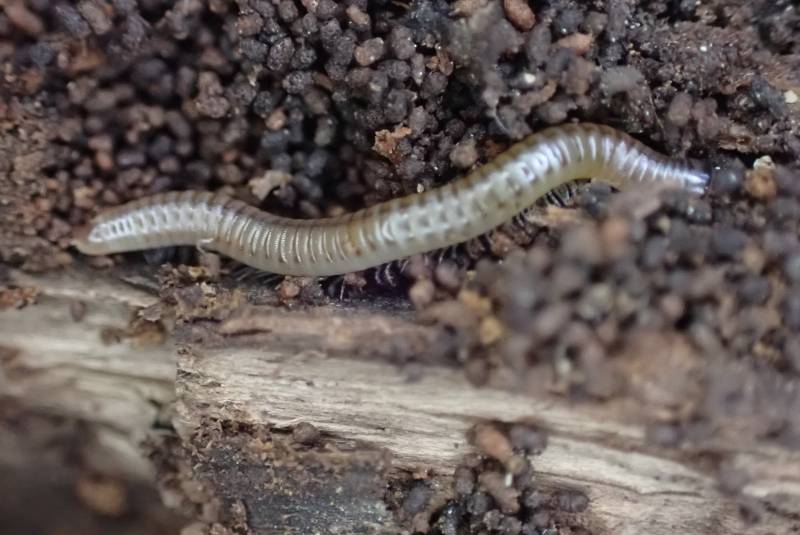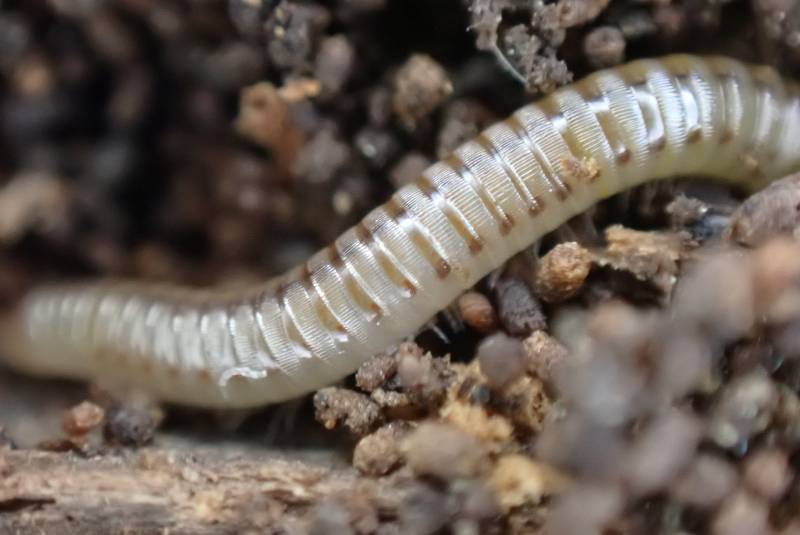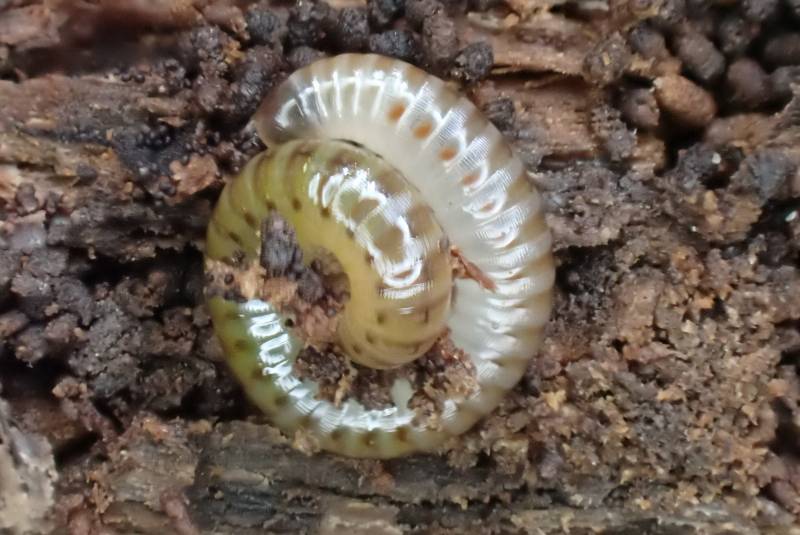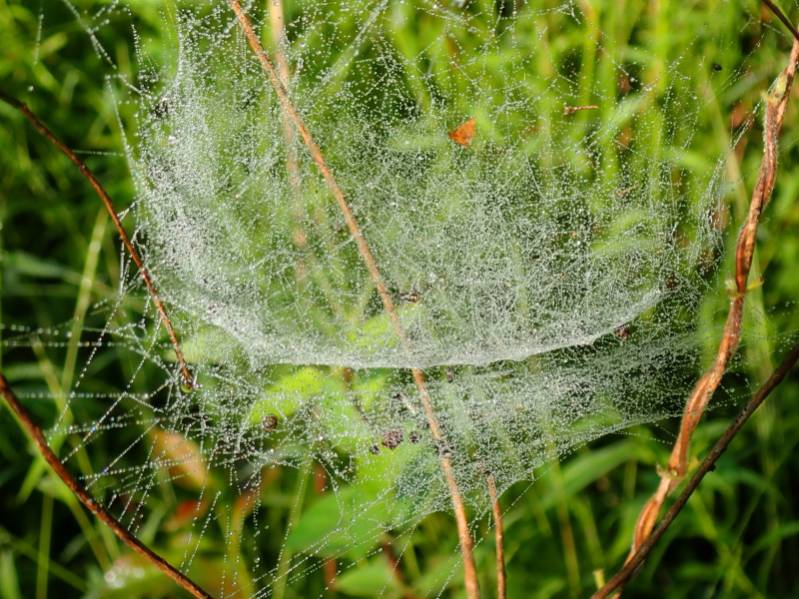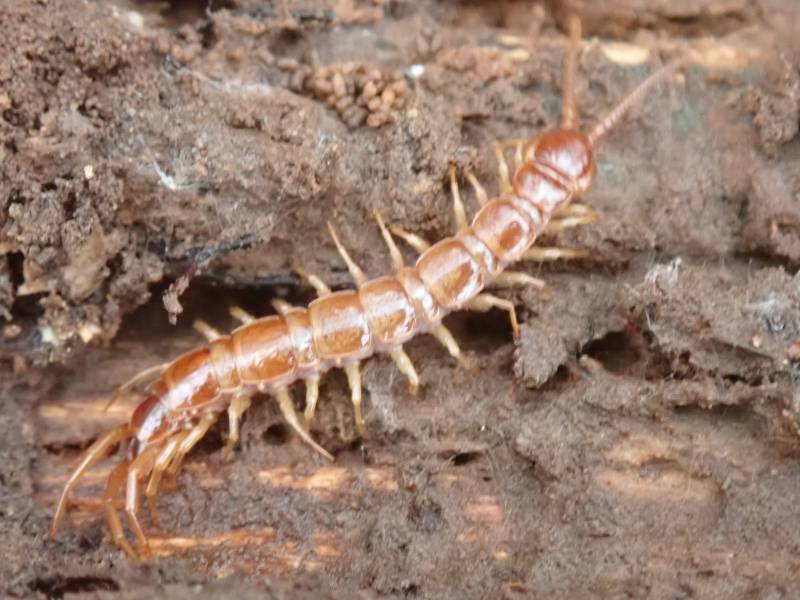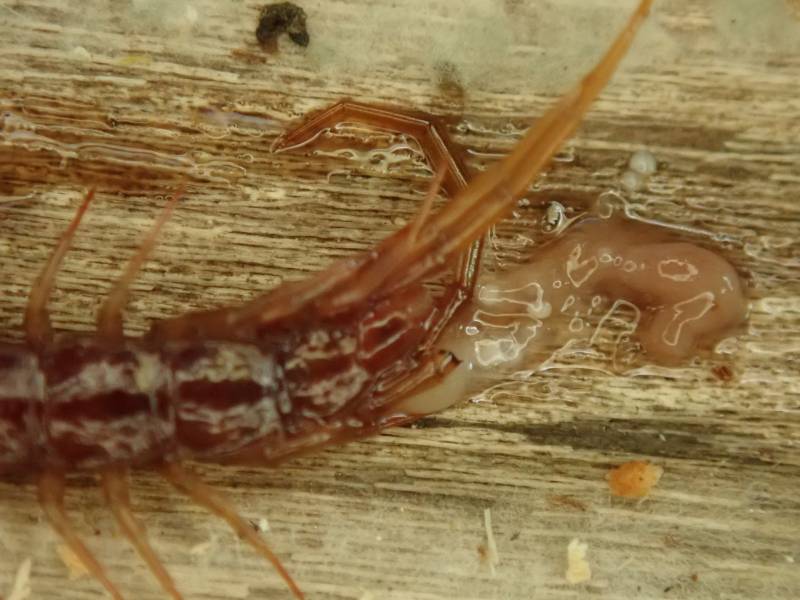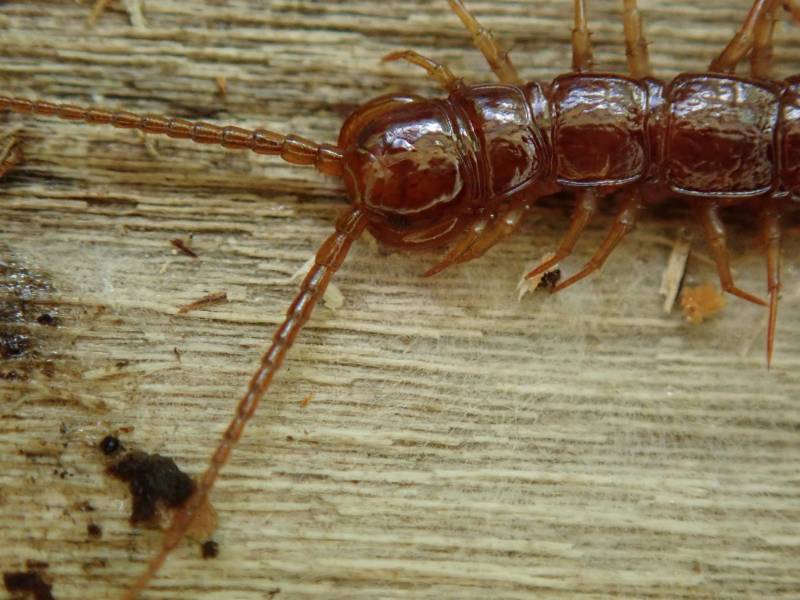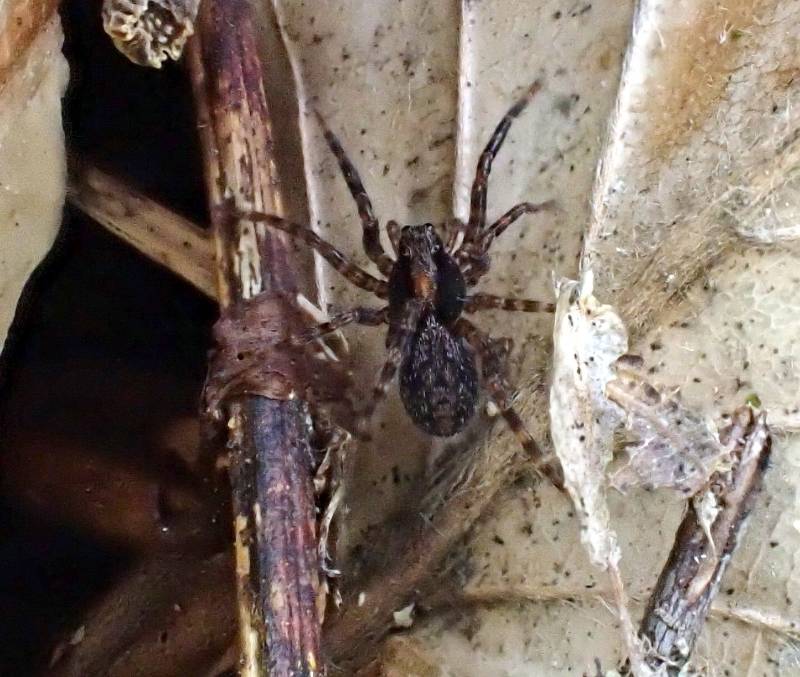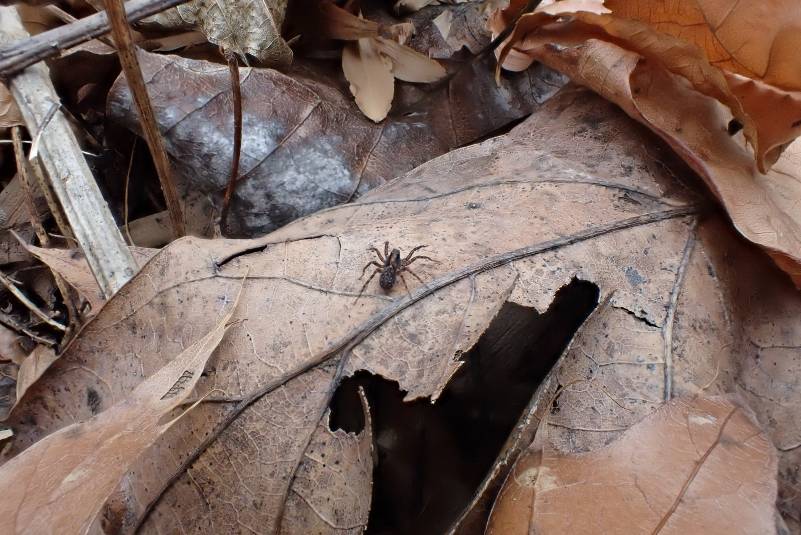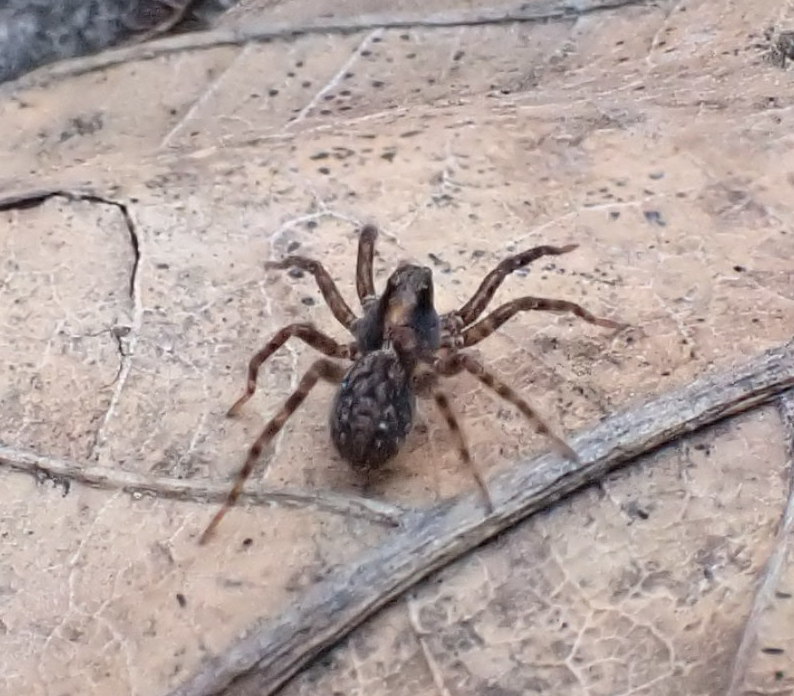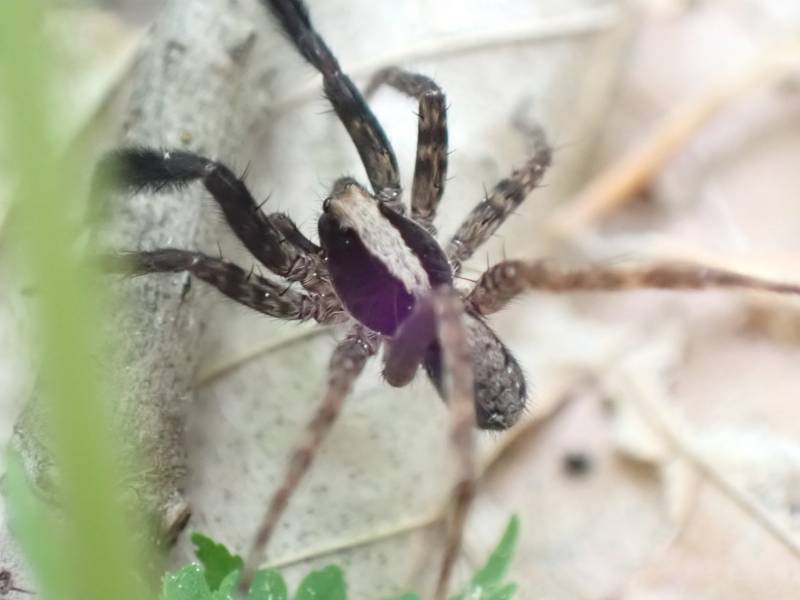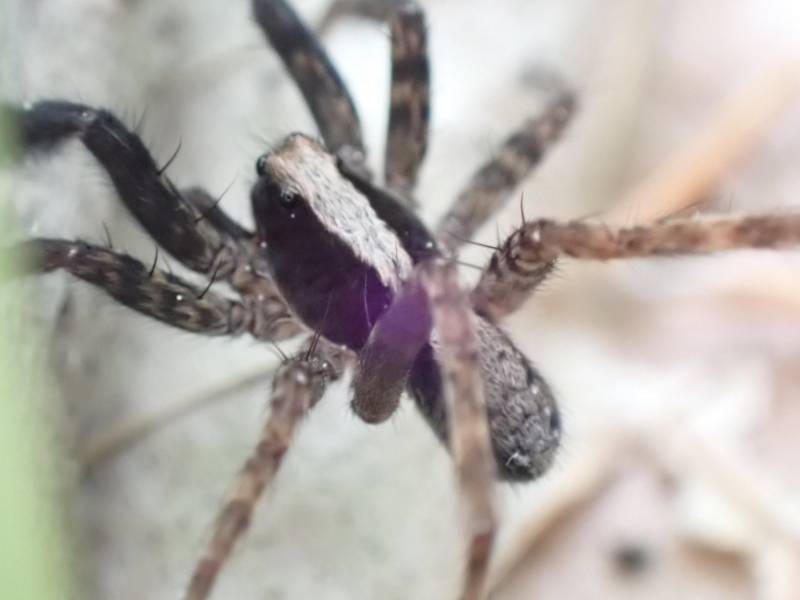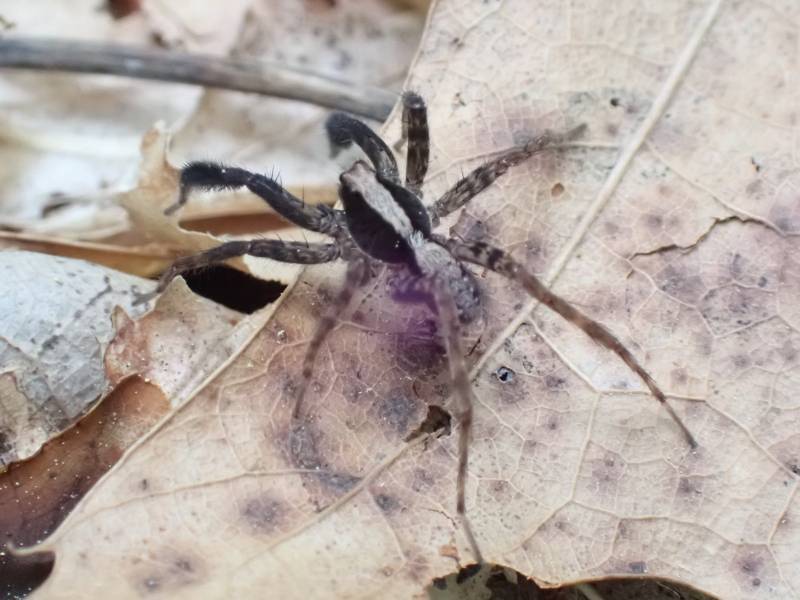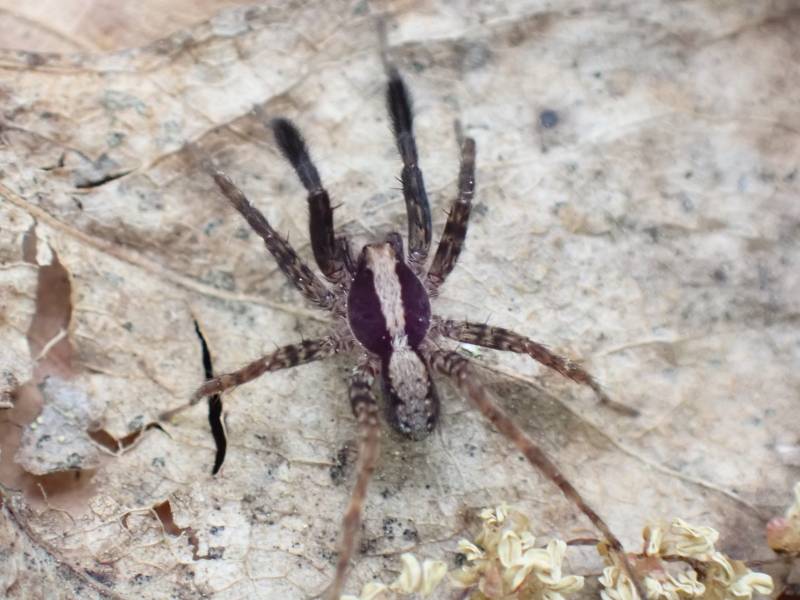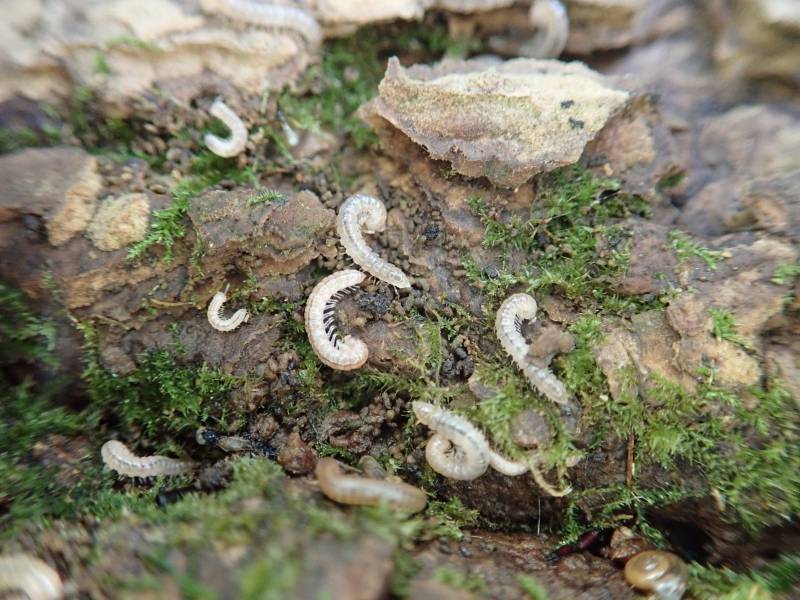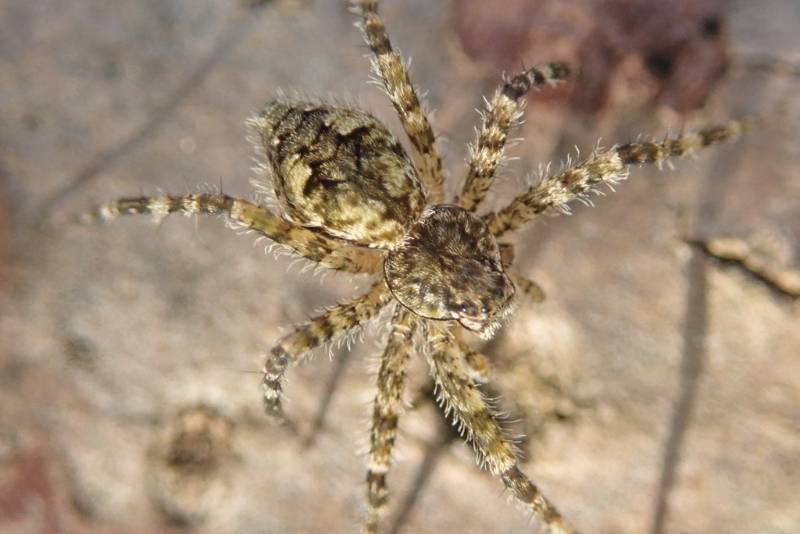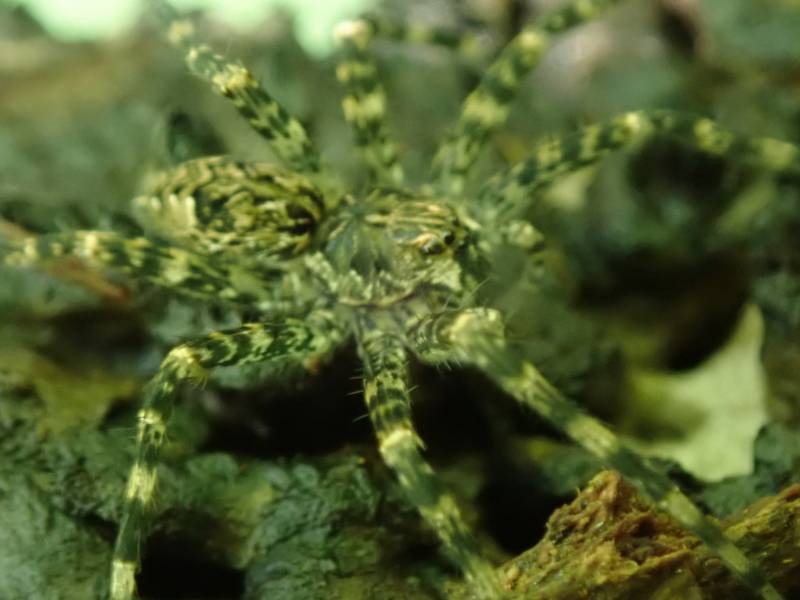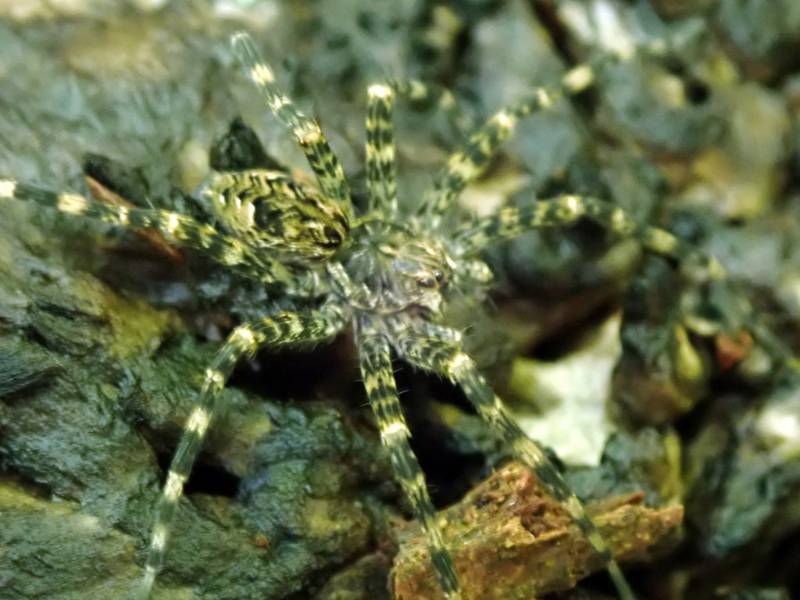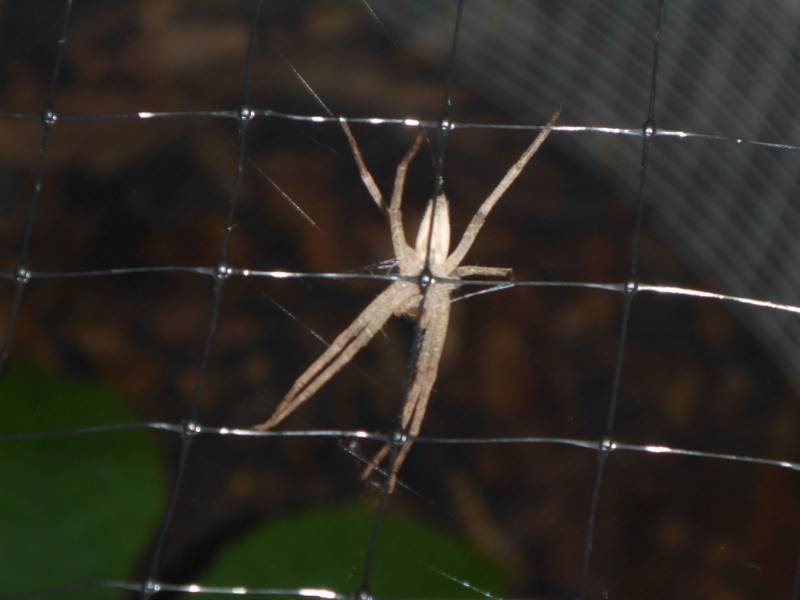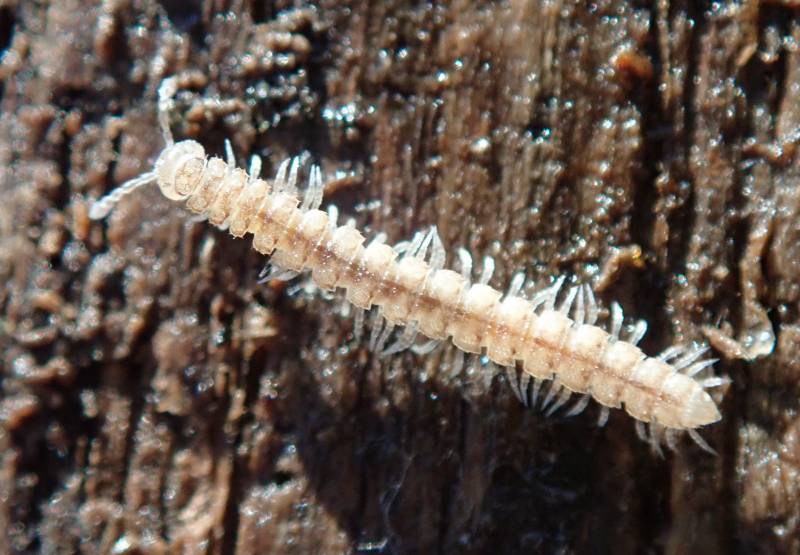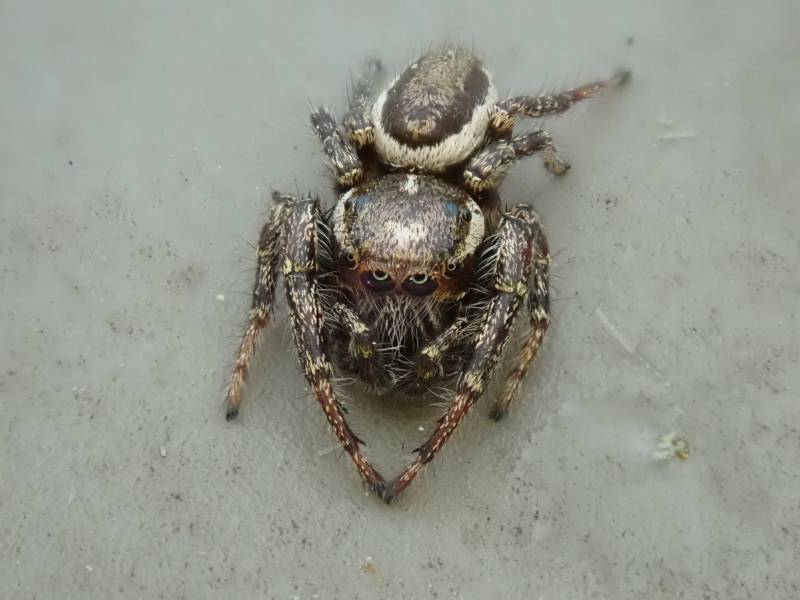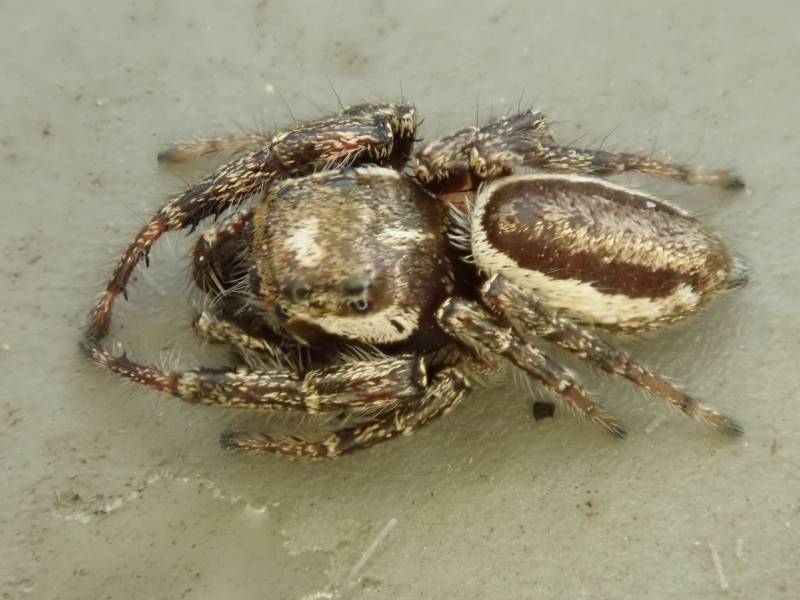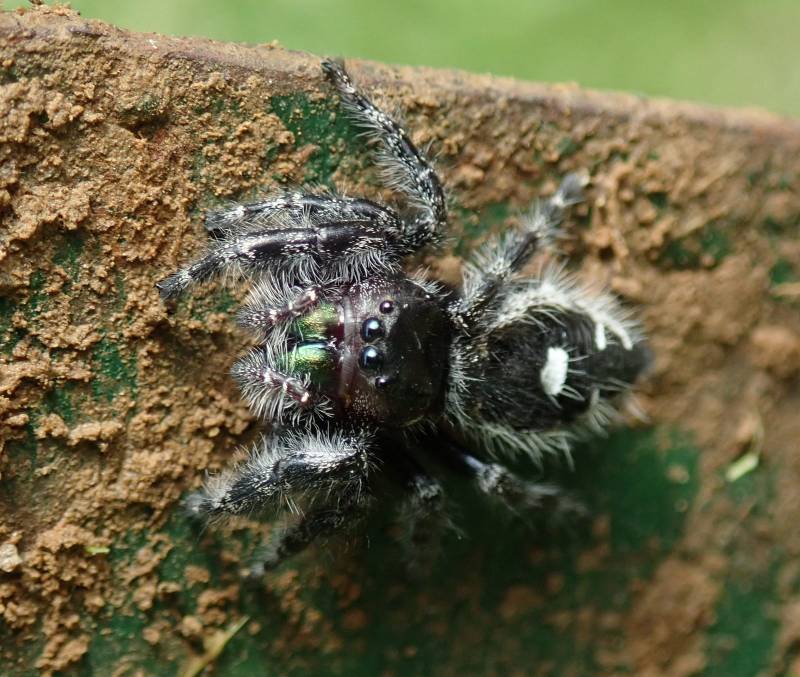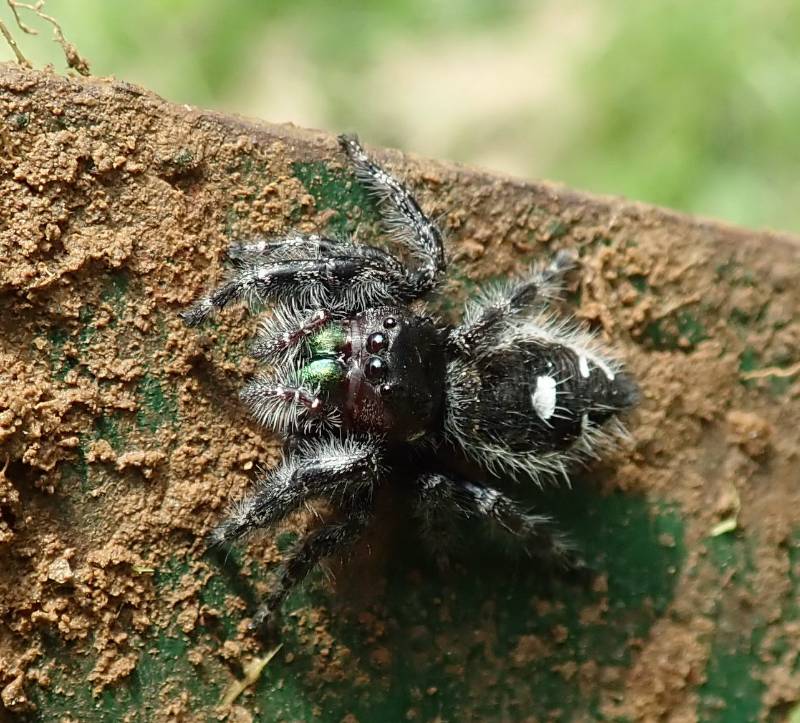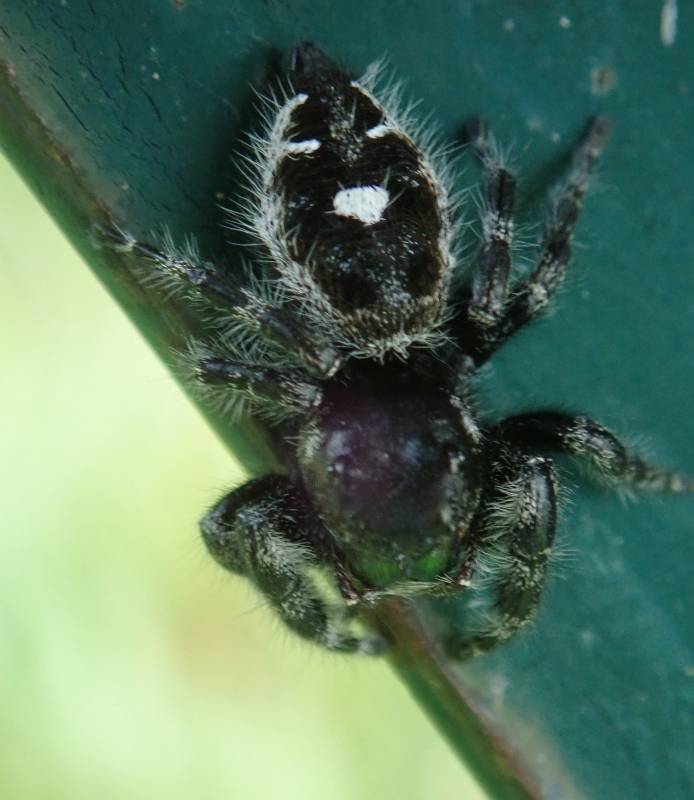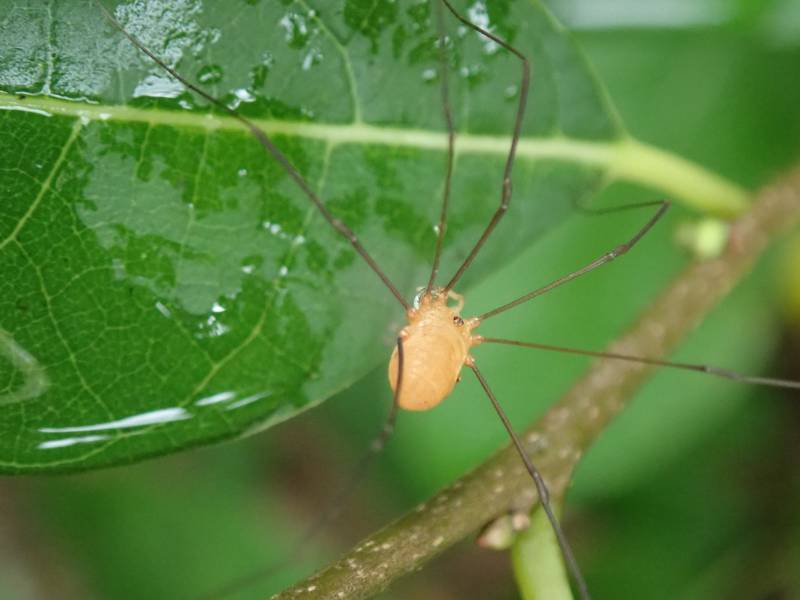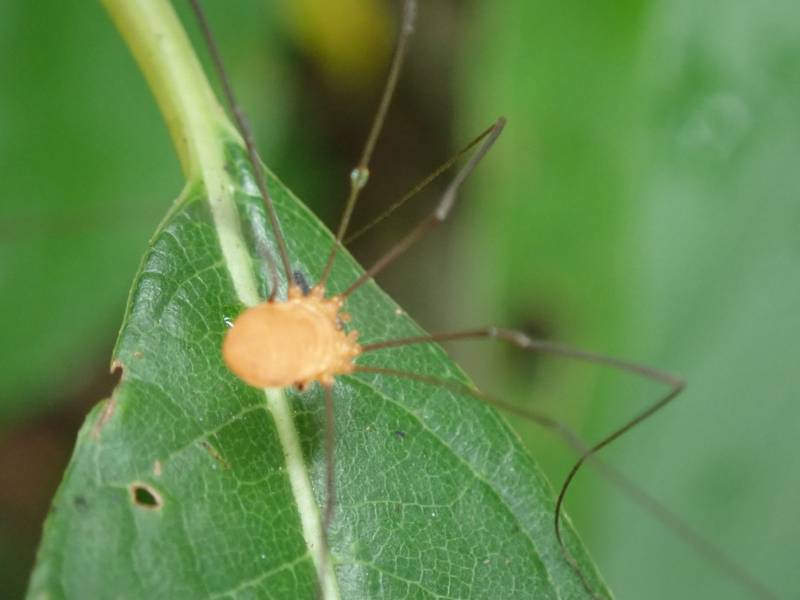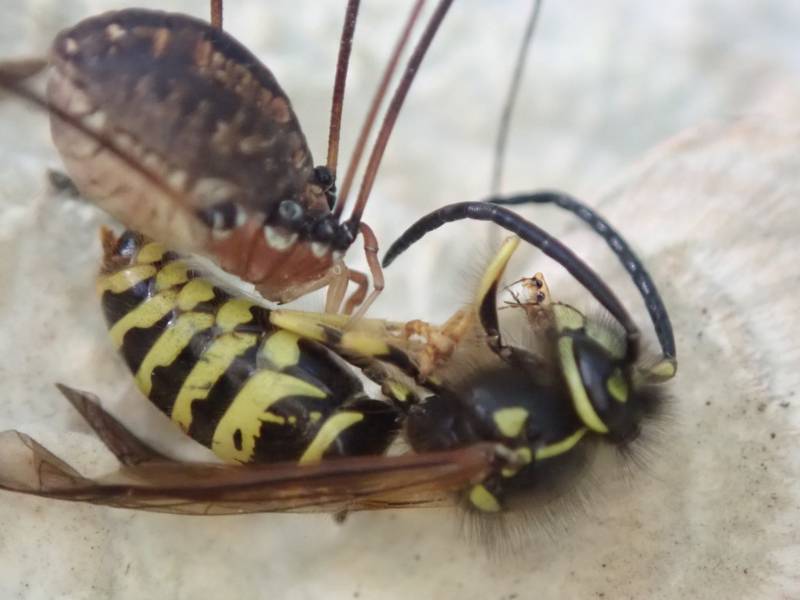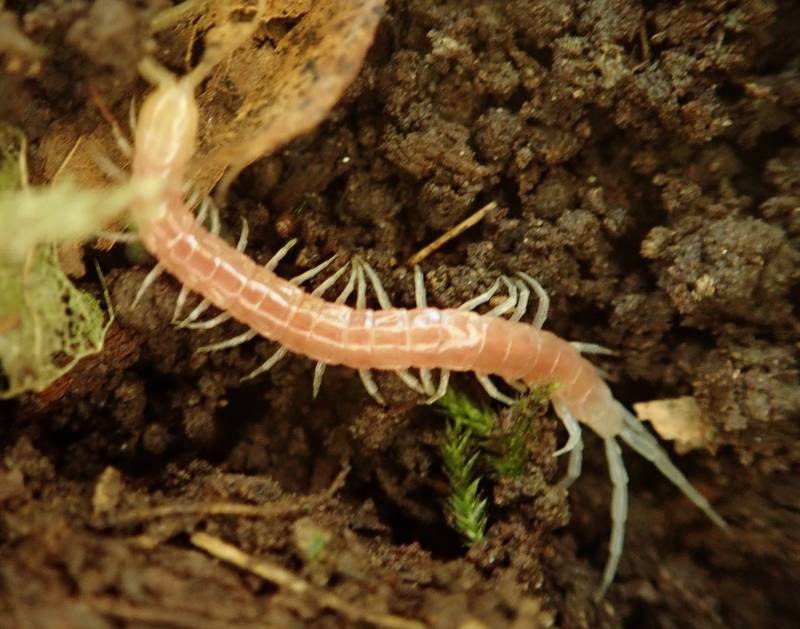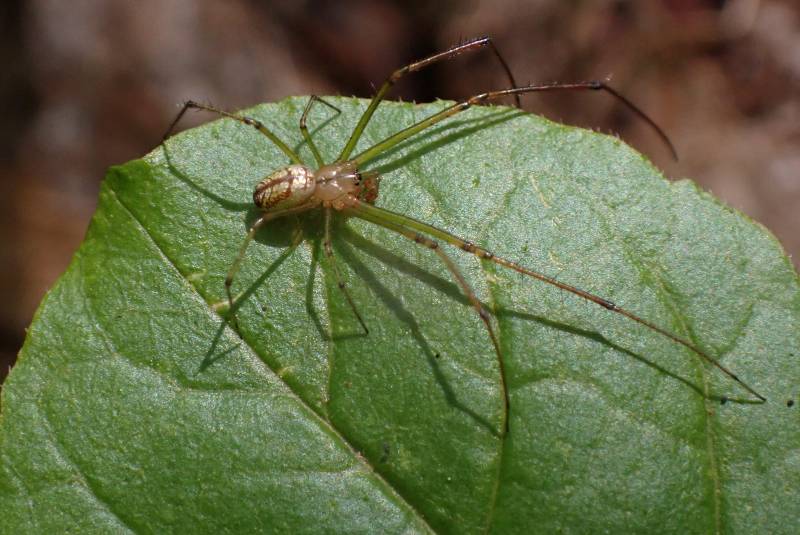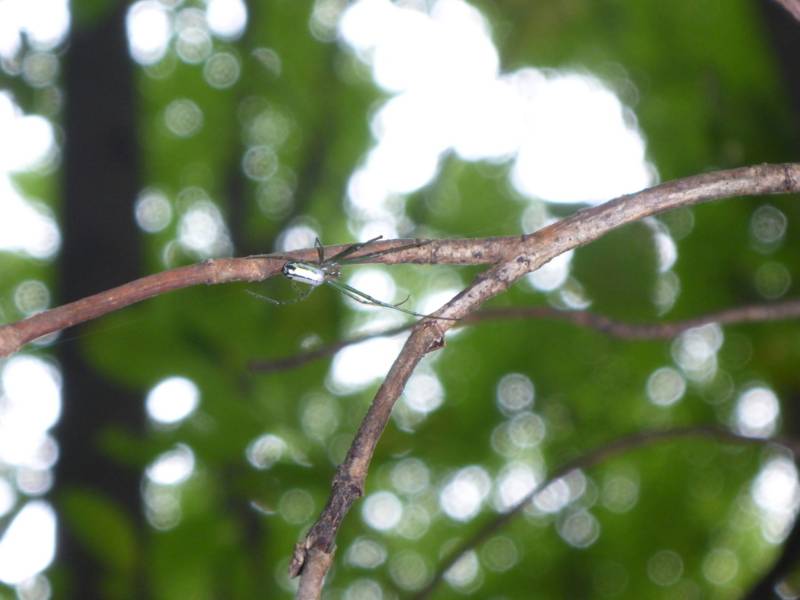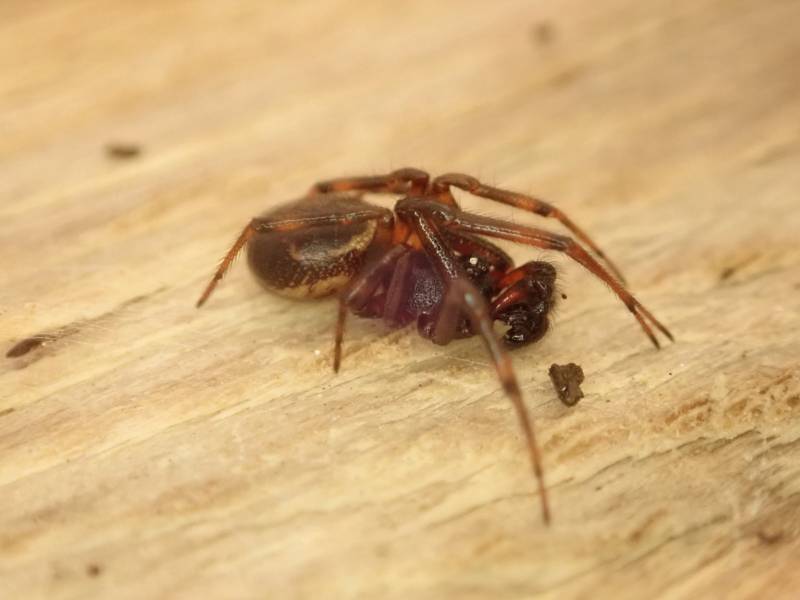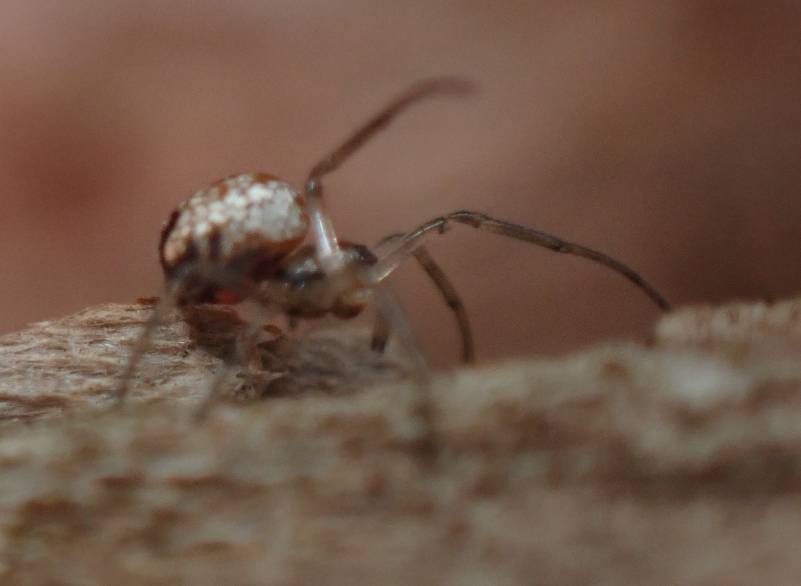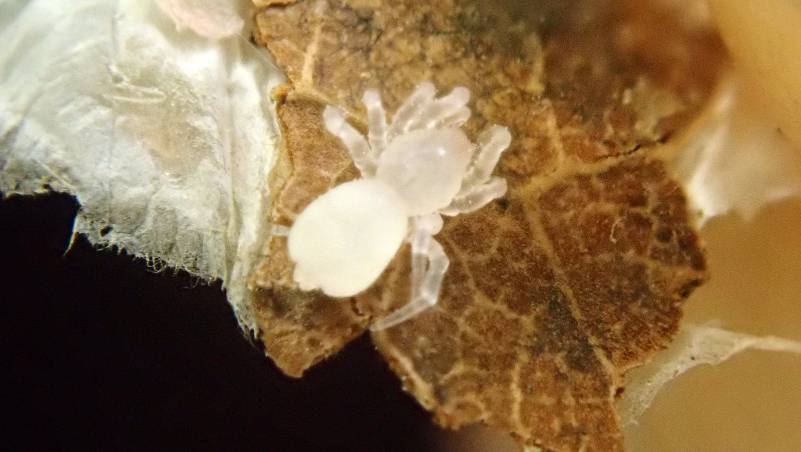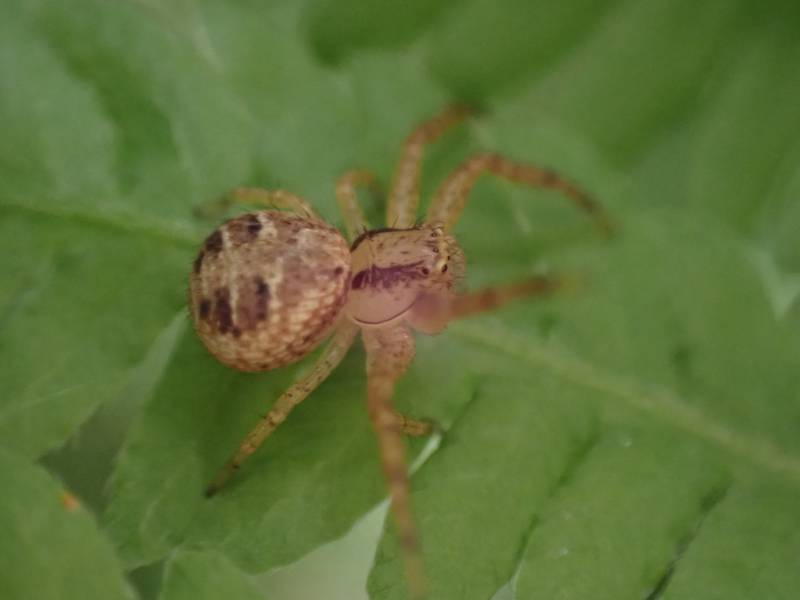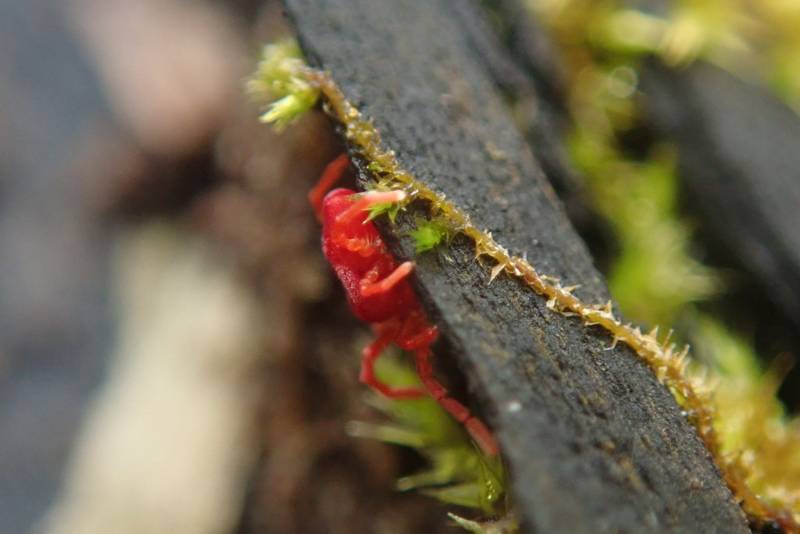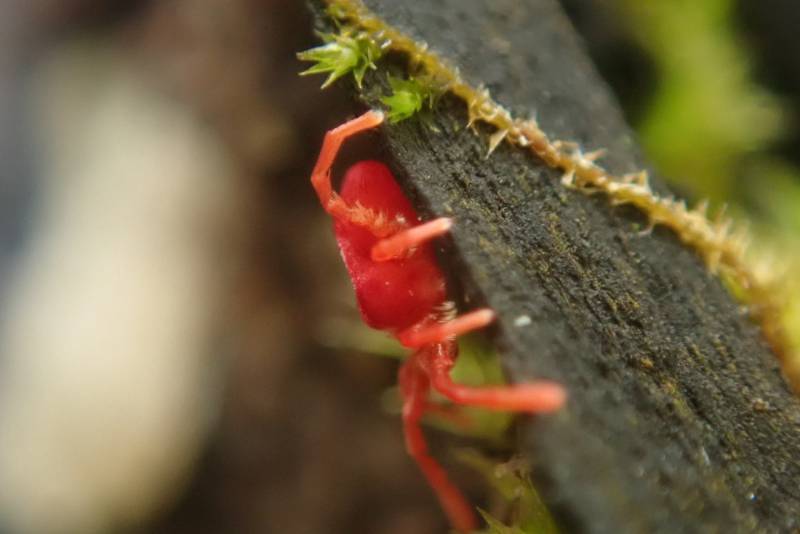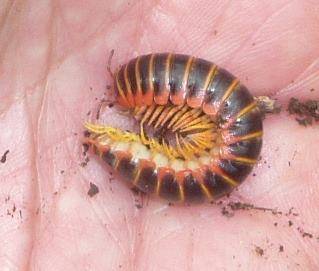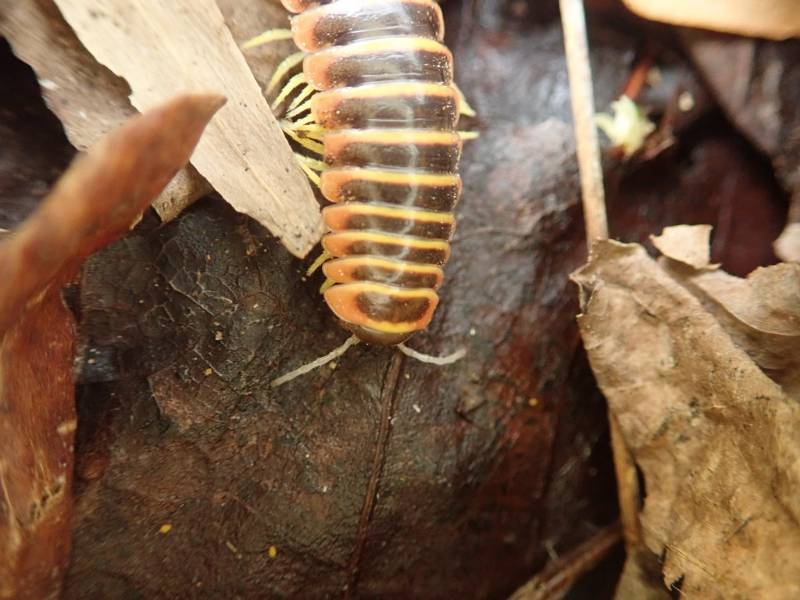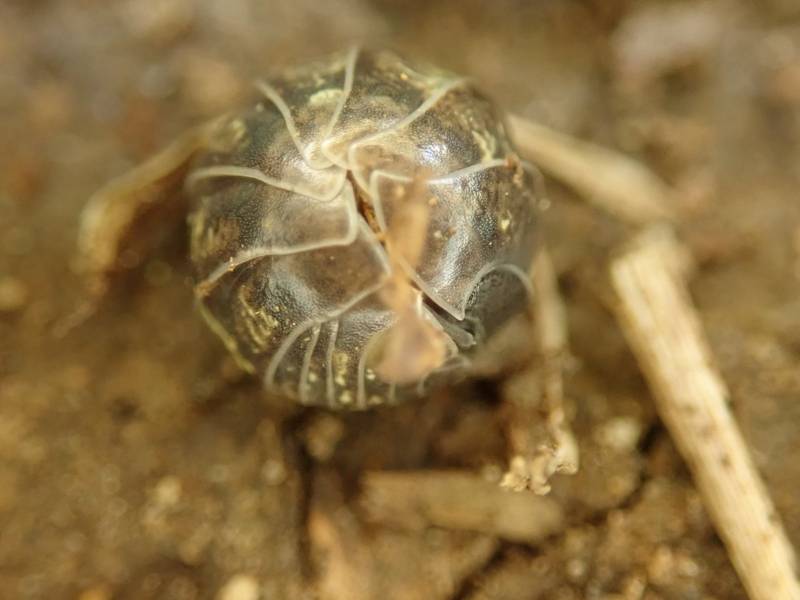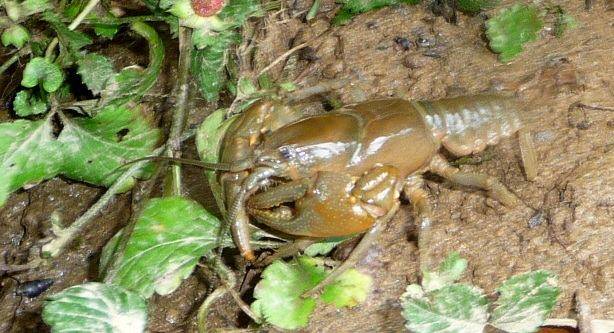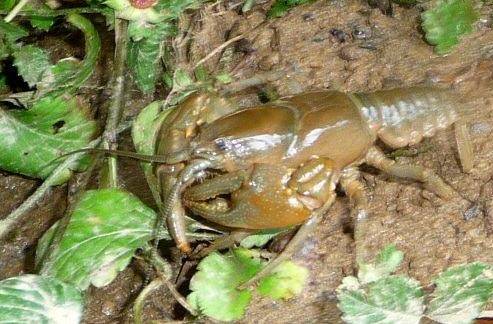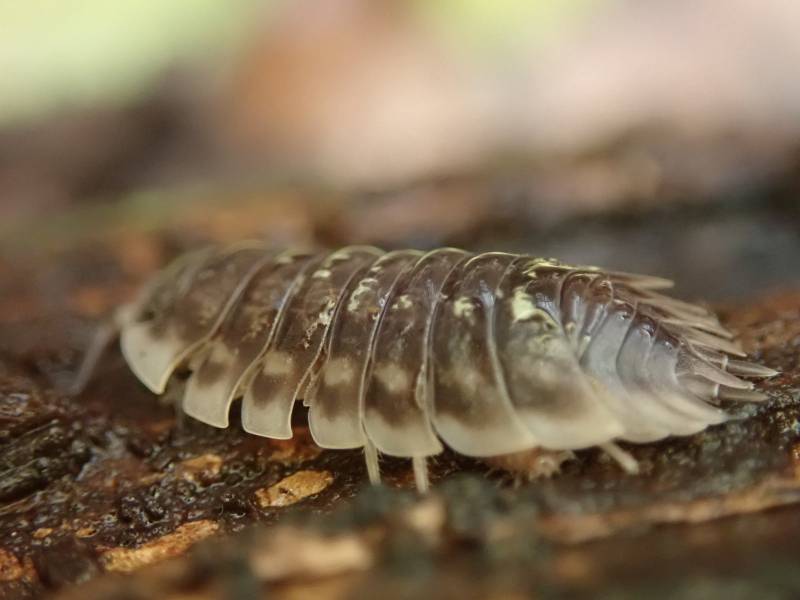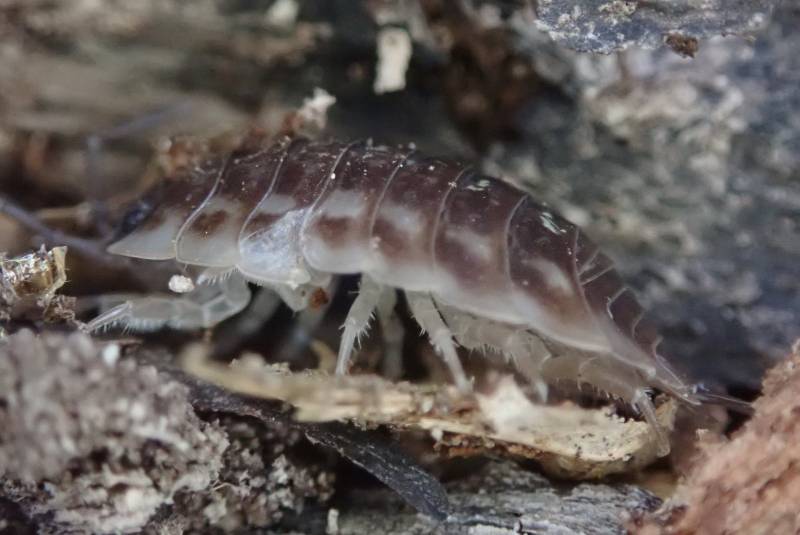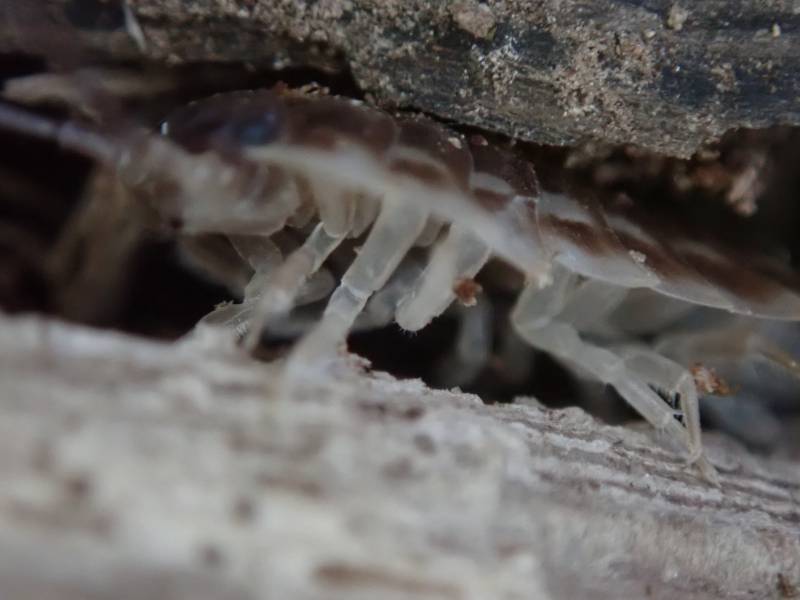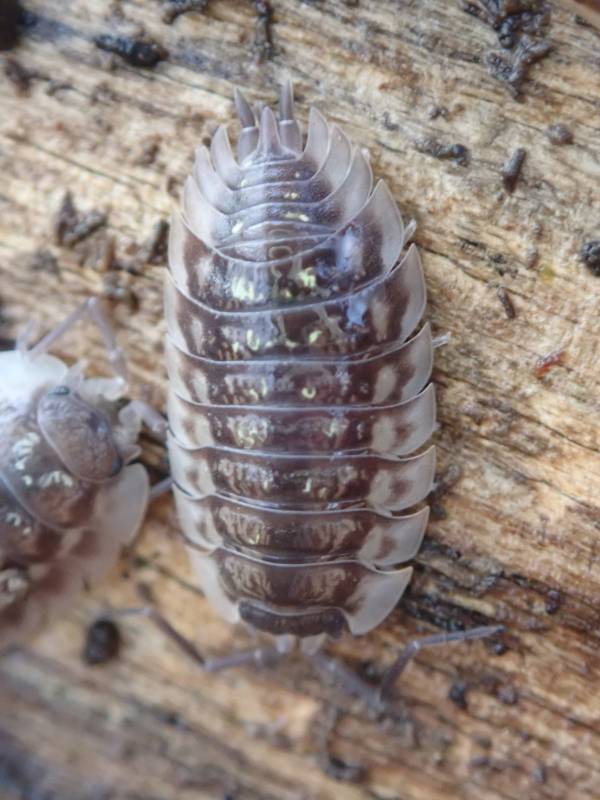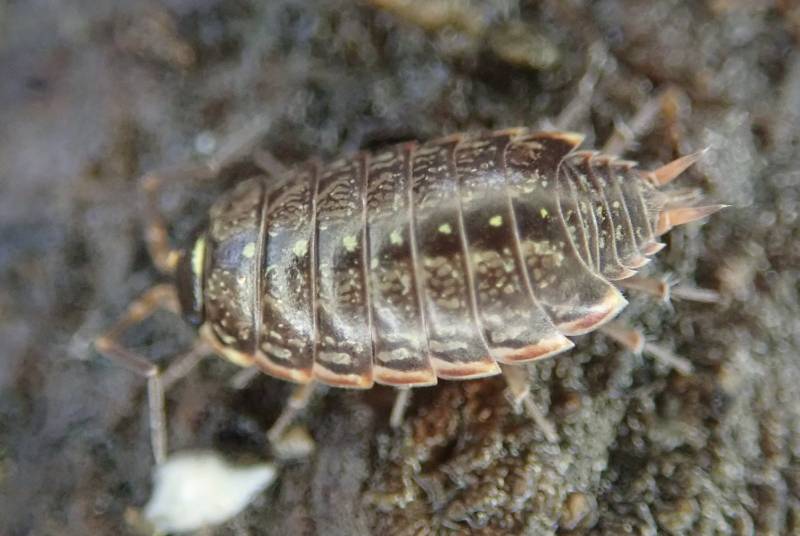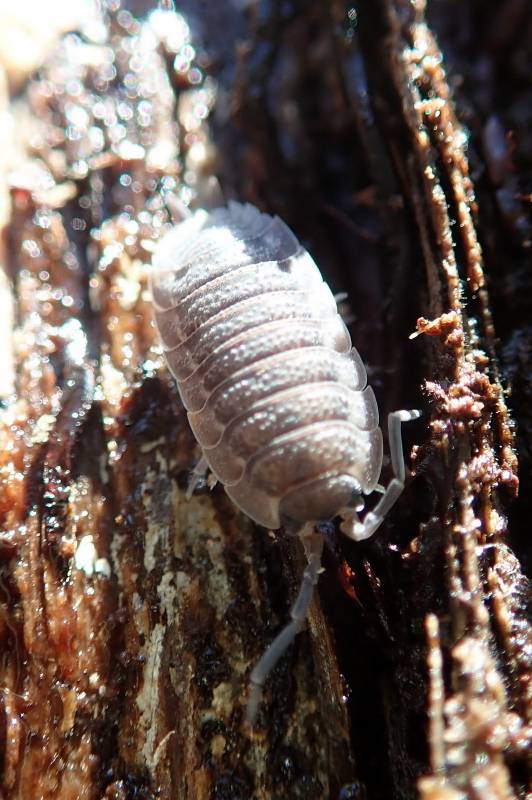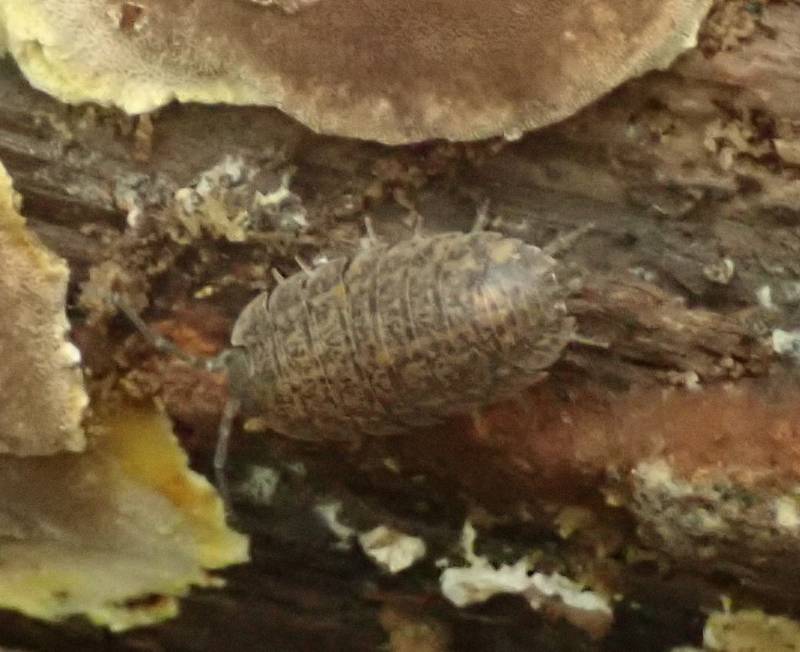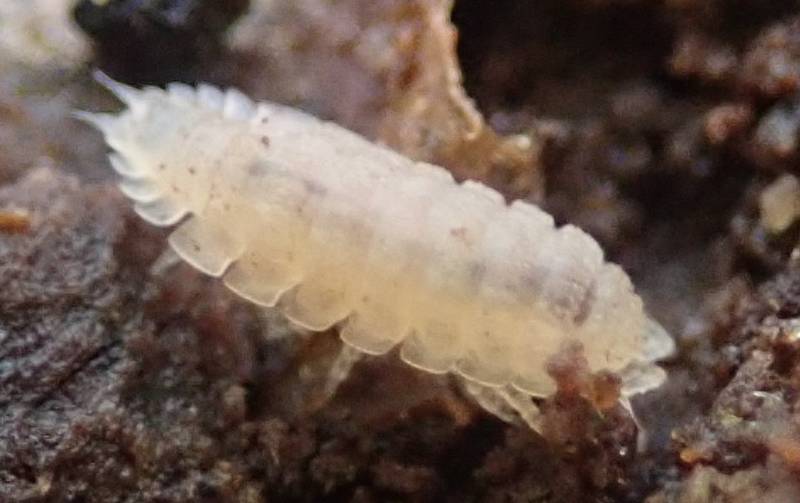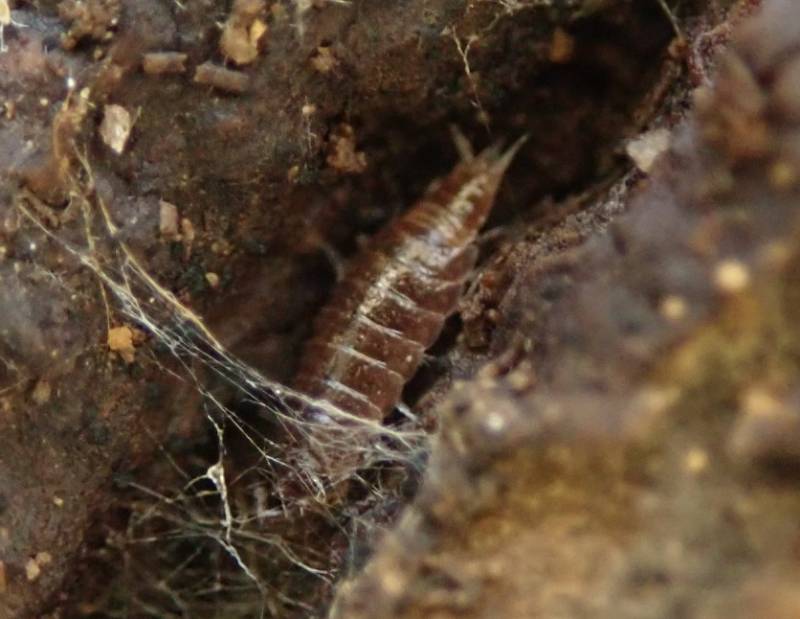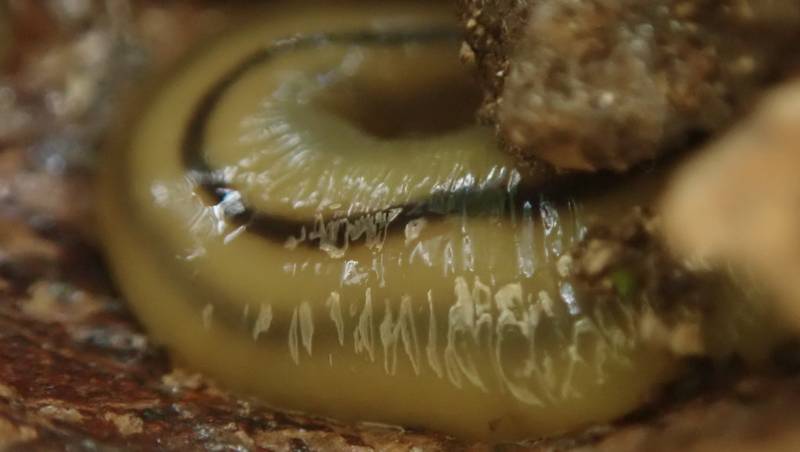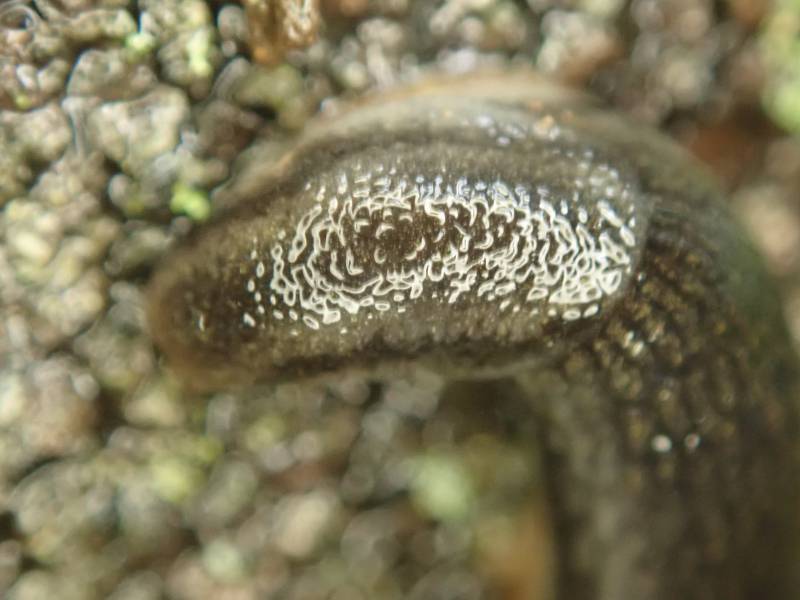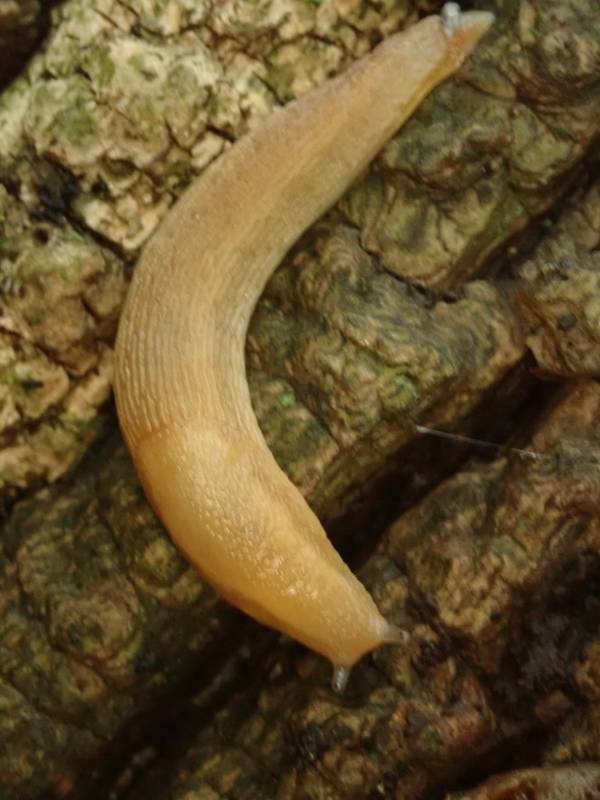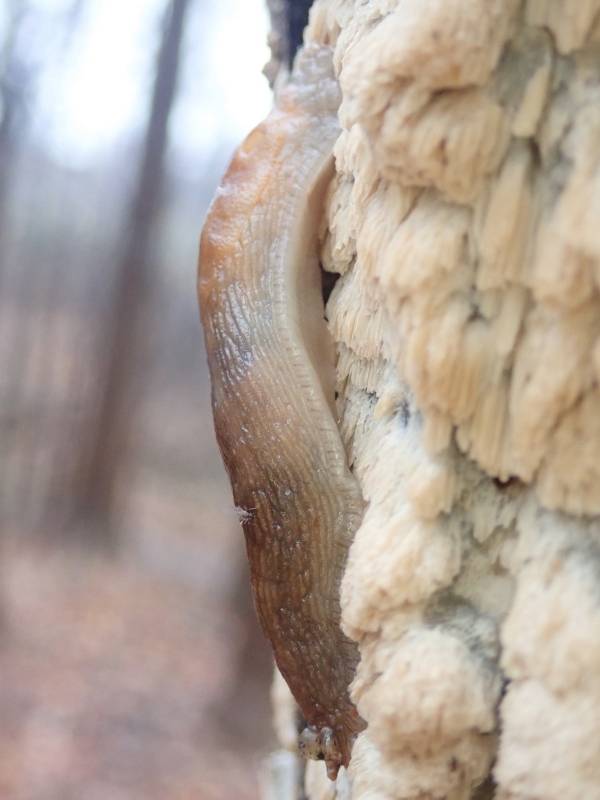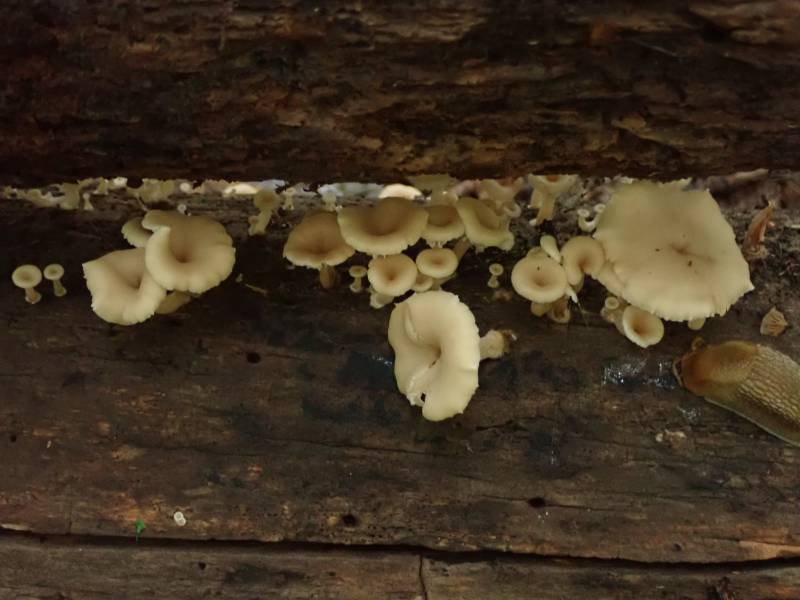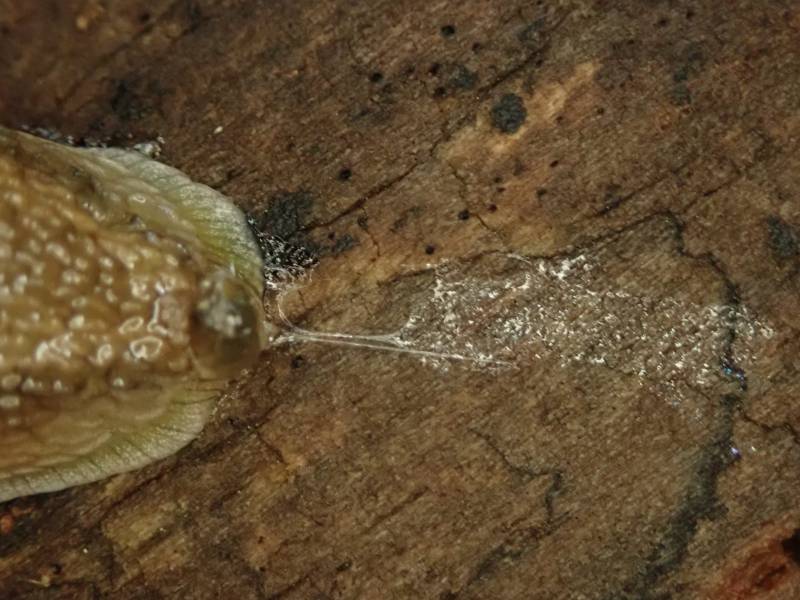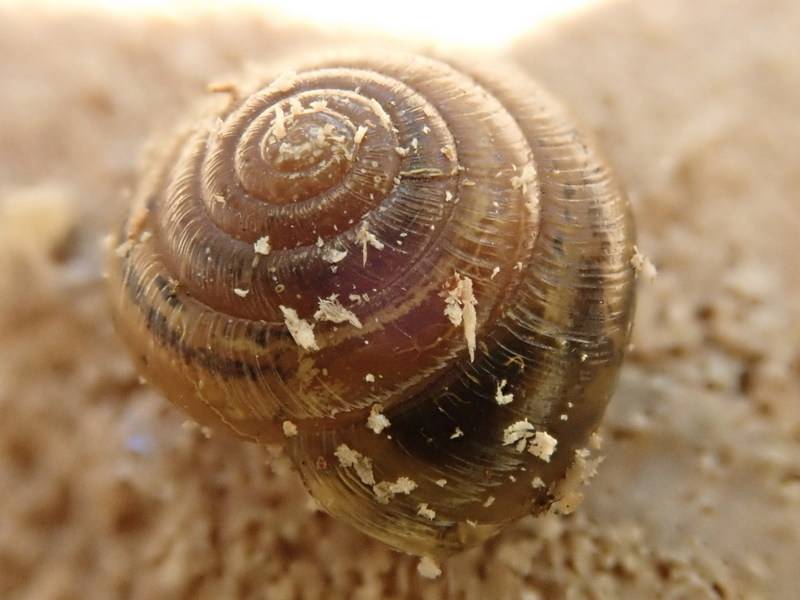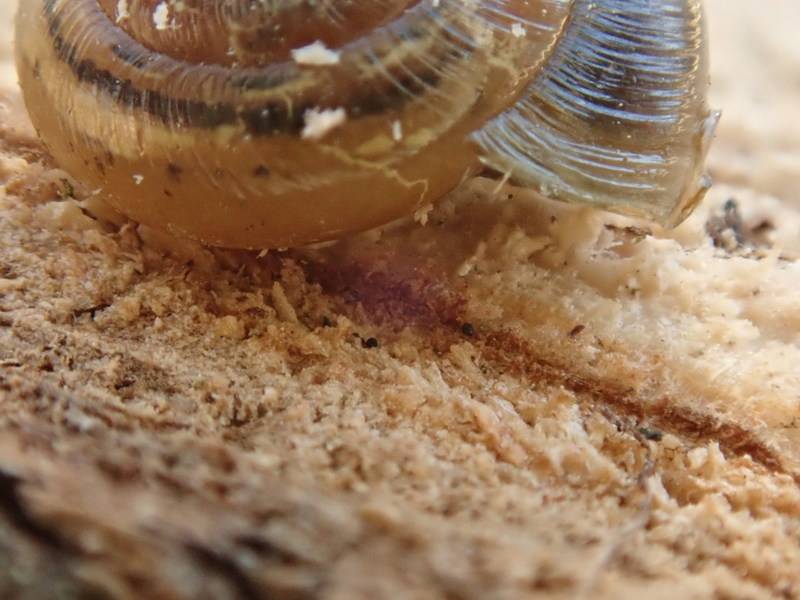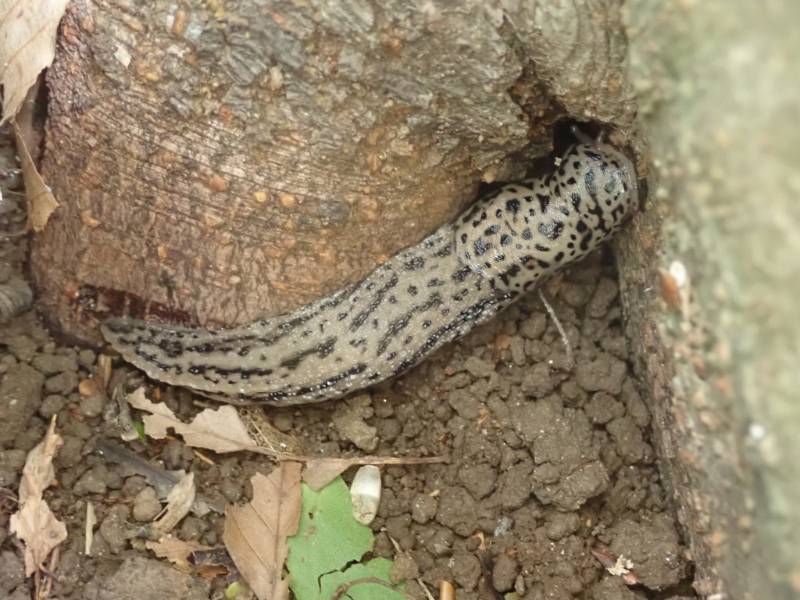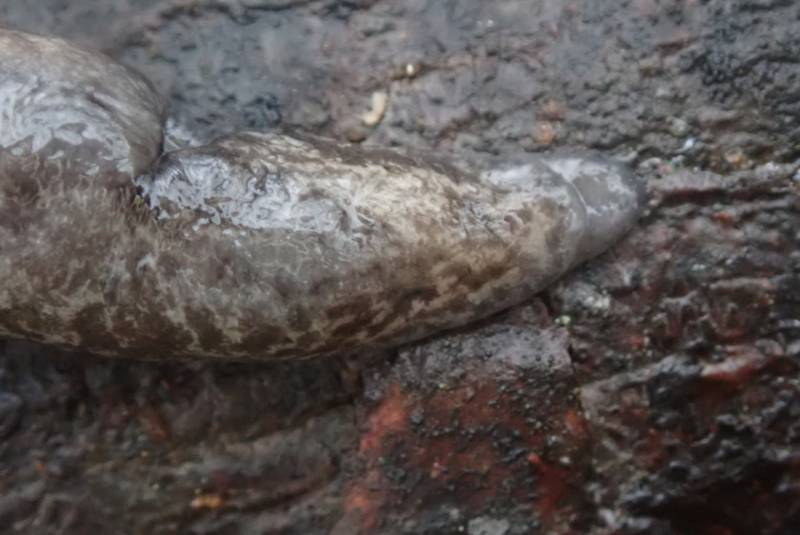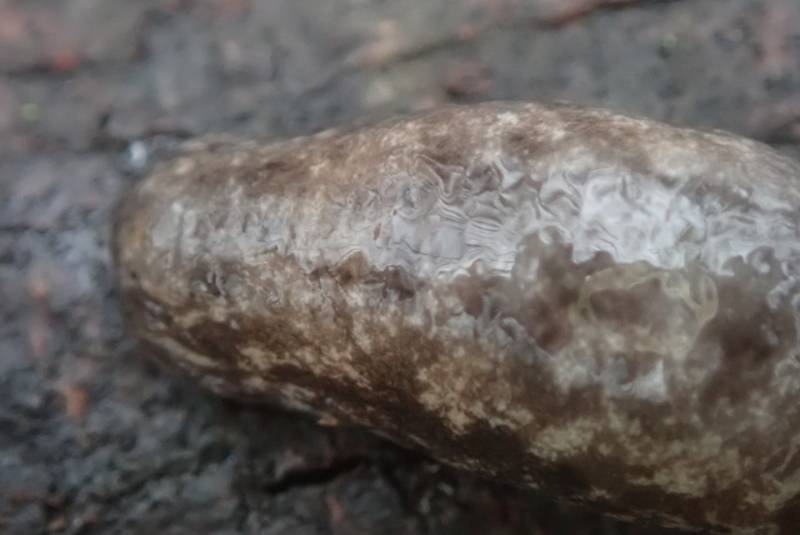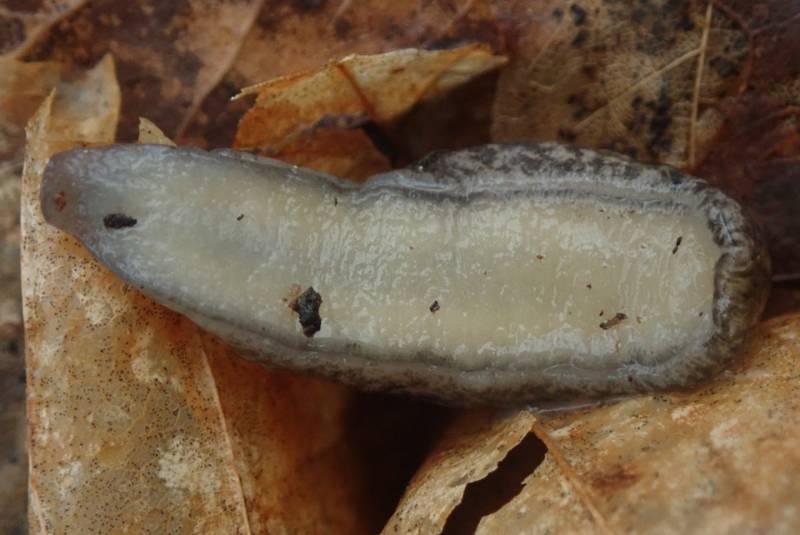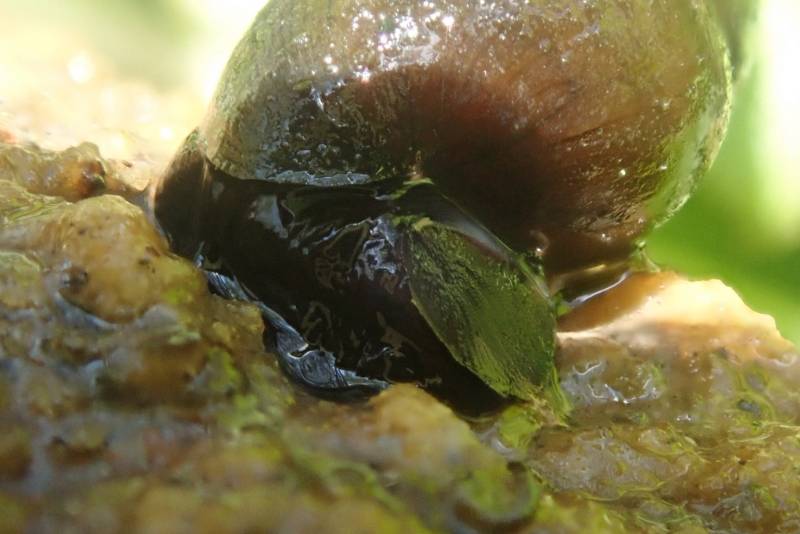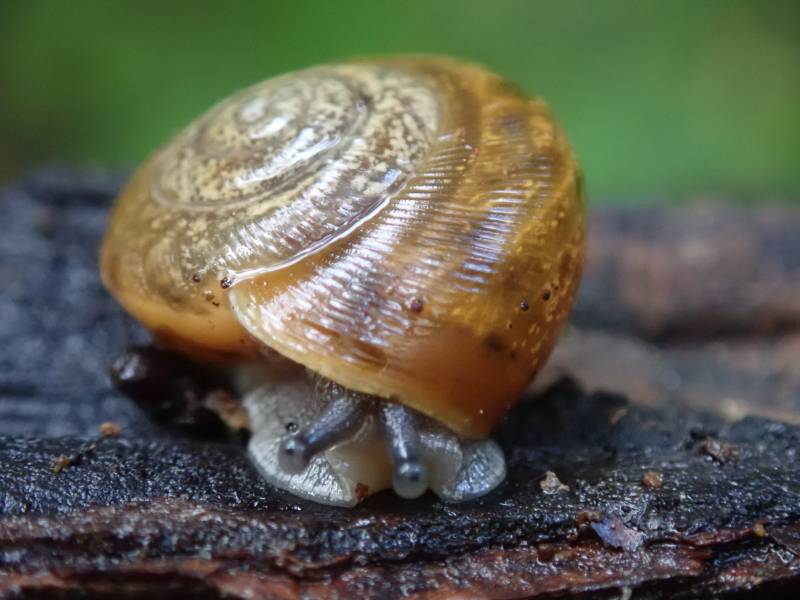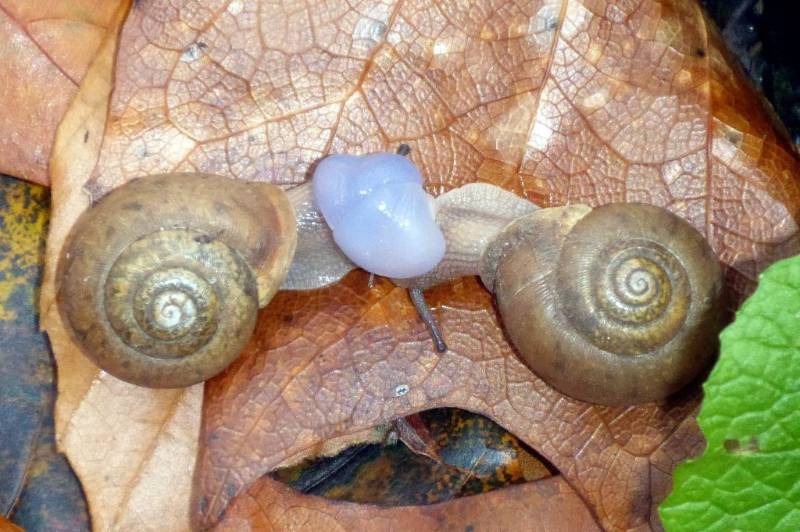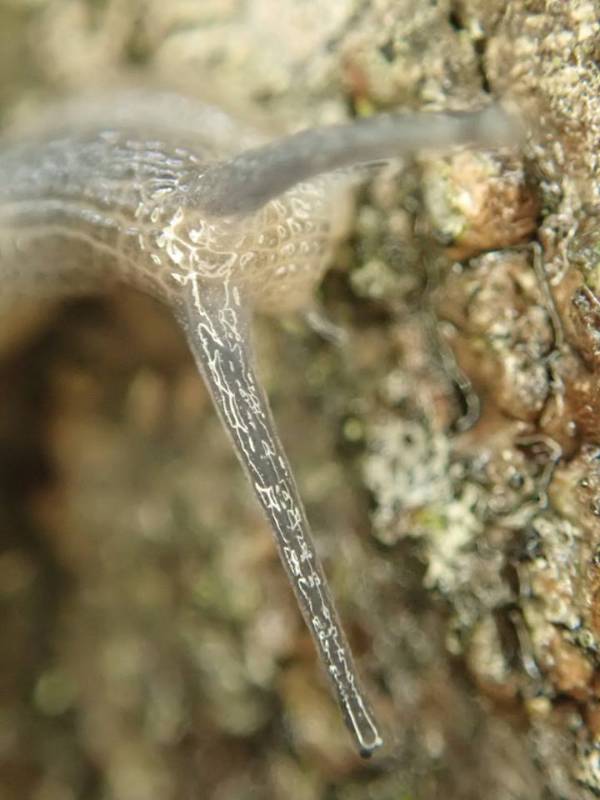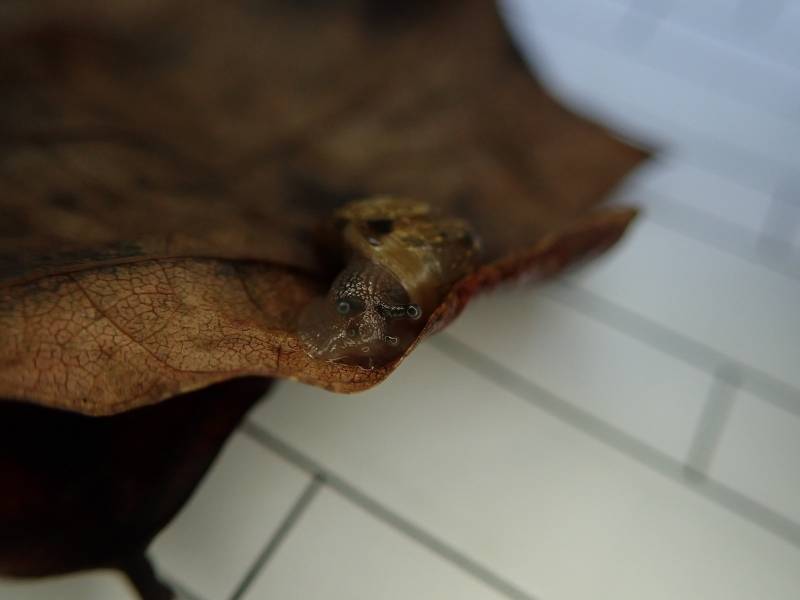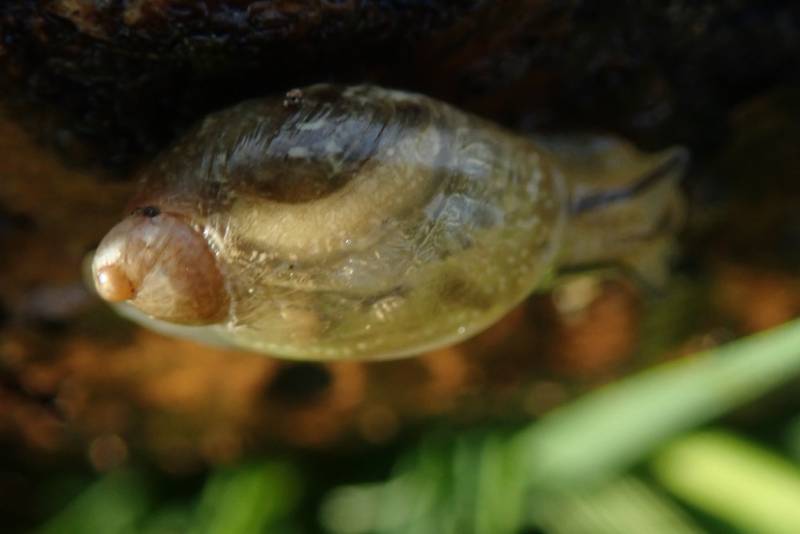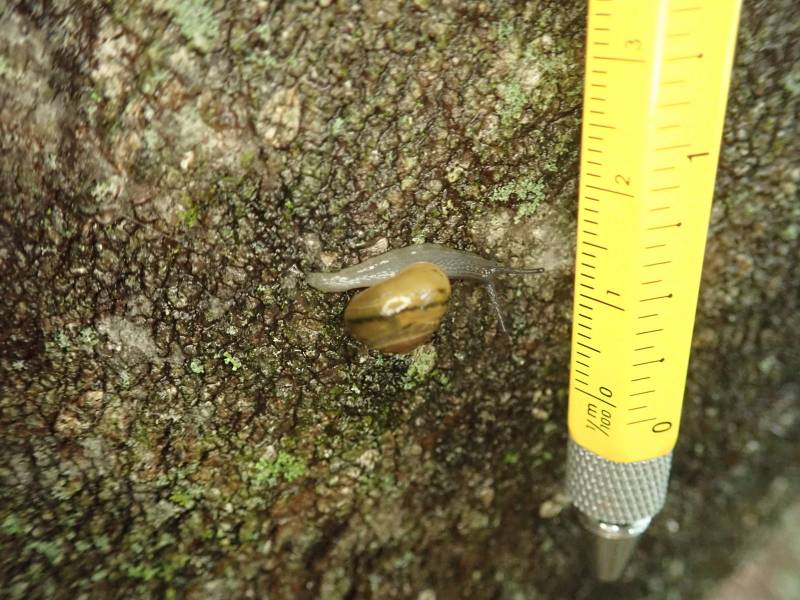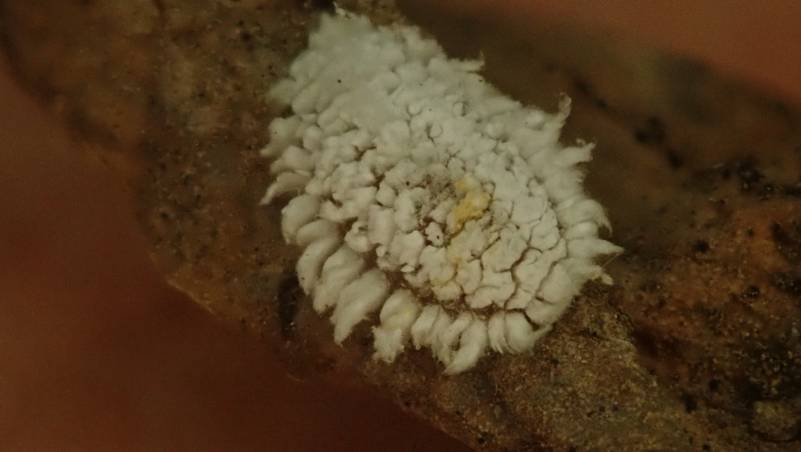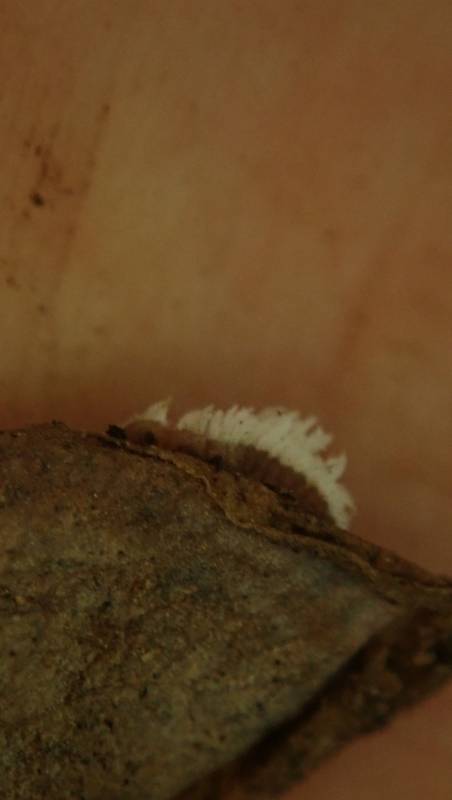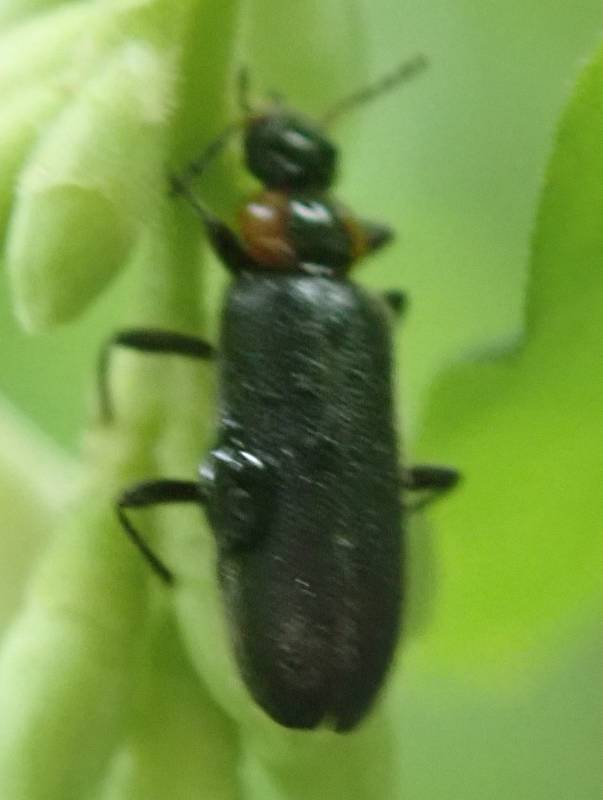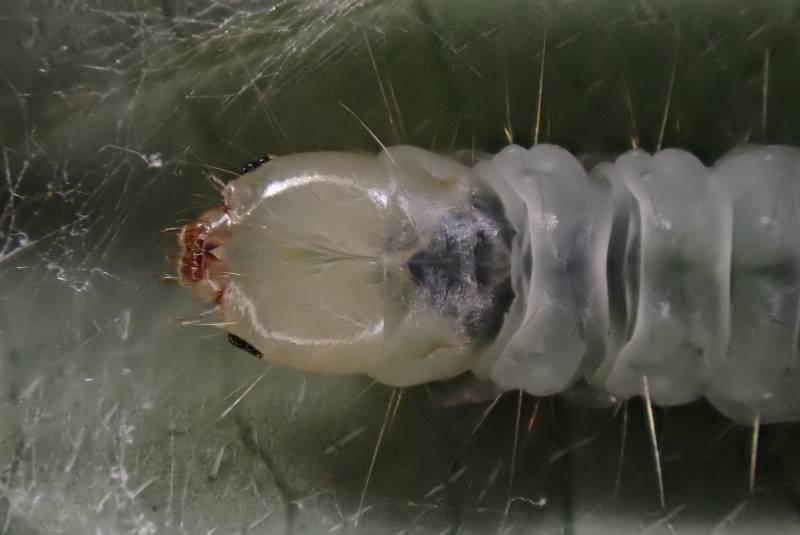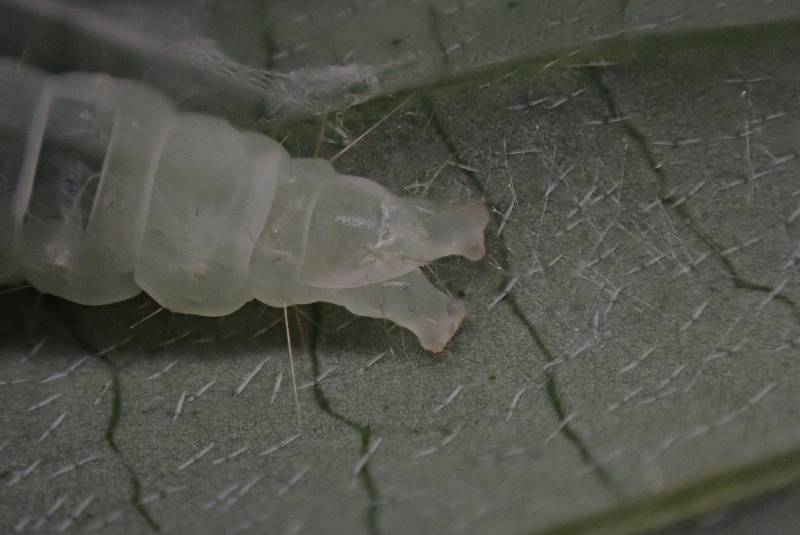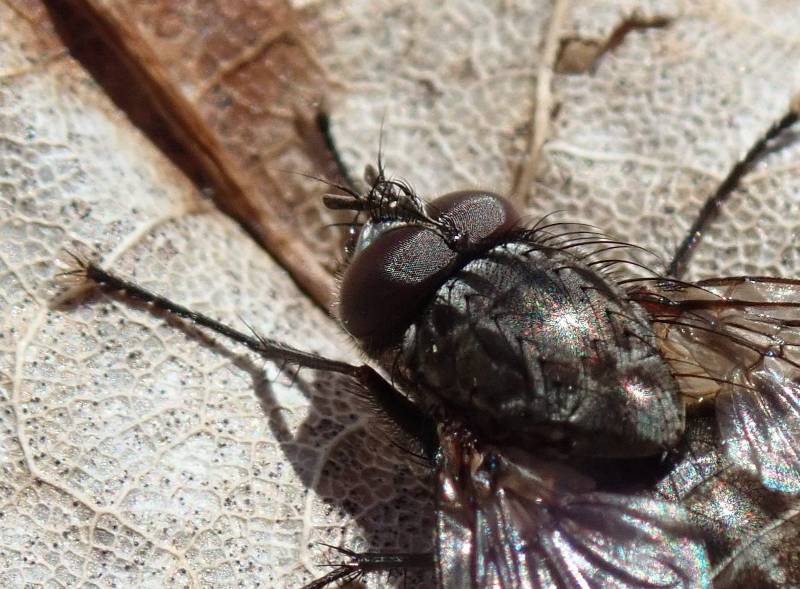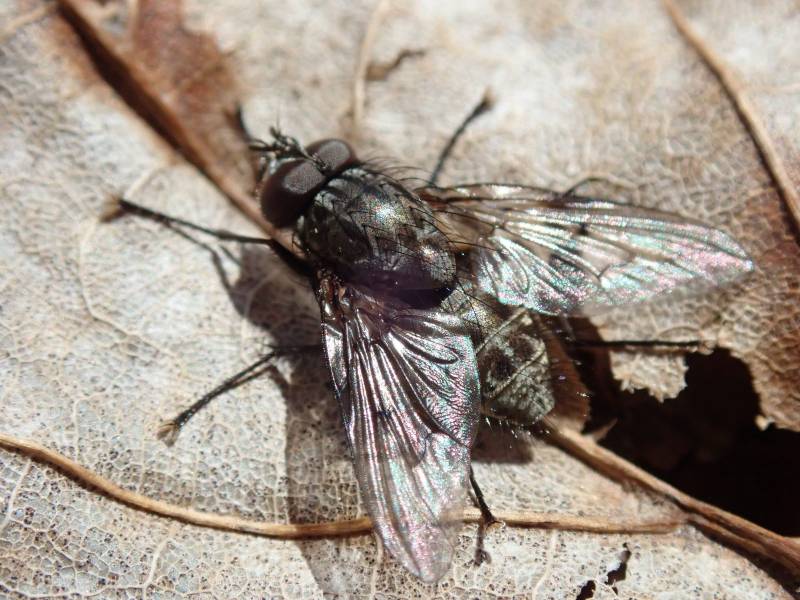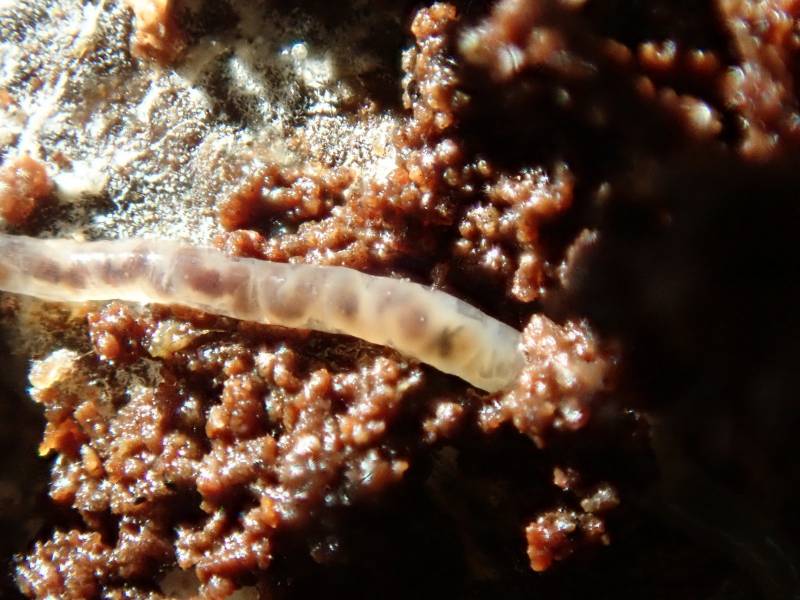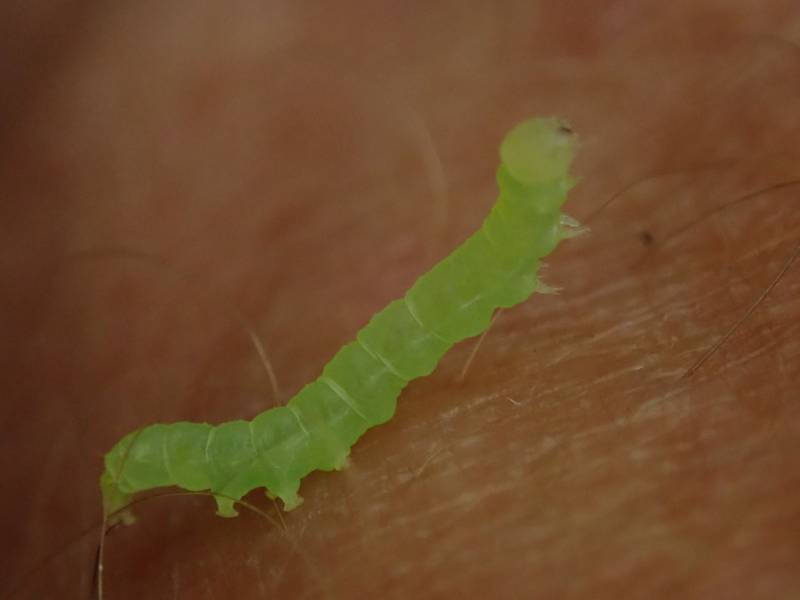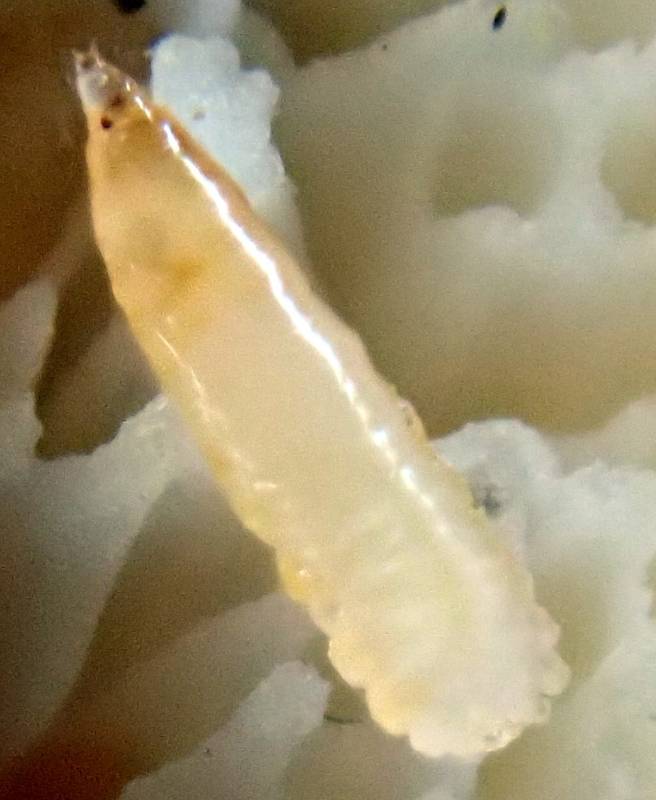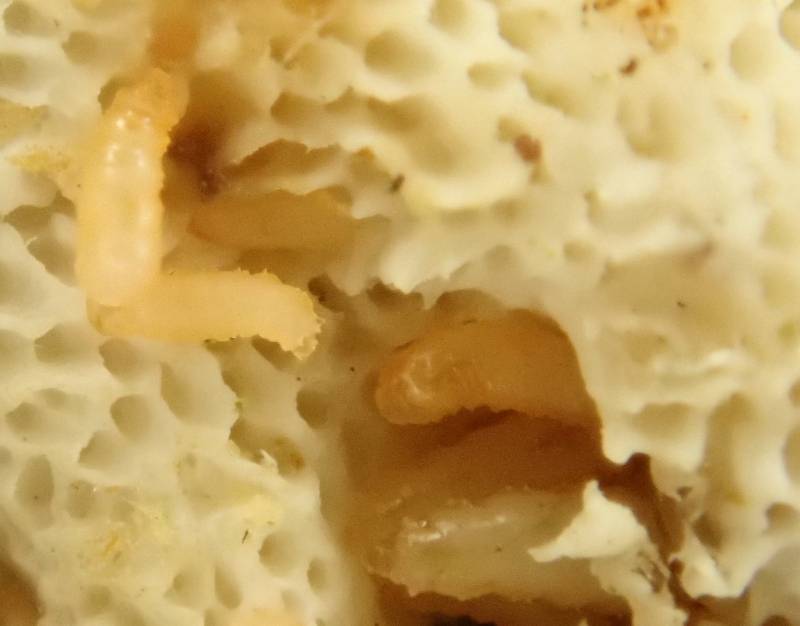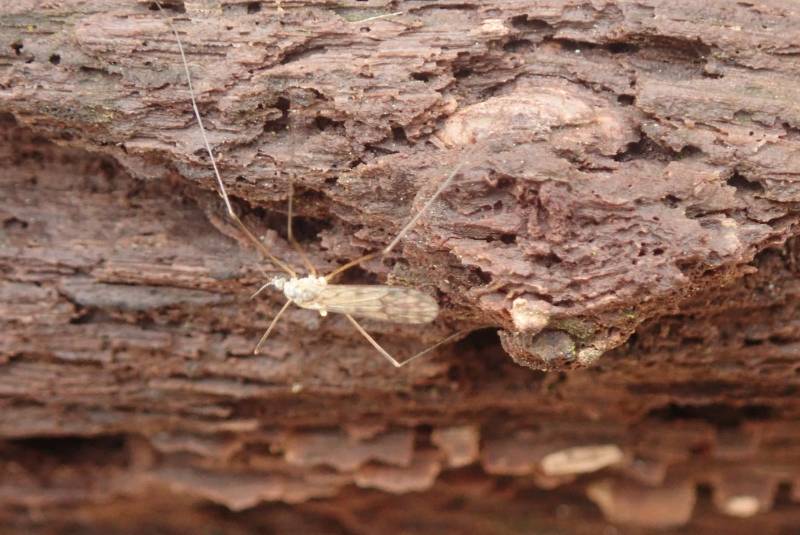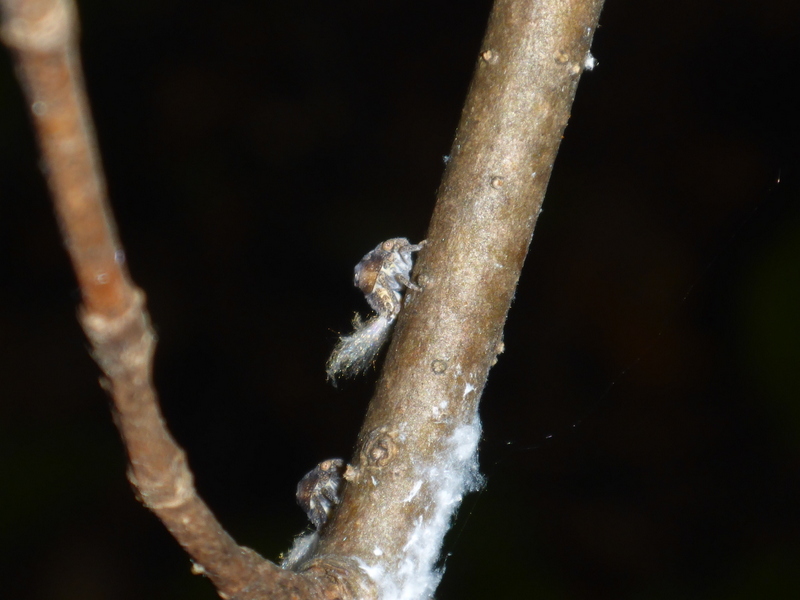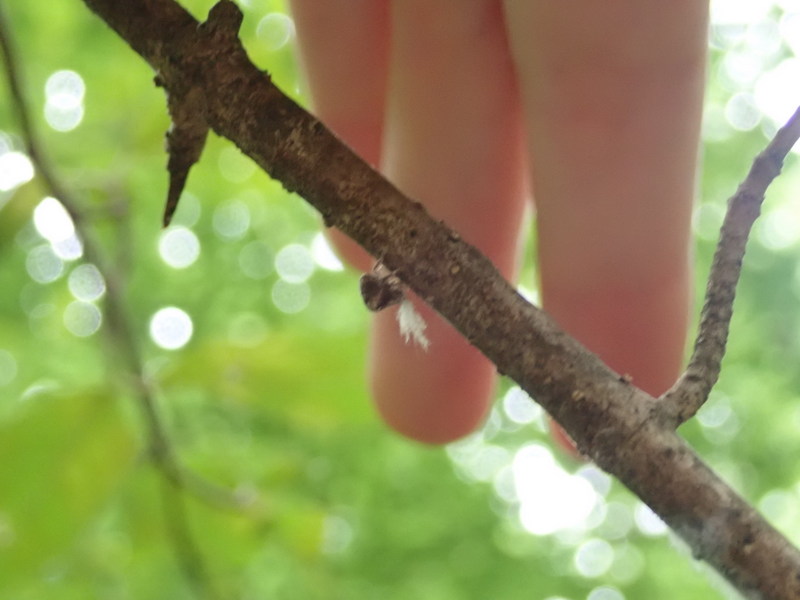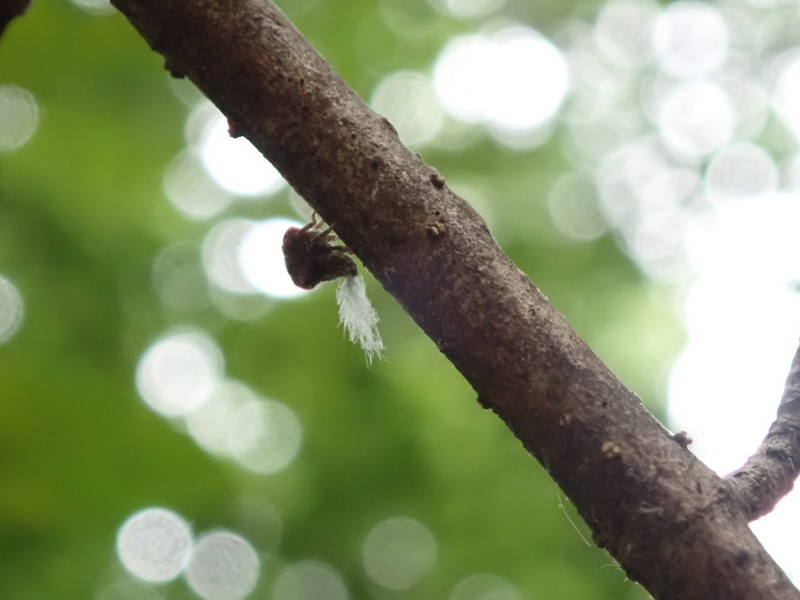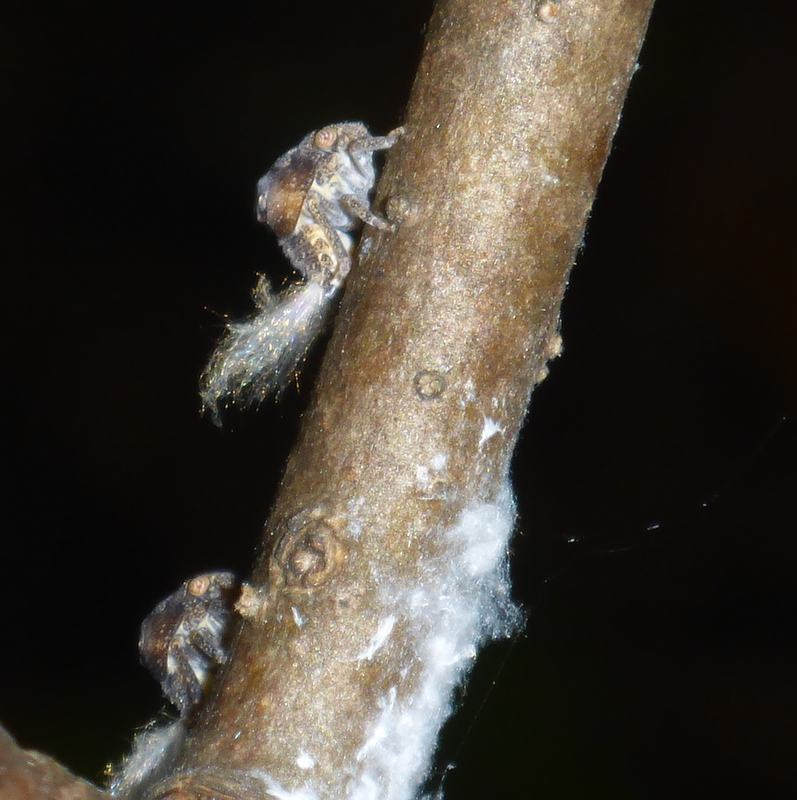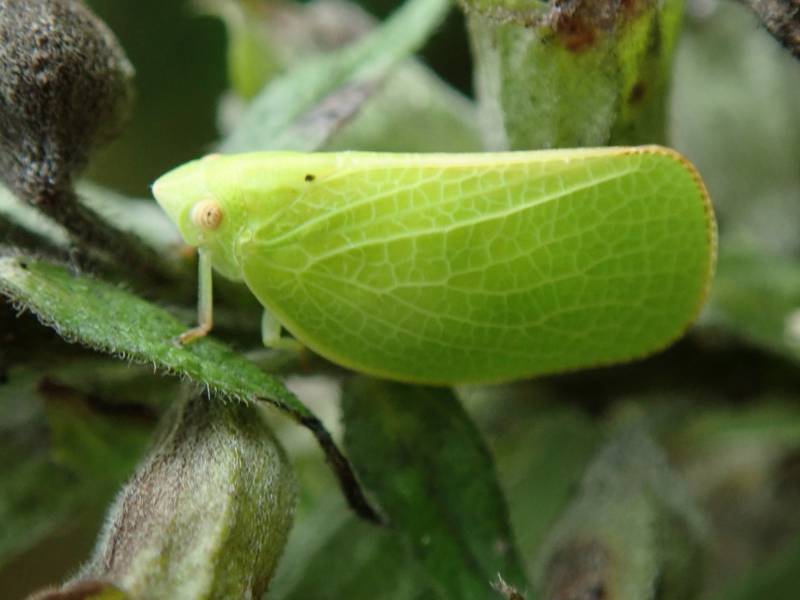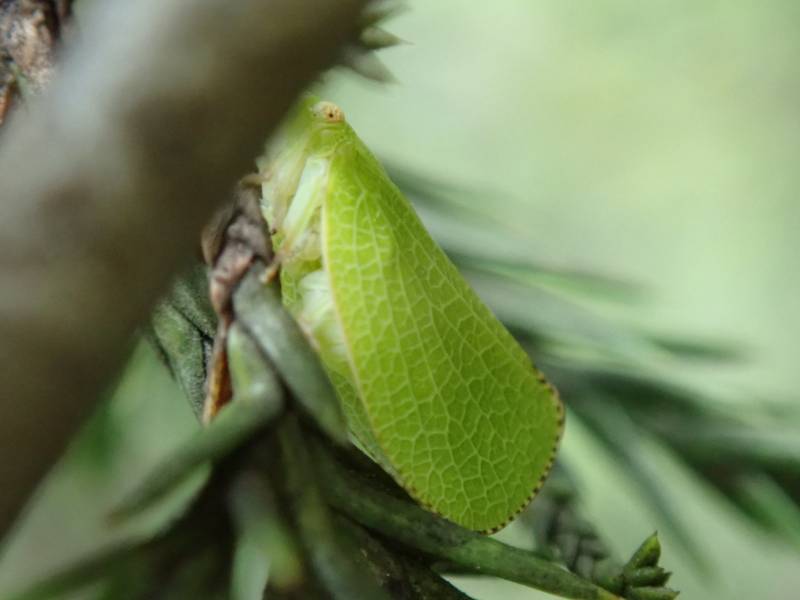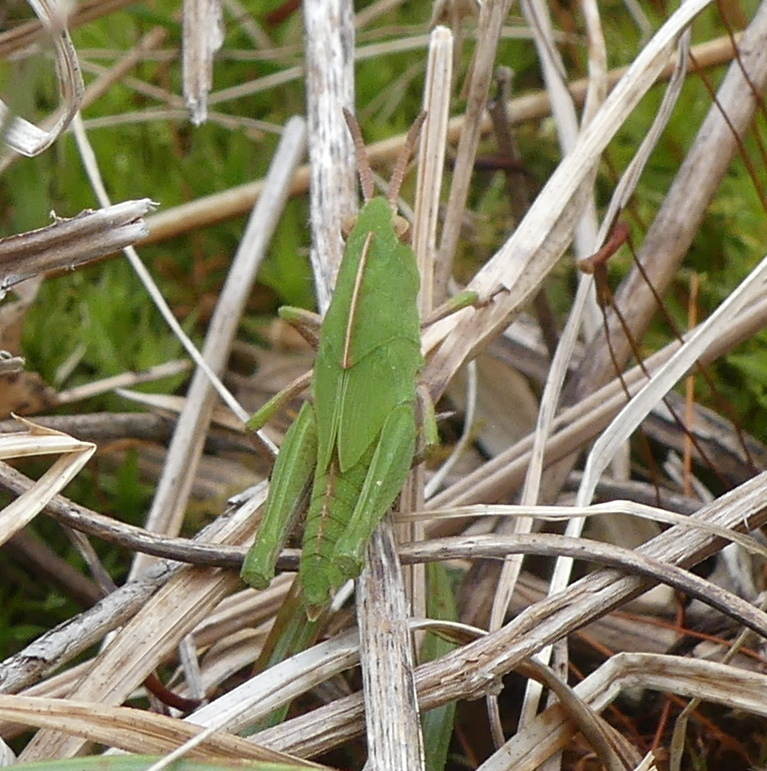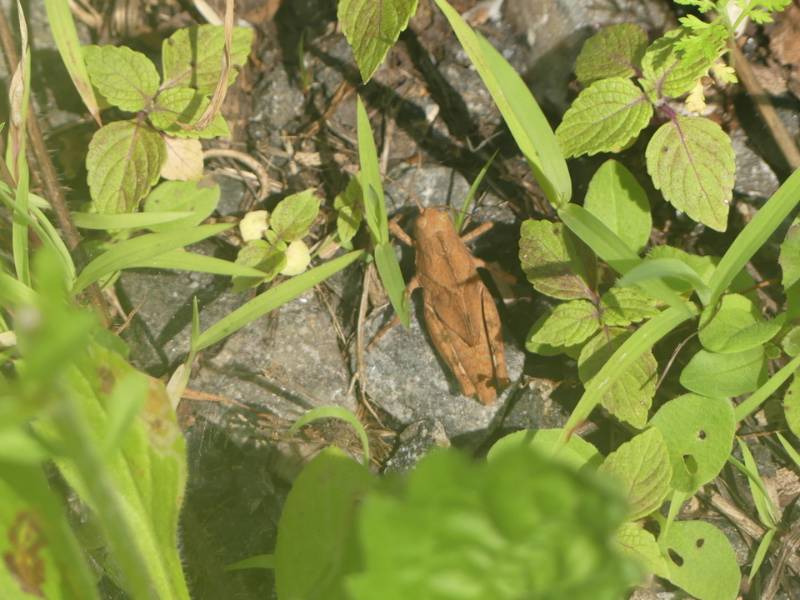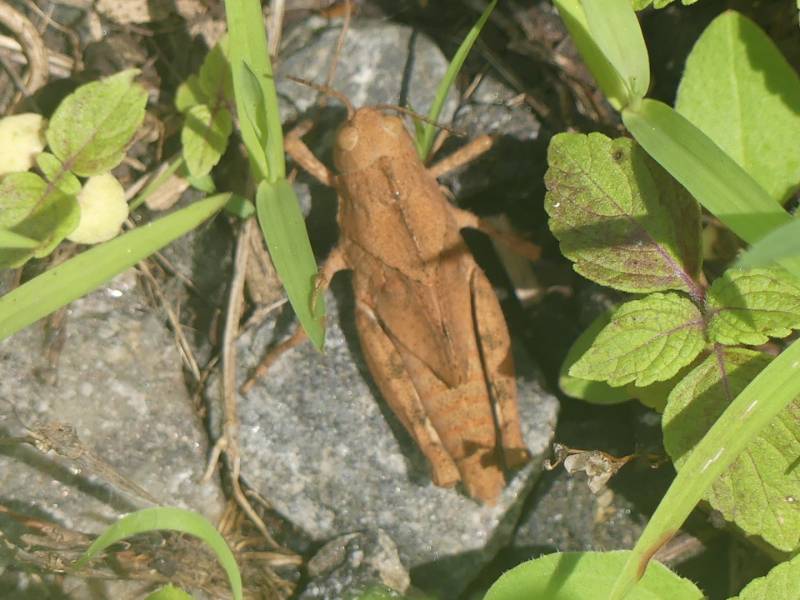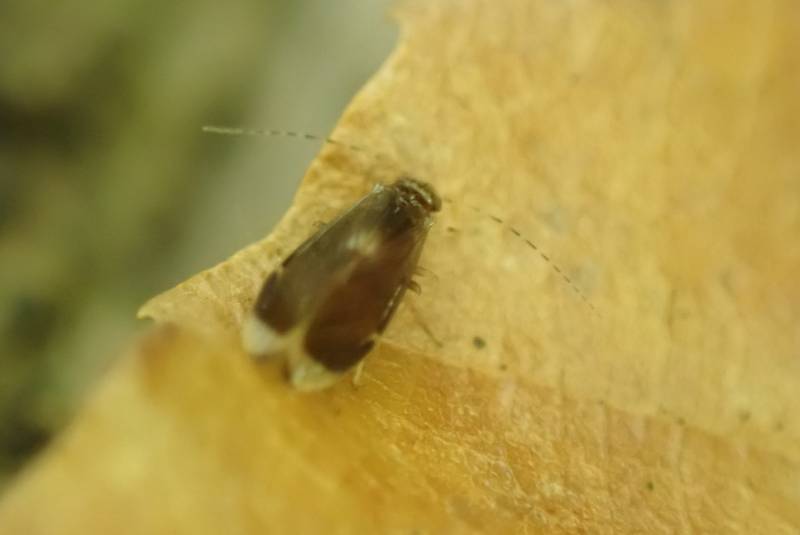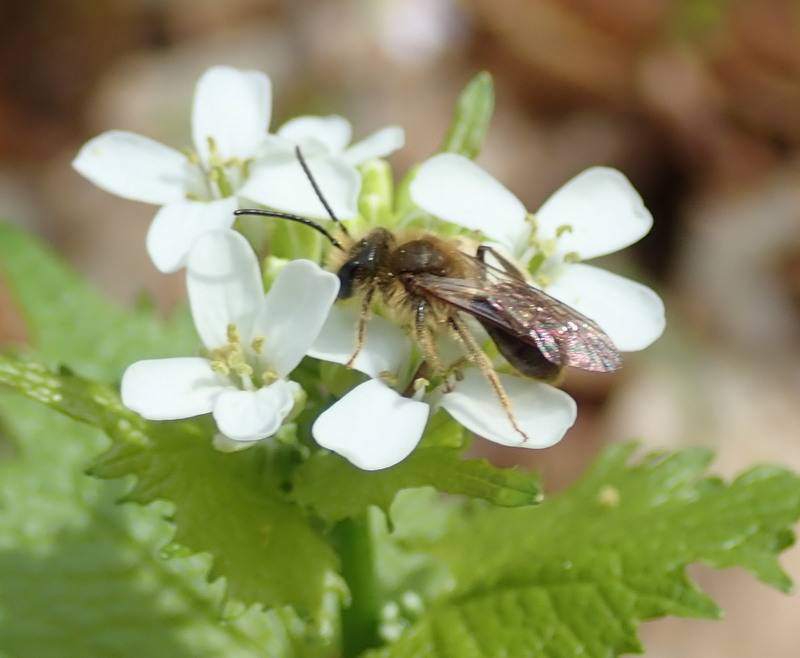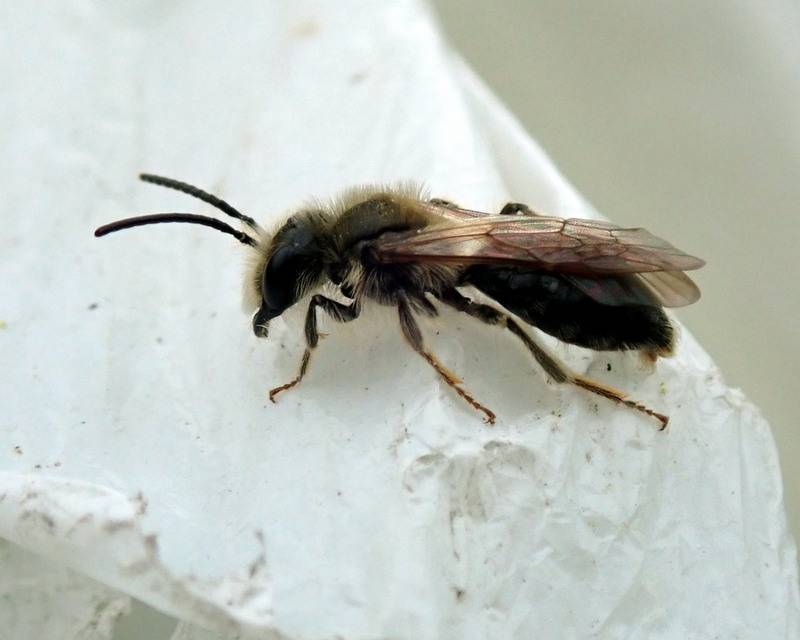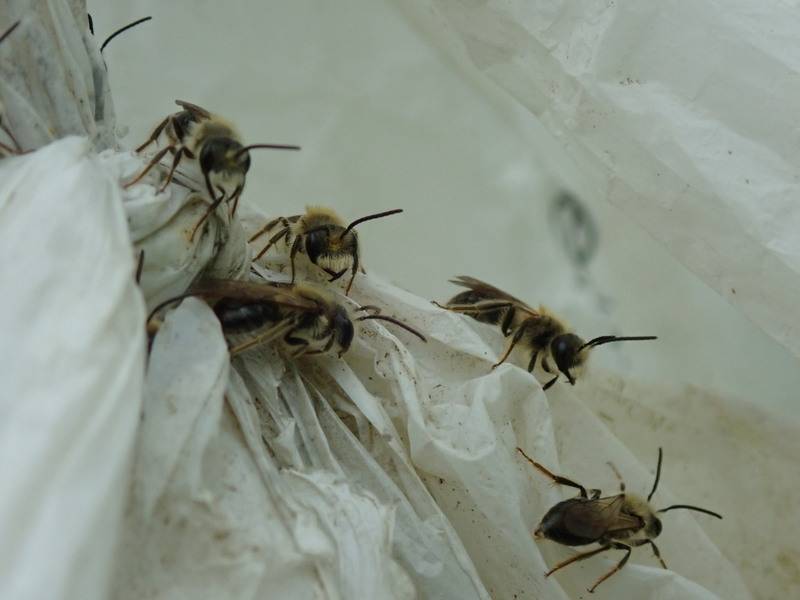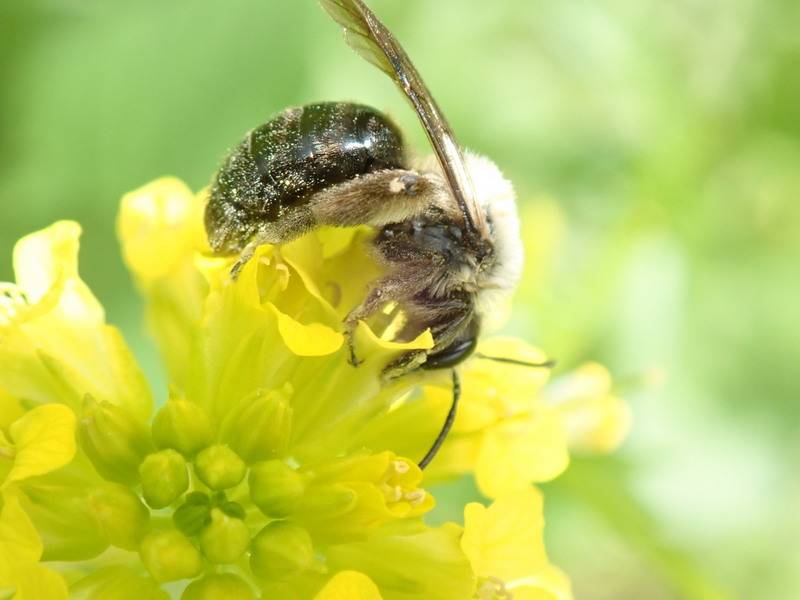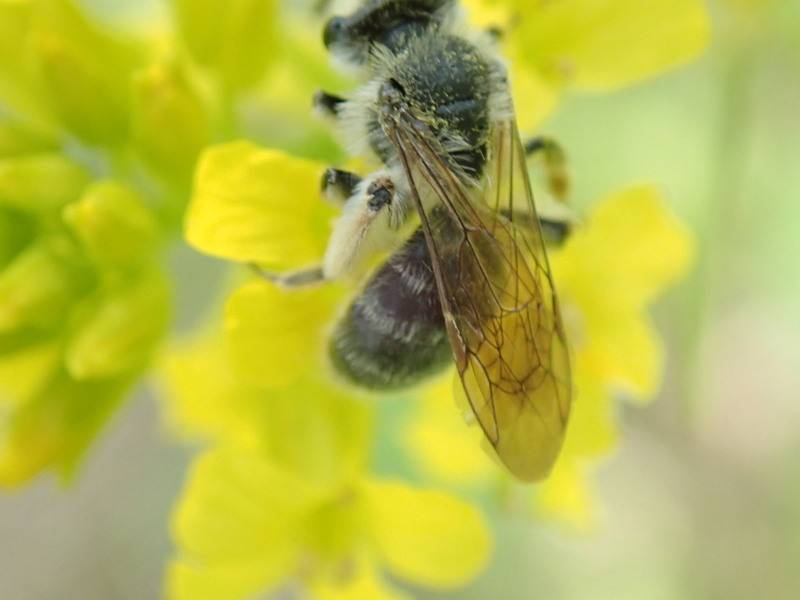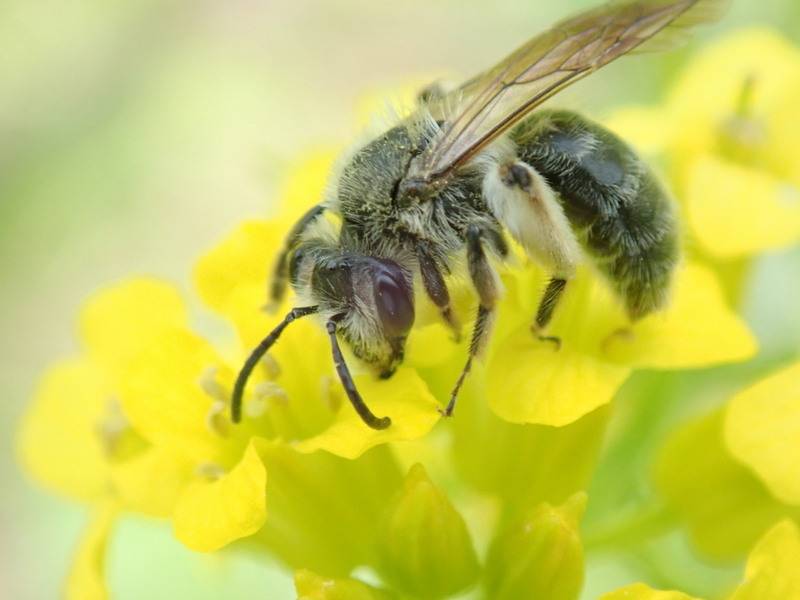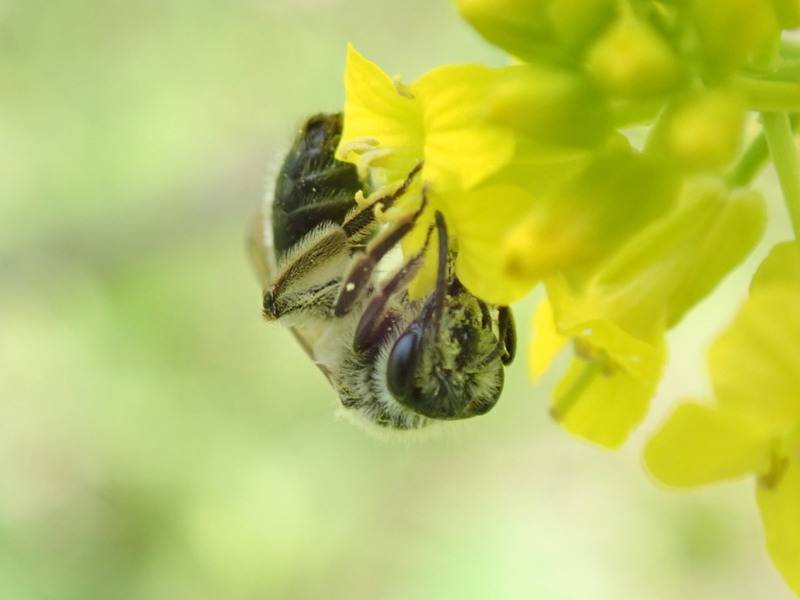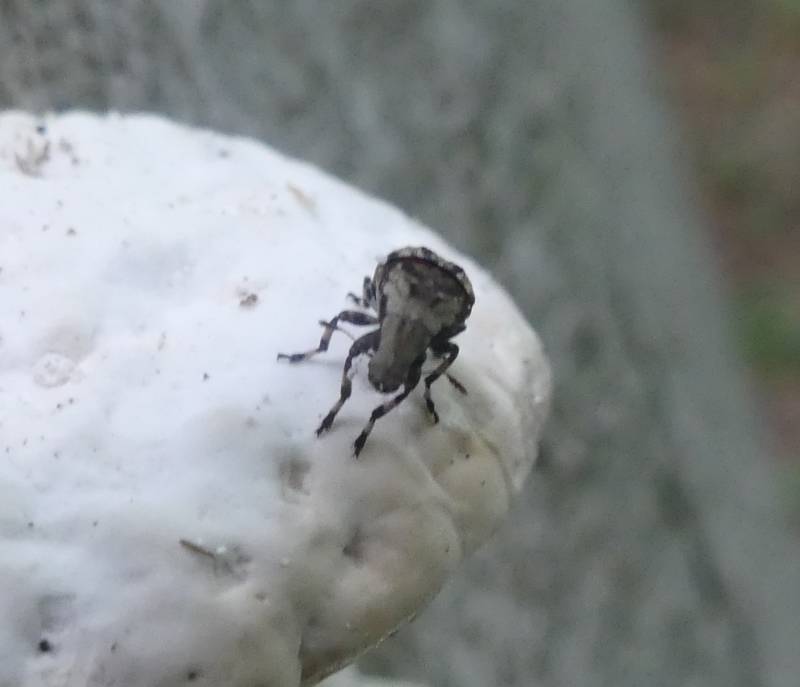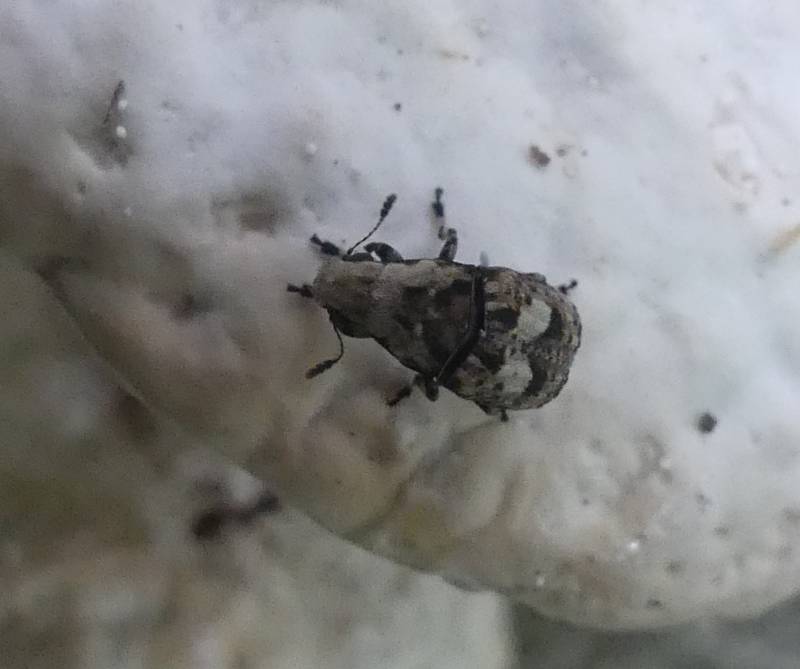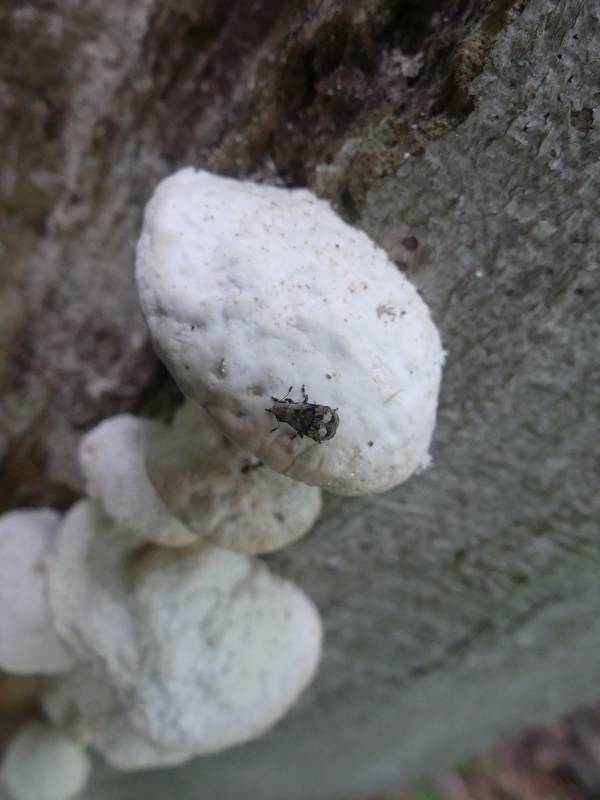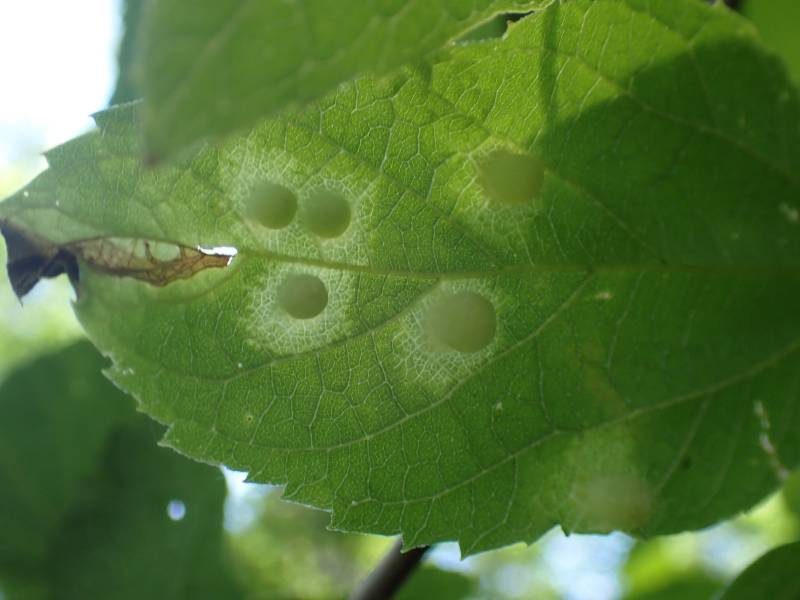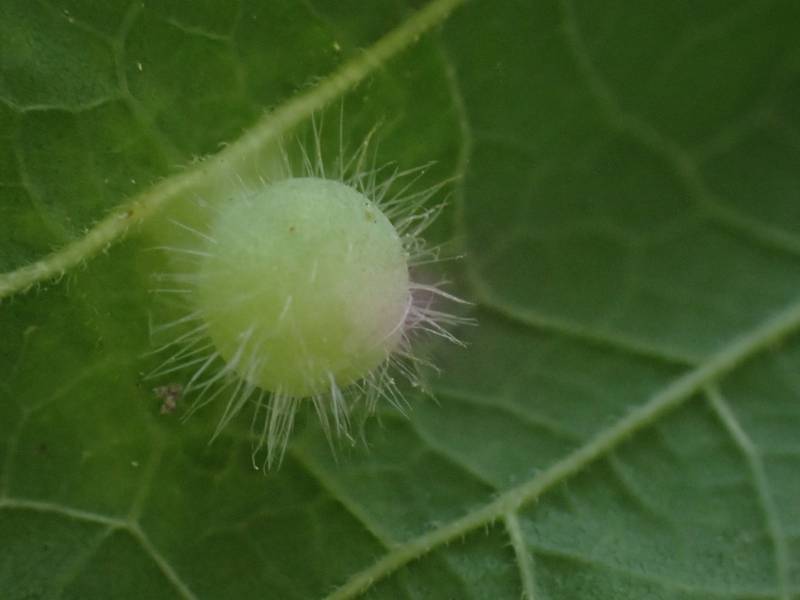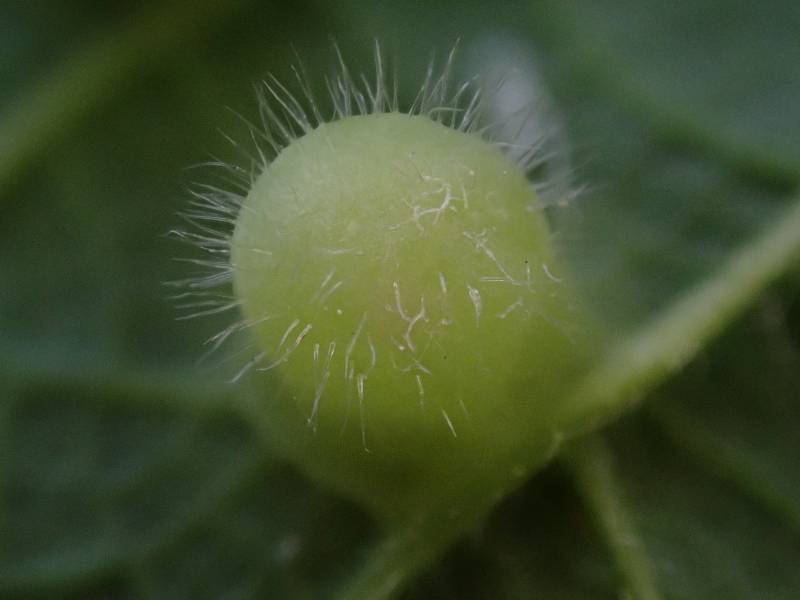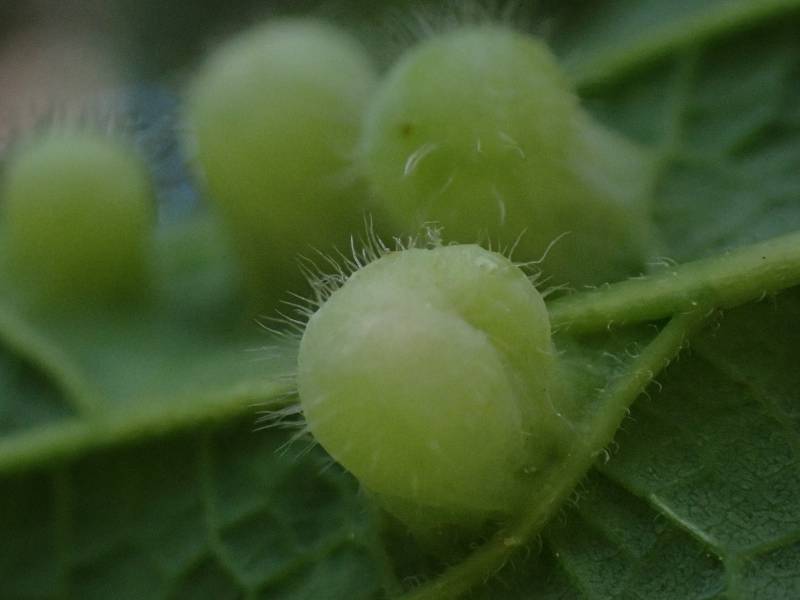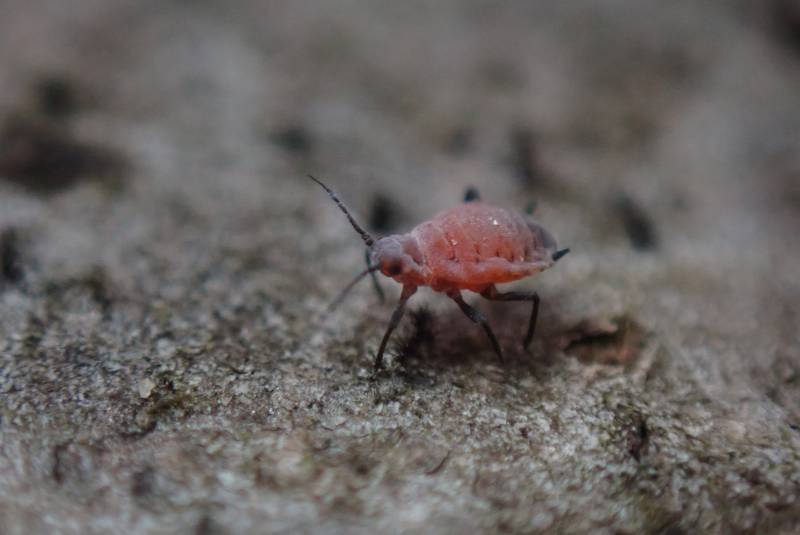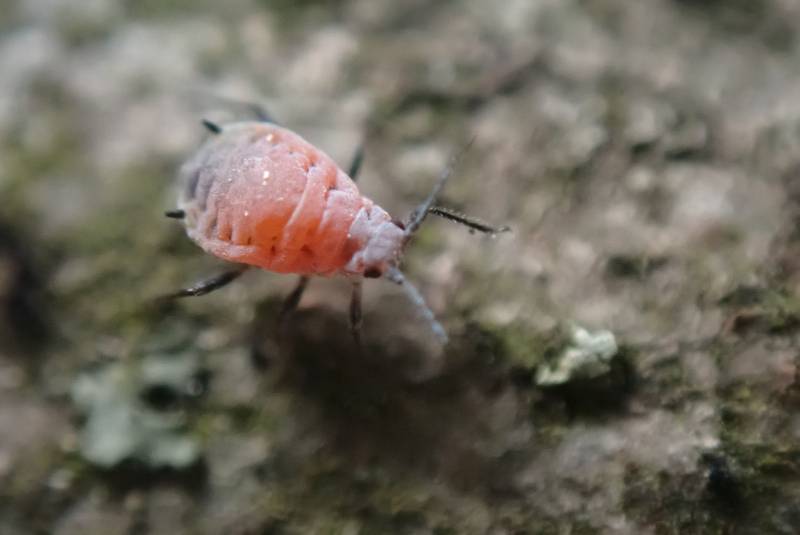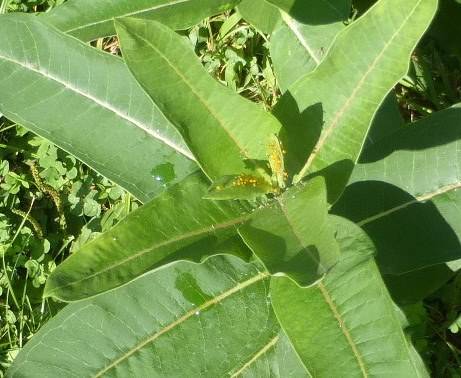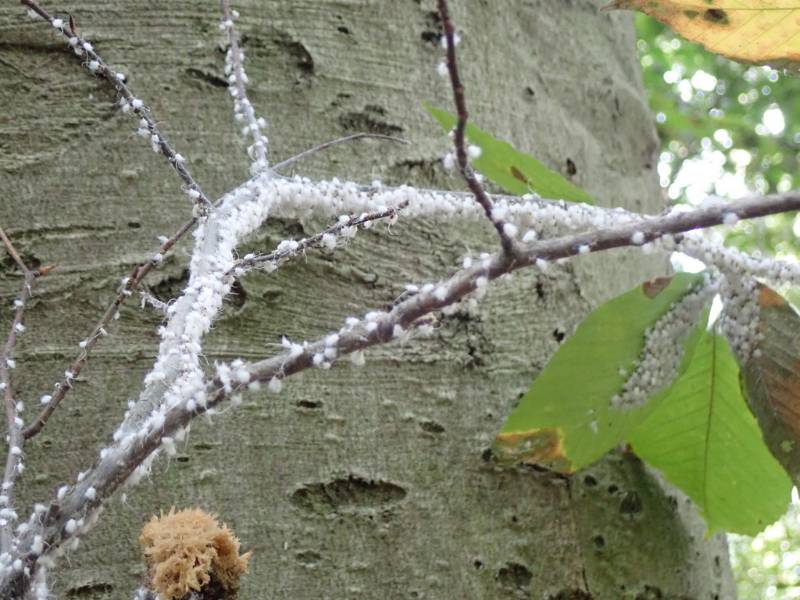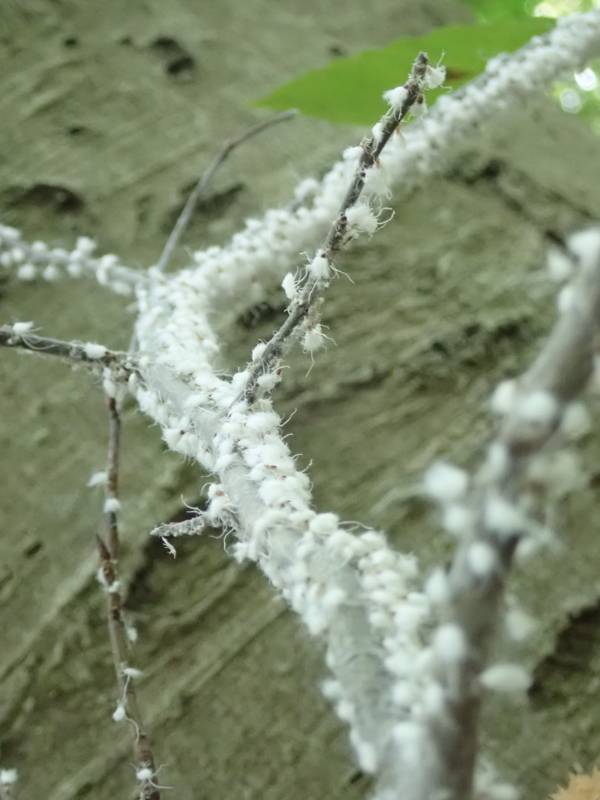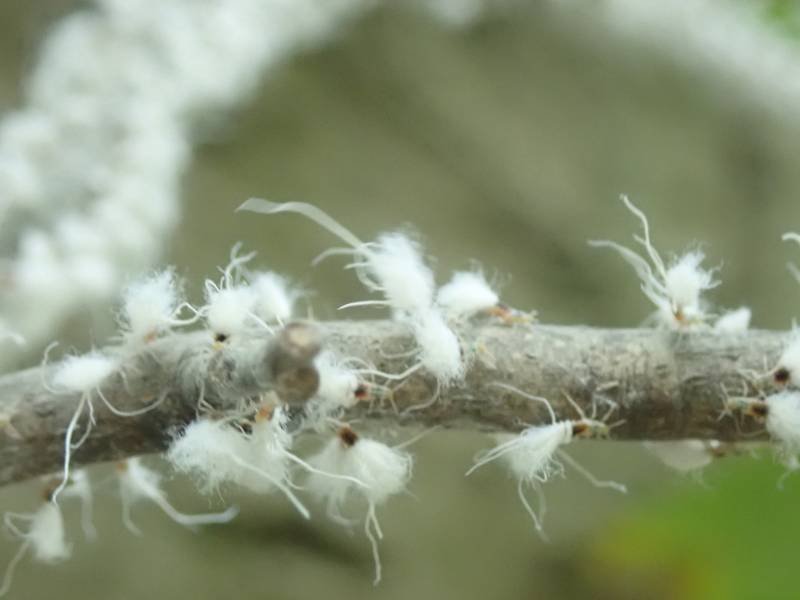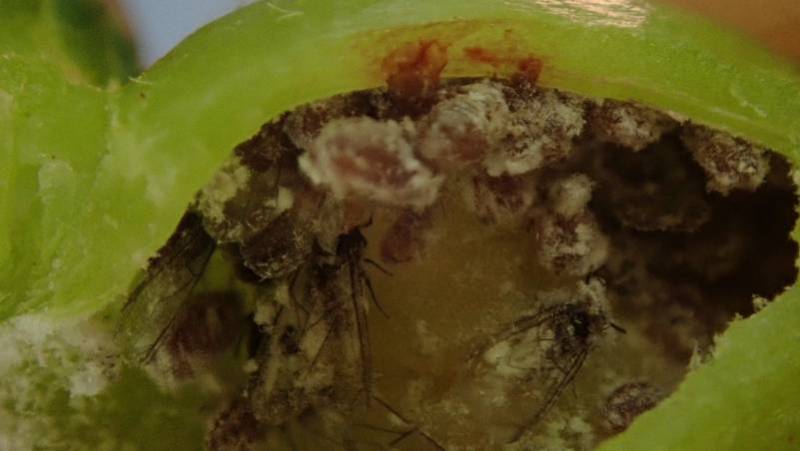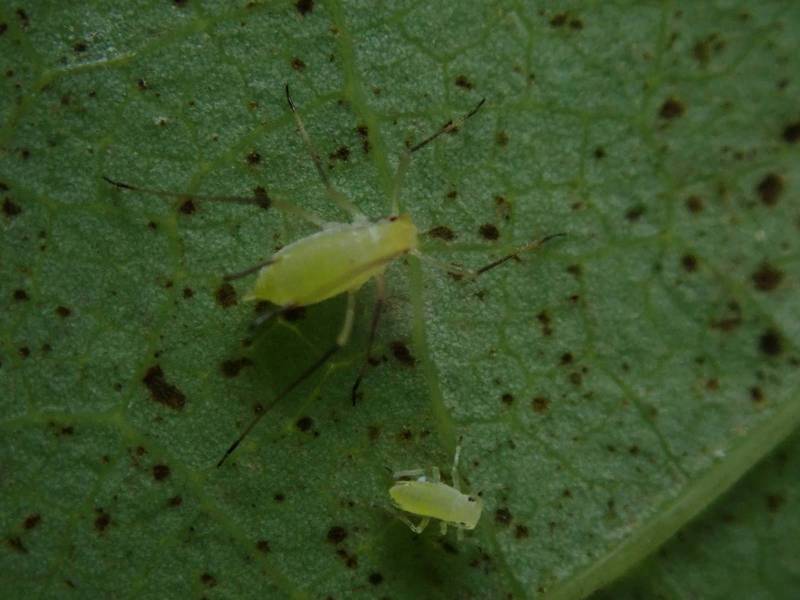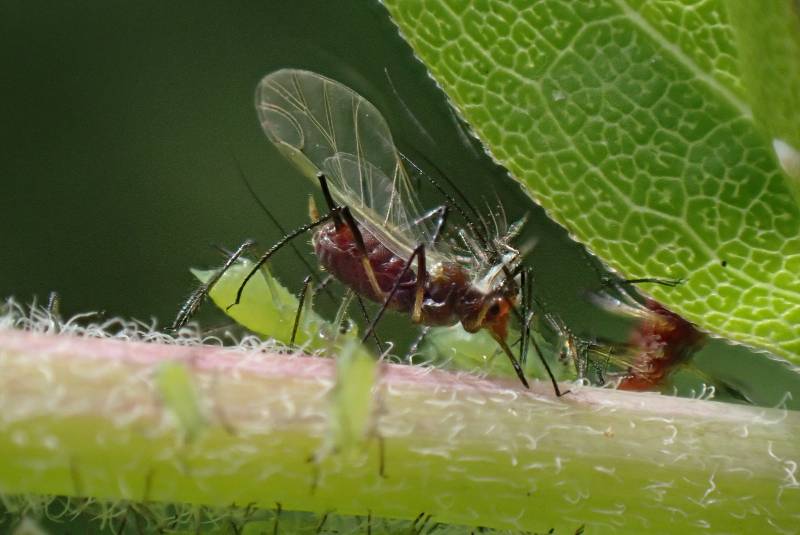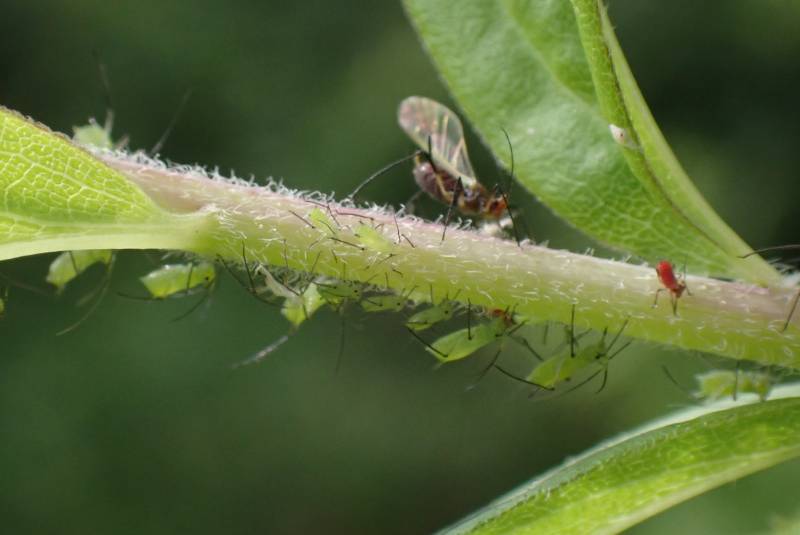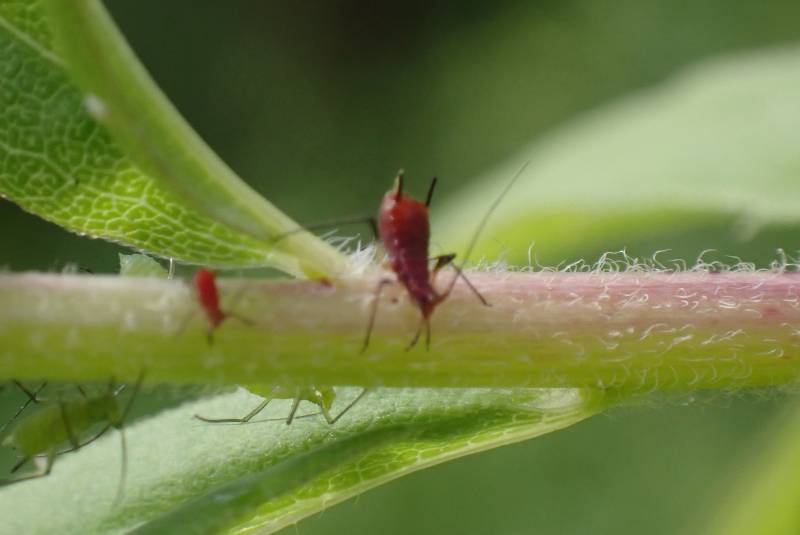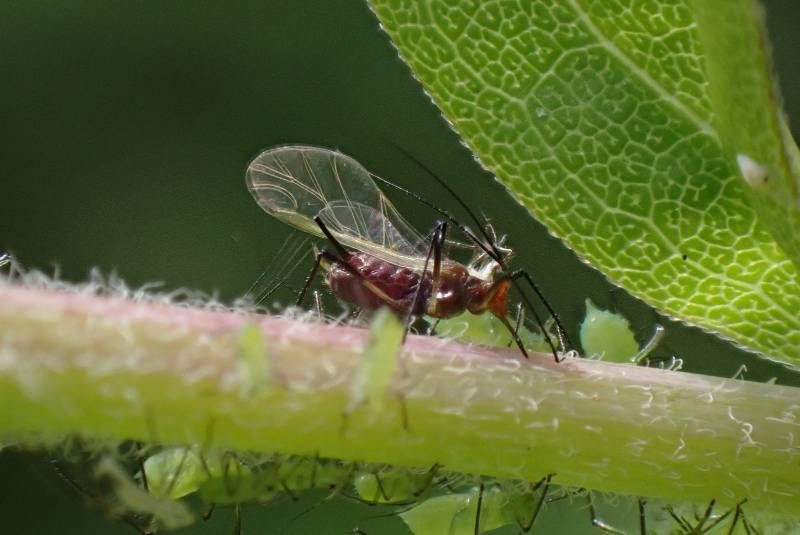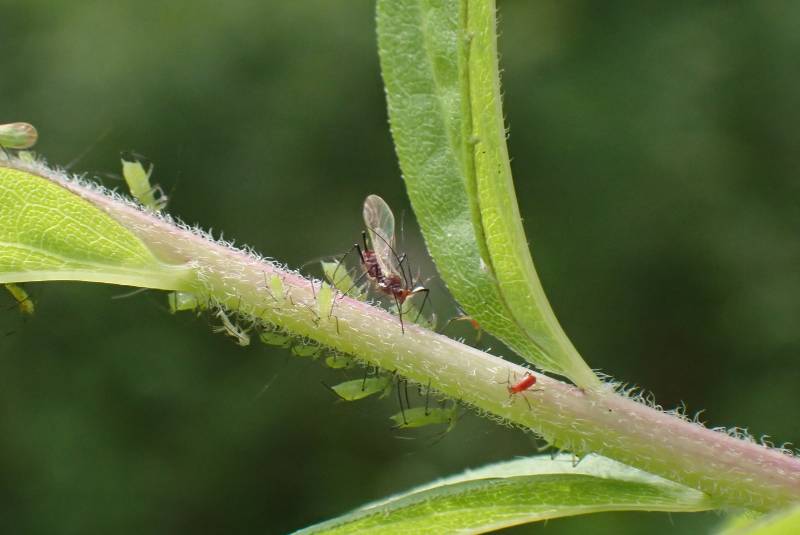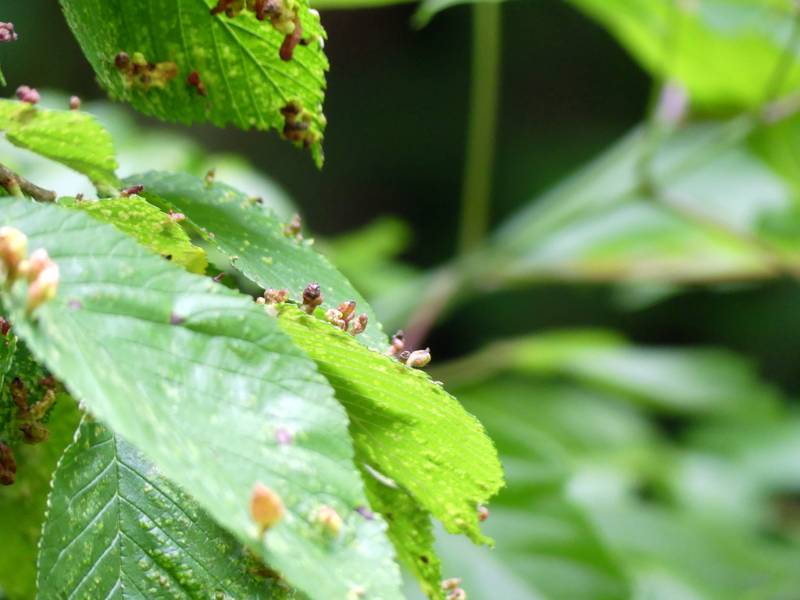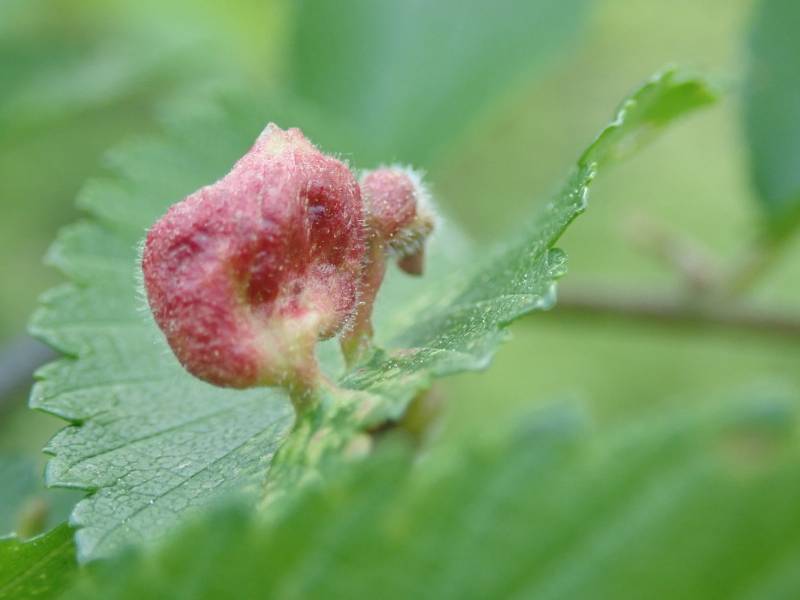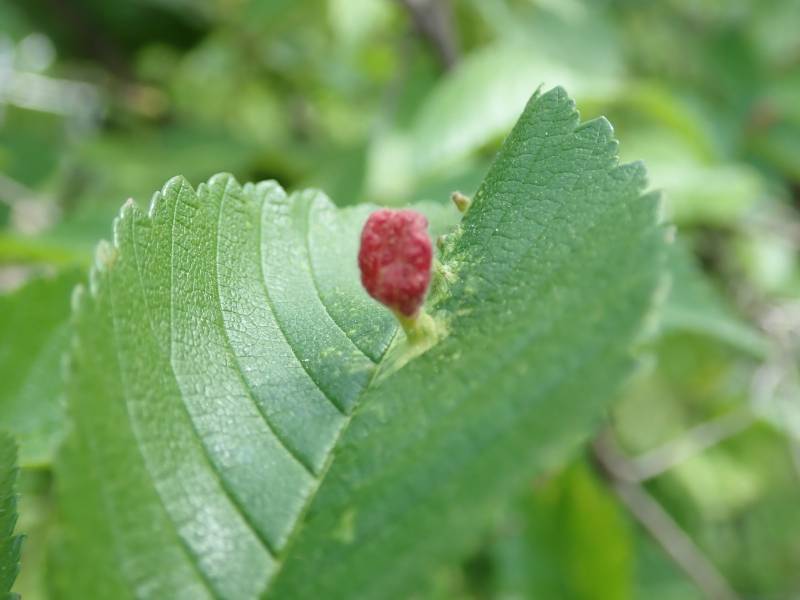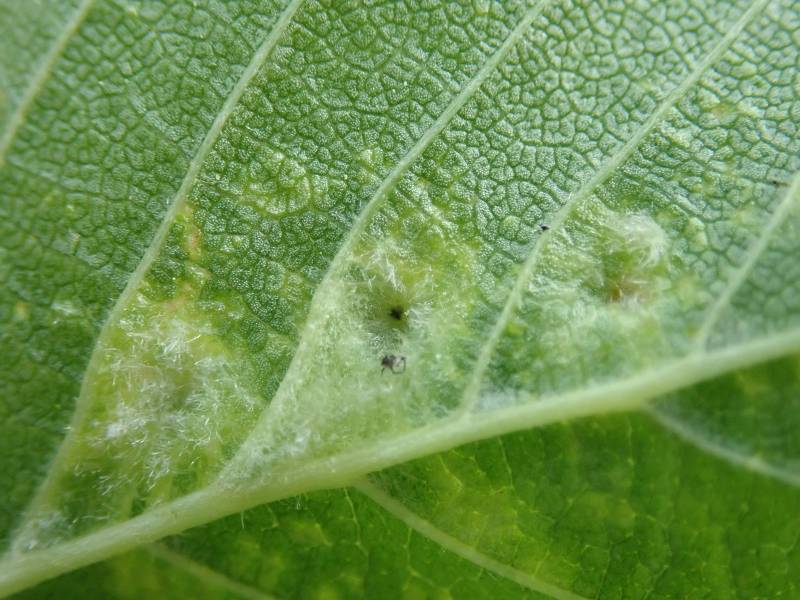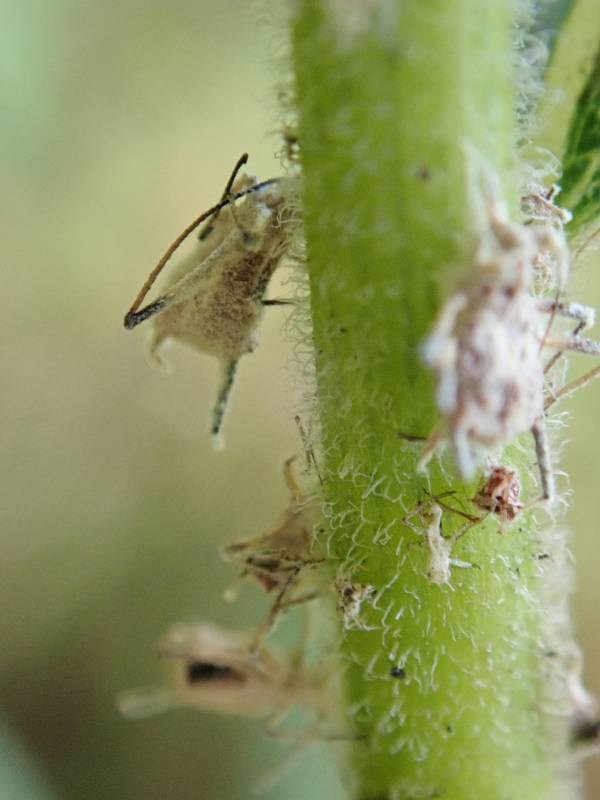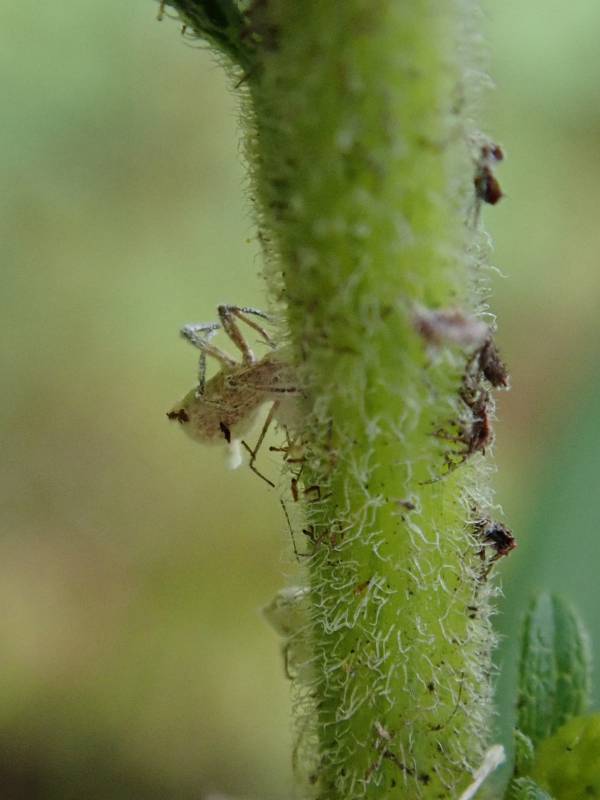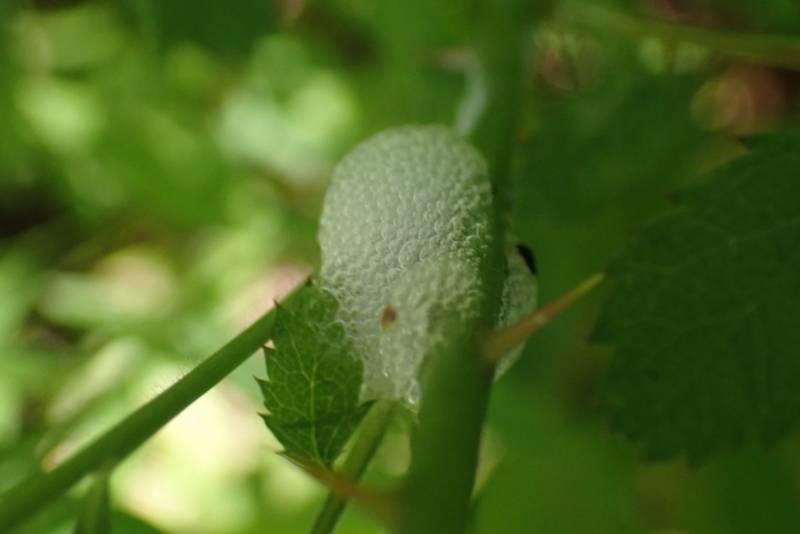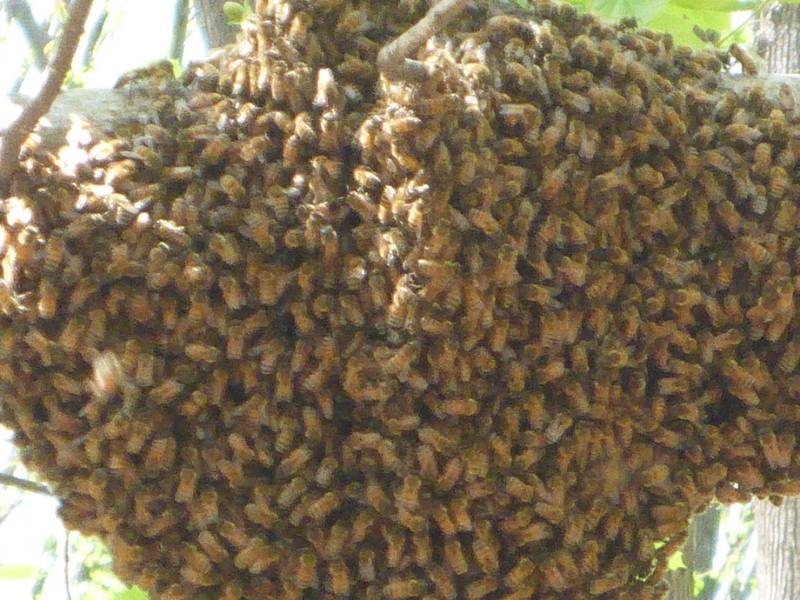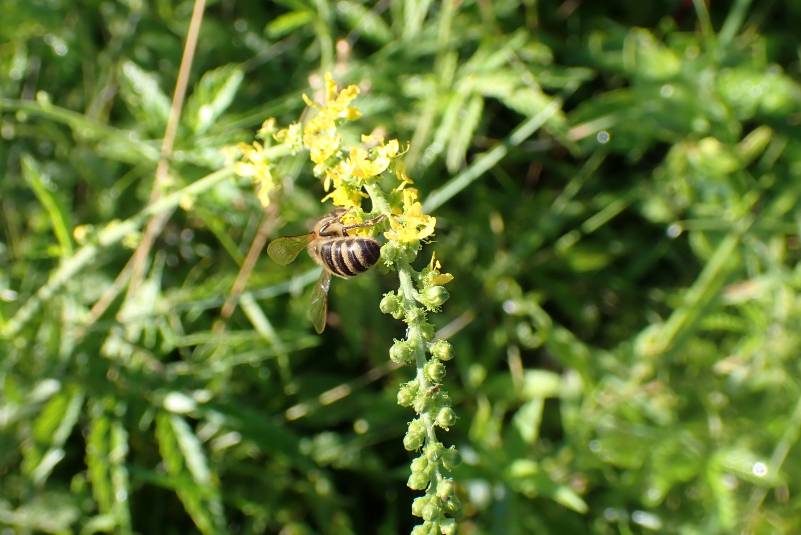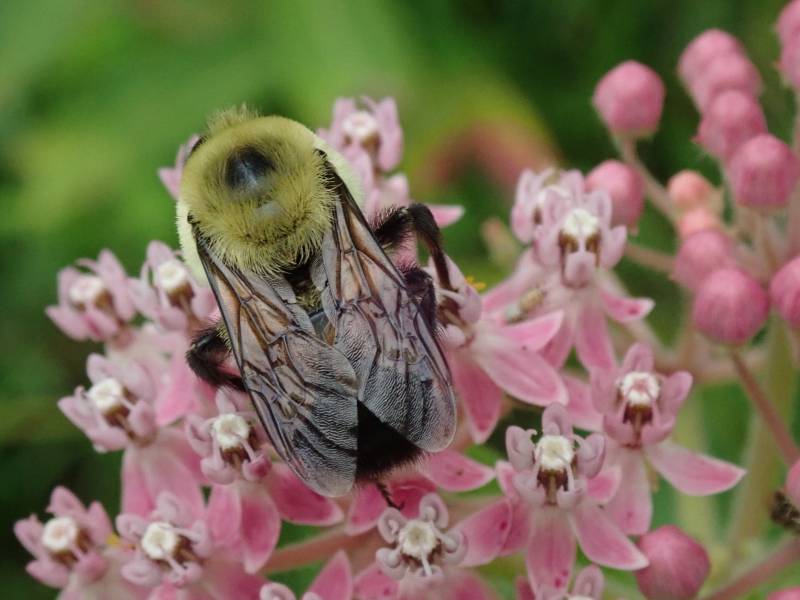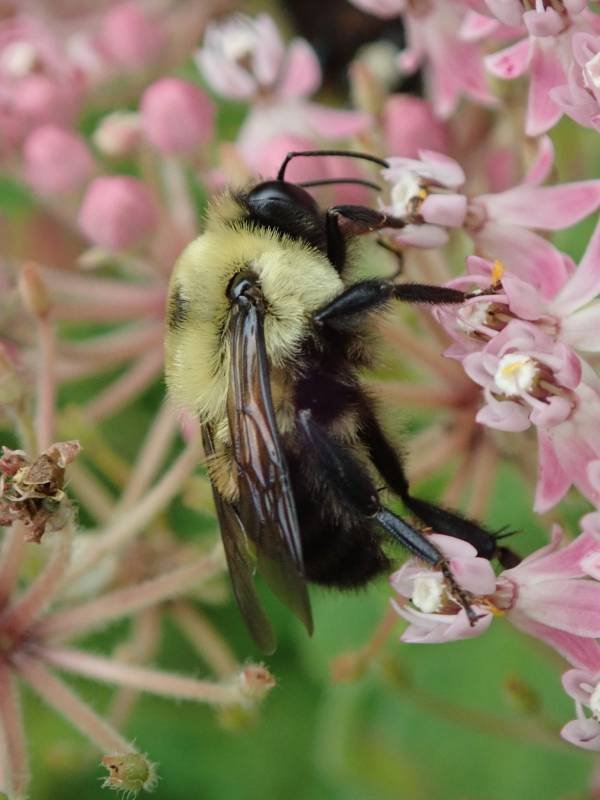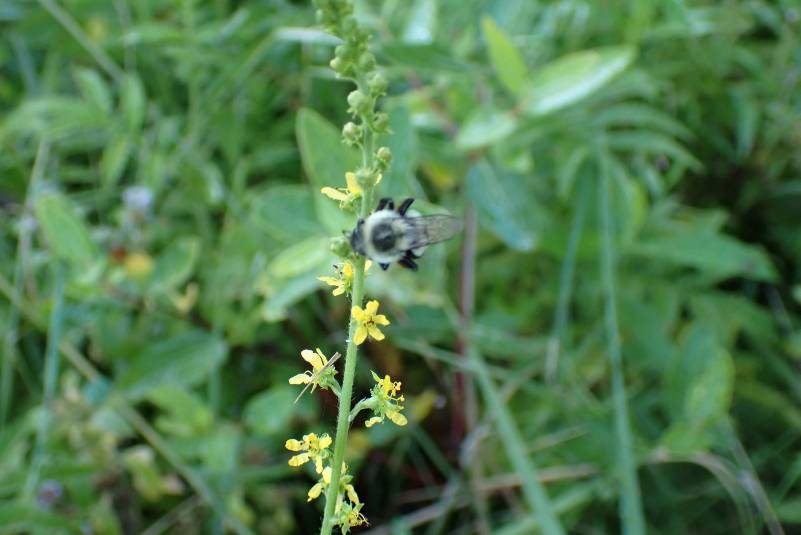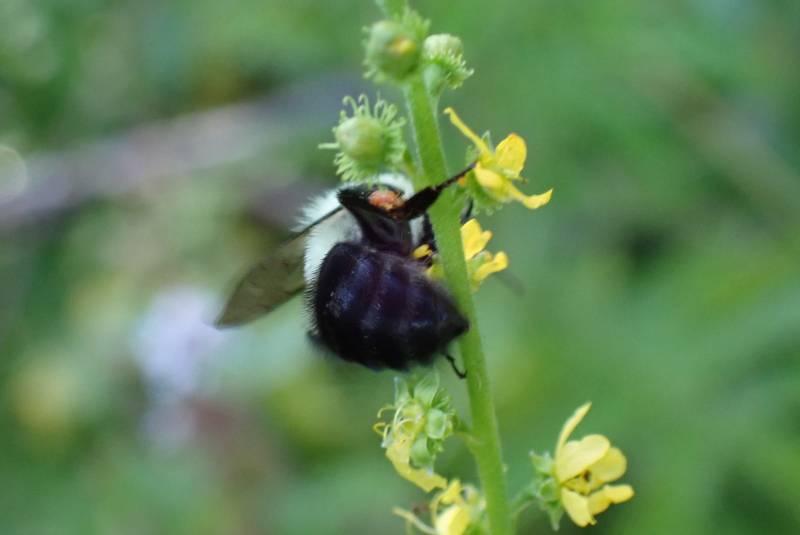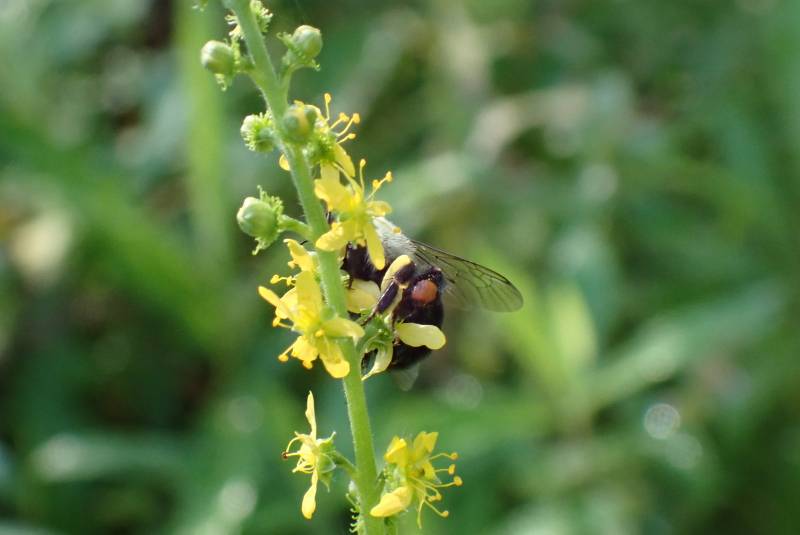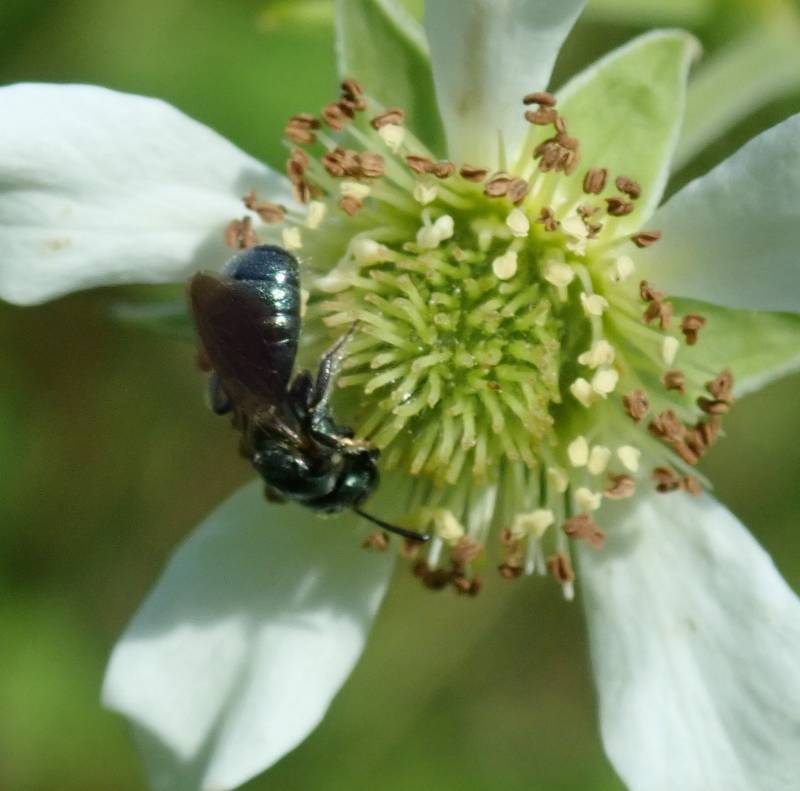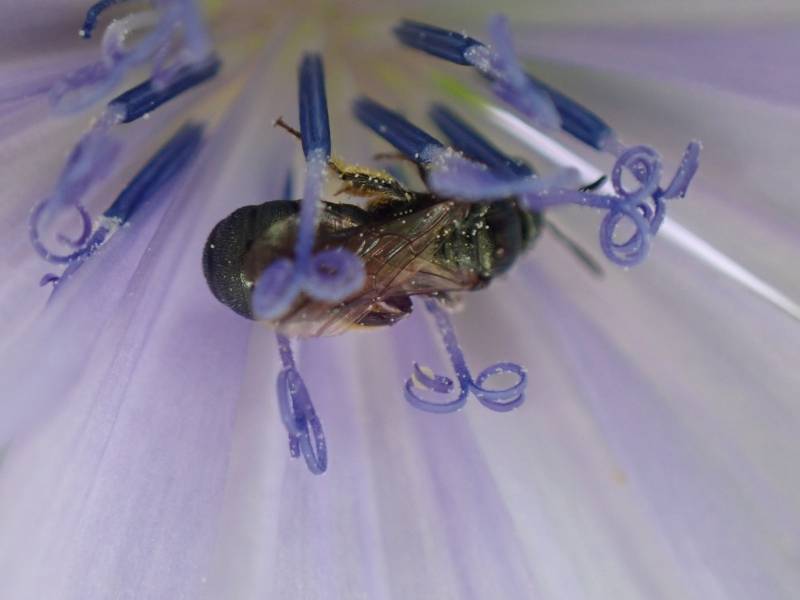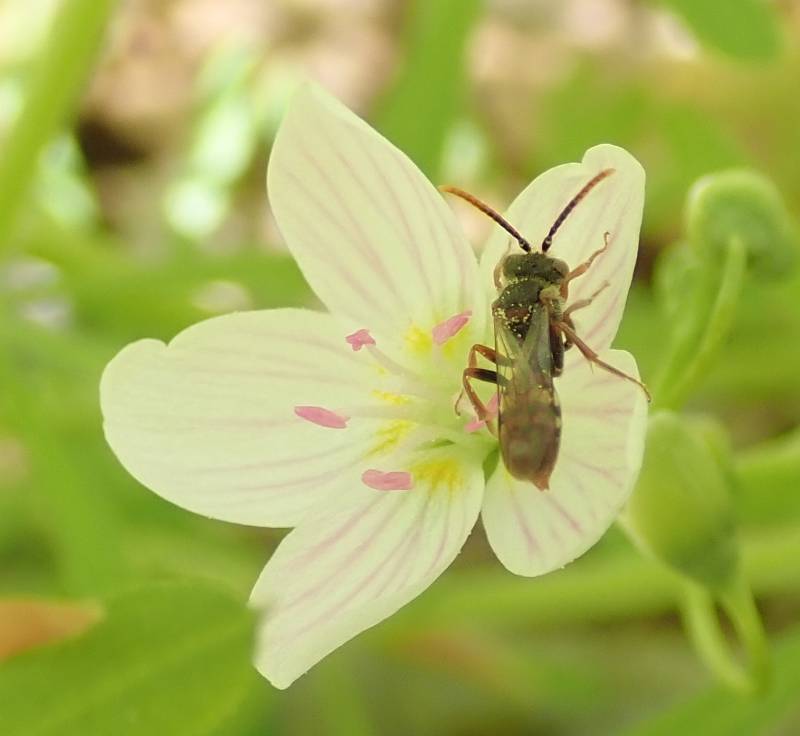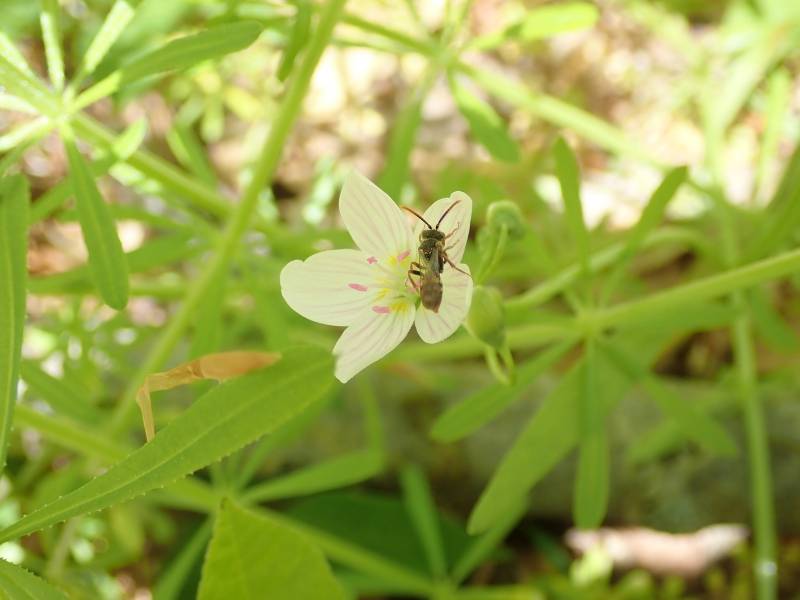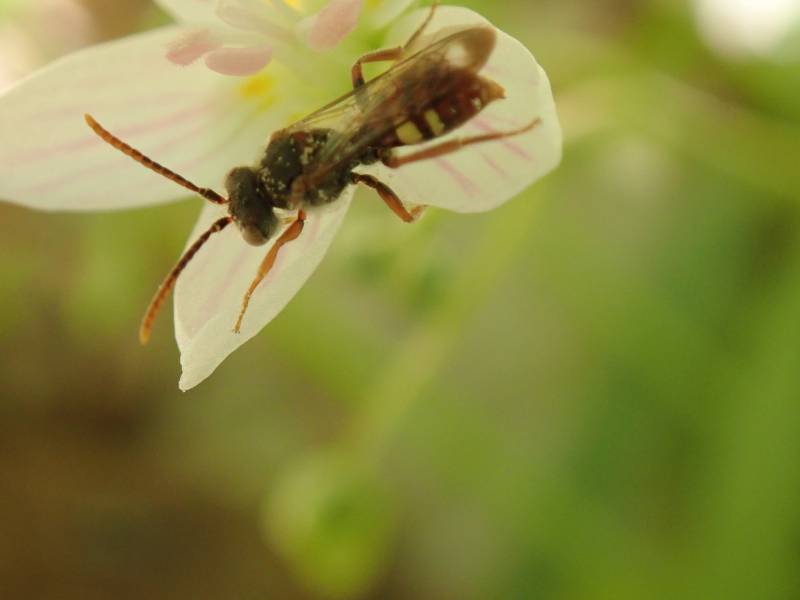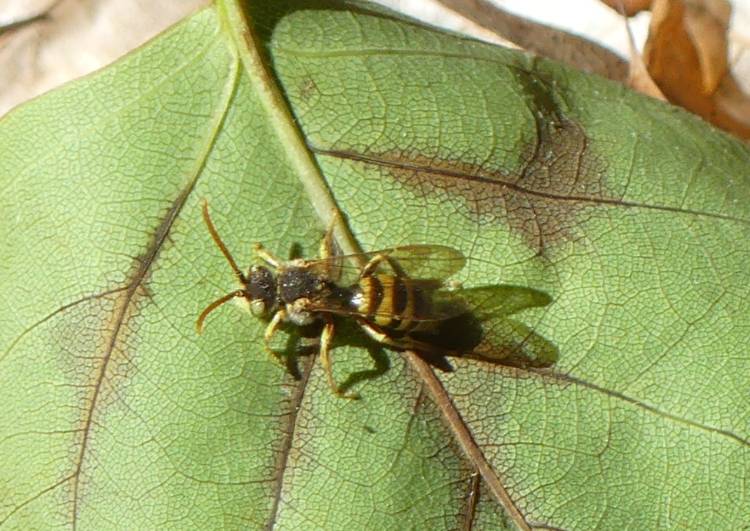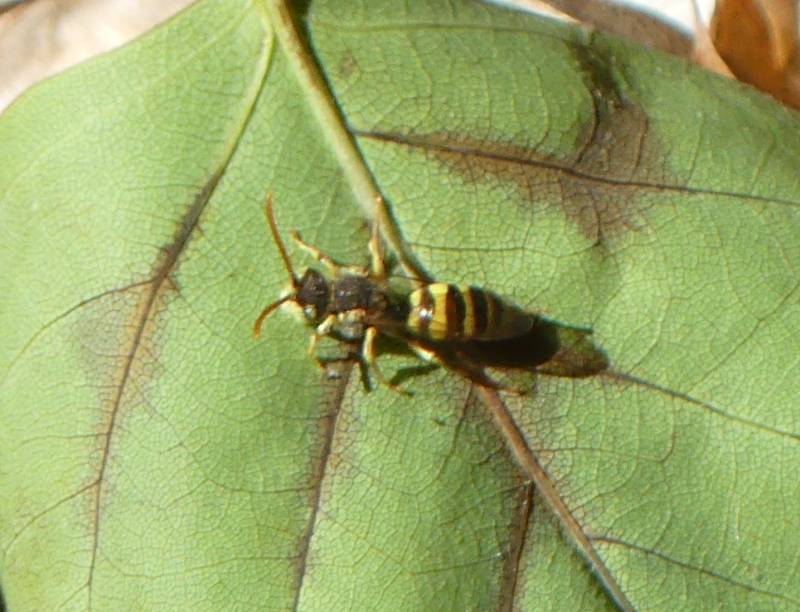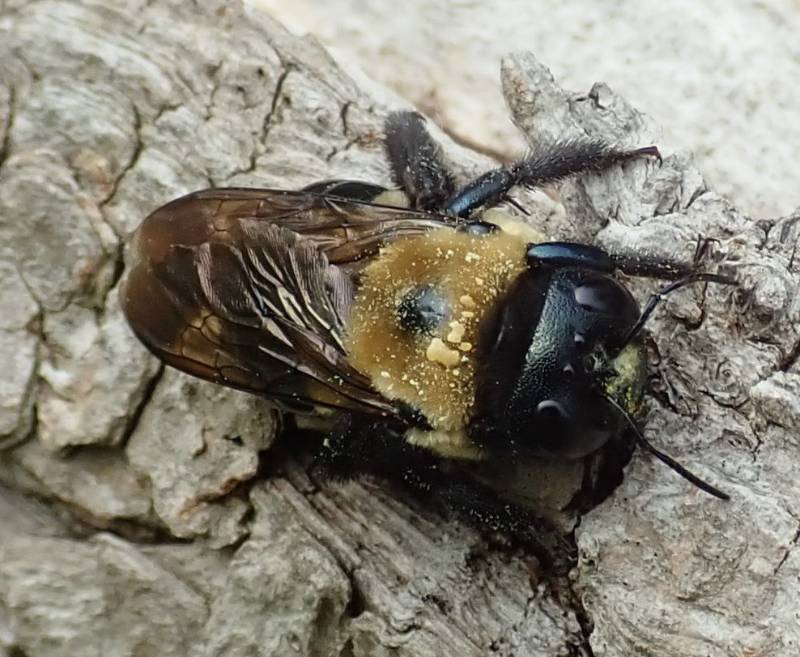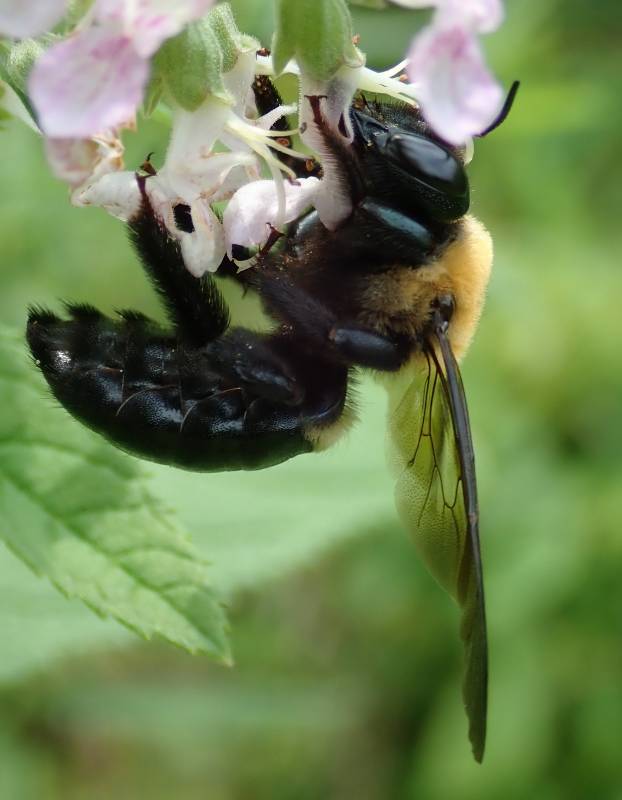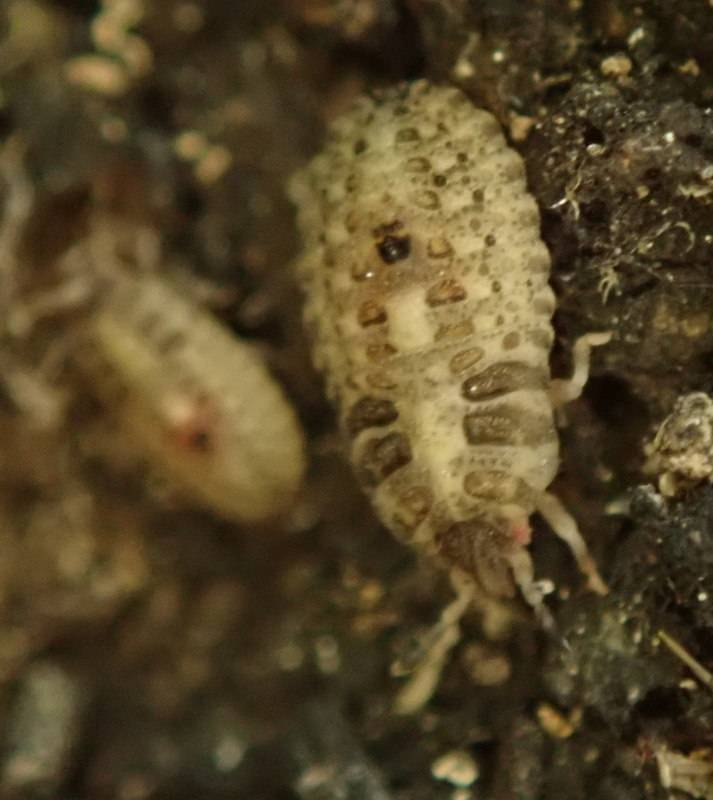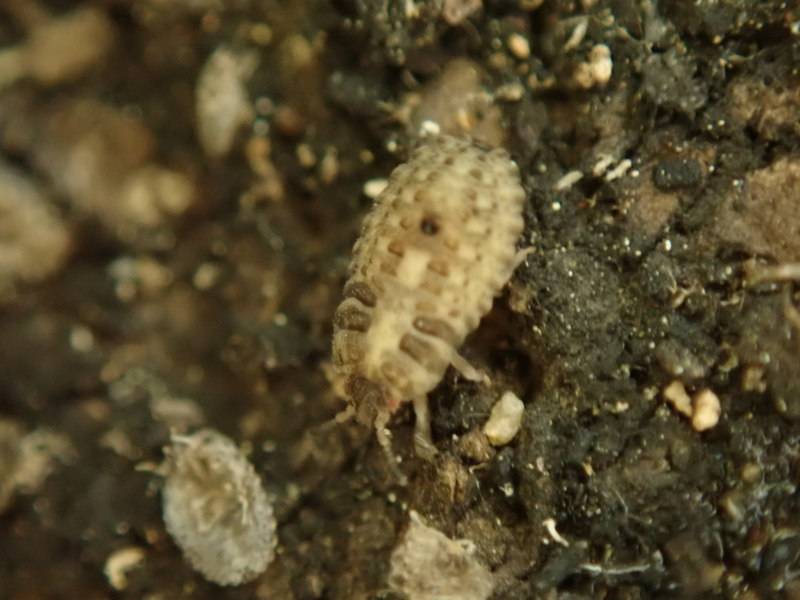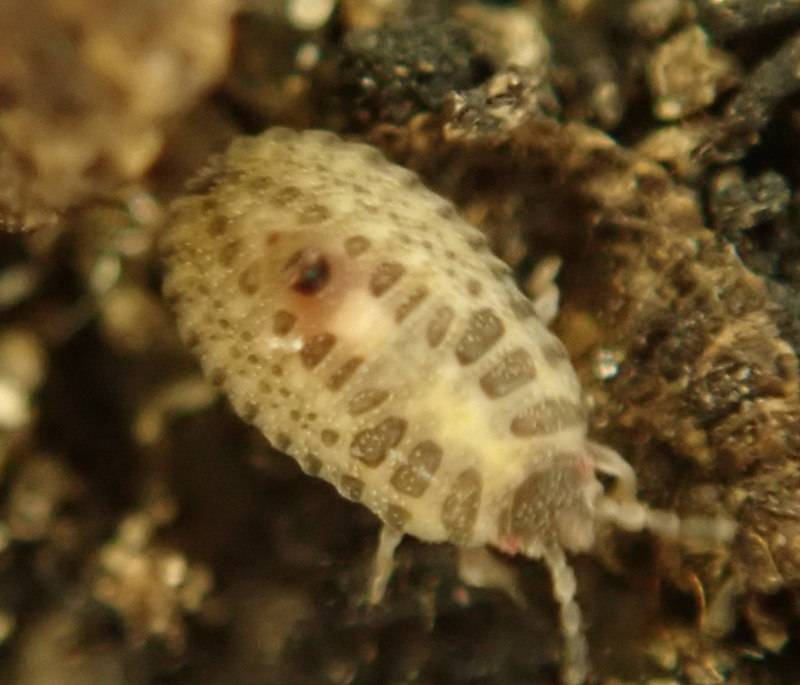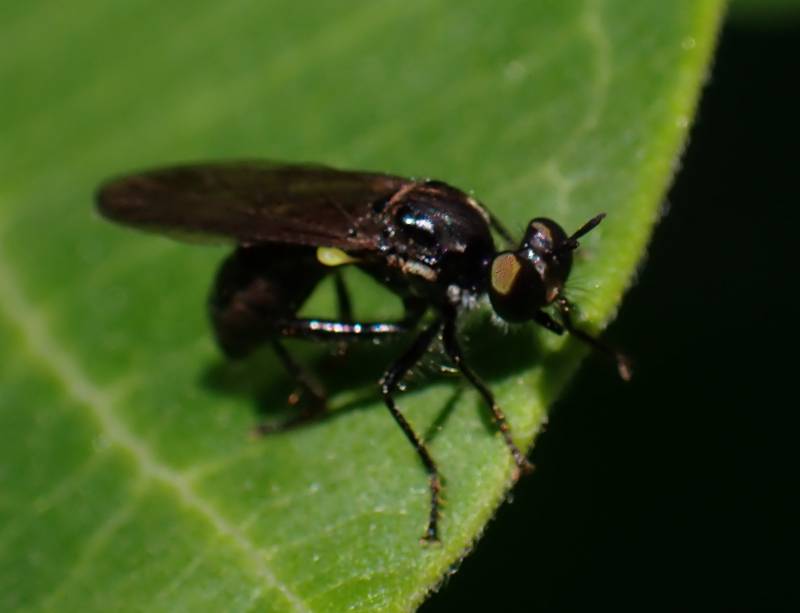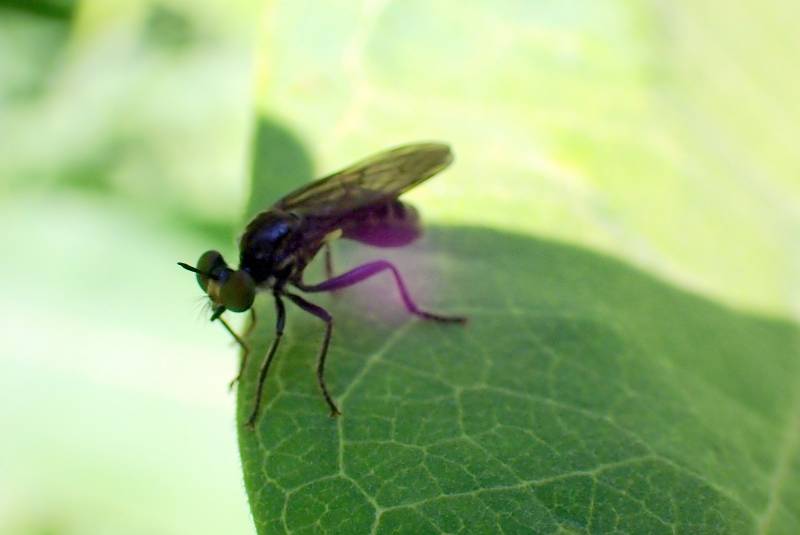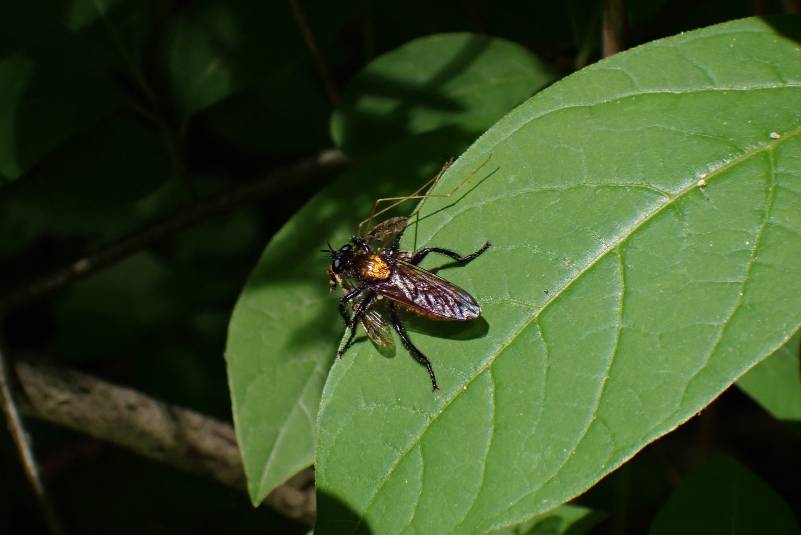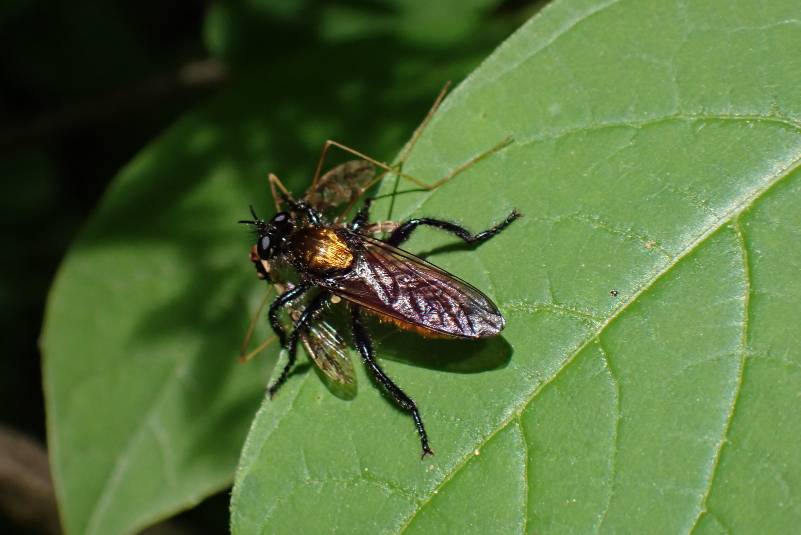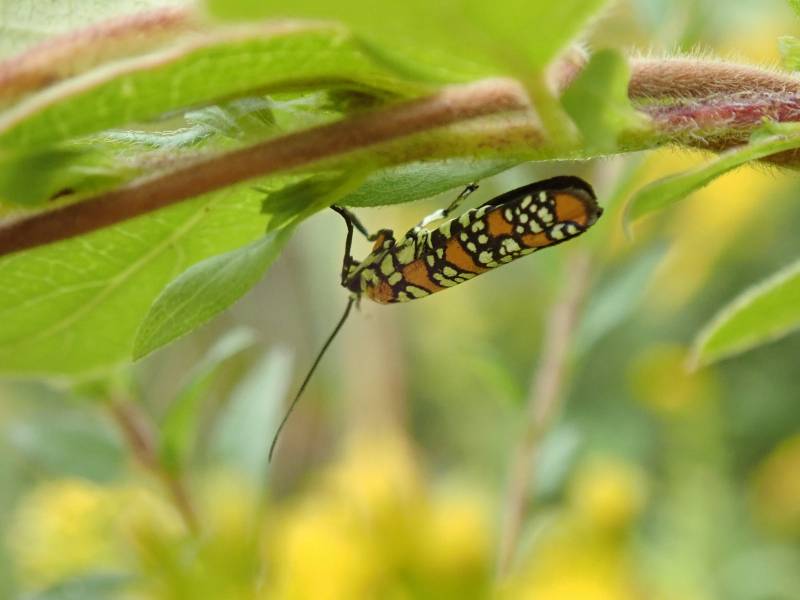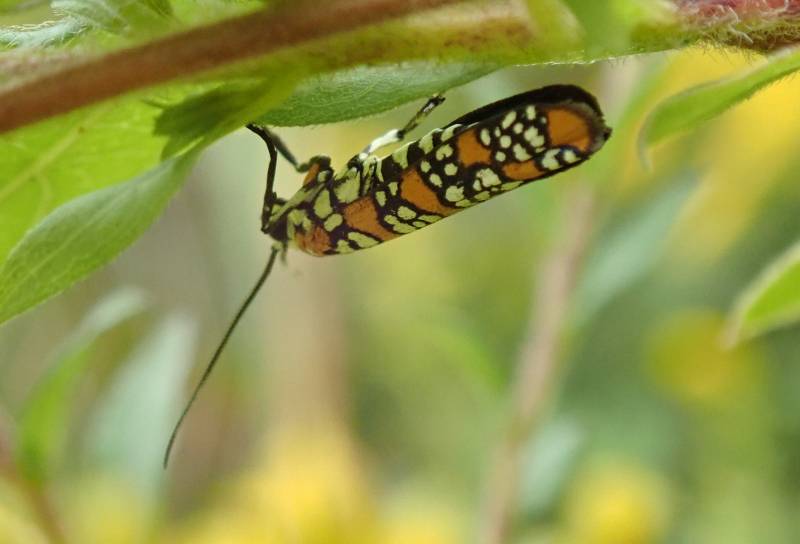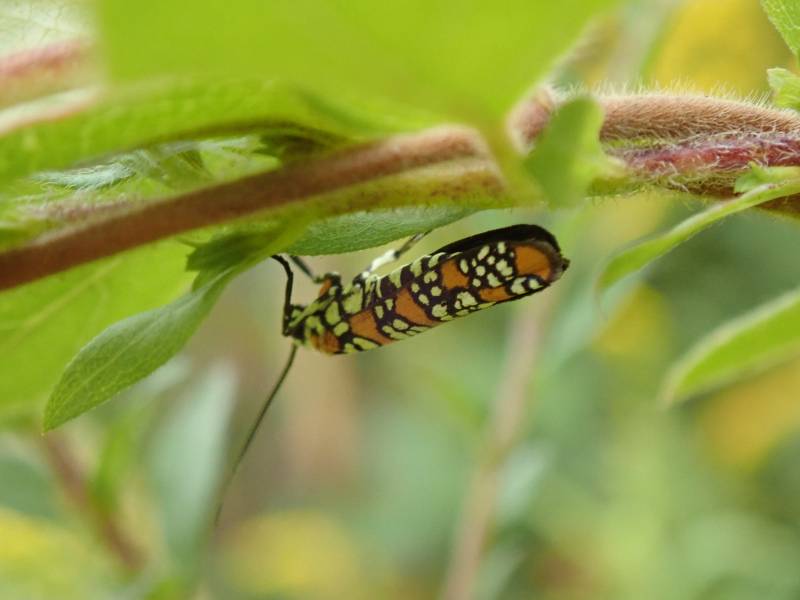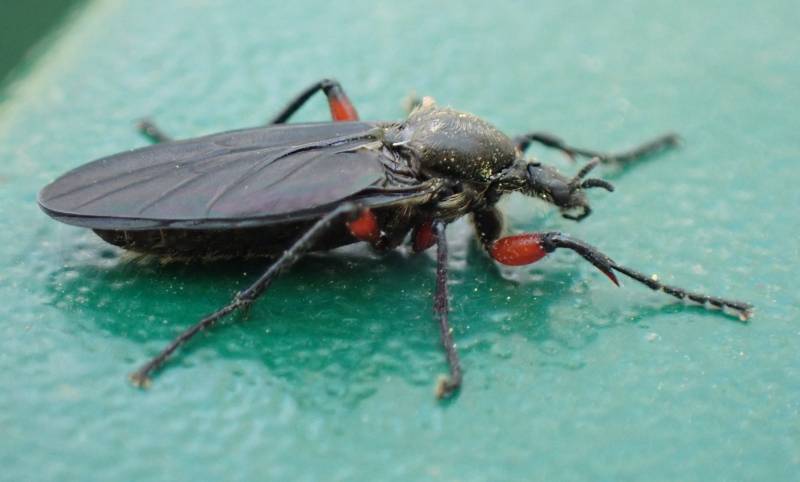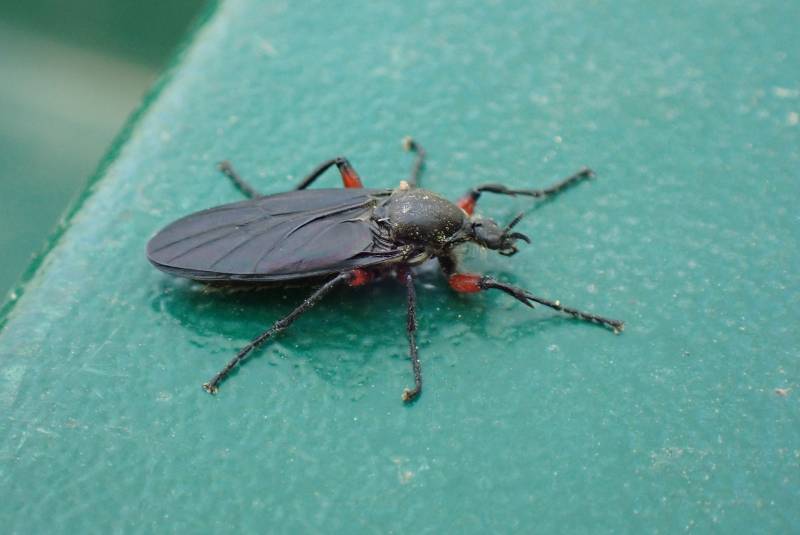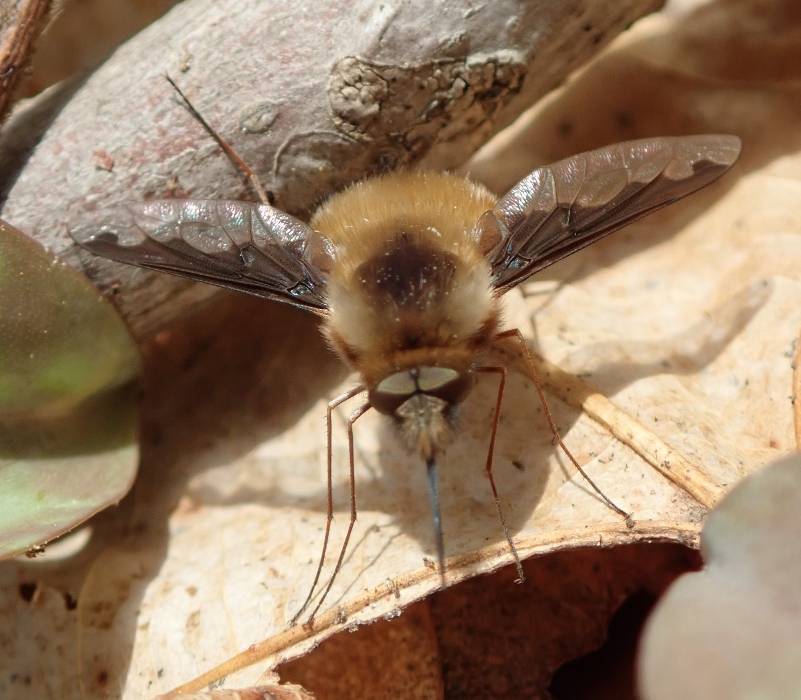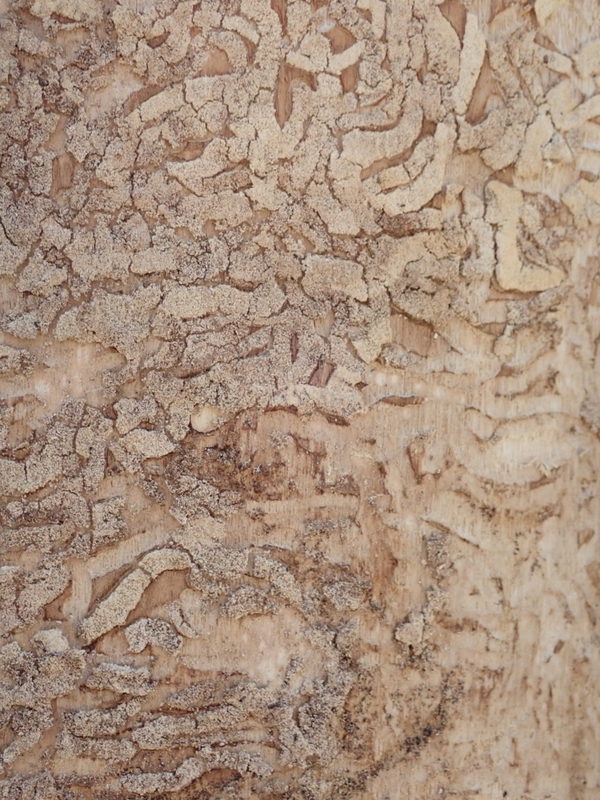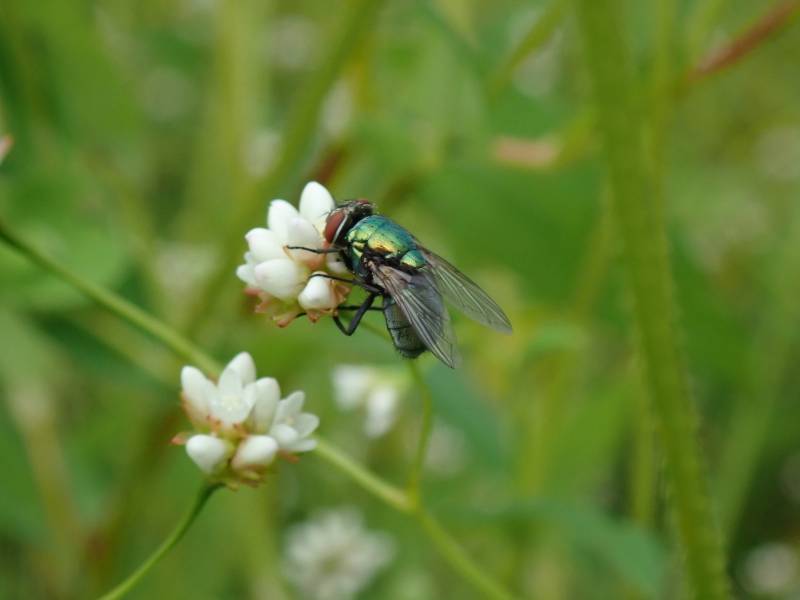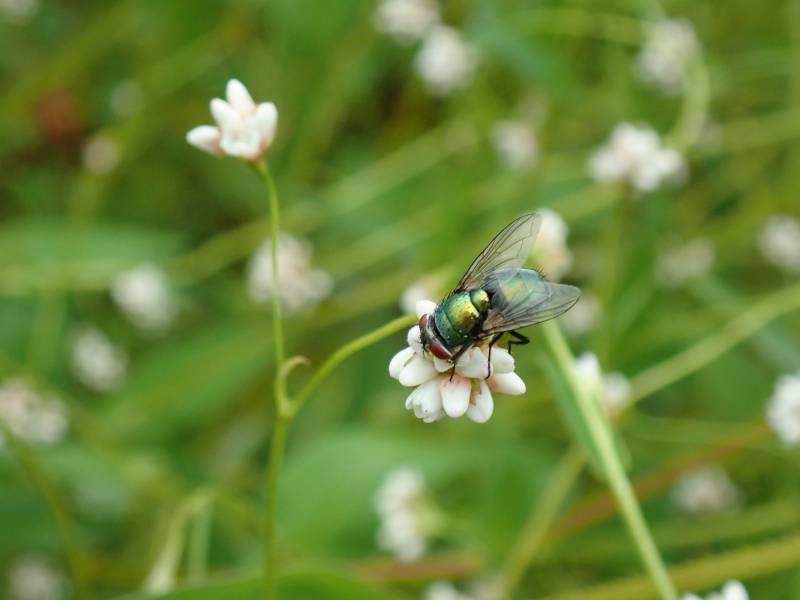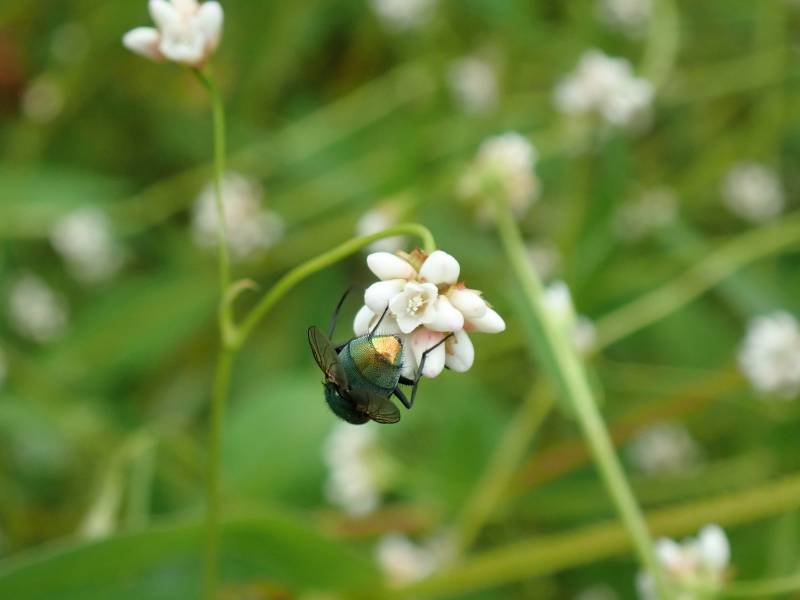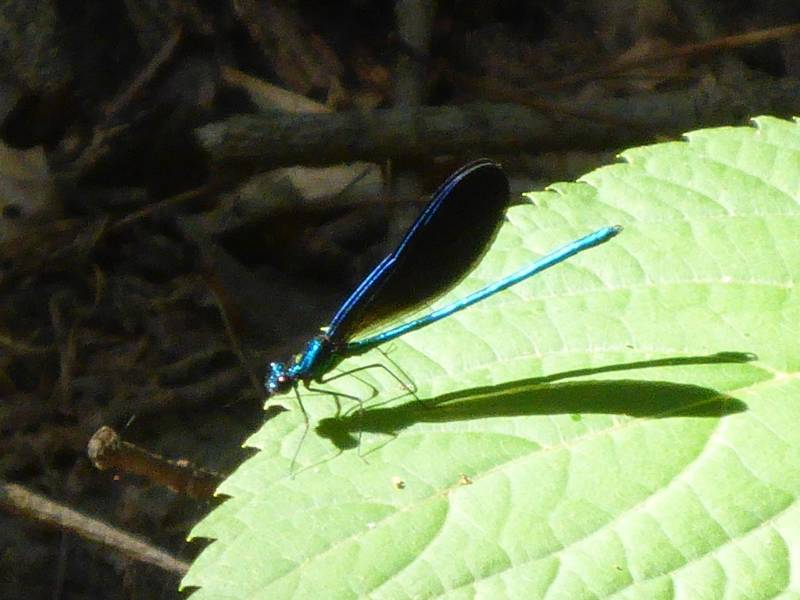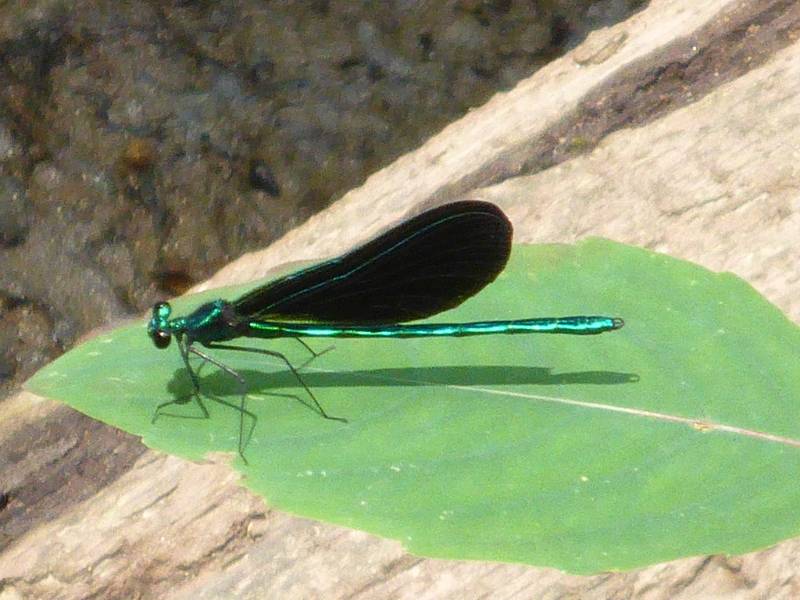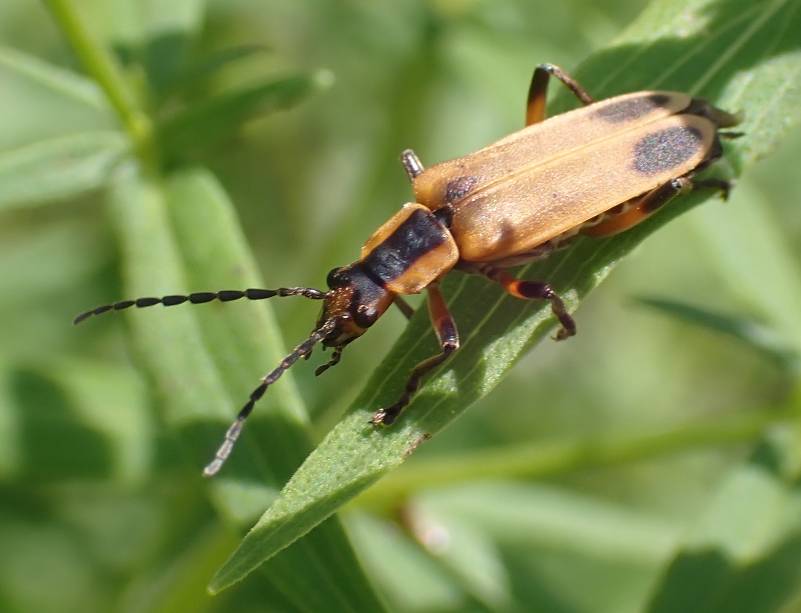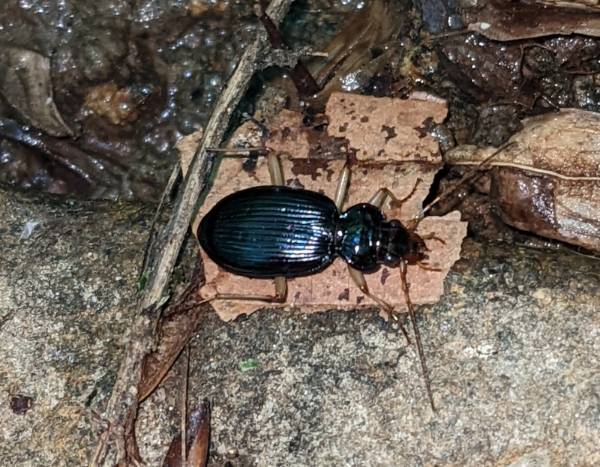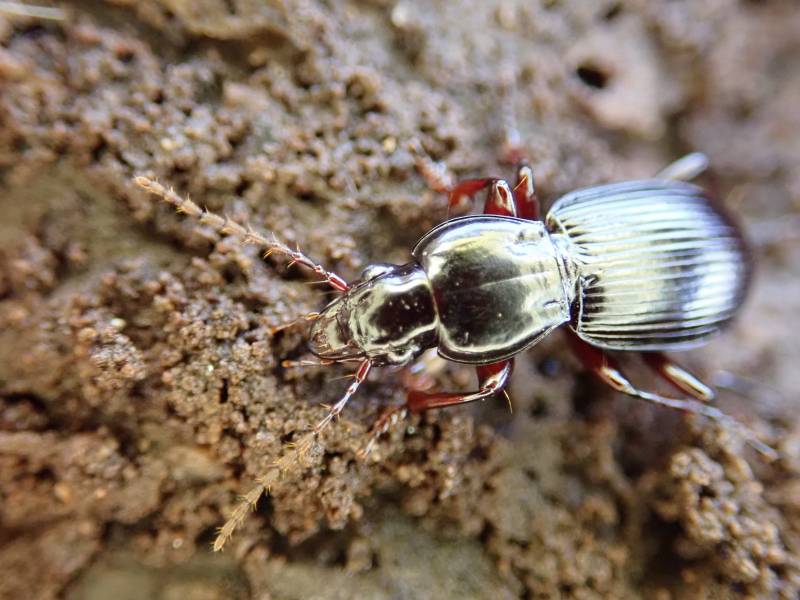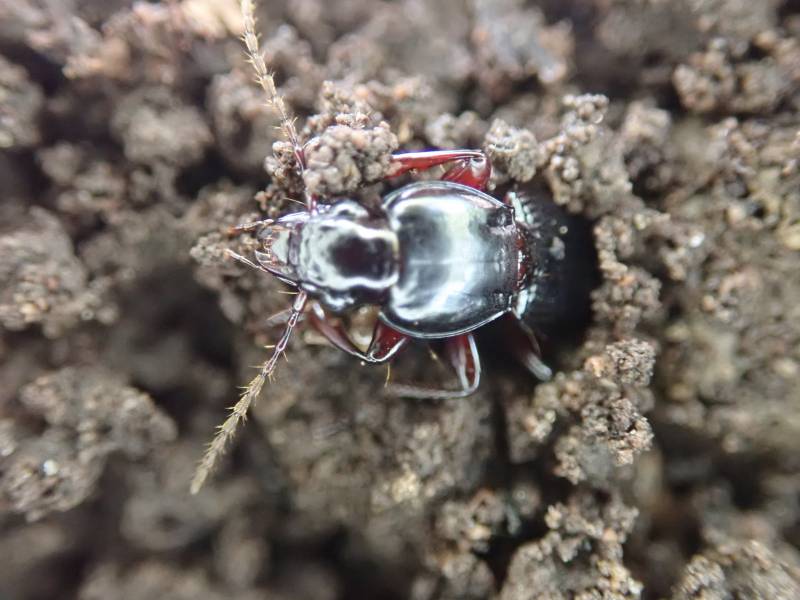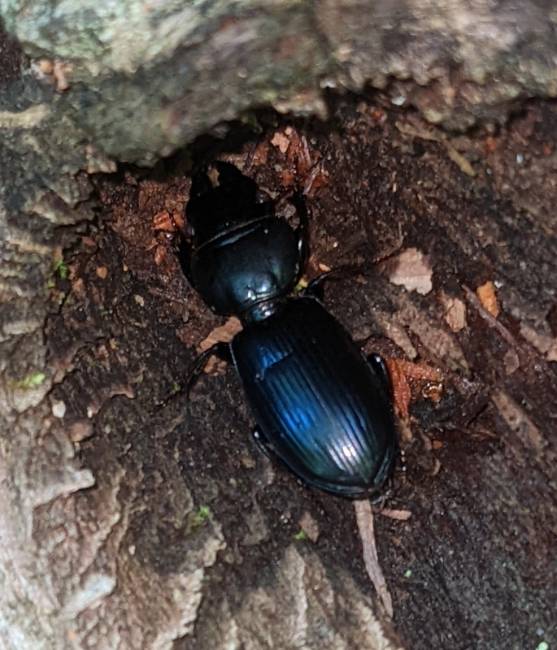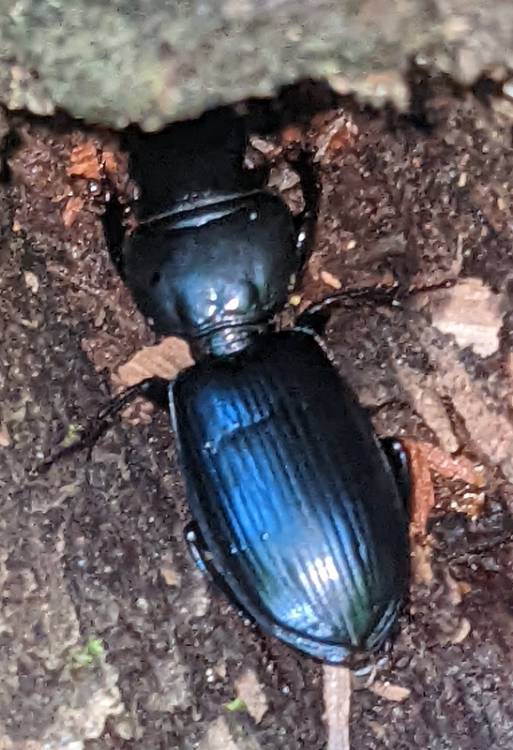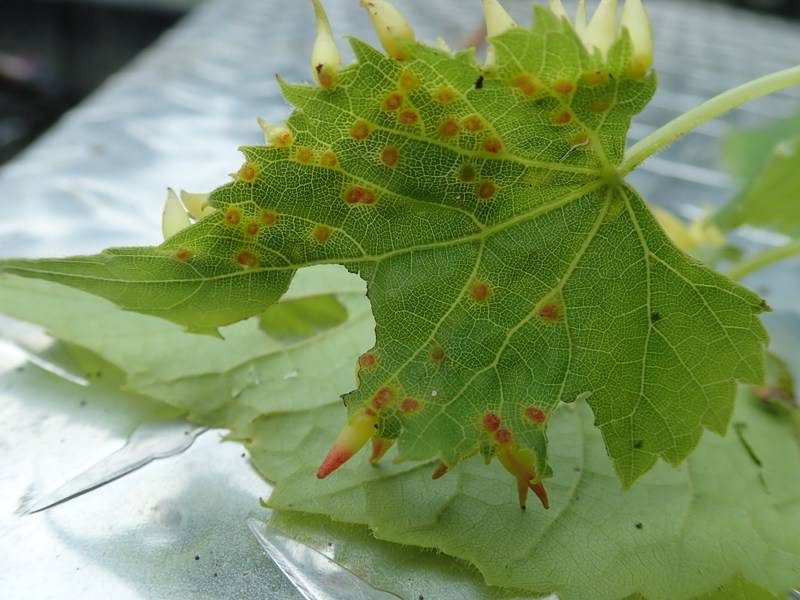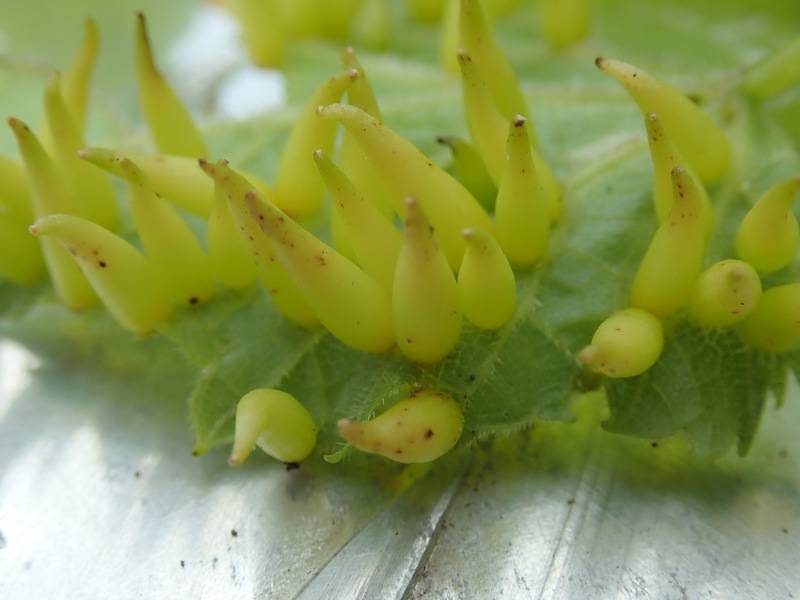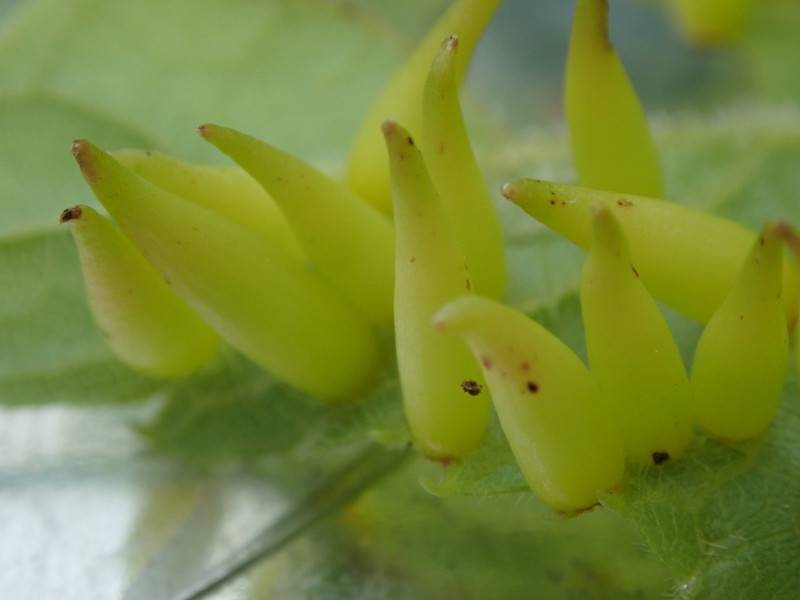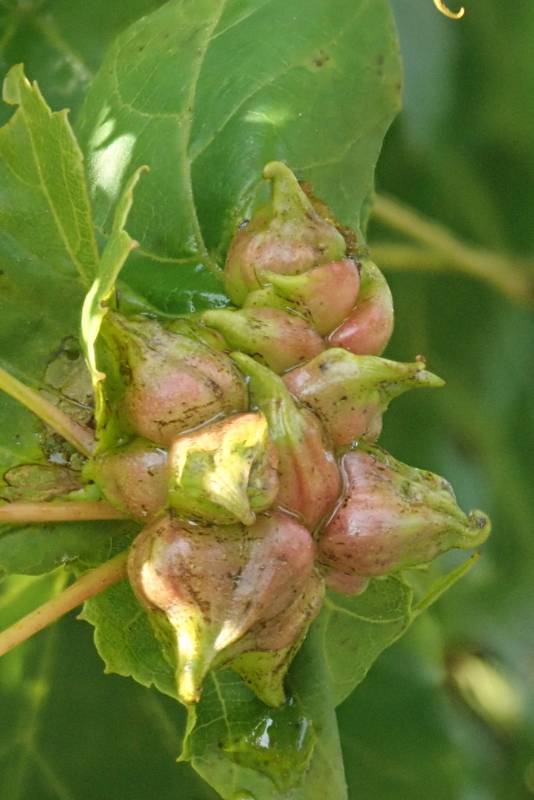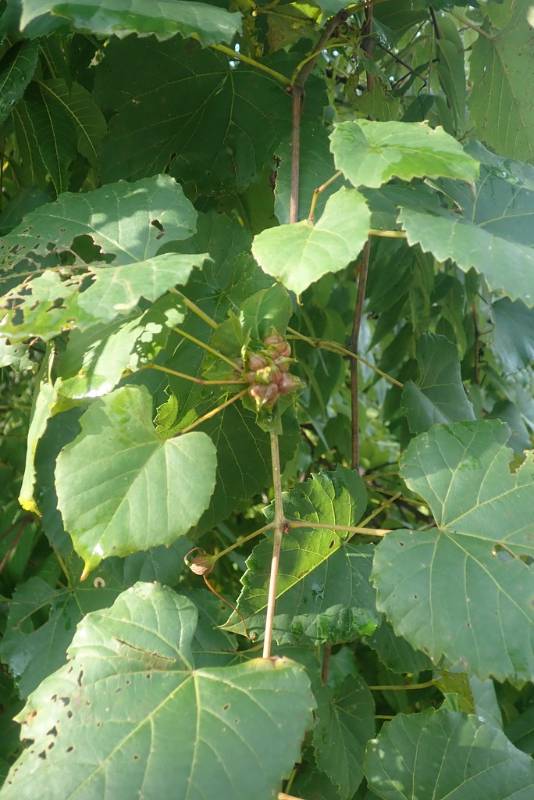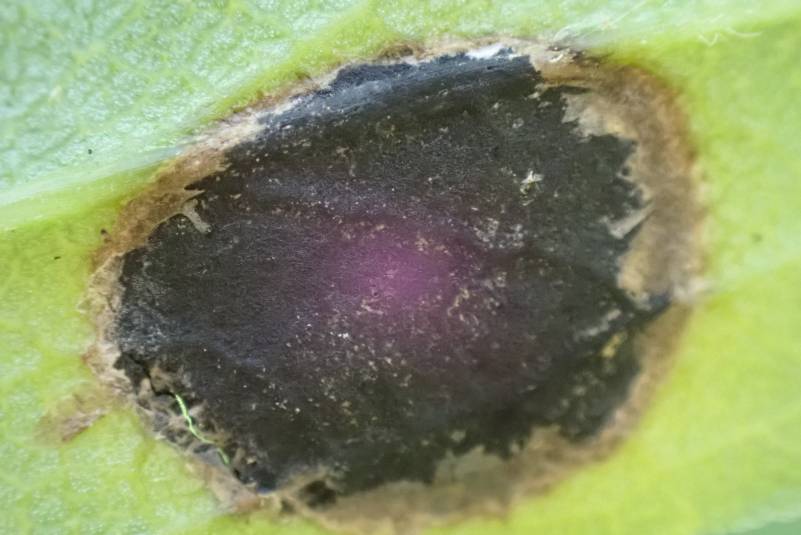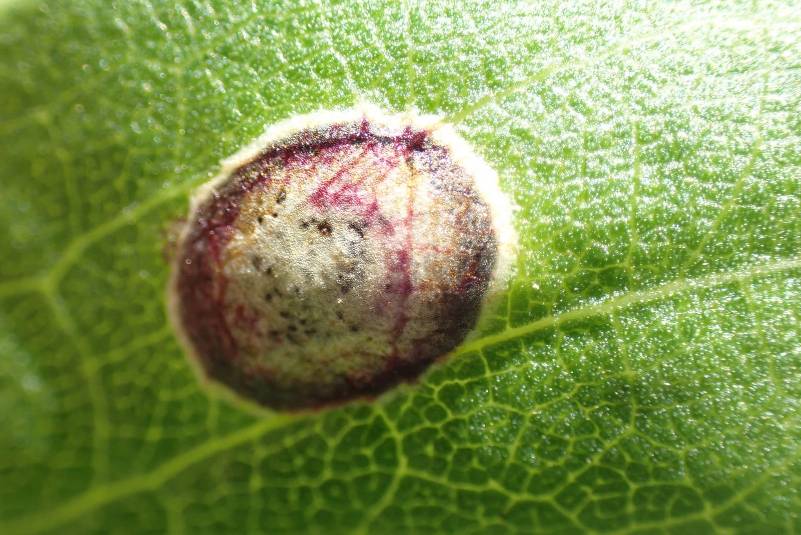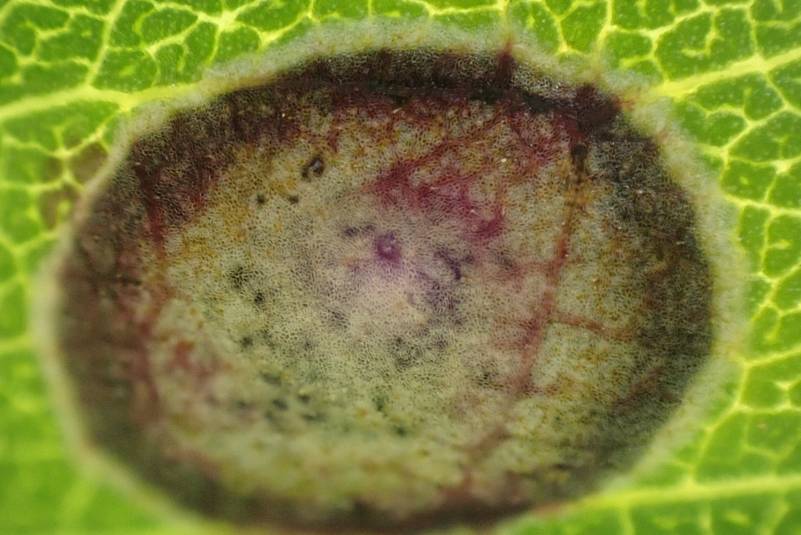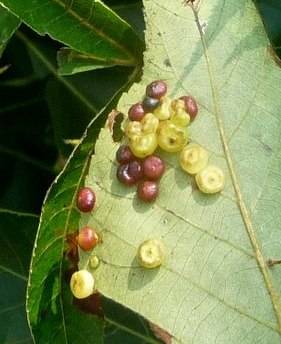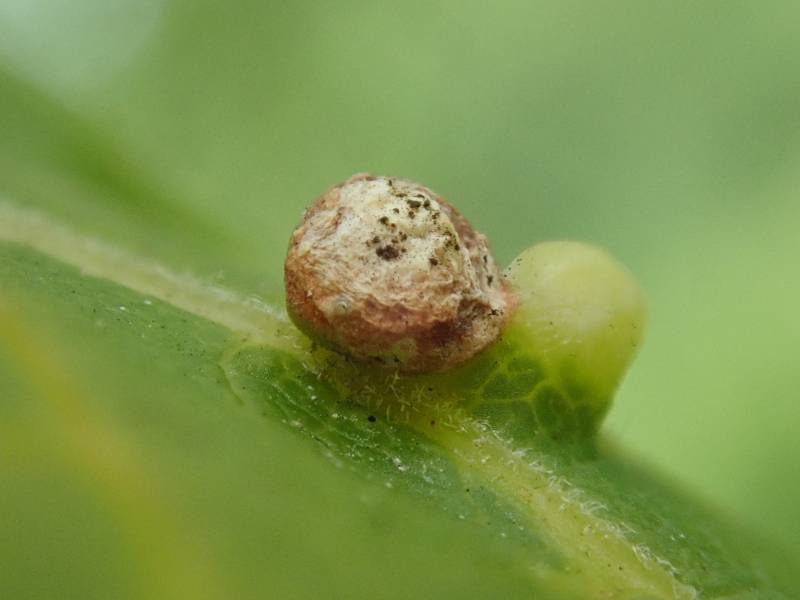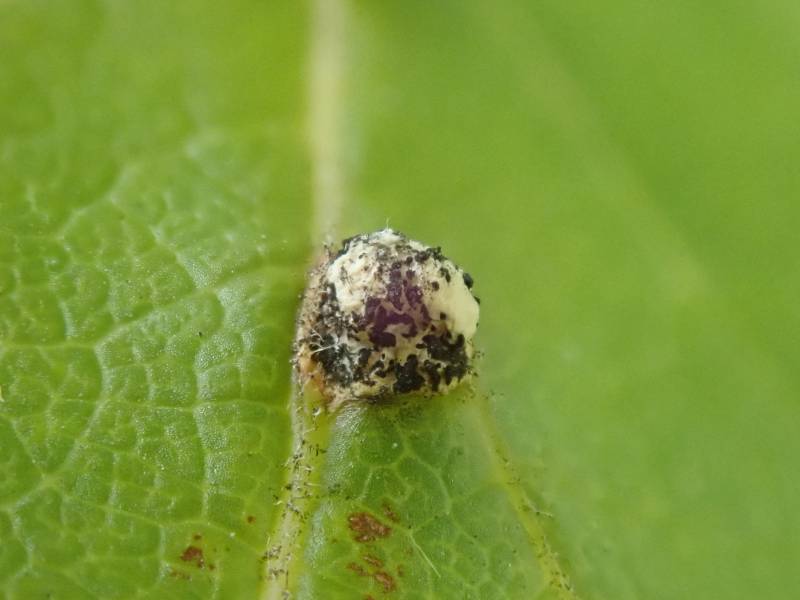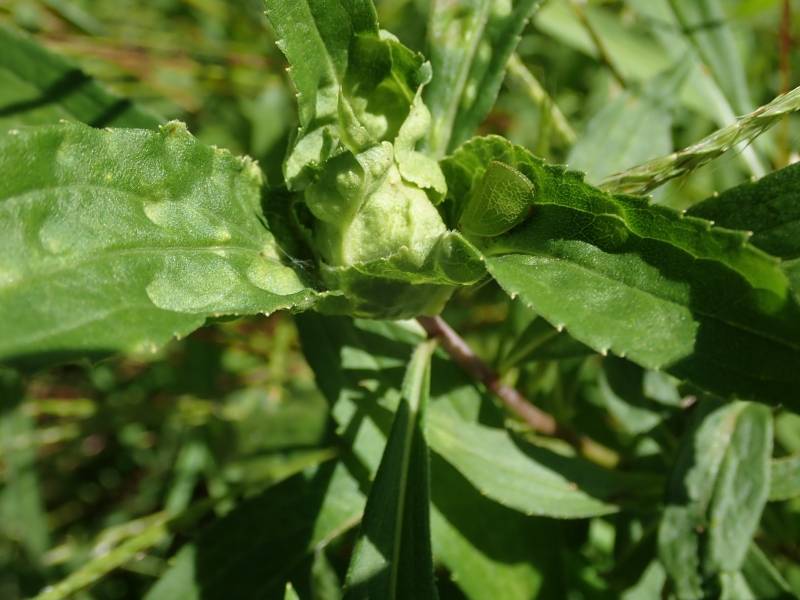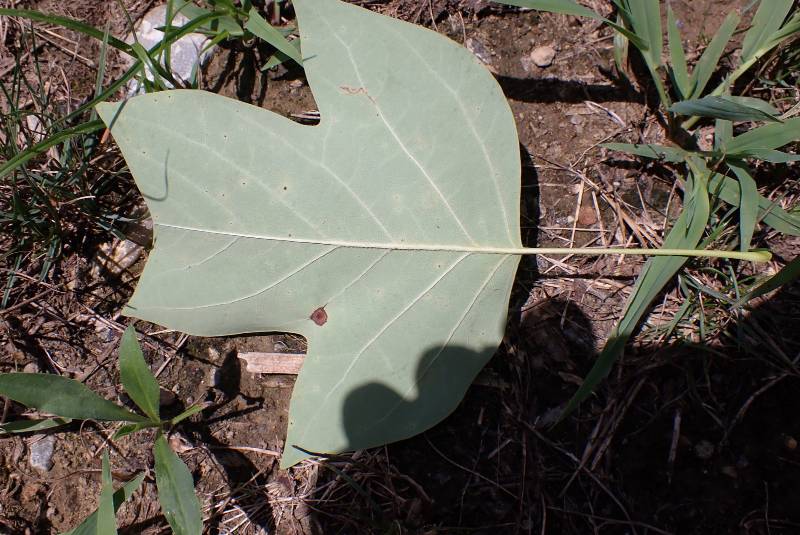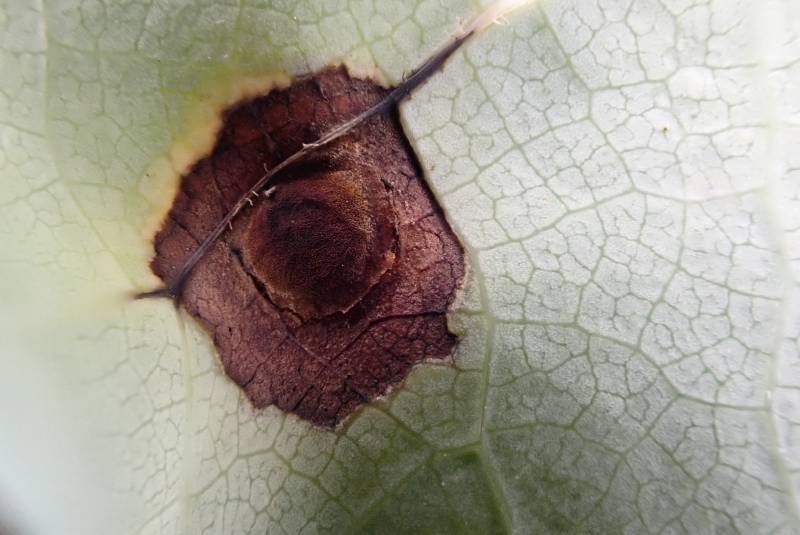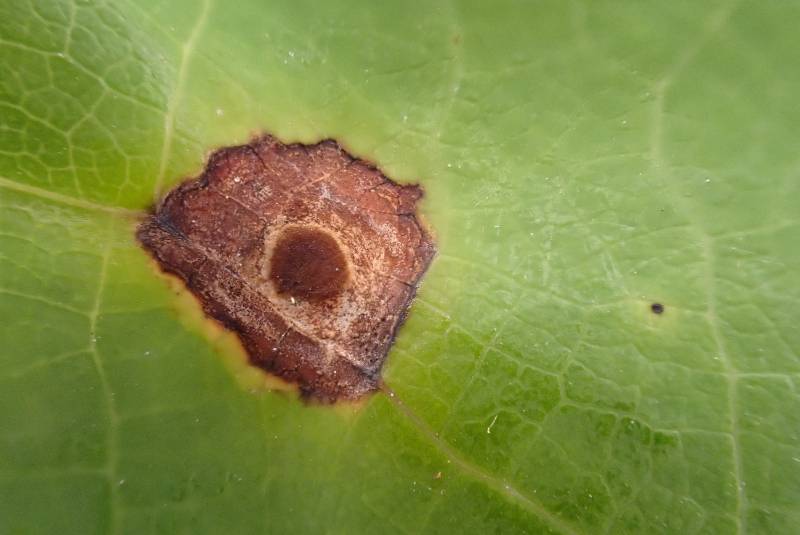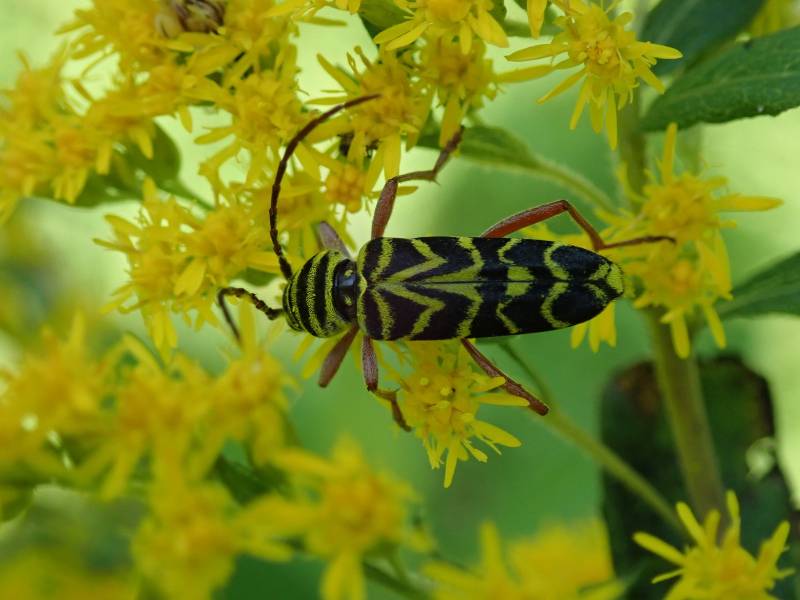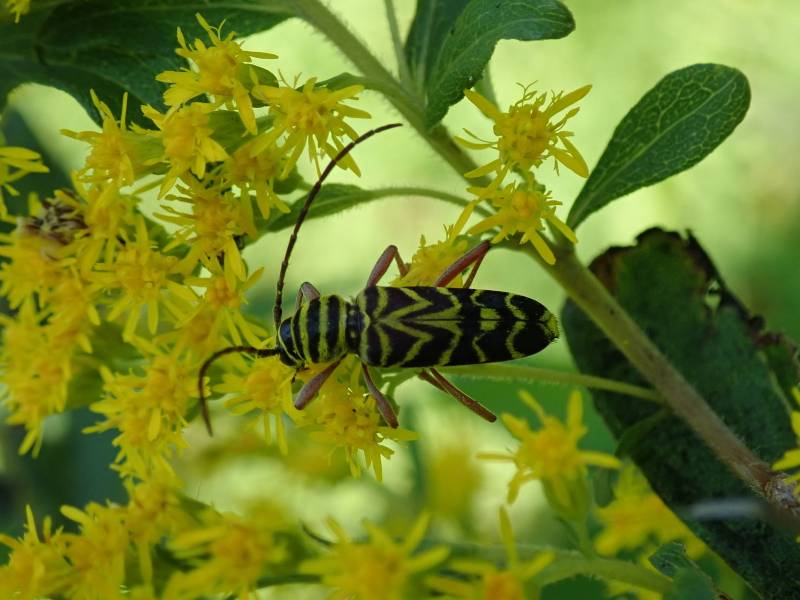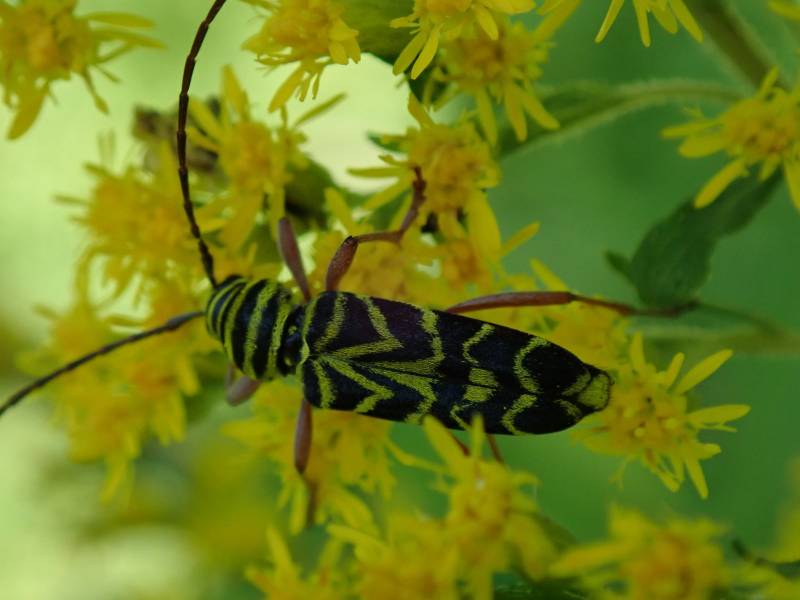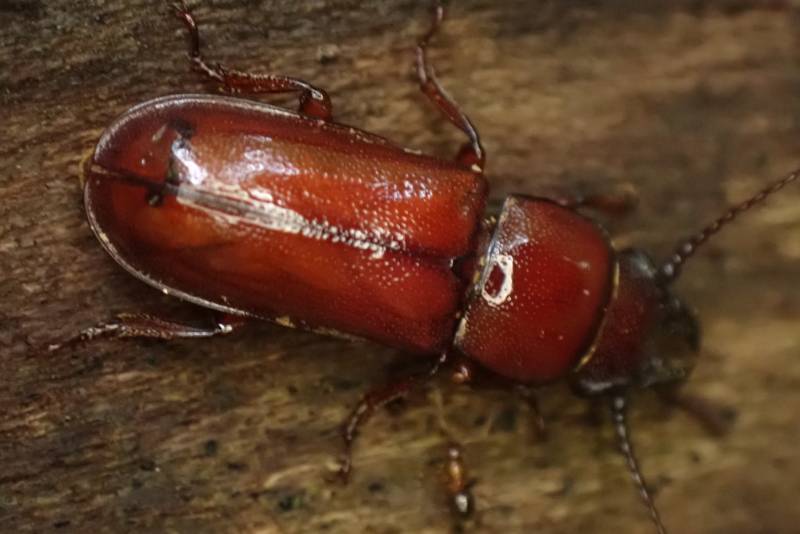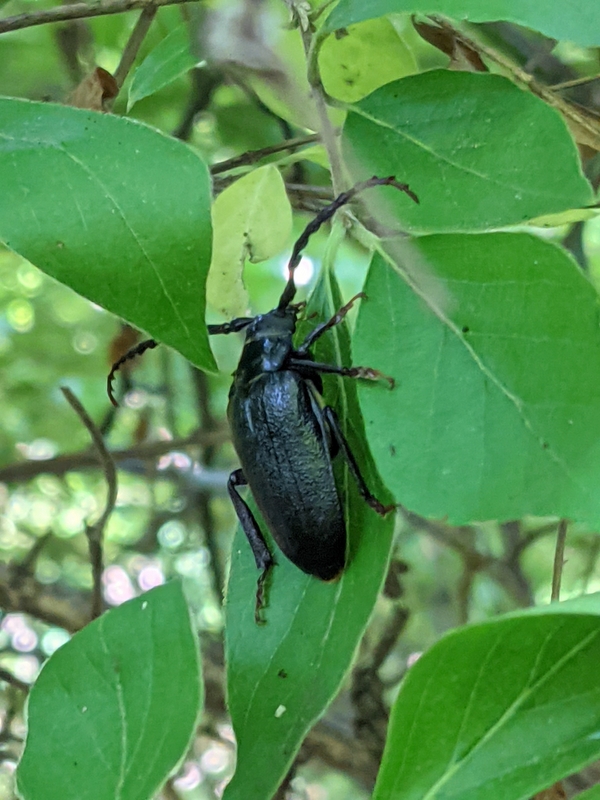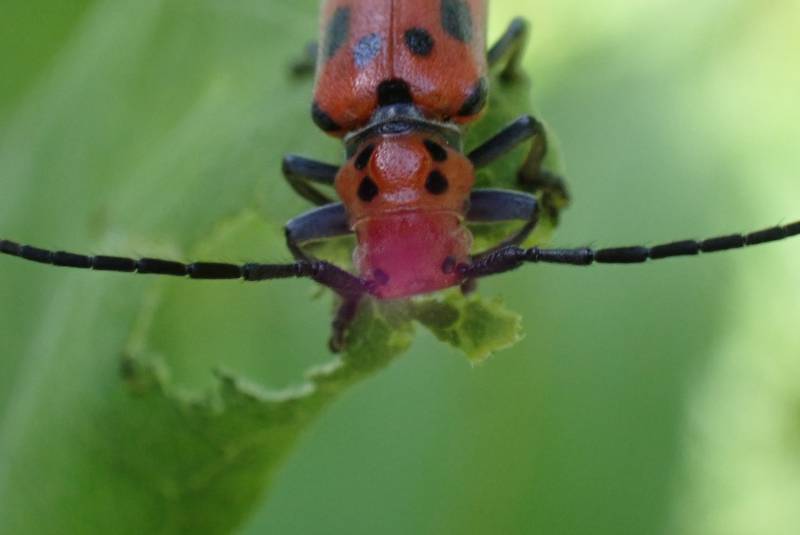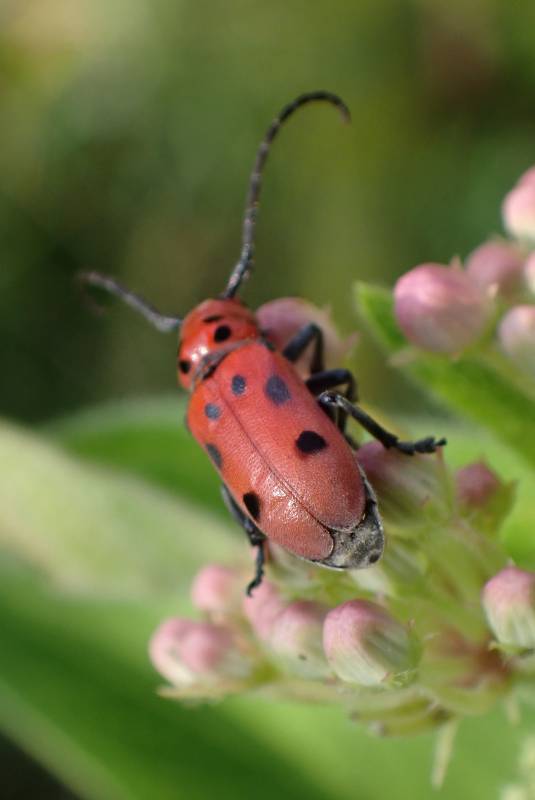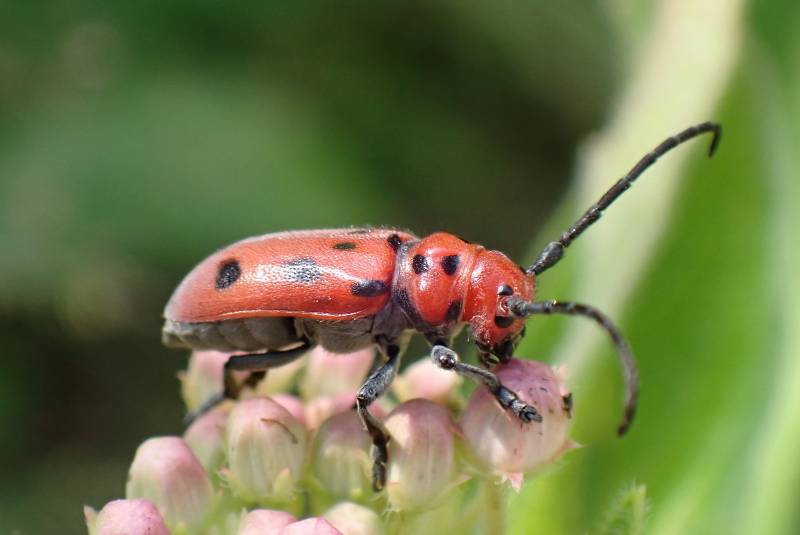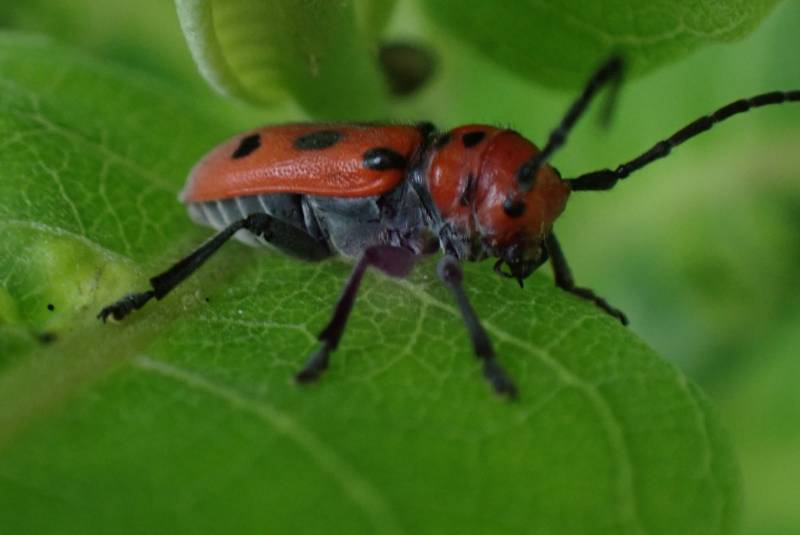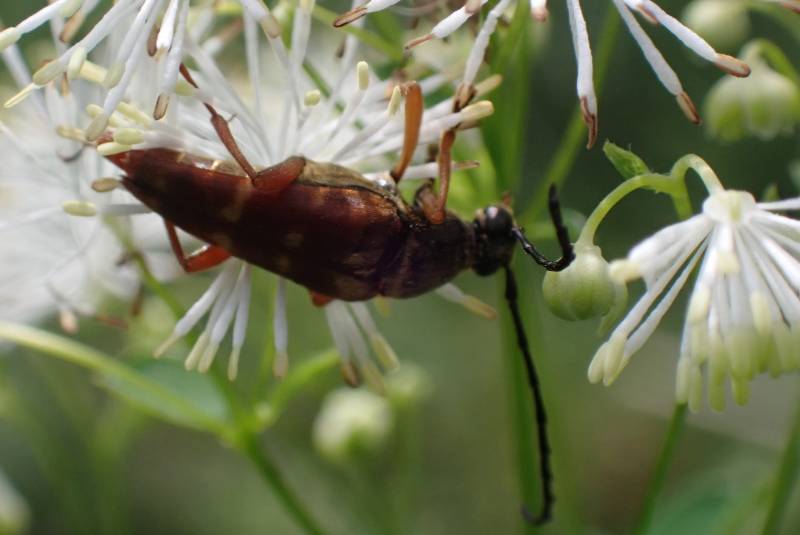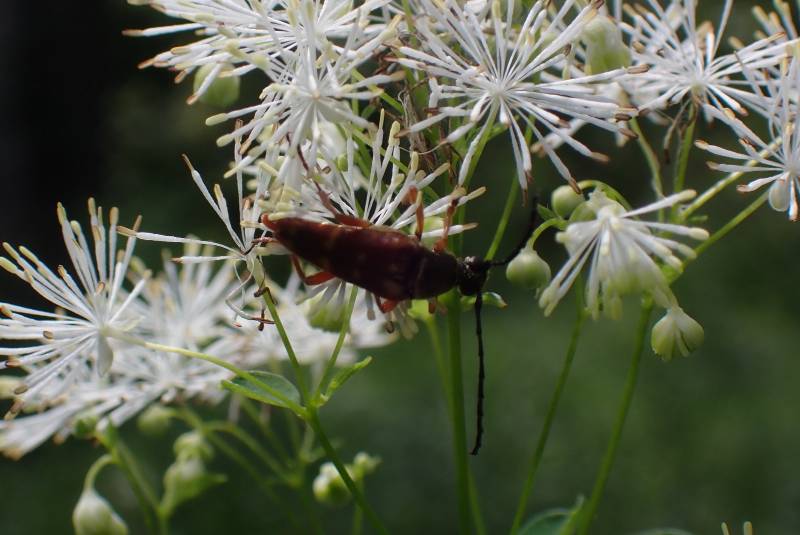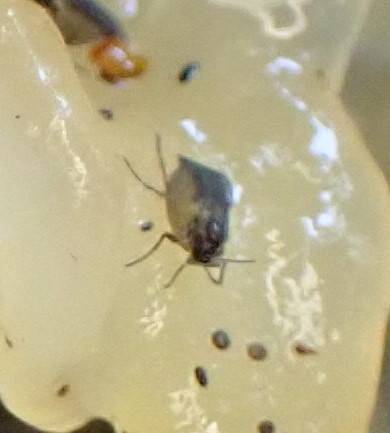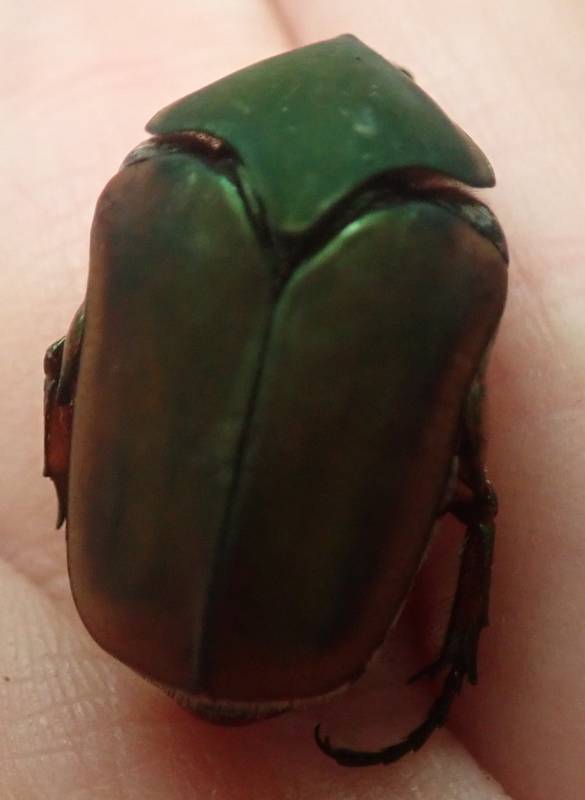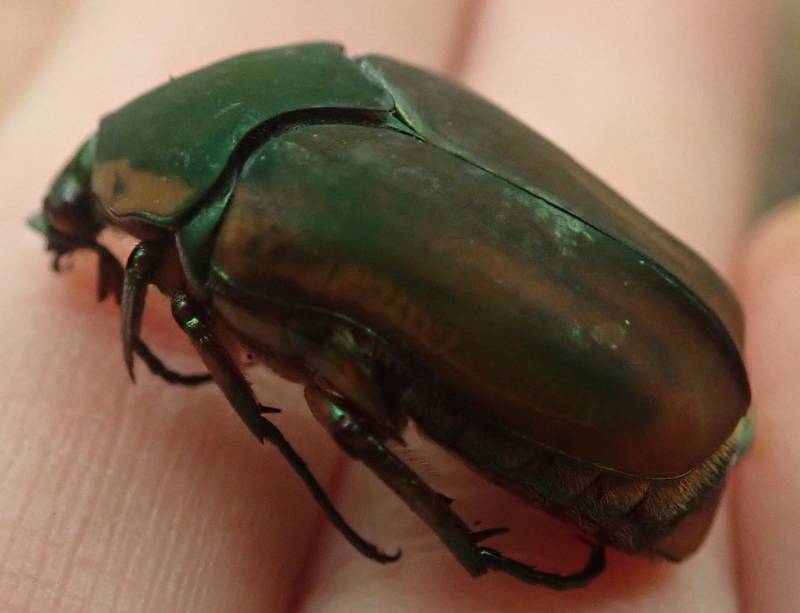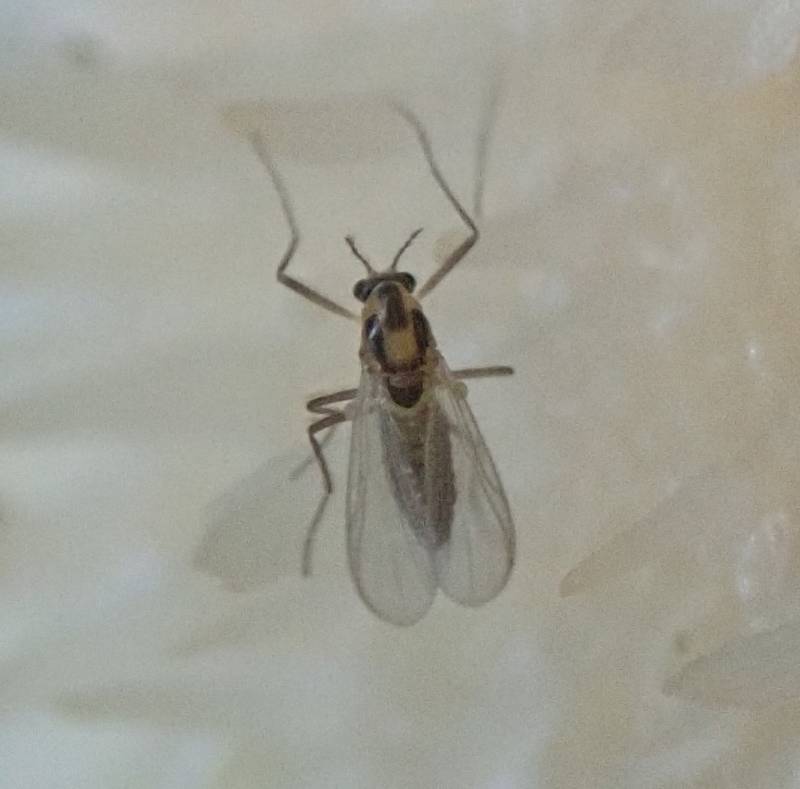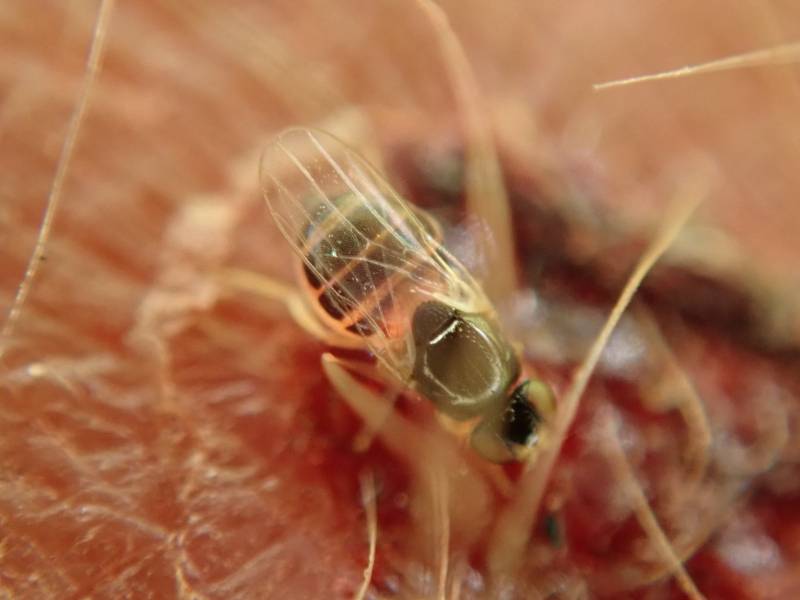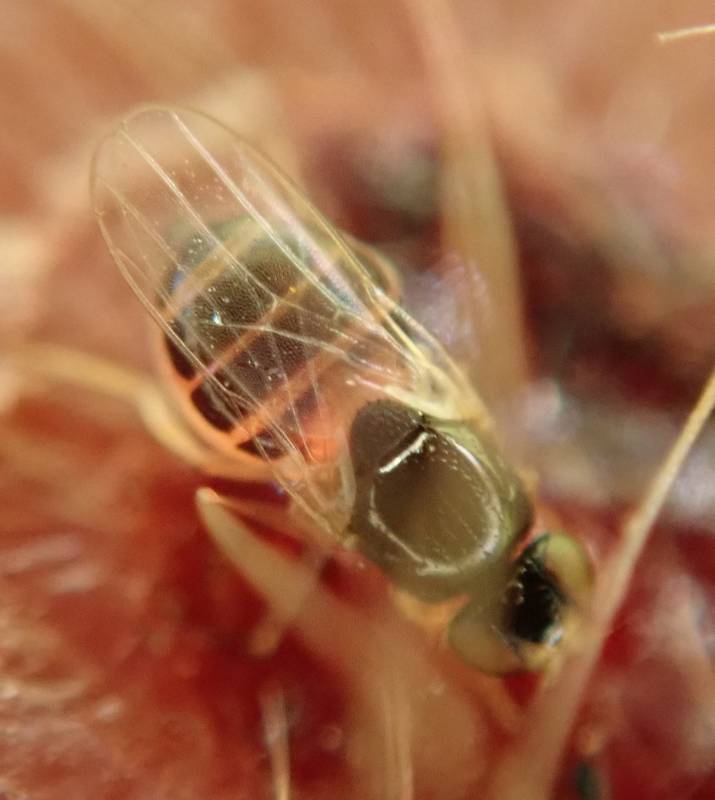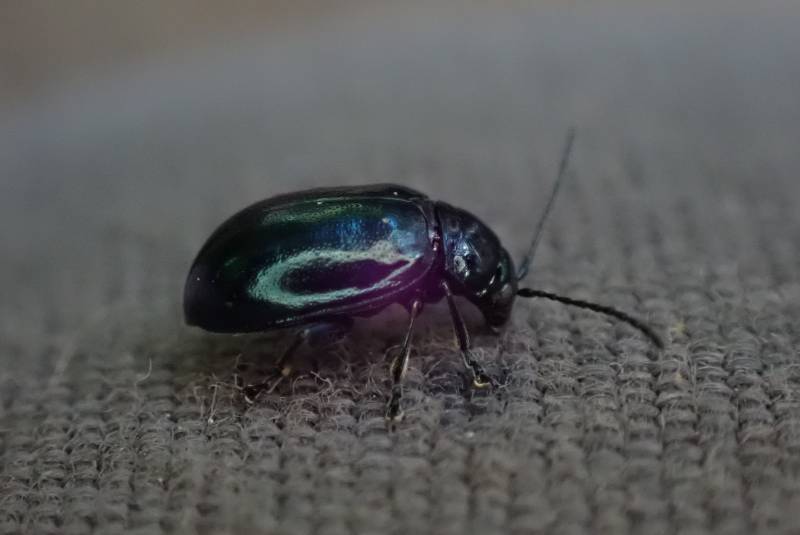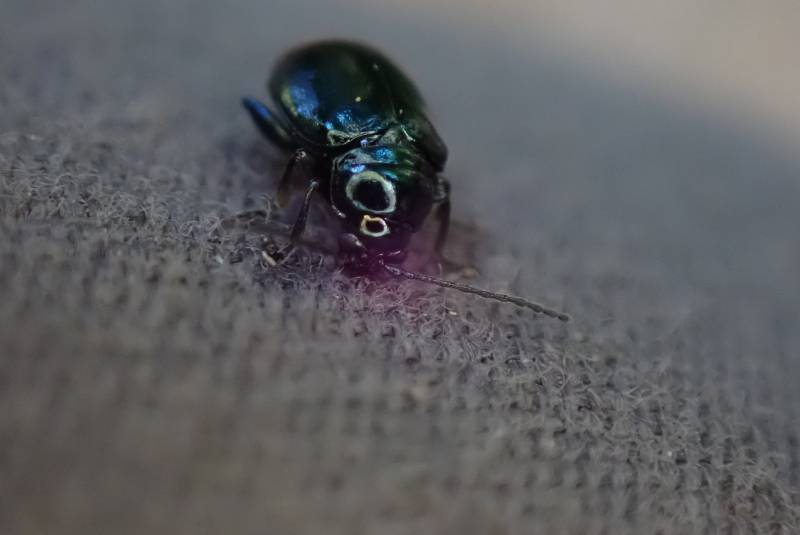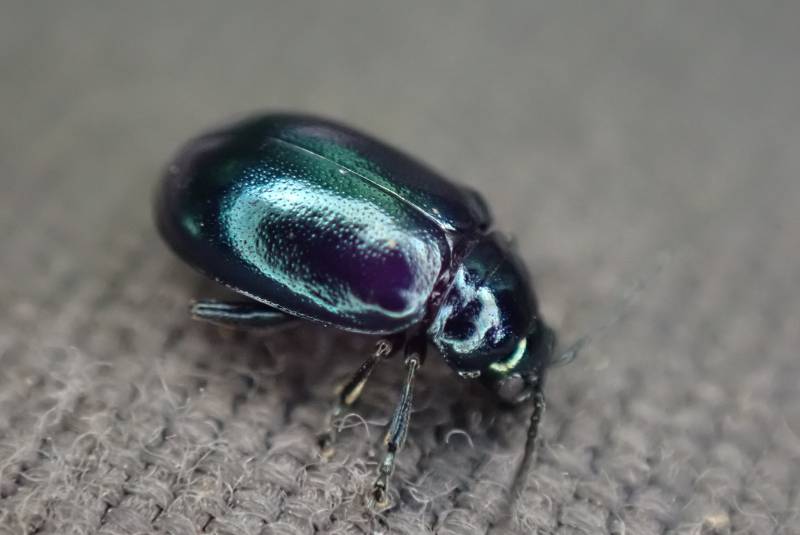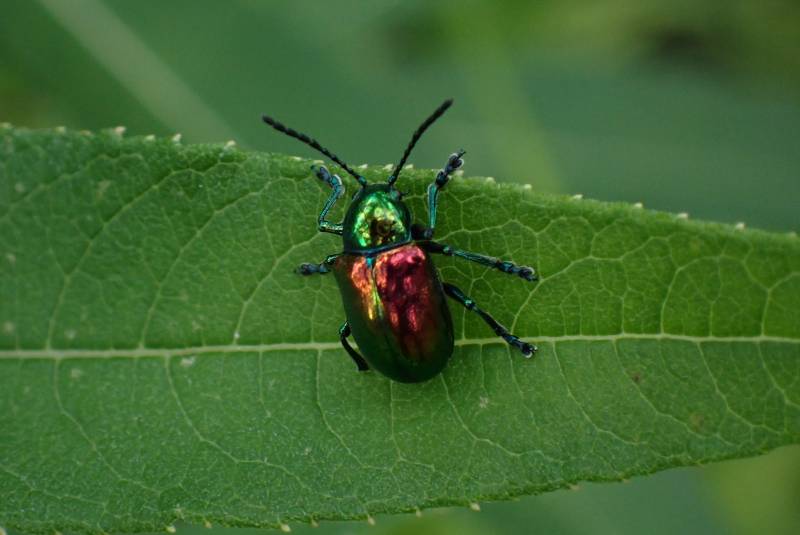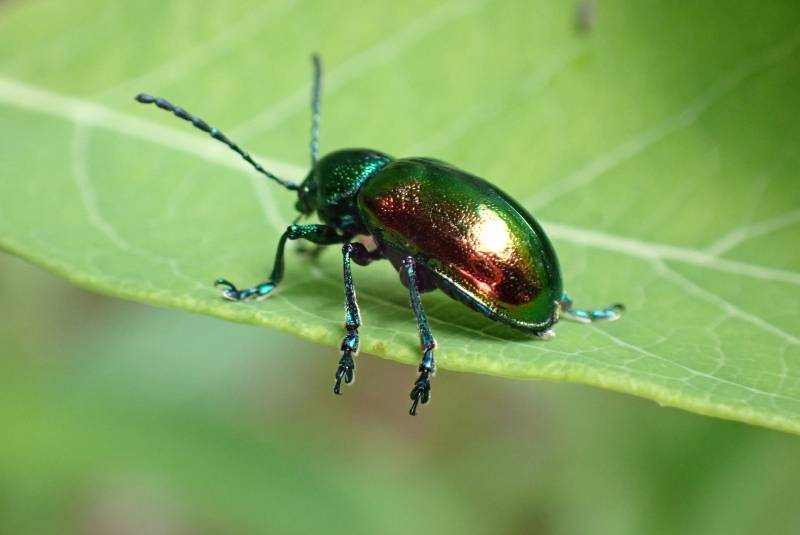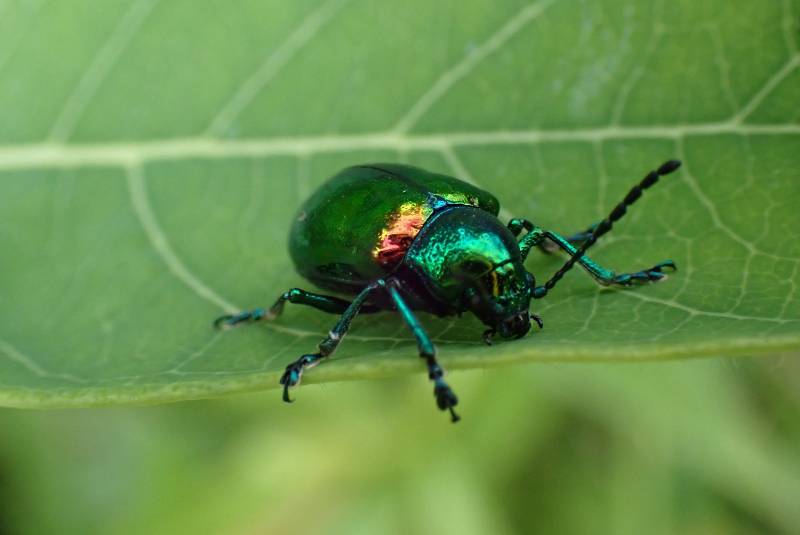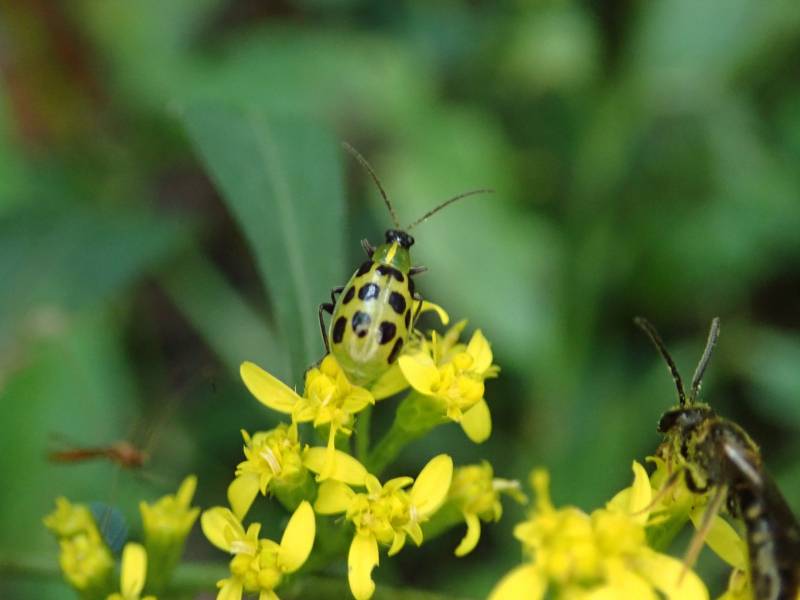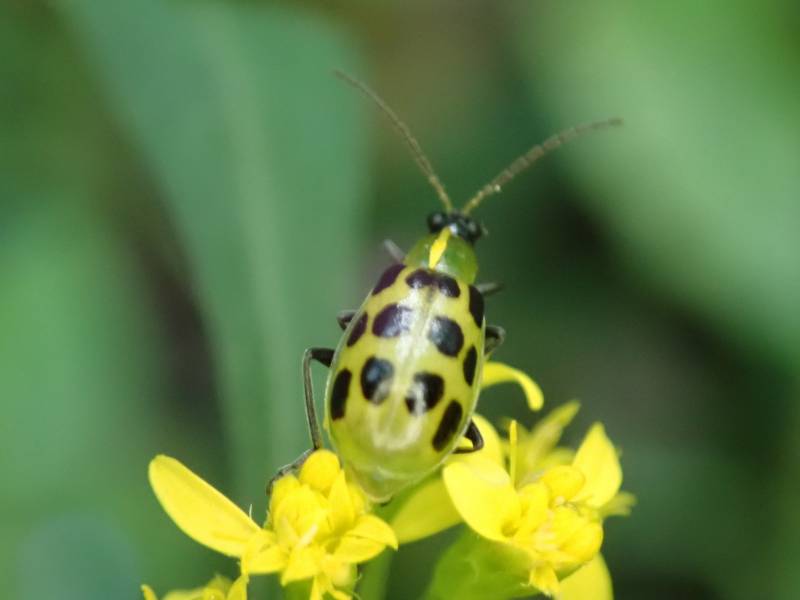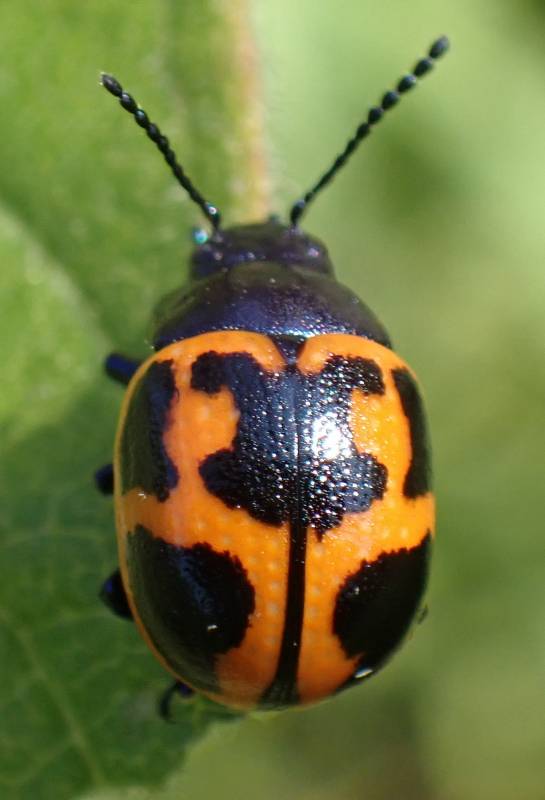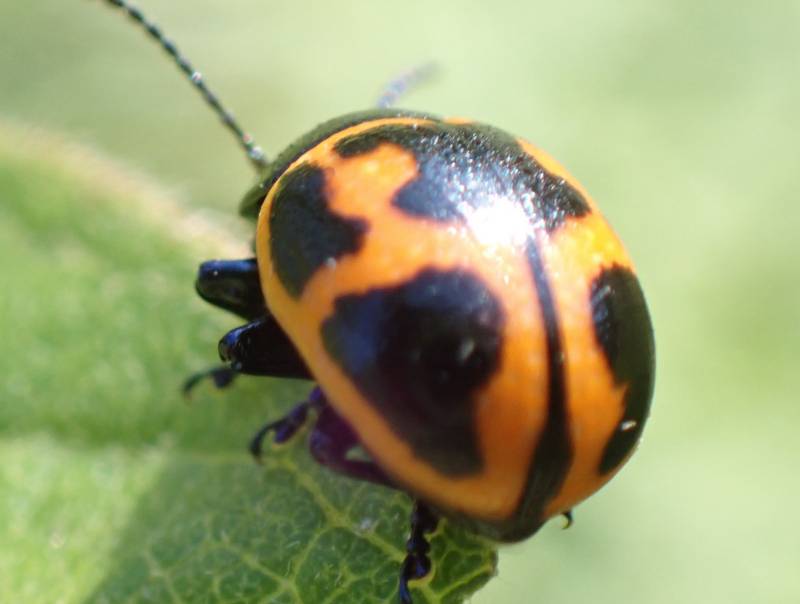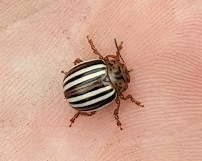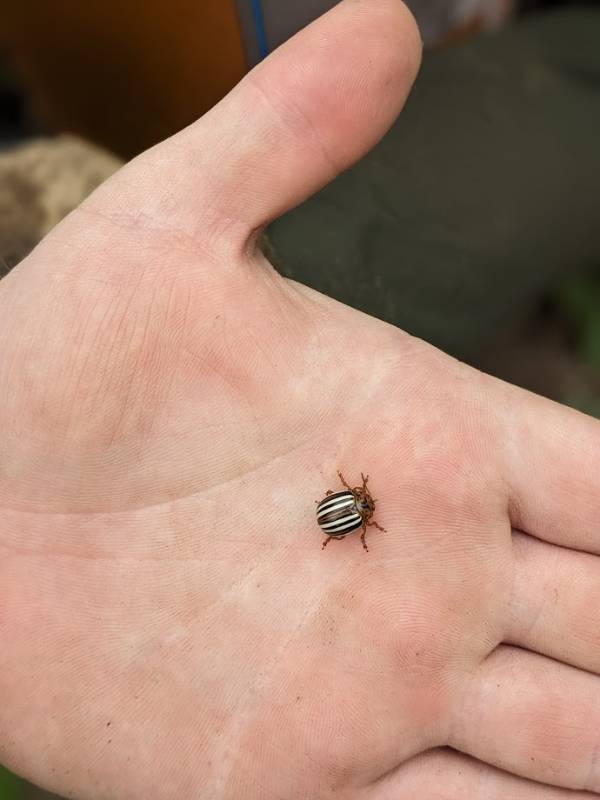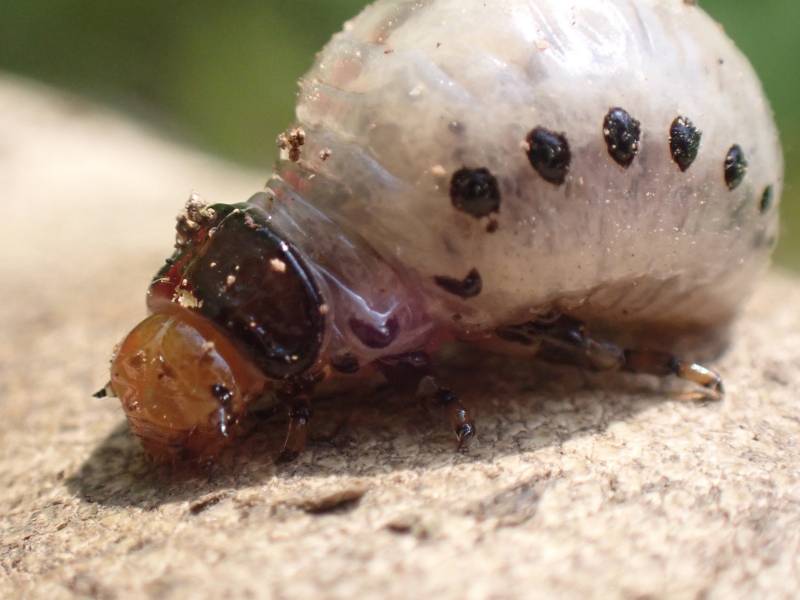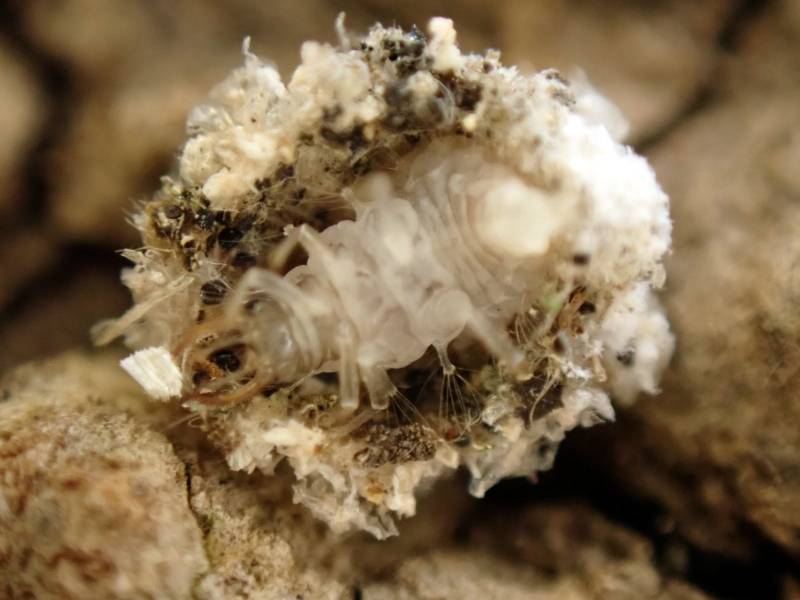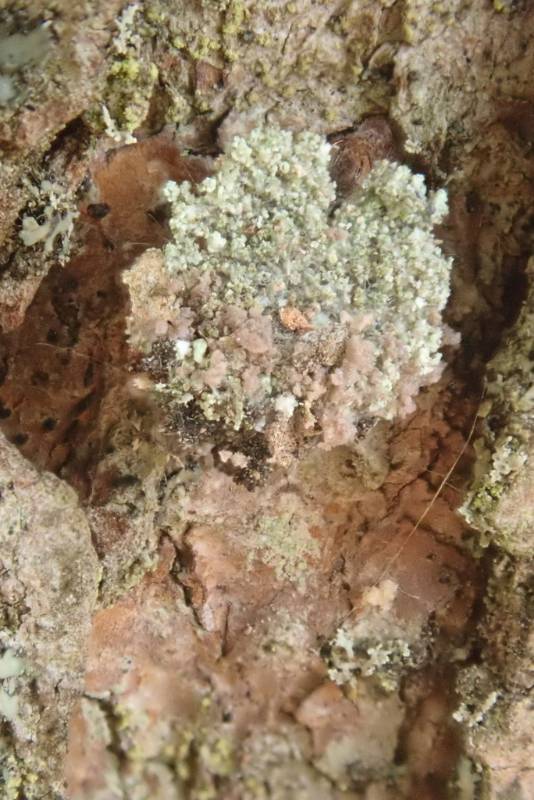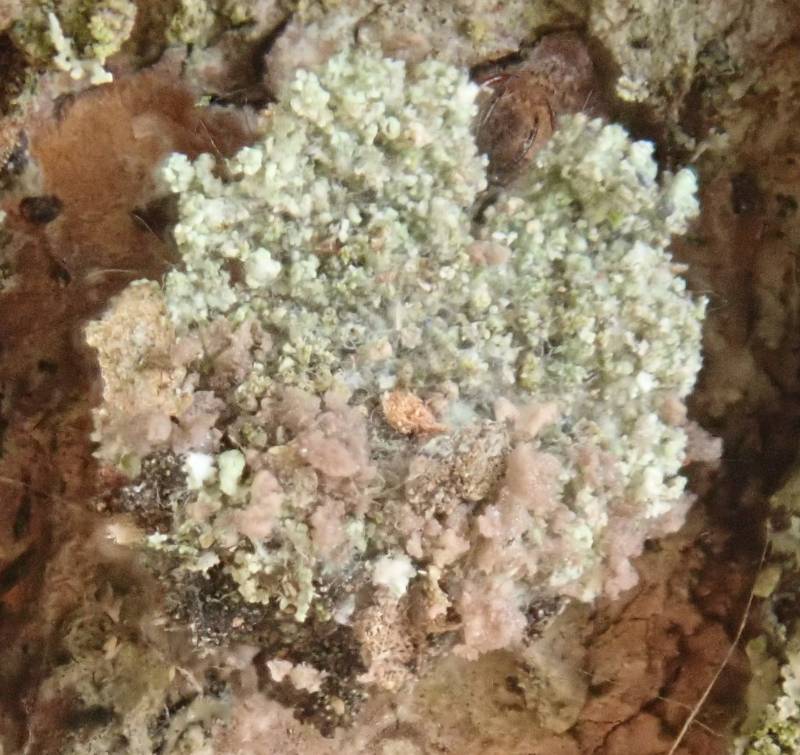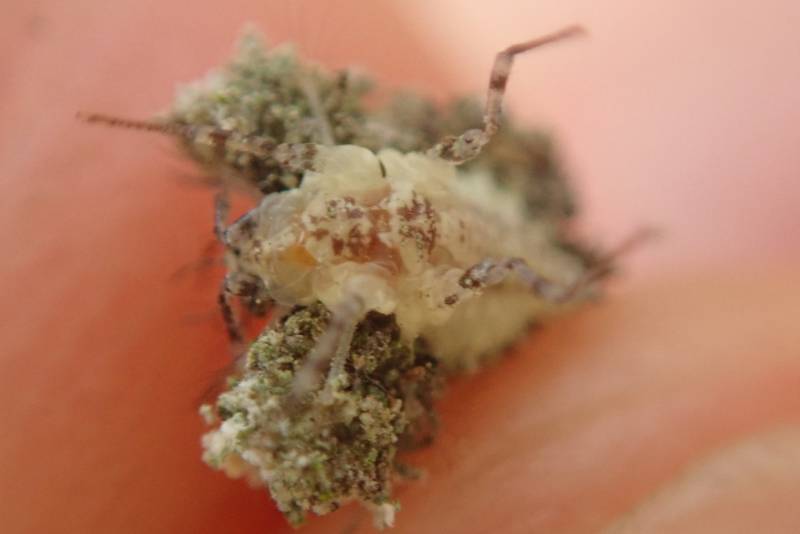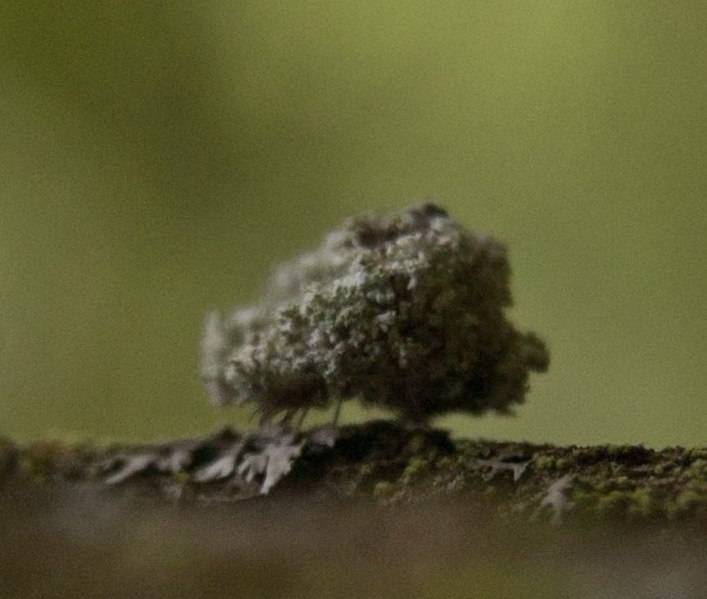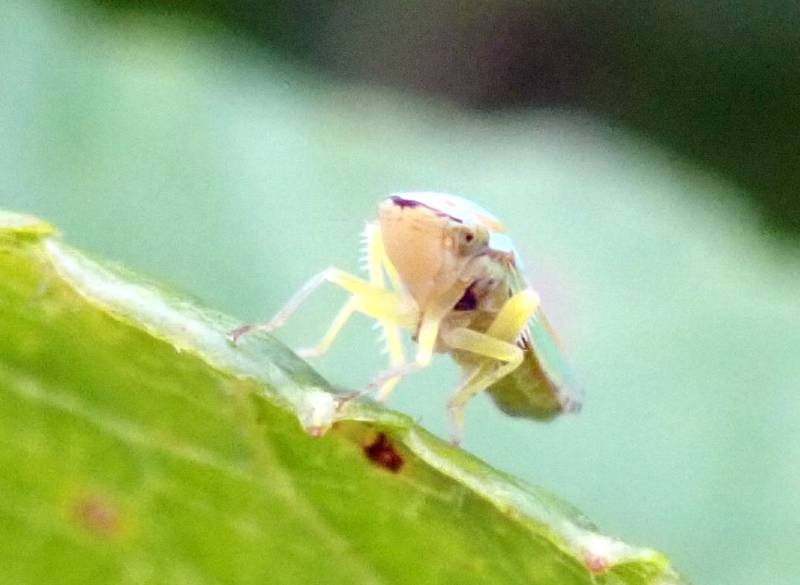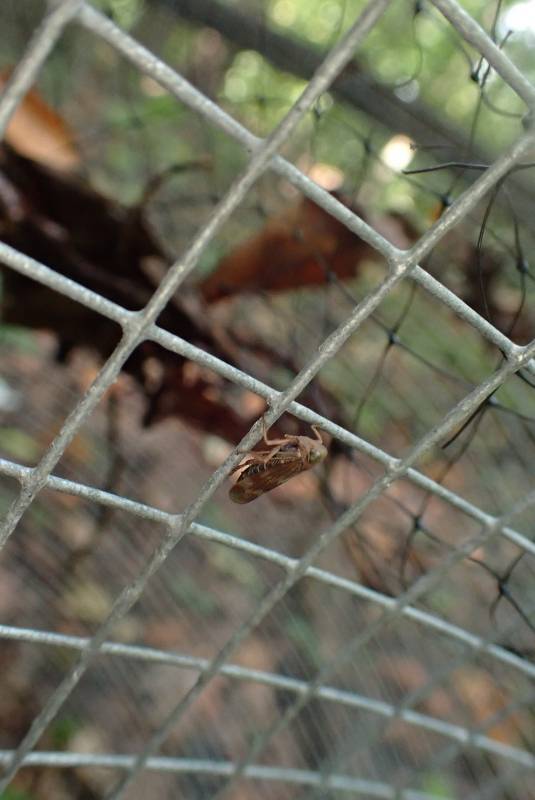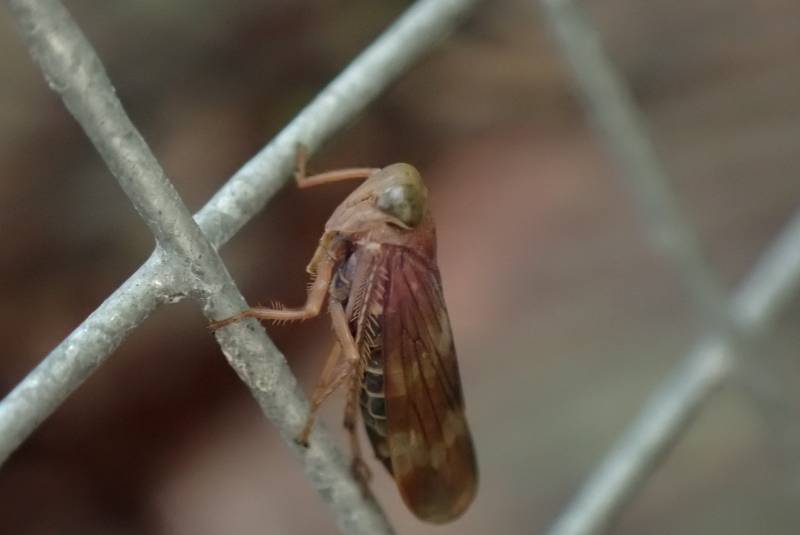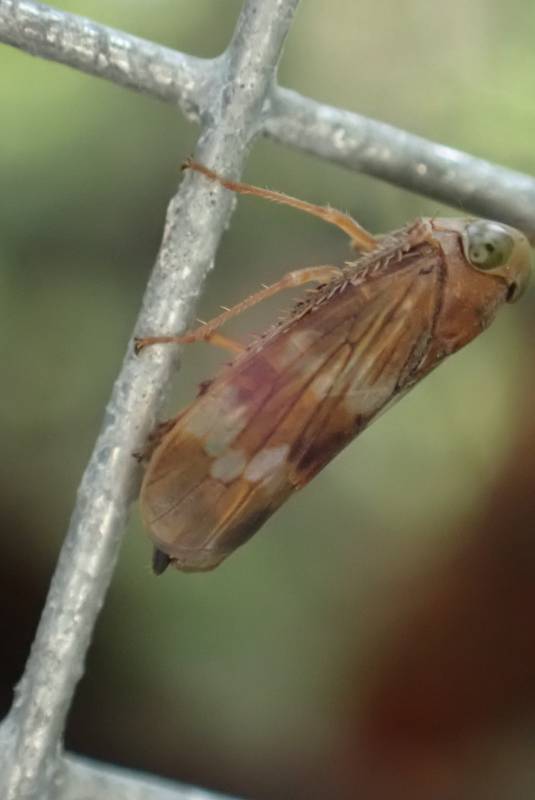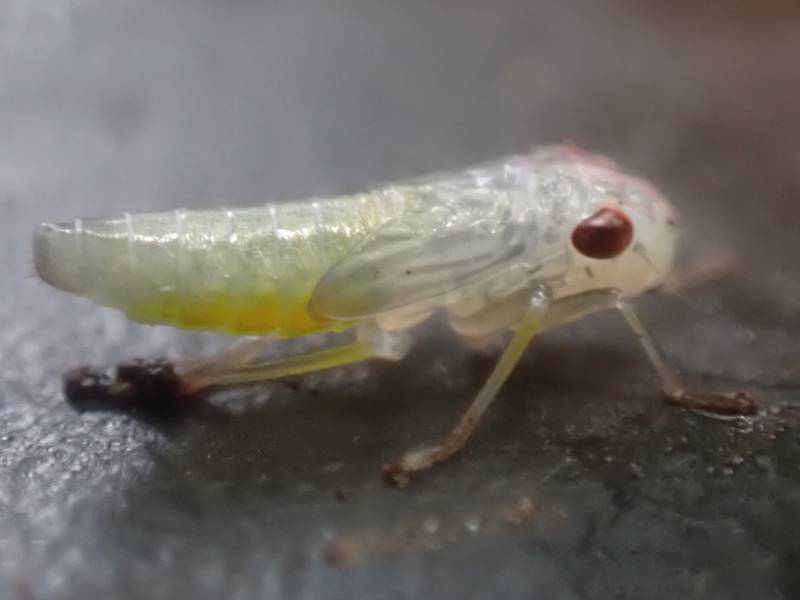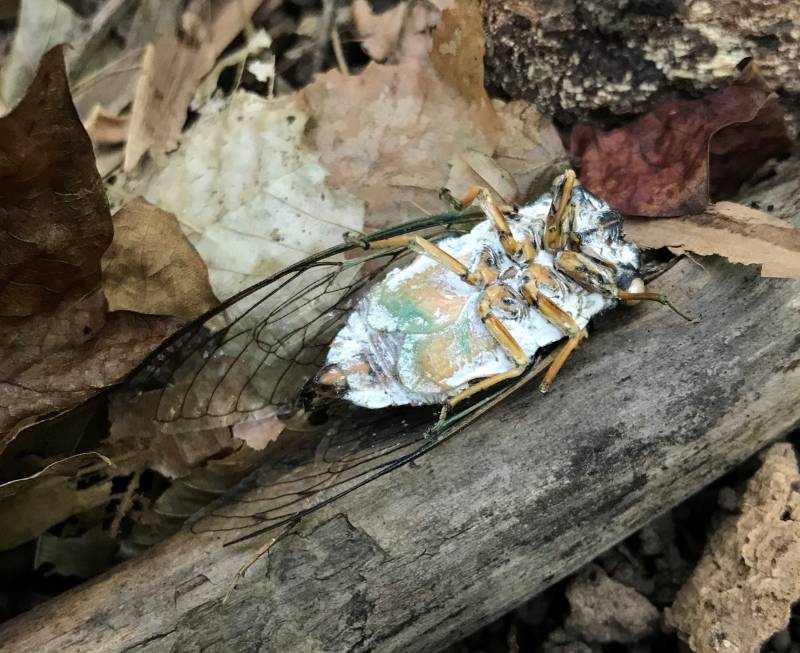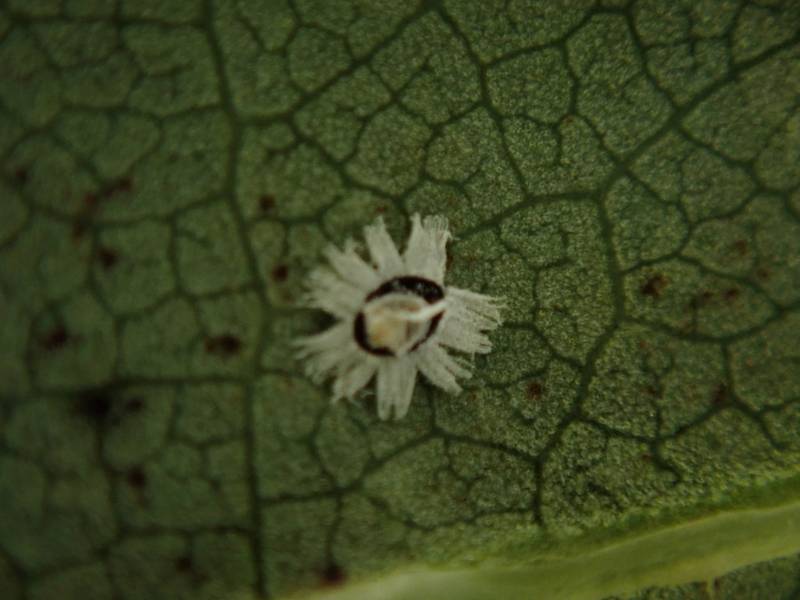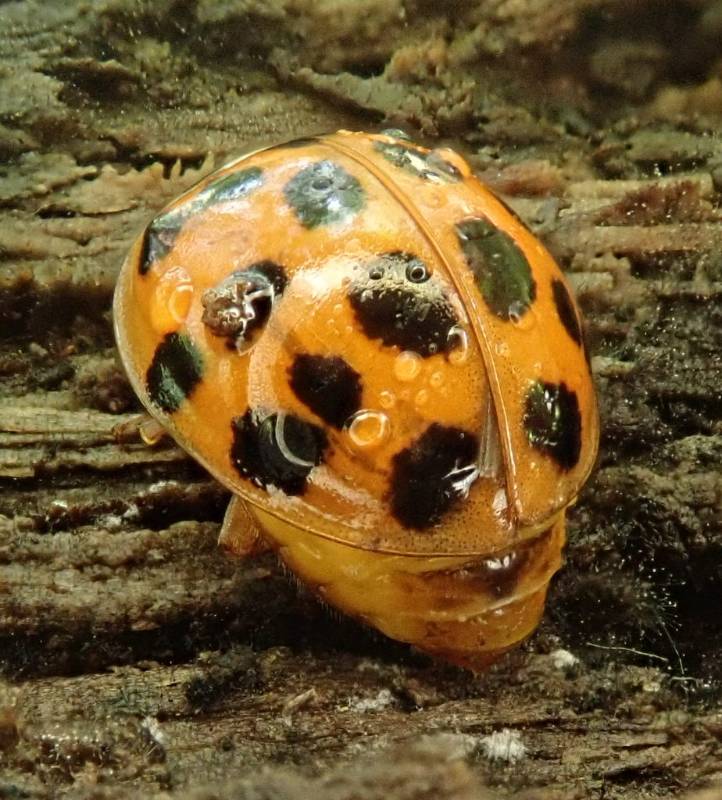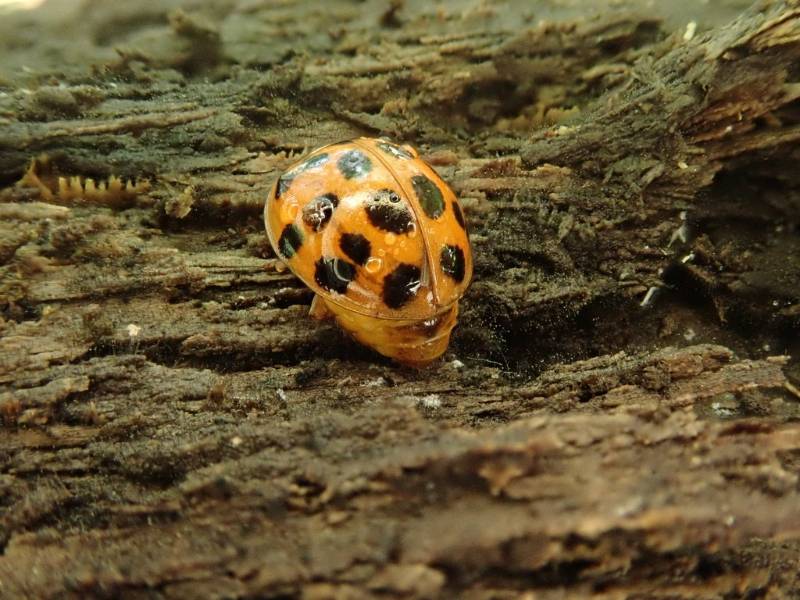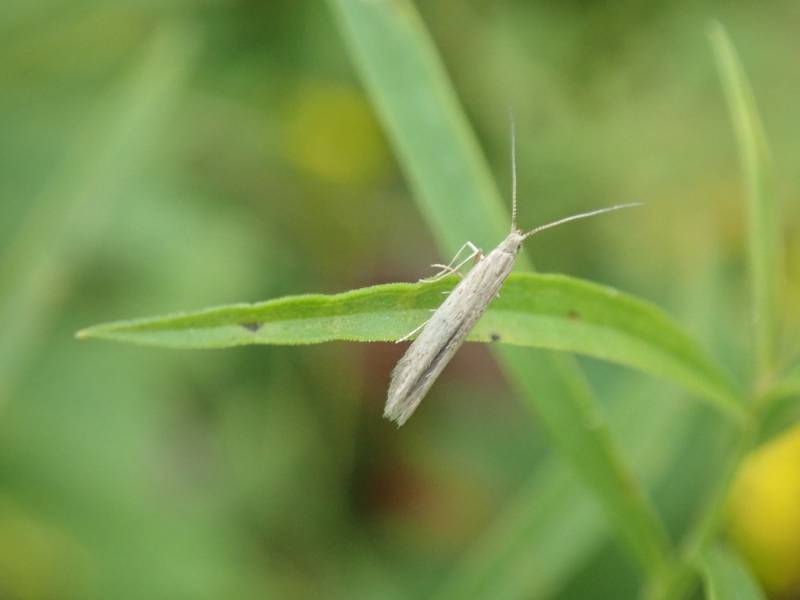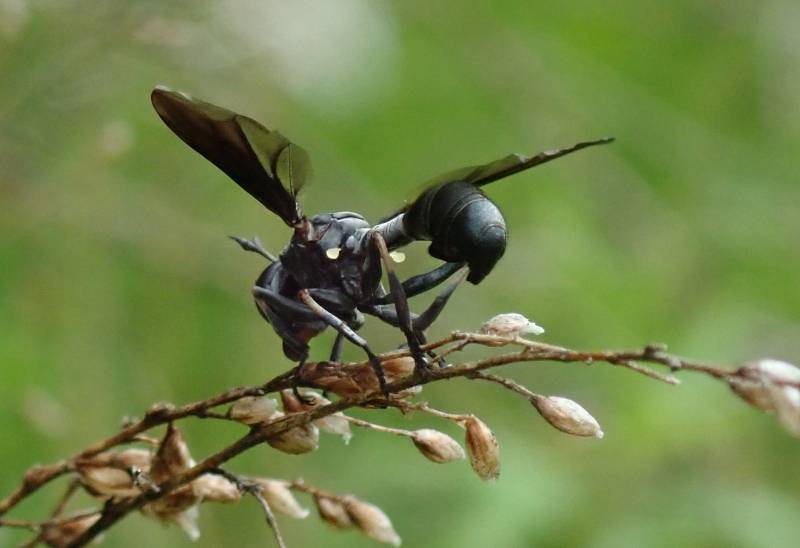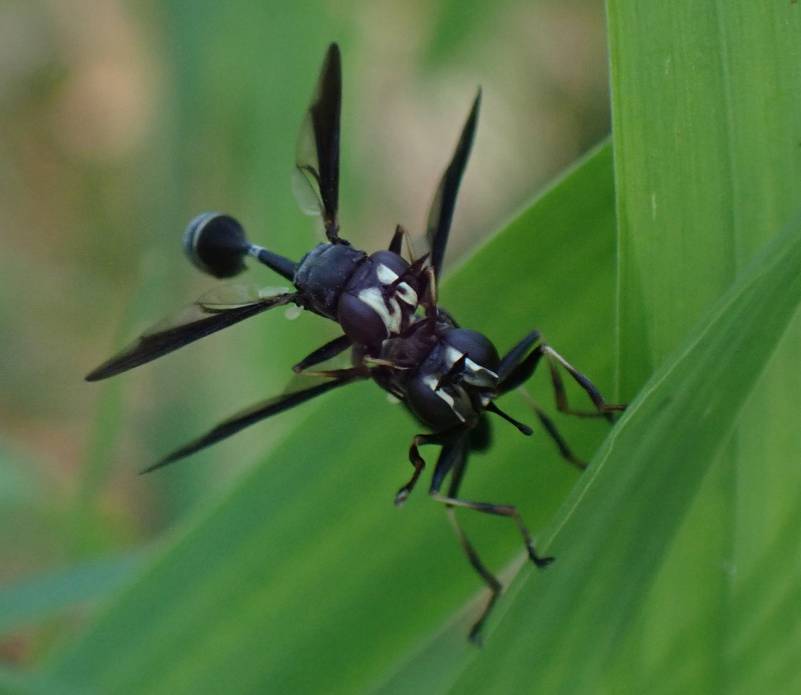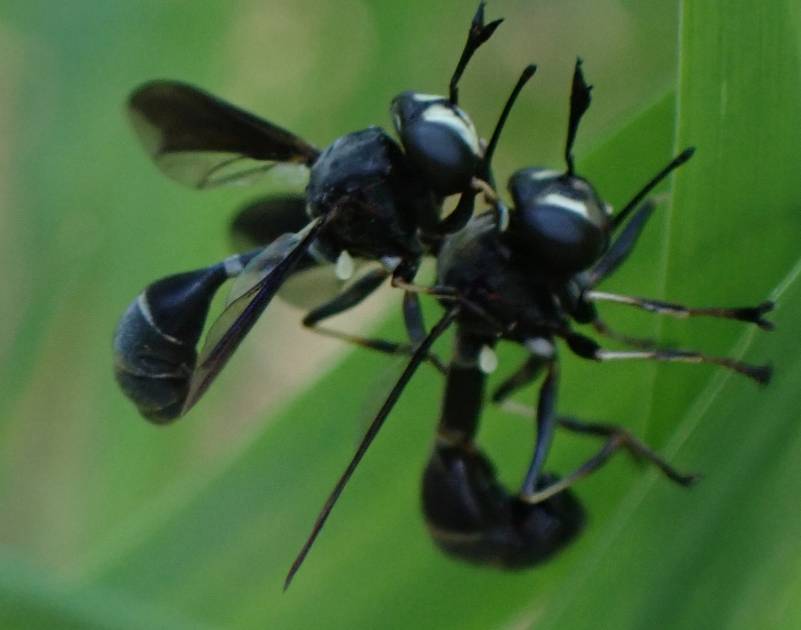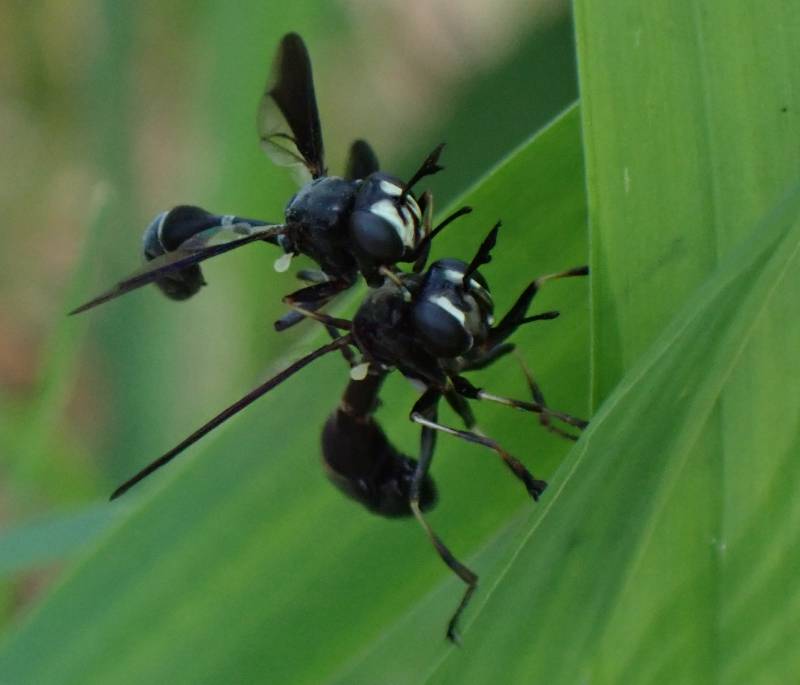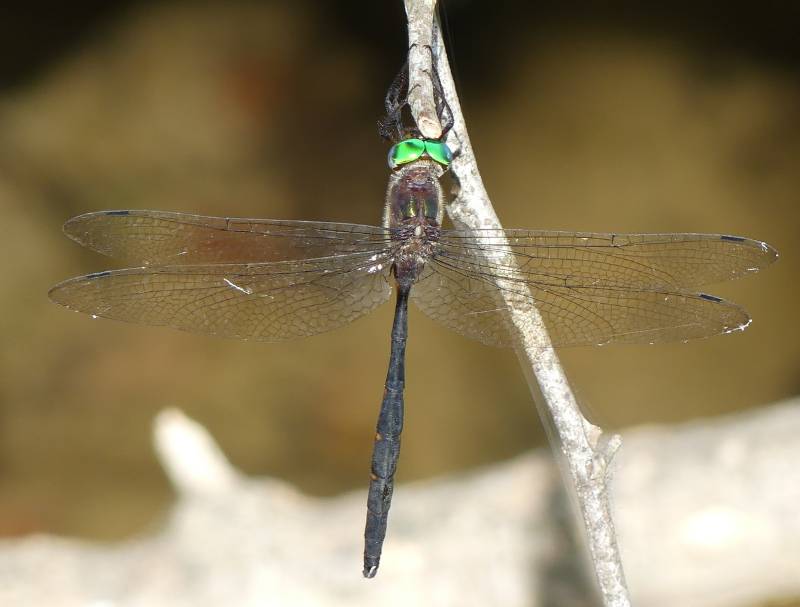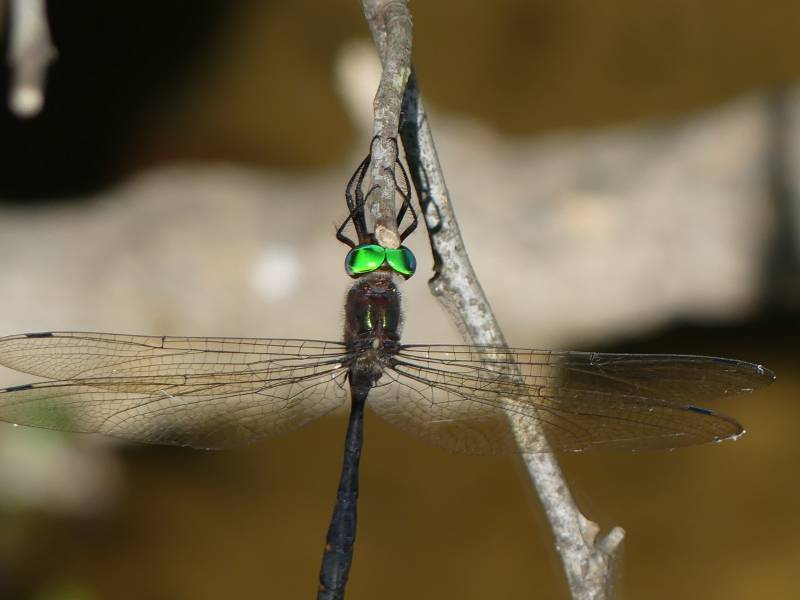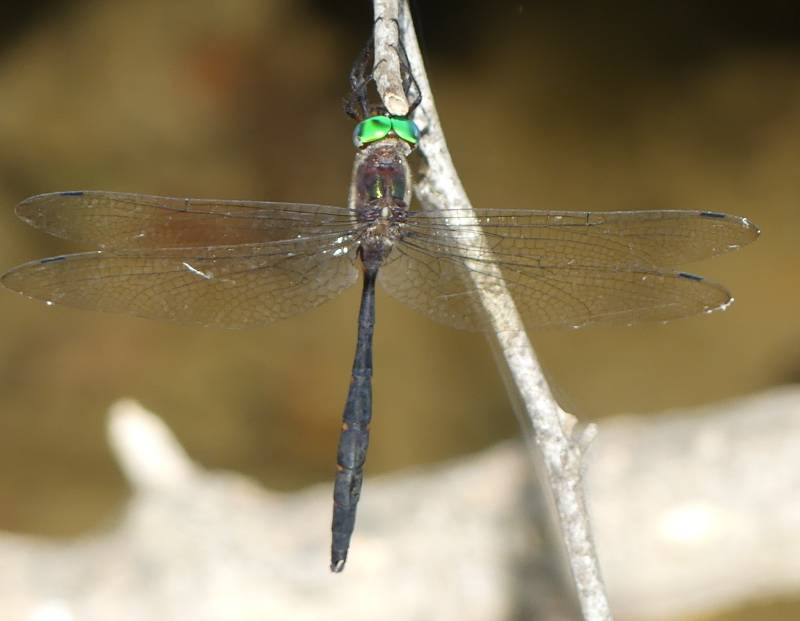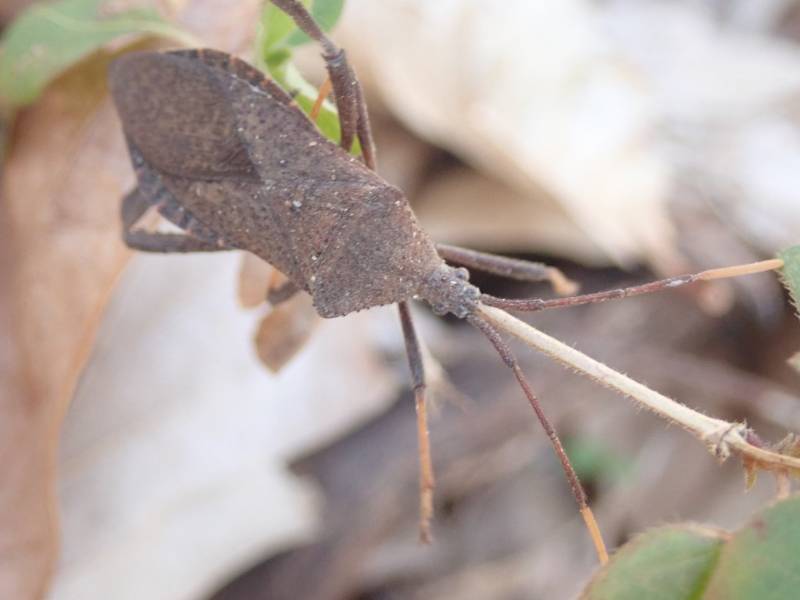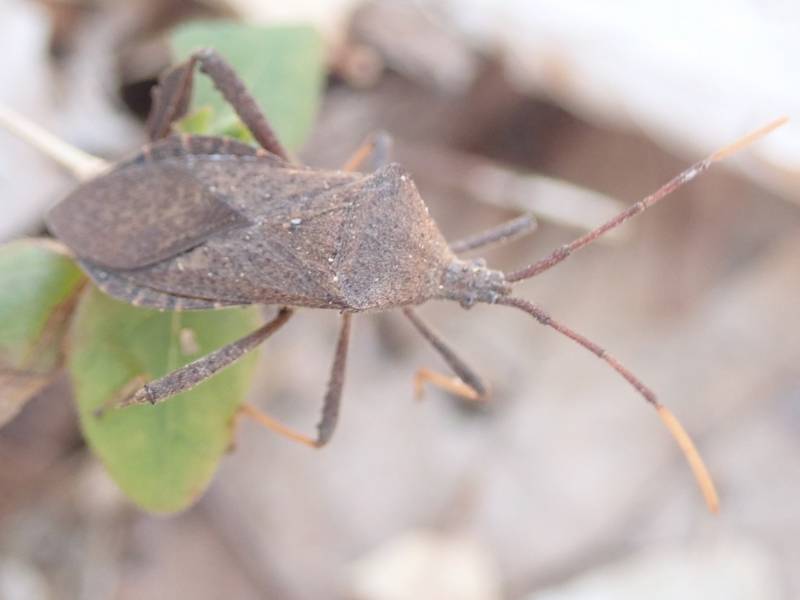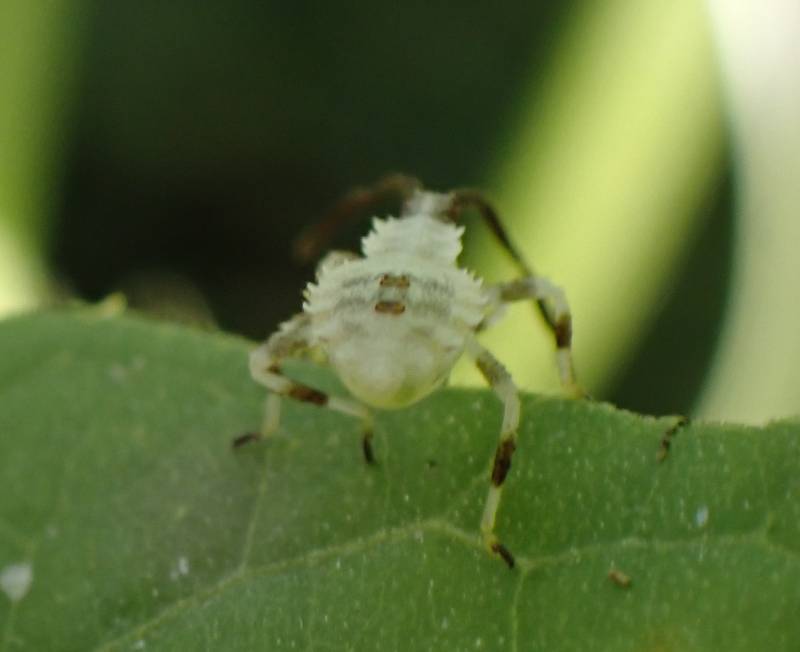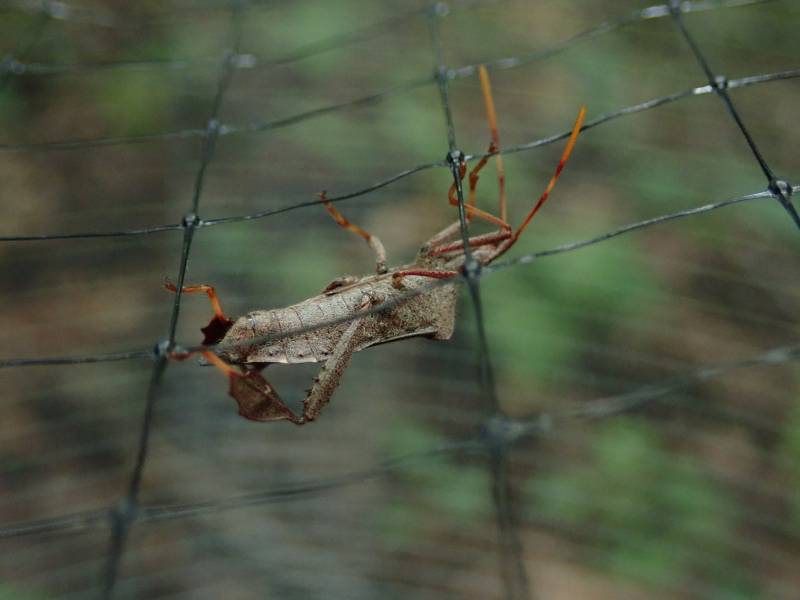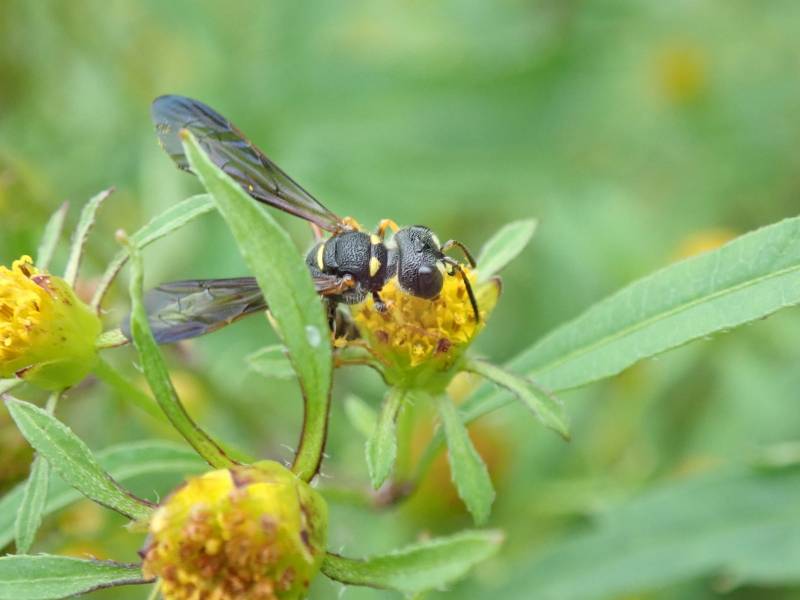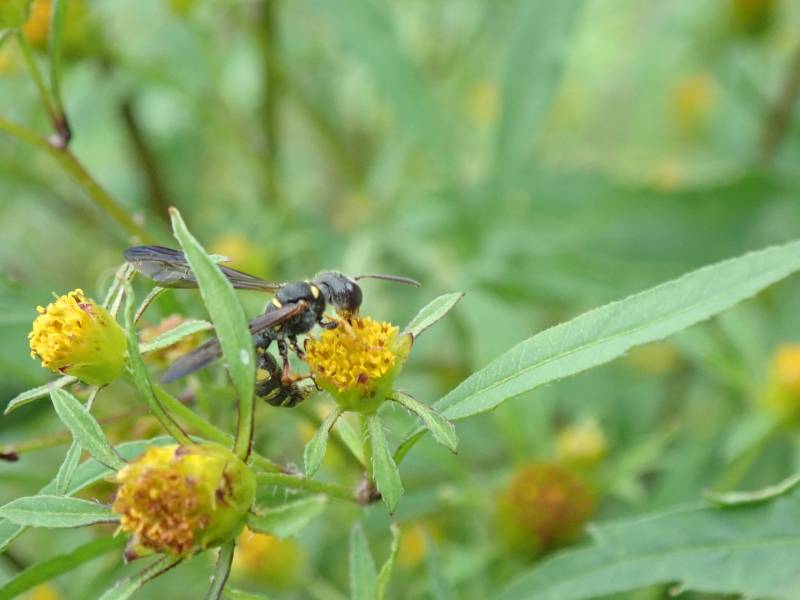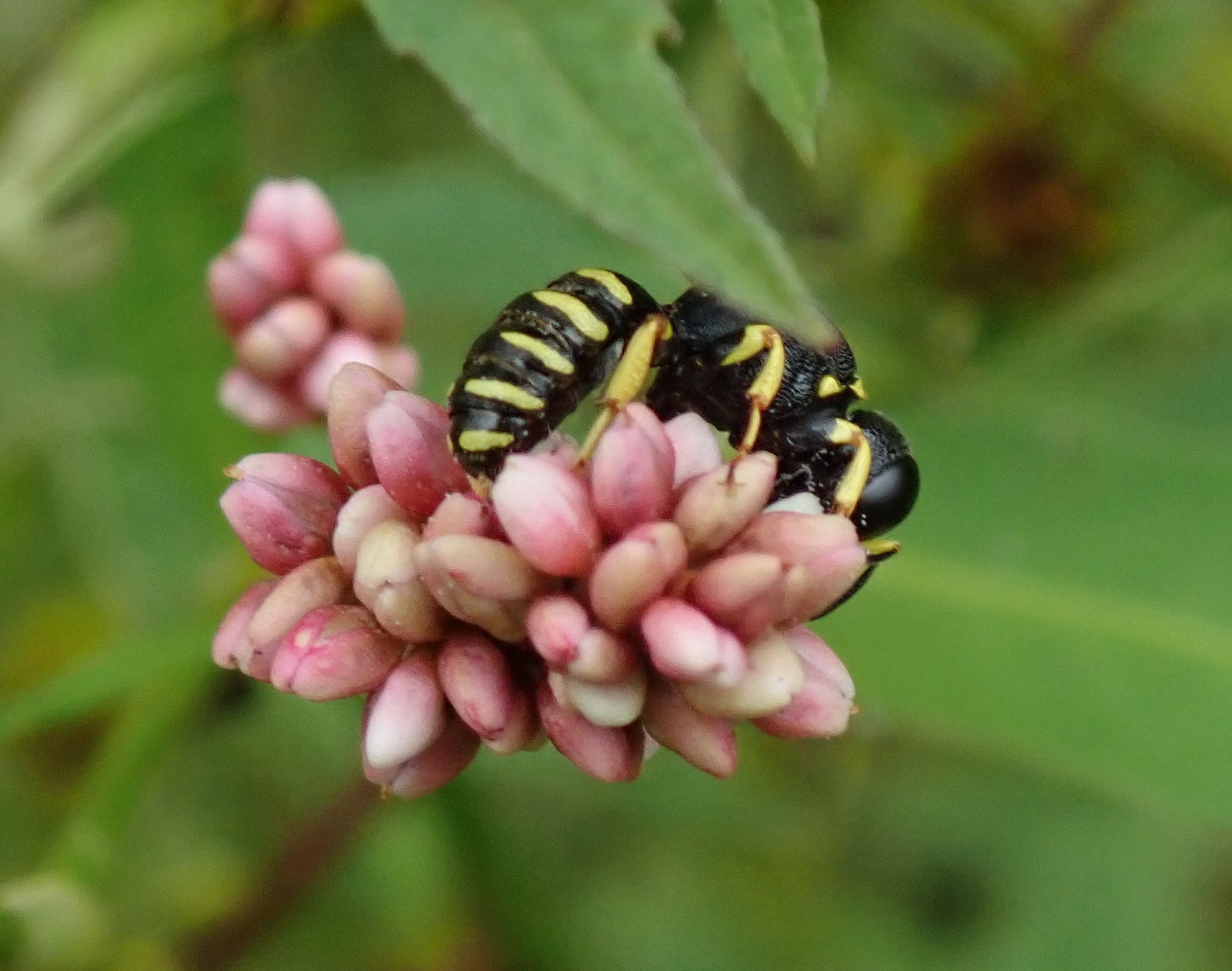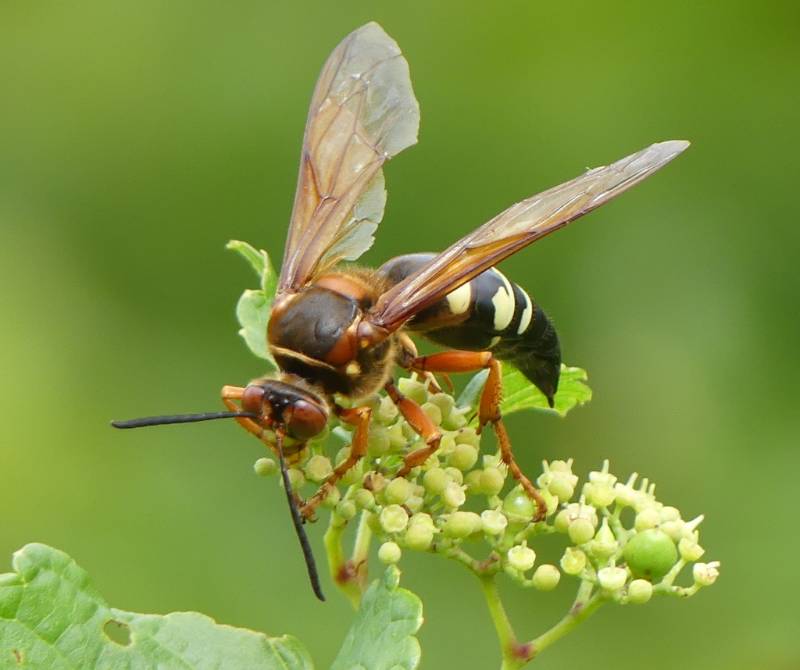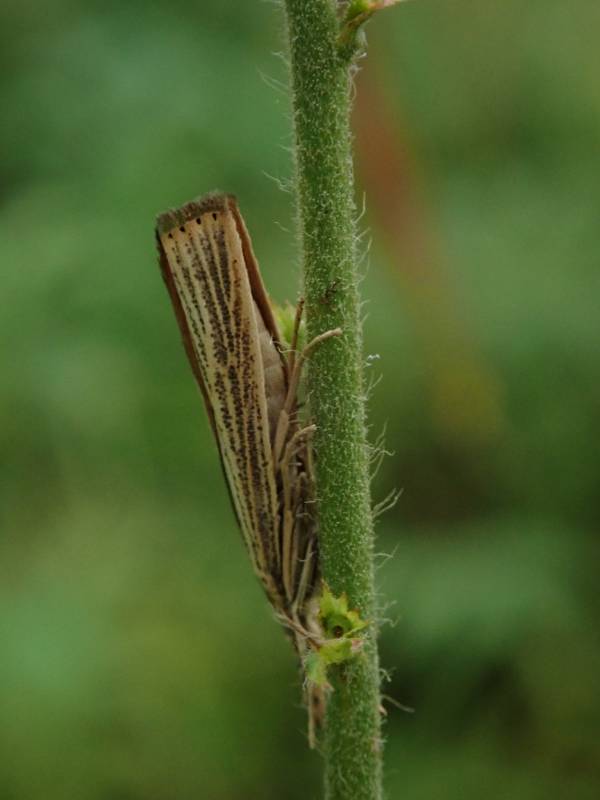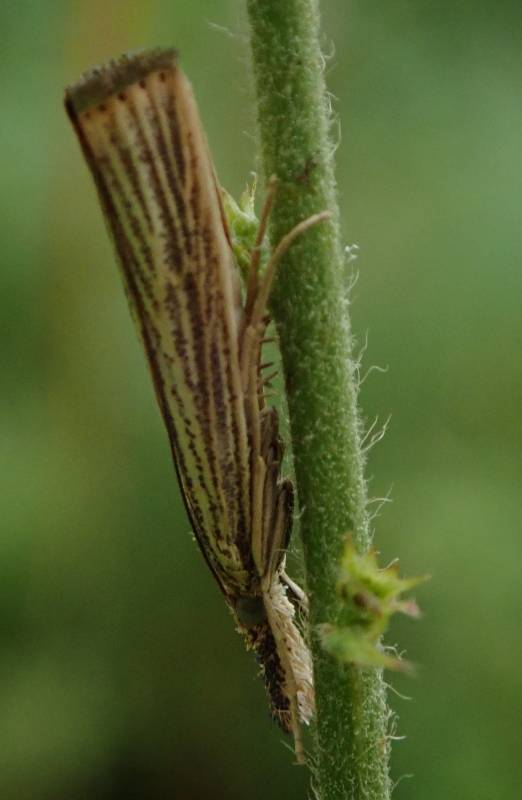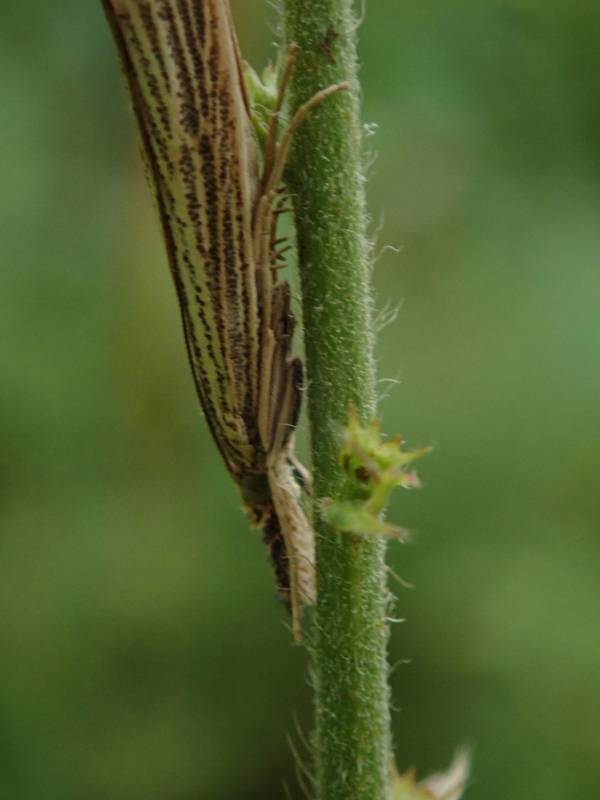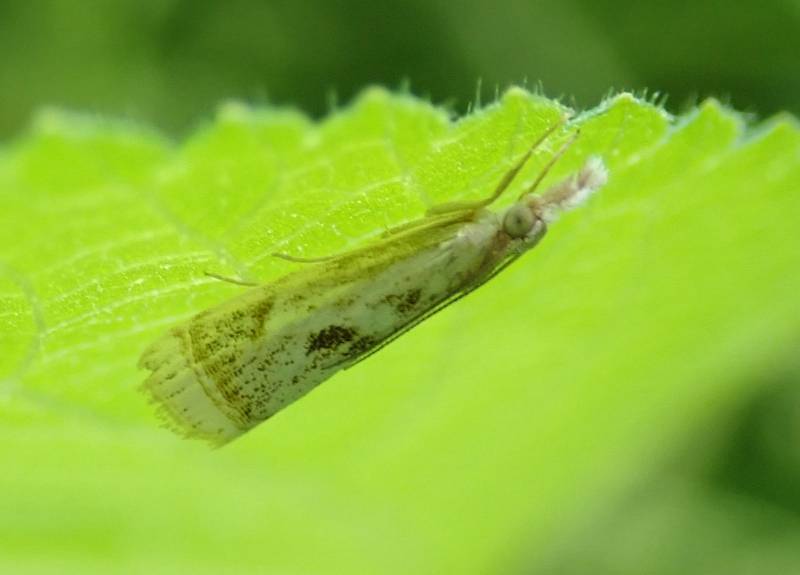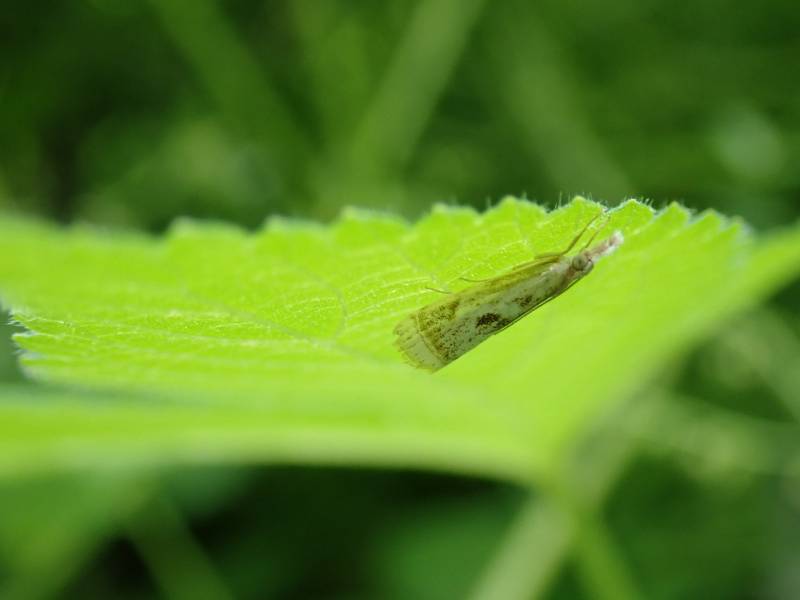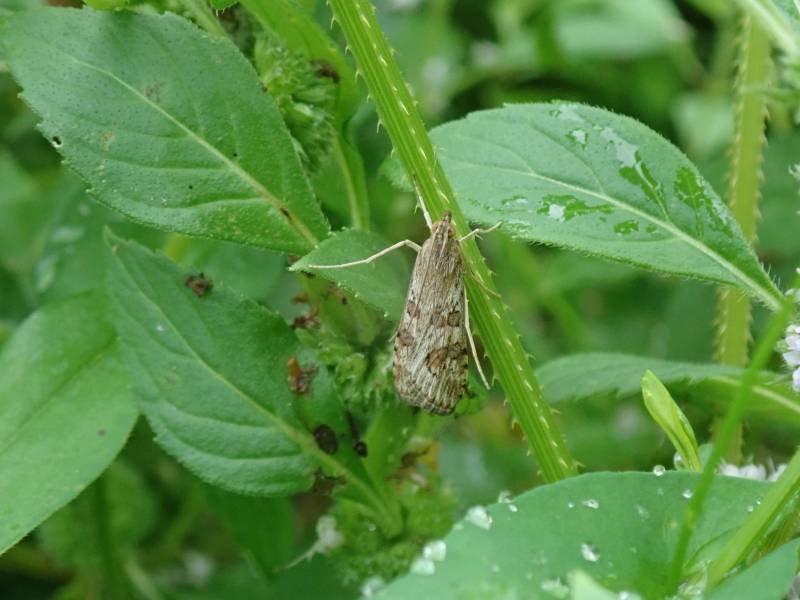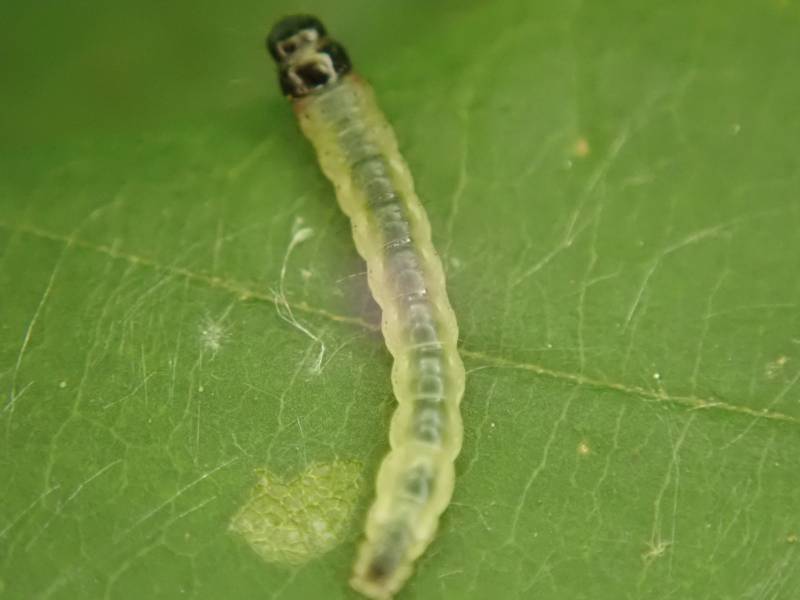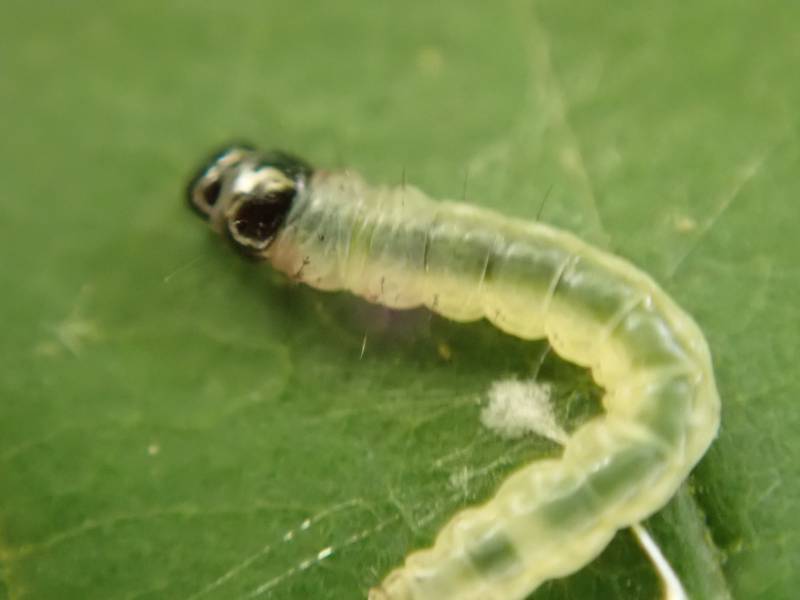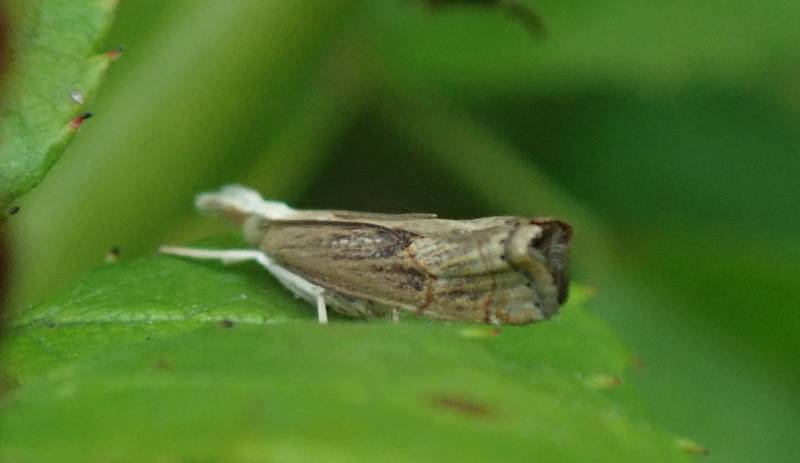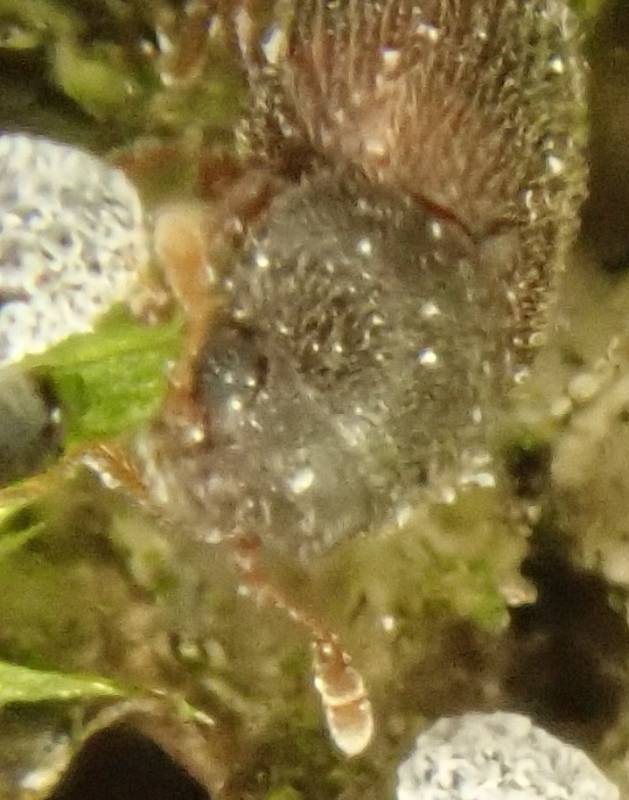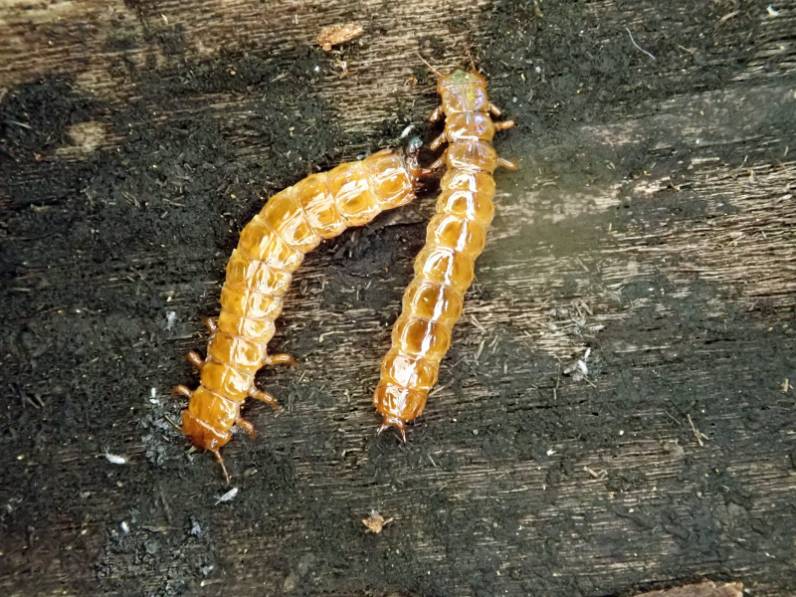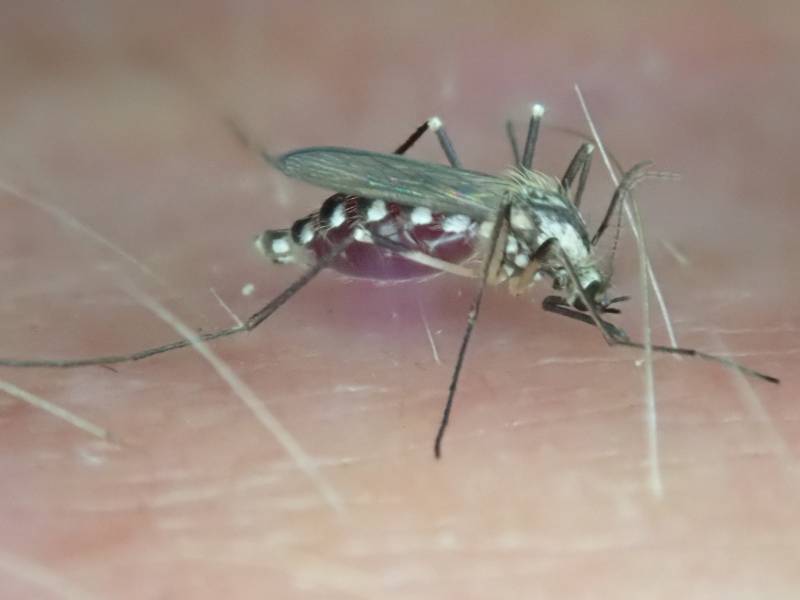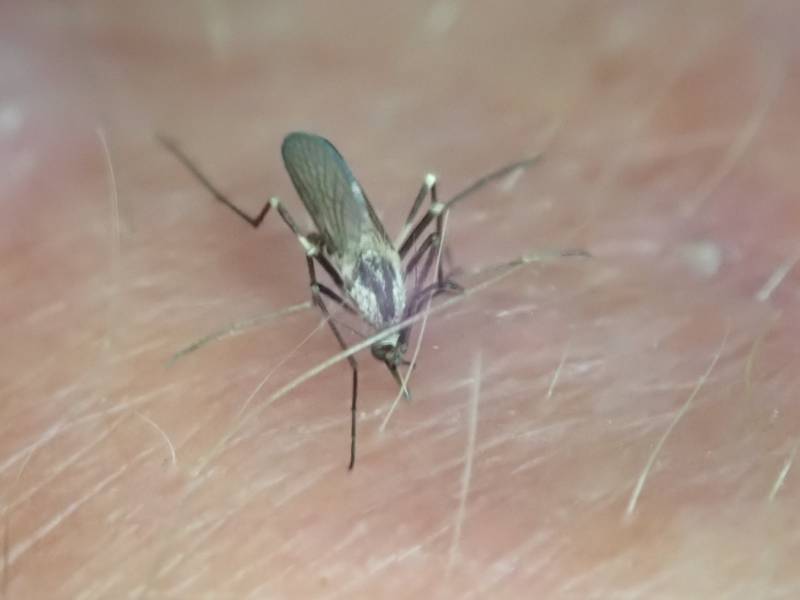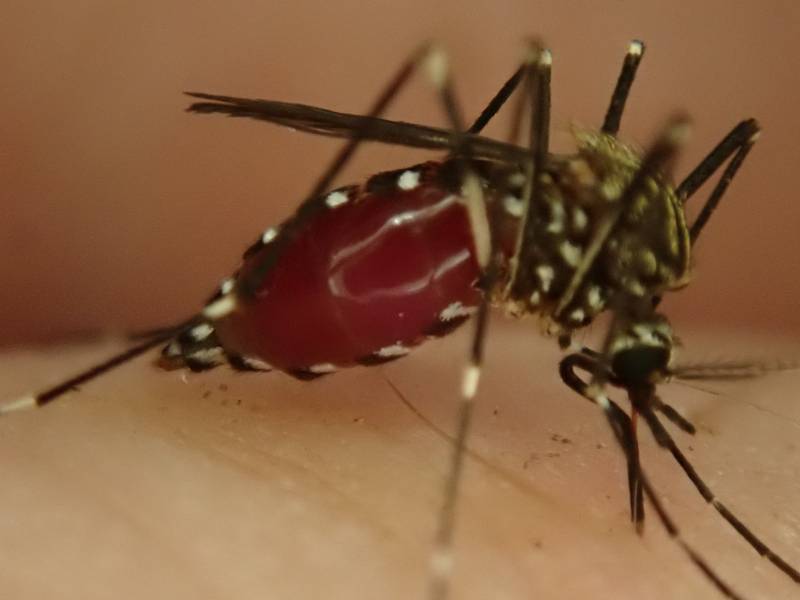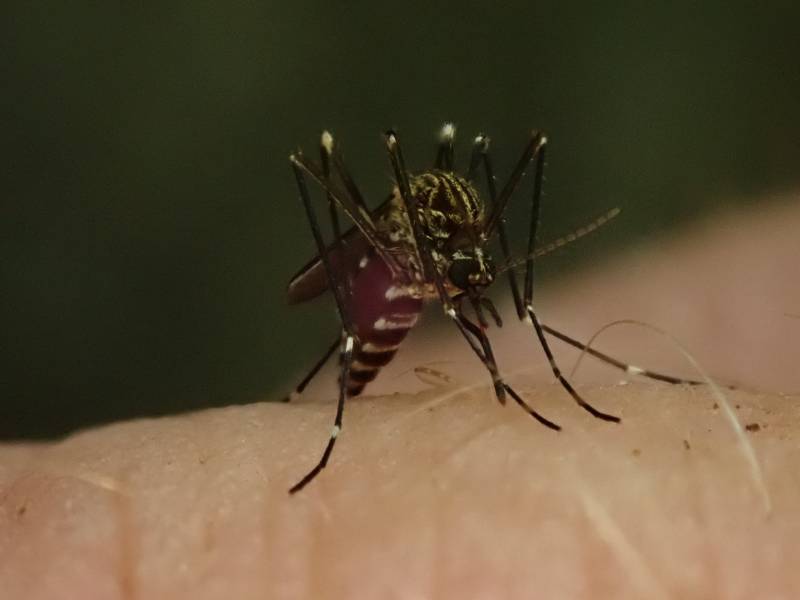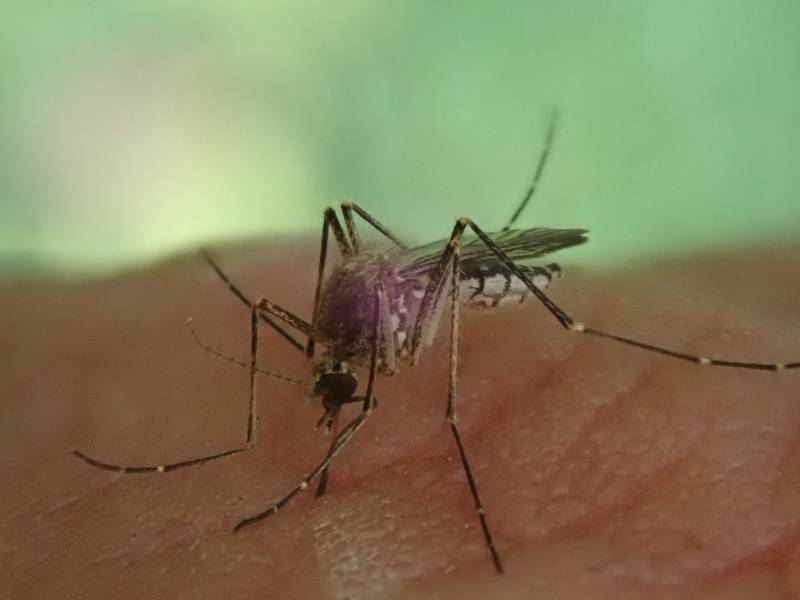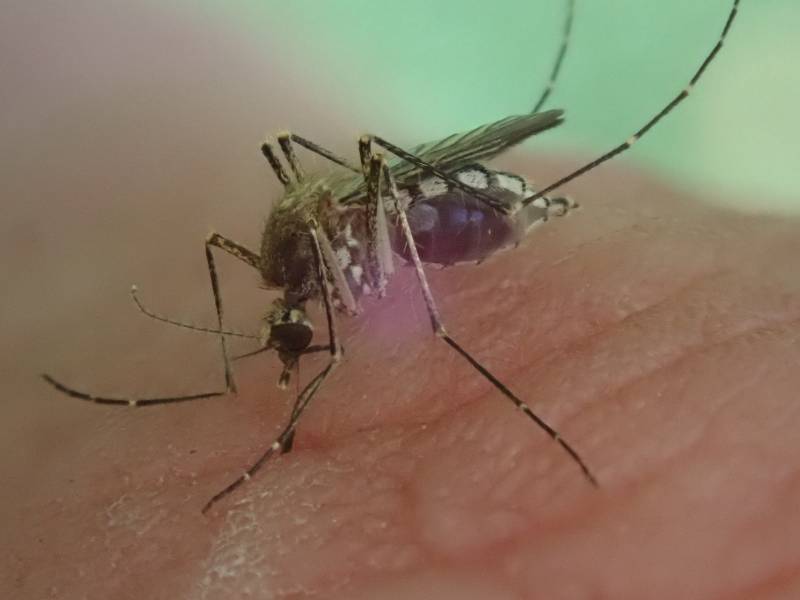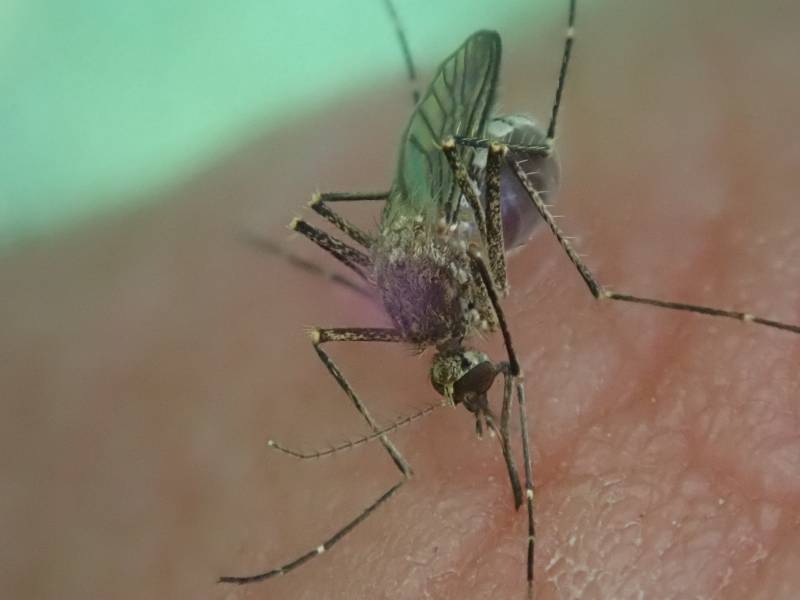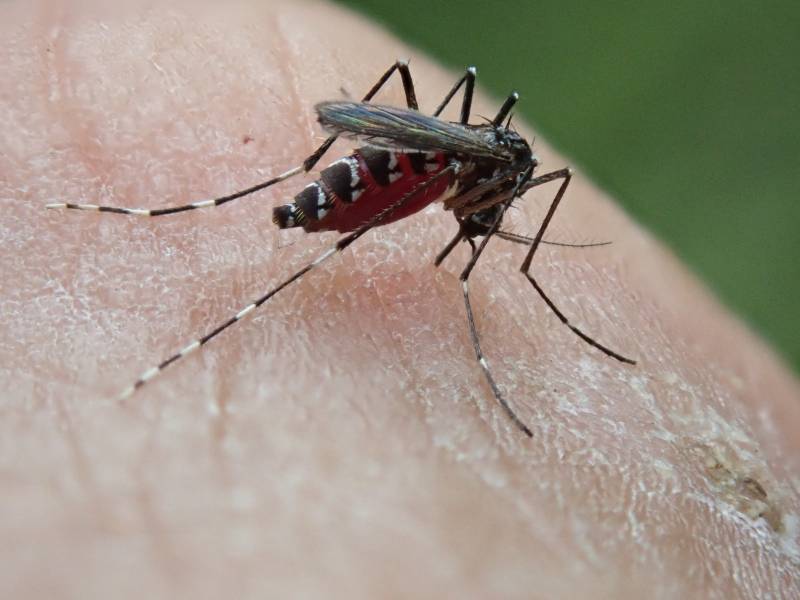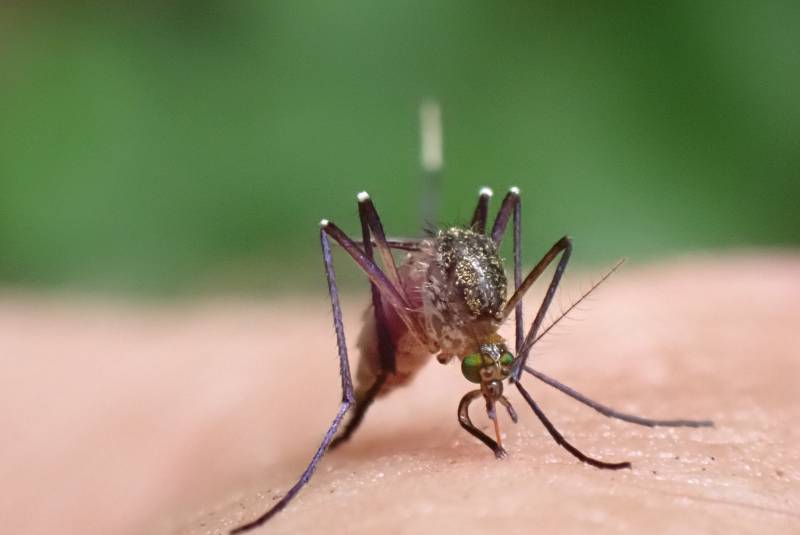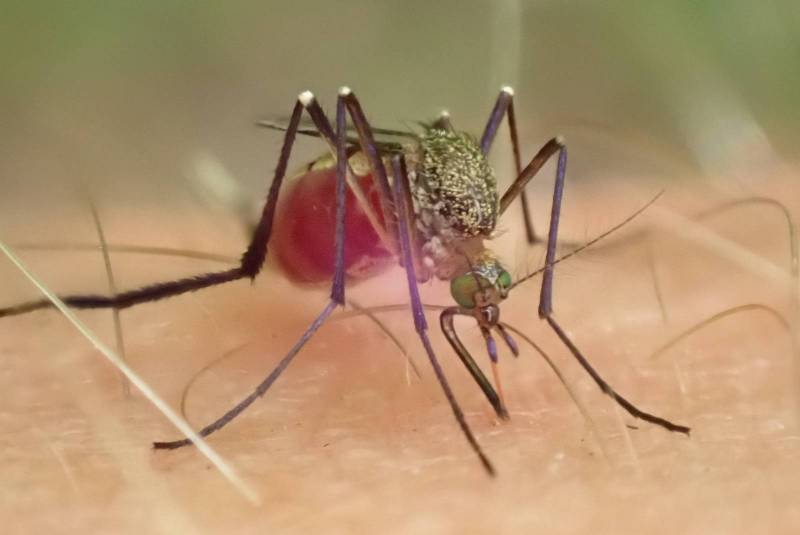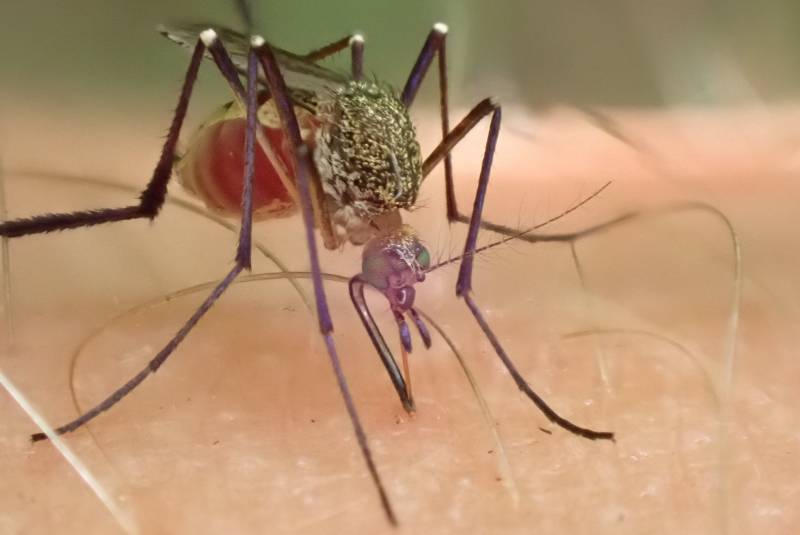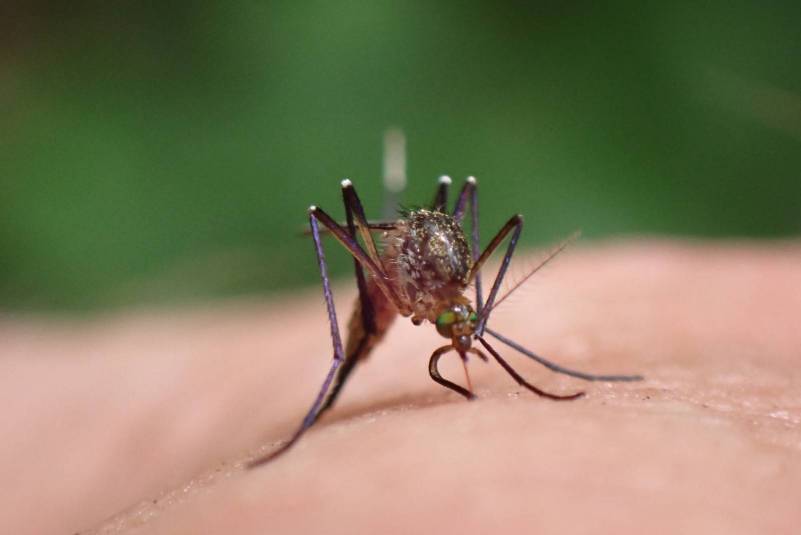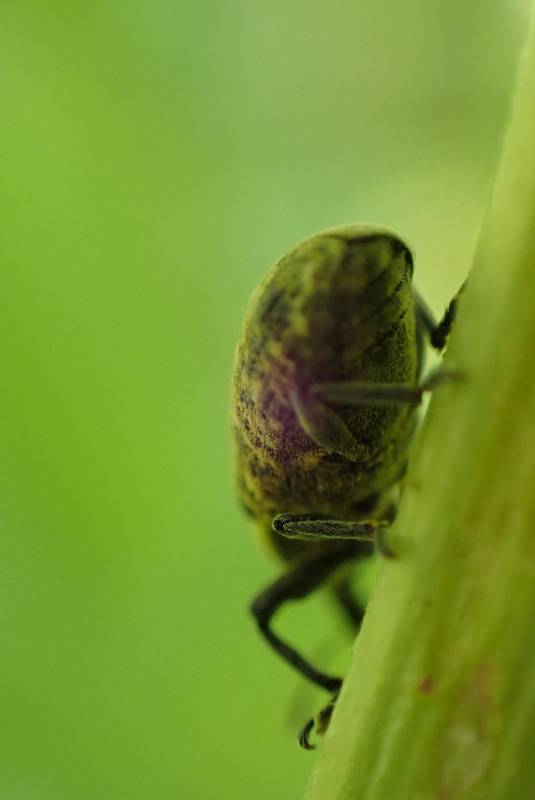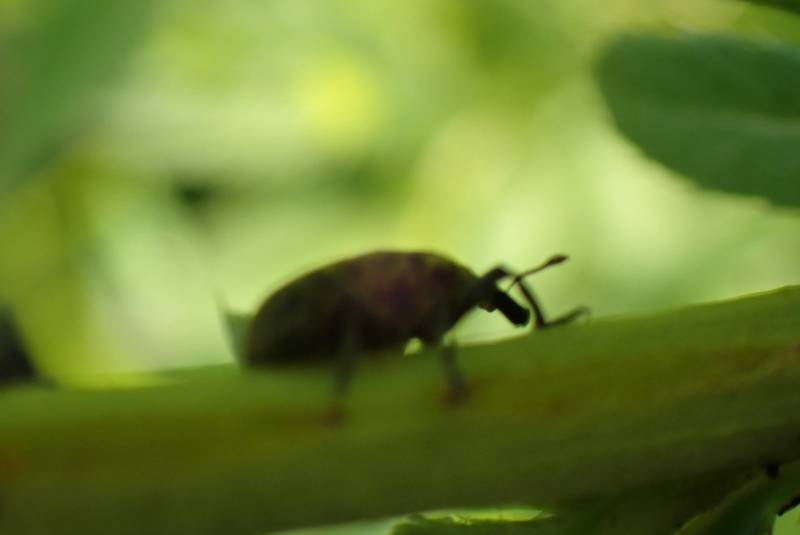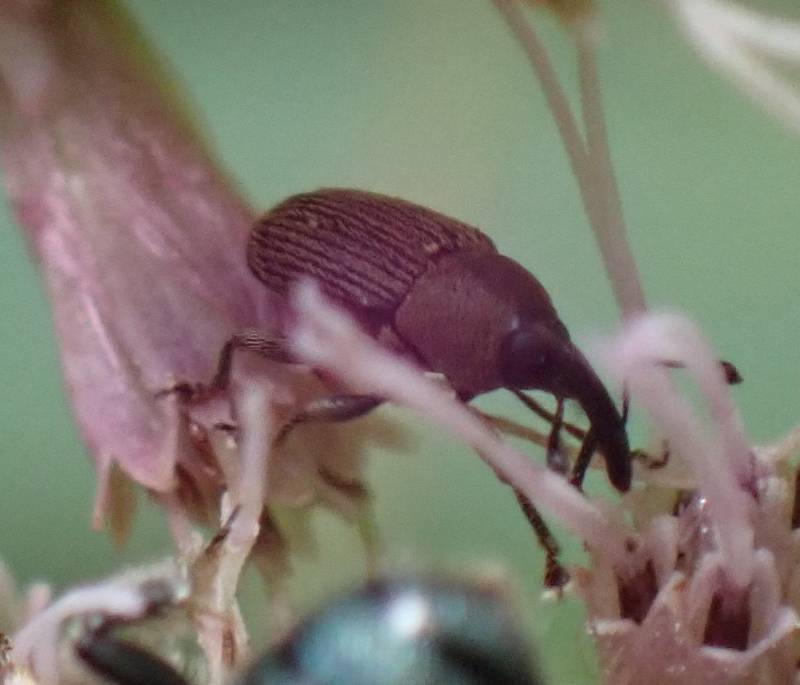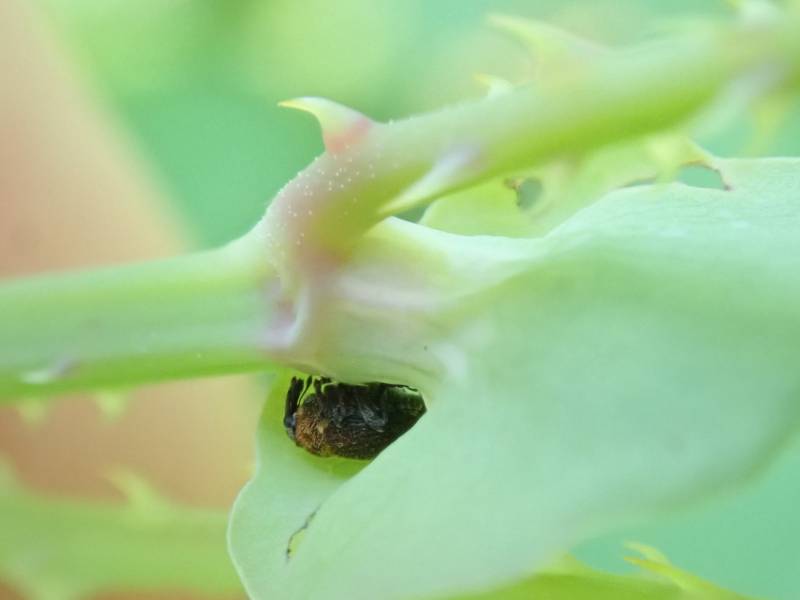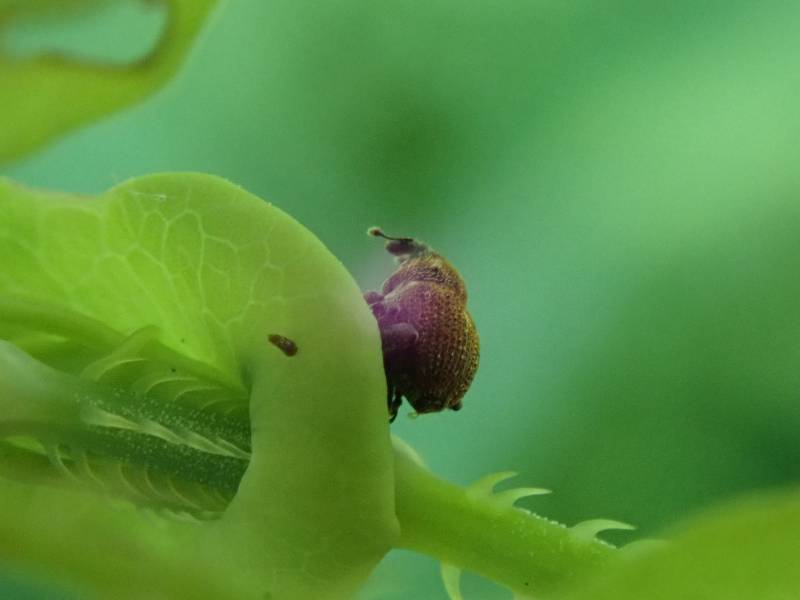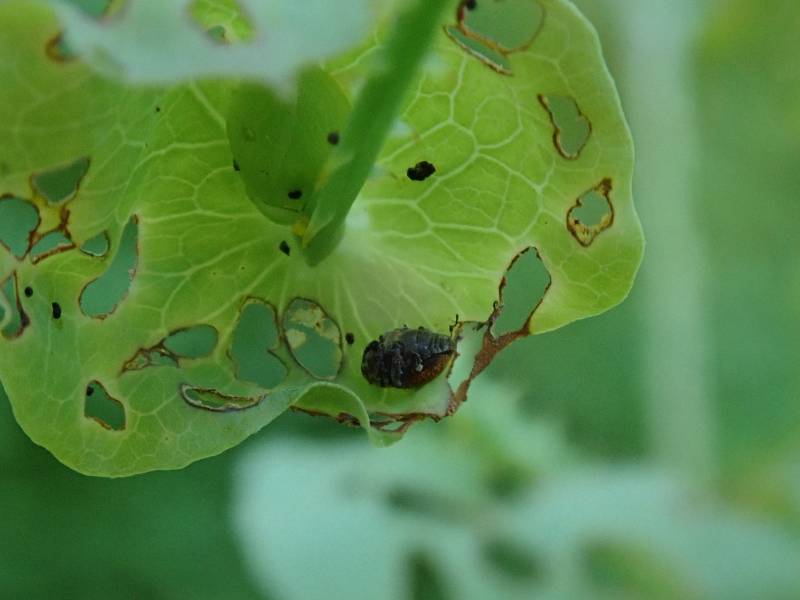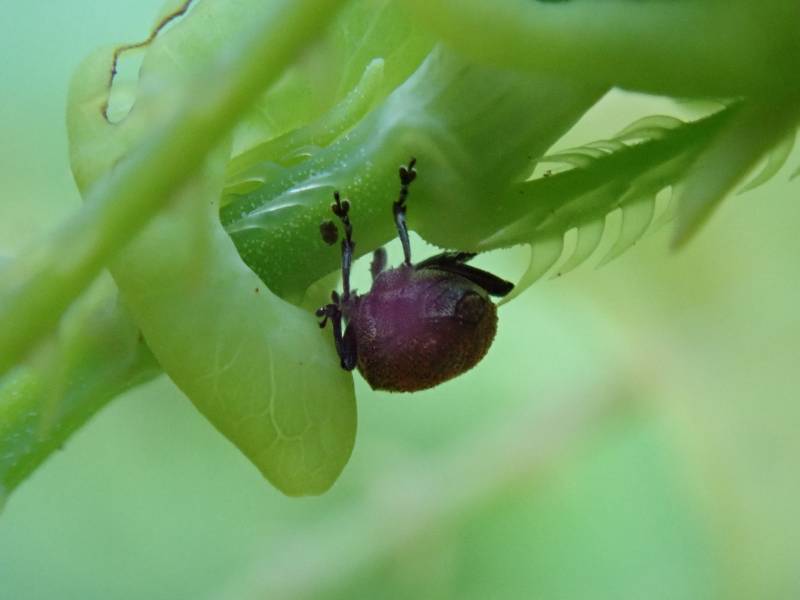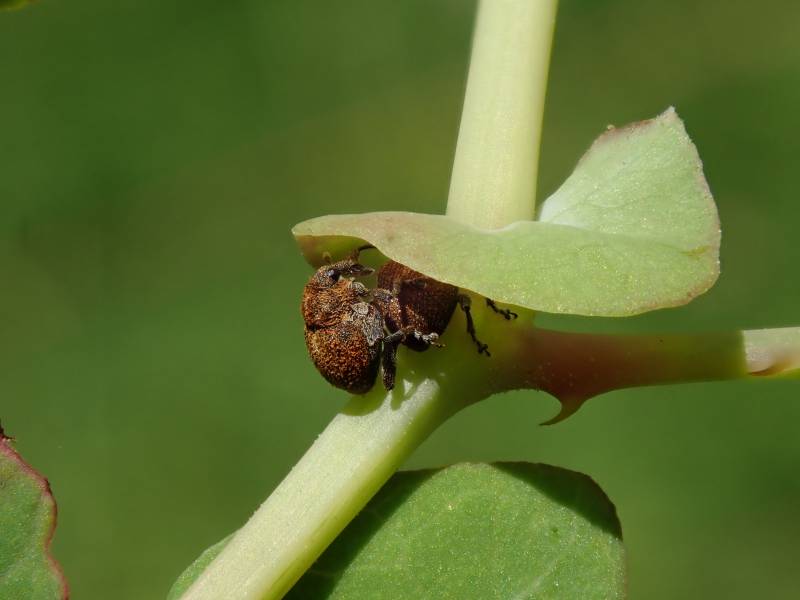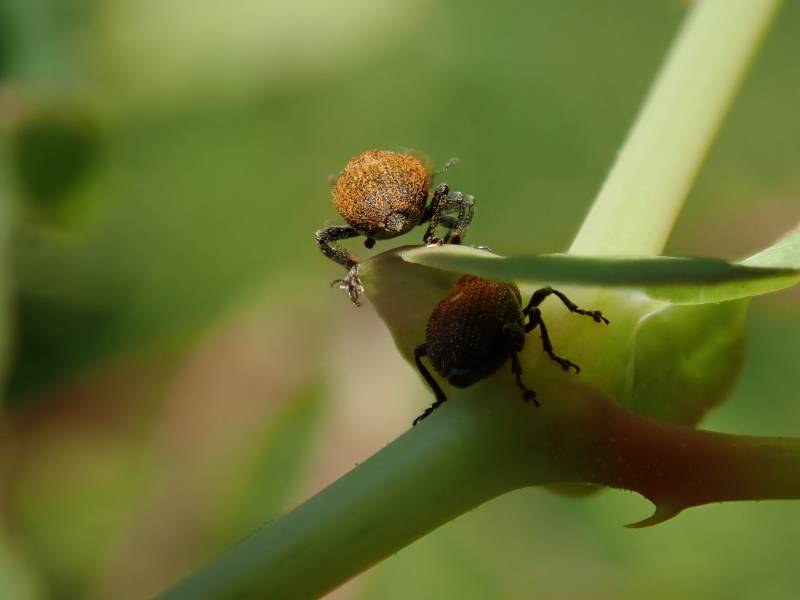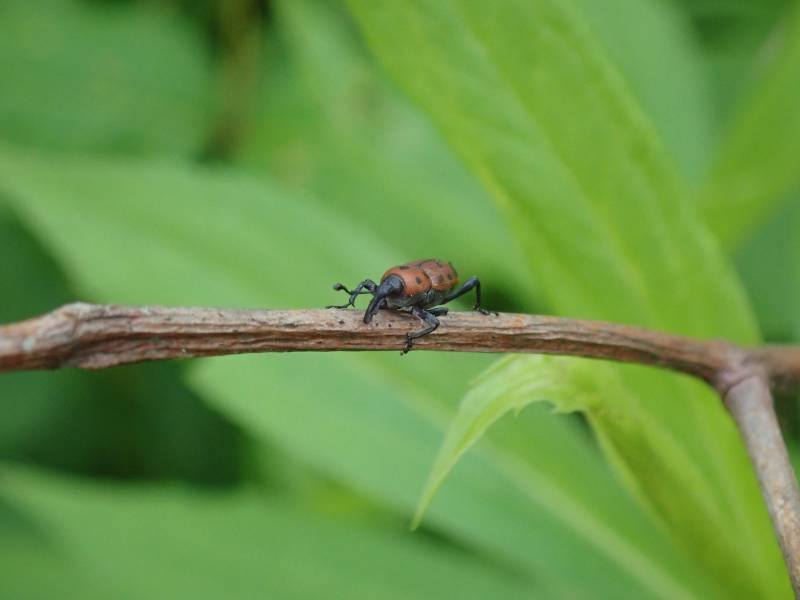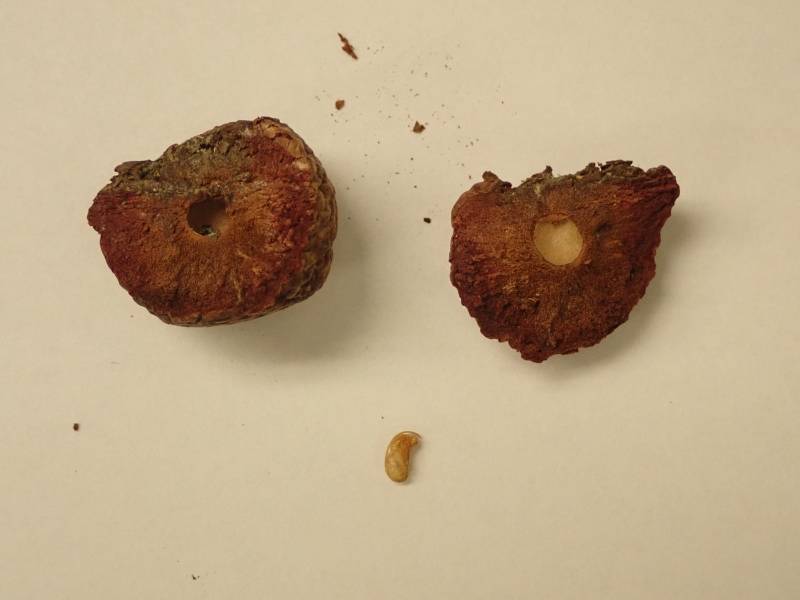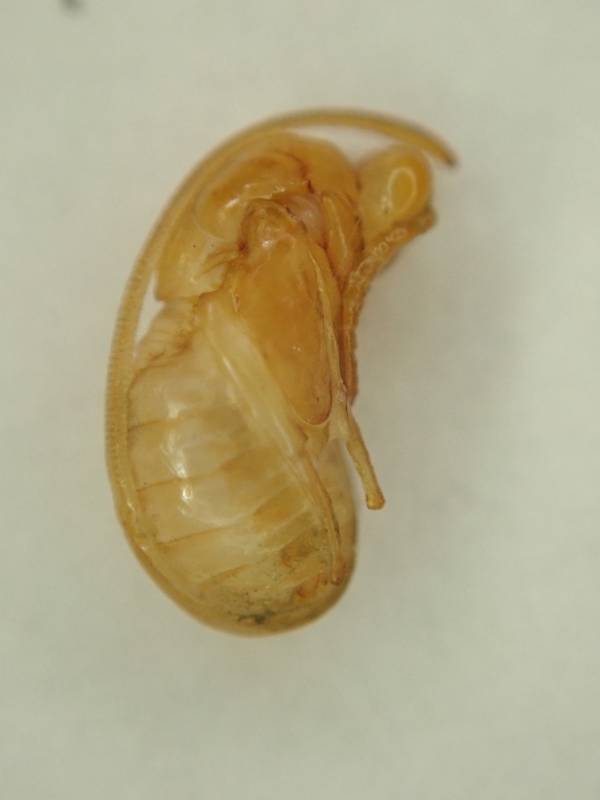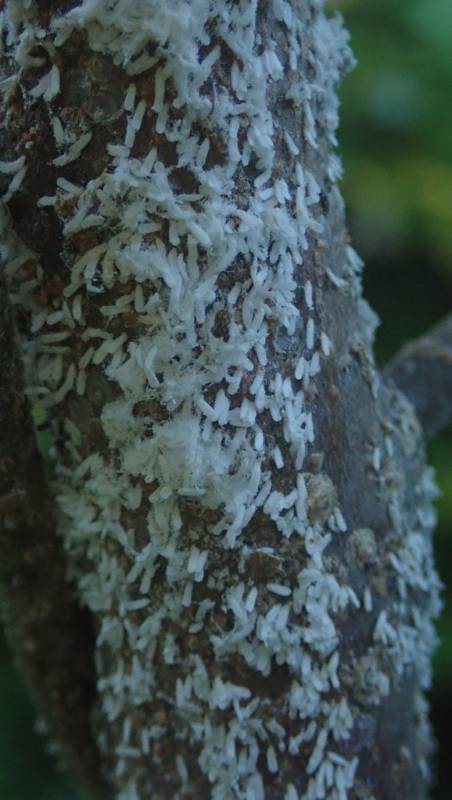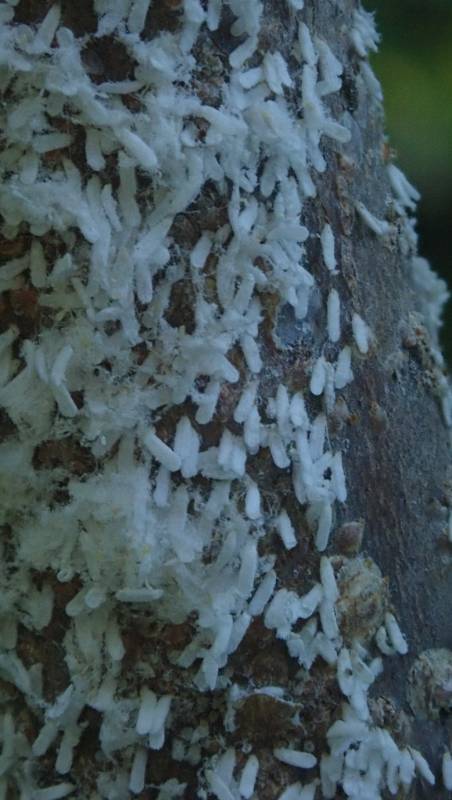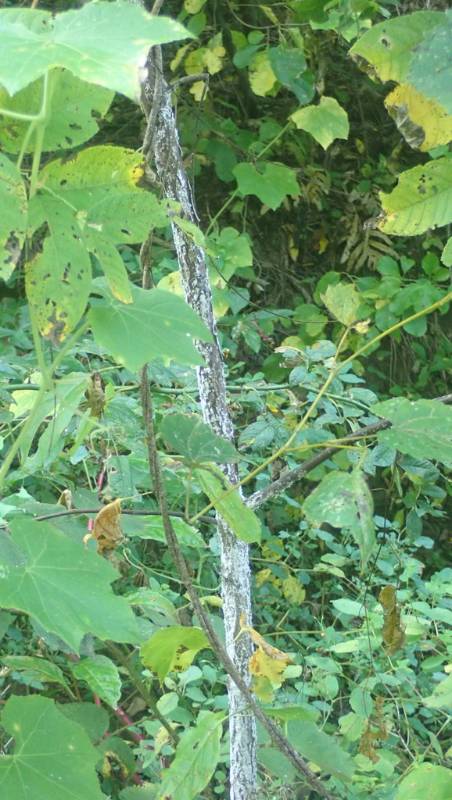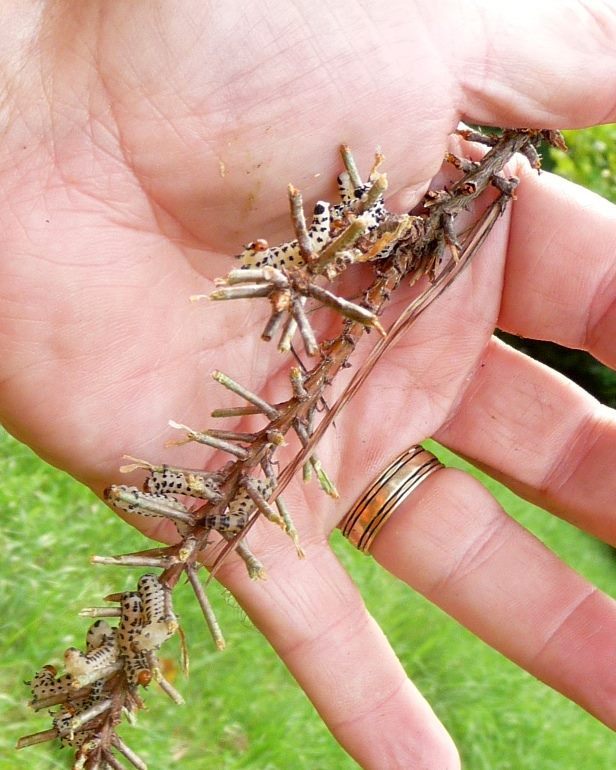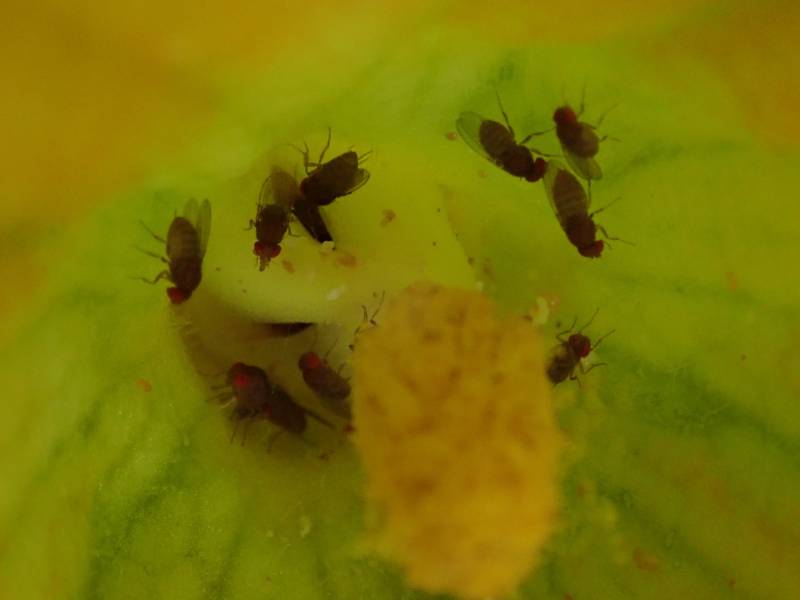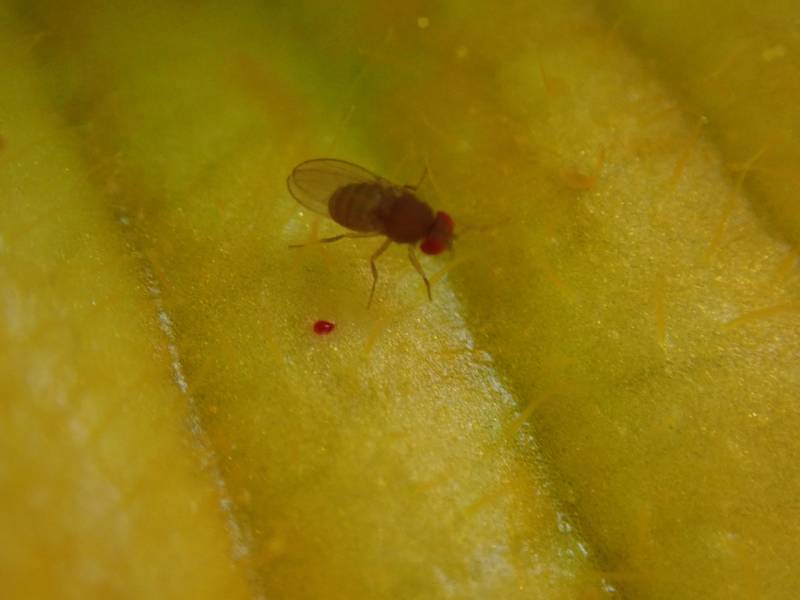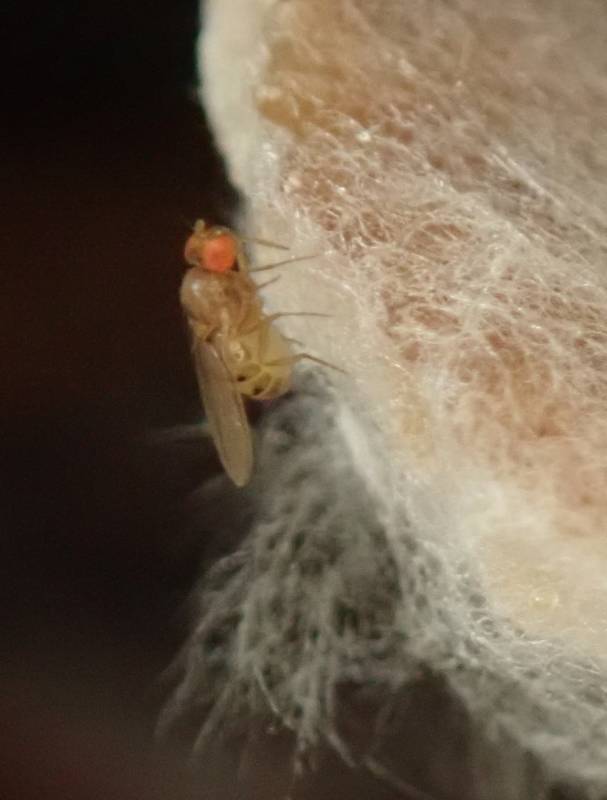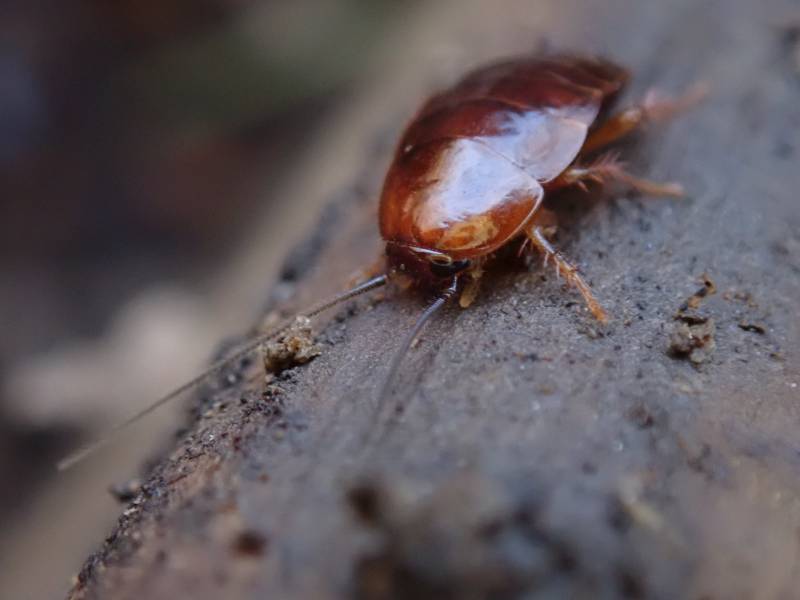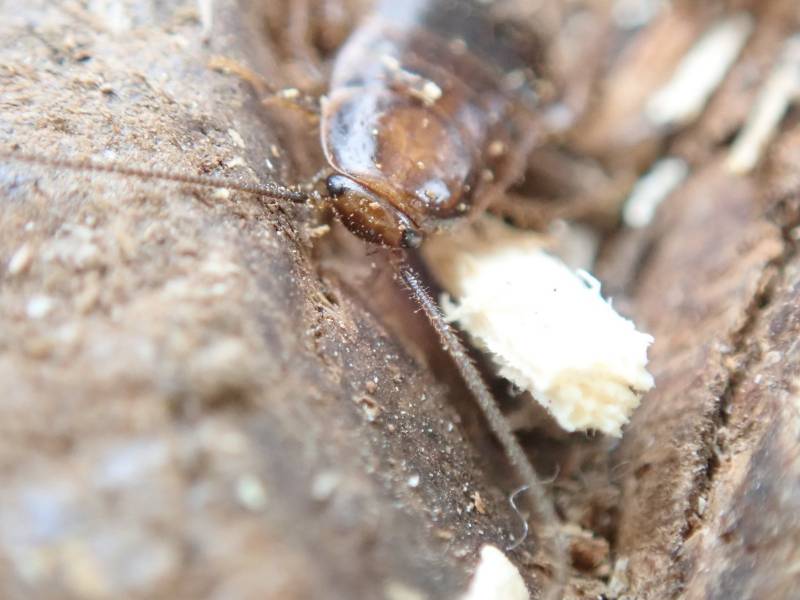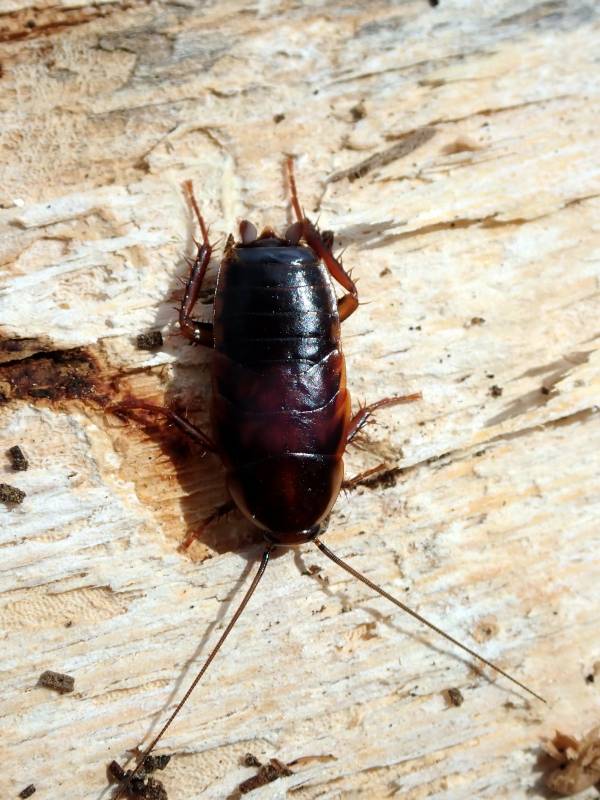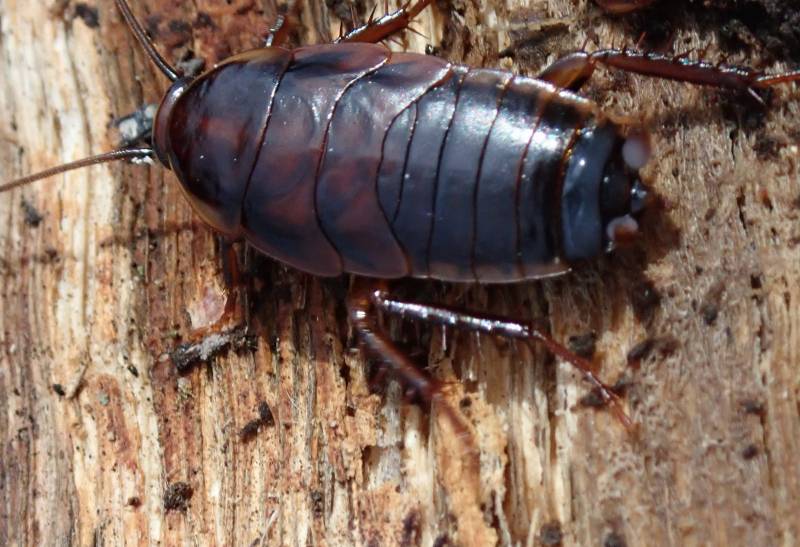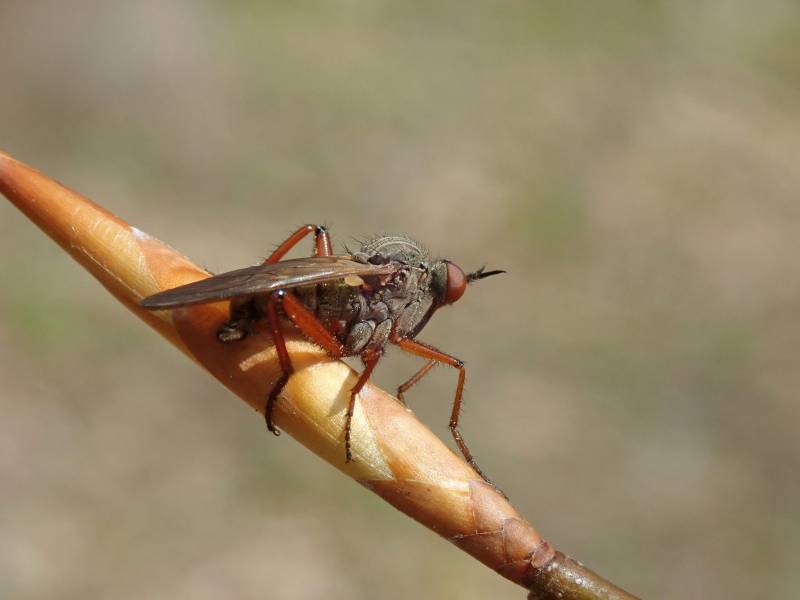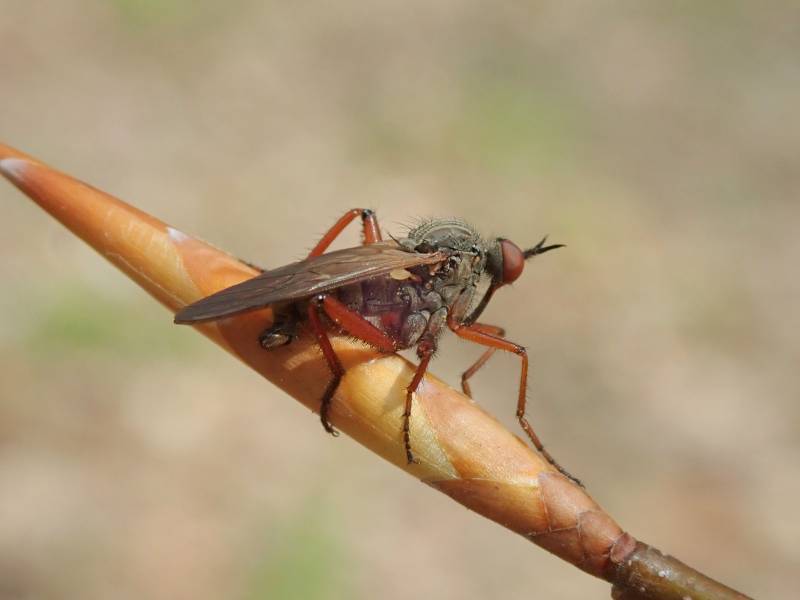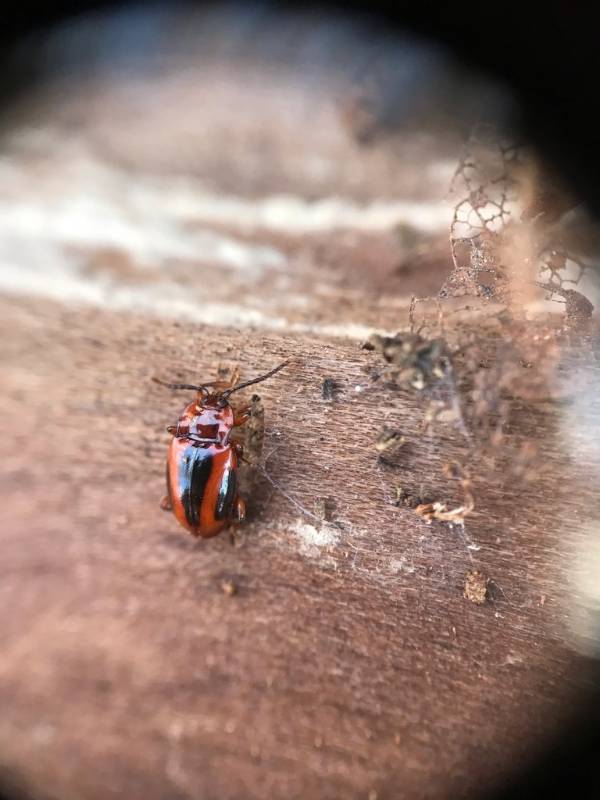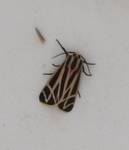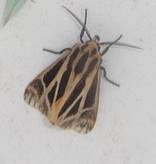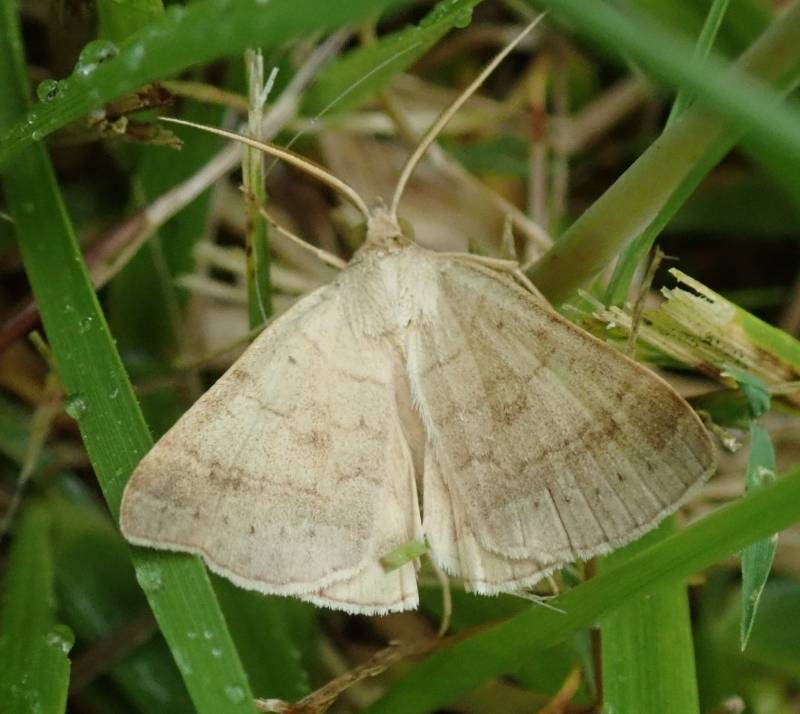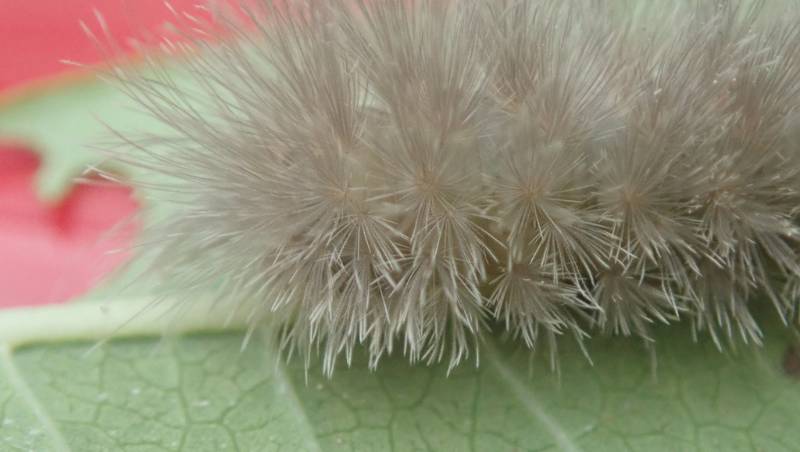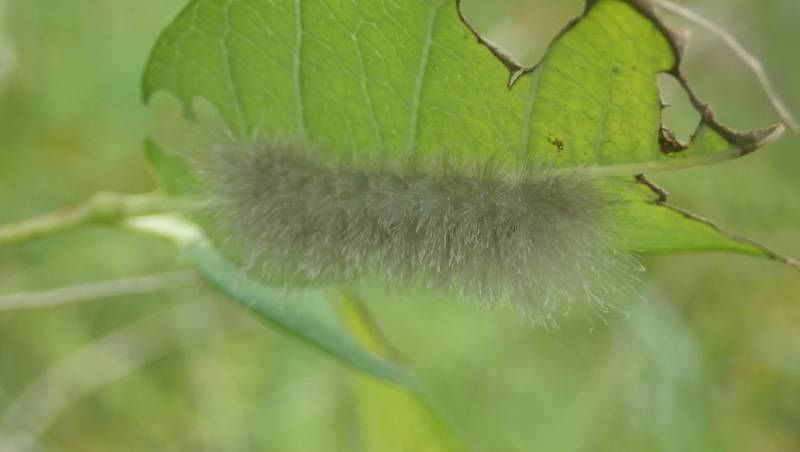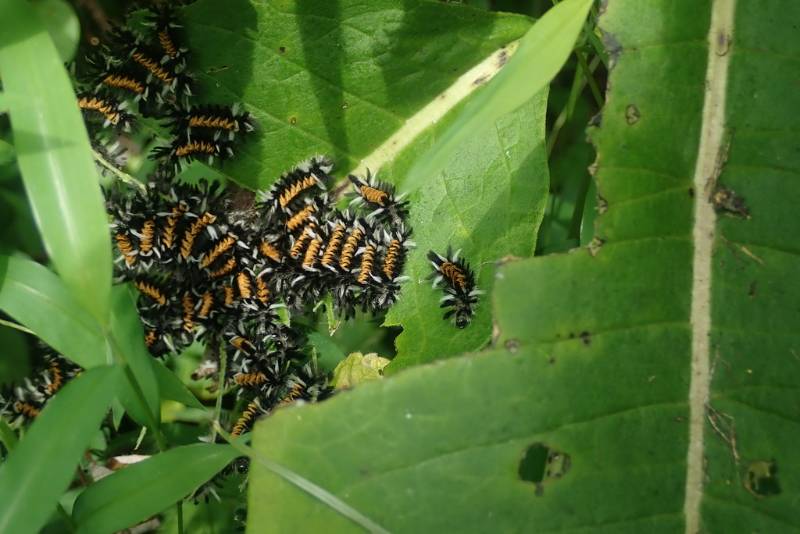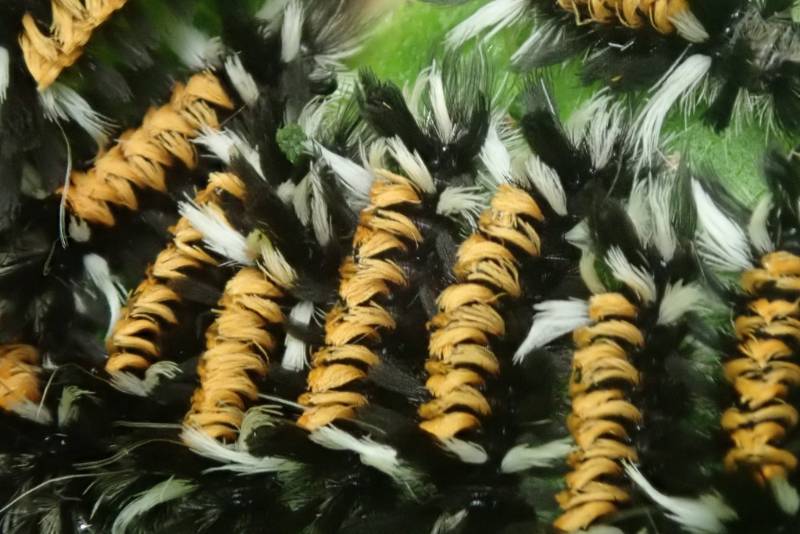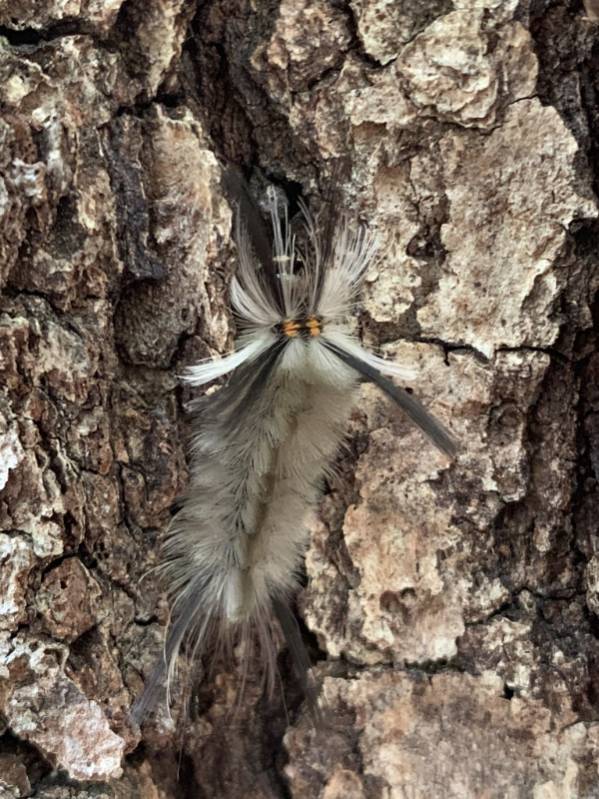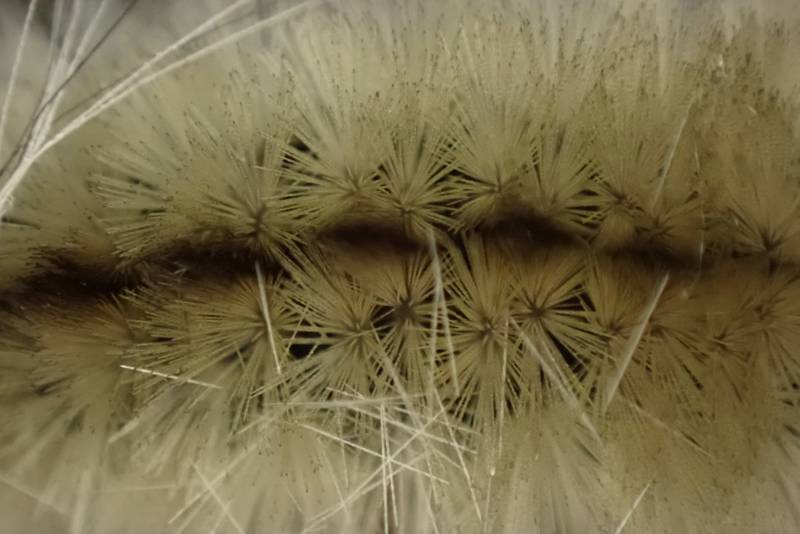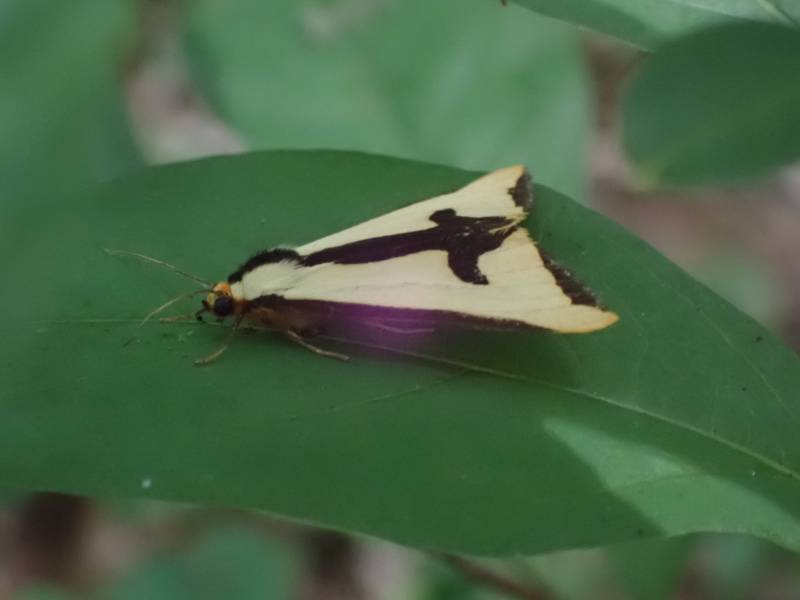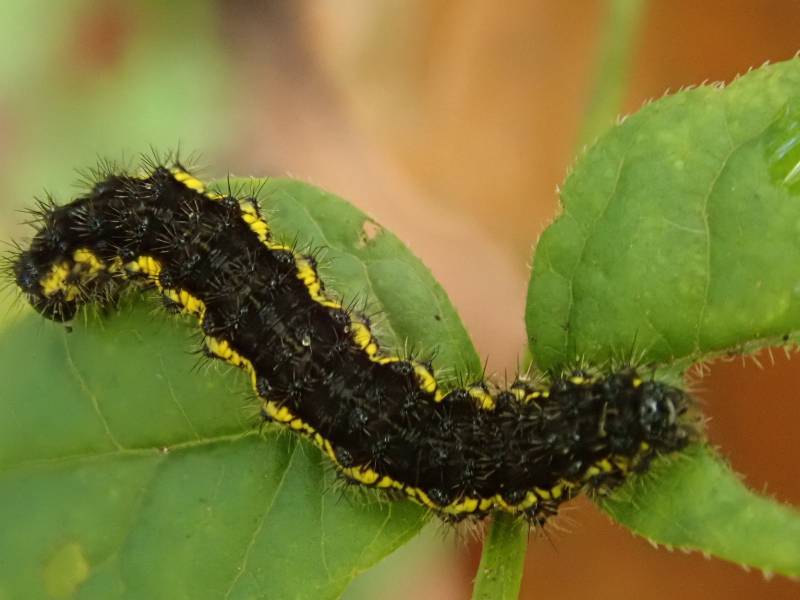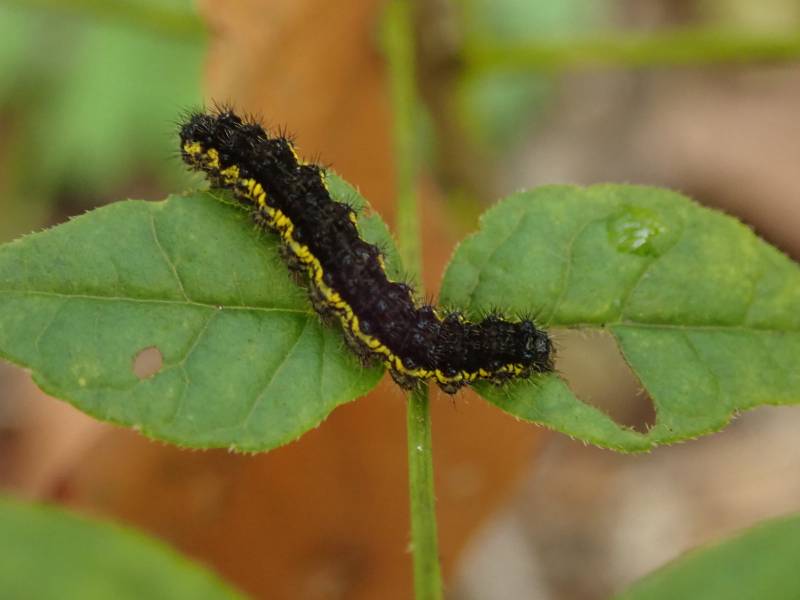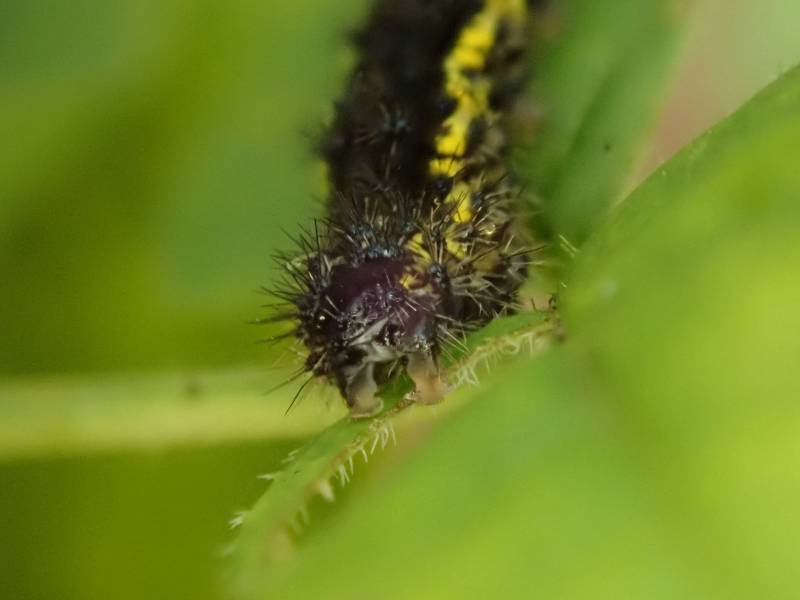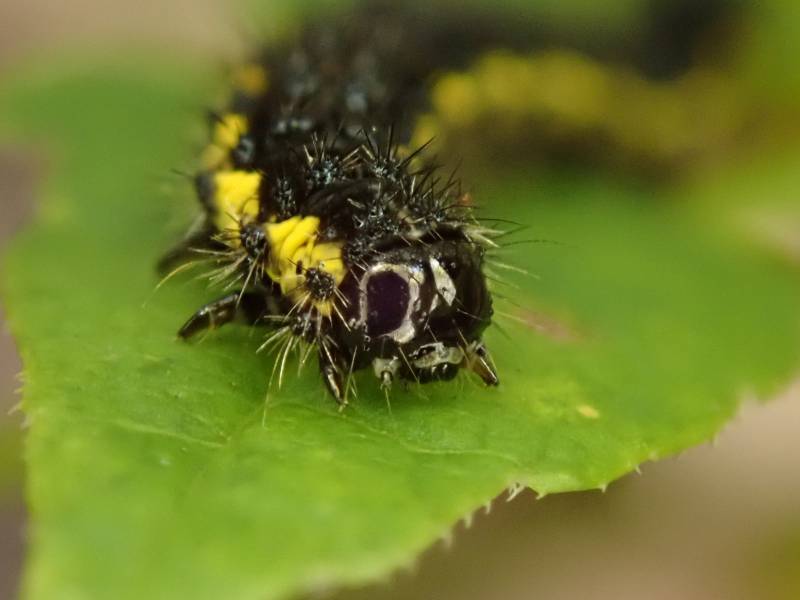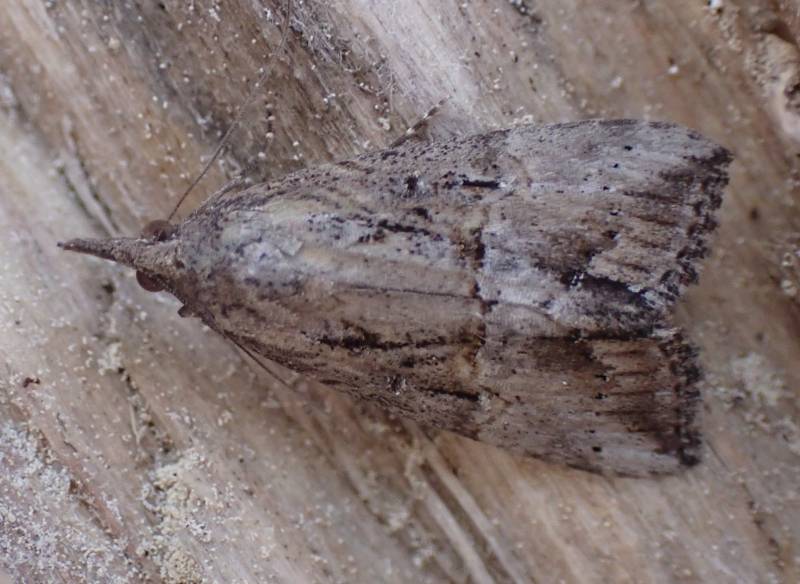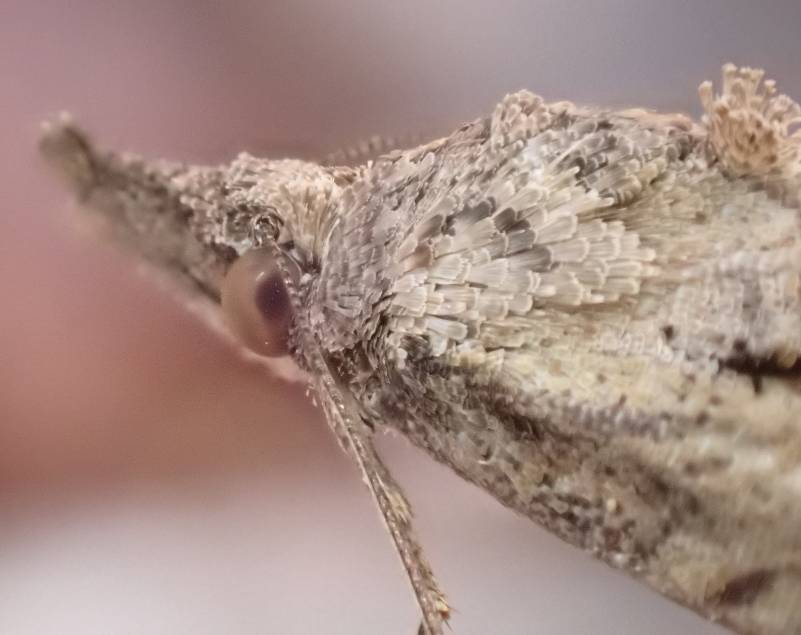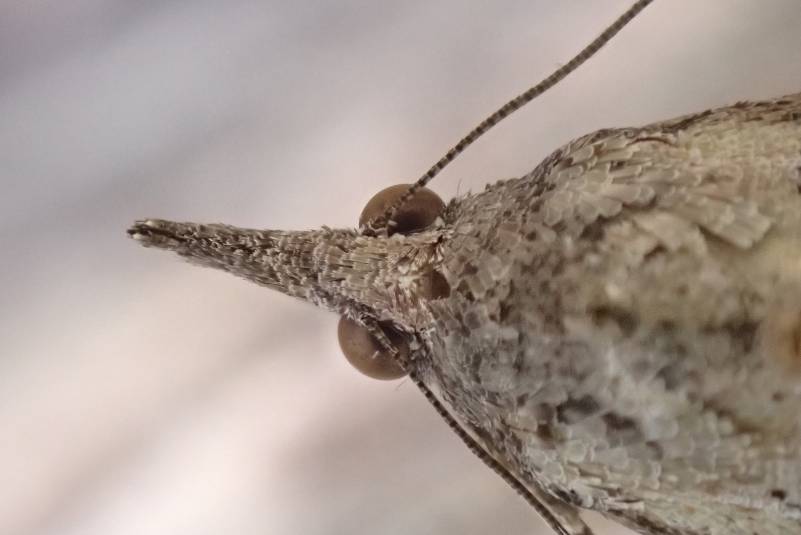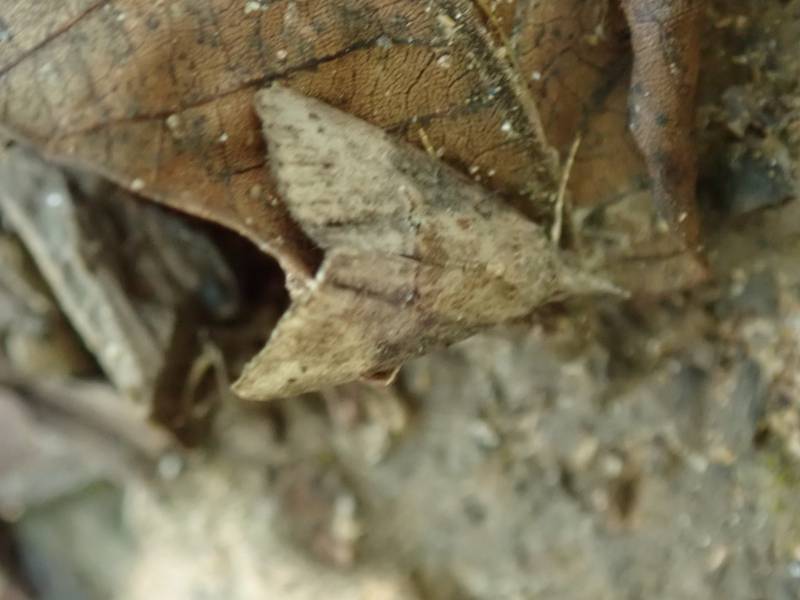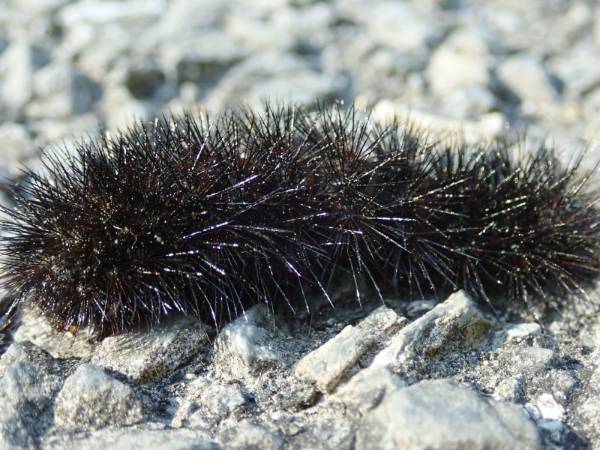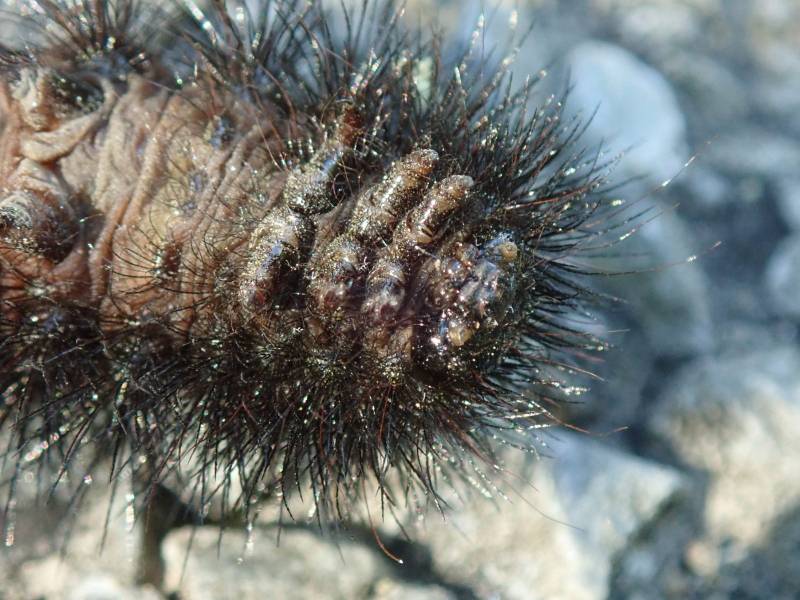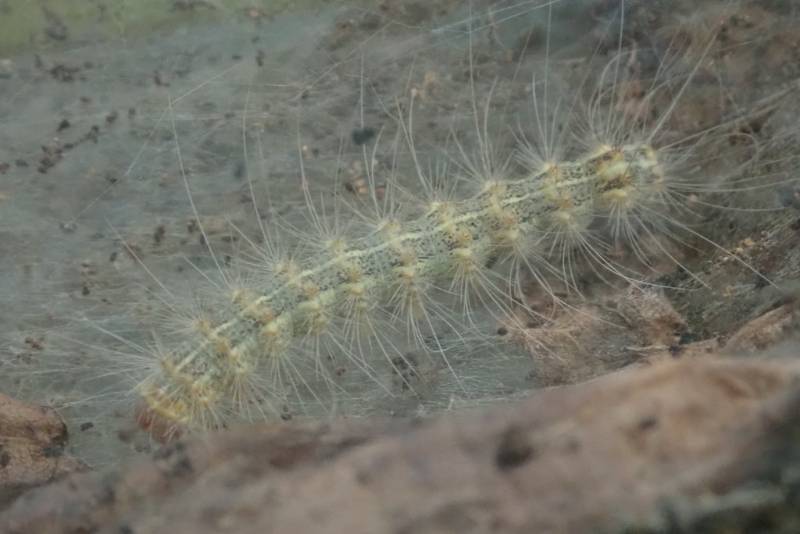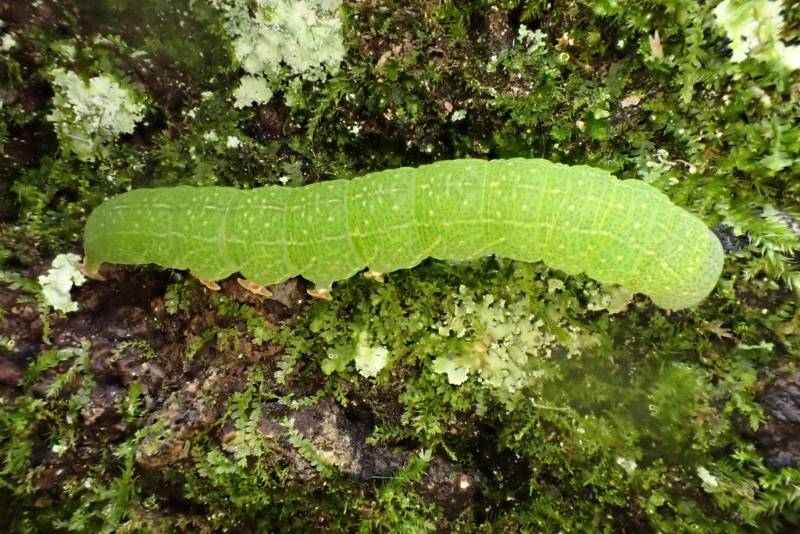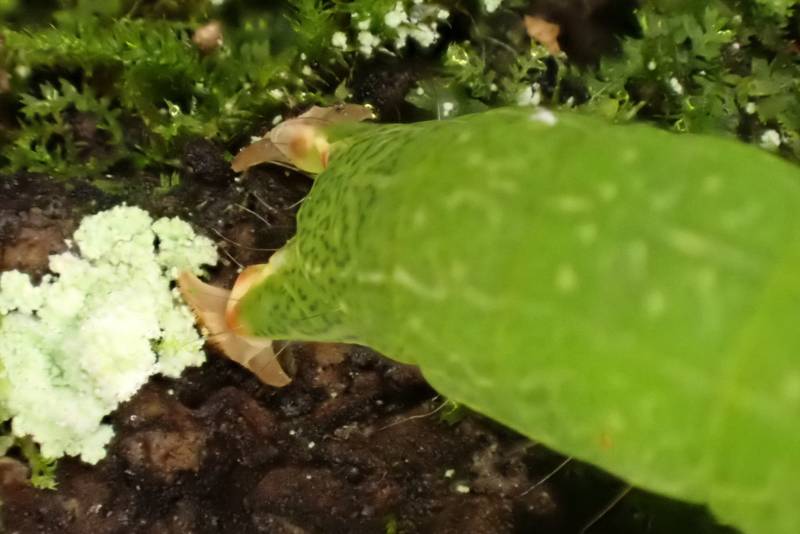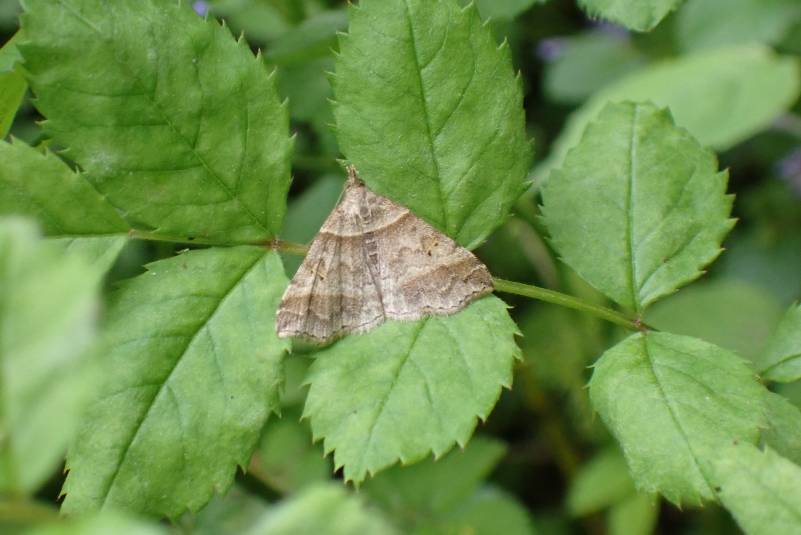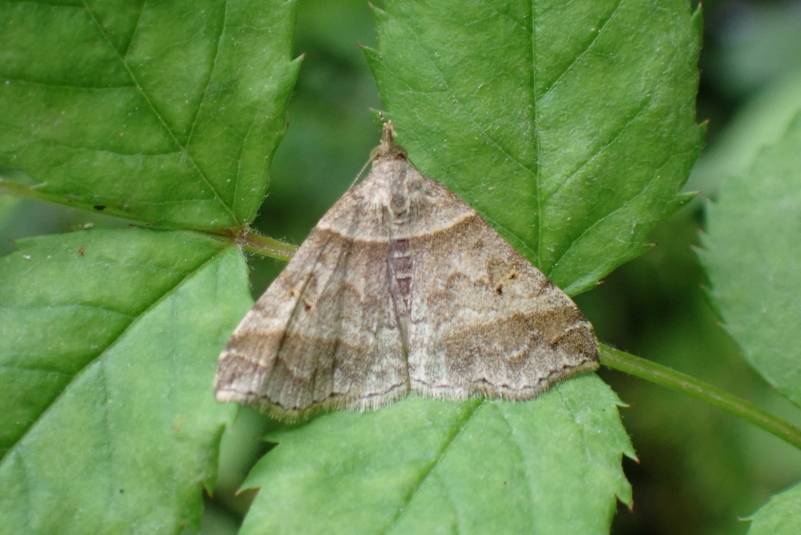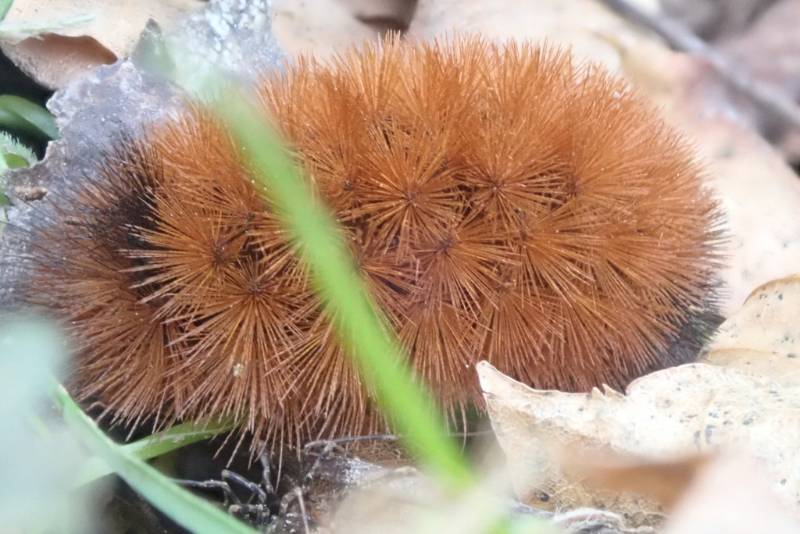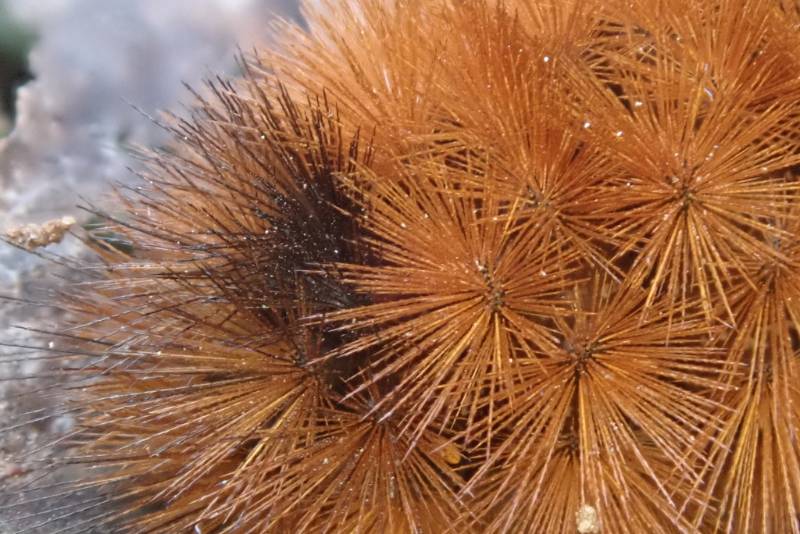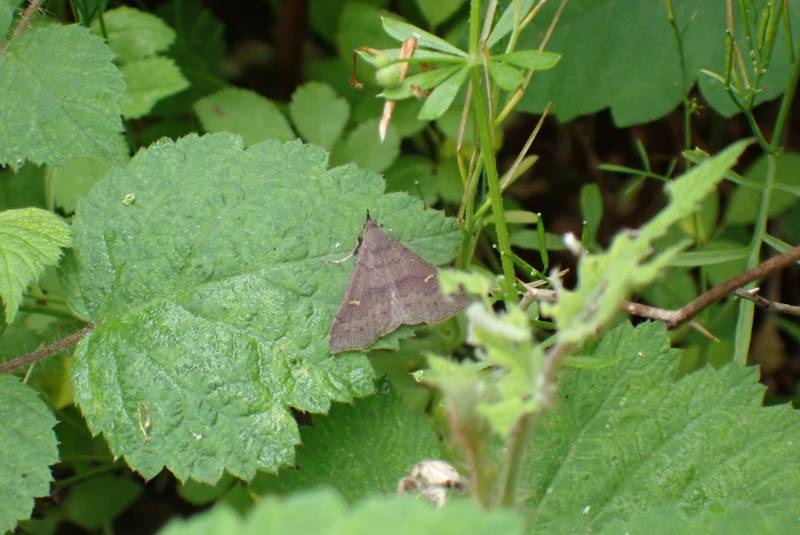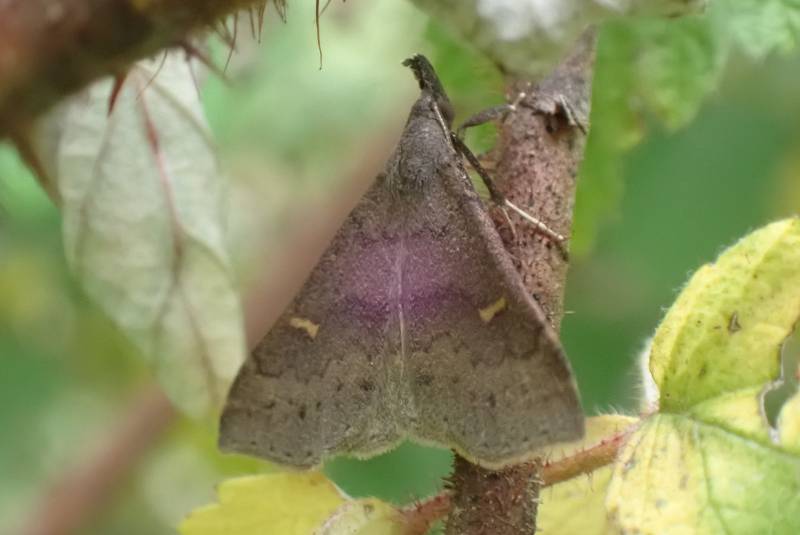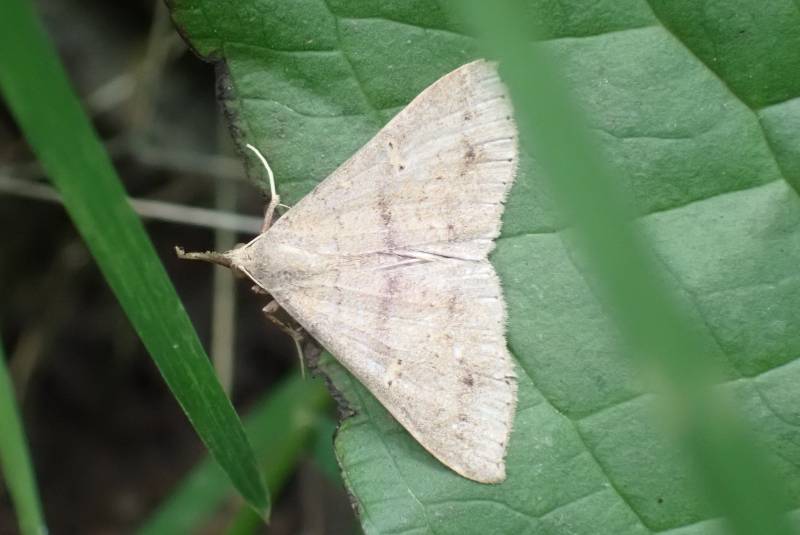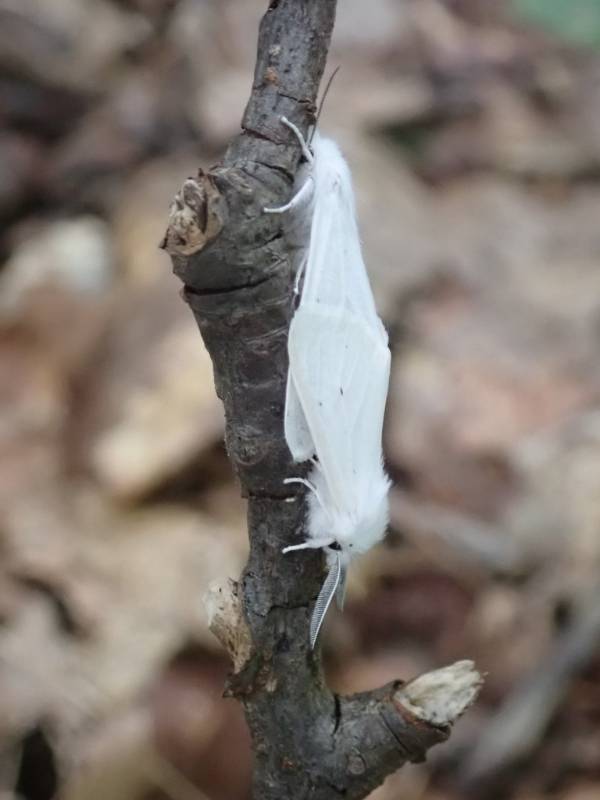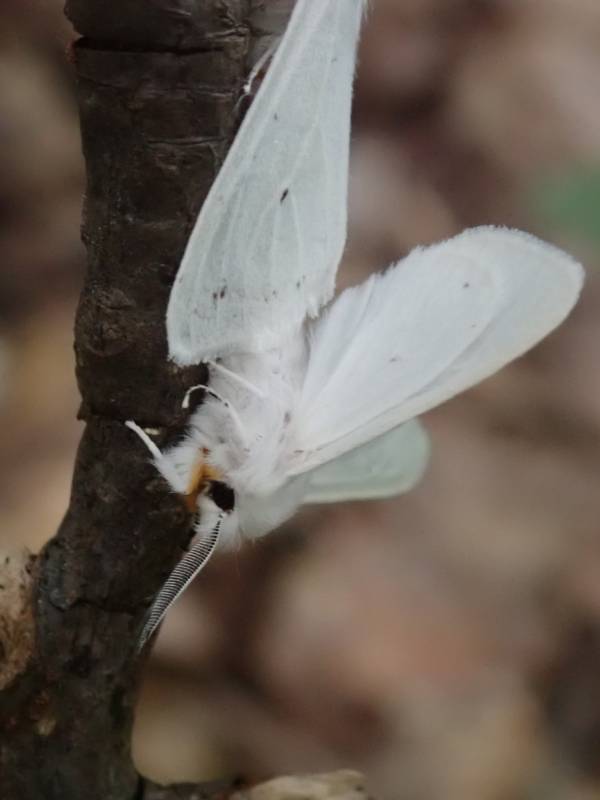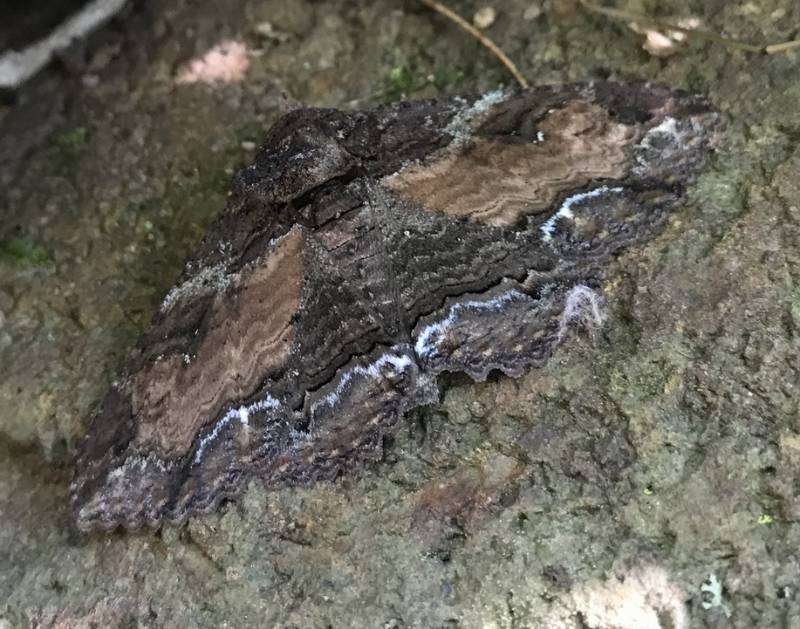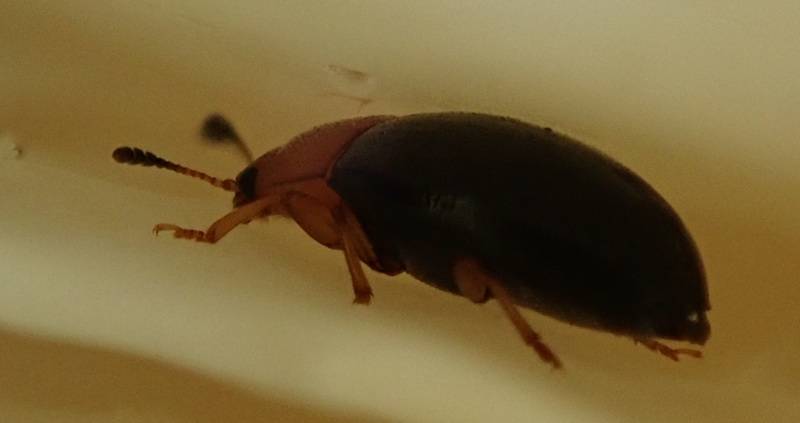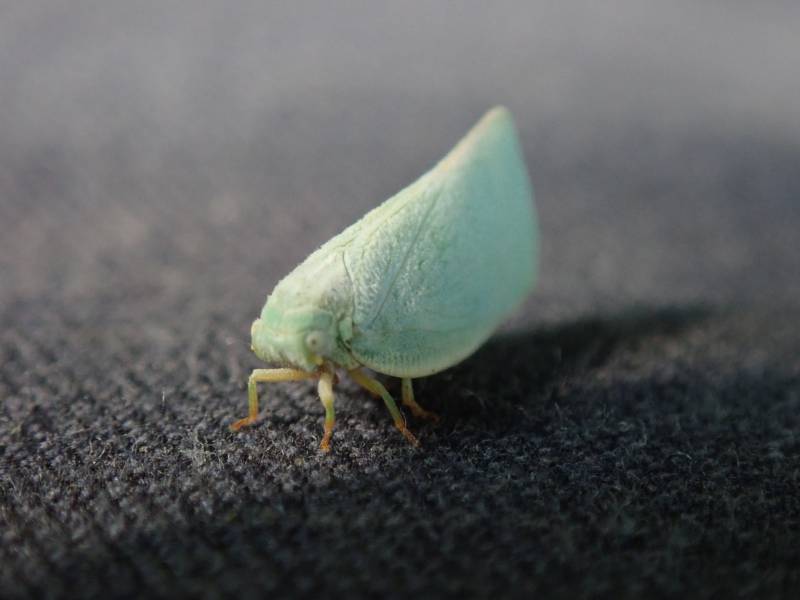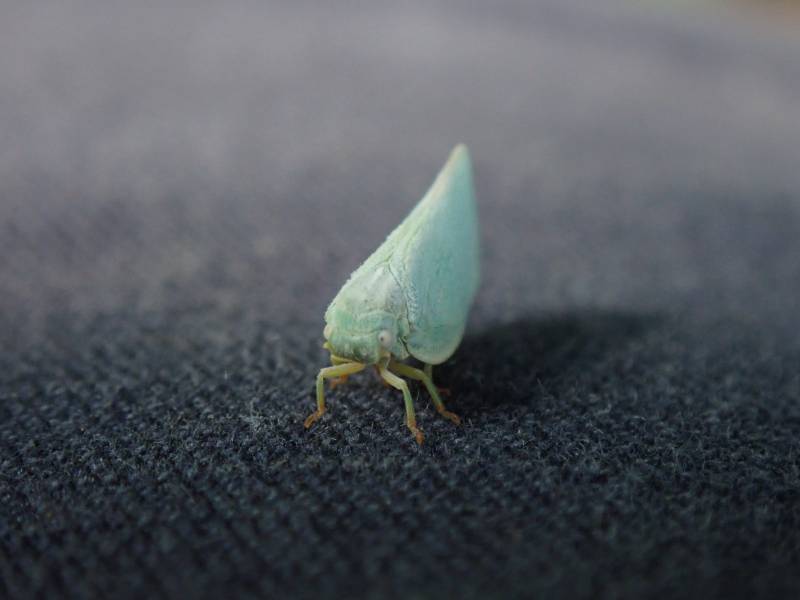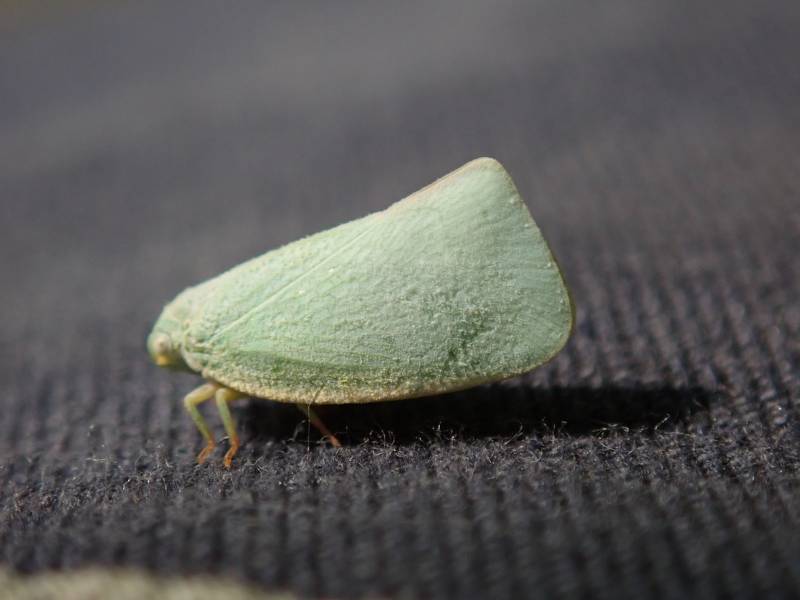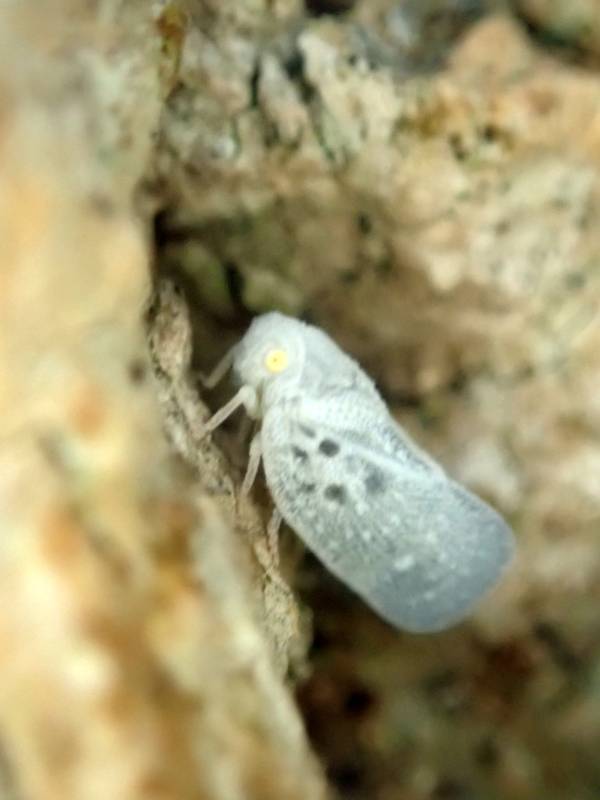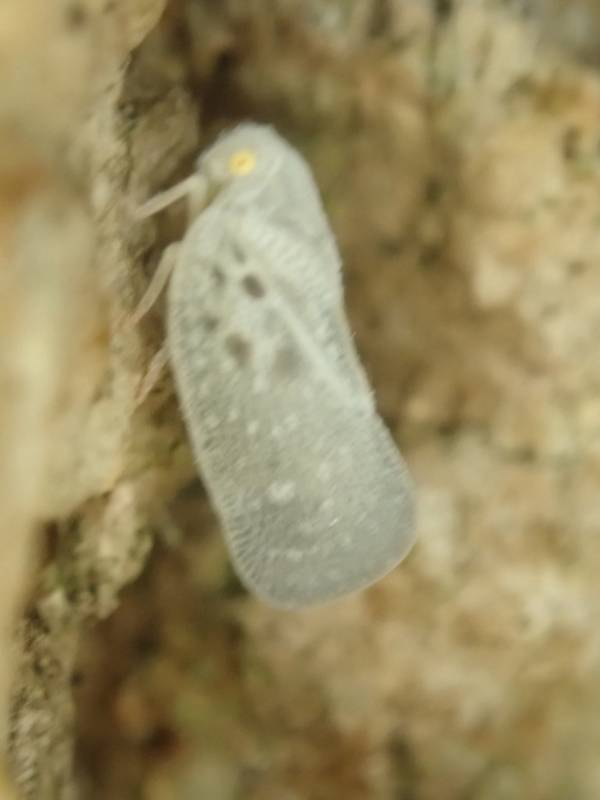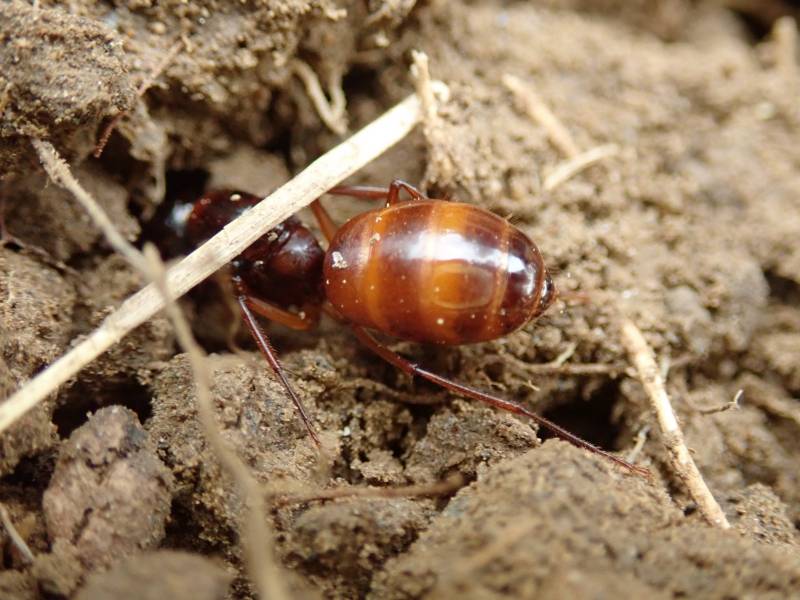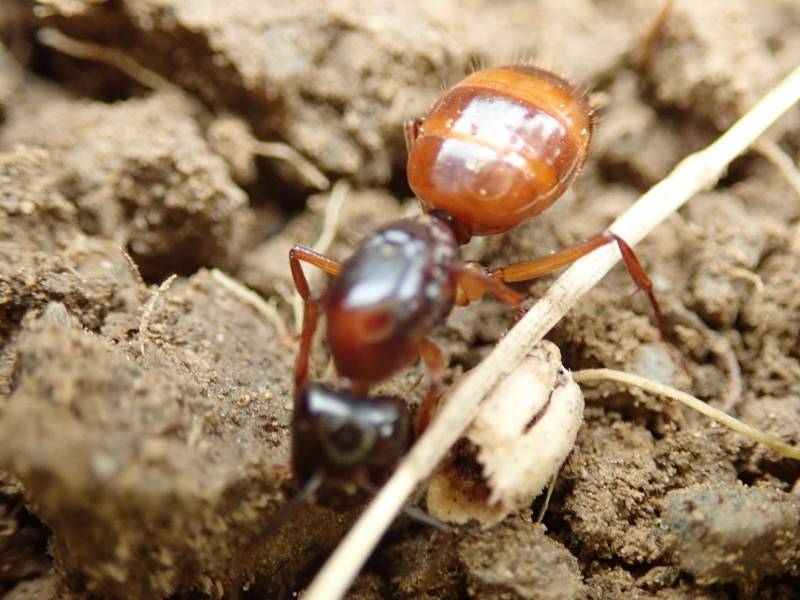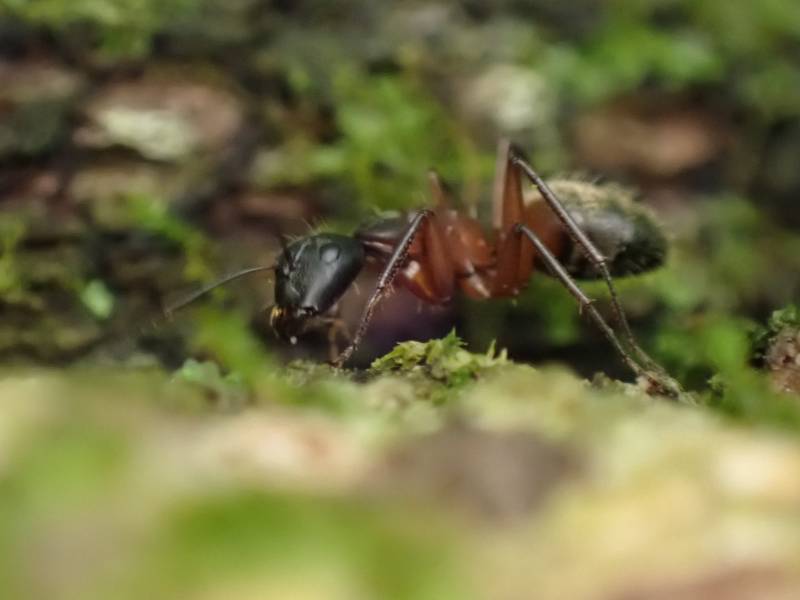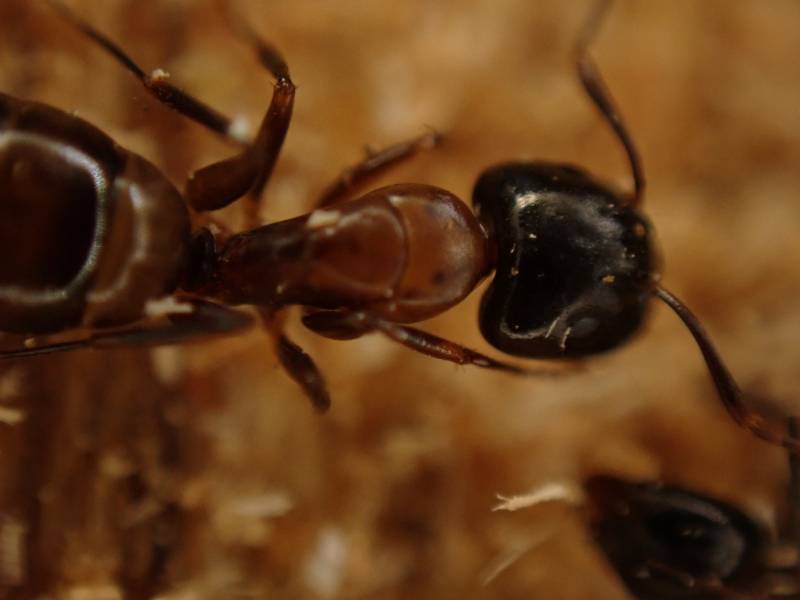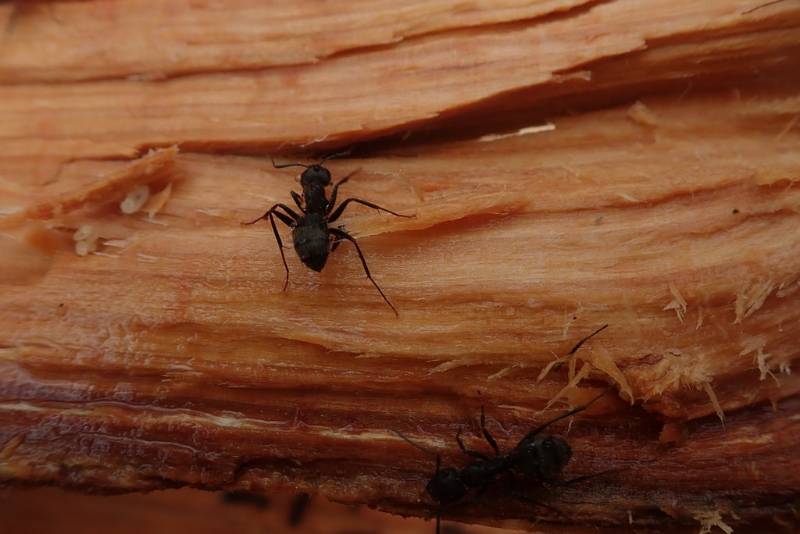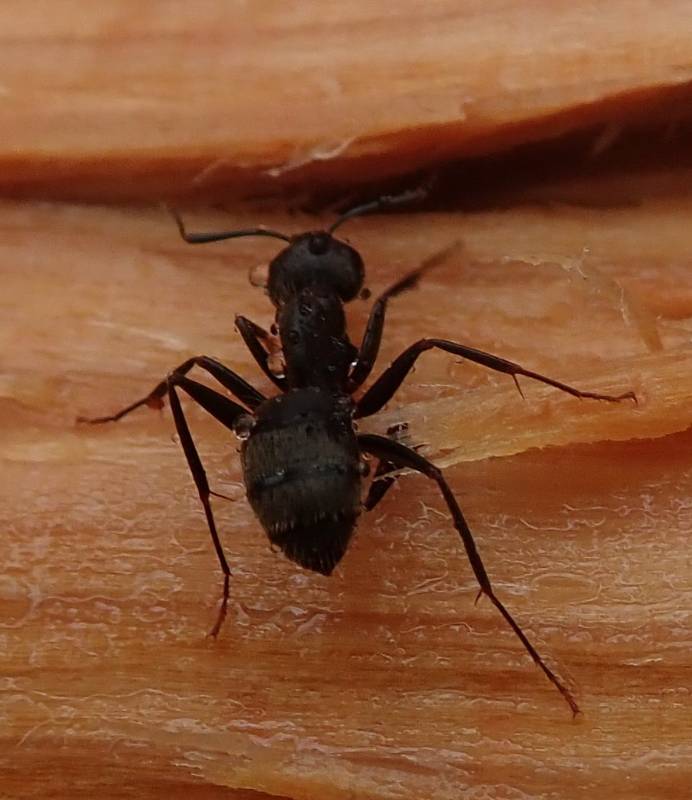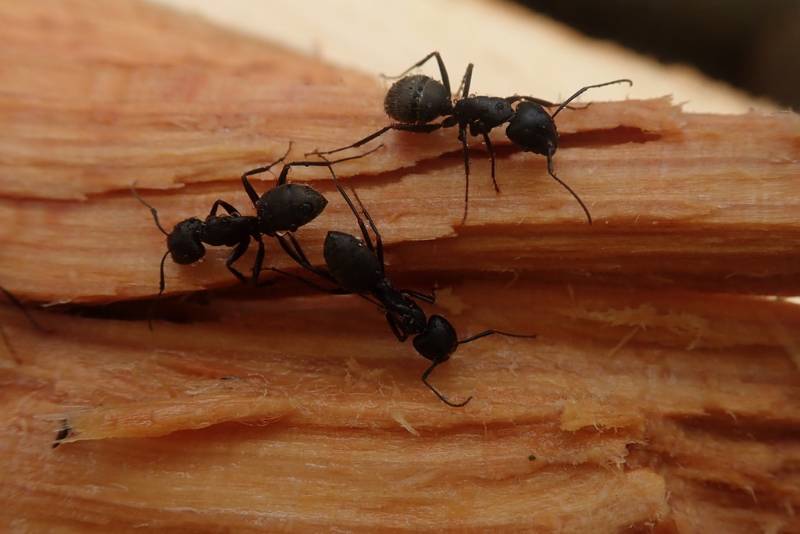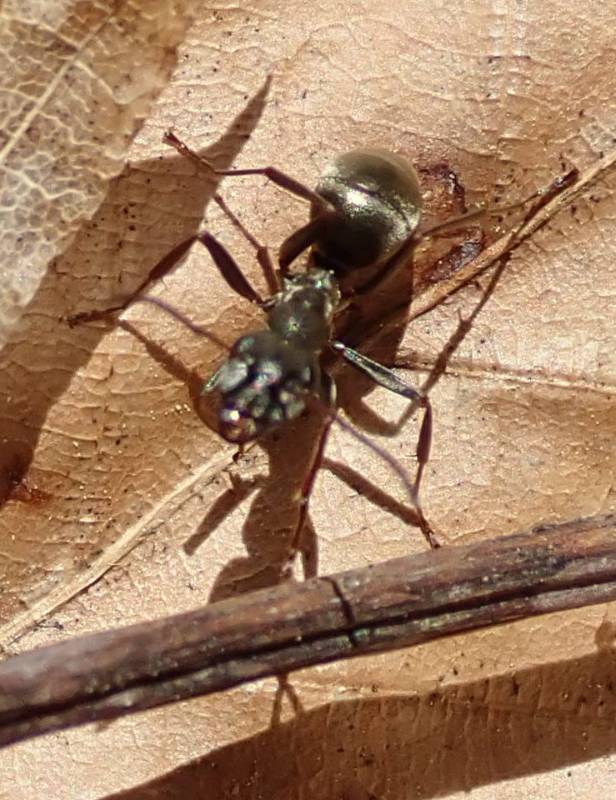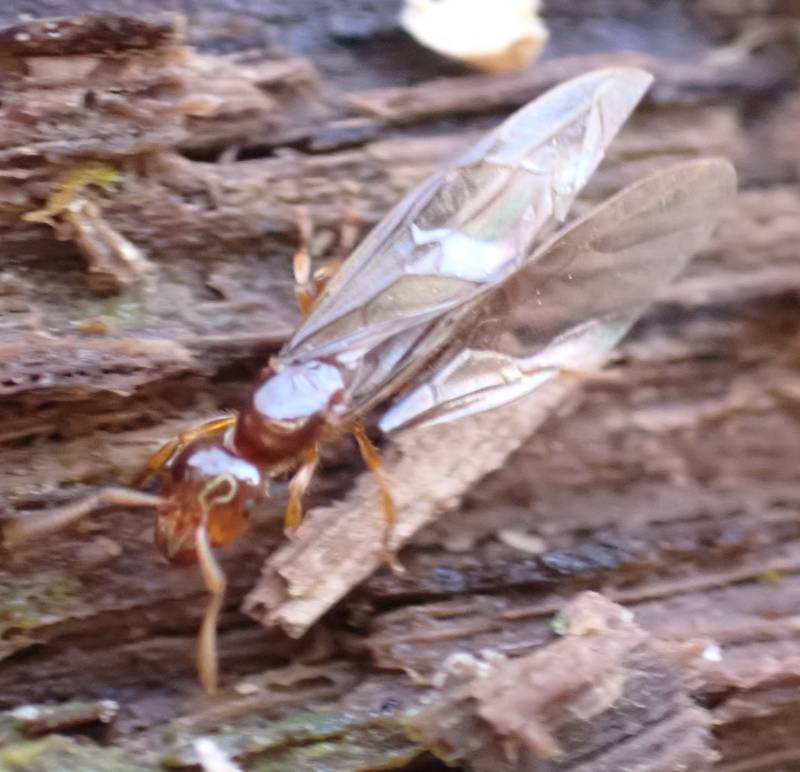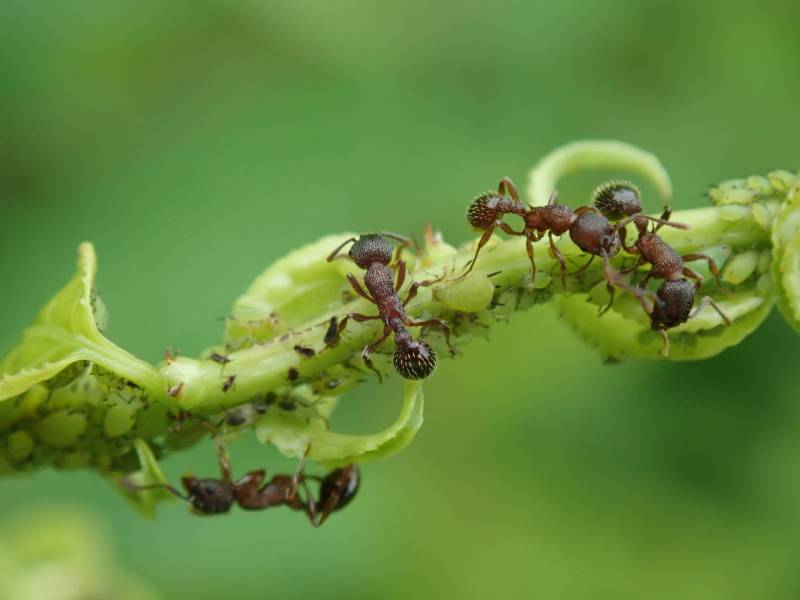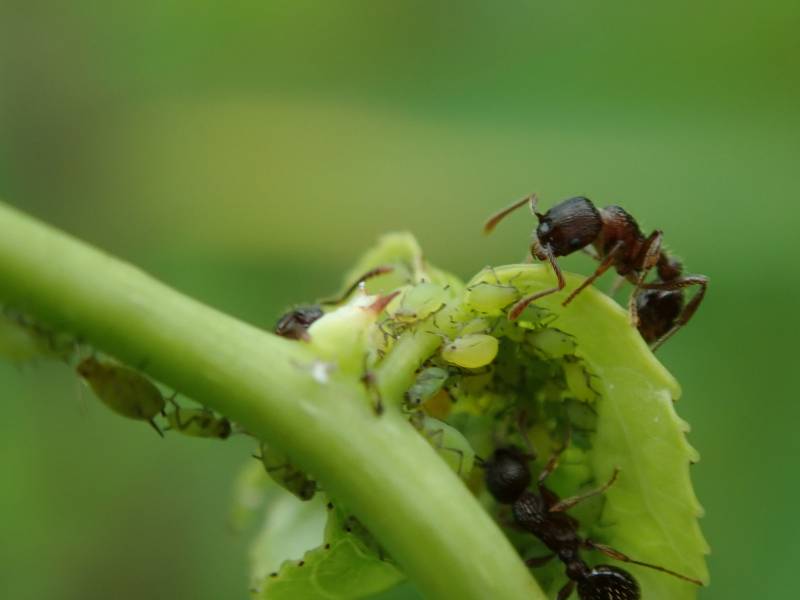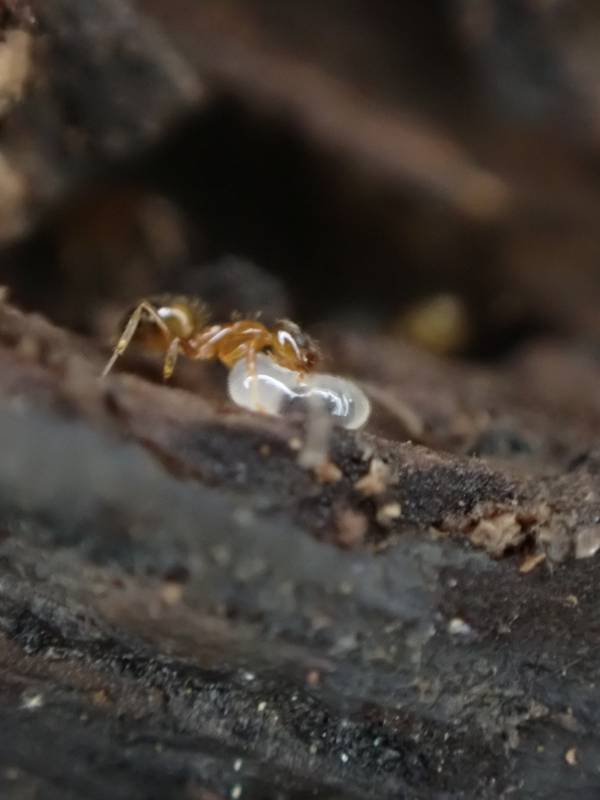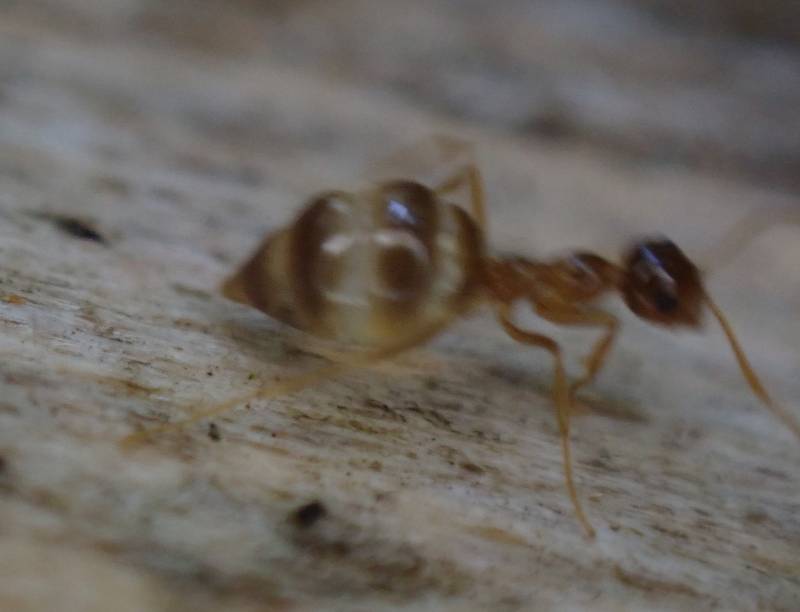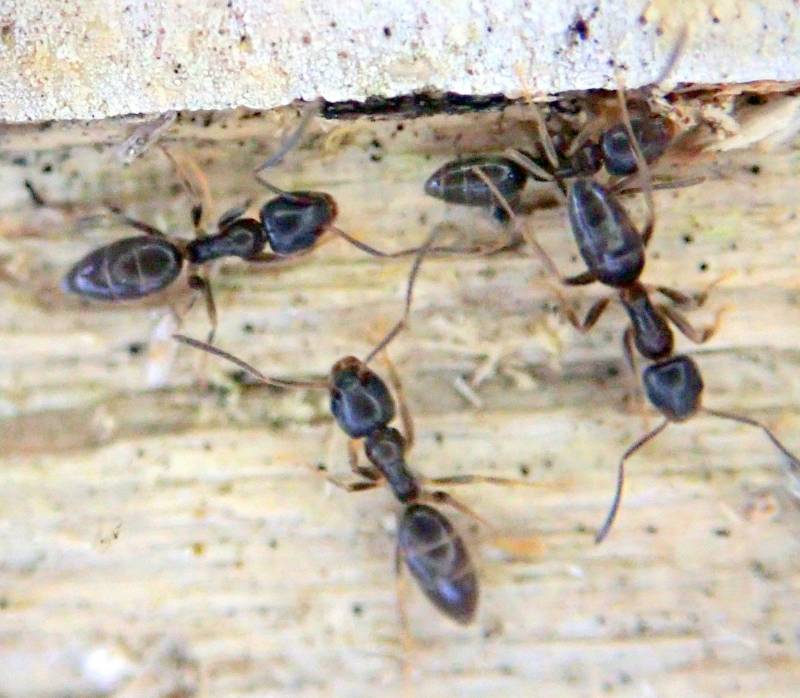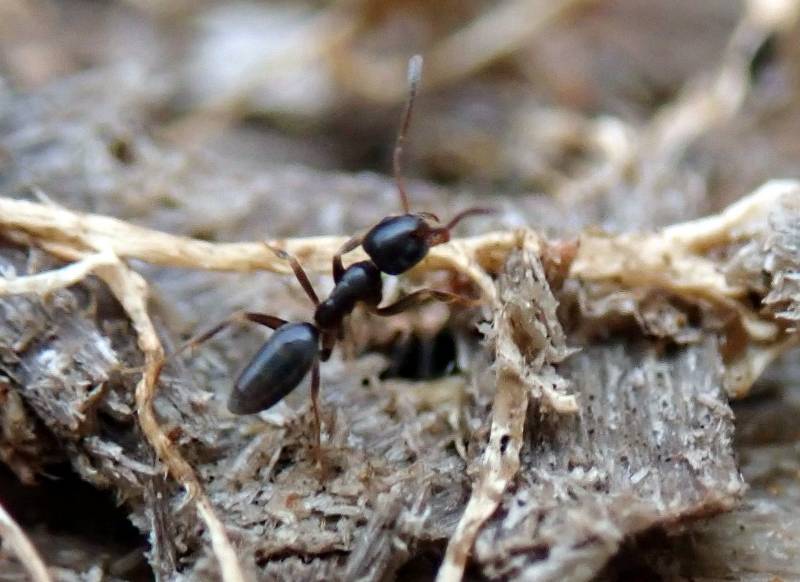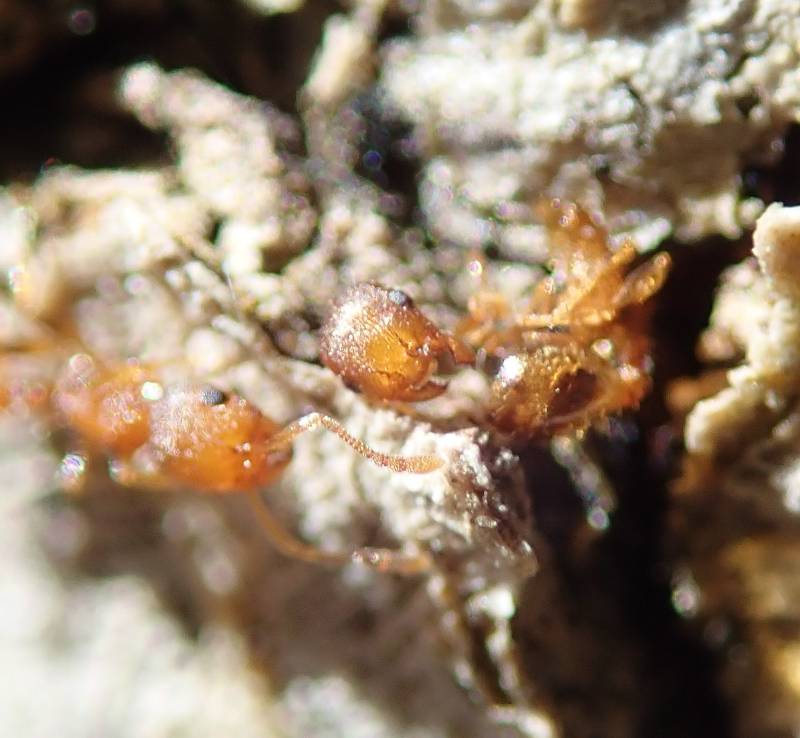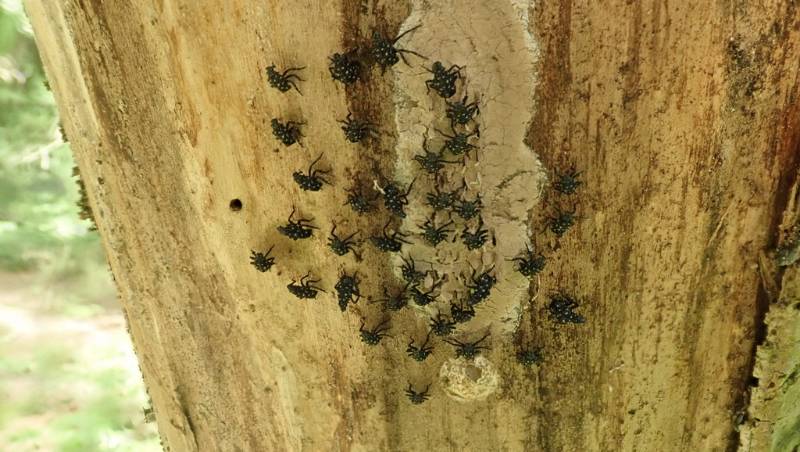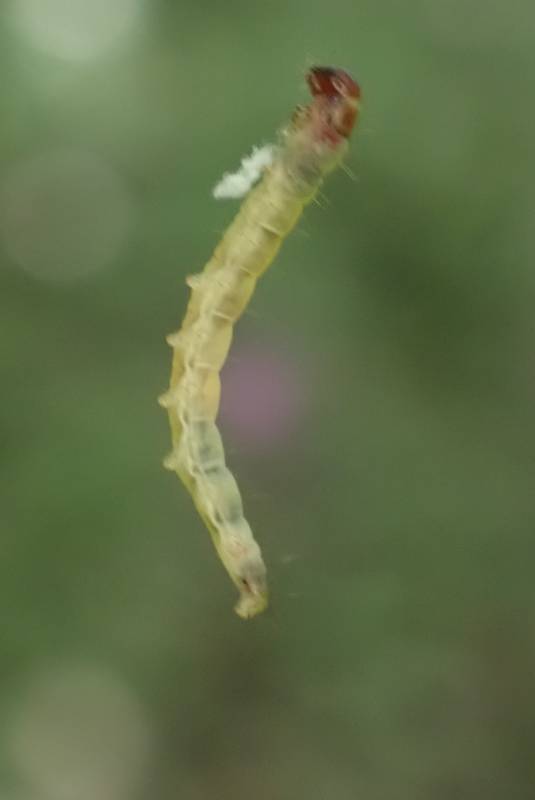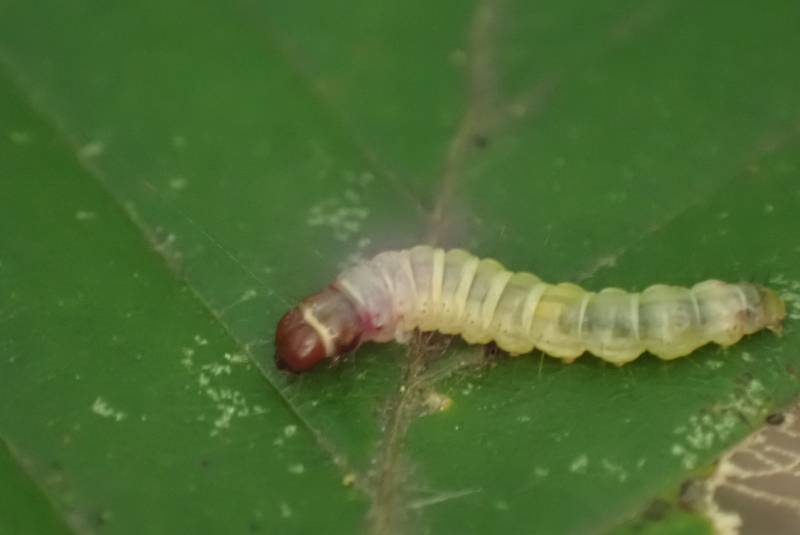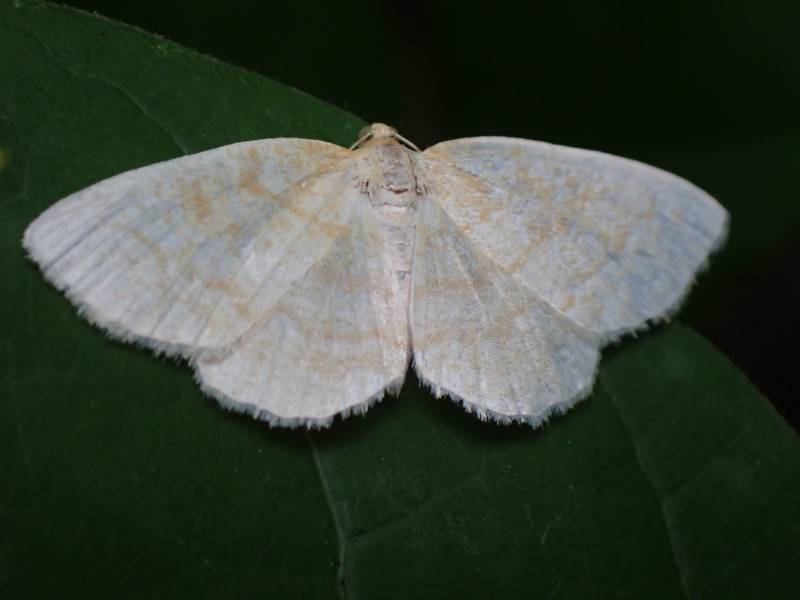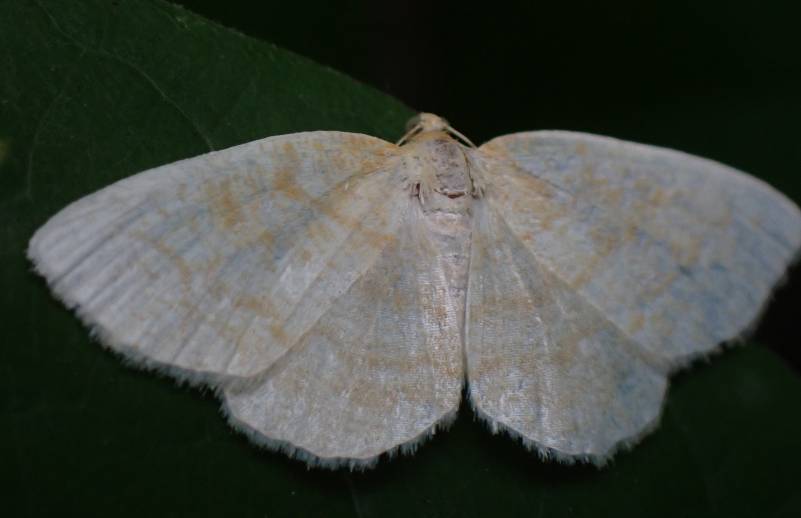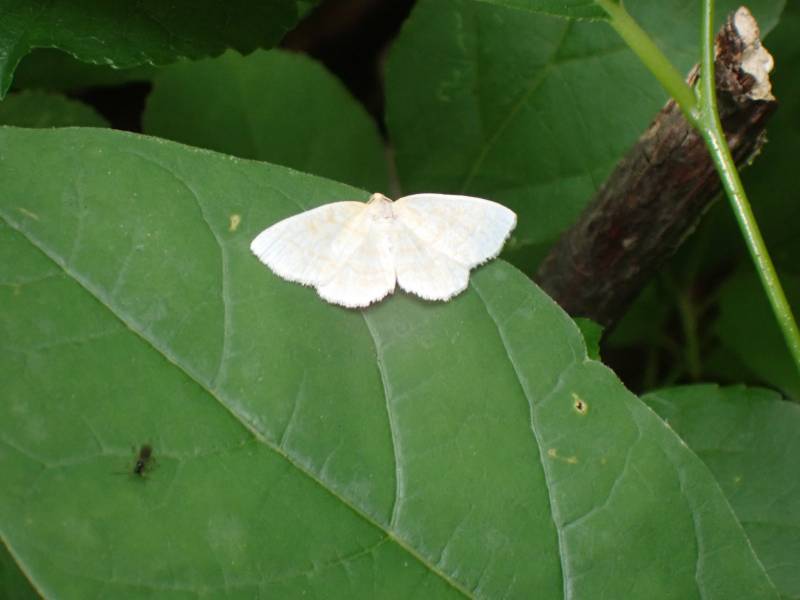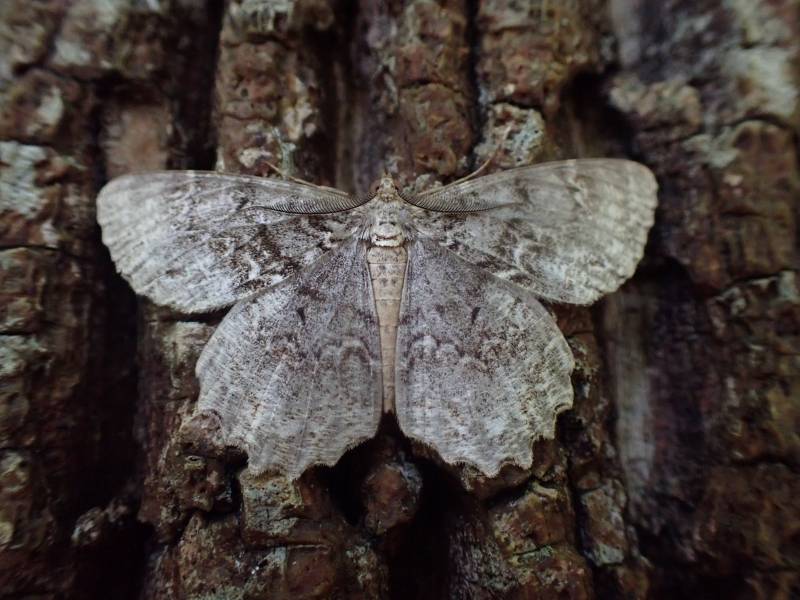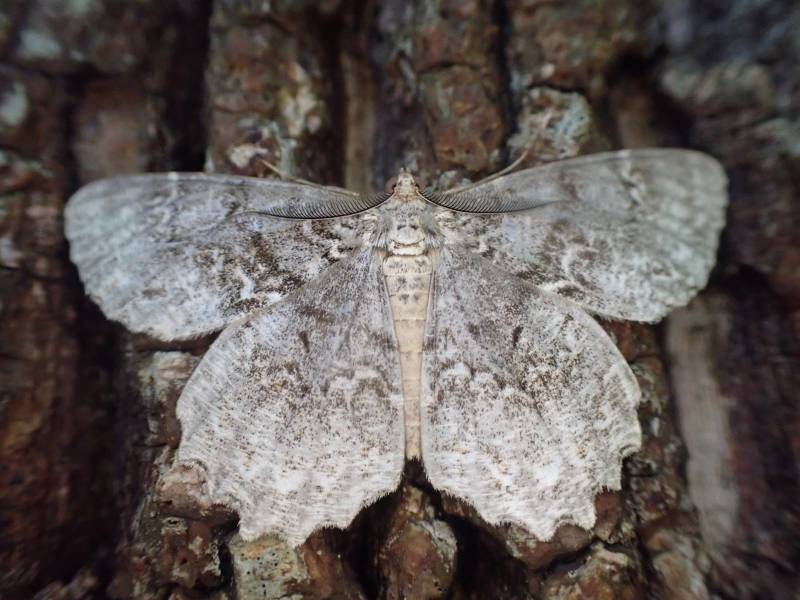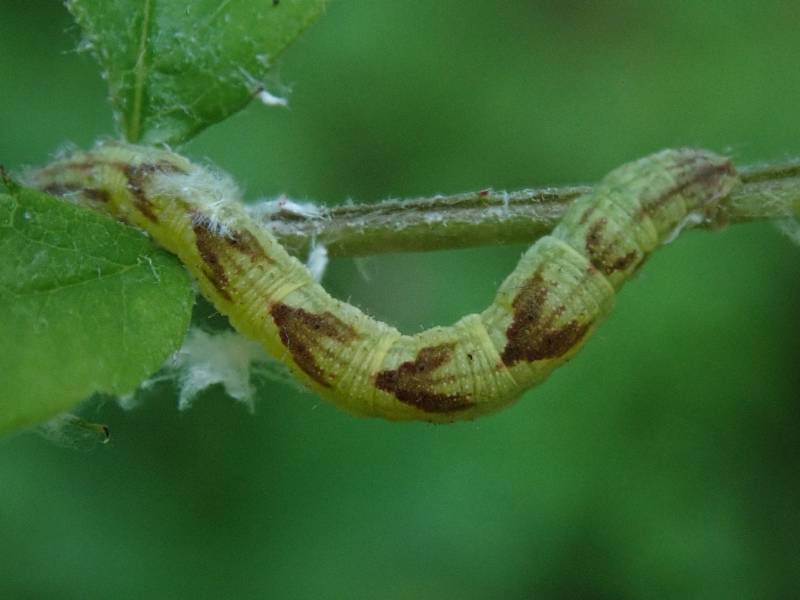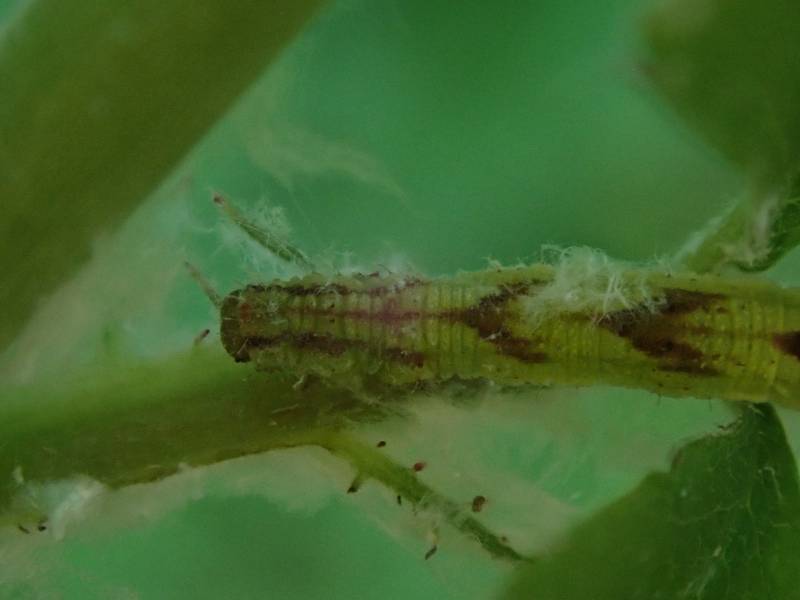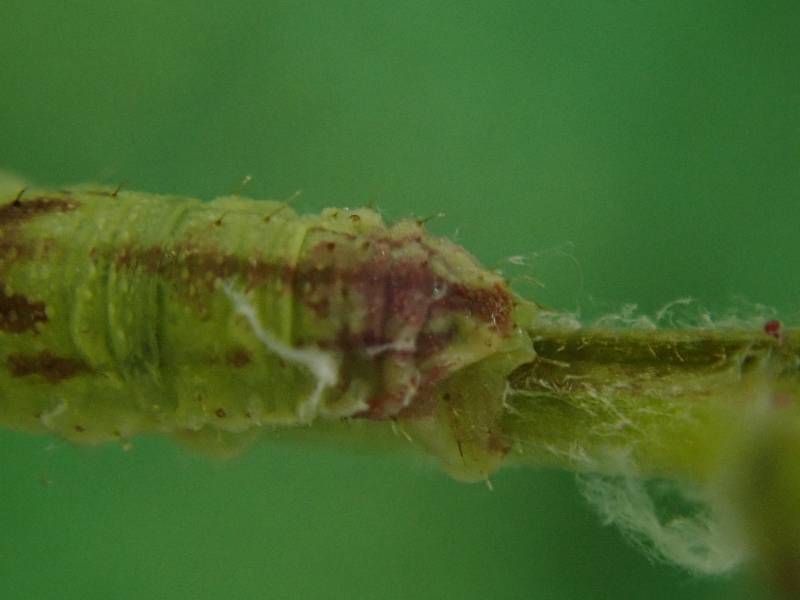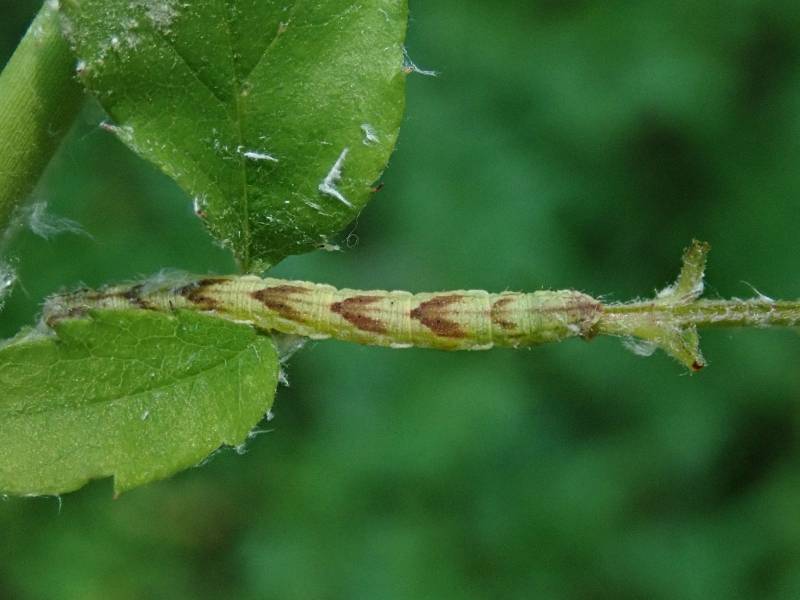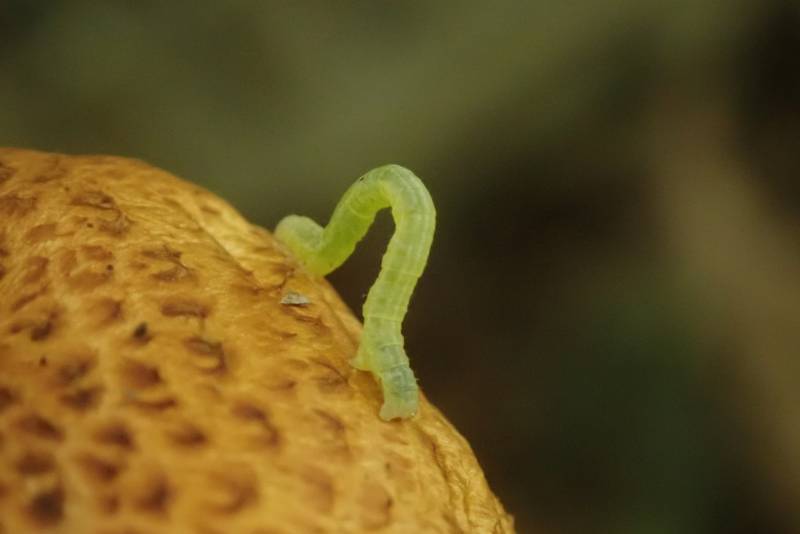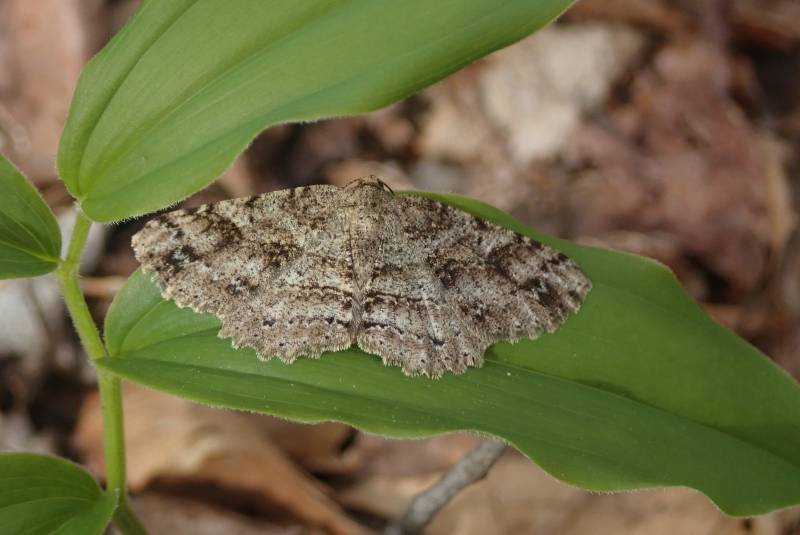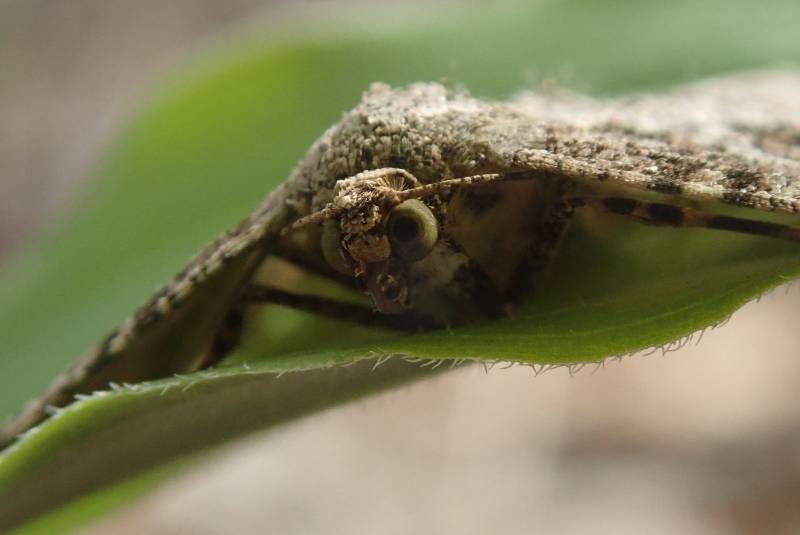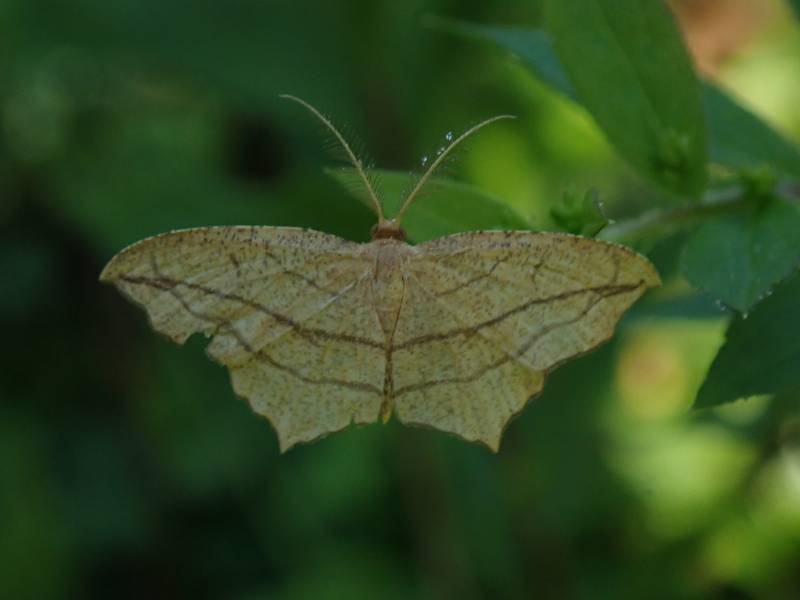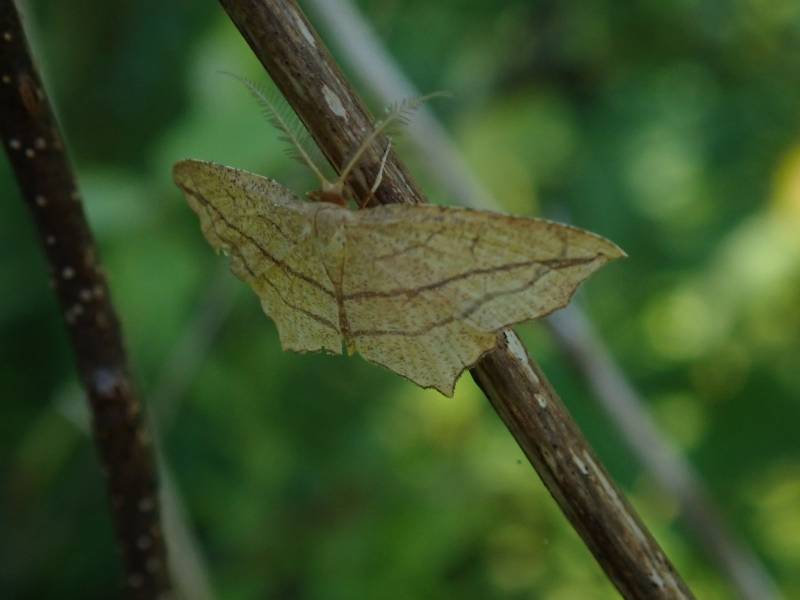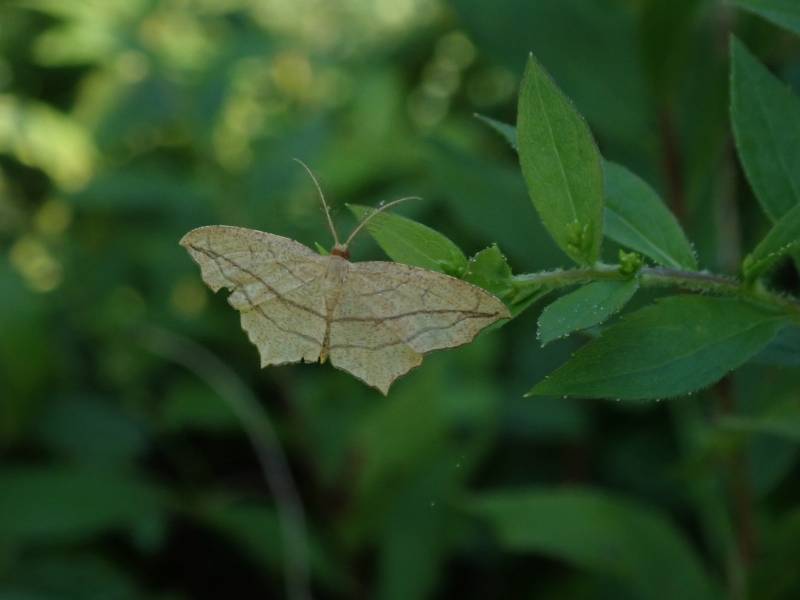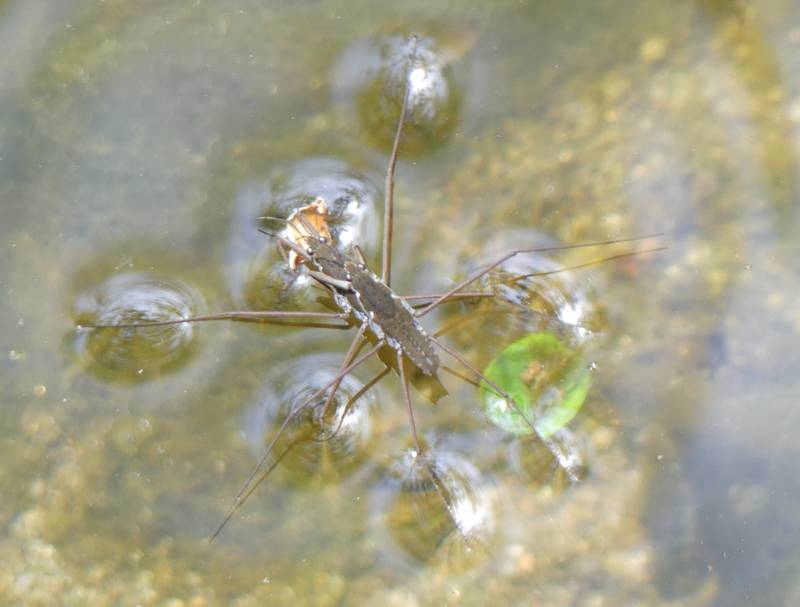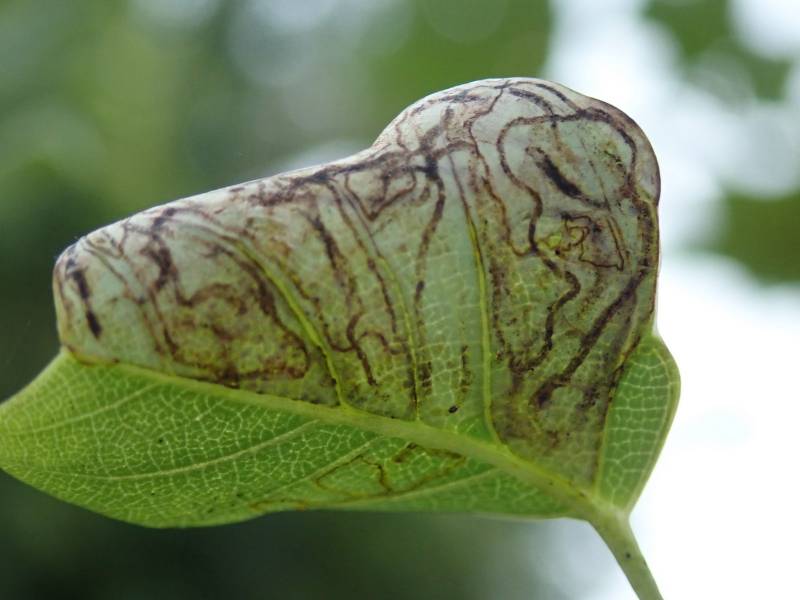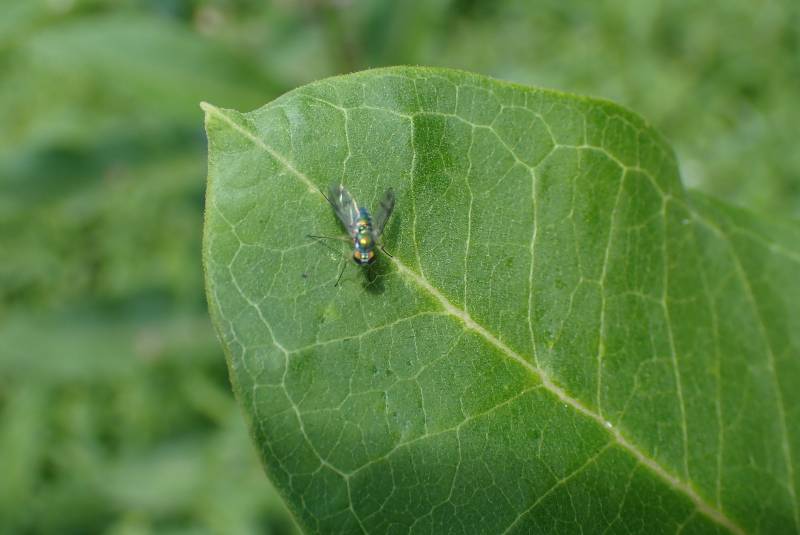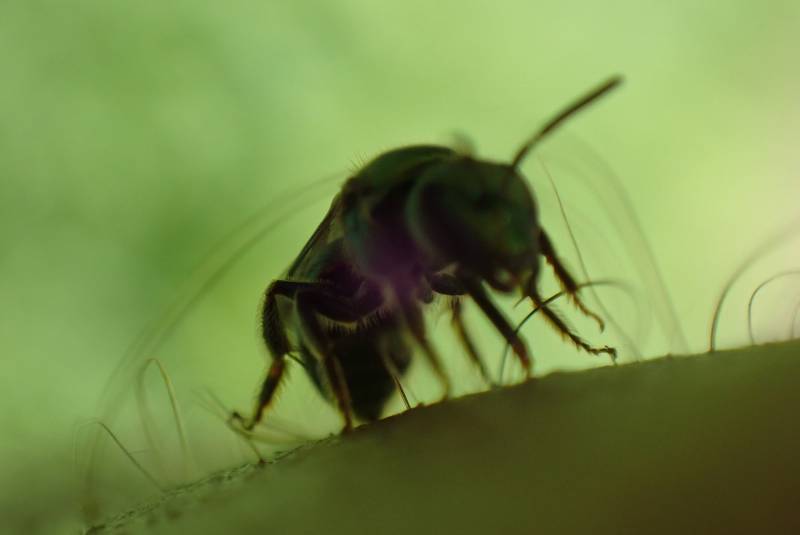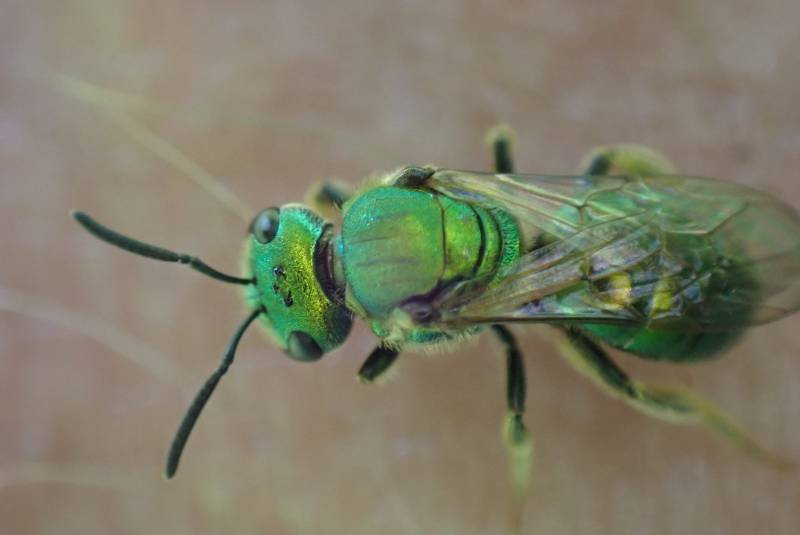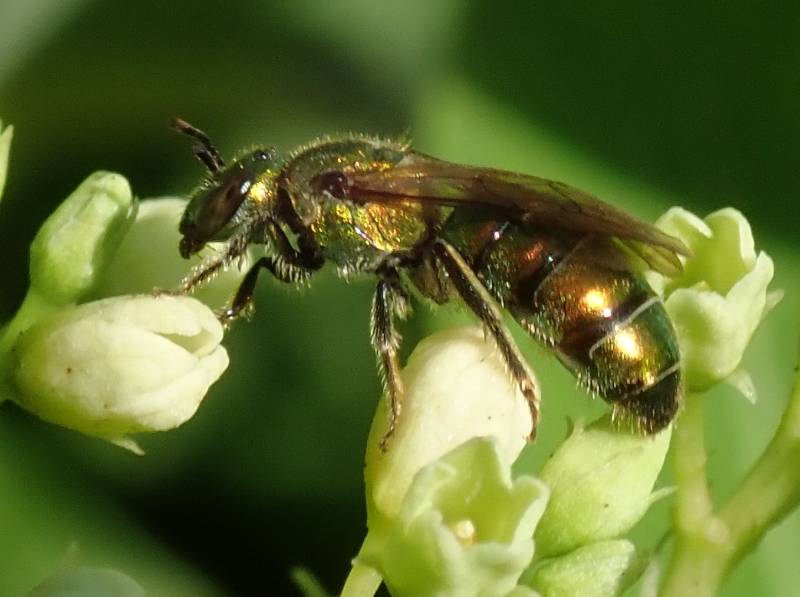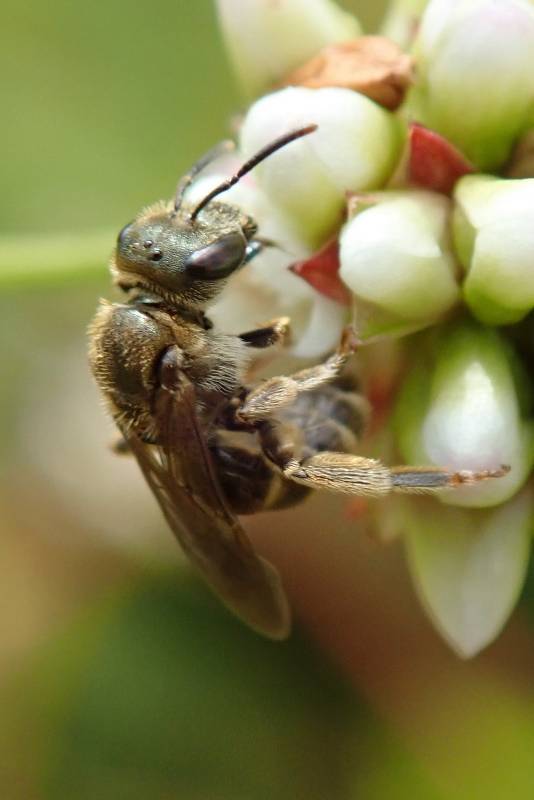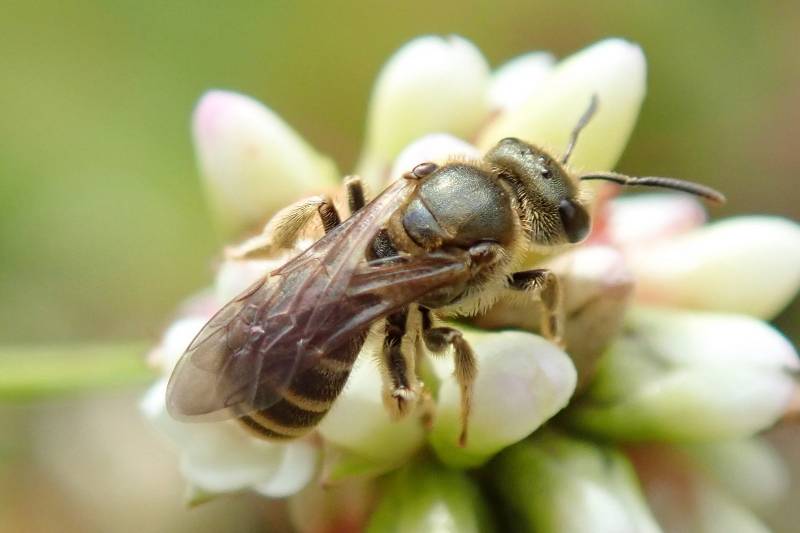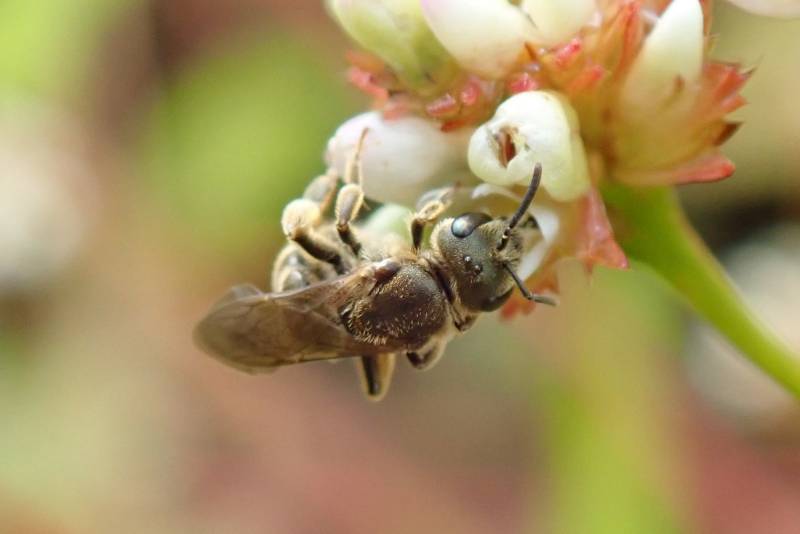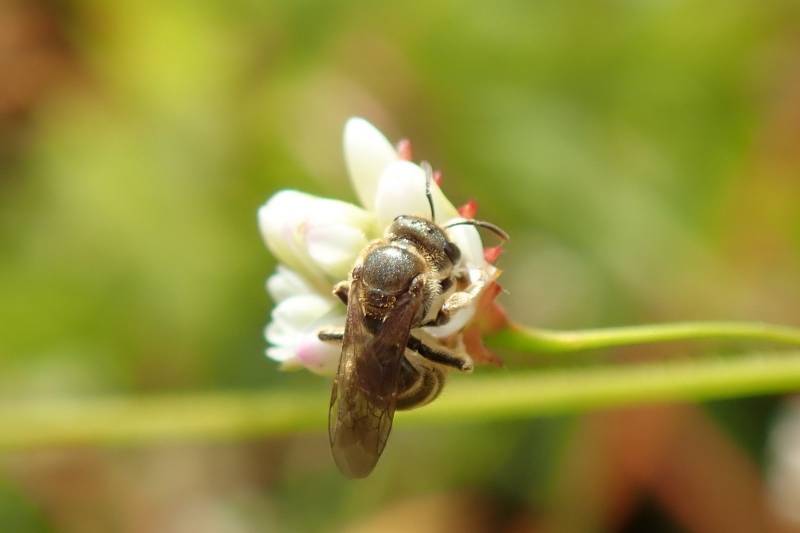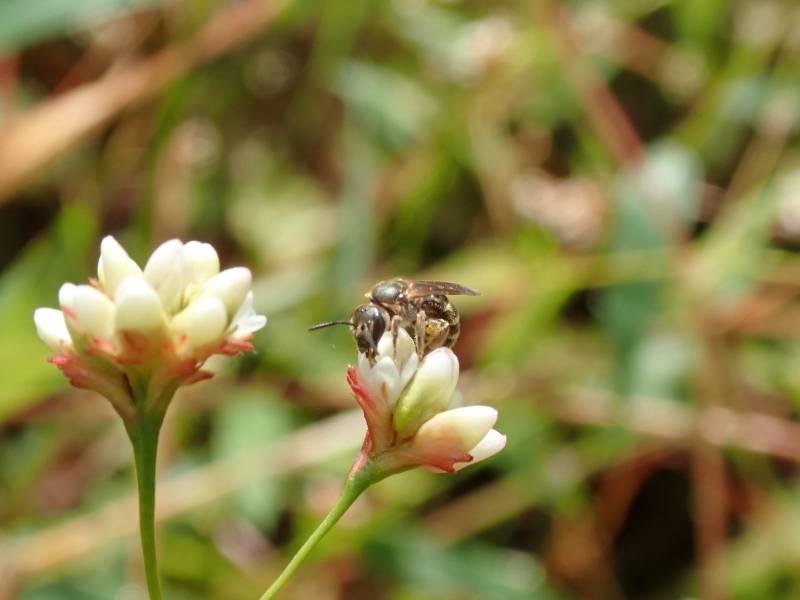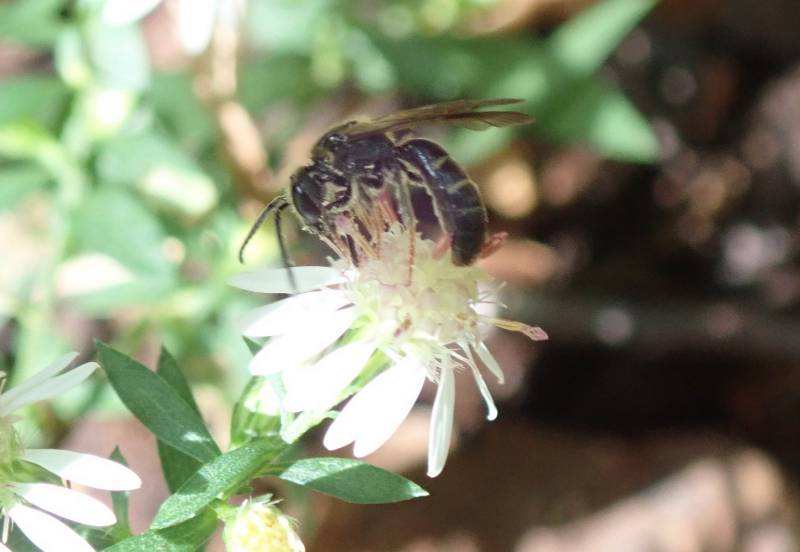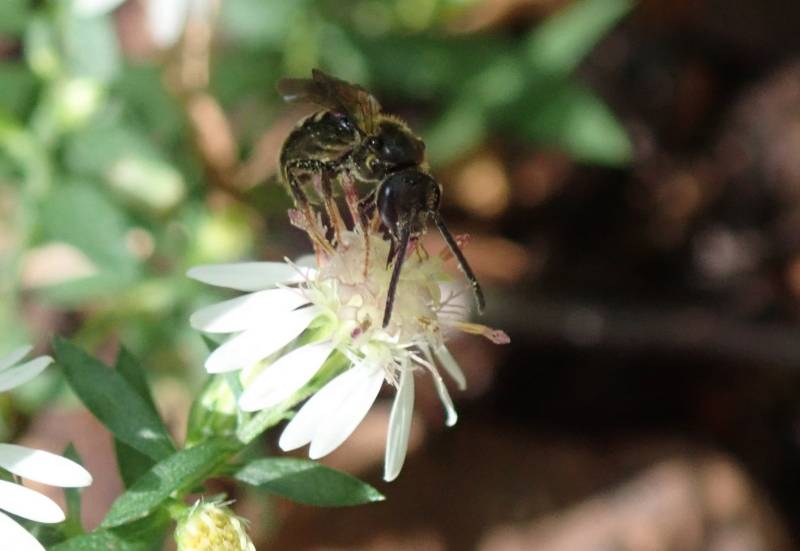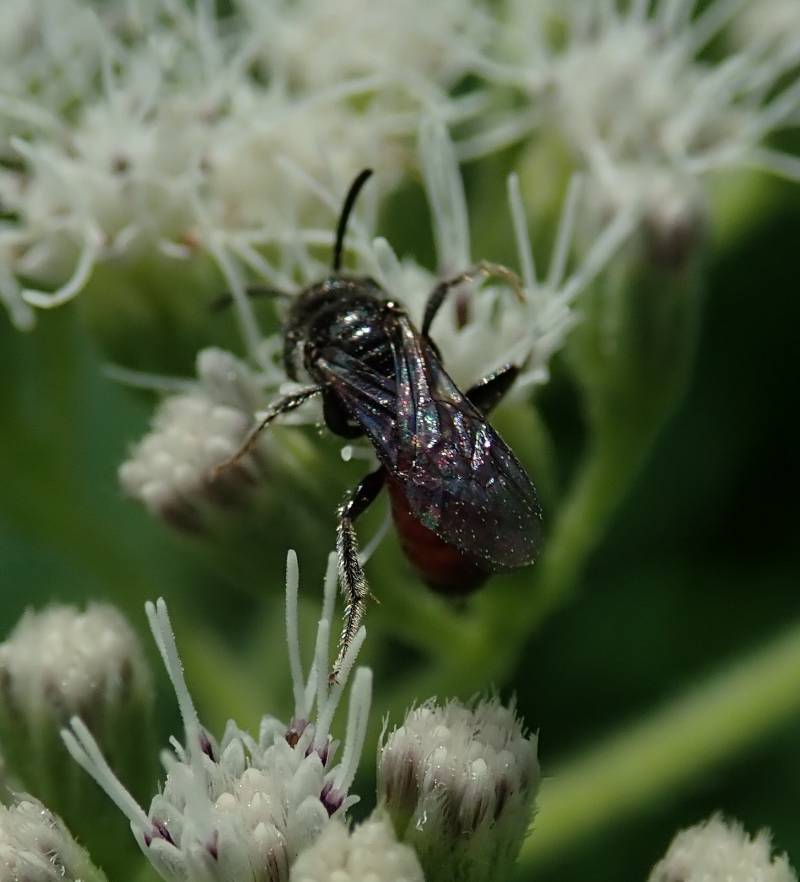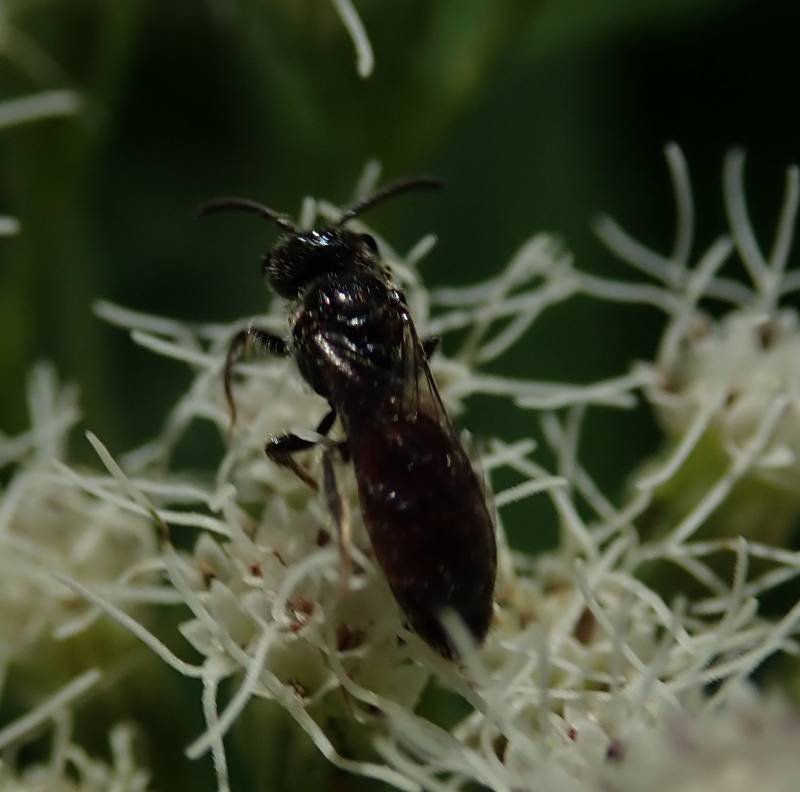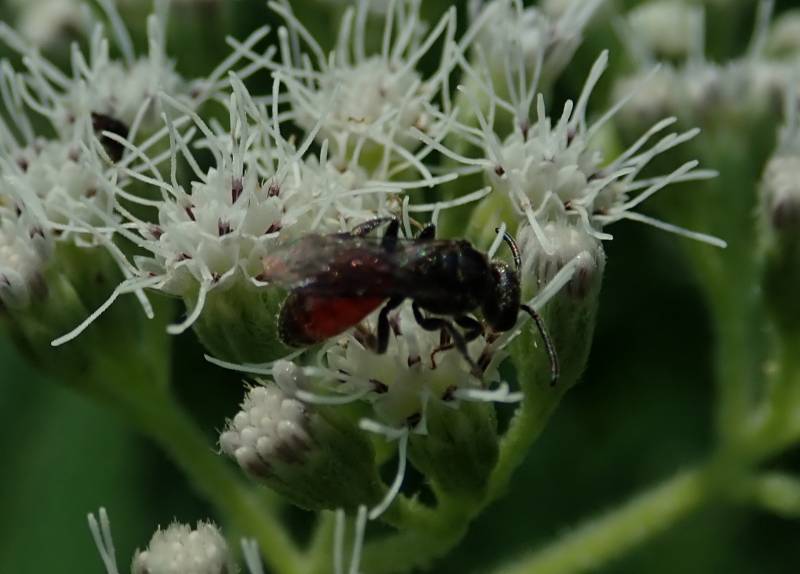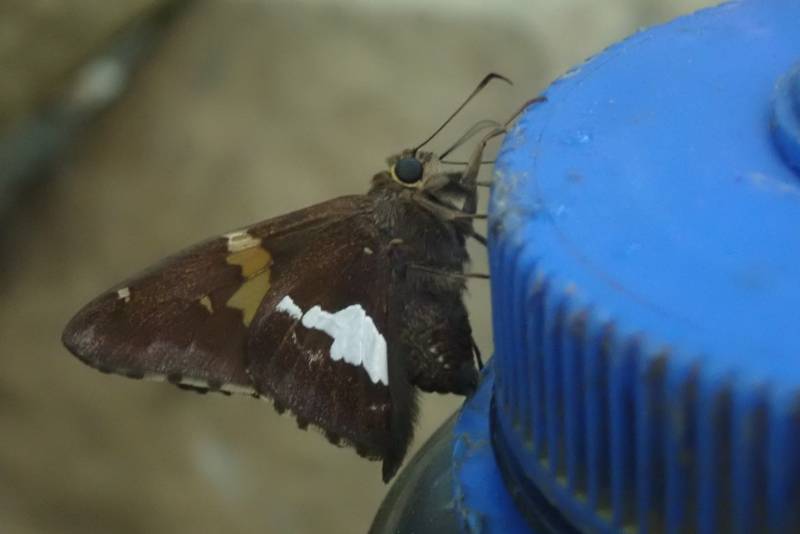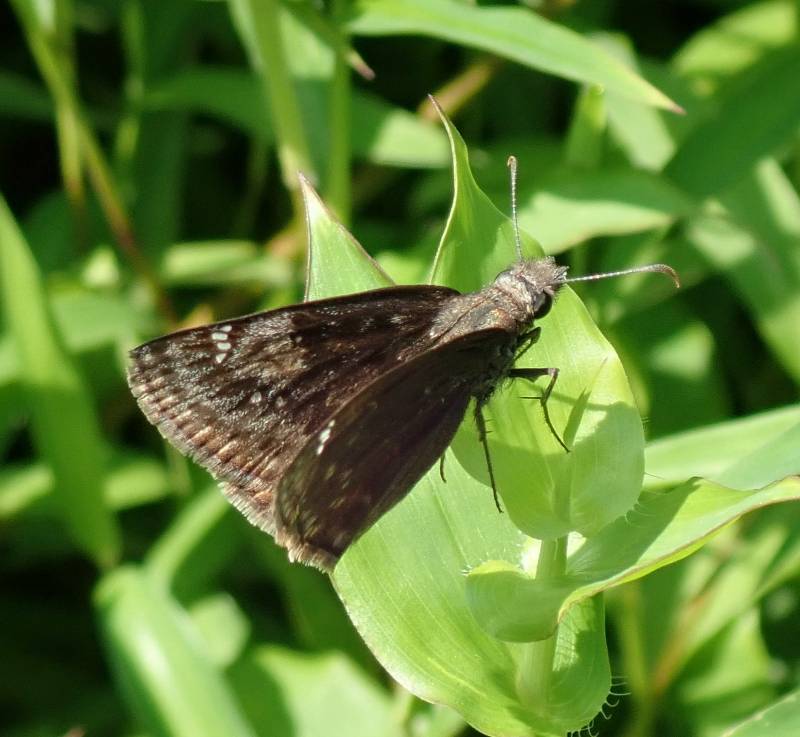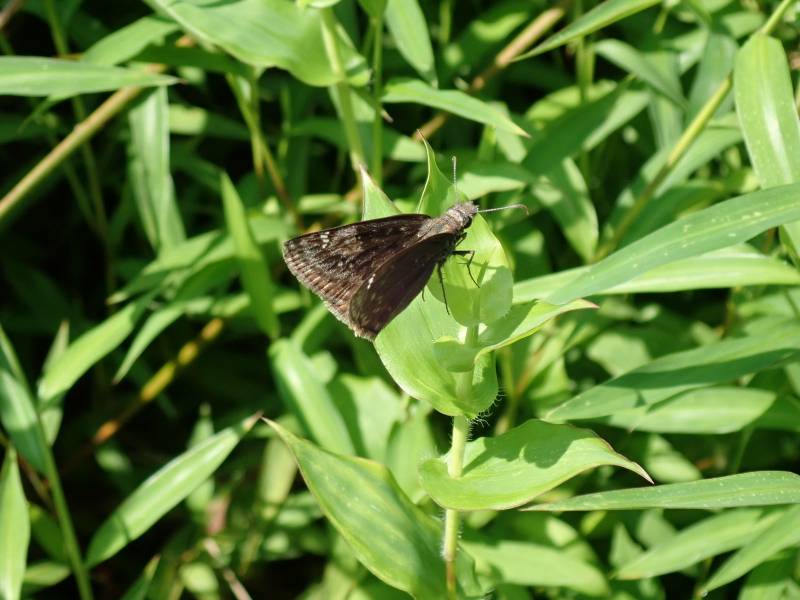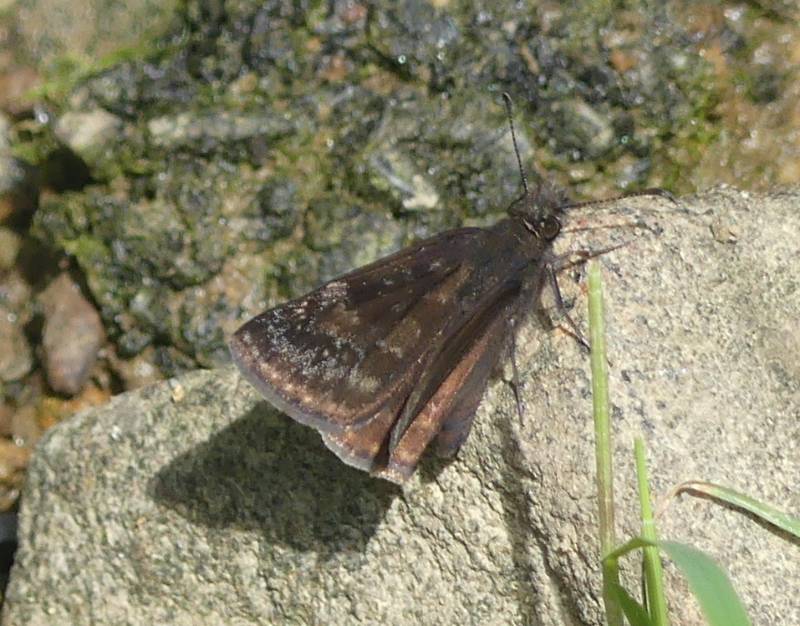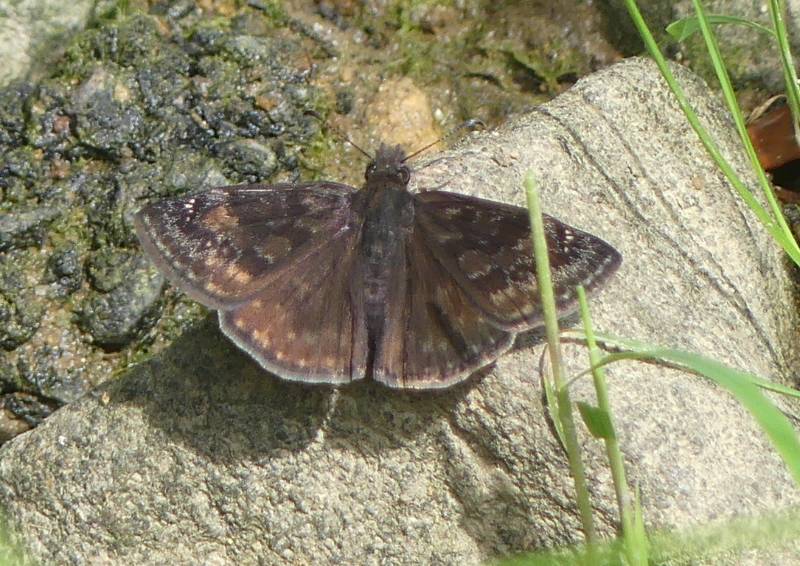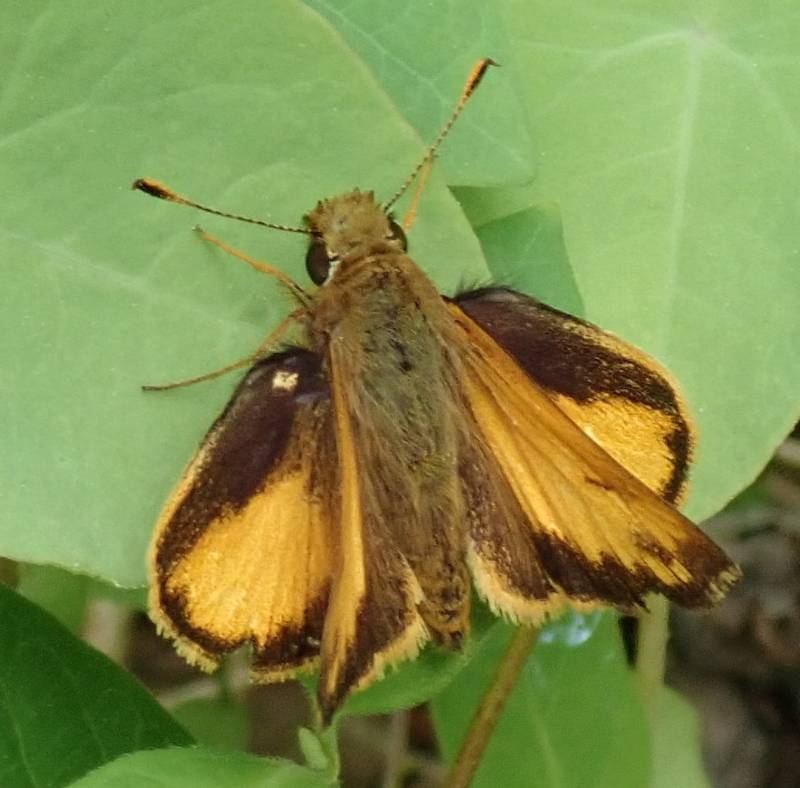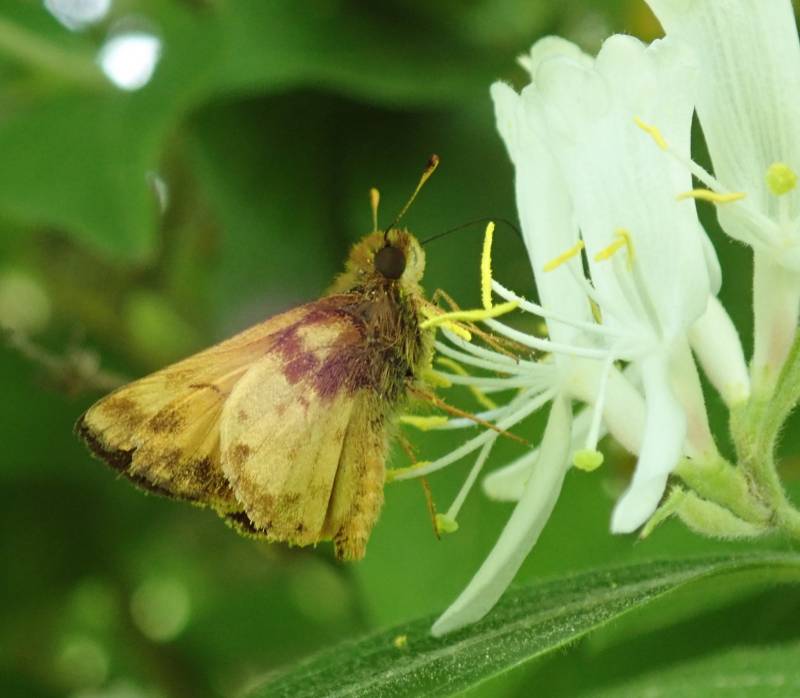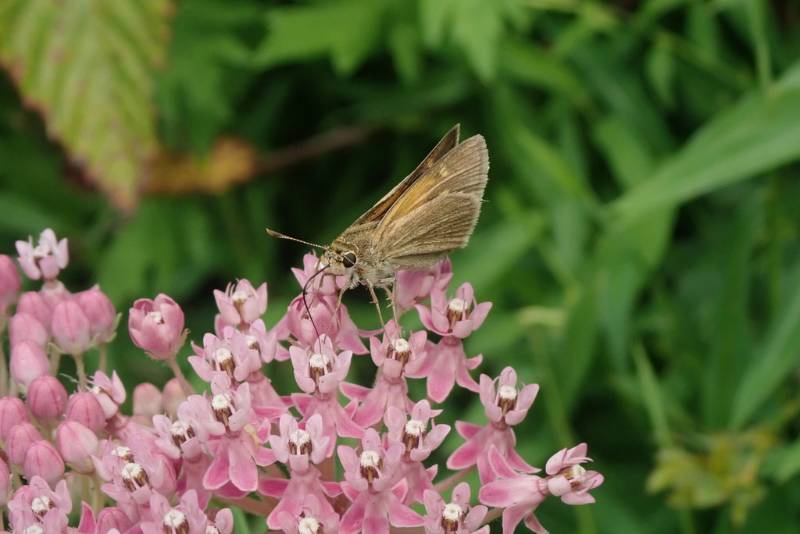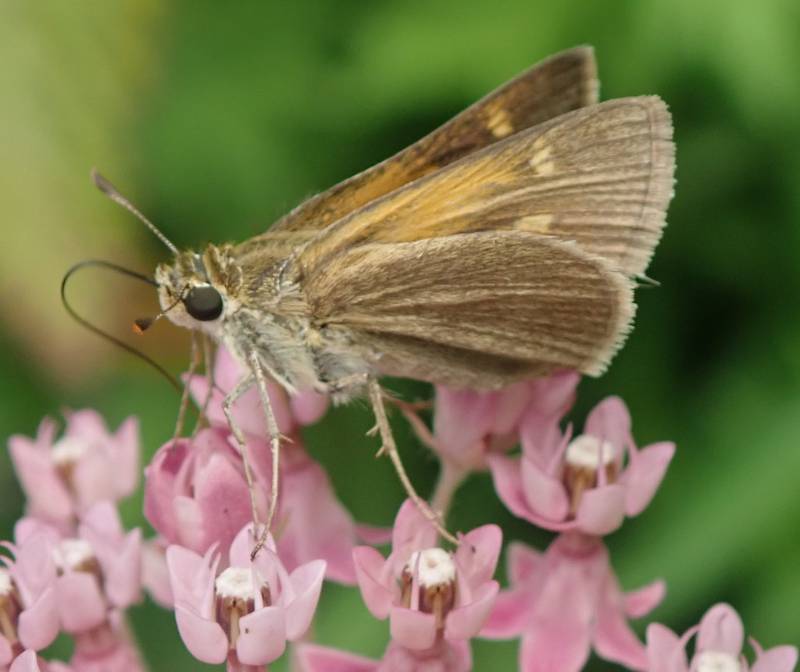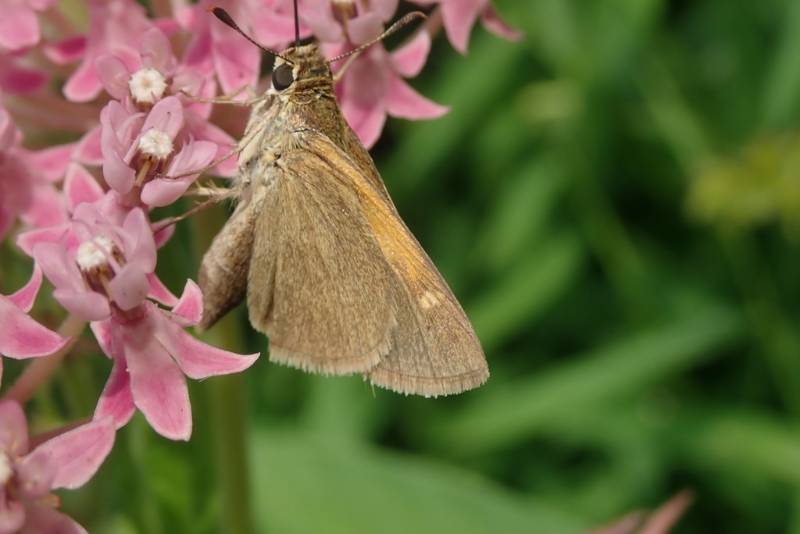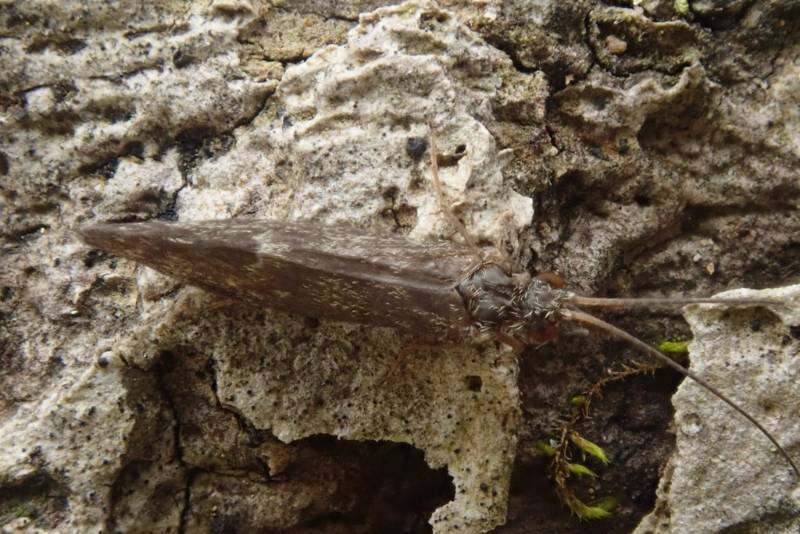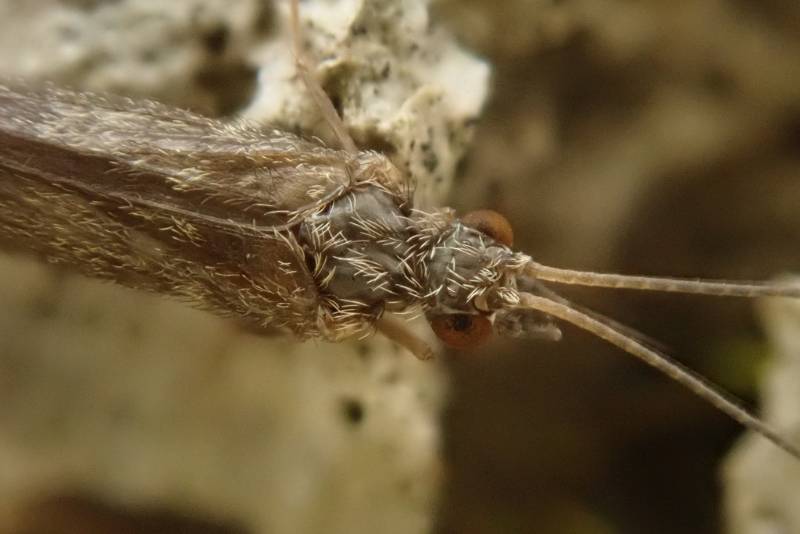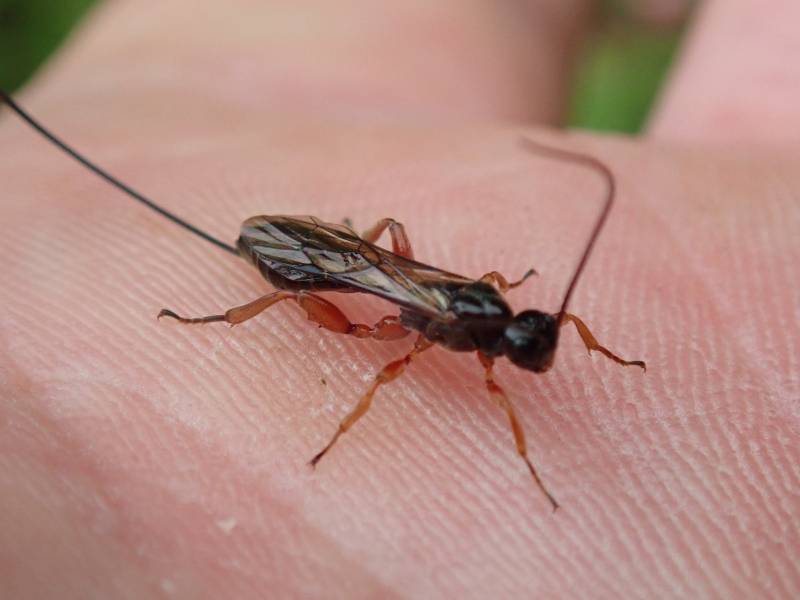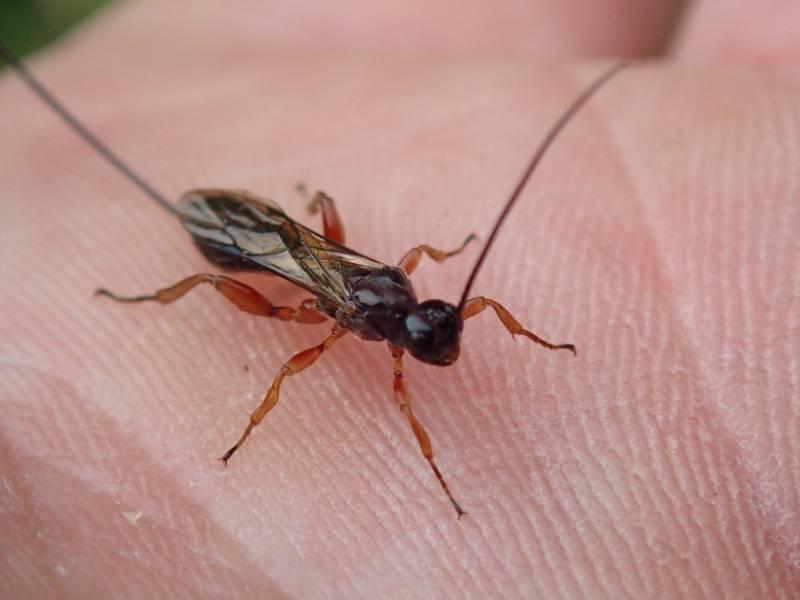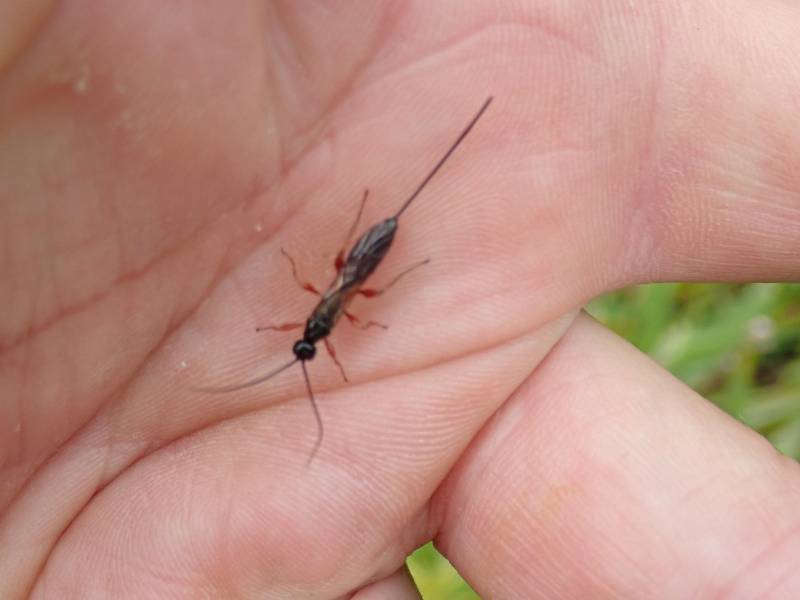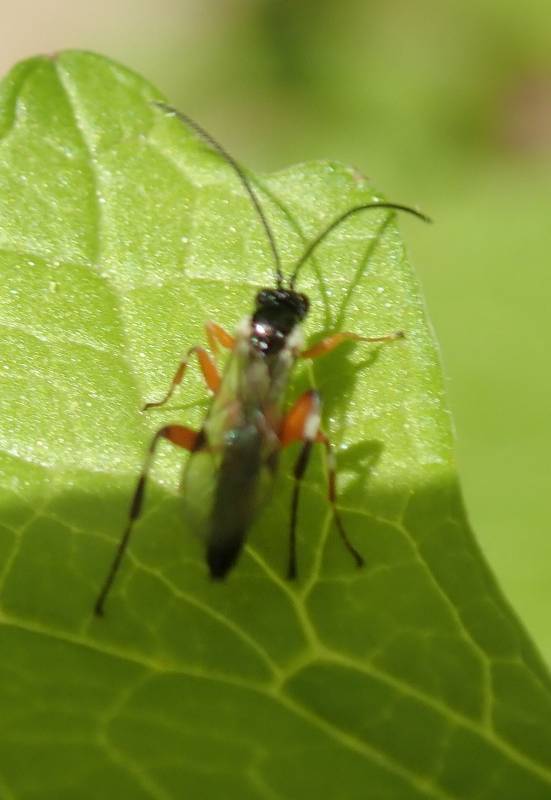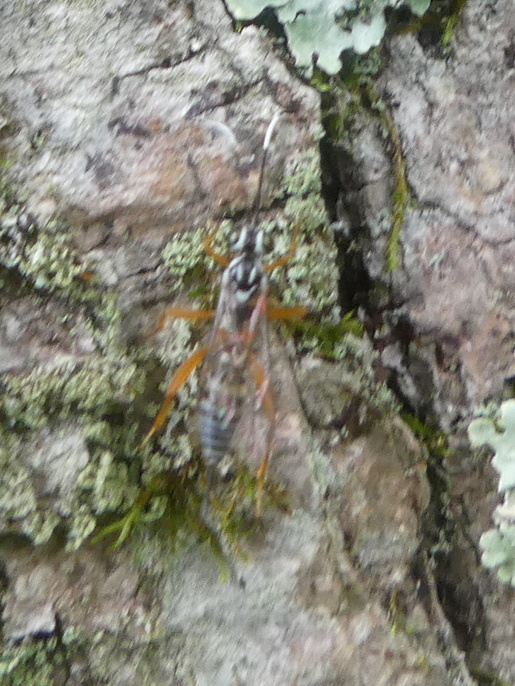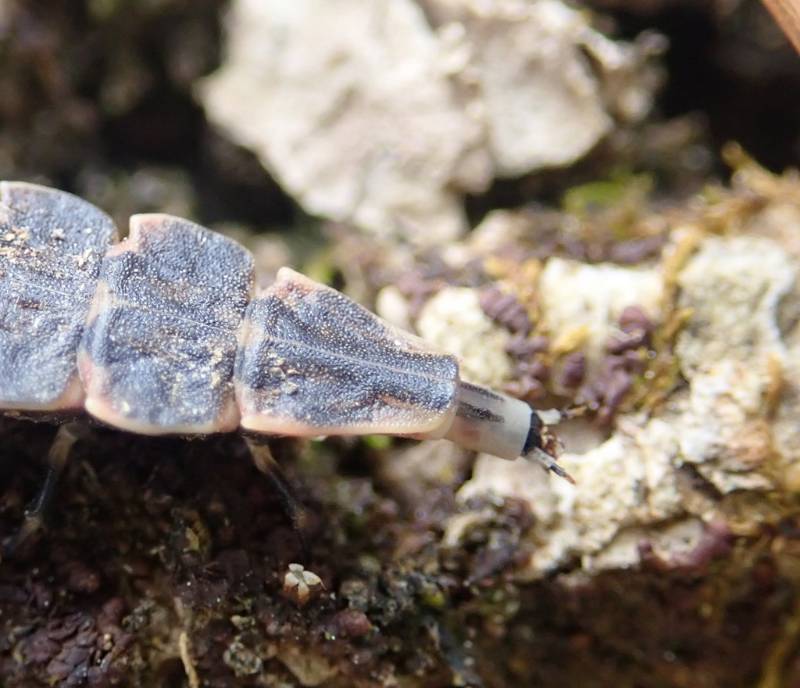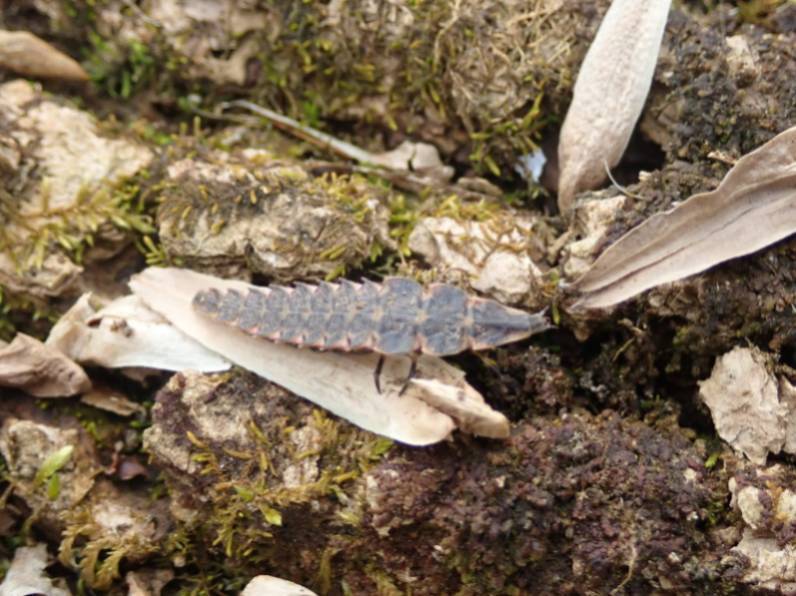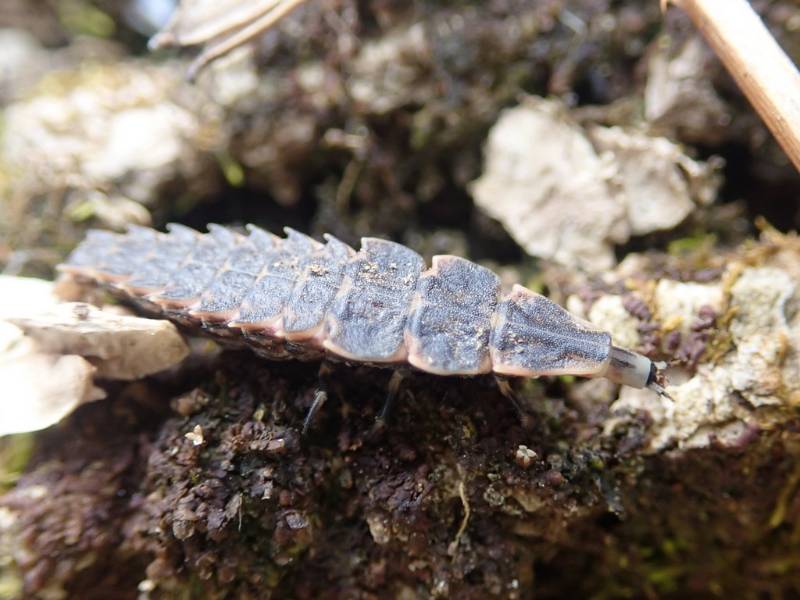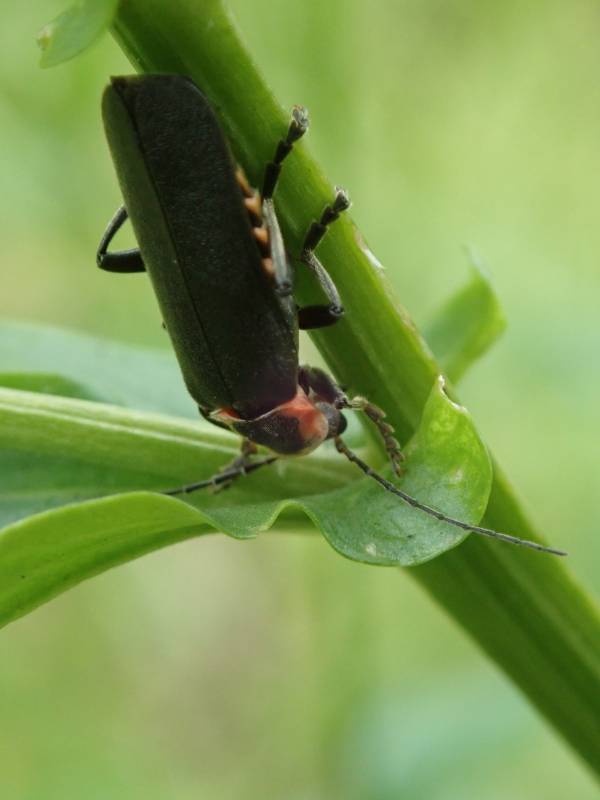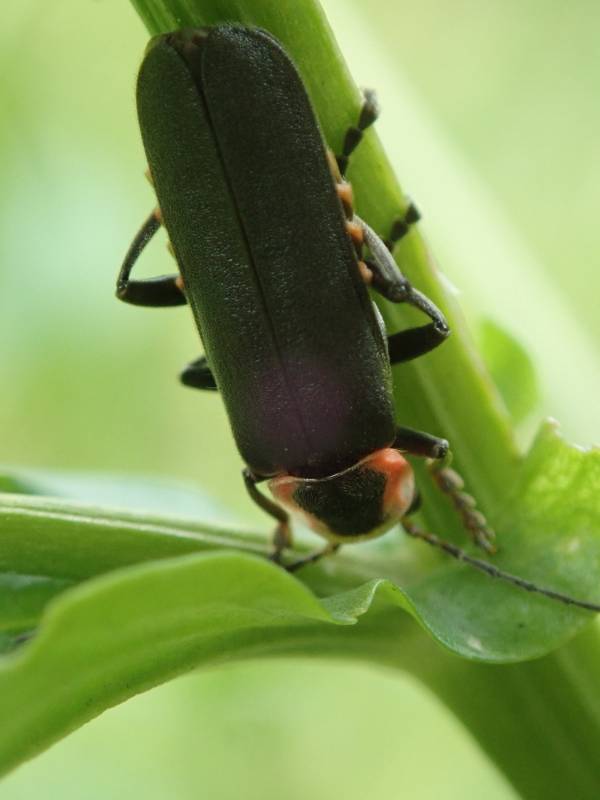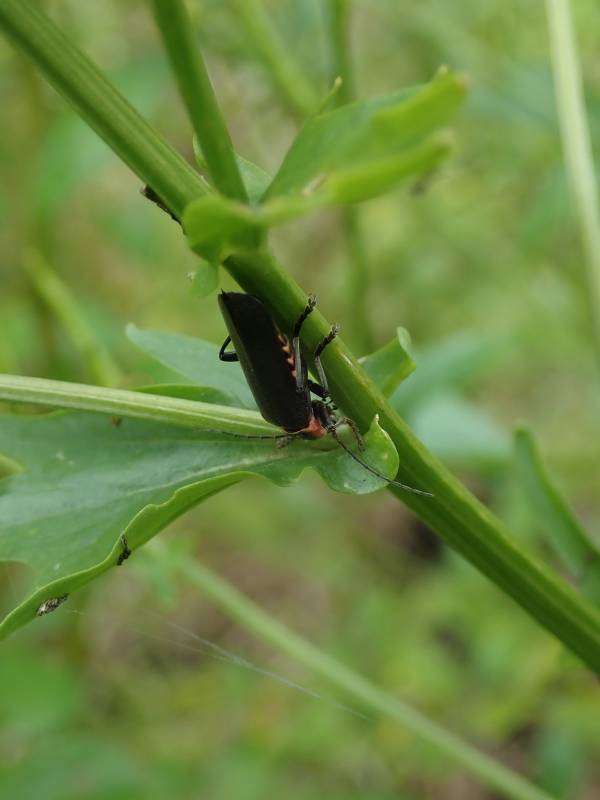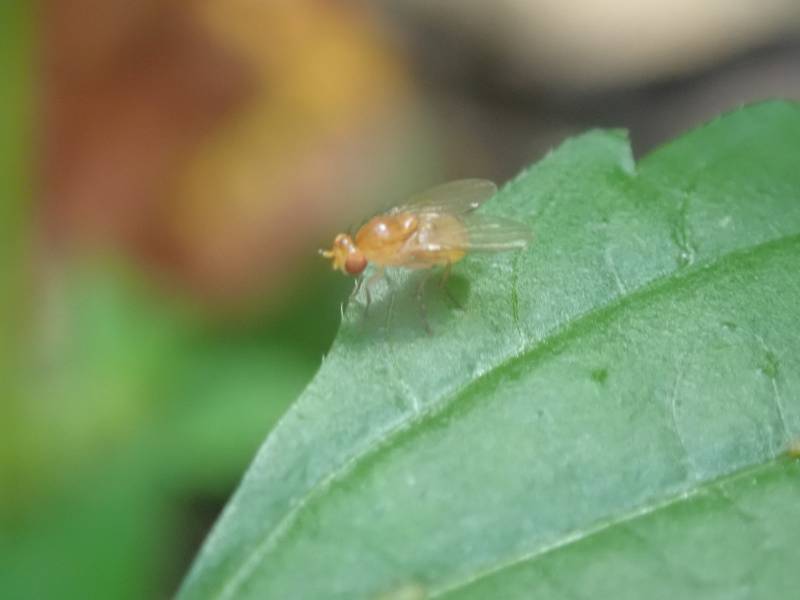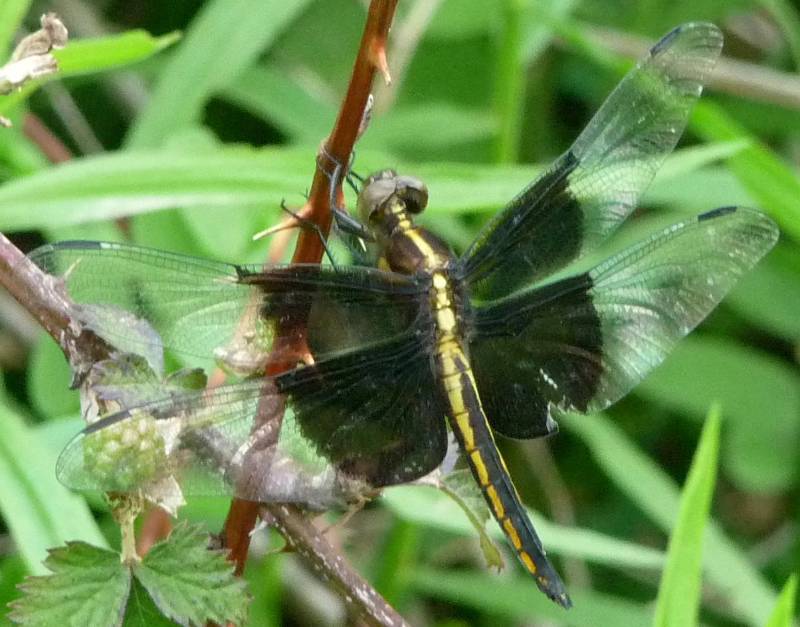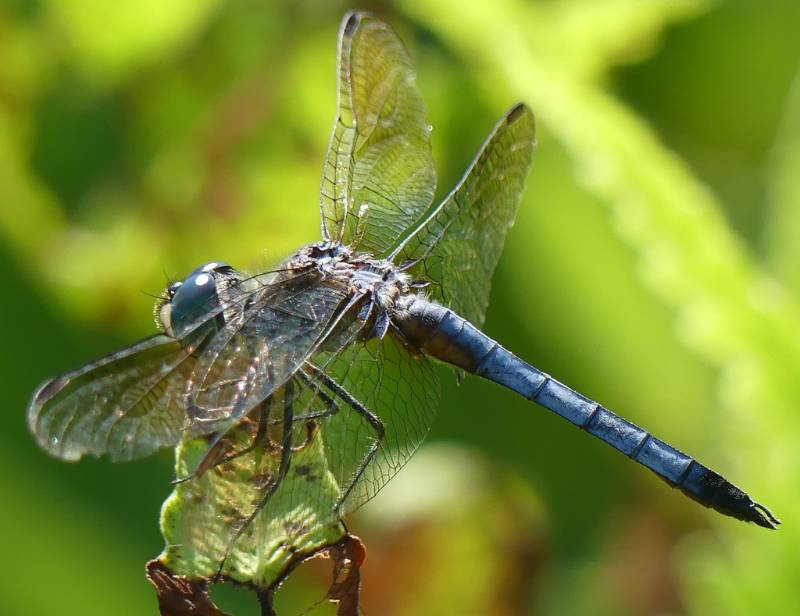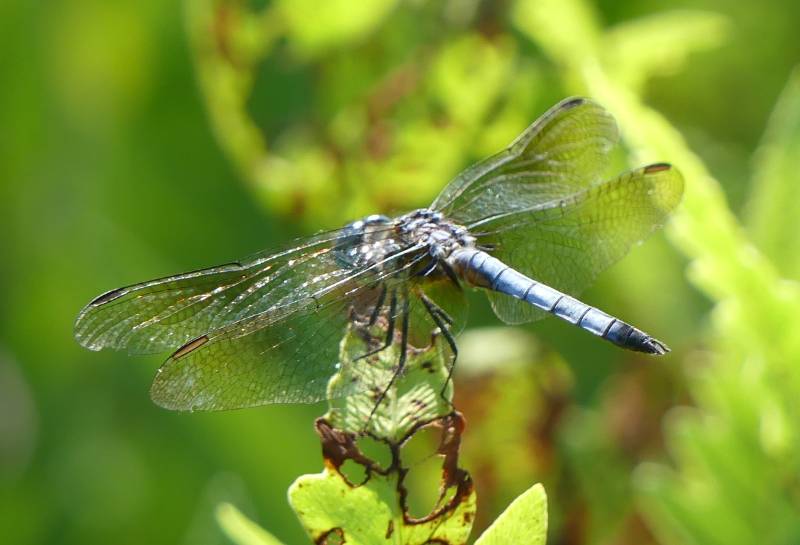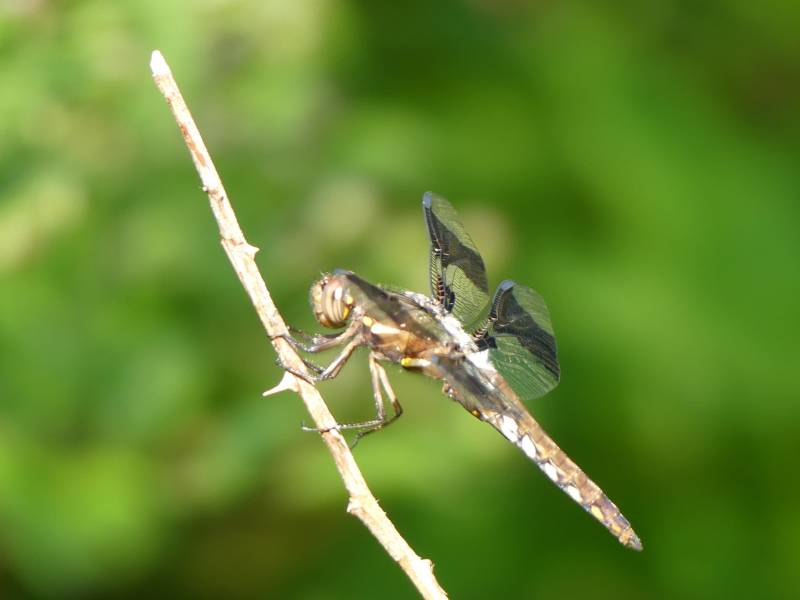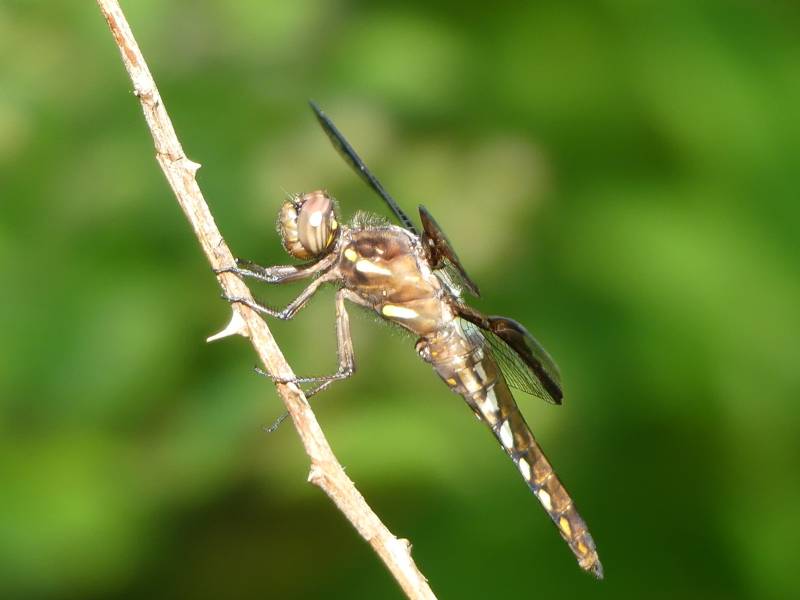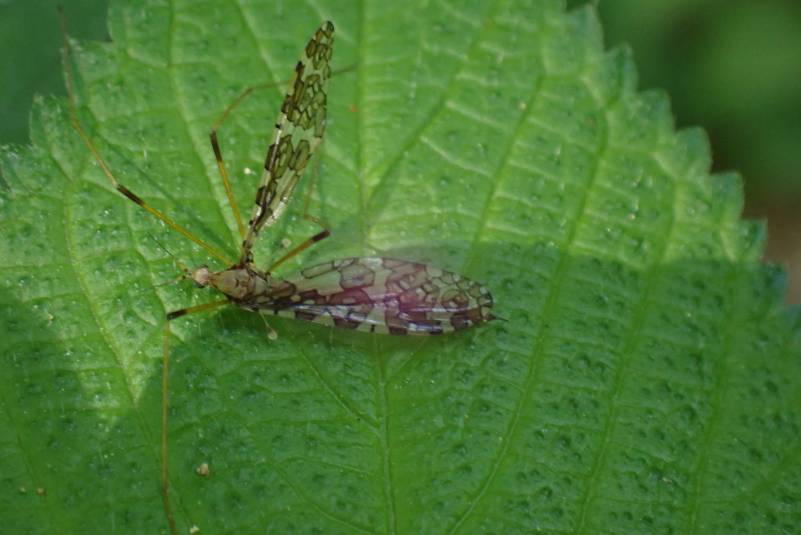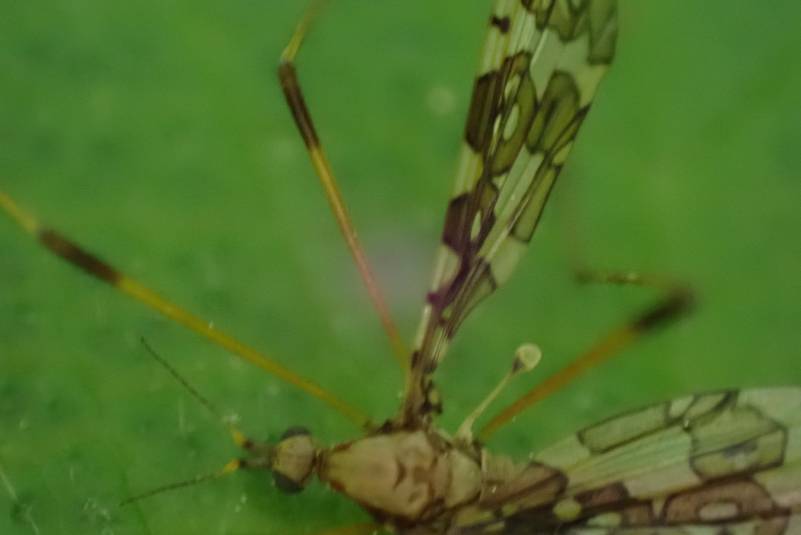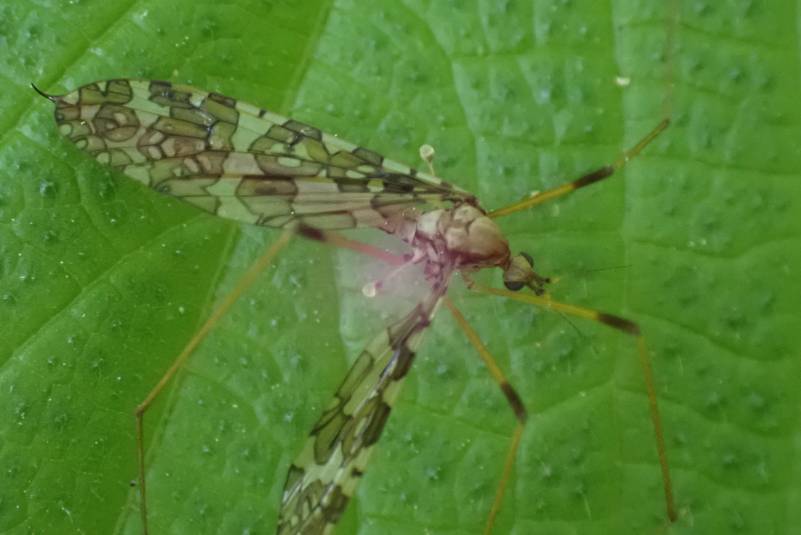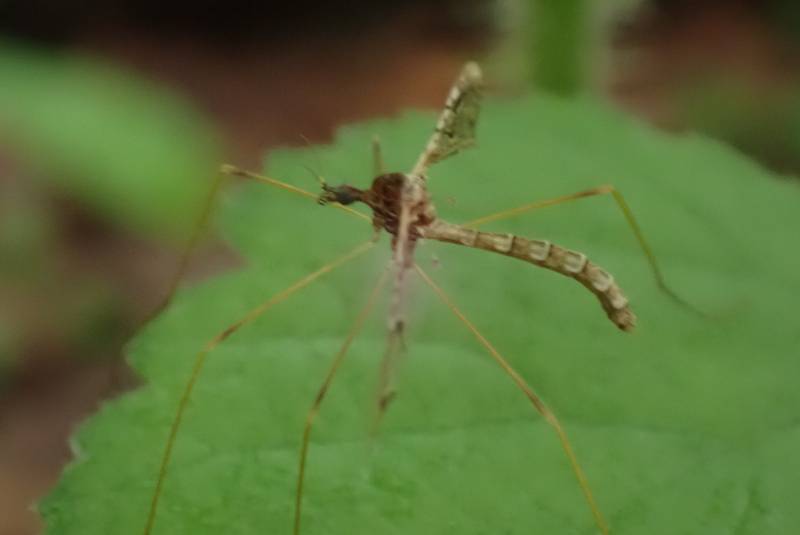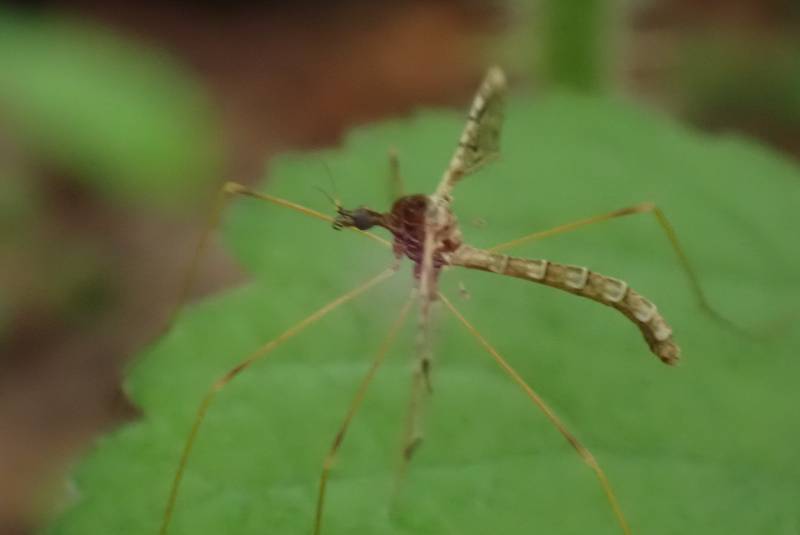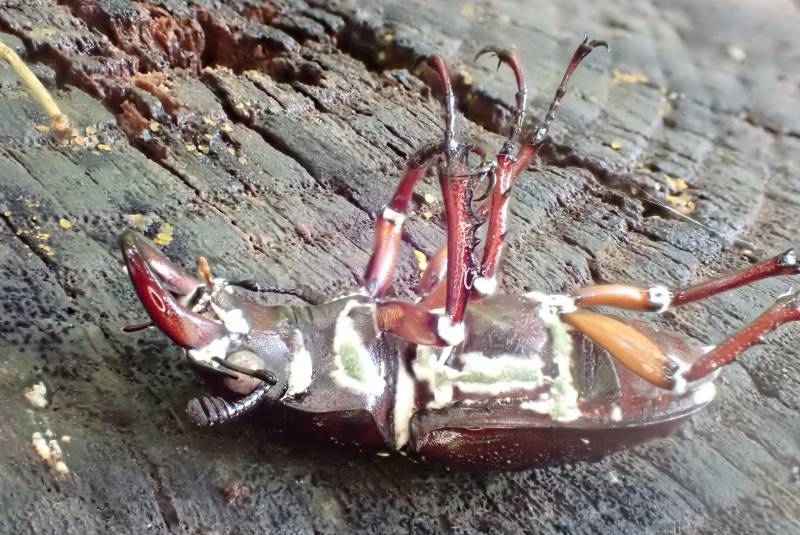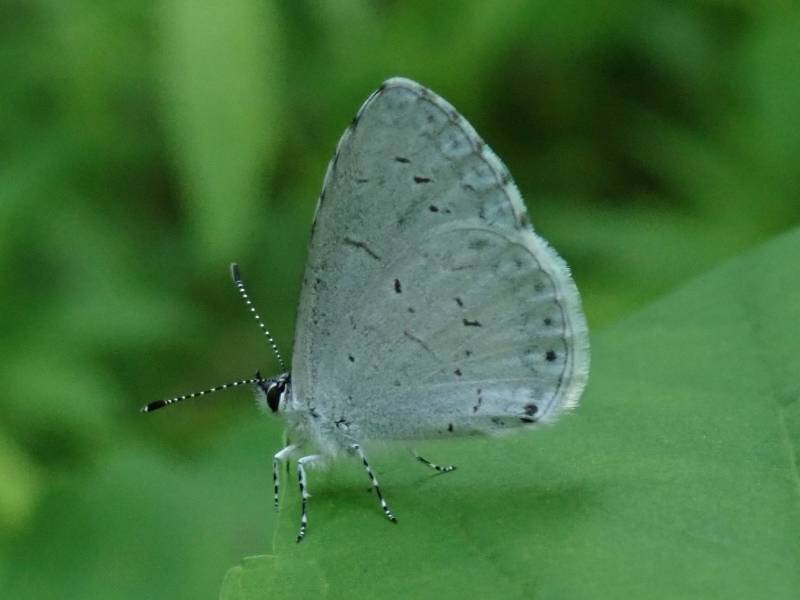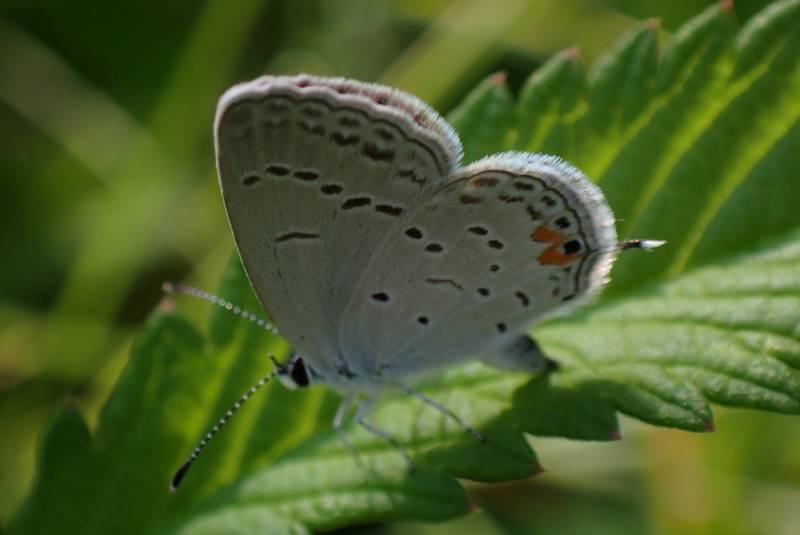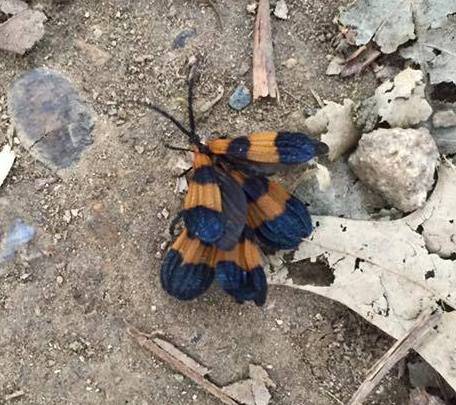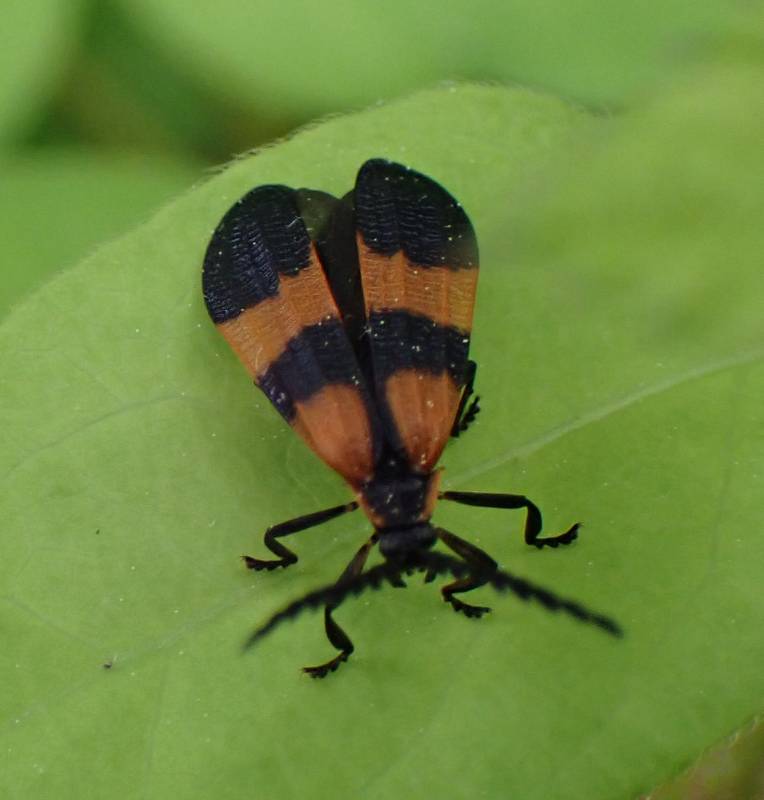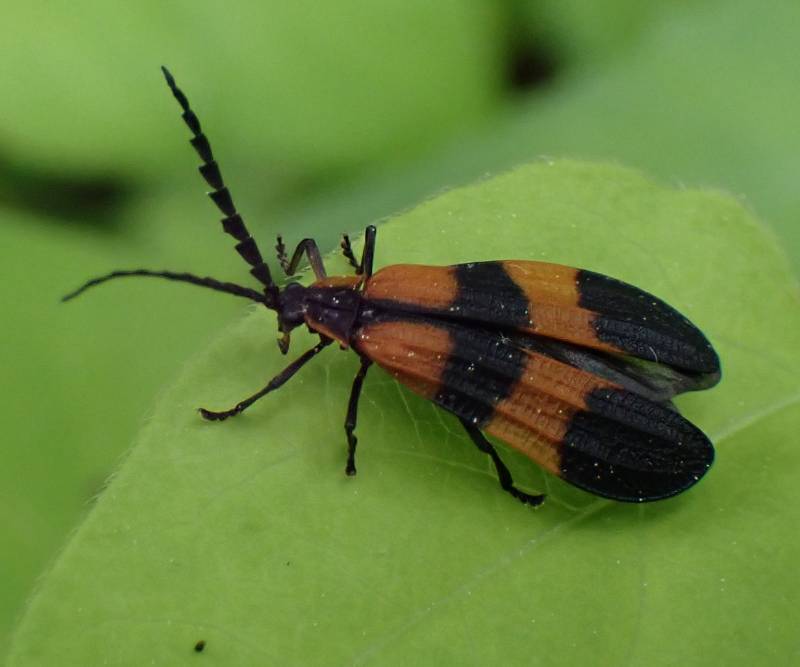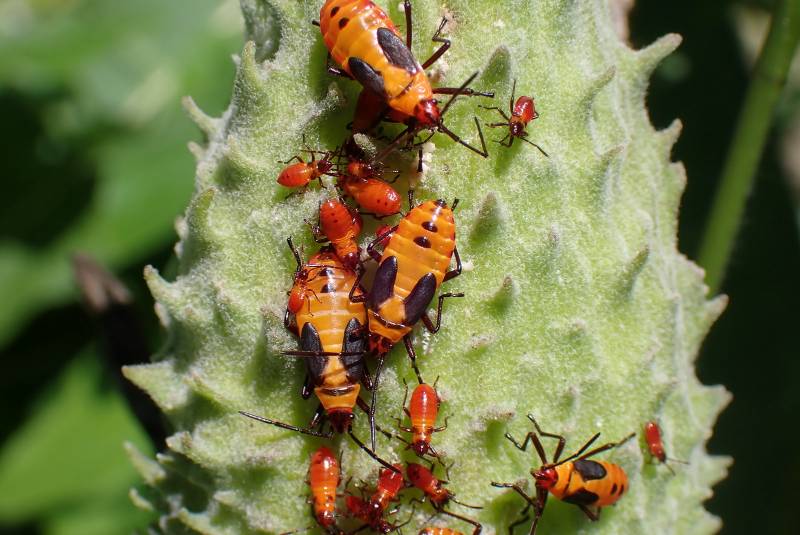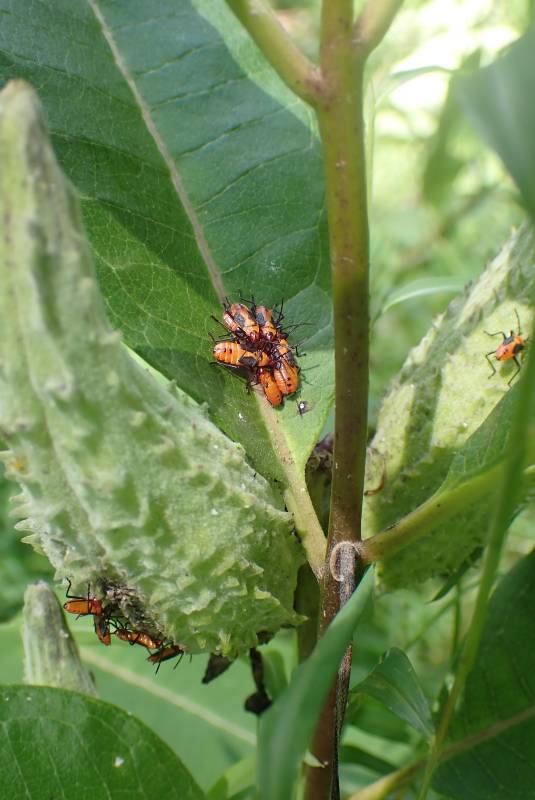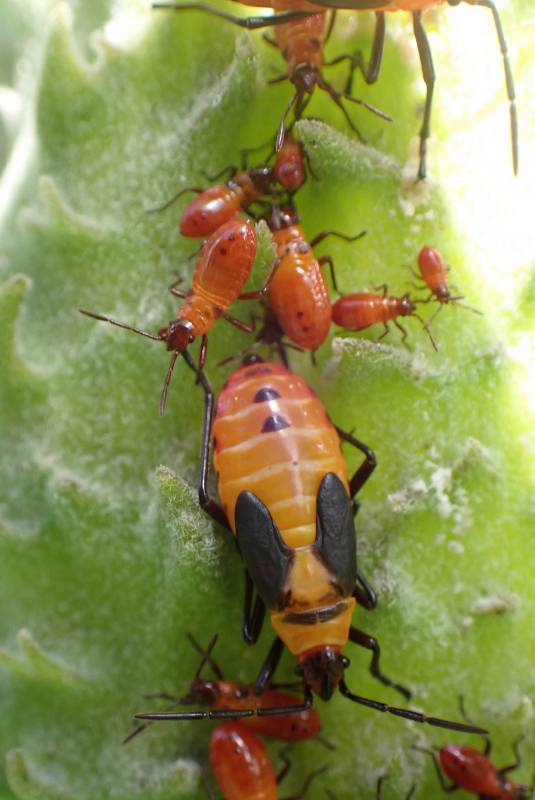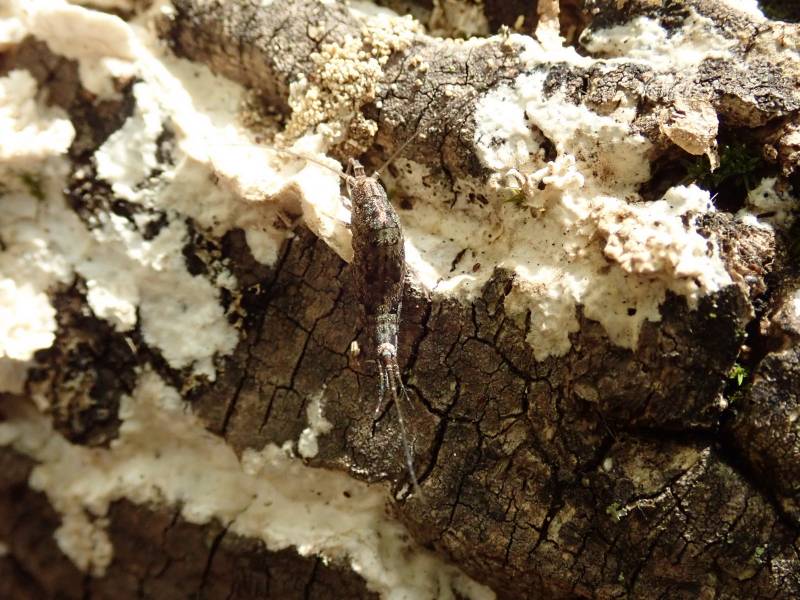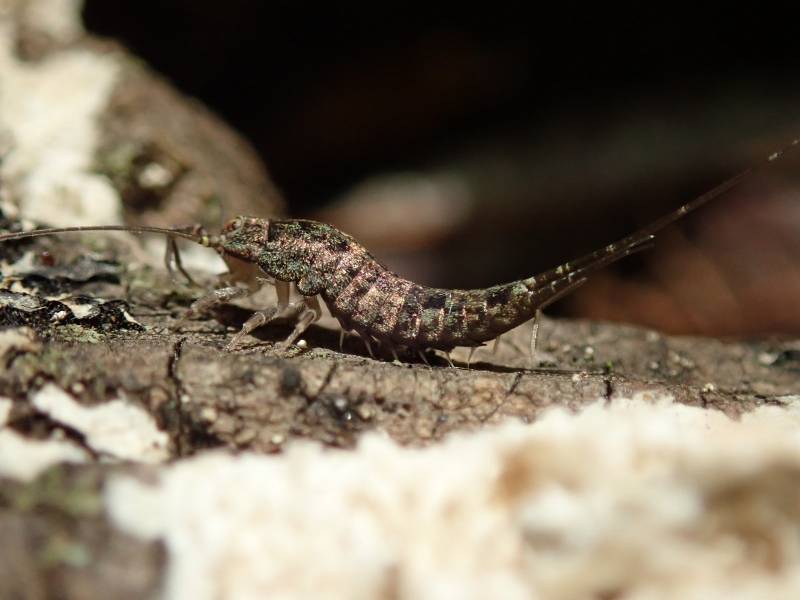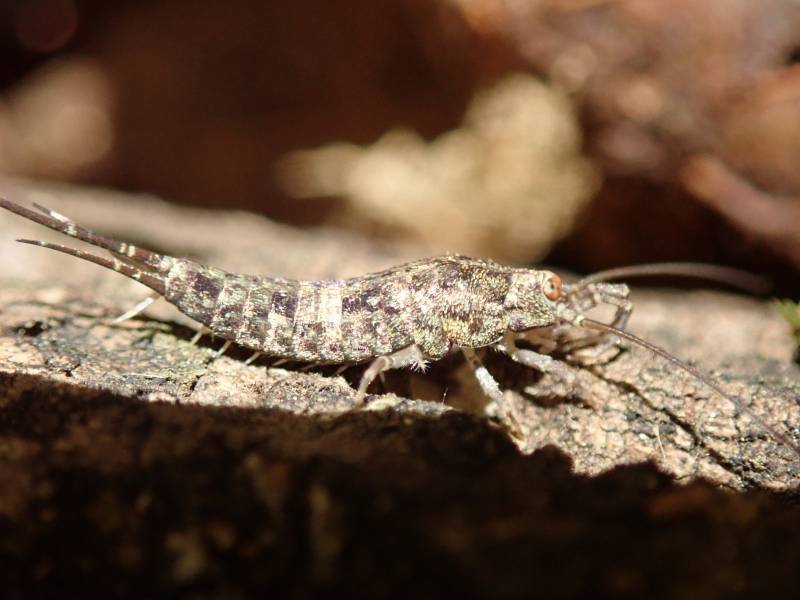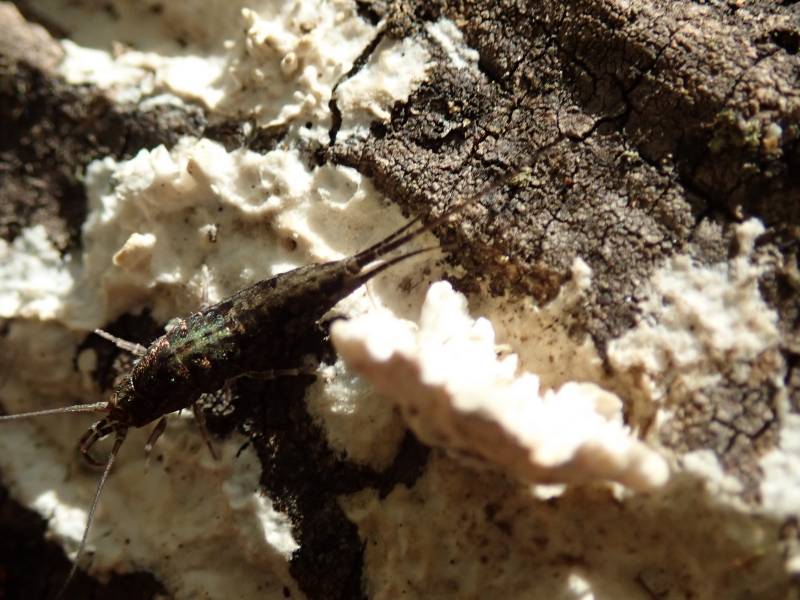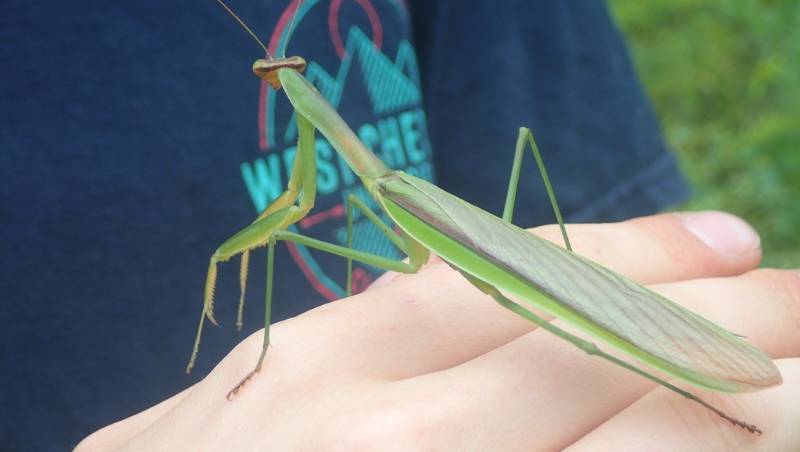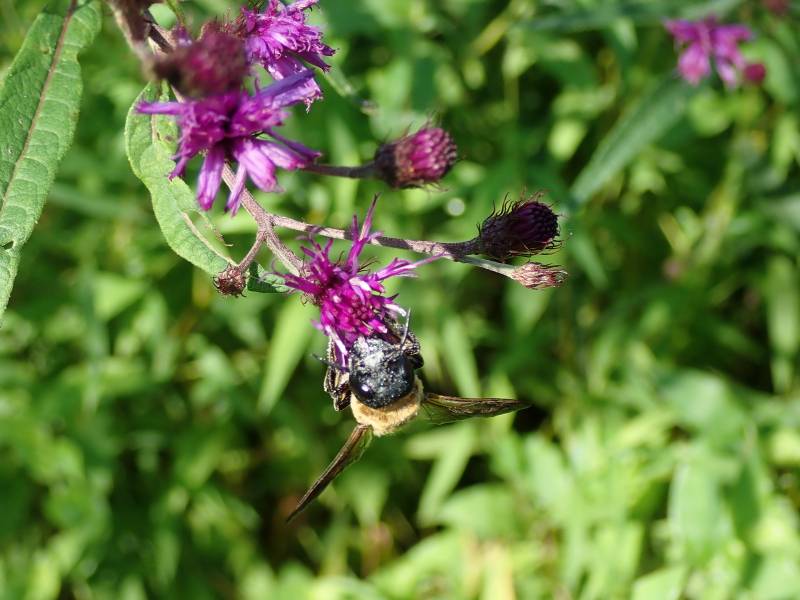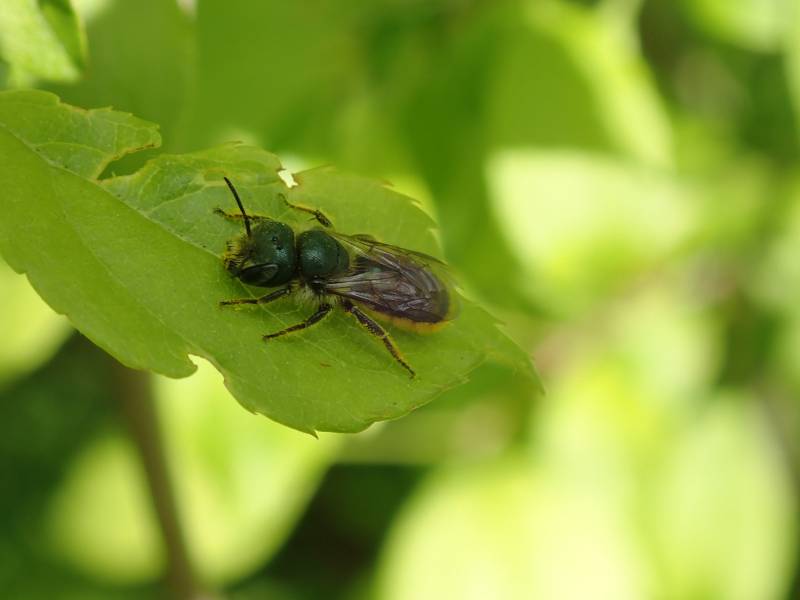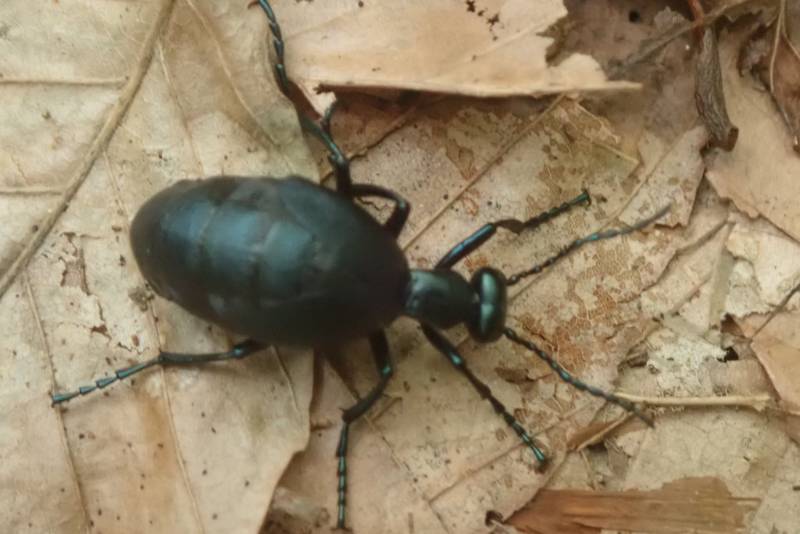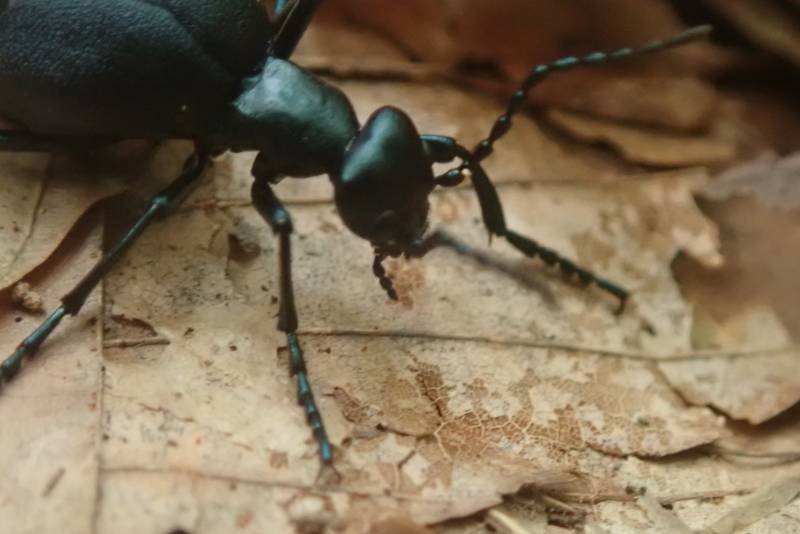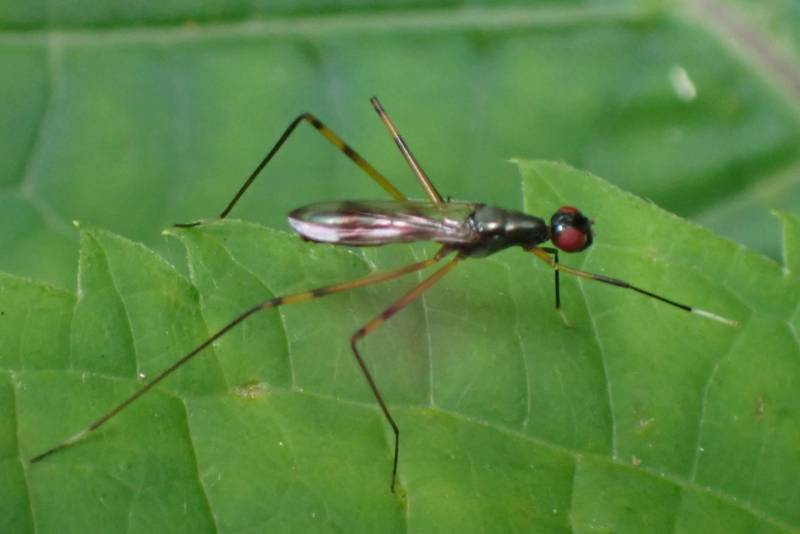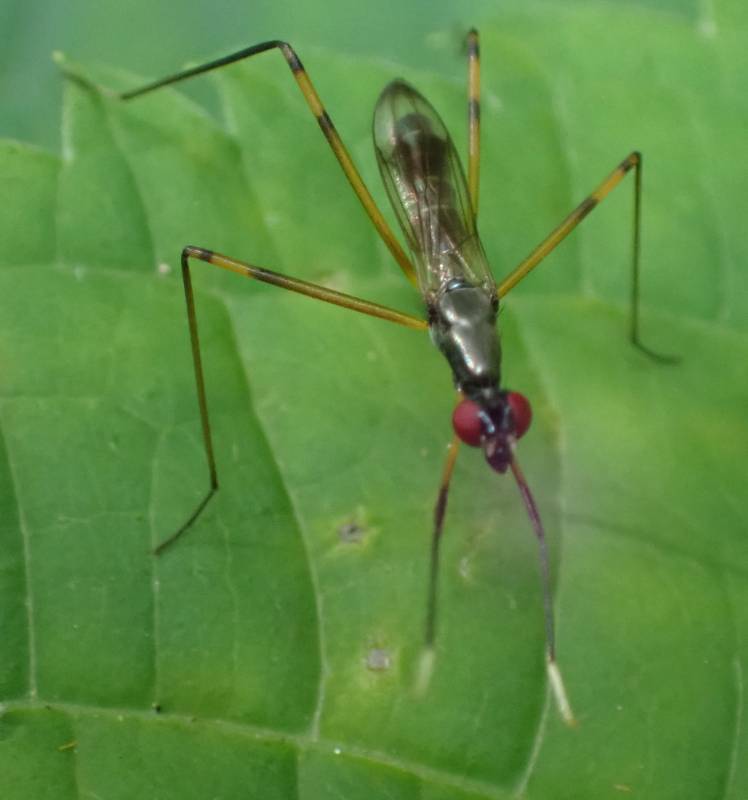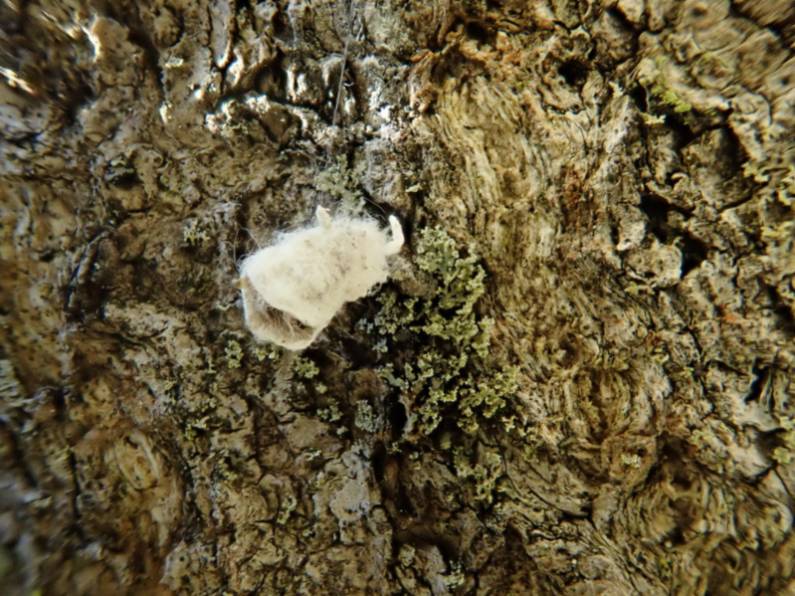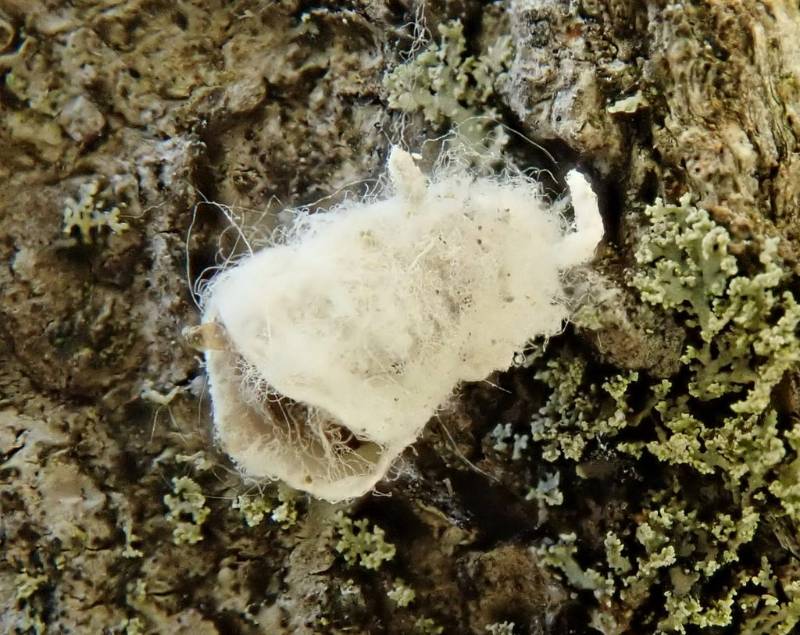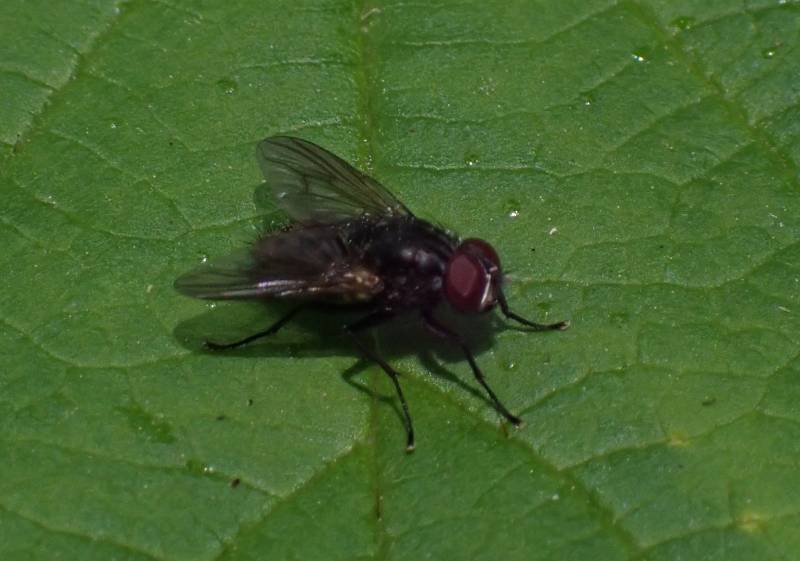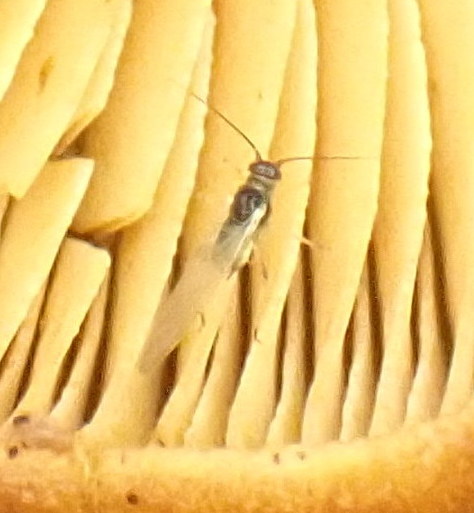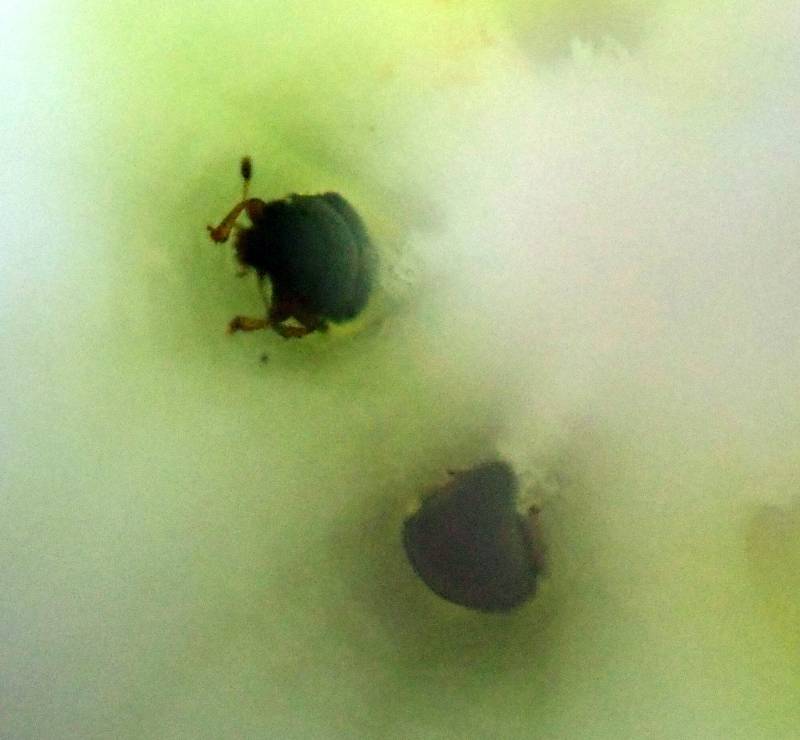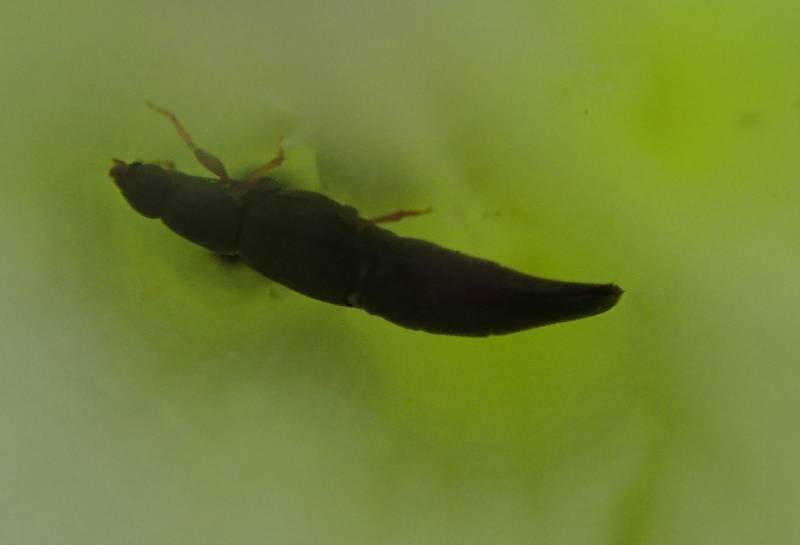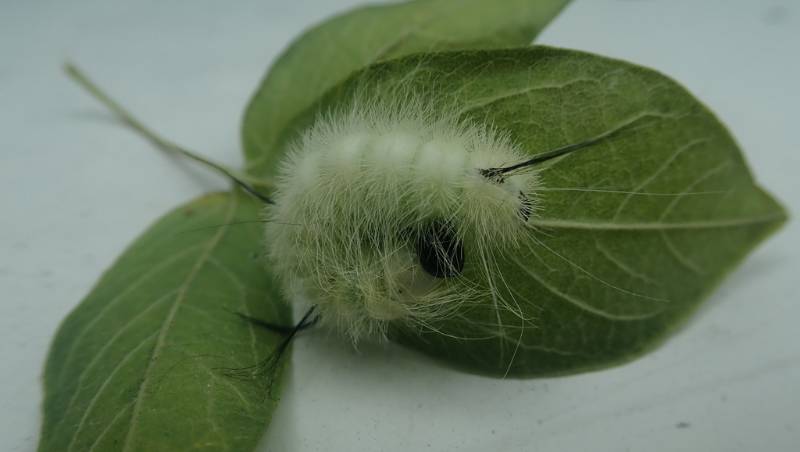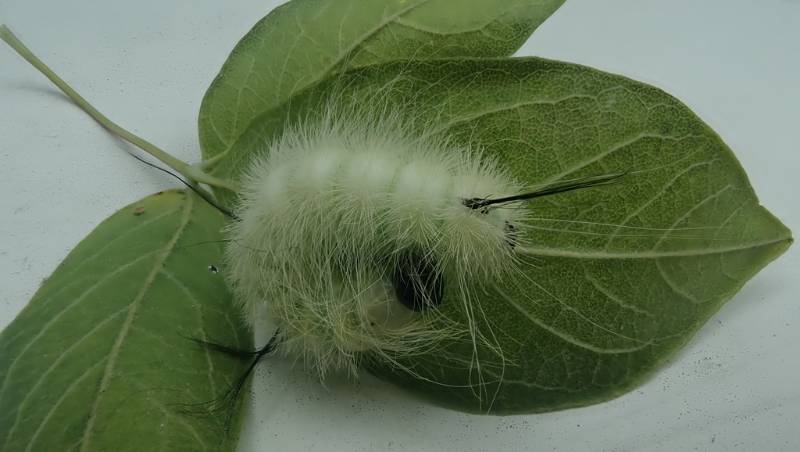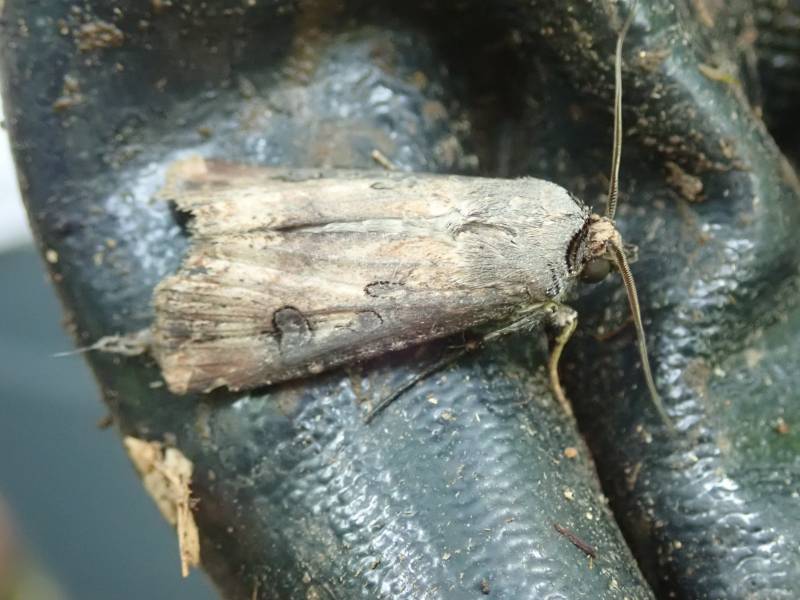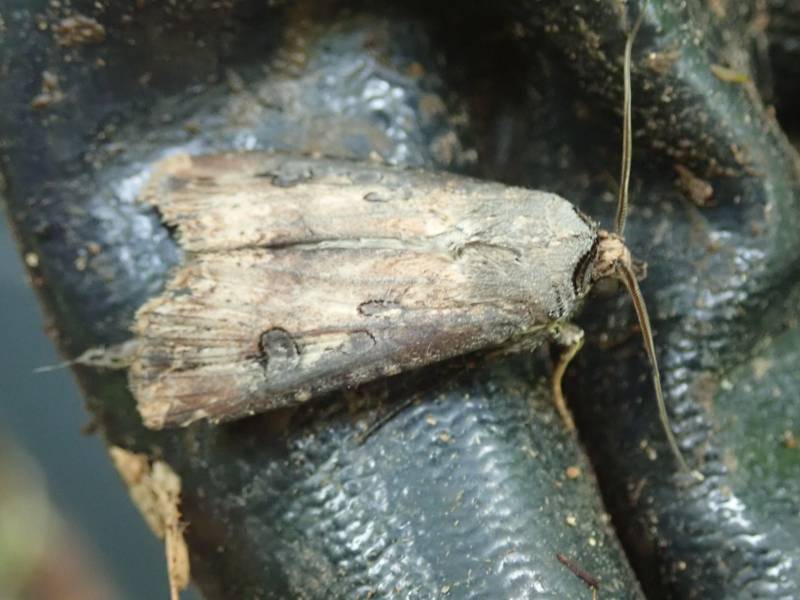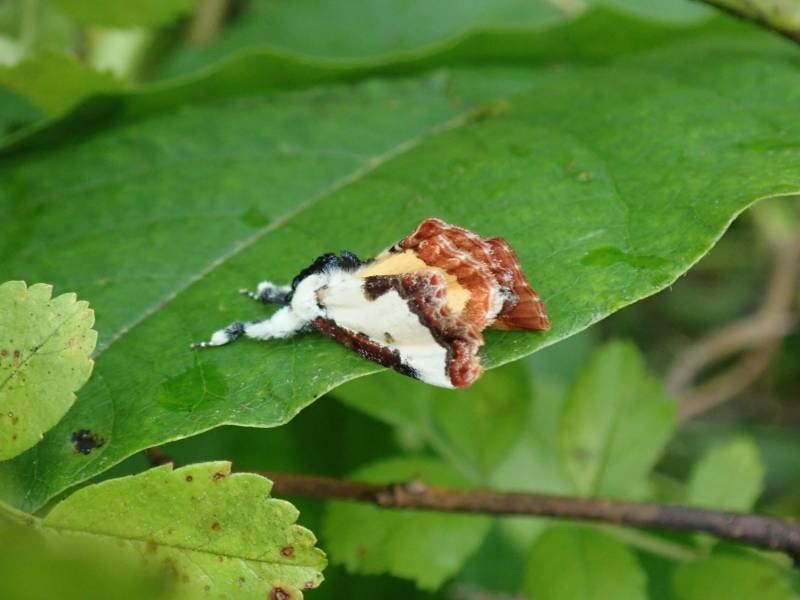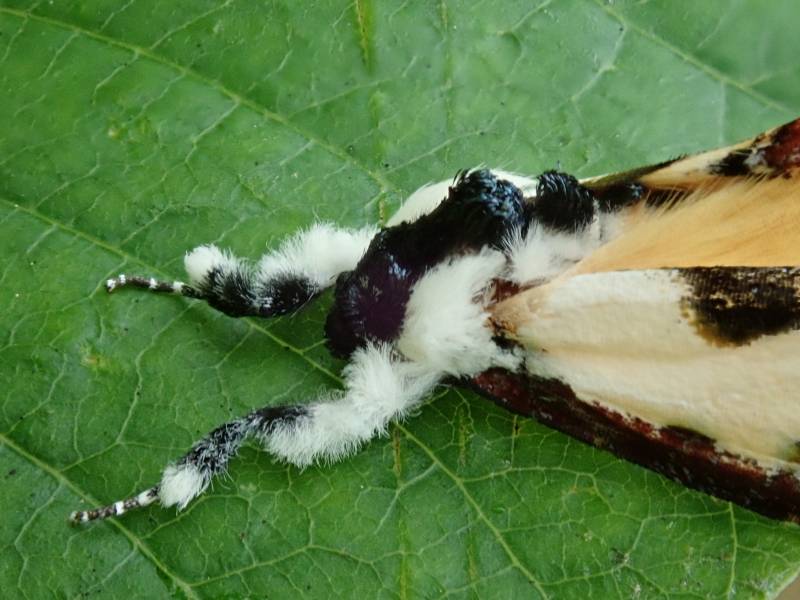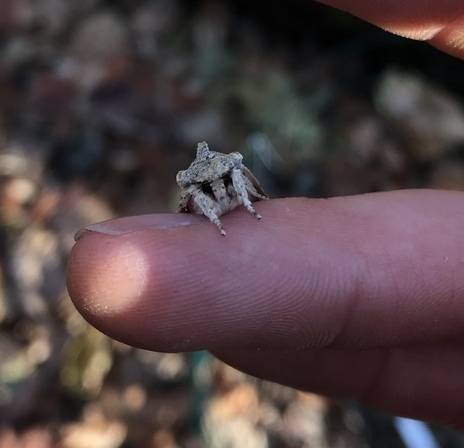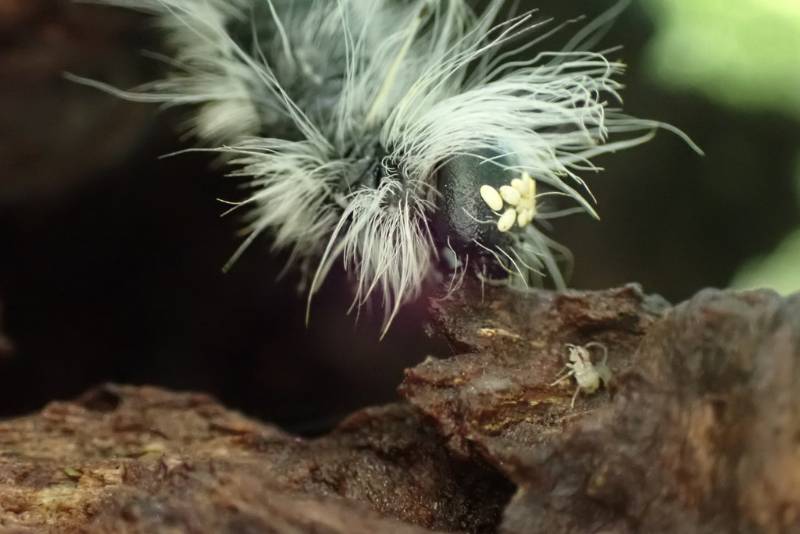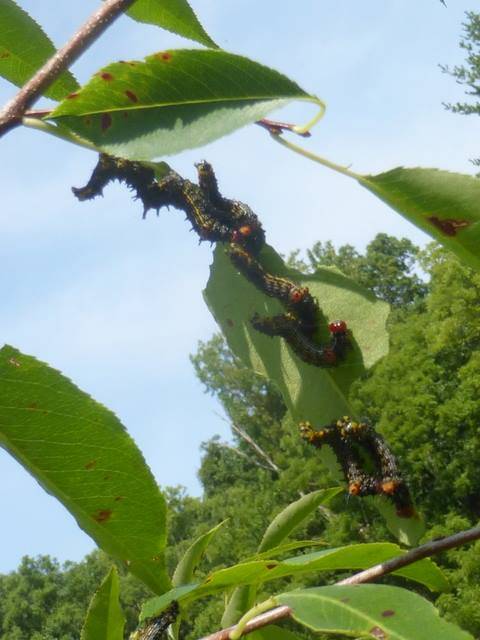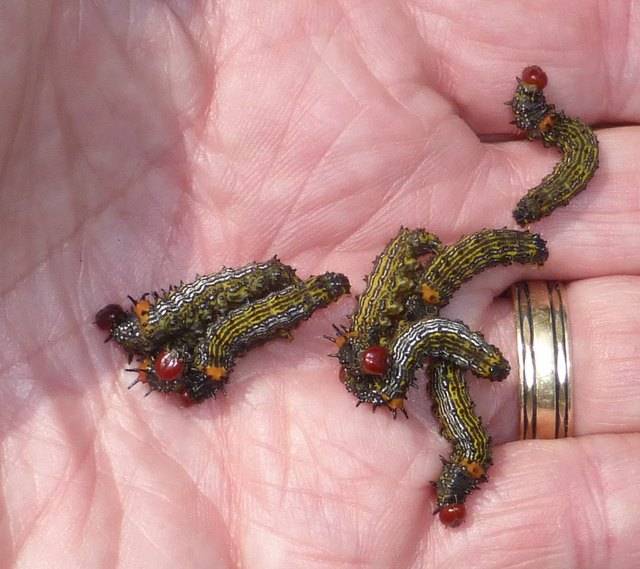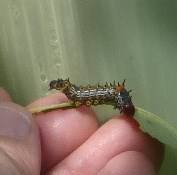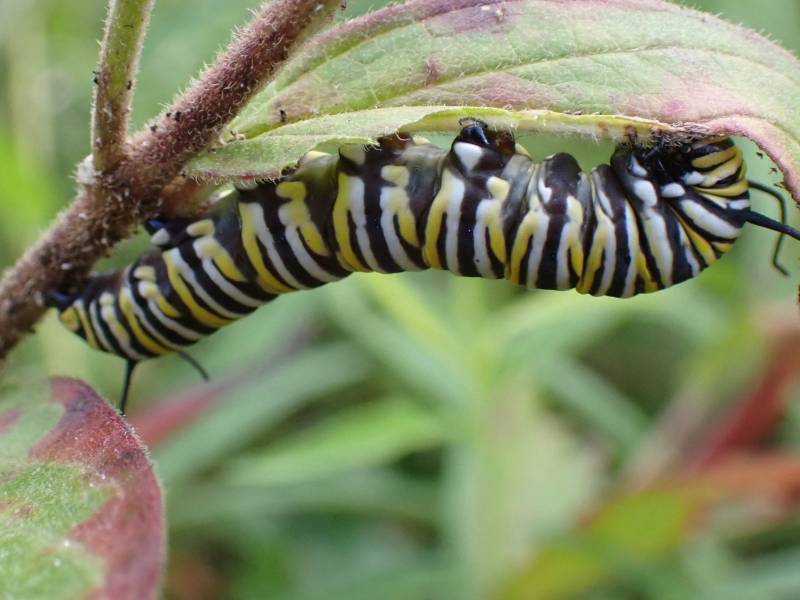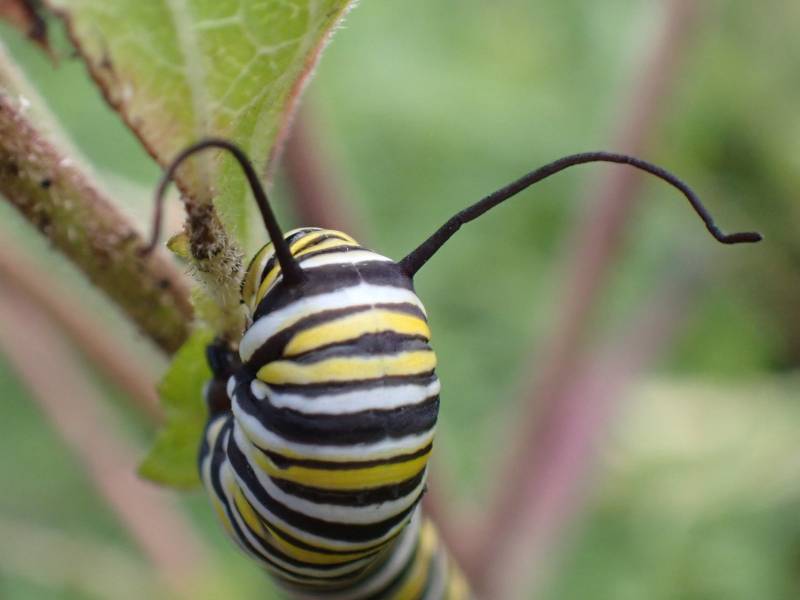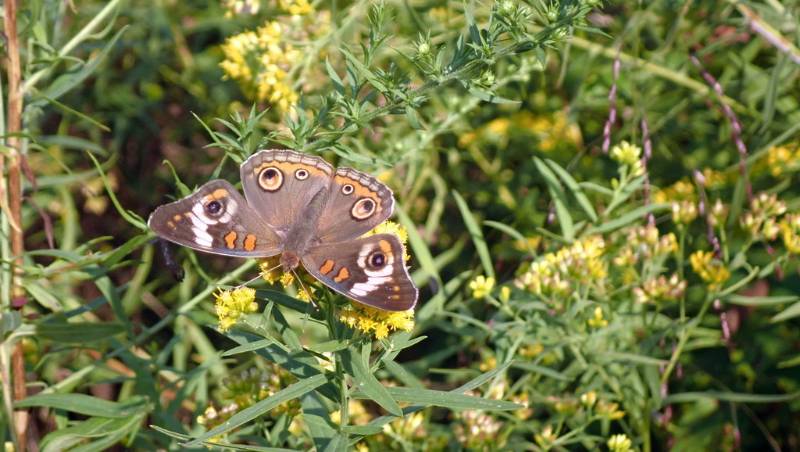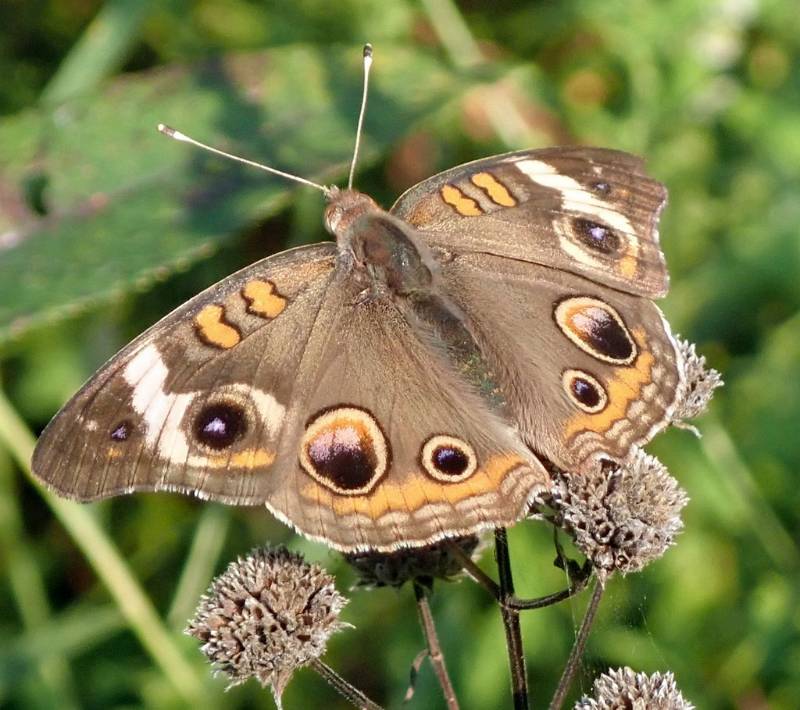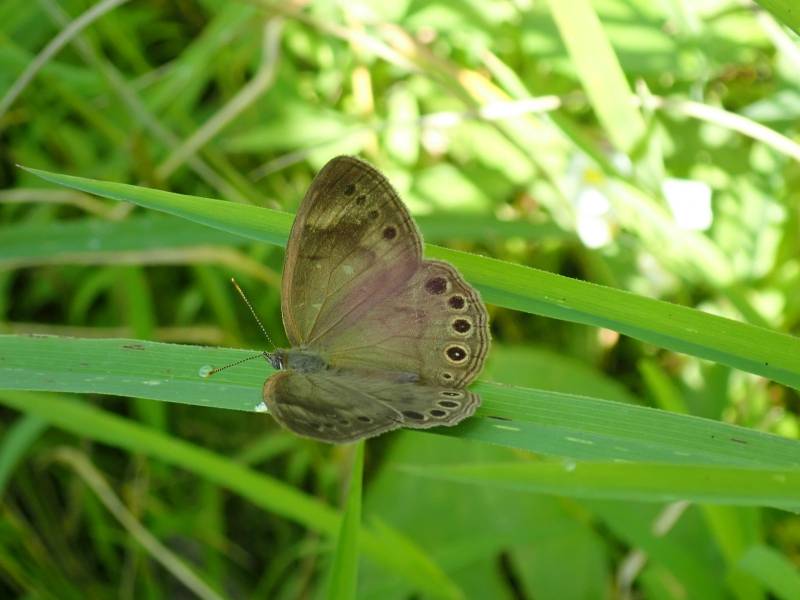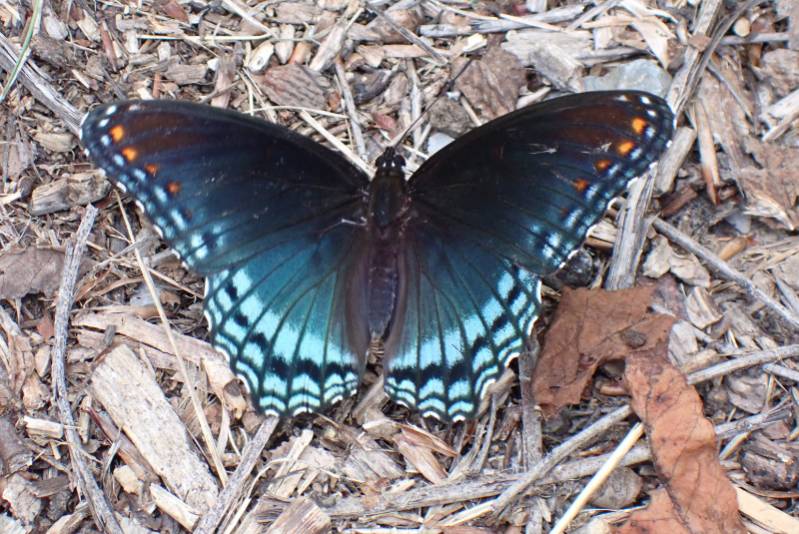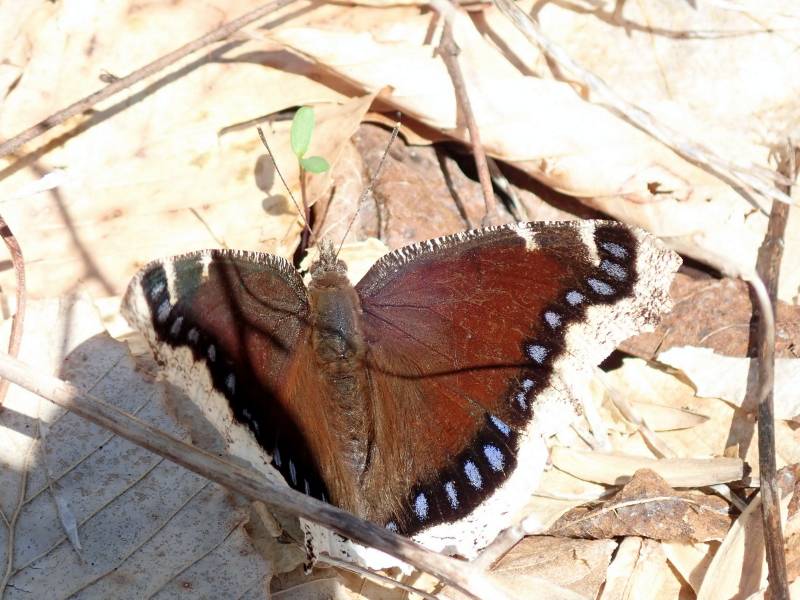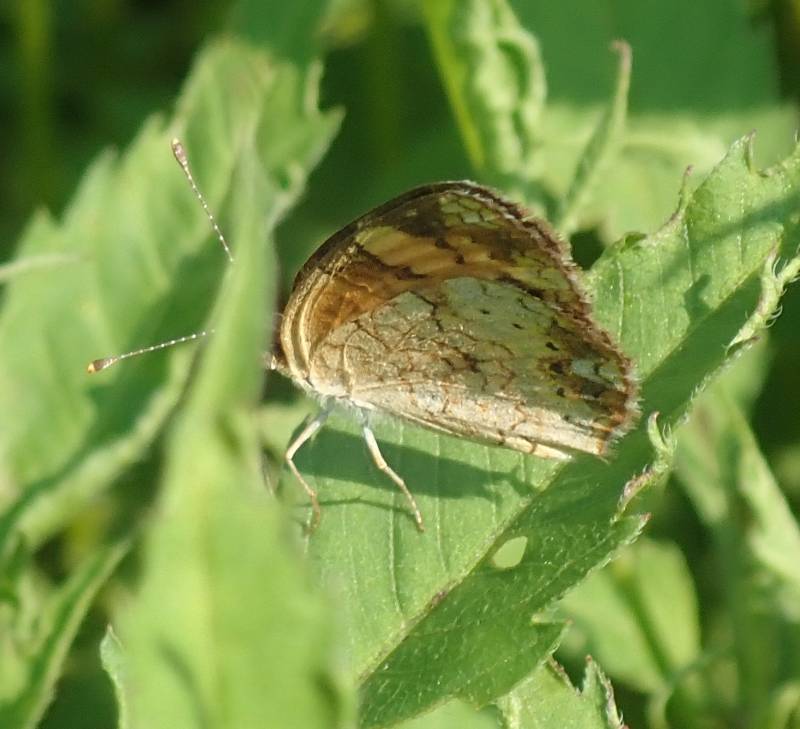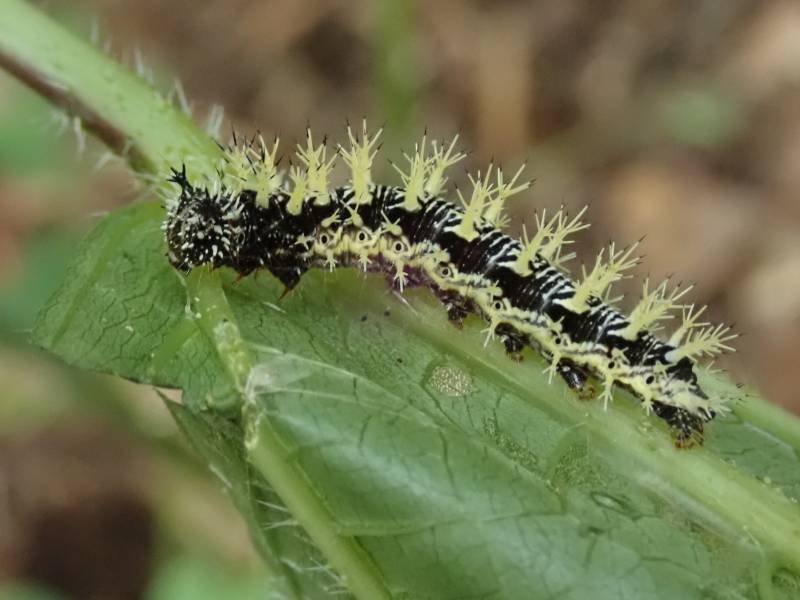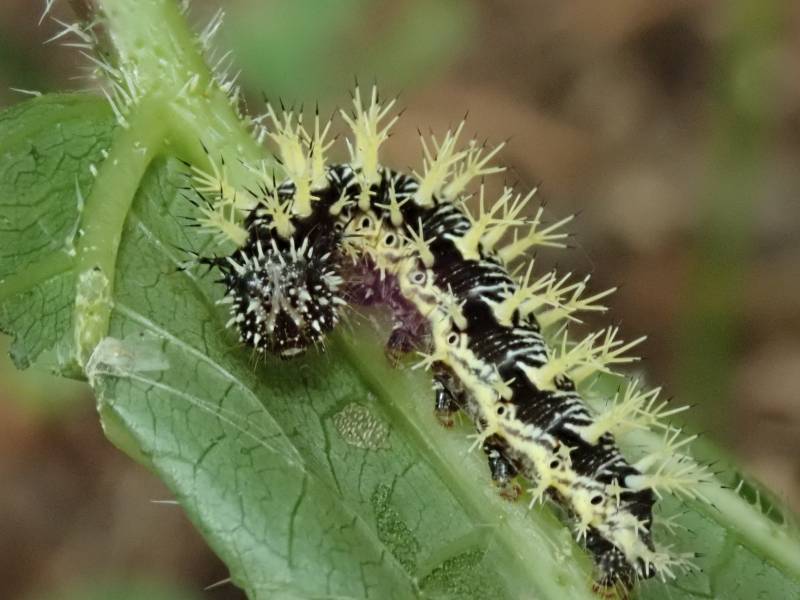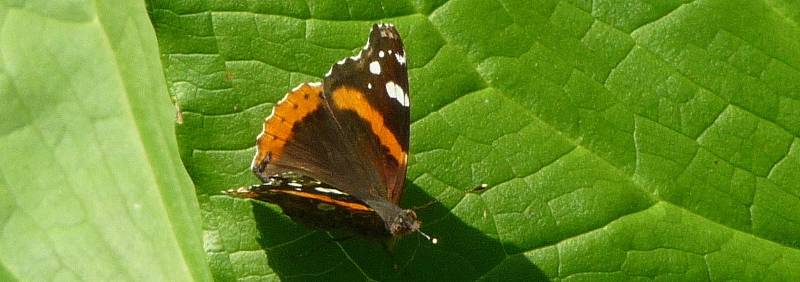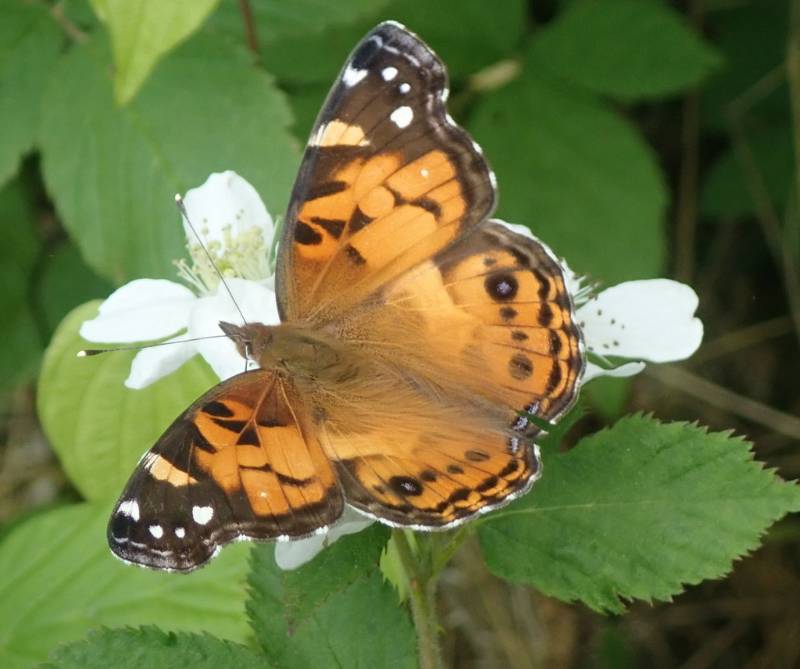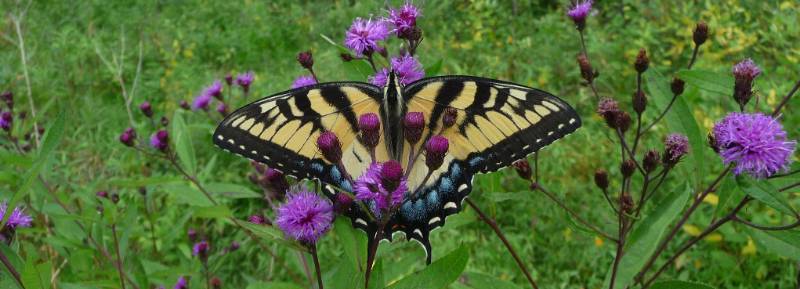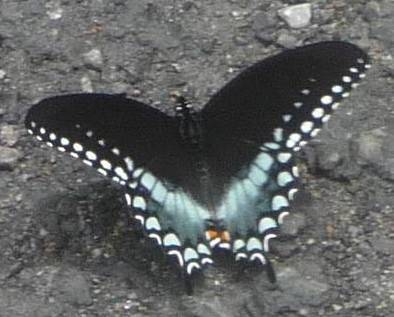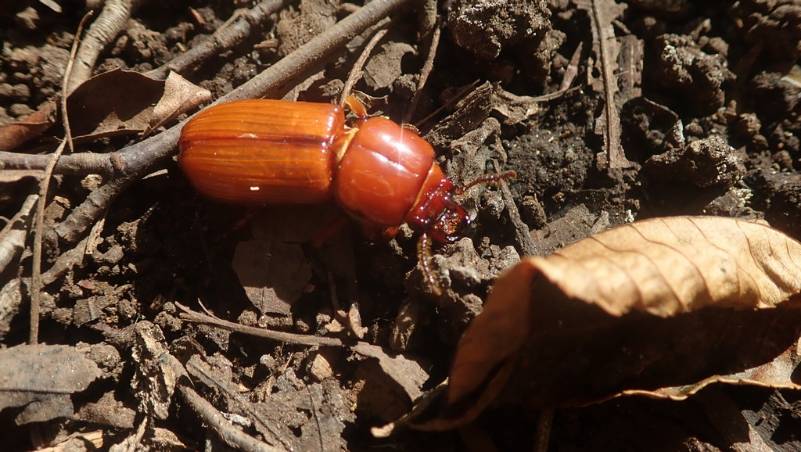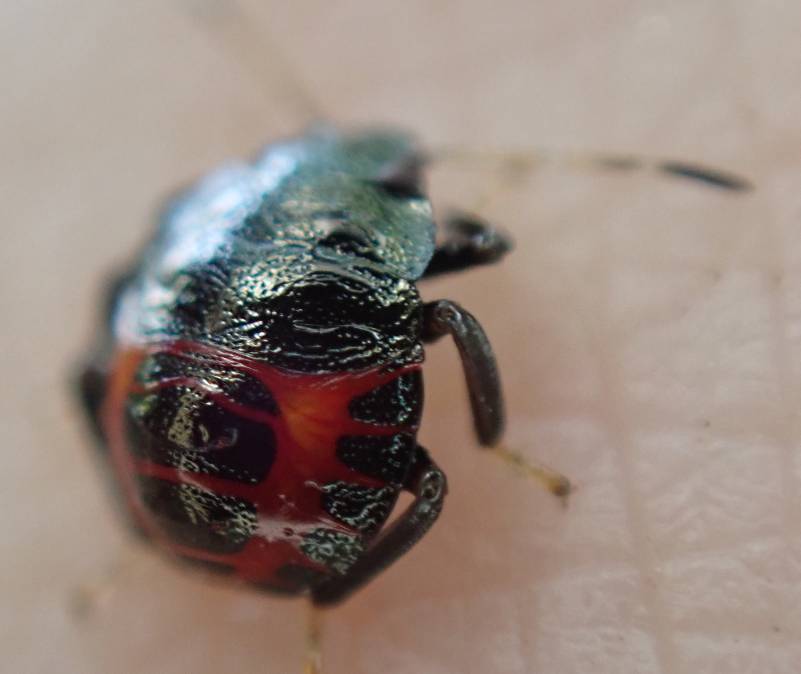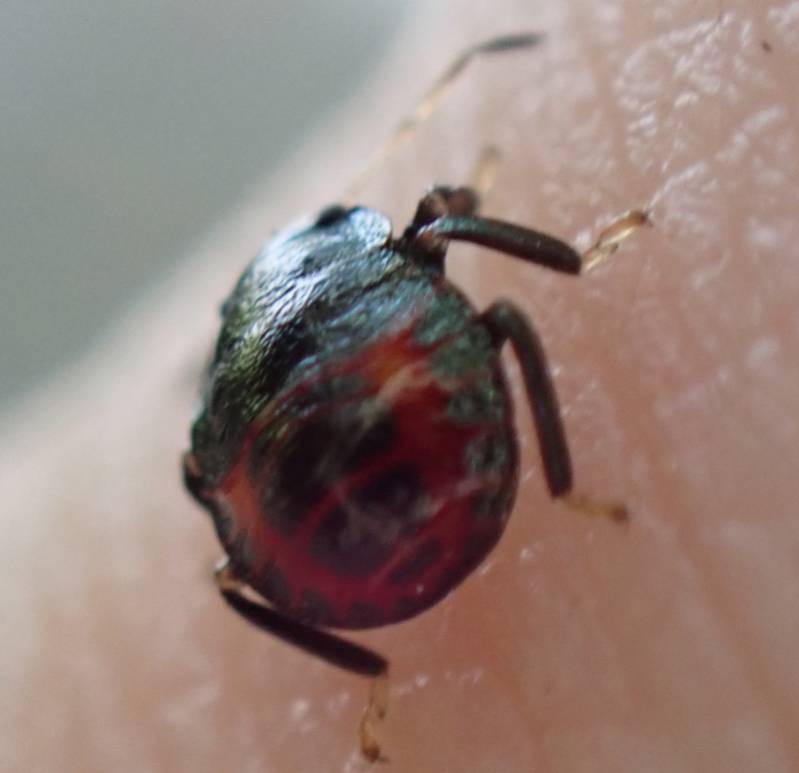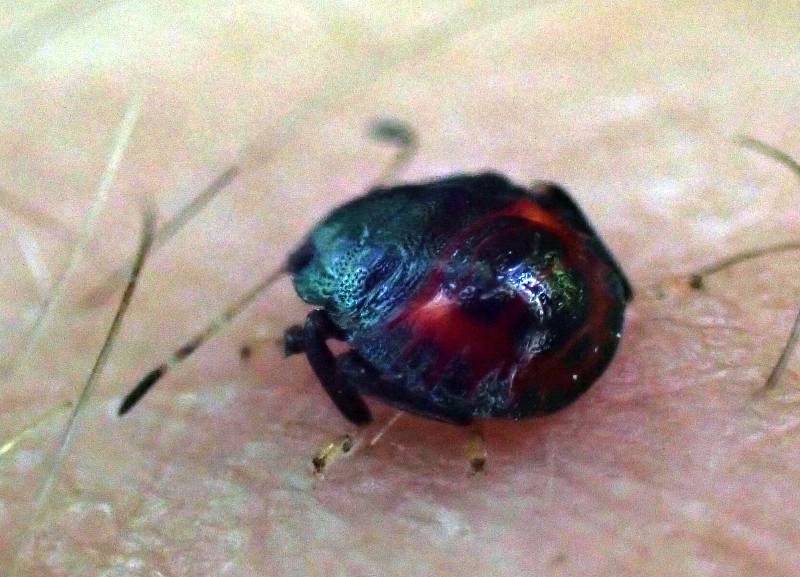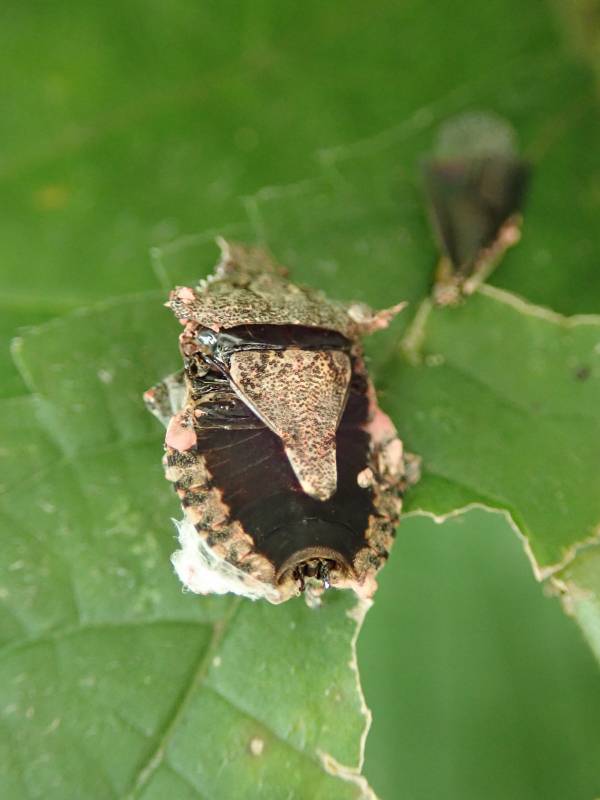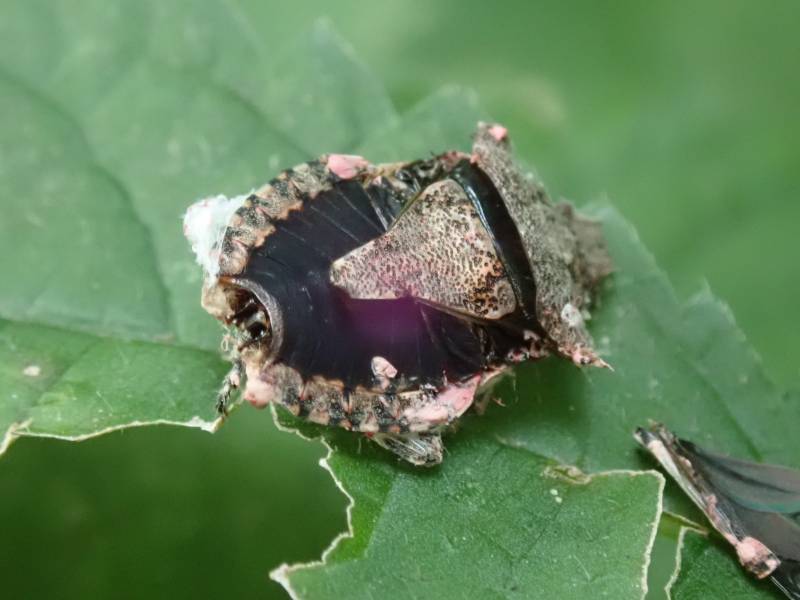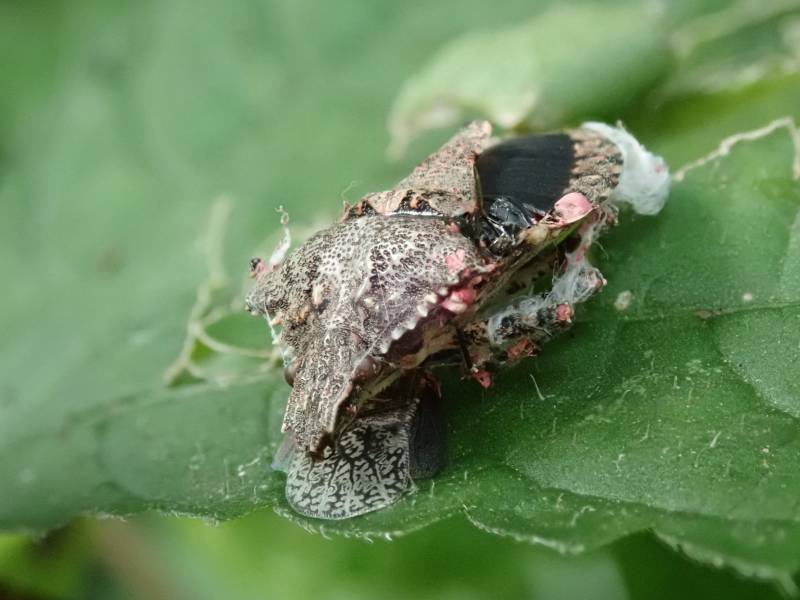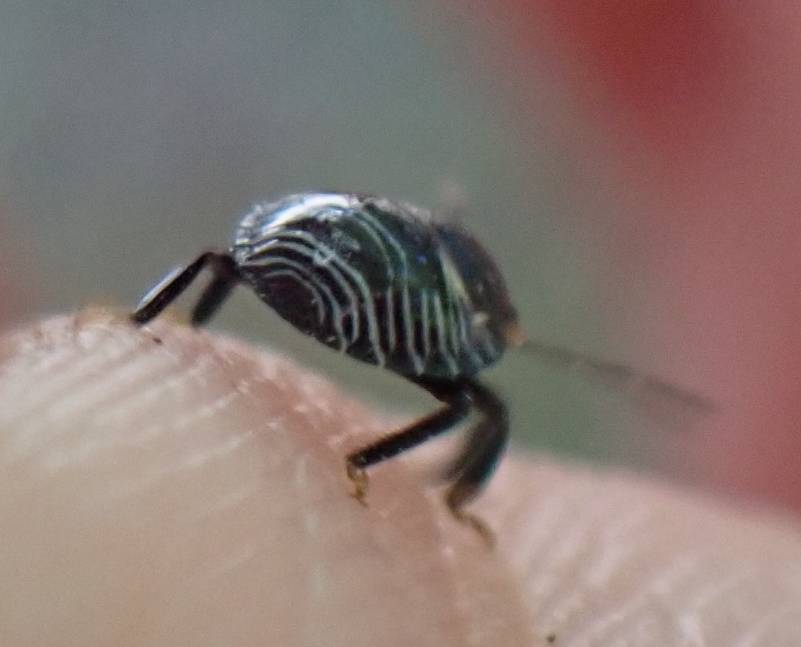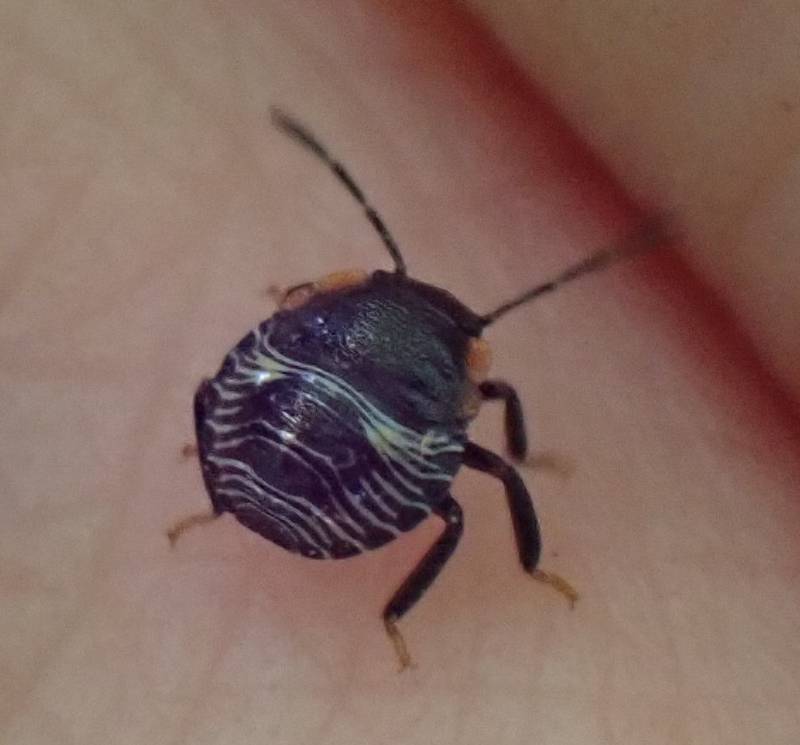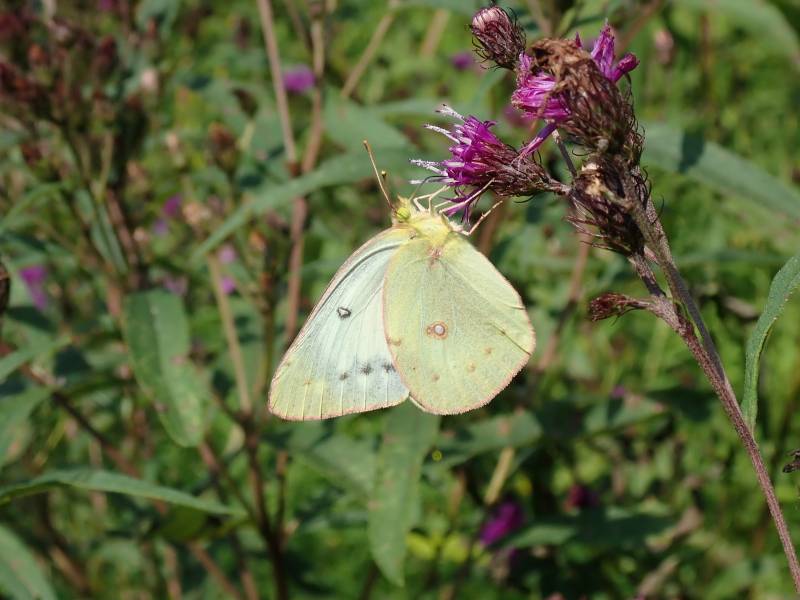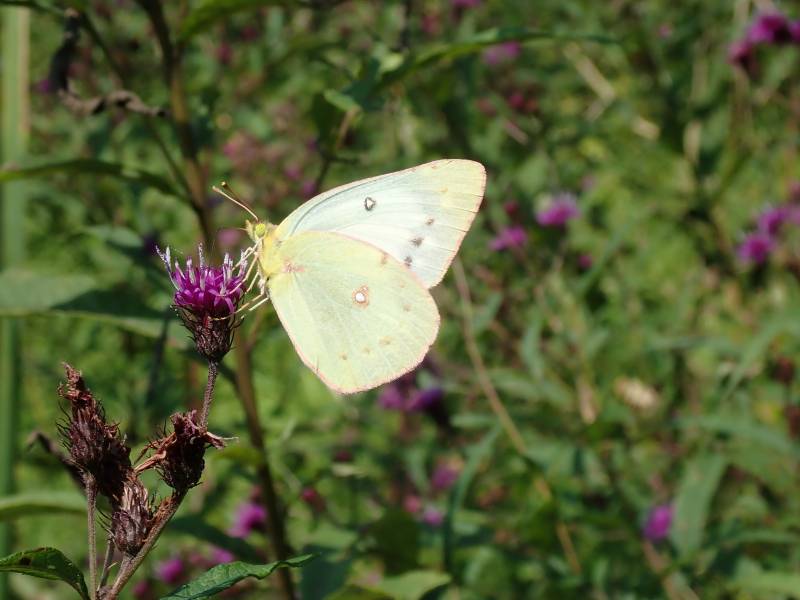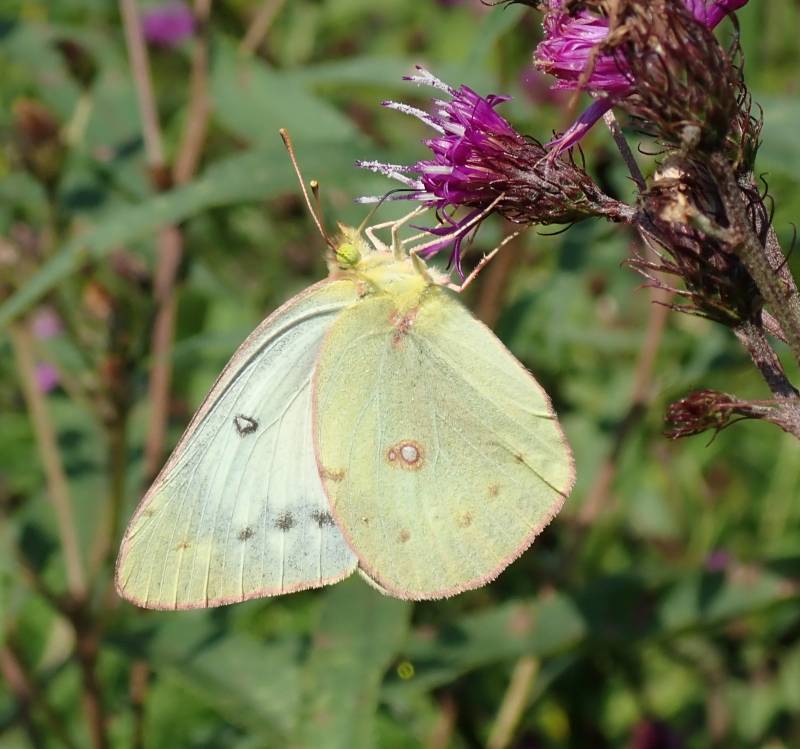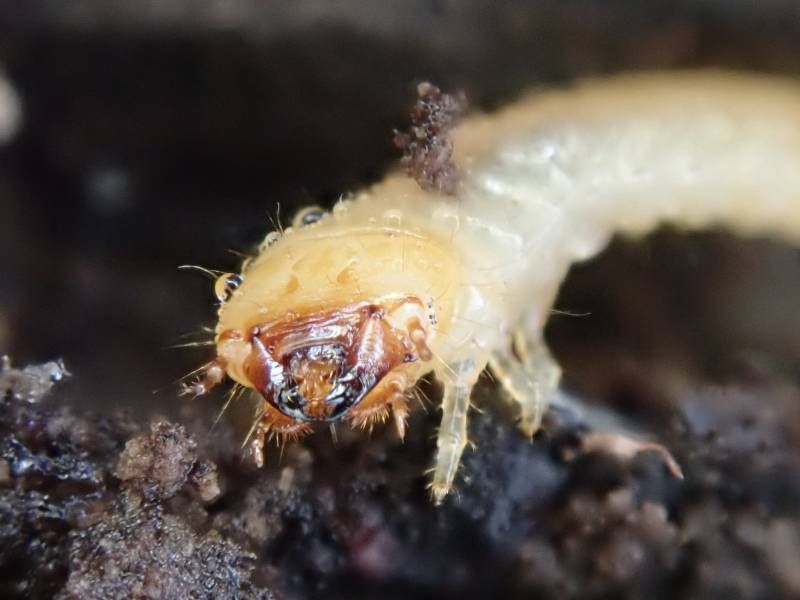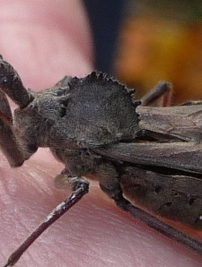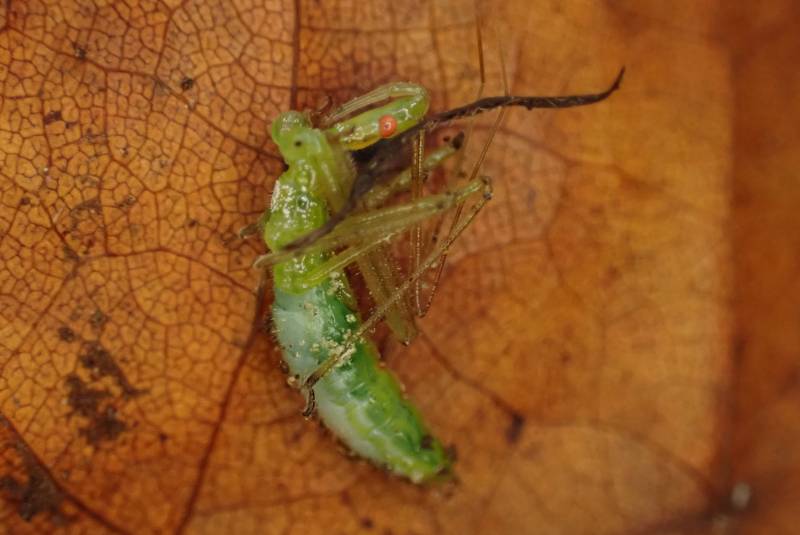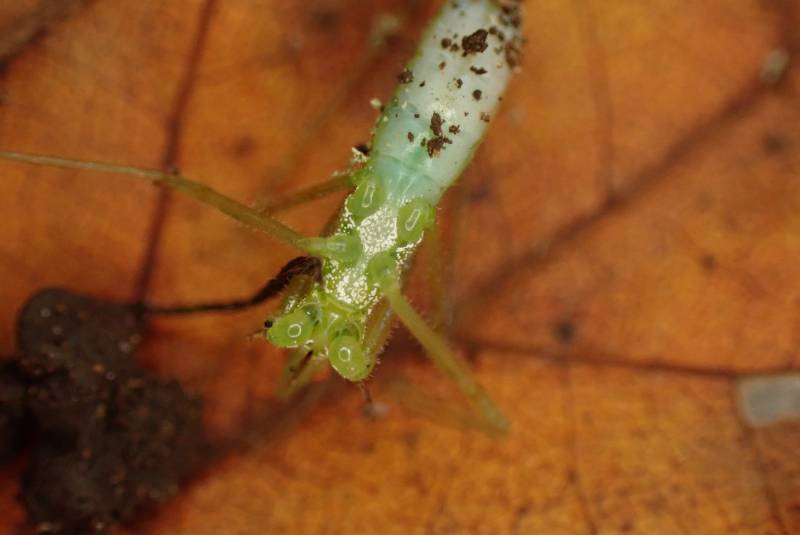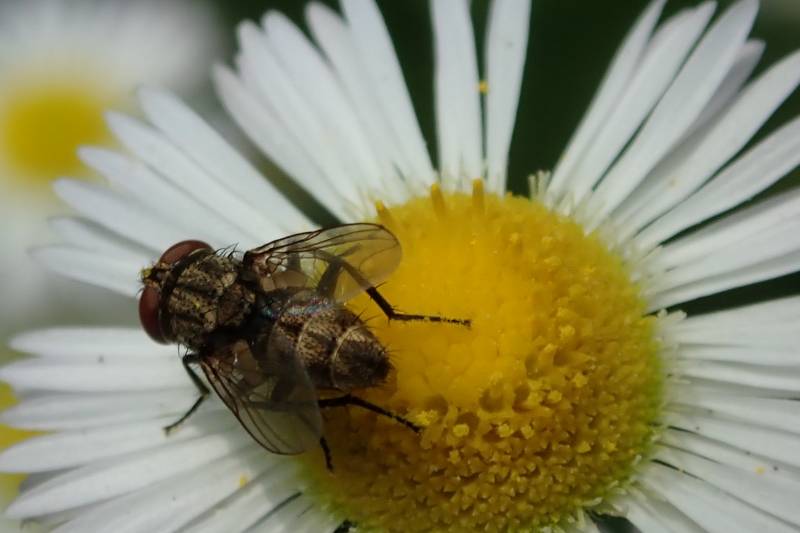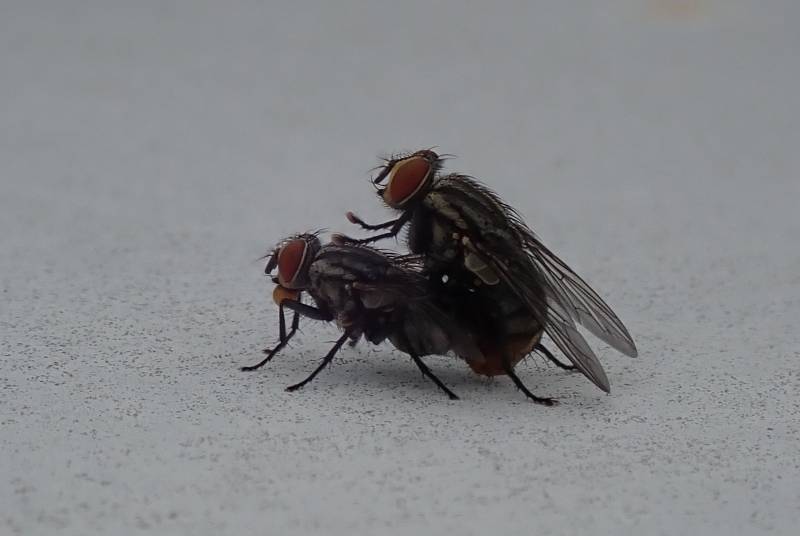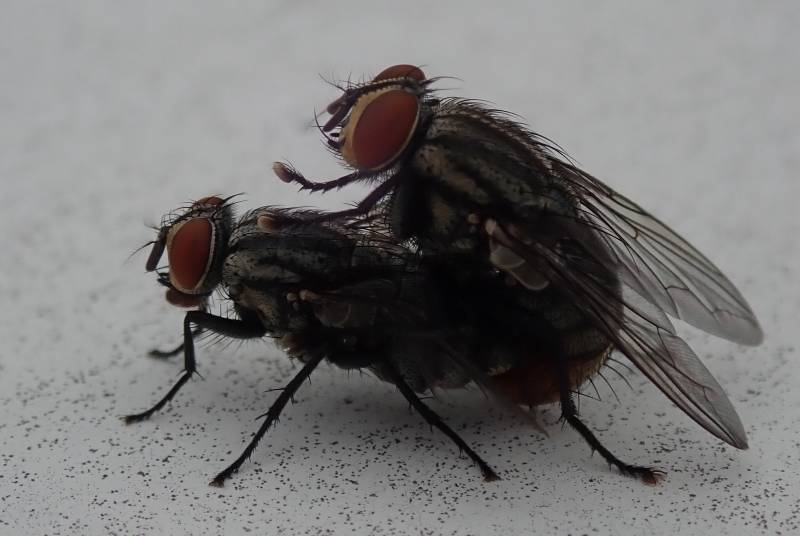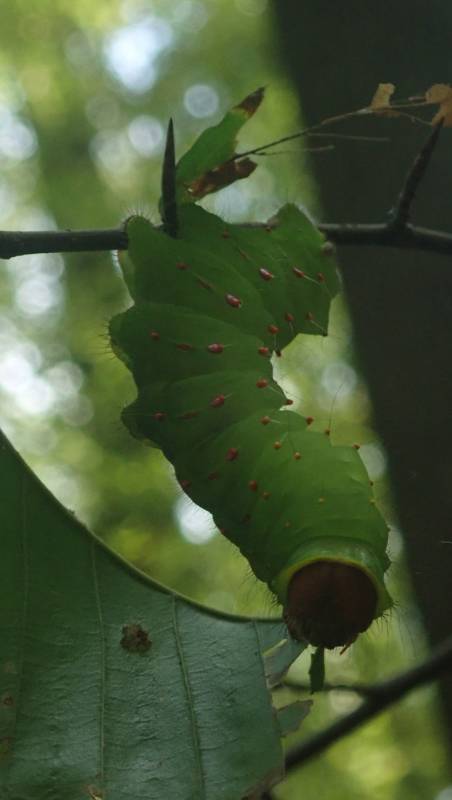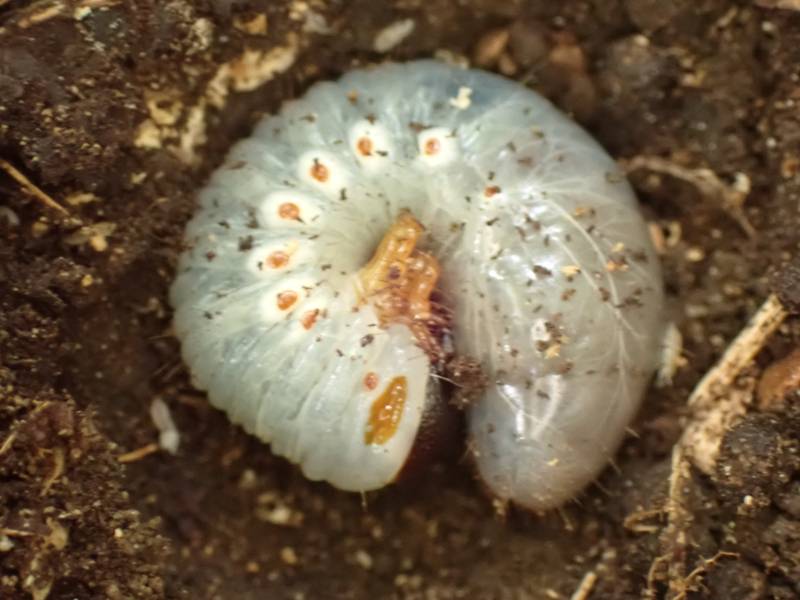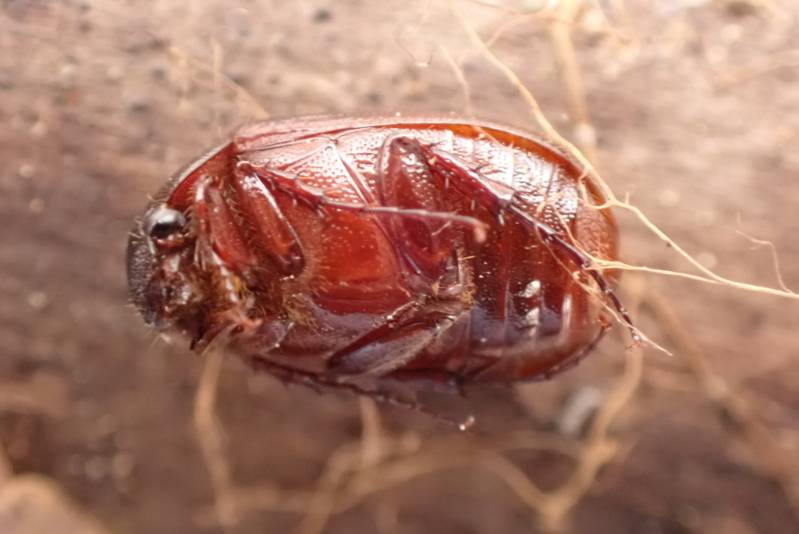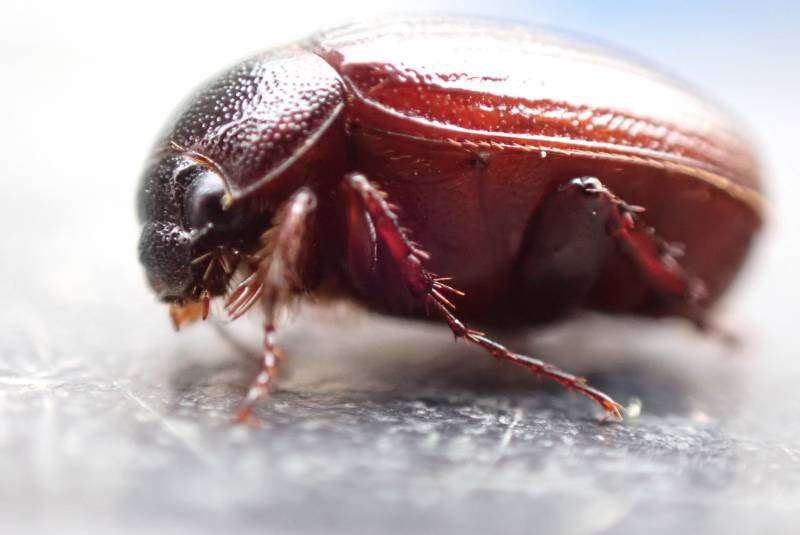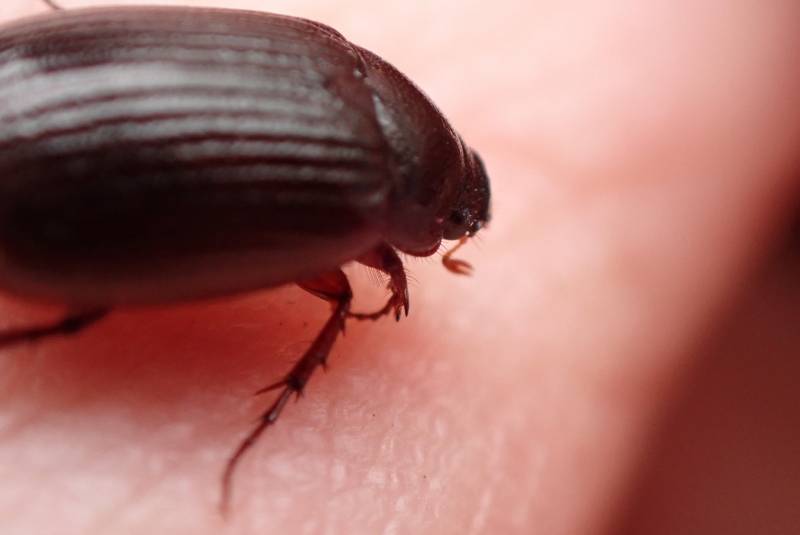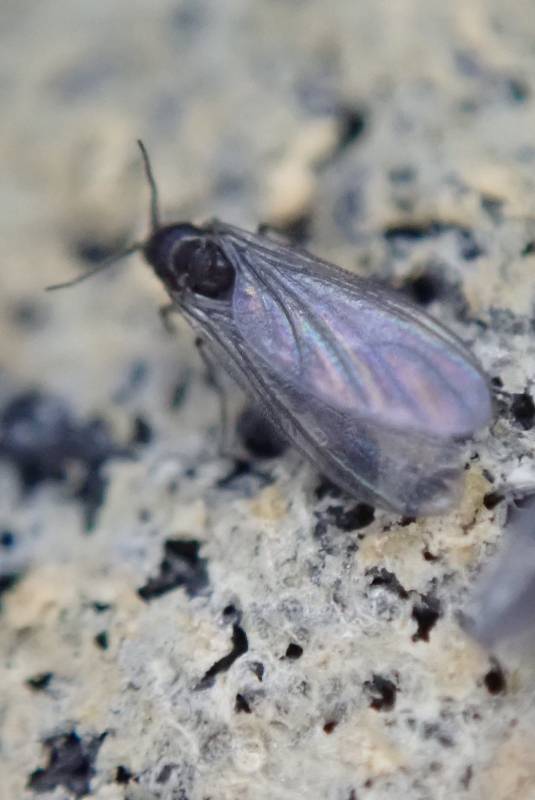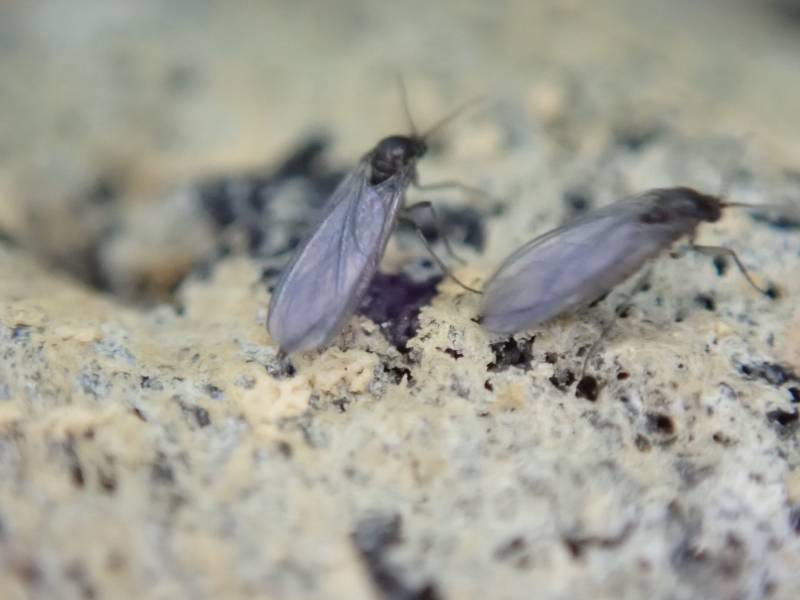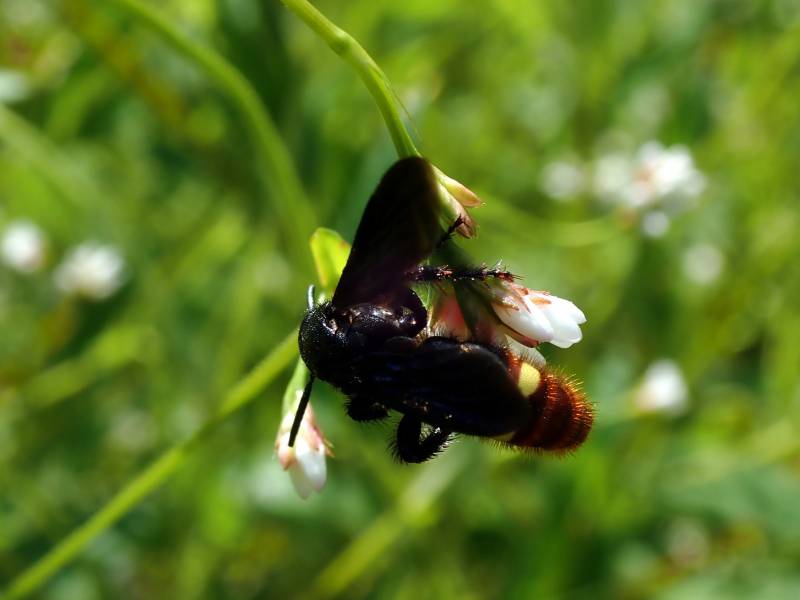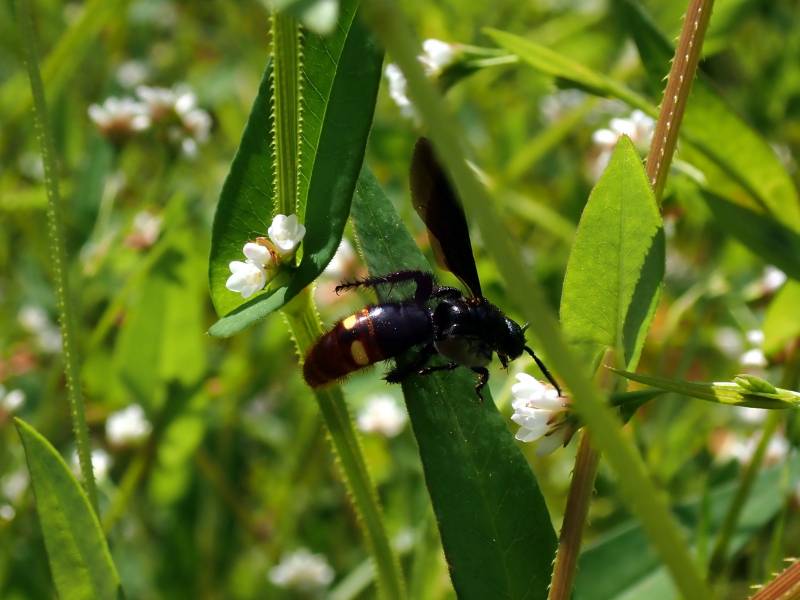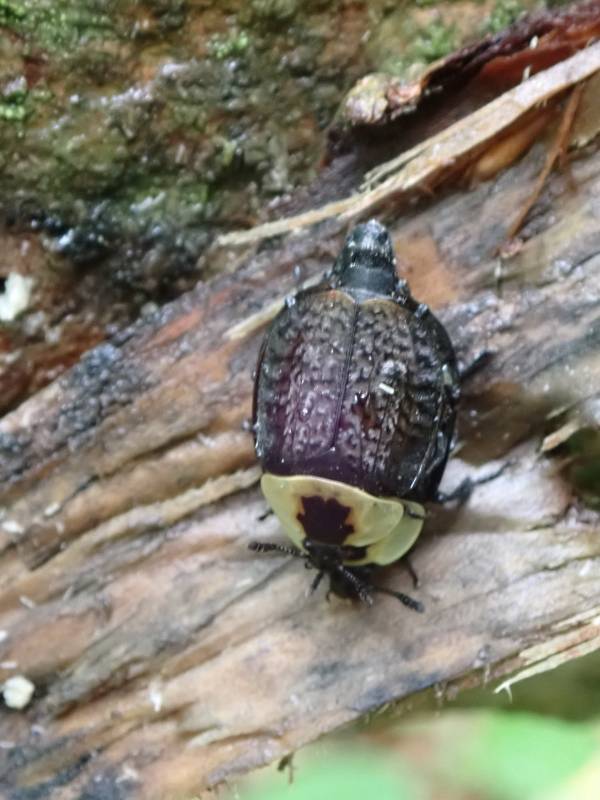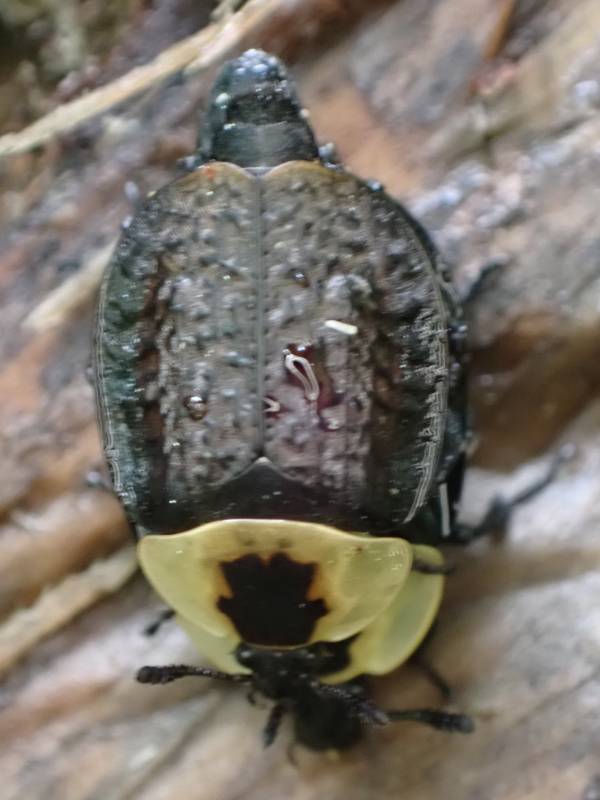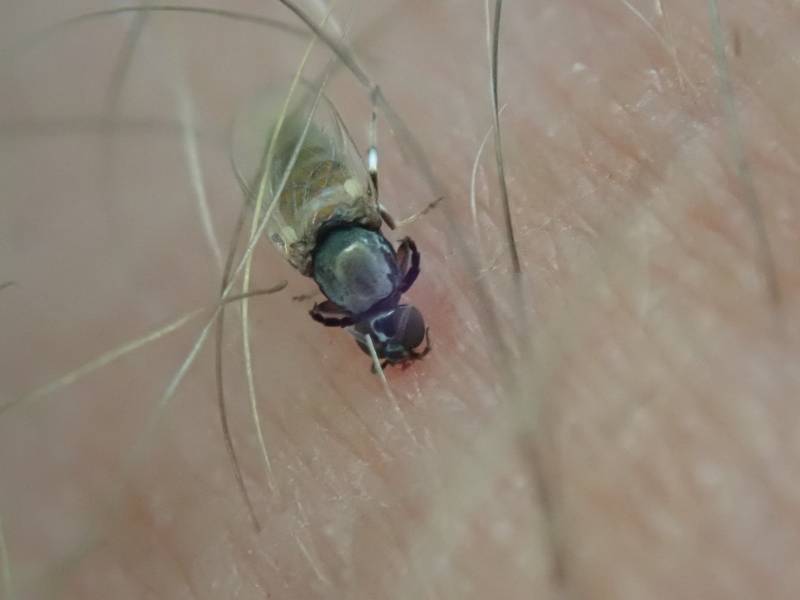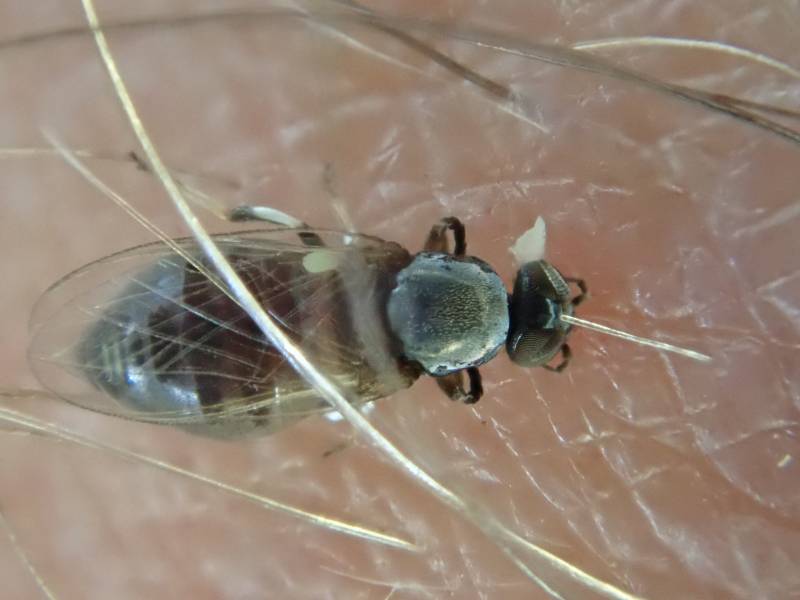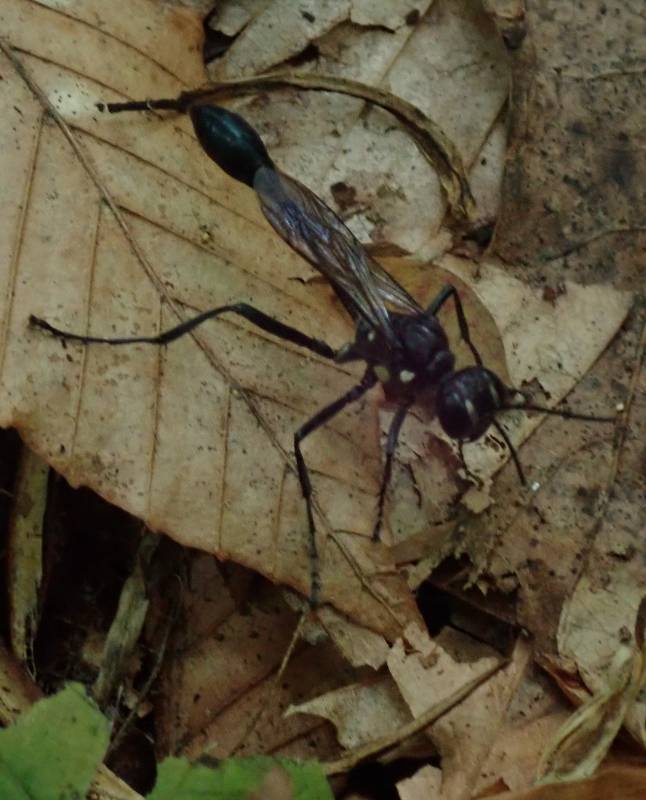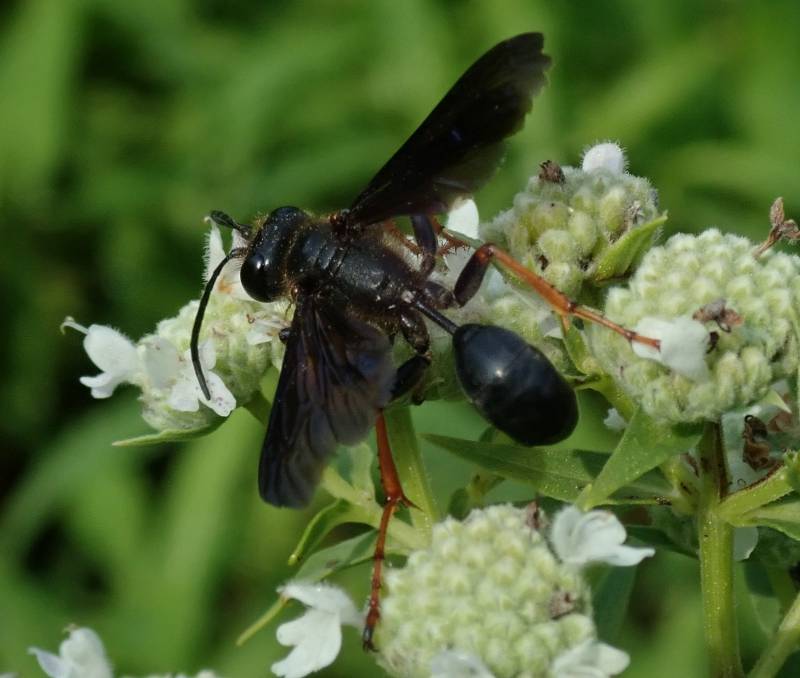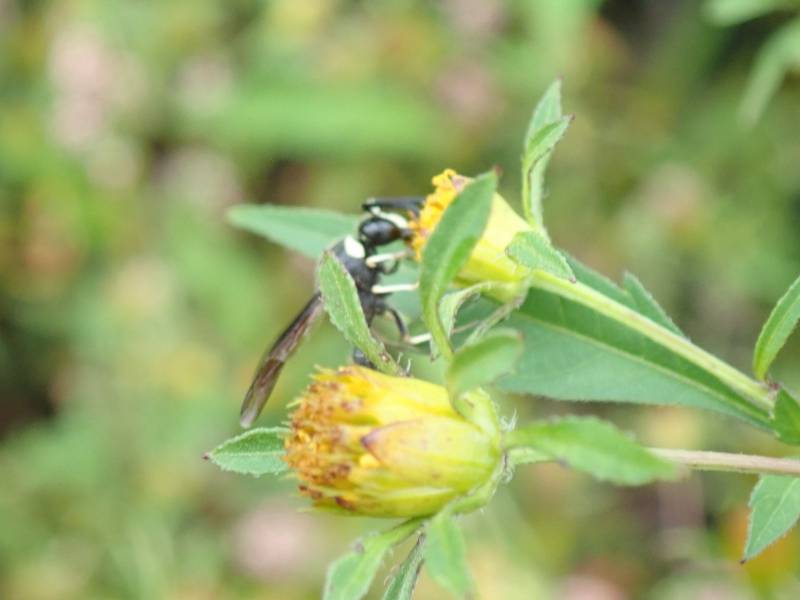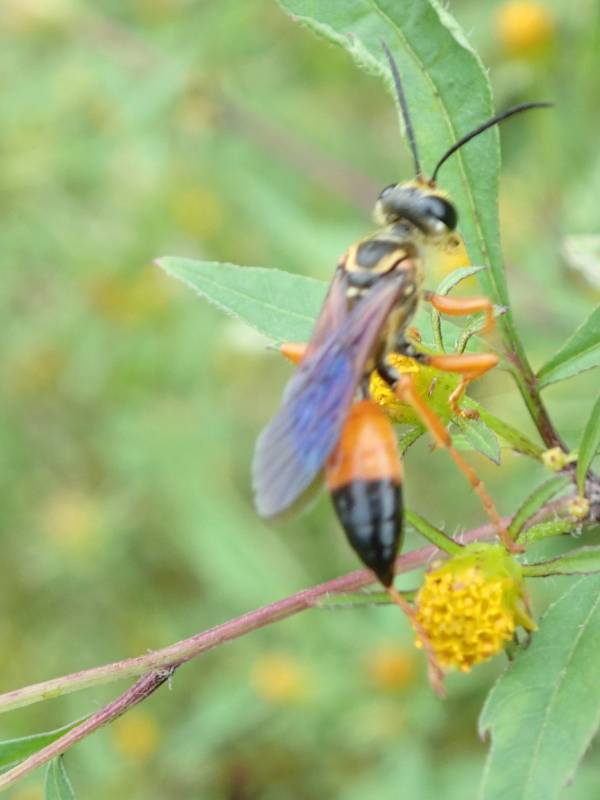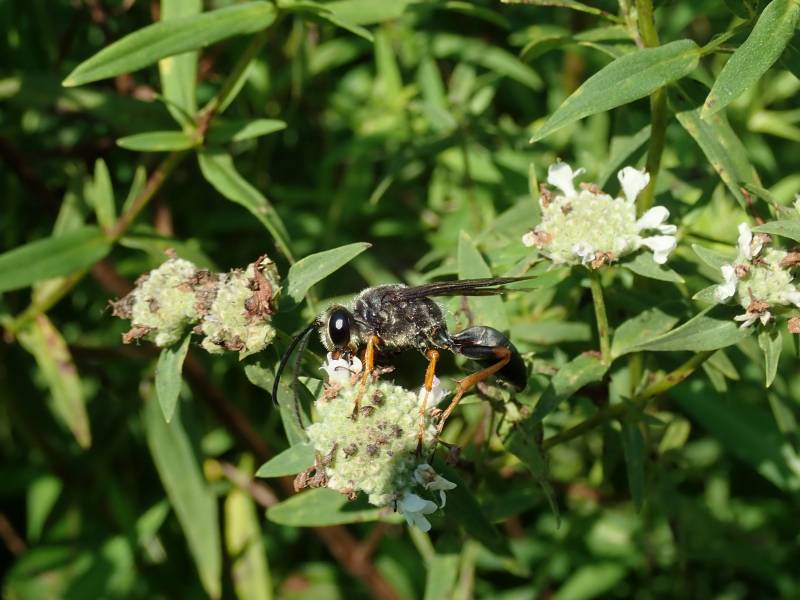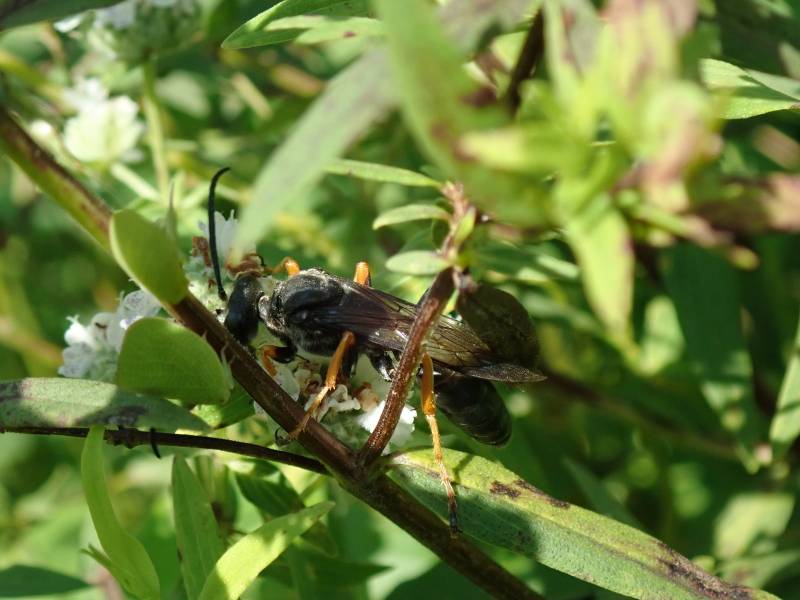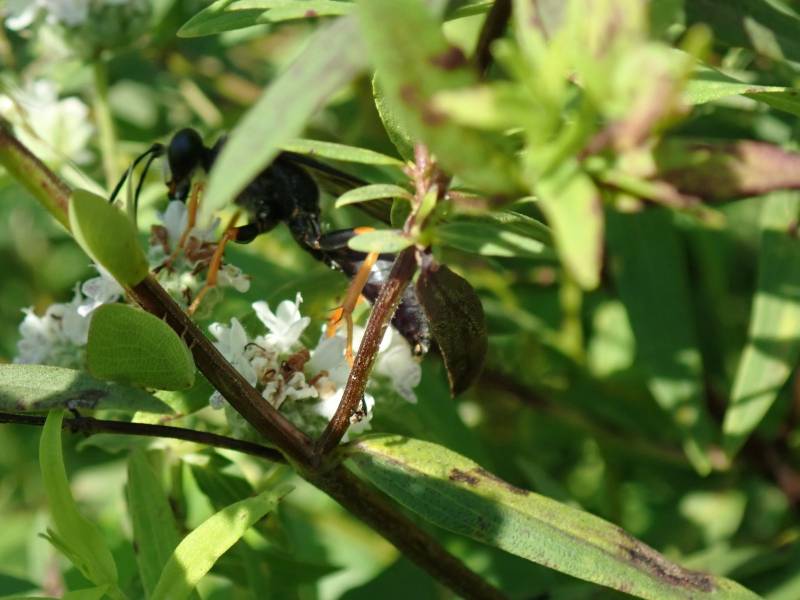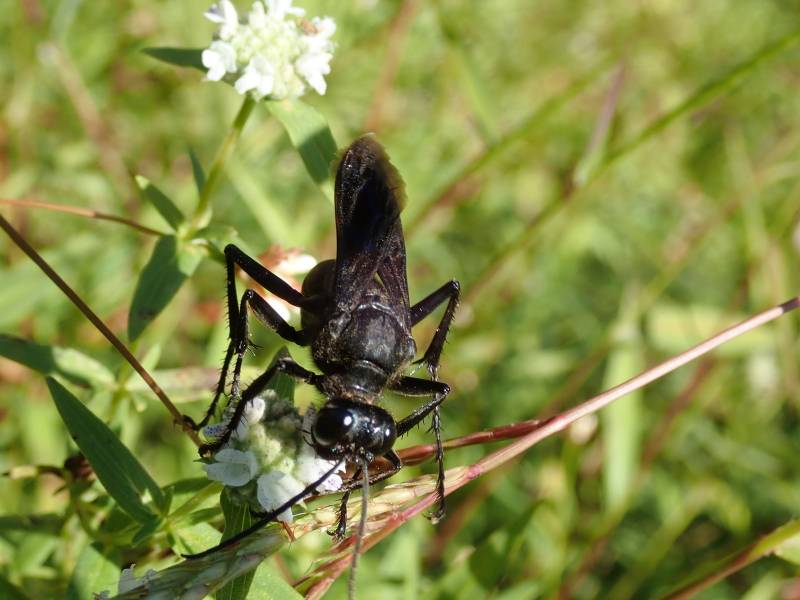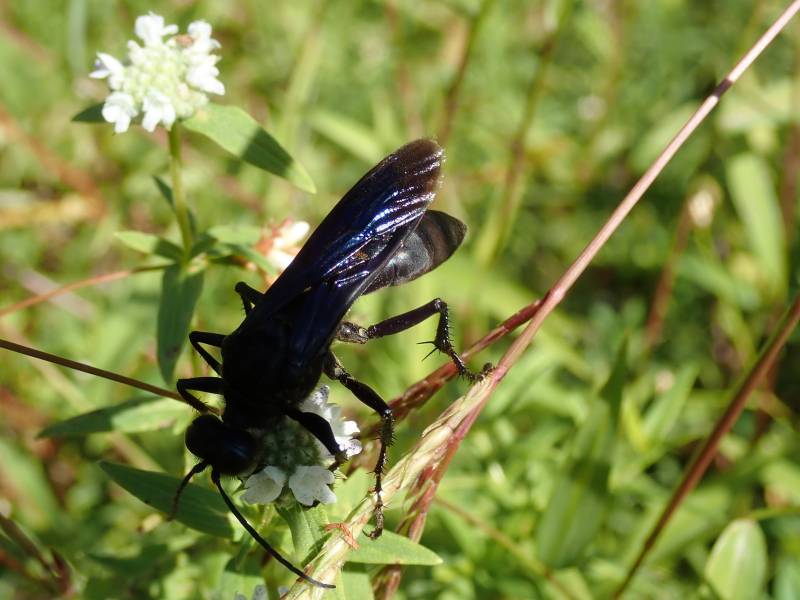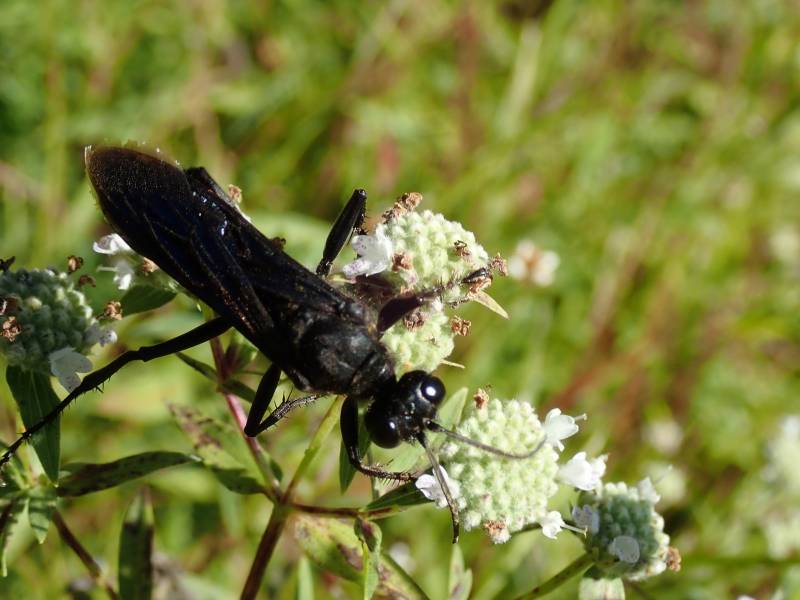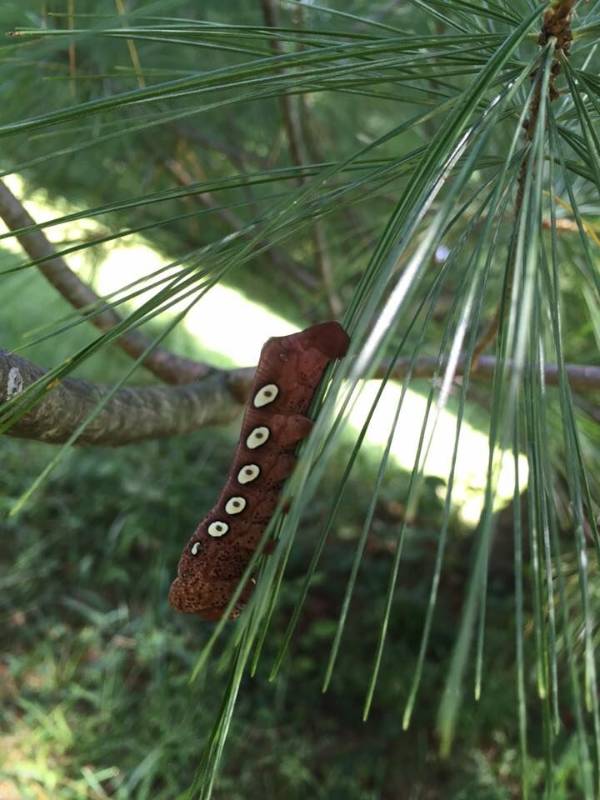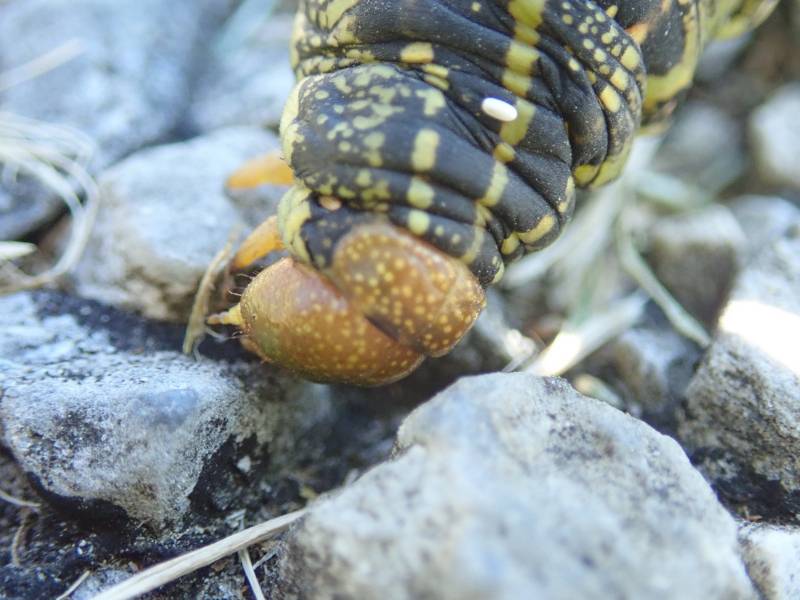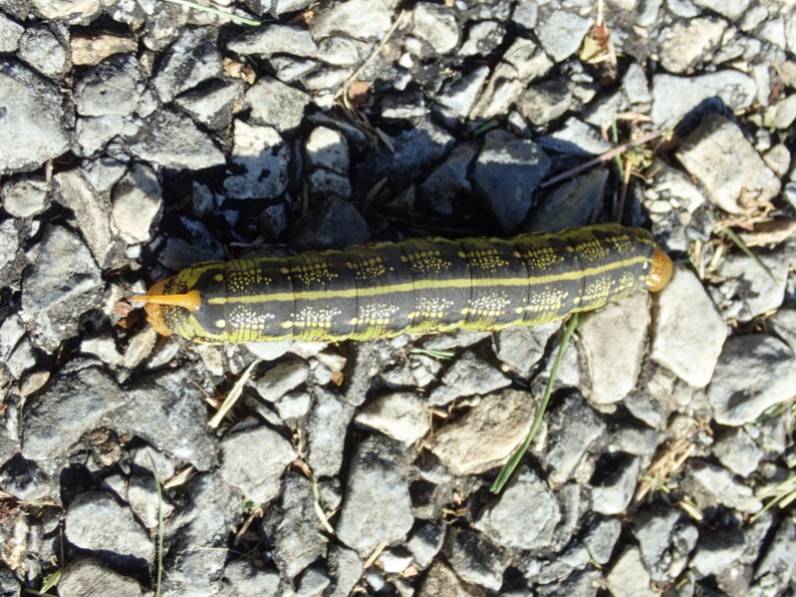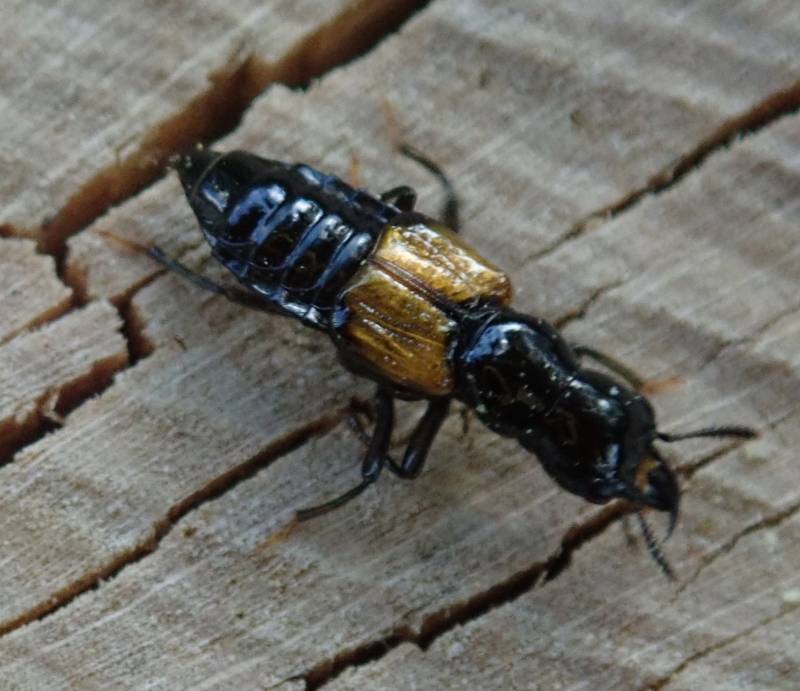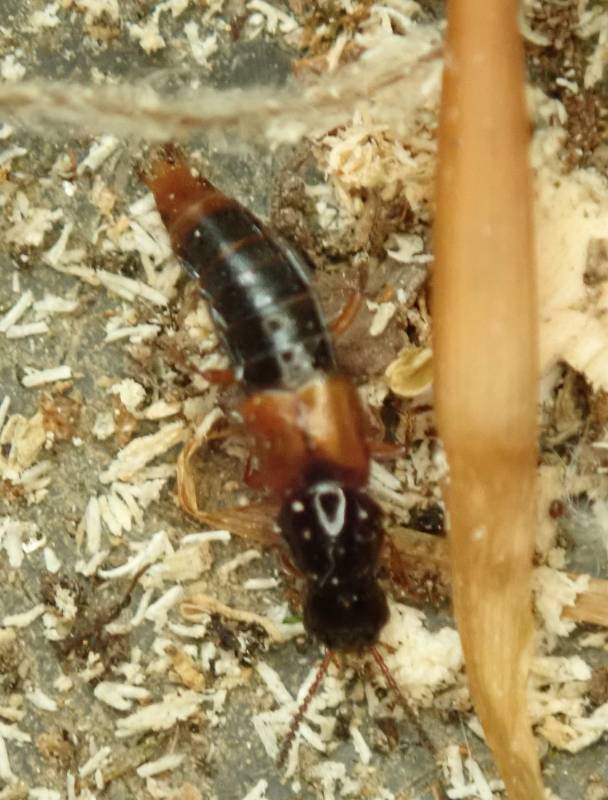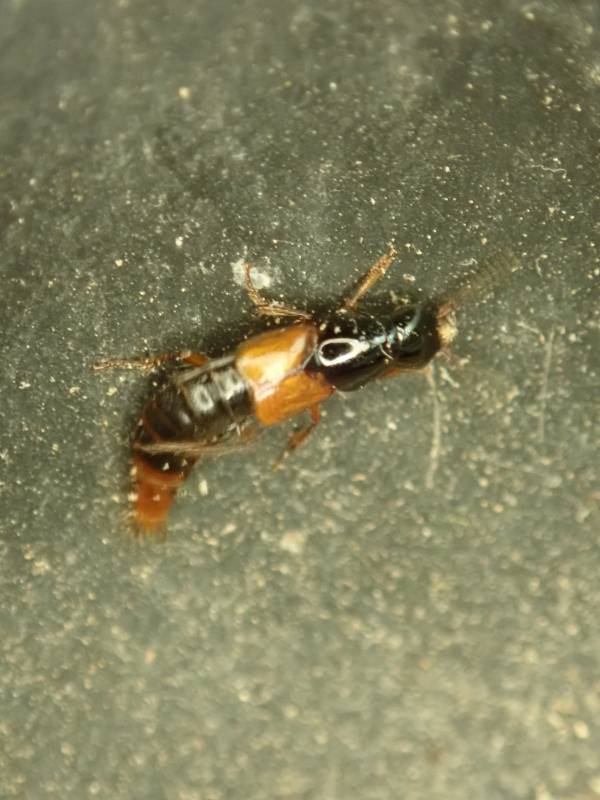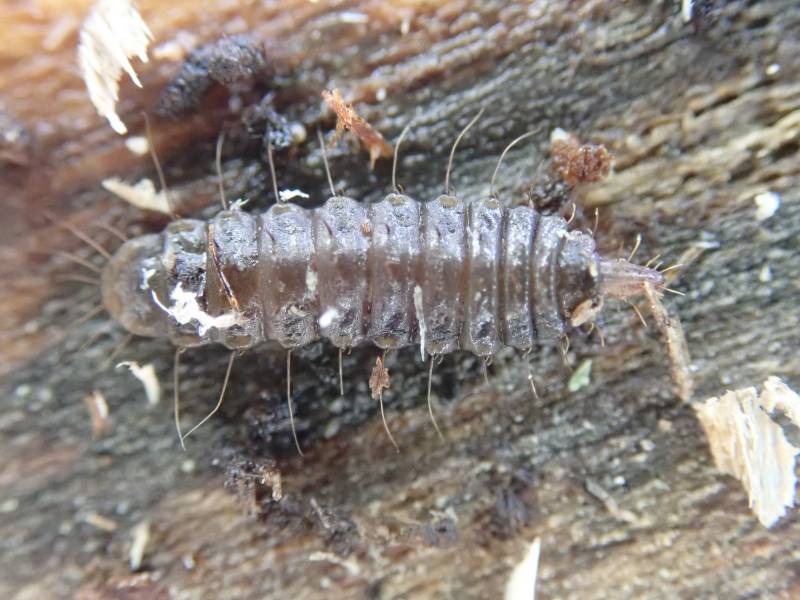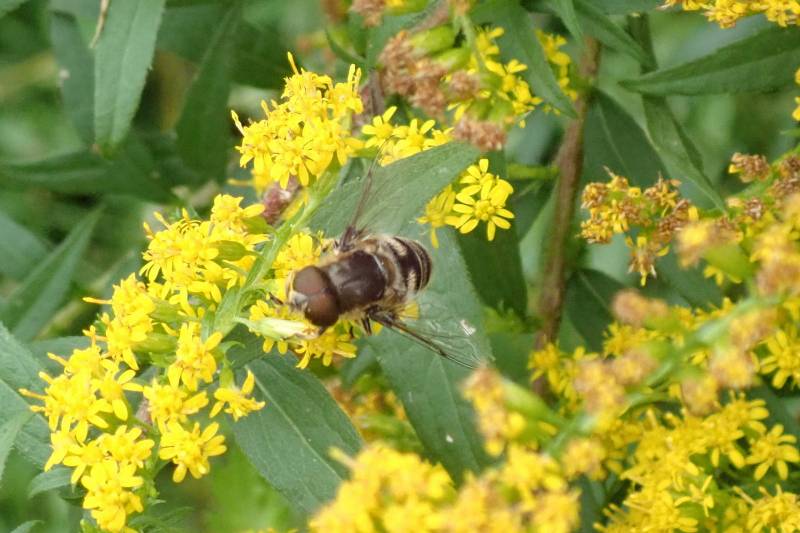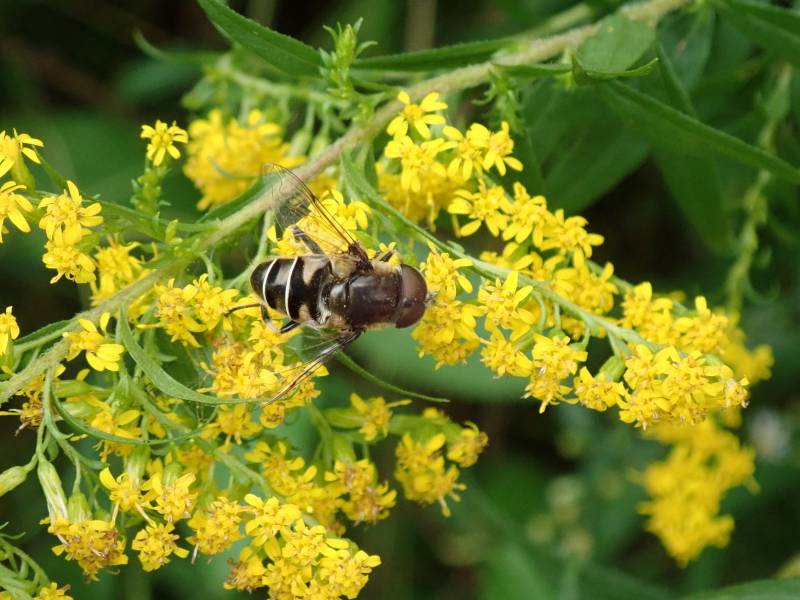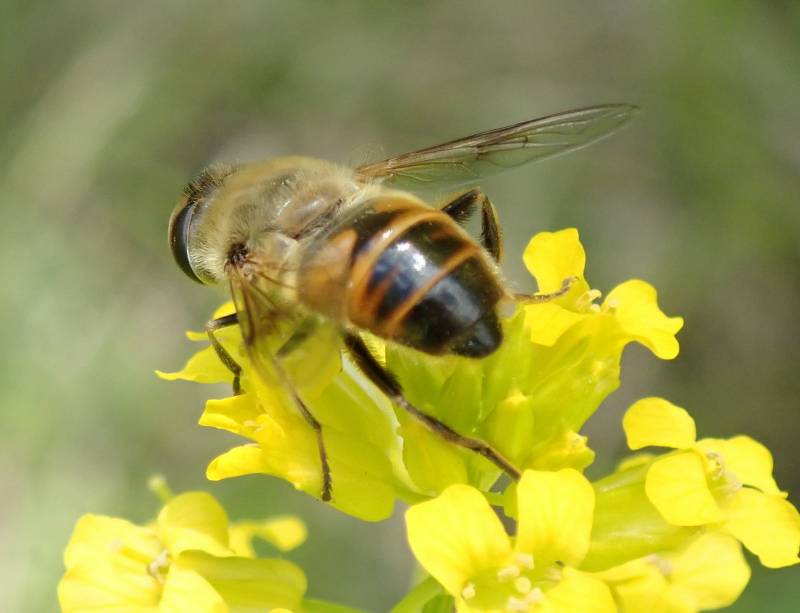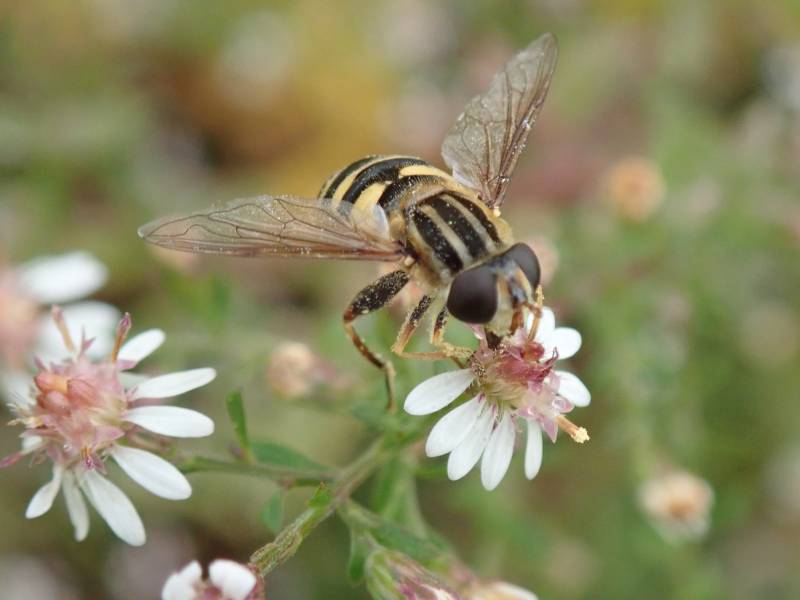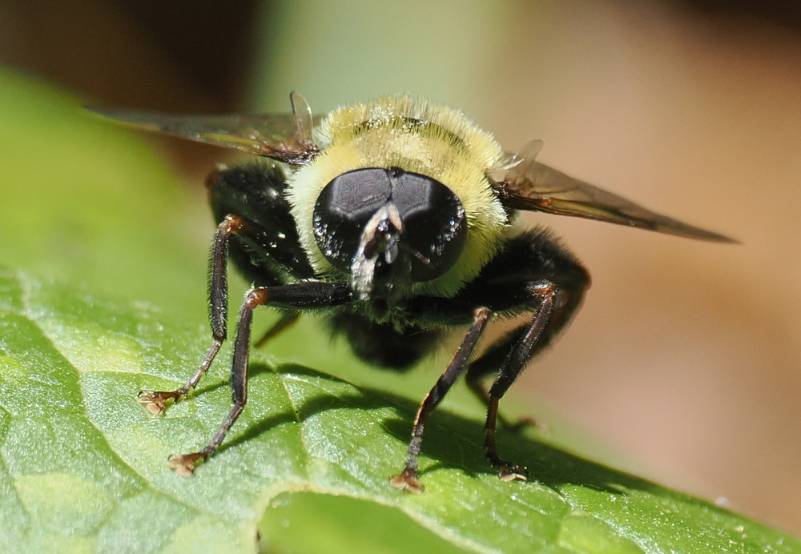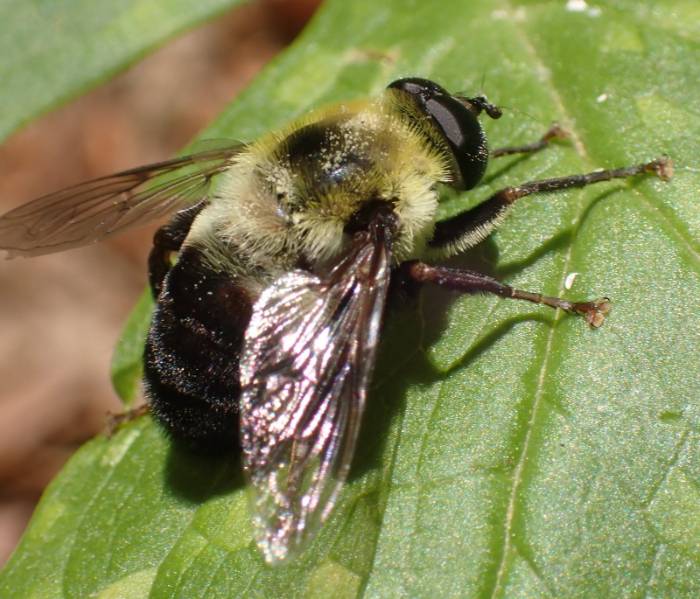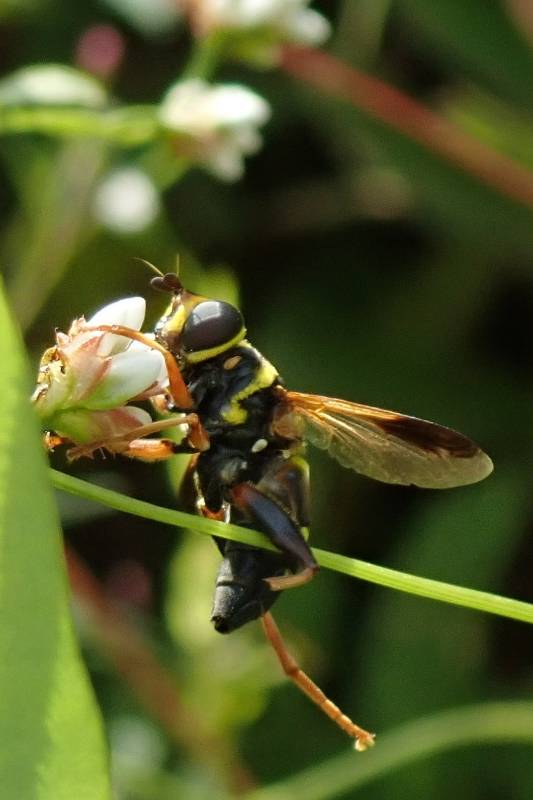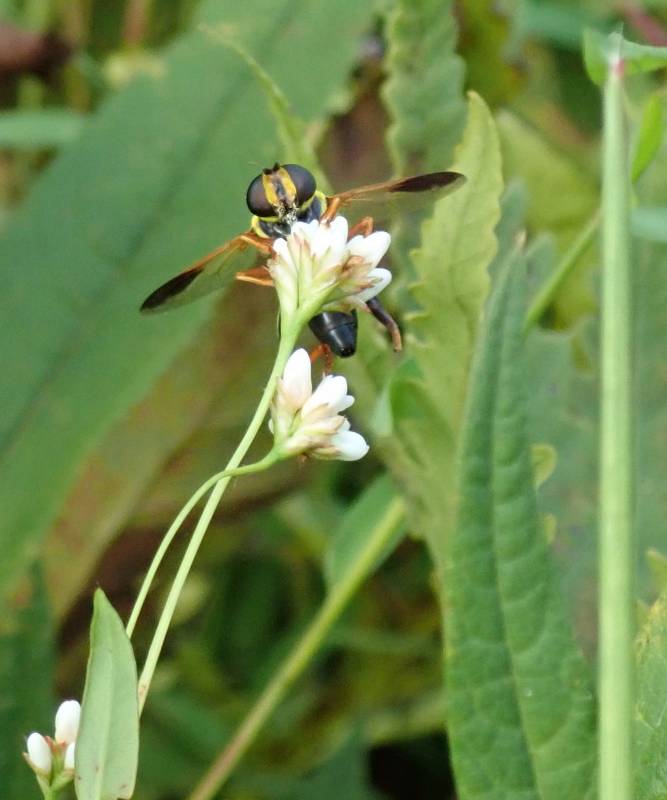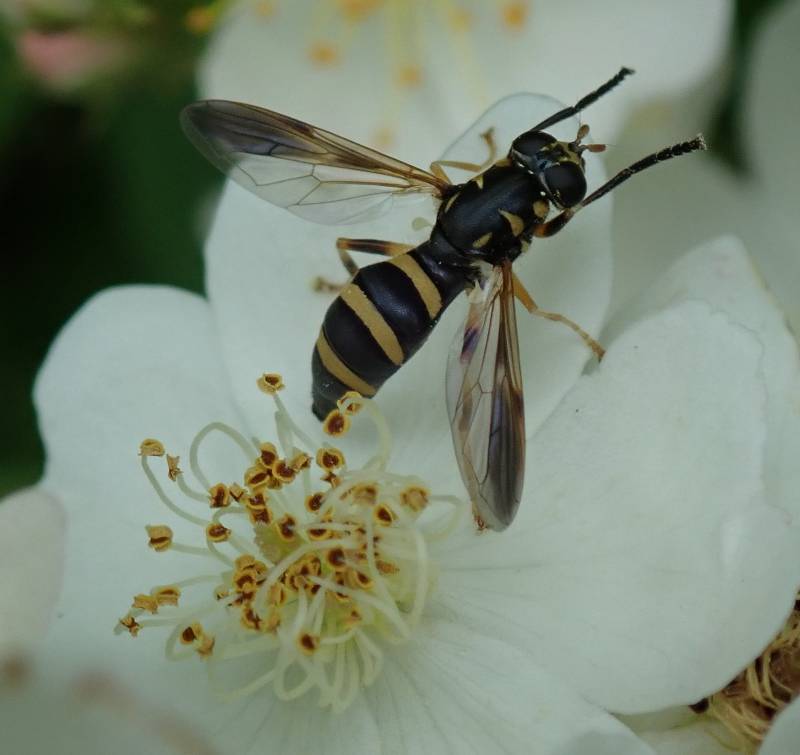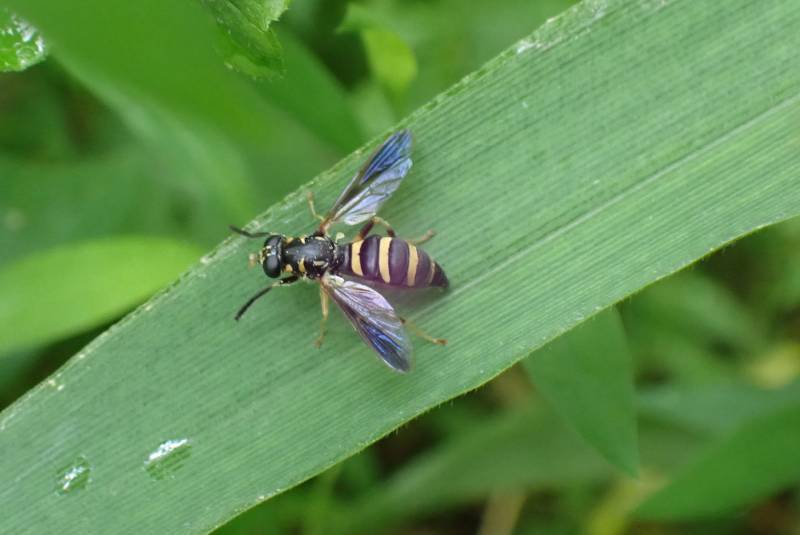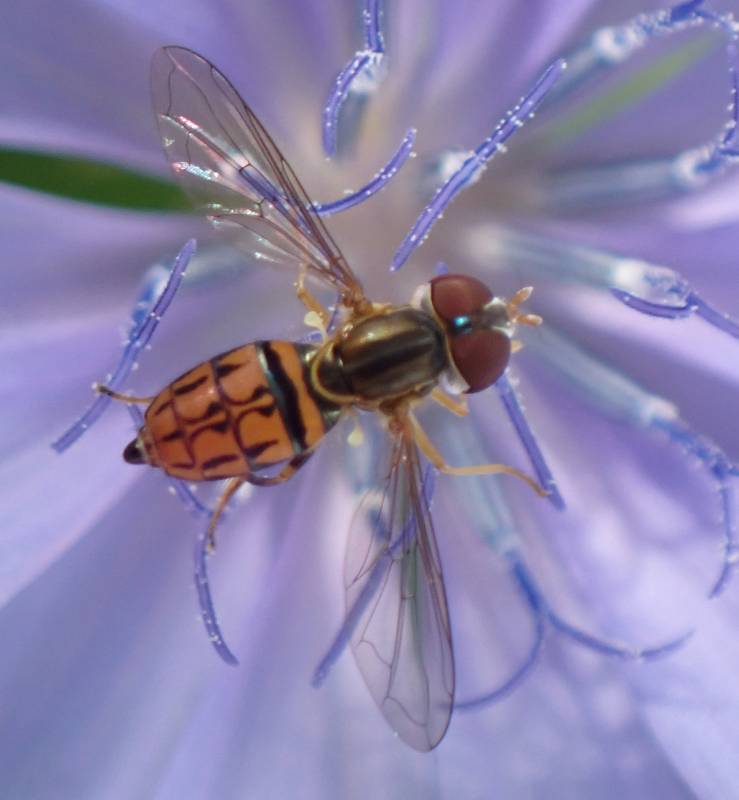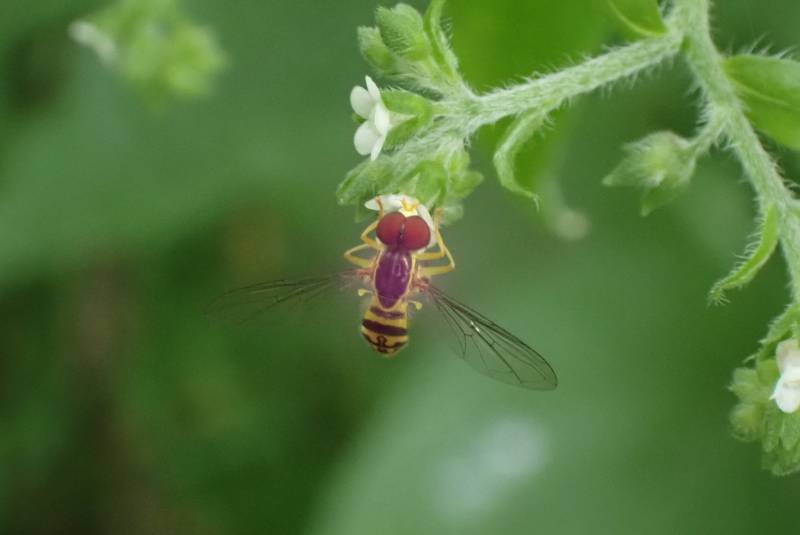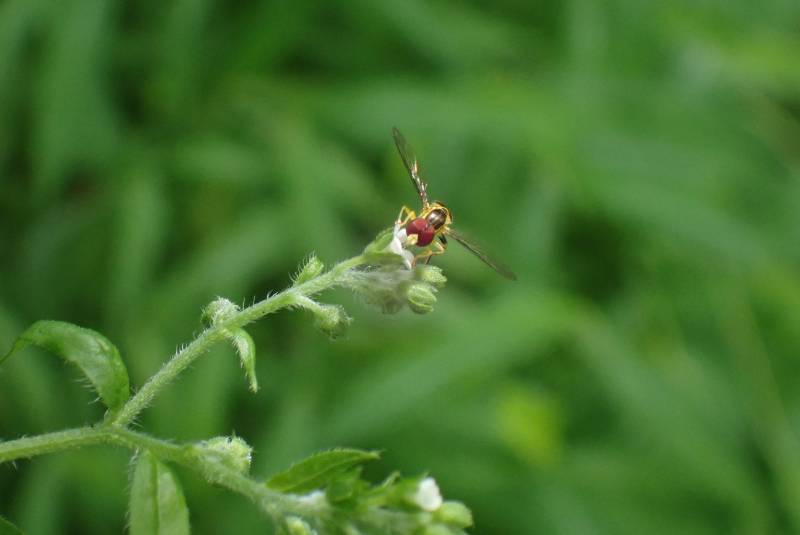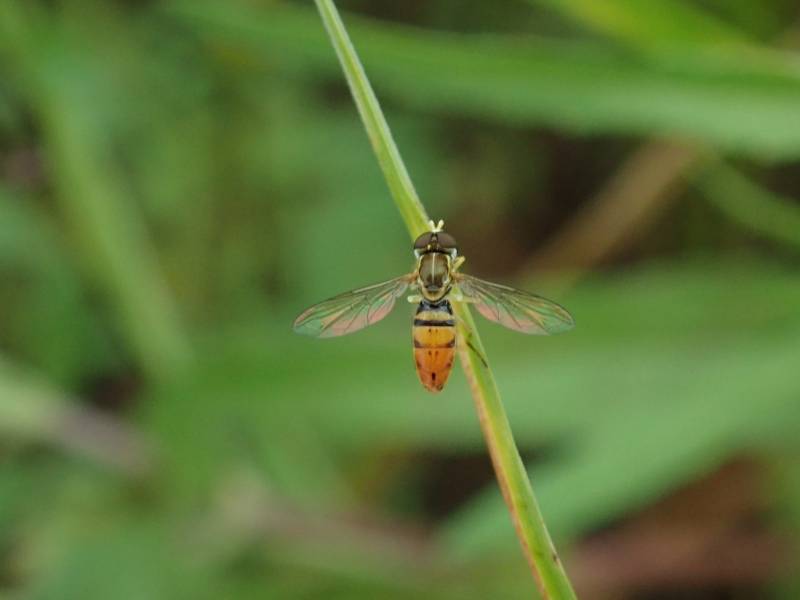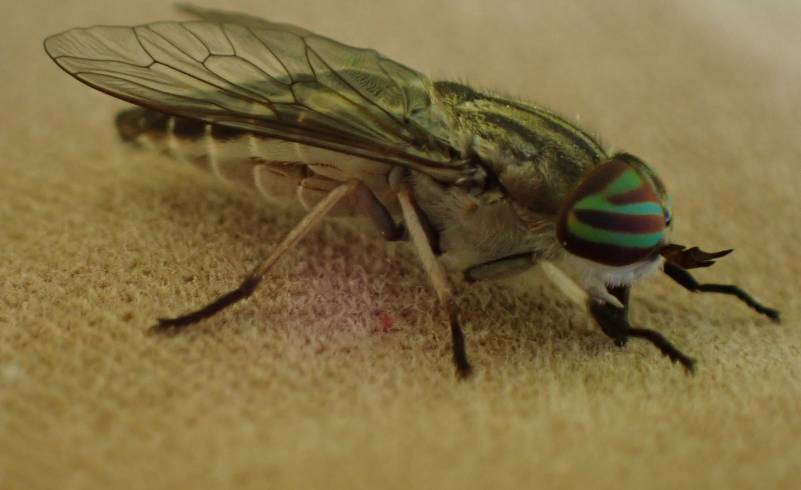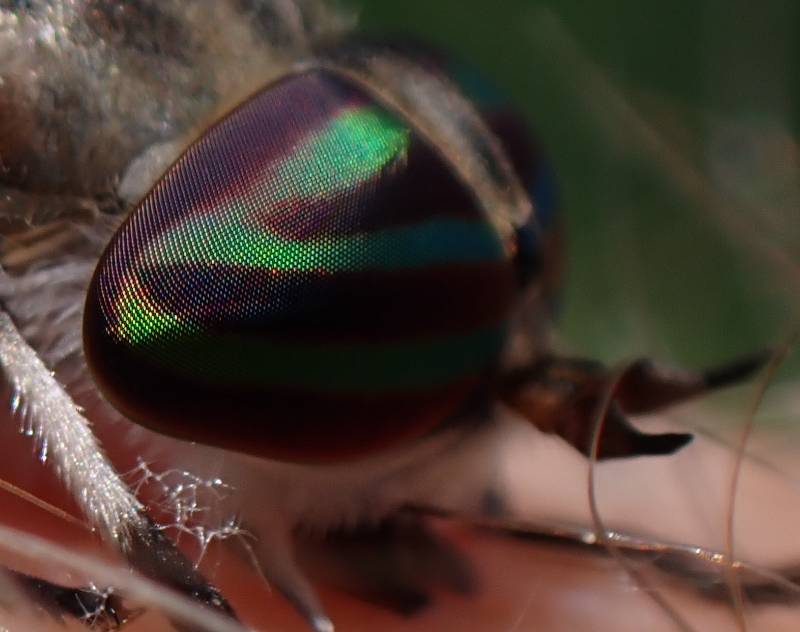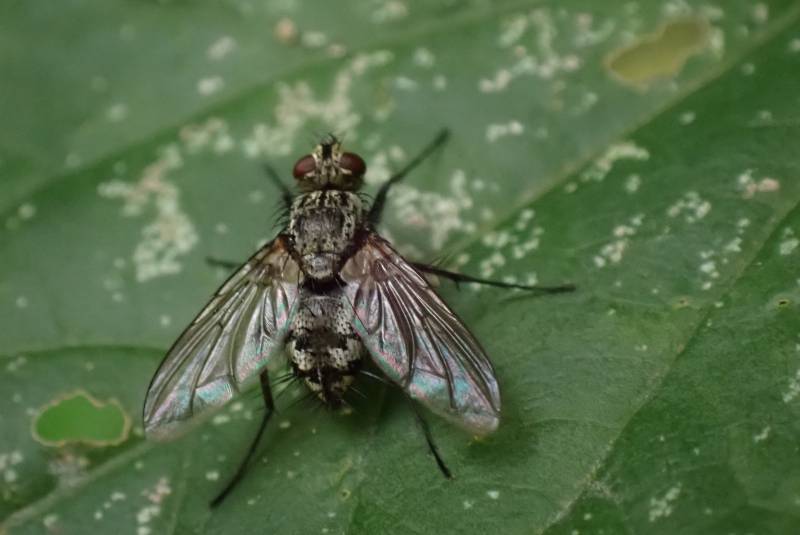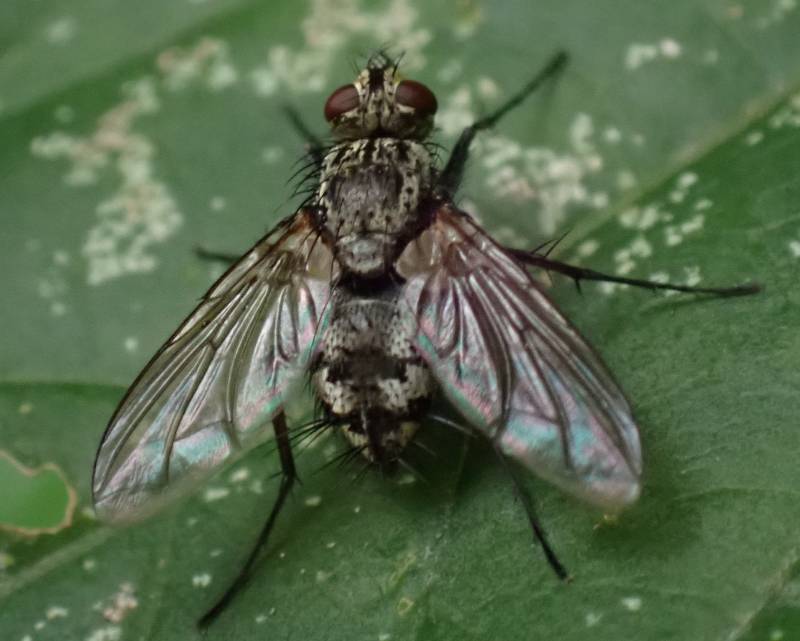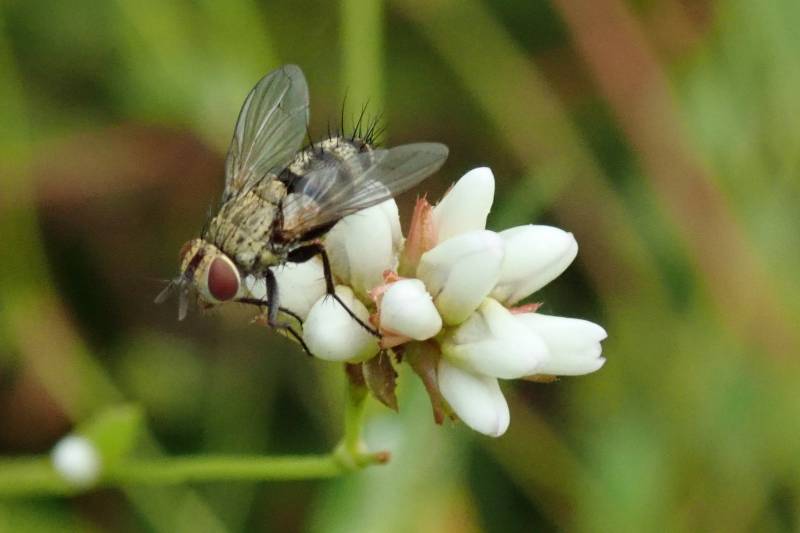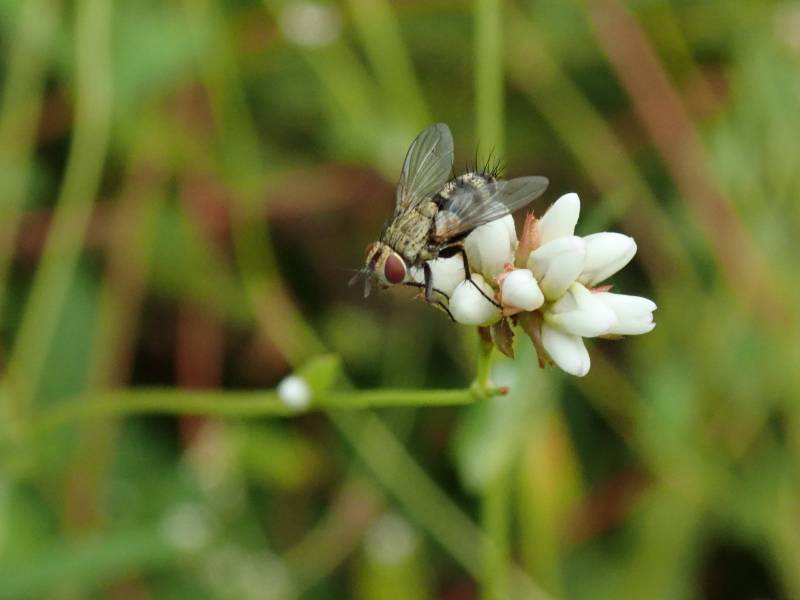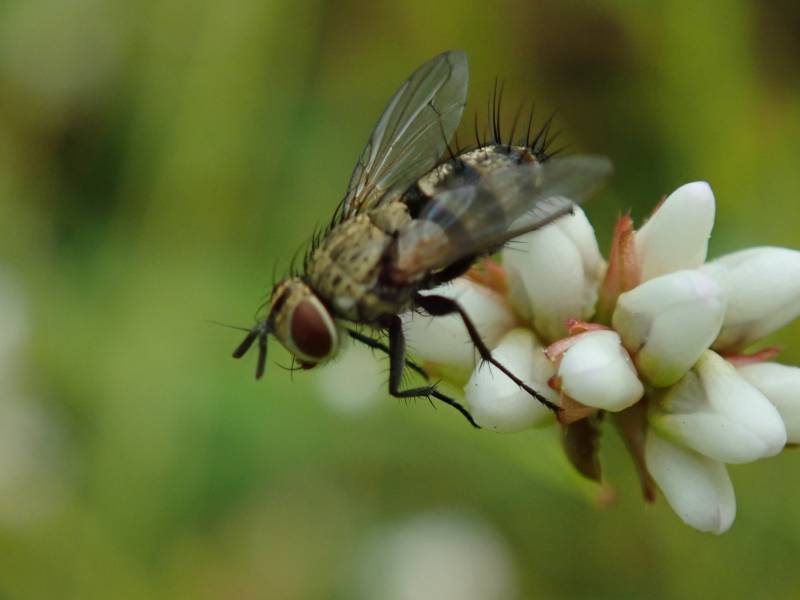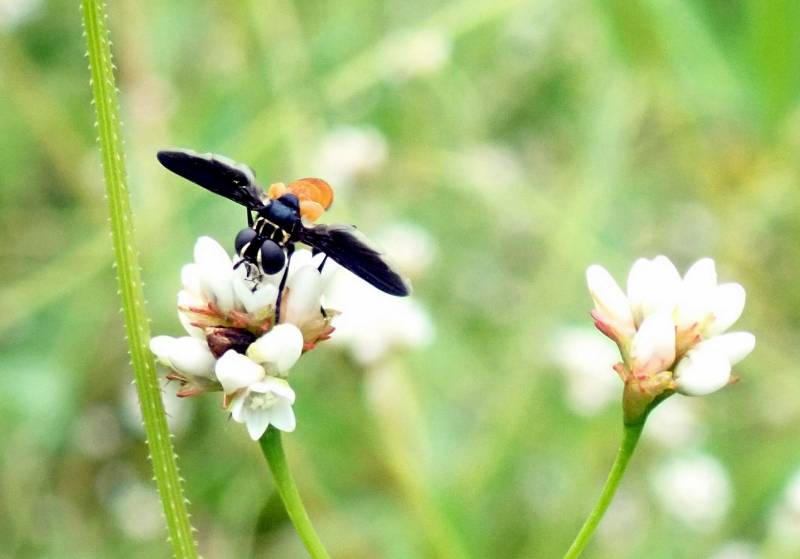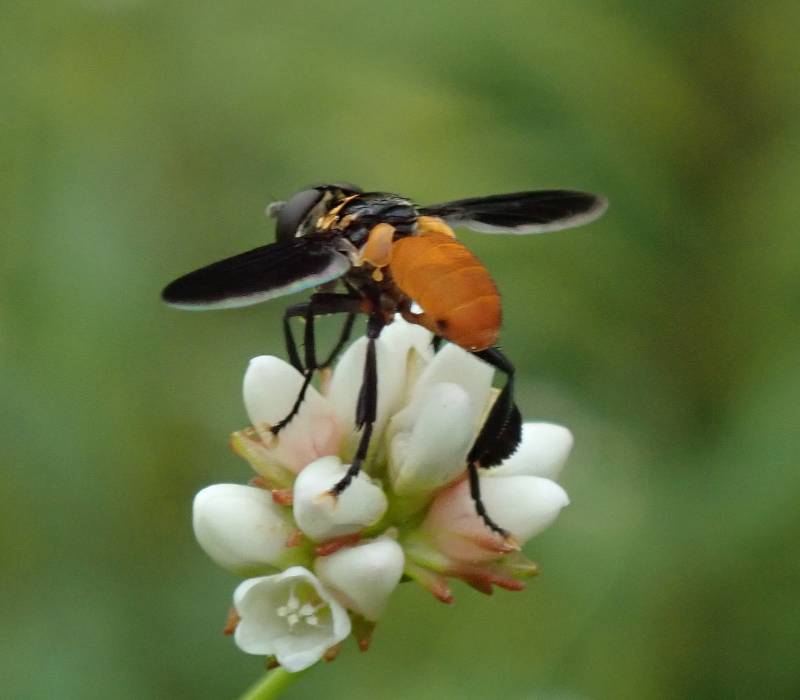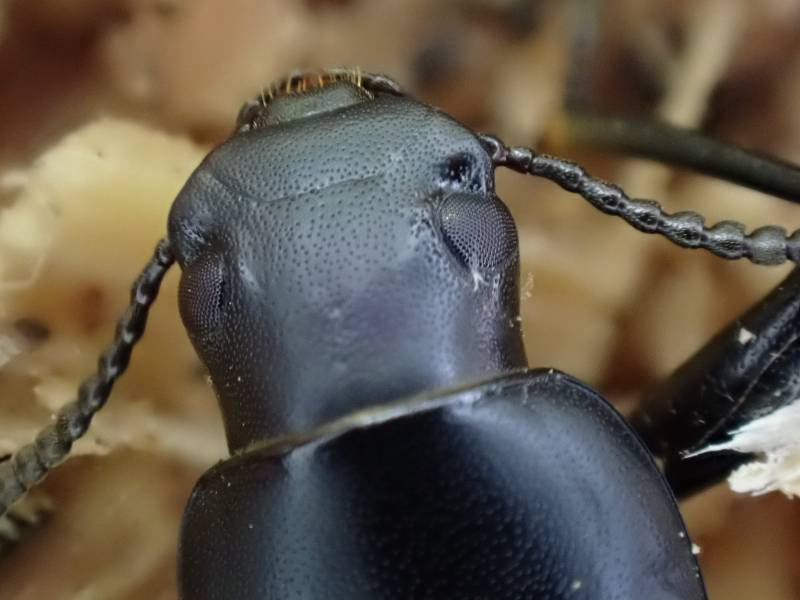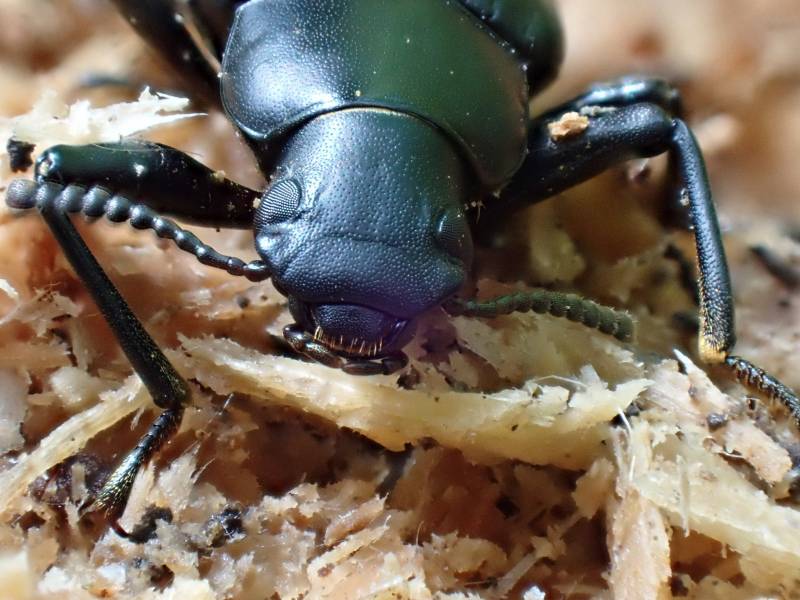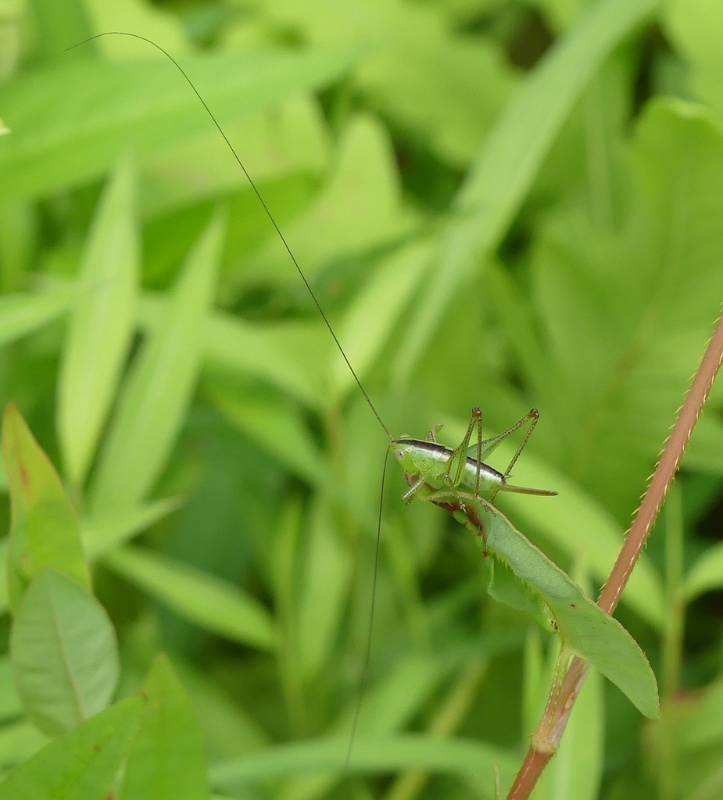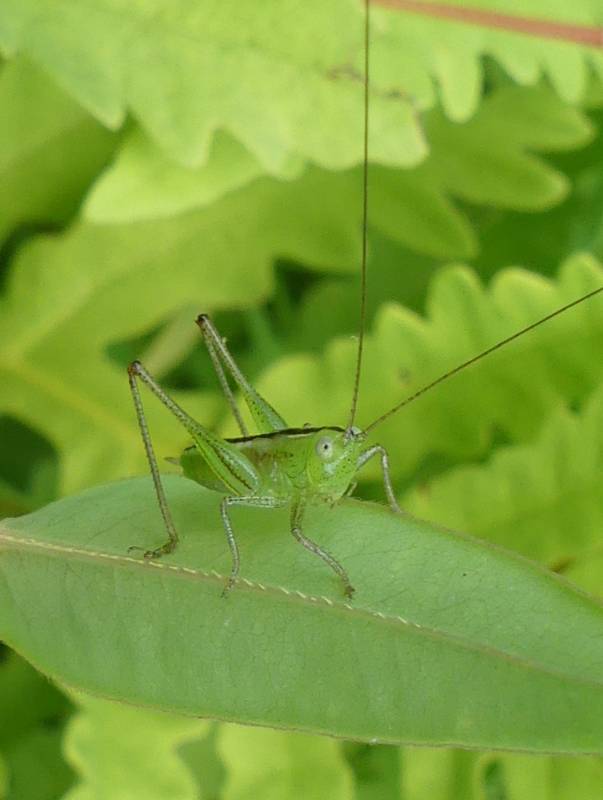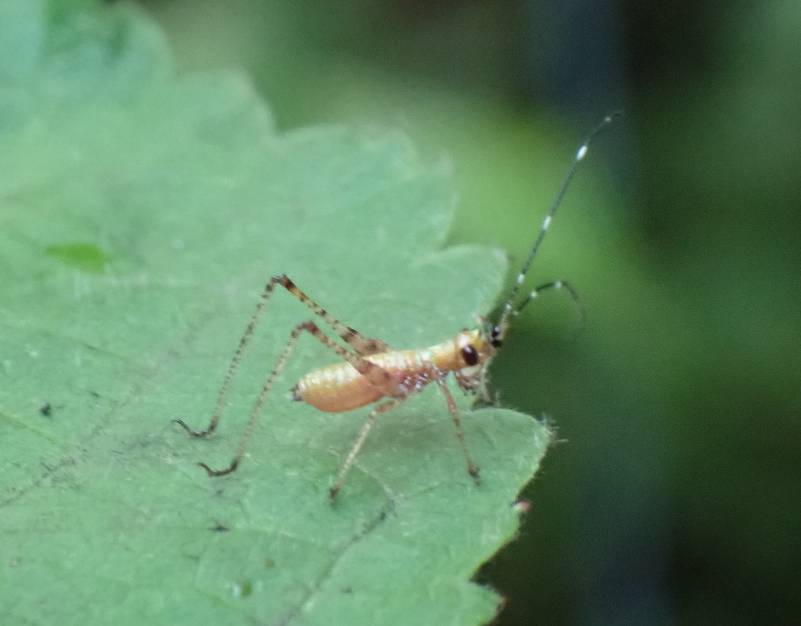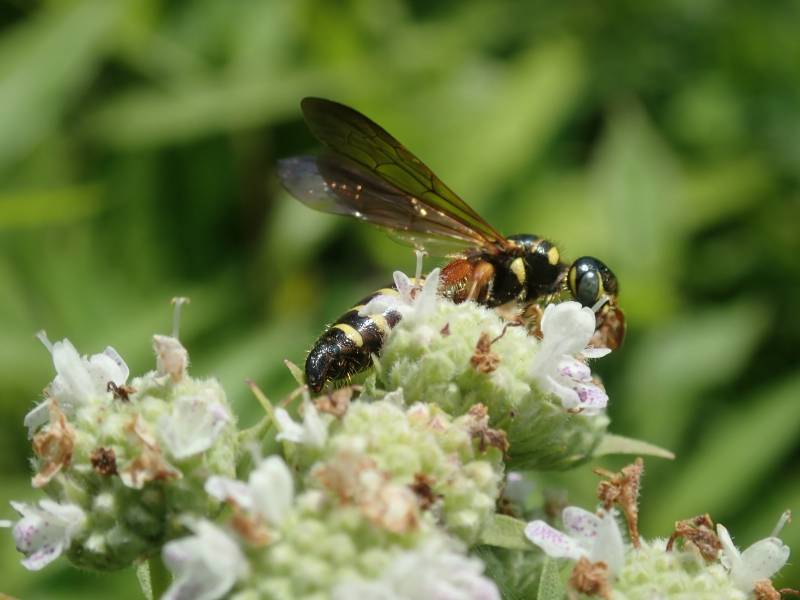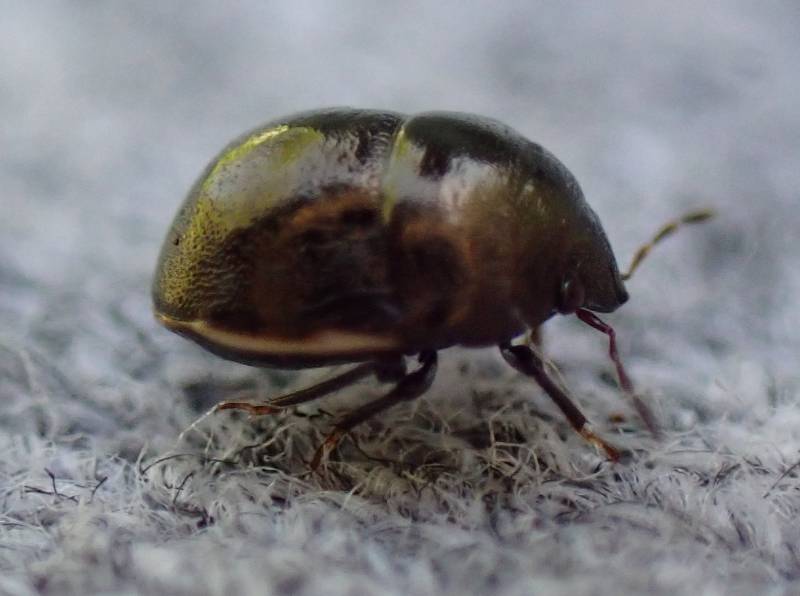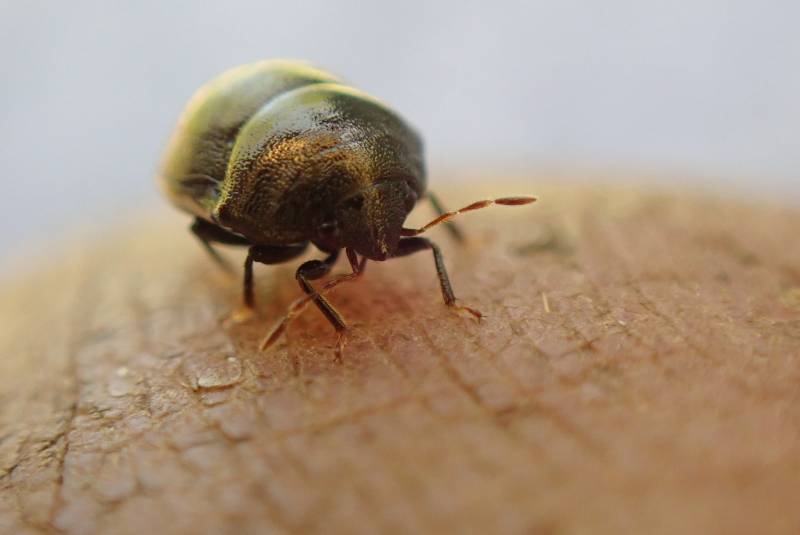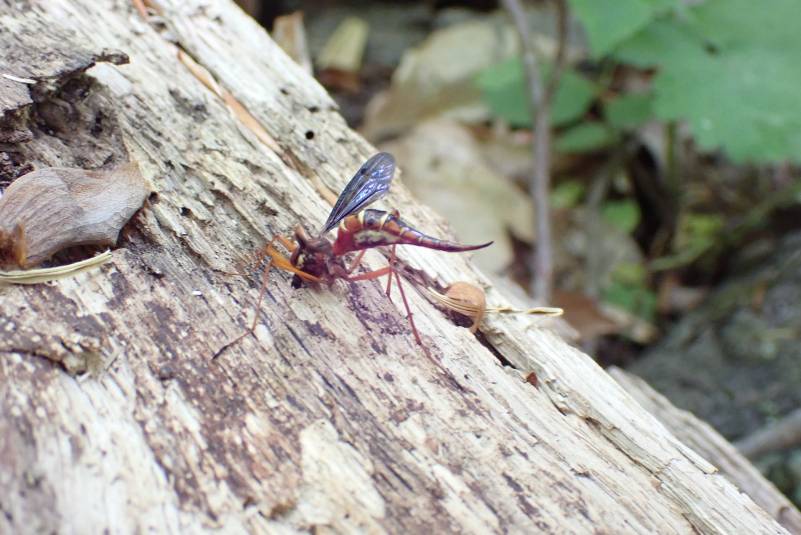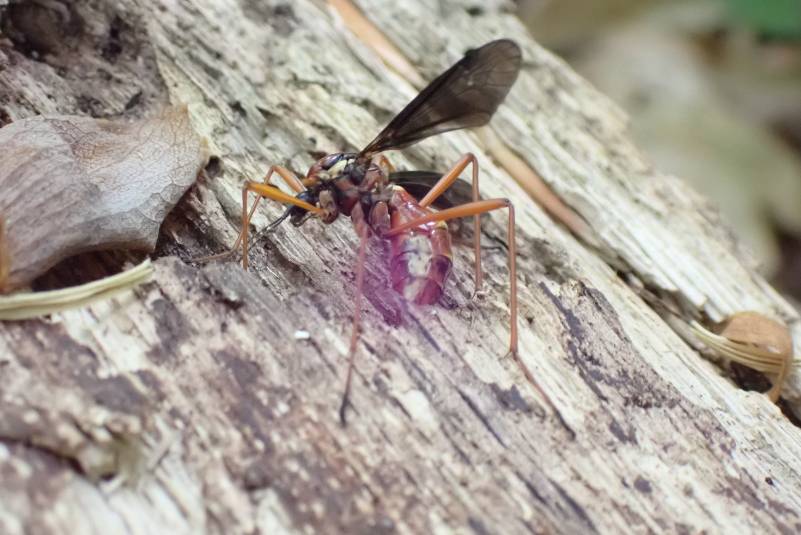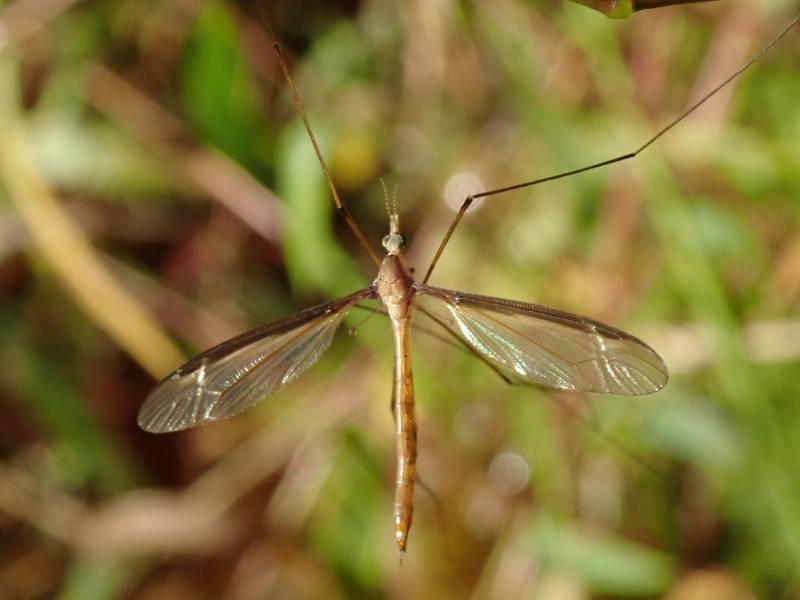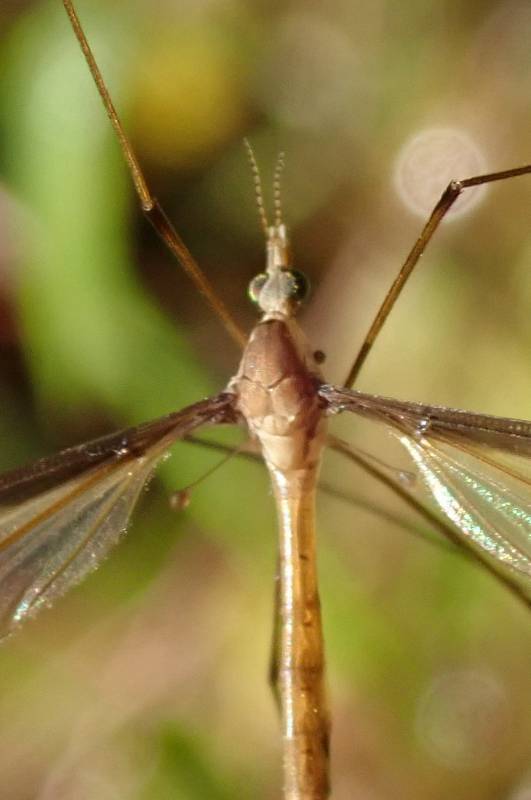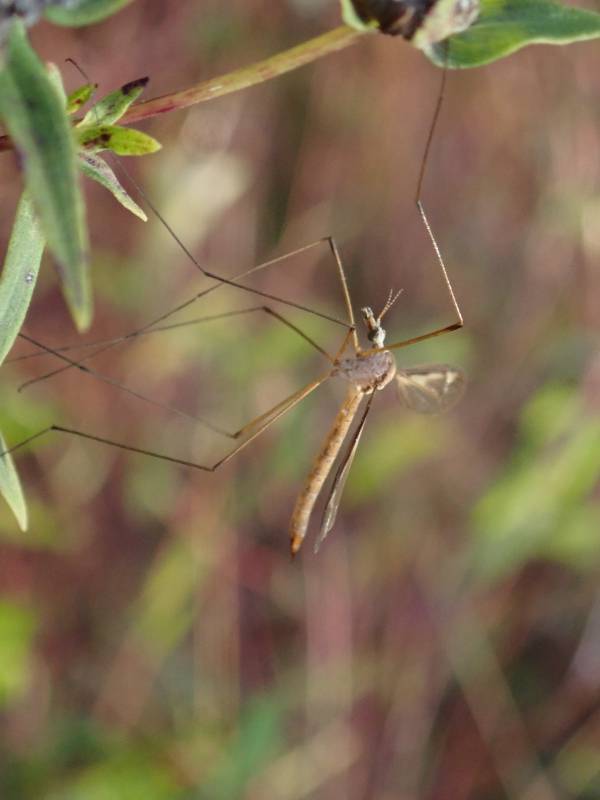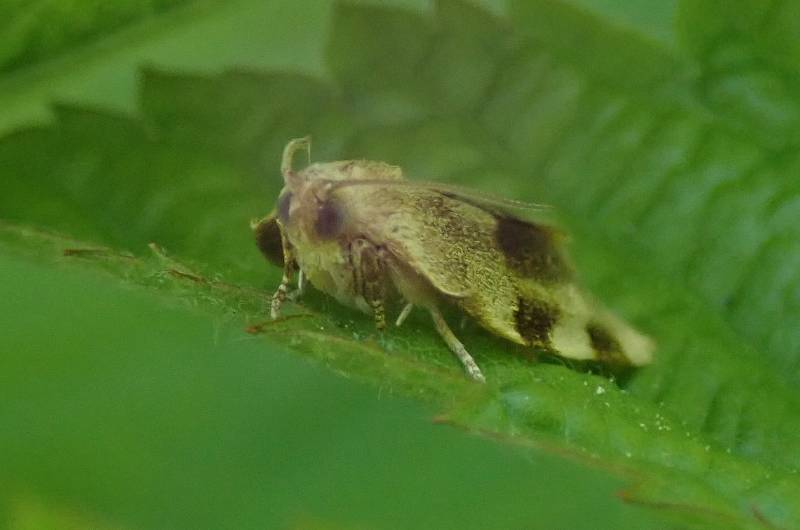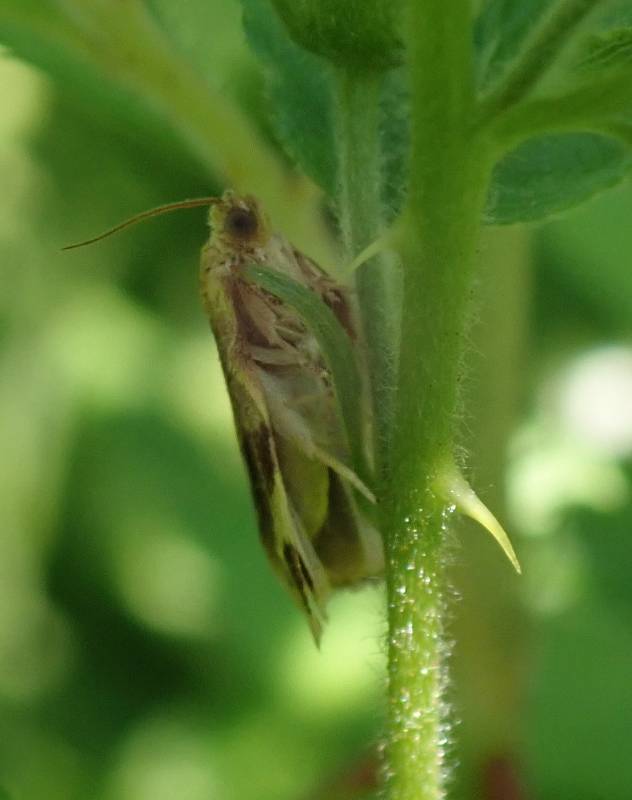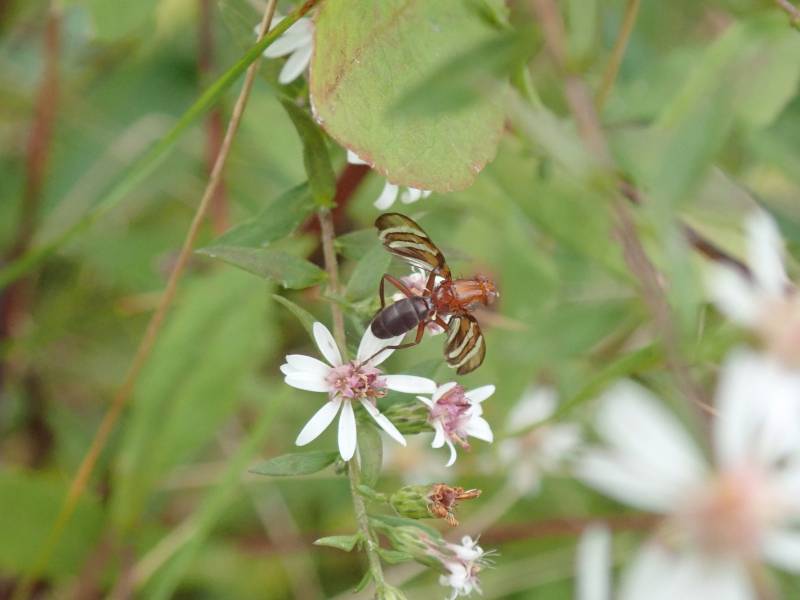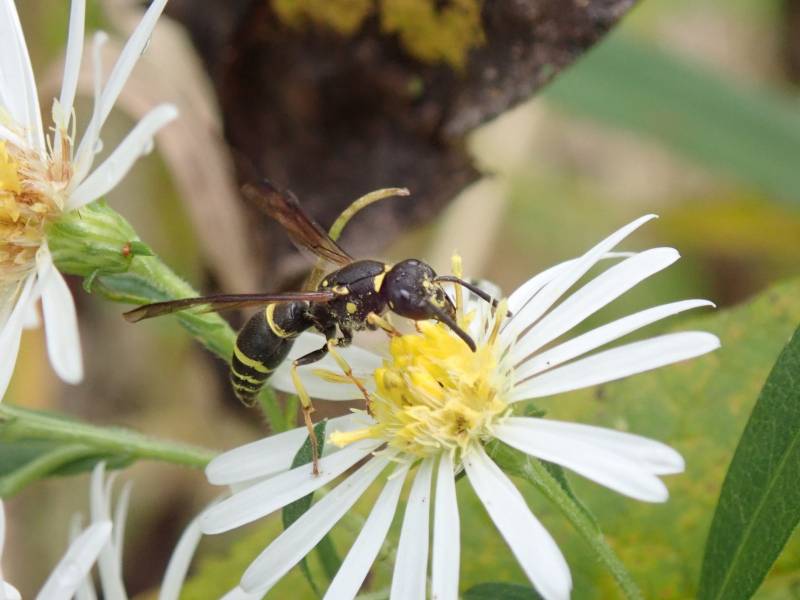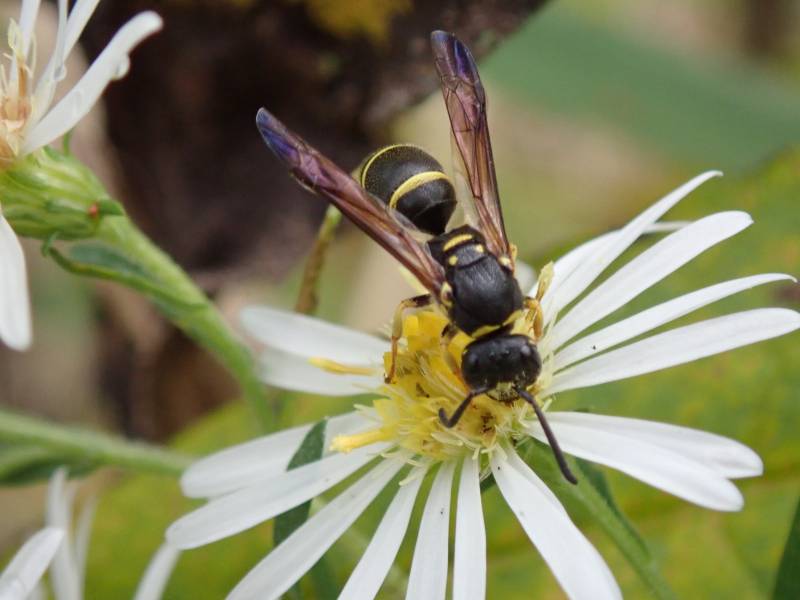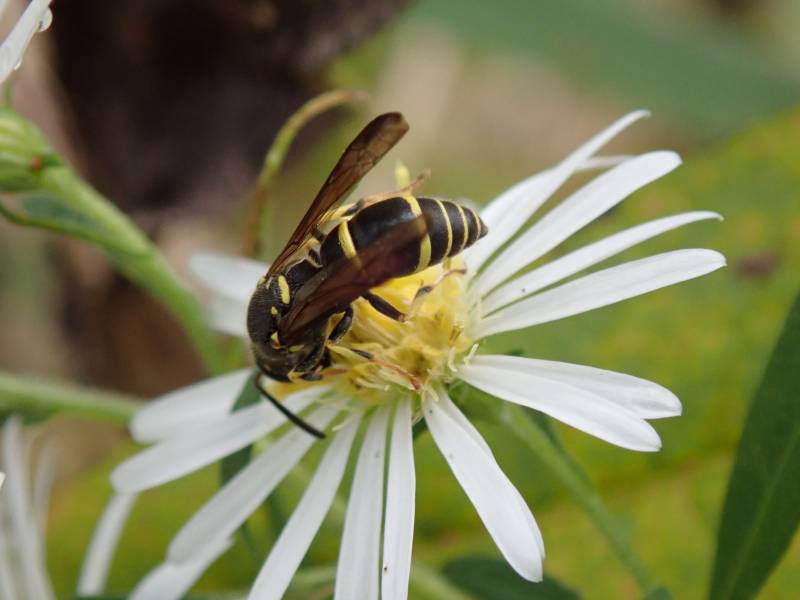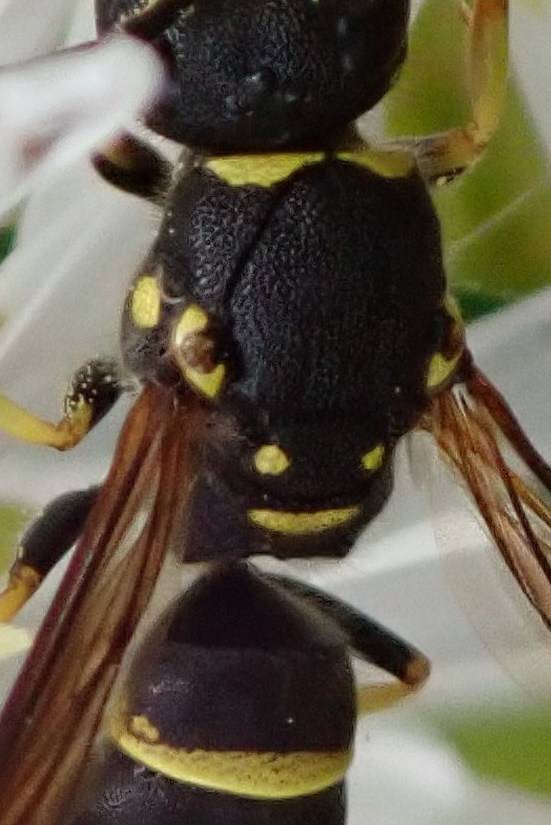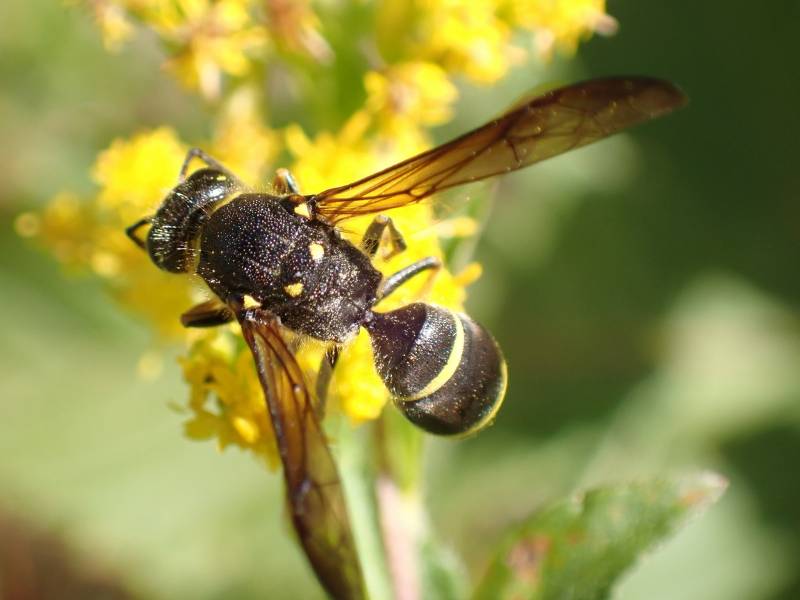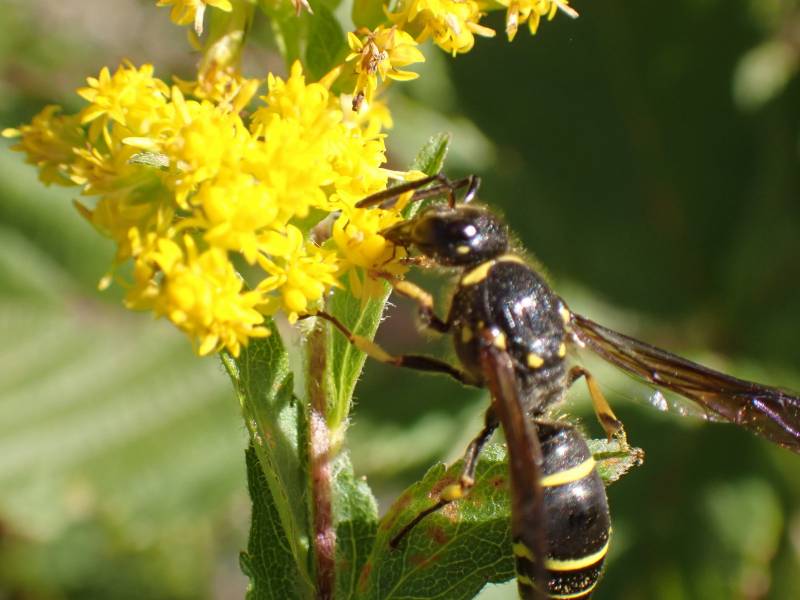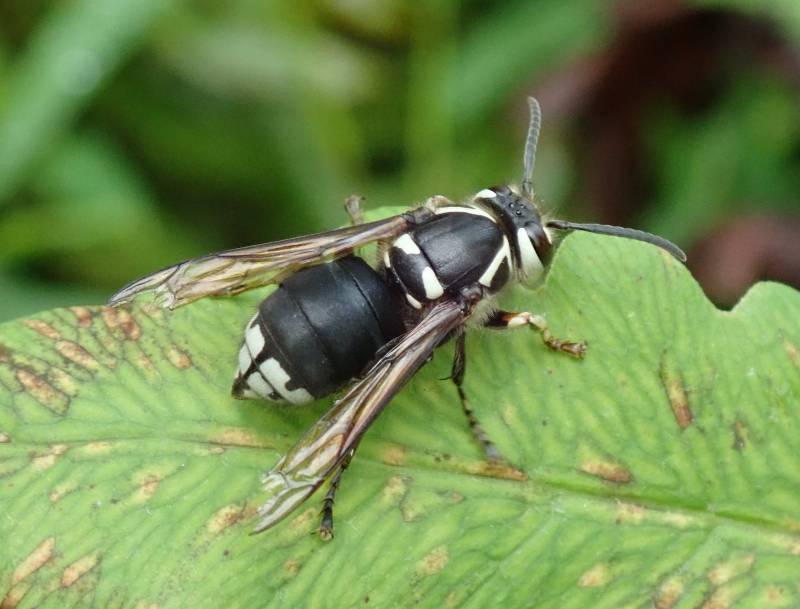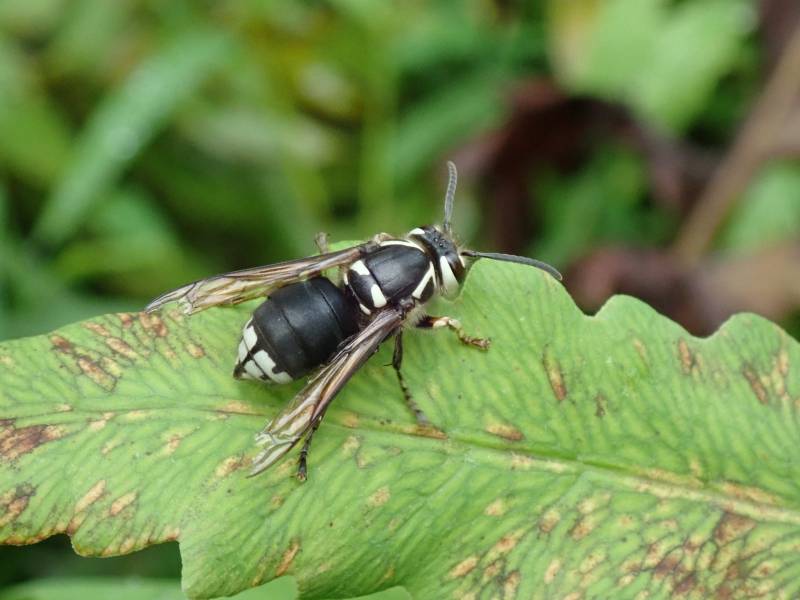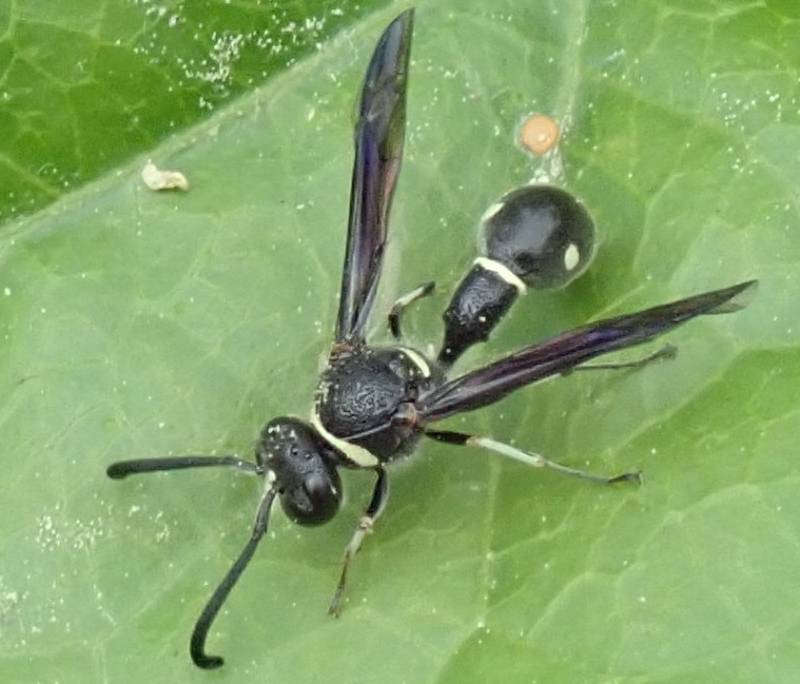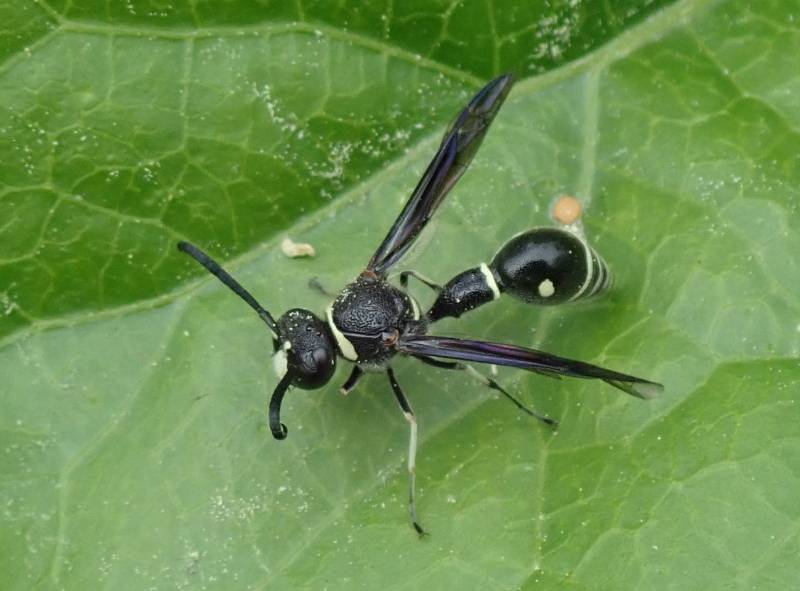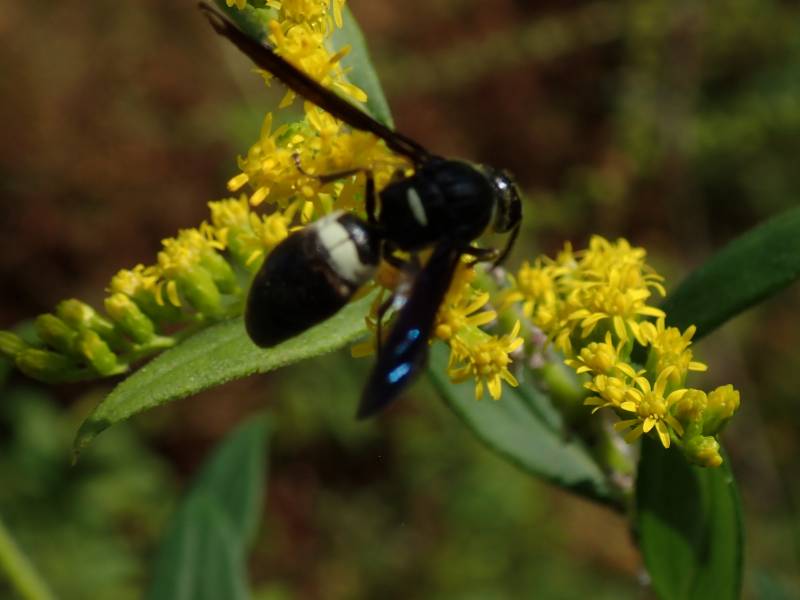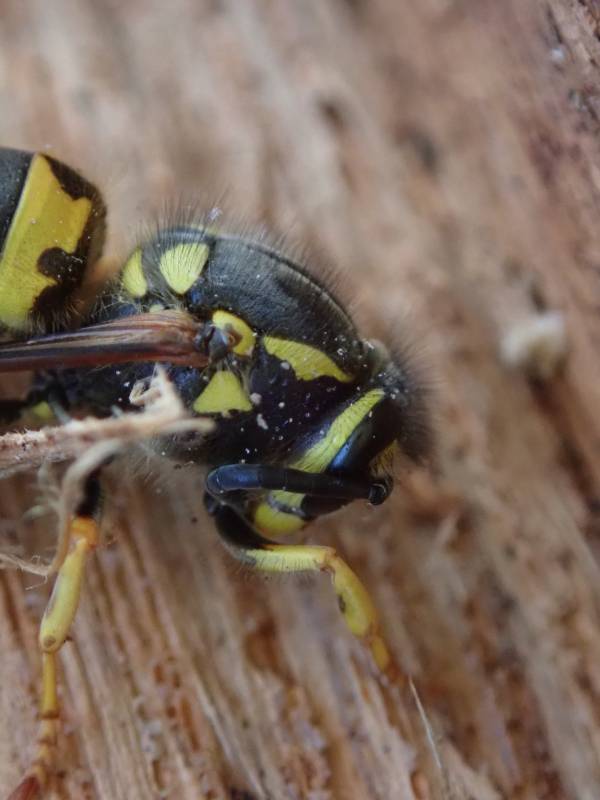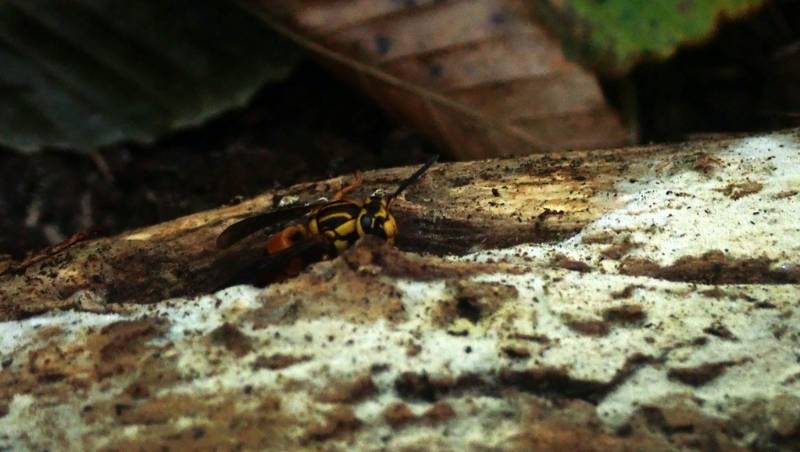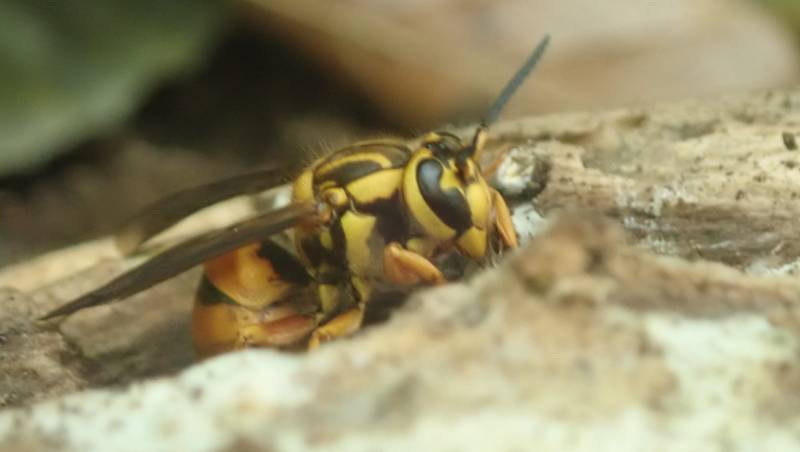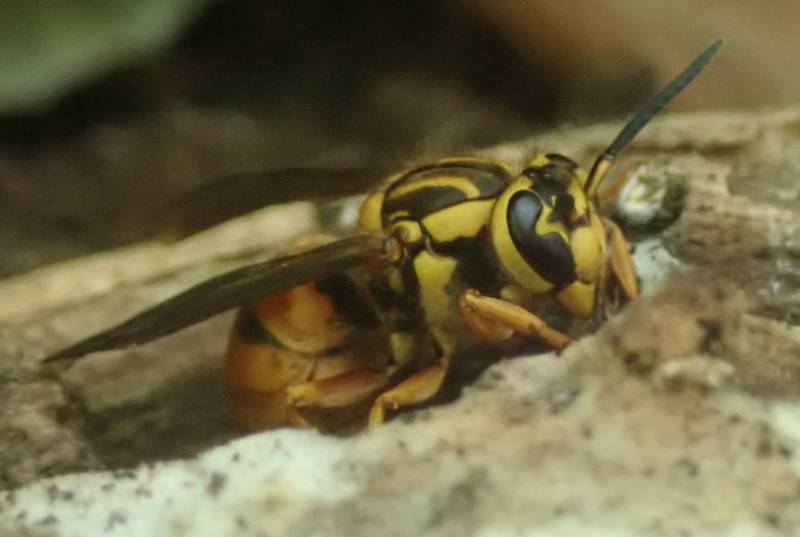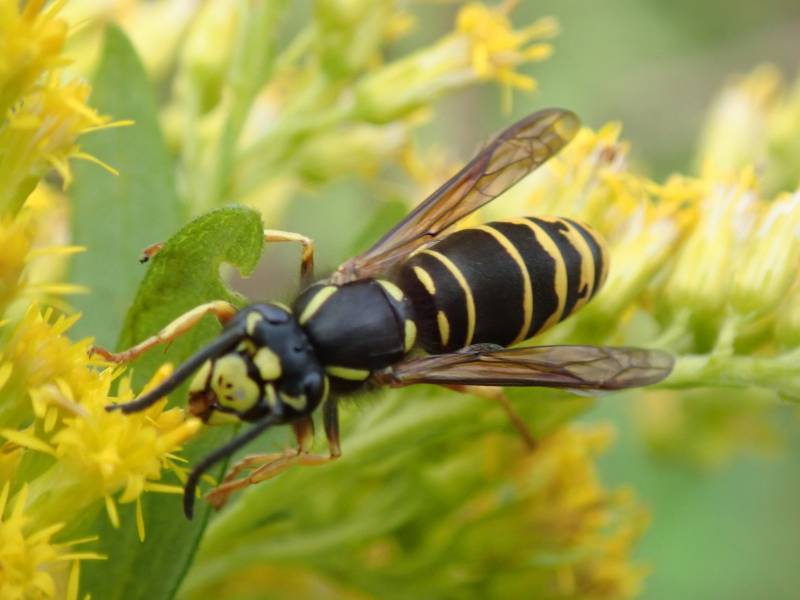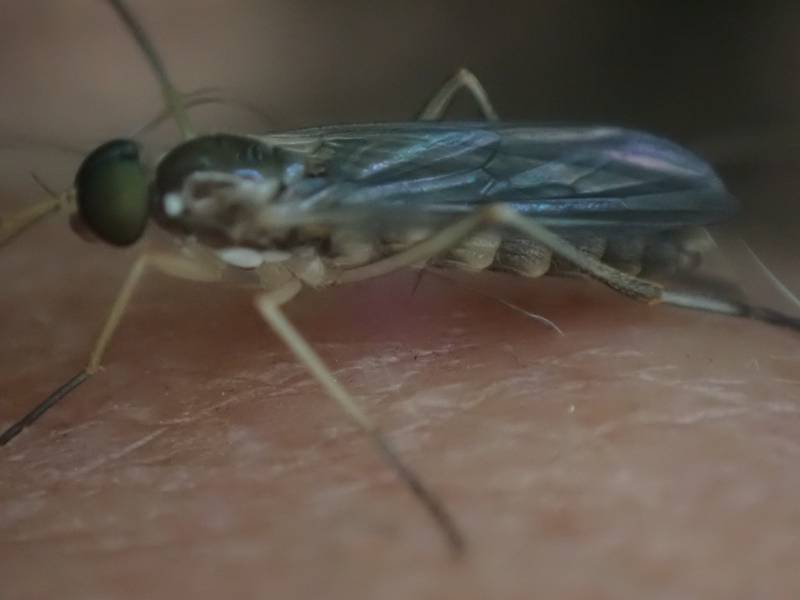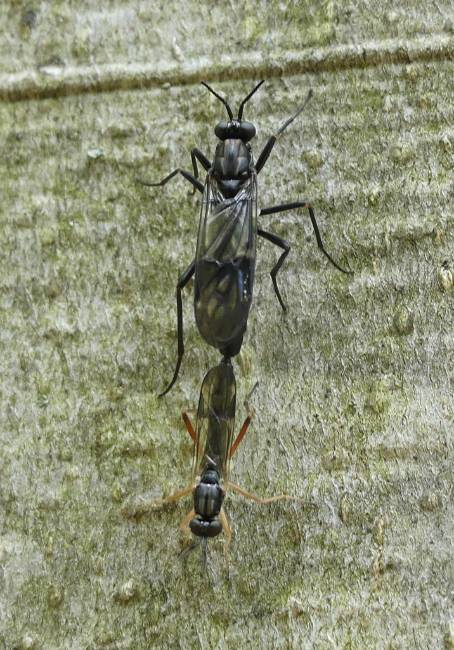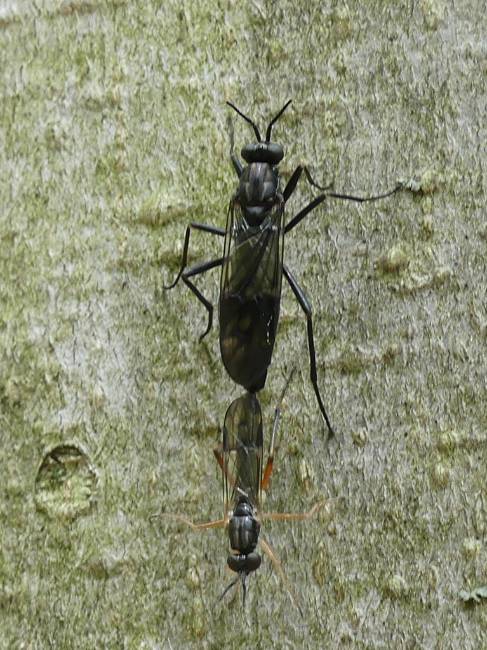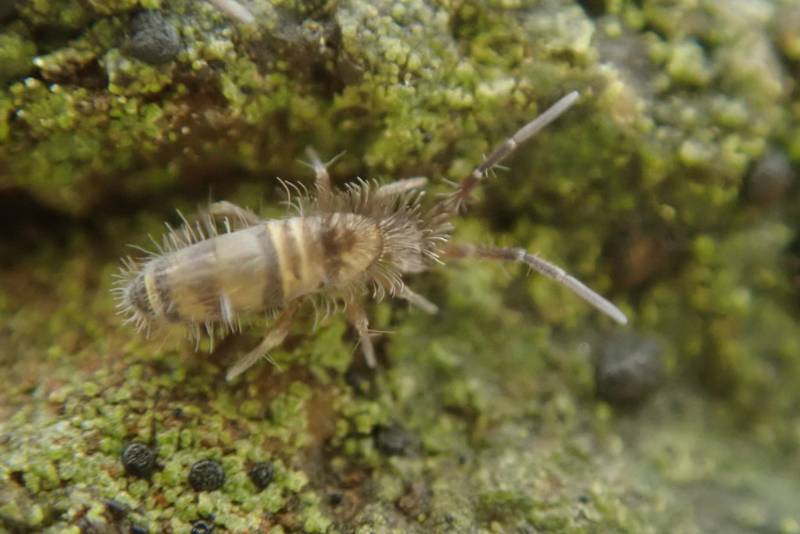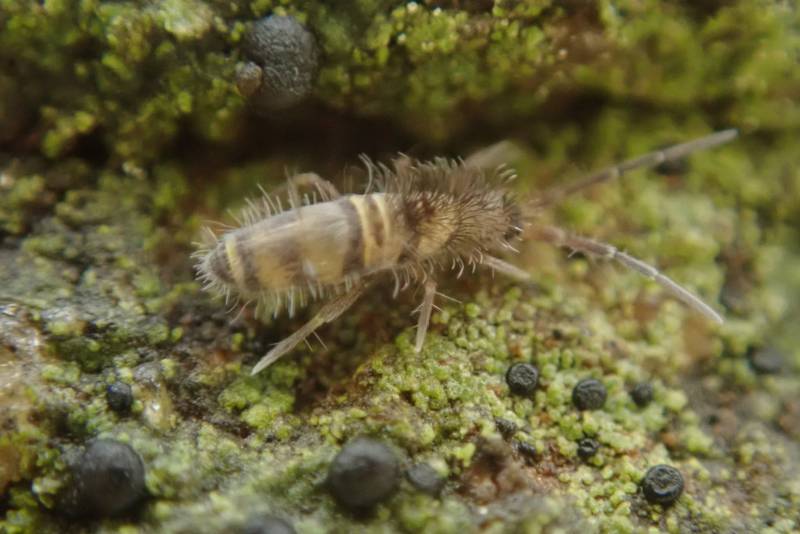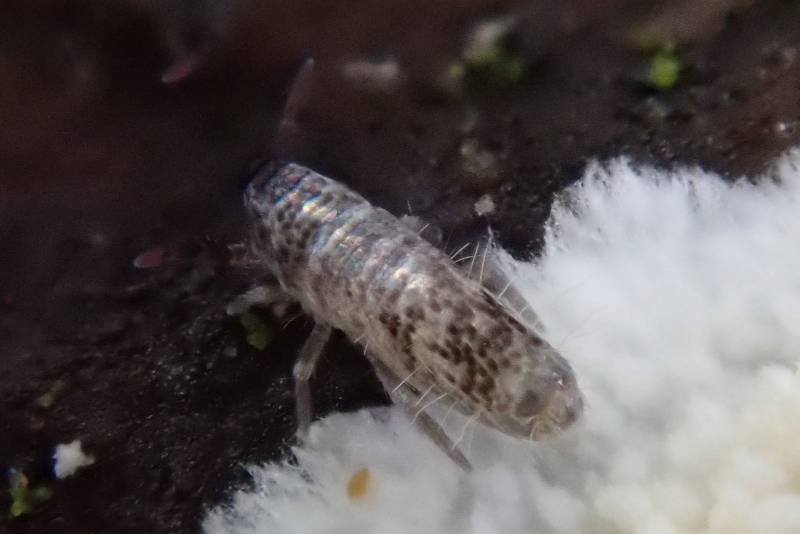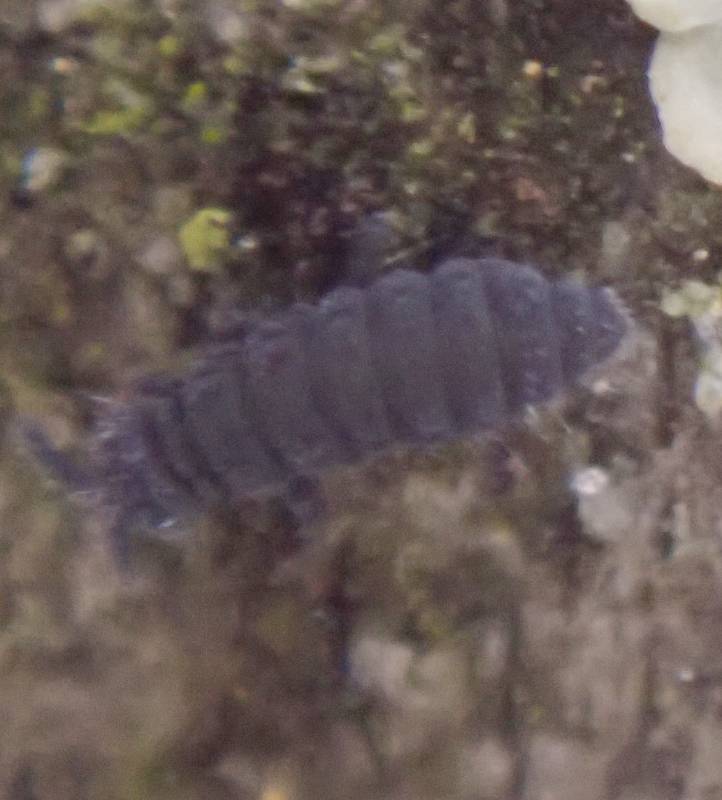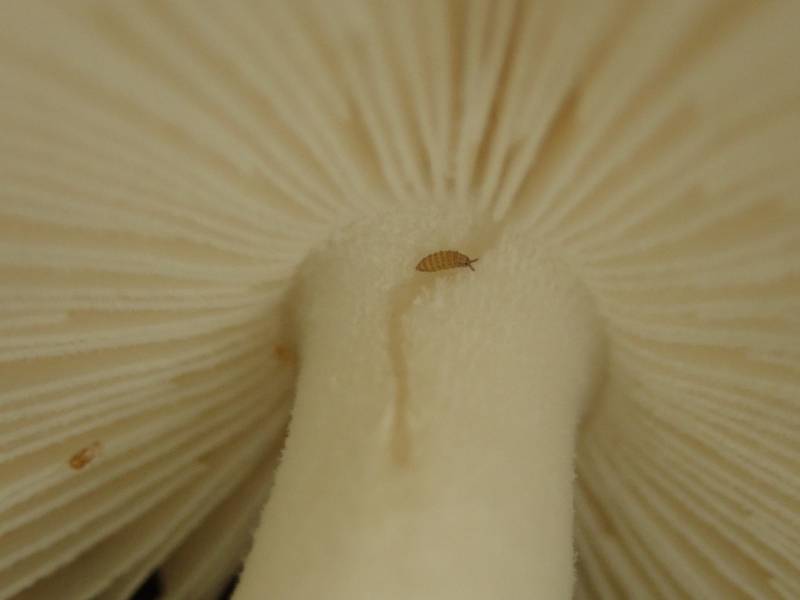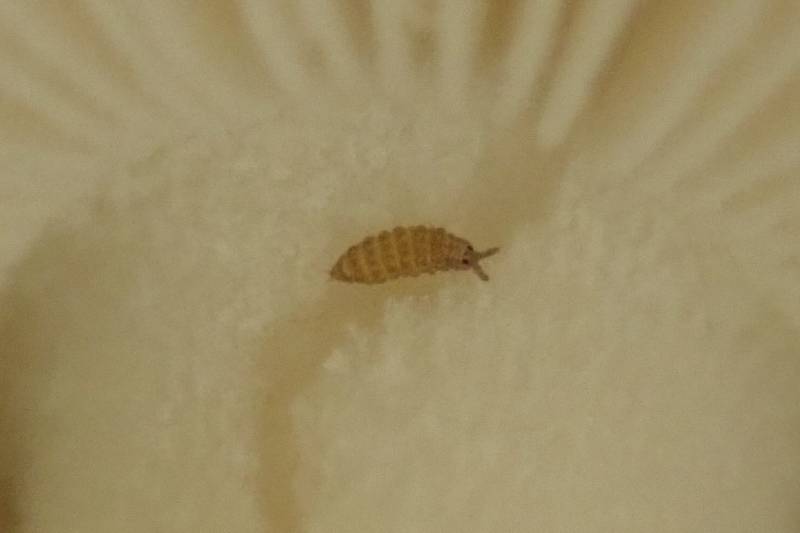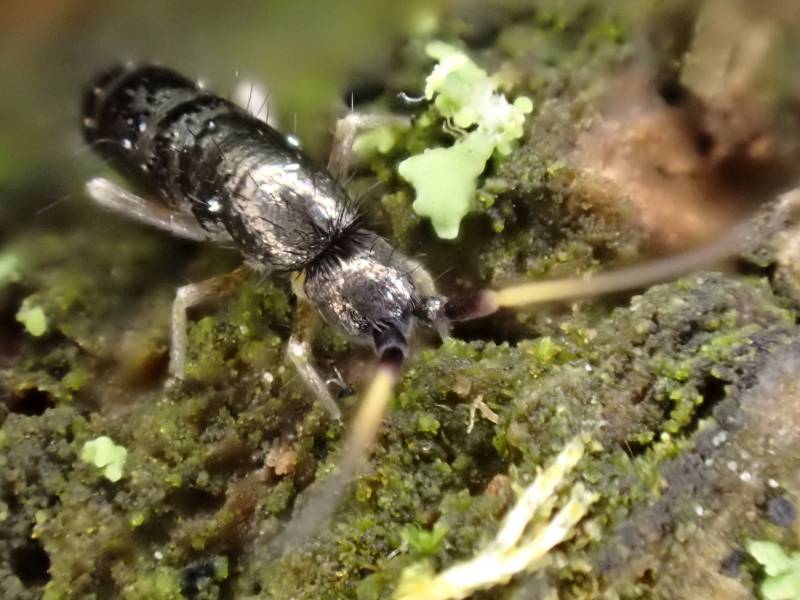The Biota of the Gordon Natural Area - Invertebrates
As with some of the other biotic groups, the research pattern for invertebrates at the GNA might best be described as ‘intermittent.’ Former WCU professor Win Fairchild and his students conducted research on aquatic invertebrates in Plum Run, both inside and outside of the boundaries of the GNA. To date, the only data from that work that we’ve been able to obtain are from the 2007 M.S. thesis of Danielle Difederico. Since that time, the only ‘directed’ invertebrate research at the GNA has been the annual monitoring in Plum Run by the Stroud Water Research Center (SWRC). Additional data come from the increasing frequent observations by GNA staff and from occasional observations from visitors to the GNA posted on iNaturalist.
From these sources, 363 species of invertebrates, in 240 genera, 153 families, and 37 orders have been noted at the GNA to date. Approximately one quarter (88 species; 24.2%) of the 363 species noted for the GNA were observed by Stroud researchers. Invertebrates have been grouped into seven categories: Arthropods (41 species); Crustaceans (12 species); Flatworms (3 species); Gastropods (12 species); Insects (286 species); Ribbon Worms (1 species); Springtails (6 species); and, Worms (2 species). The three best-represented Orders are in the Insects category: the Diptera (93 species), Lepidoptera (46 species), and Coleoptera (41 species). The best-represented Families are the Chironomidae (Diptera, 41 species), Erebidae (Lepidoptera; 10 species); Vespidae (Hymenoptera ; 10 species), Elmidae (Coleoptera, 8 species), and Hydropsychidae (Trichoptera, 8 species). The best-represented genera are Orthocladius (10 species), Hydropsyche and Tipula (5 species each), and Arion and Thienemanniella (4 species each).
You can explore the avian checklist below, or you can access a pdf copy of the checklist.
Acari Indet. #1 (Mite)
Group: Invertebrates
Type: Arthropods
Notes
Common Names: Mite
Years Observed: 2017; 2018; 2019; 2020
Identified and First Noted By: Stroud Water Research Center
Araneoidea Indet. #1 (Araneoid Spider)
Group: Invertebrates
Type: Arthropods
Notes
Common Names: Araneoid Spider
Year Observed: 2020
Identified and First Noted By: Nur Ritter
iNaturalist Observations:
63426251 (Observed: 10/24/2020)
Images
Geophilomorpha Indet. #1 (Soil Centipede)
Polydesmida Indet. #1 (Flat-backed Millipede)
Group: Invertebrates
Type: Arthropods
Notes
Common Names: Flat-backed Millipede
Years Observed: 2019; 2020
Identified and First Noted By: Nur Ritter
Comments:
Note: These are likely quite common at the Gordon, but at this point we only have photos from a single year.
iNaturalist Observations:
41067656 (Observed: 7/10/2019)
52818720 (Observed: 7/2/2020)
Images
Polydesmida Indet. #2 (Flat-backed Milipede)
Group: Invertebrates
Type: Arthropods
Notes
Common Names: Flat-backed Milipede
Year Observed: 2018
Identified and First Noted By: Nur Ritter
iNaturalist Observations:
43352197 (Observed: 10/10/2018)
Images
Abacion magnum (No Common Name)
Group: Invertebrates
Type: Arthropods
Family: Abacionidae
Notes
Common Names: No Common Name
Year Observed: 2023
Identified By: Nur Ritter
First Noted By: Miranda Davies
iNaturalist Observations:
163705010 (Observed: 5/25/2023)
Agelenidae Indet. #1 (Funnel Weaver)
Group: Invertebrates
Type: Arthropods
Family: Agelenidae
Notes
Common Names: Funnel Weaver
Year Observed: 2018
Identified By: chuuuuung (iNaturalist)
First Noted By: Paige Vermeulen
iNaturalist Observations:
56536126 (Observed: 8/8/2018)
Images
Coras Indet. #1 (Funnel Web Spider)
Group: Invertebrates
Type: Arthropods
Family: Agelenidae
Notes
Common Names: Funnel Web Spider
Year Observed: 2021
Identified By: chuuuuung (iNaturalist)
First Noted By: Nur Ritter
iNaturalist Observations:
78643939 (Observed: 5/13/2021)
Images
Anyphaenidae Indet. #1 (Ghost Spider)
Group: Invertebrates
Type: Arthropods
Family: Anyphaenidae
Notes
Common Names: Ghost Spider
Years Observed: 2019; 2020
Identified and First Noted By: Kelly Johnson
iNaturalist Observations:
25496826 (Observed: 5/20/2019)
Images
Hibana gracilis (Garden Ghost Spider)
Group: Invertebrates
Type: Arthropods
Family: Anyphaenidae
Notes
Common Names: Garden Ghost Spider
Years Observed: 2021; 2022
Identified and First Noted By: Nur Ritter
Also Noted By: Kathryn Krueger; Miranda Davies
iNaturalist Observations:
141534396 (Observed: 11/8/2022)
107202978 (Observed: 2/21/2022)
102304469 (Observed: 11/30/2021)
100061900 (Observed: 11/1/2021)
Images
Hibana Indet. #1 (Hibana Ghost Spider)
Group: Invertebrates
Type: Arthropods
Family: Anyphaenidae
Notes
Common Names: Hibana Ghost Spider
Year Observed: 2020
Identified and First Noted By: Nur Ritter
iNaturalist Observations:
64256811 (Observed: 11/5/2020)
Images
Araneus diadematus (Cross Orbweaver)
Araneus marmoreus (Marbled Orbweaver)
Group: Invertebrates
Type: Arthropods
Family: Araneidae
Notes
Common Names: Marbled Orbweaver; Orange Orb Weaver
Years Observed: 2018; 2020
Identified and First Noted By: Paige Vermeulen
Also Noted By: S. Bernasconi; Nur Ritter
iNaturalist Observations:
18451412 (Observed: 11/17/2018)
41325106 (Observed: 11/17/2018)
61422480 (Observed: 10/1/2020)
Images
Mangora gibberosa (Lined Orbweaver)
Group: Invertebrates
Type: Arthropods
Family: Araneidae
Notes
Common Names: Lined Orbweaver
Year Observed: 2021
Identified and First Noted By: Nur Ritter
iNaturalist Observations:
89830598 (Observed: 8/3/2021)
Images
Mangora Indet. #1 (Orbweaver)
Group: Invertebrates
Type: Arthropods
Family: Araneidae
Notes
Common Names: Orbweaver
Year Observed: 2018
Identified By: J. Williams (iNaturalist)
First Noted By: Paige Vermeulen
iNaturalist Observations:
56538221 (Observed: 8/8/2018)
Images
Mecynogea lemniscata (Basilica Orbweaver)
Group: Invertebrates
Type: Arthropods
Family: Araneidae
Notes
Common Names: Basilica Orbweaver
Year Observed: 2020
Identified By: Nur Ritter
First Noted By: Paige Vermeulen
iNaturalist Observations:
63345797 (Observed: 10/15/2020)
Images
Micrathena gracilis (Spined Micrathena)
Group: Invertebrates
Type: Arthropods
Family: Araneidae
Notes
Common Names: Spined Micrathena
Years Observed: 2018; 2020; 2021; 2022
Identified and First Noted By: Paige Vermeulen
Also Noted By: Nur Ritter; Noah Long; Maeve Dowd; Alex Desjardines
Comments:
One of the more commonly encountered arthropods at the Gordon.
iNaturalist Observations:
87850610 (Observed: 7/20/2021)
88178410 (Observed: 7/22/2021)
85372891 (Observed: 7/2/2021)
54857415 (Observed: 7/30/2020)
Images
Neoscona crucifera (Hentz Orbweaver)
Group: Invertebrates
Type: Arthropods
Family: Araneidae
Notes
Common Names: Hentz Orbweaver
Year Observed: 2018
Identified and First Noted By: Paige Vermeulen
Images
Cryptops leucopodus Indet. #1 (Bark Centipede)
Group: Invertebrates
Type: Arthropods
Family: Cryptopidae
Notes
Common Names: Bark Centipede
Year Observed: 2020
Identified By: H. Hernandez (iNaturalist)
First Noted By: Nur Ritter
iNaturalist Observations:
66306834 (Observed: 12/8/2020)
Images
Dysdera crocata (Woodlouse Spider)
Group: Invertebrates
Type: Arthropods
Family: Dysderidae
Notes
Common Names: Woodlouse Spider
Year Observed: 2020
Identified and First Noted By: Nur Ritter
iNaturalist Observations:
65545948 (Observed: 11/24/2020)
Images
Acalitus ferrugineum (Mite)
Aceria fraxini (Ash Bead Gall Mite)
Group: Invertebrates
Type: Arthropods
Family: Eriophyidae
Notes
Common Names: Ash Bead Gall Mite
Year Observed: 2021
Identified and First Noted By: Nur Ritter
iNaturalist Observations:
86078563 (Observed: 7/7/2021)
Images
Aceria negundi (Box Elder Pouch Gall Mite)
Group: Invertebrates
Type: Arthropods
Family: Eriophyidae
Notes
Common Names: Box Elder Pouch Gall Mite
Years Observed: 2020; 2021; 2023
Identified and First Noted By: Nur Ritter
iNaturalist Observations:
167369335 (Observed: 6/13/2023)
79627877 (Observed: 5/20/2021)
49055092 (Observed: 6/9/2020)
Images
Eriophyes cerasicrumena (Black Cherry Leaf Gall Mite)
Callidosoma Indet. #1 (Long-legged Mite)
Group: Invertebrates
Type: Arthropods
Family: Erythraeidae
Notes
Common Names: Long-legged Mite
Year Observed: 2020
Identified and First Noted By: Nur Ritter
iNaturalist Observations:
58977532 (Observed: 9/8/2020)
Images
Strigamia bothriopus (Soil Centipede)
Dermacentor variabilis (American Dog Tick)
Group: Invertebrates
Type: Arthropods
Family: Ixodidae
Notes
Common Names: American Dog Tick
Years Observed: 2014; 2016; 2017; 2018; 2019; 2020
Identified and First Noted By: Nur Ritter
Also Noted By: Maribeth Beatty; Paige Vermeulen; Ariana Rivellini; Brad Flamm
Comments:
Note: This species has likely been noted every year since the establishment of the Gordon (and beforehand). But, we've only started consistently tracking observations since 2016.
Images
Ixodes scapularis (Deer Tick)
Group: Invertebrates
Type: Arthropods
Family: Ixodidae
Notes
Common Names: Deer Tick; Black-legged Tick
Years Observed: 2016; 2017; 2018; 2019; 2020; 2021
Identified and First Noted By: Nur Ritter
Also Noted By: Payton Phillips
iNaturalist Observations:
70559732 (Observed: 3/4/2021)
69560287 (Observed: 2/24/2020)
Images
Cylindroiulus Indet. #1
Frontinella pyramitela (Bowl-and-doily Spider)
Group: Invertebrates
Type: Arthropods
Family: Linyphiidae
Notes
Common Names: Bowl-and-doily Spider
Year Observed: 2020
Identified and First Noted By: Nur Ritter
iNaturalist Observations:
58656606 (Observed: 9/4/2020)
Images
Lithobiidae Indet. #1 (Stone Centipedes)
Group: Invertebrates
Type: Arthropods
Family: Lithobiidae
Notes
Common Names: Stone Centipedes
Year Observed: 2020
Identified and First Noted By: Nur Ritter
iNaturalist Observations:
66019967 (Observed: 12/2/2020)
Images
Lithobius forficatus (Brown Centipede)
Lycosidae Indet. #1 (Spider)
Group: Invertebrates
Type: Arthropods
Family: Lycosidae
Notes
Common Names: Spider
Year Observed: 2021
Identified By: shespider (iNaturalist)
First Noted By: Kathryn Krueger
iNaturalist Observations:
103161142 (Observed: 12/15/2021)
Images
Pardosa Indet. #1 (Thin-legged Wolf Spider)
Schizocosa Indet. #1 (Brush Legged Spider)
Group: Invertebrates
Type: Arthropods
Family: Lycosidae
Notes
Common Names: Brush Legged Spider
Years Observed: 2020; 2022
Identified By: chuuuuung (iNaturalist)
First Noted By: Nur Ritter
Comments:
Seemingly, fairly common at the Gordon (at least, based on observations from the Spring of 2020).
iNaturalist Observations:
119732261 (Observed: 5/31/2022)
46425903 (Observed: 5/18/2020)
Images
Tigrosa helluo (Wetland Giant Wolf Spider)
Group: Invertebrates
Type: Arthropods
Family: Lycosidae
Notes
Common Names: Wetland Giant Wolf Spider
Years Observed: 2020; 2021; 2022
Identified and First Noted By: Nur Ritter
Also Noted By: Noah Long
iNaturalist Observations:
139146896 (Observed: 10/17/2022)
107720892 (Observed: 6/17/2021)
59254801 (Observed: 9/11/2020)
Images
Oxidus gracilis (Greenhouse Millipede)
Group: Invertebrates
Type: Arthropods
Family: Paradoxosomatidae
Notes
Common Names: Greenhouse Millipede
Years Observed: 2018; 2020; 2023
Identified By: D. Hennen (iNaturalist)
First Noted By: Nur Ritter
iNaturalist Observations:
172157578 (Observed: 7/6/2023)
102312193 (Observed: 7/20/2018)
71304437 (Observed: 10/1/2020)
Images
Dolomedes albineus (White-banded Fishing Spider)
Group: Invertebrates
Type: Arthropods
Family: Pisauridae
Notes
Common Names: White-banded Fishing Spider
Year Observed: 2020
Identified and First Noted By: Nur Ritter
Comments:
On a branch on the forest floor. Only one individual noted.
iNaturalist Observations:
39161669 (Observed: 2/24/2020)
Images
Dolomedes tenebrosus (Dark Fishing Spider)
Group: Invertebrates
Type: Arthropods
Family: Pisauridae
Notes
Common Names: Dark Fishing Spider; Dark-banded Fishing Spider
Years Observed: 2018; 2020; 2021; 2022; 2023
Identified By: chuuuuung (iNaturalist)
First Noted By: Paige Vermeulen
Also Noted By: Nur Ritter; Noah Long; Maeve Dowd; Mary Teresa O'Hara
Comments:
A single individual noted.
iNaturalist Observations:
87896735 (Observed: 7/20/2021)
115617677 (Observed: 5/5/2022)
97942418 (Observed: 10/11/2021)
90769564 (Observed: 8/10/2021)
87897675 (Observed: 7/20/2021)
76687735 (Observed: 4/30/2021)
40128194 (Observed: 8/14/2018)
53097277 (Observed: 7/14/2020)
65545720 (Observed: 11/24/2020)
65953601 (Observed: 12/1/2020)
66301530 (Observed: 12/8/2020)
Images
Pisaurina mira (American Nursery Web Spider)
Group: Invertebrates
Type: Arthropods
Family: Pisauridae
Notes
Common Names: American Nursery Web Spider
Year Observed: 2018
Identified By: Nur Ritter
First Noted By: Paige Vermeulen
iNaturalist Observations:
56537735 (Observed: 8/8/2018)
Images
cf. Brachydesmus superus (Millipede)
Group: Invertebrates
Type: Arthropods
Family: Polydesmidae
Notes
Common Names: Millipede
Year Observed: 2021
Identified and First Noted By: Nur Ritter
iNaturalist Observations:
72477743 (Observed: 3/30/2021)
Images
Colonus sylvanus (Sylvan Jumping Spider)
Group: Invertebrates
Type: Arthropods
Family: Salticidae
Notes
Common Names: Sylvan Jumping Spider
Year Observed: 2022
Identified By: Nur Ritter
First Noted By: Alex Desjardines
iNaturalist Observations:
116734572 (Observed: 5/12/2022)
Images
Eris militaris (Bronze Jumping Spider)
Hentzia Indet. #1 (Long-jawed Jumping Spiders)
Group: Invertebrates
Type: Arthropods
Family: Salticidae
Notes
Common Names: Long-jawed Jumping Spiders
Year Observed: 2023
Identified and First Noted By: Nur Ritter
iNaturalist Observations:
154855011 (Observed: 4/14/2023)
Paraphidippus aurantius (Emerald Jumping Spider)
Group: Invertebrates
Type: Arthropods
Family: Salticidae
Notes
Common Names: Emerald Jumping Spider
Year Observed: 2021
Identified and First Noted By: Noah Long
iNaturalist Observations:
86314980 (Observed: 7/5/2021)
Phidippus audax (Bold Jumping Spider)
Group: Invertebrates
Type: Arthropods
Family: Salticidae
Notes
Common Names: Bold Jumping Spider
Year Observed: 2021
Identified and First Noted By: Nur Ritter
iNaturalist Observations:
83044167 (Observed: 6/14/2021)
Images
Leiobunum politum Group (Harvestman)
Group: Invertebrates
Type: Arthropods
Family: Sclerosomatidae
Notes
Common Names: Harvestman
Year Observed: 2020
Identified By: harvestman-man (iNaturalist)
First Noted By: Nur Ritter
iNaturalist Observations:
58262873 (Observed: 9/1/2020)
Images
Leiobunum vittatum Group (Eastern Harvestman)
Group: Invertebrates
Type: Arthropods
Family: Sclerosomatidae
Notes
Common Names: Eastern Harvestman
Years Observed: 2018; 2019; 2020; 2021; 2022
Identified and First Noted By: Nur Ritter
Also Noted By: dsnaturalist21 (iNaturalist)
iNaturalist Observations:
34714640 (Observed: 10/21/2019)
137664051 (Observed: 10/5/2022)
121597206 (Observed: 6/9/2022)
85382223 (Observed: 7/2/2021)
79445515 (Observed: 5/19/2021)
55864243 (Observed: 8/8/2020)
Images
Scolopocryptops sexspinosus (Eastern Red Centipede)
Group: Invertebrates
Type: Arthropods
Family: Scolopocryptopidae
Notes
Common Names: Eastern Red Centipede
Year Observed: 2021
Identified By: Nur Ritter
First Noted By: Noah Long
iNaturalist Observations:
86166771 (Observed: 7/7/2021)
Images
Hanseniella Indet. #1 (No Common Name)
Group: Invertebrates
Type: Arthropods
Family: Scutigerellidae
Notes
Common Names: No Common Name
Year Observed: 2019
Identified By: N. Szucsich (iNaturalist)
First Noted By: Nur Ritter & Ariana Rivellini
iNaturalist Observations:
53655790 (Observed: 11/15/2019)
Images
Leucauge Indet. #1 (Orchard Spiders and Allies)
Group: Invertebrates
Type: Arthropods
Family: Tetragnathidae
Notes
Common Names: Orchard Spiders and Allies
Year Observed: 2020
Identified By: cataranea (iNaturalist)
First Noted By: Nur Ritter
iNaturalist Observations:
51625824 (Observed: 7/1/2020)
Images
Leucauge venusta (Orchard Orbweaver)
Group: Invertebrates
Type: Arthropods
Family: Tetragnathidae
Notes
Common Names: Orchard Orbweaver
Years Observed: 2018; 2020; 2021; 2022
Identified and First Noted By: Paige Vermeulen
Also Noted By: Nur Ritter; Noah Long
iNaturalist Observations:
122032898 (Observed: 6/15/2022)
118825547 (Observed: 5/26/2022)
86077063 (Observed: 7/7/2021)
80659699 (Observed: 5/28/2021)
79445913 (Observed: 5/19/2021)
50589324 (Observed: 6/22/2020)
Images
Phylloneta Indet. #1
Group: Invertebrates
Type: Arthropods
Family: Theridiidae
Notes
Year Observed: 2022
Identified By: Nur Ritter
First Noted By: Kathryn Krueger
iNaturalist Observations:
130404742 (Observed: 8/11/2022)
Images
Steatoda borealis (Boreal Combfoot)
Group: Invertebrates
Type: Arthropods
Family: Theridiidae
Notes
Common Names: Boreal Combfoot
Years Observed: 2020; 2023
Identified and First Noted By: Nur Ritter
Also Noted By: James Simpson
iNaturalist Observations:
65949110 (Observed: 12/1/2020)
Images
Steatoda triangulosa (Triangulate Combfoot)
Group: Invertebrates
Type: Arthropods
Family: Theridiidae
Notes
Common Names: Triangulate Combfoot
Year Observed: 2022
Identified By: Nur Ritter
First Noted By: Kathryn Krueger
iNaturalist Observations:
107719892 (Observed: 3/1/2022)
Images
Thomisidae Indet. #1 (Crab Spider)
Group: Invertebrates
Type: Arthropods
Family: Thomisidae
Notes
Common Names: Crab Spider
Year Observed: 2019
Identified and First Noted By: Nur Ritter
iNaturalist Observations:
31126603 (Observed: 6/27/2019)
Images
Xysticus Indet. #1 (Ground Crab Spiders)
Group: Invertebrates
Type: Arthropods
Family: Thomisidae
Notes
Common Names: Ground Crab Spiders
Year Observed: 2022
Identified and First Noted By: Nur Ritter
iNaturalist Observations:
121907703 (Observed: 6/15/2022)
Images
Allothrombiinae Indet. #1
Group: Invertebrates
Type: Arthropods
Family: Trombidiidae
Notes
Year Observed: 2019
Identified and First Noted By: Nur Ritter
iNaturalist Observations:
41193117 (Observed: 5/7/2019)
Images
Trombidium Indet. #1 (Red Velvet Mite)
Group: Invertebrates
Type: Arthropods
Family: Trombidiidae
Notes
Common Names: Red Velvet Mite
Years Observed: 2018; 2019; 2020; 2021; 2022; 2023; 2024
Identified and First Noted By: Nur Ritter
Also Noted By: Paige Vermeulen; Jonathan Blithe; Ian Salisbury
iNaturalist Observations:
110759074 (Observed: 4/8/2022)
165018598 (Observed: 6/1/2023)
116293264 (Observed: 5/9/2022)
77671589 (Observed: 5/6/2021)
41787145 (Observed: 4/9/2020)
GNA YouTube Videos featuring the Red Velvet Mite:
Red Velvet Mite Taking a Stroll (Video Posted: 05/09/2022)
Images
Apheloria virginiensis (Black and Gold Flat Millipede)
Group: Invertebrates
Type: Arthropods
Family: Xystodesmidae
Notes
Common Names: Black and Gold Flat Millipede
Years Noted: 2013-2014; 2016-2025
Identified By: Nur Ritter
First Noted By: Gerry Hertel
Also Noted By: Kendra McMillin; Paige Vermeulen; Maribeth Beatty; Jared Kline; Ariana Rivellini; Noah Long; Nur Ritter; Sean Donoghueneide; Kathryn Krueger; Miranda Davies; Jessica Greulich; James Simpson; David Kramer; Jack Ridenour
iNaturalist Observations:
208817586 (Observed: 4/15/2024)
163688275 (Observed: 5/25/2023)
177044465 (Observed: 8/6/2023)
177432936 (Observed: 8/8/2023)
174704032 (Observed: 6/3/2023)
164628098 (Observed: 5/30/2023)
115388815 (Observed: 4/23/2022)
100875754 (Observed: 11/11/2021)
82187823 (Observed: 6/8/2021)
22734243 (Observed: 4/19/2019)
61511628 (Observed: 10/2/2020)
Images
Amphipoda Indet. #1 (Amphipod)
Group: Invertebrates
Type: Crustaceans
Notes
Common Names: Amphipod
Years Observed: 2017; 2018; 2020
Identified and First Noted By: Stroud Water Research Center
Armadillidium vulgare (Common Pill Woodlouse)
Group: Invertebrates
Type: Crustaceans
Family: Armadillidiidae
Notes
Common Names: Common Pill Woodlouse
Year Observed: 2021
Identified and First Noted By: Nur Ritter
iNaturalist Observations:
88307133 (Observed: 7/23/2021)
Images
Caecidotea Indet. #1 (Isopod)
Group: Invertebrates
Type: Crustaceans
Family: Asellidae
Notes
Common Names: Isopod
Year Observed: 2007
Identified and First Noted By: Danielle DiFederico
Cambarus acuminatus (Acuminate Crayfish)
Group: Invertebrates
Type: Crustaceans
Family: Cambaridae
Notes
Common Names: Acuminate Crayfish
Years Observed: 2019; 2023
Identified and First Noted By: Stroud Water Research Center
Also Noted By: David Kramer
iNaturalist Observations:
174704031 (Observed: 6/2/2023)
Cambarus bartonii (Eastern Crayfish)
Cambarus Indet. #1 (Cambarus Crayfish)
Group: Invertebrates
Type: Crustaceans
Family: Cambaridae
Notes
Common Names: Cambarus Crayfish
Years Observed: 2013; 2018; 2019
Identified By: Stroud Water Research Center
First Noted By: Gerry Hertel
Also Noted By: Stroud Water Research Center
Images
Orconectes Indet. #1 (Orco Crayfish)
Group: Invertebrates
Type: Crustaceans
Family: Cambaridae
Notes
Common Names: Orco Crayfish
Year Observed: 2018
Identified and First Noted By: Stroud Water Research Center
Oniscus asellus (Common Shiny Woodlouse)
Group: Invertebrates
Type: Crustaceans
Family: Oniscidae
Notes
Common Names: Common Shiny Woodlouse
Years Observed: 2020; 2021; 2022; 2023; 2024
Identified and First Noted By: Nur Ritter
iNaturalist Observations:
108195214 (Observed: 3/8/2022)
104876790 (Observed: 1/13/2022)
72773742 (Observed: 4/2/2021)
71575179 (Observed: 3/19/2021)
66308467 (Observed: 12/8/2020)
66020405 (Observed: 12/2/2020)
Images
Philoscia muscorum (Common Striped Woodlouse)
Group: Invertebrates
Type: Crustaceans
Family: Philosciidae
Notes
Common Names: Common Striped Woodlouse
Years Observed: 2020; 2021; 2023
Identified and First Noted By: Nur Ritter
iNaturalist Observations:
146976597 (Observed: 1/20/2023)
97885633 (Observed: 10/8/2021)
66631461 (Observed: 12/15/2020)
Images
Porcellio scaber (Common Rough Woodlouse)
Trachelipus rathkii (Rathke’s Woodlouse)
Group: Invertebrates
Type: Crustaceans
Family: Trachelipodidae
Notes
Common Names: Rathke’s Woodlouse
Years Observed: 2018; 2019; 2020; 2021; 2022
Identified By: M. Apgar (inaturalist)
First Noted By: Nur Ritter
Comments:
Note: These are likely quite common at the Gordon, but at this point we only have photos from a single year.
iNaturalist Observations:
138421491 (Observed: 10/11/2022)
108194650 (Observed: 3/8/2022)
77875305 (Observed: 5/7/2021)
71305208 (Observed: 10/1/2020)
83173763 (Observed: 6/15/2021)
72494614 (Observed: 3/30/2021)
77874865 (Observed: 5/7/2021)
76515050 (Observed: 4/29/2021)
72468394 (Observed: 3/30/2021)
70000262 (Observed: 8/29/2018)
42310566 (Observed: 6/17/2019)
Images
Haplophthalmus danicus (Terrestrial Cave Isopod)
Group: Invertebrates
Type: Crustaceans
Family: Trichoniscidae
Notes
Common Names: Terrestrial Cave Isopod
Year Observed: 2020
Identified By: E.C. Maxwell (iNaturalist)
First Noted By: Paige Vermeulen
iNaturalist Observations:
71300686 (Observed: 3/9/2020)
Images
Hyloniscus riparius (No Common Name)
Group: Invertebrates
Type: Crustaceans
Family: Trichoniscidae
Notes
Common Names: No Common Name
Year Observed: 2020
Identified By: Nur Ritter
First Noted By: Paige Vermeulen
iNaturalist Observations:
71300472 (Observed: 3/9/2020)
Images
Turbellaria Indet. #1 (Flatworm)
Group: Invertebrates
Type: Flatworms
Notes
Common Names: Flatworm
Year Observed: 2007
Identified and First Noted By: Danielle DiFederico
Bipalium adventitium (Wandering Broadhead Planarian)
Group: Invertebrates
Type: Flatworms
Family: Geoplanidae
Notes
Common Names: Wandering Broadhead Planarian
Year Observed: 2023
Identified By: sumie-dh (iNaturalist)
First Noted By: David Kramer
iNaturalist Observations:
185029657 (Observed: 9/25/2023)
Bipalium pennsylvanicum (Broadhead Flatworm)
Group: Invertebrates
Type: Flatworms
Family: Geoplanidae
Notes
Common Names: Broadhead Flatworm; Hammerhead Worm; Three-lined Land Planarian
Years Observed: 2017; 2019; 2020; 2021; 2023
Identified By: Nur Ritter
First Noted By: Alexandra Hodowanec
Also Noted By: Ariana Rivellini; Paige Vermeulen; Nur Ritter; Madison Rettenmaier; David Kramer
iNaturalist Observations:
177044467 (Observed: 8/6/2023)
174975808 (Observed: 7/25/2023)
87283505 (Observed: 7/13/2021)
39923733 (Observed: 10/4/2019)
39935362 (Observed: 10/13/2017)
39935551 (Observed: 6/28/2019)
39935834 (Observed: 9/4/2019)
Images
Planariidae Indet. #1
Group: Invertebrates
Type: Flatworms
Family: Planariidae
Notes
Years Observed: 2017; 2018; 2020
Identified and First Noted By: Stroud Water Research Center
Gastropoda Indet. #1 (Snail)
Group: Invertebrates
Type: Gastropods
Notes
Common Names: Snail
Years Observed: 2017; 2018; 2020
Identified and First Noted By: Stroud Water Research Center
iNaturalist Observations:
5776096 (Observed: 4/10/2017)
Deroceras reticulatum (Milky Slug)
Group: Invertebrates
Type: Gastropods
Family: Agriolimacidae
Notes
Common Names: Milky Slug
Year Observed: 2023
Identified and First Noted By: Nur Ritter
iNaturalist Observations:
146978144 (Observed: 1/20/2023)
Arion hortensis (Garden Slug)
Group: Invertebrates
Type: Gastropods
Family: Arionidae
Notes
Common Names: Garden Slug
Years Observed: 2018; 2020; 2023
Identified and First Noted By: Nur Ritter
Also Noted By: Alex Desjardines
iNaturalist Observations:
187789225 (Observed: 10/10/2023)
163854642 (Observed: 5/24/2023)
61140877 (Observed: 9/28/2020)
44395181 (Observed: 9/11/2018)
Images
Arion subfuscus (Western Dusky Slug)
Arion subgenus Mesarion Indet. #1 (Dusky Slug)
Arion subgenus Mesarion Indet. #2 (Dusky Slug)
Group: Invertebrates
Type: Gastropods
Family: Arionidae
Notes
Common Names: Dusky Slug
Year Observed: 2018
Identified By: T. Pearce (iNaturalist)
First Noted By: Nur Ritter
iNaturalist Observations:
43167121 (Observed: 12/2/2018)
Images
Arion Subgenus Mesarion Indet. #3 (Dusky Slug)
Group: Invertebrates
Type: Gastropods
Family: Arionidae
Notes
Common Names: Dusky Slug
Year Observed: 2018
Identified By: T. Pearce (iNaturalist)
First Noted By: Nur Ritter
iNaturalist Observations:
44419133 (Observed: 9/14/2018)
Images
Zonitoides arboreus (Quick Gloss Snail)
Group: Invertebrates
Type: Gastropods
Family: Gastrodontidae
Notes
Common Names: Quick Gloss Snail
Year Observed: 2021
Identified and First Noted By: Nur Ritter
iNaturalist Observations:
73241231 (Observed: 4/6/2021)
Images
Limax maximus (Leopard Slug)
Group: Invertebrates
Type: Gastropods
Family: Limacidae
Notes
Common Names: Leopard Slug; Great Gray Slug
Years Observed: 2011; 2018; 2019; 2022; 2023; 2024
Identified By: Nur Ritter
First Noted By: Gerry Hertel
Also Noted By: Paige Vermeulen; Maribeth Beatty; Ariana Rivellini; Nur Ritter; Alex Desjardines; Miranda Davies; Kathryn Krueger
iNaturalist Observations:
104876889 (Observed: 1/13/2022)
Images
Megapallifera mutabilis (Changeable Mantleslug)
Group: Invertebrates
Type: Gastropods
Family: Philomycidae
Notes
Common Names: Changeable Mantleslug
Years Observed: 2019; 2020
Identified and First Noted By: Nur Ritter
Also Noted By: Paige Vermeulen; dsnaturalist21 (iNaturalist)
iNaturalist Observations:
34715425 (Observed: 10/21/2019)
56452378 (Observed: 8/14/2020)
40996476 (Observed: 3/29/2020)
Images
Pleuroceridae Indet. #1 (Pleurocerid Snail)
Group: Invertebrates
Type: Gastropods
Family: Pleuroceridae
Notes
Common Names: Pleurocerid Snail
Year Observed: 2020
Identified and First Noted By: Nur Ritter
iNaturalist Observations:
42261477 (Observed: 4/15/2020)
Images
Mesodon thyroidus (White-lip Globe Snail)
Group: Invertebrates
Type: Gastropods
Family: Polygyridae
Notes
Common Names: White-lip Globe Snail
Year Observed: 2020
Identified By: snailtim (iNaturalist)
First Noted By: Paige Vermeulen
iNaturalist Observations:
61519375 (Observed: 10/2/2020)
Images
Neohelix albolabris (Eastern Whitelip)
Group: Invertebrates
Type: Gastropods
Family: Polygyridae
Notes
Common Names: Eastern Whitelip
Year Observed: 2018
Identified and First Noted By: Nur Ritter
iNaturalist Observations:
41305890 (Observed: 10/11/2018)
Images
Polygyridae Subfamily Triodopsinae Indet. #1 (Triodopsine Snails)
Group: Invertebrates
Type: Gastropods
Family: Polygyridae
Notes
Common Names: Triodopsine Snails
Years Observed: 2018; 2020
Identified By: T. Pearce (iNaturalist)
First Noted By: Nur Ritter
Also Noted By: Paige Vermeulen
iNaturalist Observations:
42280217 (Observed: 10/5/2018)
Images
Succineidae Indet. #1 (Amber Snails)
Ventridens ligera (Globose Dome Snail)
Coccoidea Indet. #1 (Scale Insect)
Group: Invertebrates
Type: Insects
Notes
Common Names: Scale Insect
Year Observed: 2019
Identified and First Noted By: Nur Ritter
Comments:
To date, only a single individual noted.
iNaturalist Observations:
43095401 (Observed: 6/5/2019)
Images
Coleoptera Indet. #1 (Beetle)
Group: Invertebrates
Type: Insects
Notes
Common Names: Beetle
Year Observed: 2019
Identified and First Noted By: Nur Ritter
iNaturalist Observations:
71315197 (Observed: 5/28/2019)
Images
Diptera
Group: Invertebrates
Type: Insects
Notes
Year Observed: 2019
Identified and First Noted By: Stroud Water Research Center
Ephemeroptera Indet. #1 (Mayfly)
Group: Invertebrates
Type: Insects
Notes
Common Names: Mayfly
Year Observed: 2017
Identified and First Noted By: Stroud Water Research Center
Lepidoptera Indet. #1 (Butterfly/Moth)
Muscoidea Indet. #1 (Muscoid Fly)
Group: Invertebrates
Type: Insects
Notes
Common Names: Muscoid Fly
Year Observed: 2021
Identified By: C. Angell (iNaturalist)
First Noted By: Nur Ritter
iNaturalist Observations:
72391917 (Observed: 3/29/2021)
Images
Nematoda Indet. #1 (Nematode)
Group: Invertebrates
Type: Insects
Notes
Common Names: Nematode
Years Observed: 2019; 2020
Identified and First Noted By: Nur Ritter
iNaturalist Observations:
66387909 (Observed: 12/10/2020)
Images
Noctuoidea Indet. #1 (Owlet Moths and Allies)
Plecoptera Indet. #1 (Stonefly)
Group: Invertebrates
Type: Insects
Notes
Common Names: Stonefly
Years Observed: 2017; 2018; 2019; 2020
Identified and First Noted By: Stroud Water Research Center
Sciaroidea Indet. #1 (Fungus Gnat)
Group: Invertebrates
Type: Insects
Notes
Common Names: Fungus Gnat
Year Observed: 2020
Identified and First Noted By: Nur Ritter
iNaturalist Observations:
65952878 (Observed: 12/1/2020)
Images
Tipuloidea Indet. #1 (Crane Fly)
Group: Invertebrates
Type: Insects
Notes
Common Names: Crane Fly
Year Observed: 2020
Identified and First Noted By: Nur Ritter
iNaturalist Observations:
42202840 (Observed: 4/14/2020)
Images
Trichoptera Indet. #1 (Caddisfly)
Group: Invertebrates
Type: Insects
Notes
Common Names: Caddisfly
Years Observed: 2017; 2018; 2019; 2020
Identified and First Noted By: Stroud Water Research Center
iNaturalist Observations:
42202072 (Observed: 4/14/2020)
Acanalonia bivittata (Two-striped Planthopper)
Group: Invertebrates
Type: Insects
Family: Acanaloniidae
Notes
Common Names: Two-striped Planthopper
Years Observed: 2018; 2020; 2021; 2022
Identified By: Nur Ritter
First Noted By: Paige Vermeulen
Also Noted By: Nur Ritter
iNaturalist Observations:
88181646 (Observed: 7/22/2021)
41447240 (Observed: 7/30/2018)
52928142 (Observed: 7/9/2020)
Images
Acanalonia conica (Green Cone-headed Planthopper)
Group: Invertebrates
Type: Insects
Family: Acanaloniidae
Notes
Common Names: Green Cone-headed Planthopper
Years Observed: 2020; 2022; 2023
Identified and First Noted By: Nur Ritter
iNaturalist Observations:
177044466 (Observed: 8/6/2023)
57670695 (Observed: 8/26/2020)
58263496 (Observed: 9/1/2020)
59002130 (Observed: 9/8/2020)
Images
Chortophaga viridifasciata (Green-striped Grasshopper)
Group: Invertebrates
Type: Insects
Family: Acrididae
Notes
Common Names: Green-striped Grasshopper
Year Observed: 2022
Identified By: Nur Ritter
First Noted By: Kathryn Krueger
iNaturalist Observations:
110837939 (Observed: 4/5/2022)
Images
Dissosteira carolina (Carolina Grasshopper)
Ameletus Indet. #1 (Mayfly)
Group: Invertebrates
Type: Insects
Family: Ameletidae
Notes
Common Names: Mayfly
Year Observed: 2007
Identified and First Noted By: Danielle DiFederico
Polypsocus corruptus (Corrupt Barklouse)
Group: Invertebrates
Type: Insects
Family: Amphipsocidae
Notes
Common Names: Corrupt Barklouse
Year Observed: 2021
Identified By: Nur Ritter
First Noted By: Kathryn Krueger
iNaturalist Observations:
102419076 (Observed: 11/30/2021)
Images
Andrena Indet. #1 (Mining Bee)
Andrena Indet. #2 (Mining Bee)
Group: Invertebrates
Type: Insects
Family: Andrenidae
Notes
Common Names: Mining Bee
Year Observed: 2021
Identified By: J. Ascher (iNaturalist)
First Noted By: Nur Ritter
iNaturalist Observations:
77667528 (Observed: 5/6/2021)
Images
Andrena vicina (Neighborly Mining Bee)
Group: Invertebrates
Type: Insects
Family: Andrenidae
Notes
Common Names: Neighborly Mining Bee
Year Observed: 2023
Identified and First Noted By: Nur Ritter
iNaturalist Observations:
158616027 (Observed: 4/26/2023)
Euparius marmoreus (Marbled Fungus Weevil)
Group: Invertebrates
Type: Insects
Family: Anthribidae
Notes
Common Names: Marbled Fungus Weevil
Year Observed: 2021
Identified By: Nur Ritter
First Noted By: Noah Long
iNaturalist Observations:
90562462 (Observed: 7/18/2021)
Images
Pachypsylla celtidismamma (Hackberry Nipplegall Psylla)
Group: Invertebrates
Type: Insects
Family: Aphalaridae
Notes
Common Names: Hackberry Nipplegall Psylla
Year Observed: 2020
Identified and First Noted By: Nur Ritter
Images
Aphididae Indet. #1 (Aphid)
Group: Invertebrates
Type: Insects
Family: Aphididae
Notes
Common Names: Aphid
Year Observed: 2022
Identified By: Nur Ritter
First Noted By: Kathryn Krueger
iNaturalist Observations:
107714719 (Observed: 3/1/2022)
Images
Aphis nerii (Milkweed Aphid)
Group: Invertebrates
Type: Insects
Family: Aphididae
Notes
Common Names: Milkweed Aphid; Oleander Aphid
Years Observed: 2014; 2020; 2021; 2022; 2023
Identified By: Nur Ritter
First Noted By: Gerry Hertel
Also Noted By: Nur Ritter; Kathryn Krueger
iNaturalist Observations:
119757385 (Observed: 6/1/2022)
90195104 (Observed: 8/6/2021)
55822282 (Observed: 8/8/2020)
50768302 (Observed: 8/6/2014)
58973444 (Observed: 9/8/2020)
62064882 (Observed: 10/8/2020)
Images
Grylloprociphilus imbricator (Beech Blight Aphid)
Group: Invertebrates
Type: Insects
Family: Aphididae
Notes
Common Names: Beech Blight Aphid
Years Observed: 2014; 2018; 2019; 2021; 2022
Identified and First Noted By: Gerry Hertel
Also Noted By: Paige Vermeulen; Nur Ritter; Noah Long
Comments:
Not native to the conterminous United States.
iNaturalist Observations:
87851179 (Observed: 7/18/2021)
94231238 (Observed: 8/31/2021)
137665141 (Observed: 10/5/2022)
87892616 (Observed: 7/20/2021)
58320836 (Observed: 10/4/2018)
Images
Hormaphis hamamelidis (Witch-hazel Cone Gall Aphid)
Group: Invertebrates
Type: Insects
Family: Aphididae
Notes
Common Names: Witch-hazel Cone Gall Aphid
Years Observed: 2019; 2021; 2022
Identified and First Noted By: Nur Ritter
Also Noted By: K. Johnson
iNaturalist Observations:
140879993 (Observed: 10/20/2022)
96384615 (Observed: 9/21/2021)
43092736 (Observed: 6/6/2019)
Images
Hyalopterus pruni (Mealy Plum Aphid)
Group: Invertebrates
Type: Insects
Family: Aphididae
Notes
Common Names: Mealy Plum Aphid
Year Observed: 2022
Identified By: Nur Ritter
First Noted By: Kathryn Krueger
iNaturalist Observations:
139556434 (Observed: 10/21/2022)
Illinoia liriodendri (Tuliptree Aphid)
Group: Invertebrates
Type: Insects
Family: Aphididae
Notes
Common Names: Tuliptree Aphid
Years Observed: 2020; 2021; 2022; 2023
Identified and First Noted By: Nur Ritter
Also Noted By: Noah Long
Comments:
A few individuals noted on the underside of a Tulip Poplar (Liriodendron tulipifera) leaf on two occasions. These individuals are tiny (~1-2 mm long) and we really have no idea of their true abundance at the Gordon.
iNaturalist Observations:
122938494 (Observed: 6/21/2022)
79441263 (Observed: 5/19/2021)
53095810 (Observed: 7/14/2020)
57671098 (Observed: 8/26/2020)
Images
Macrosiphini Indet. #1
Group: Invertebrates
Type: Insects
Family: Aphididae
Notes
Year Observed: 2022
Identified By: Natalie Hernandez (iNaturalist)
First Noted By: Kathryn Krueger
iNaturalist Observations:
113256272 (Observed: 4/28/2022)
Macrosiphum rosae (Rose Aphid)
Group: Invertebrates
Type: Insects
Family: Aphididae
Notes
Common Names: Rose Aphid
Year Observed: 2020
Identified and First Noted By: Nur Ritter
Comments:
To date, only a single 'occurrence' noted. On an unidentified plant in a seasonally-inundated area adjacent to a Cattail marsh.
iNaturalist Observations:
53786853 (Observed: 7/20/2020)
Images
Tetraneura nigriabdominalis (Aphid)
Group: Invertebrates
Type: Insects
Family: Aphididae
Notes
Common Names: Aphid
Year Observed: 2022
Identified By: T. Frey (iNaturalist)
First Noted By: Nur Ritter
iNaturalist Observations:
119766149 (Observed: 6/1/2022)
Images
Tetraneura ulmi (Elm Sack Gall Aphid)
Group: Invertebrates
Type: Insects
Family: Aphididae
Notes
Common Names: Elm Sack Gall Aphid
Year Observed: 2021
Identified and First Noted By: Nur Ritter
iNaturalist Observations:
79197777 (Observed: 5/17/2021)
Images
Uroleucon Indet. #1 (Goldenrod Aphid)
Group: Invertebrates
Type: Insects
Family: Aphididae
Notes
Common Names: Goldenrod Aphid
Year Observed: 2020
Identified and First Noted By: Nur Ritter
iNaturalist Observations:
61168305 (Observed: 9/28/2020)
Images
Lepyronia (Spittlebug)
Group: Invertebrates
Type: Insects
Family: Aphrophoridae
Notes
Common Names: Spittlebug
Year Observed: 2023
Identified By: Nur Ritter
First Noted By: Kathryn Krueger
iNaturalist Observations:
177182357 (Observed: 8/3/2023)
Philaenus spumarius (Meadow Spittlebug)
Group: Invertebrates
Type: Insects
Family: Aphrophoridae
Notes
Common Names: Meadow Spittlebug
Years Observed: 2020; 2021; 2022
Identified and First Noted By: Nur Ritter
Comments:
This species has likely been frequently noted in the Gordon. But, it wasn't until 2020 that it was 'officially' documented.
iNaturalist Observations:
132001998 (Observed: 8/18/2022)
78519310 (Observed: 5/12/2021)
50582277 (Observed: 6/22/2020)
Images
Apis mellifera (Western Honey Bee)
Group: Invertebrates
Type: Insects
Family: Apidae
Notes
Common Names: Western Honey Bee
Years Observed: 2018; 2019; 2020; 2021; 2022; 2023
Identified By: T. Sharrow (iNaturalist)
First Noted By: Nur Ritter
iNaturalist Observations:
135820896 (Observed: 9/20/2022)
91460290 (Observed: 8/16/2021)
80294099 (Observed: 5/25/2021)
75460994 (Observed: 4/27/2021)
70495211 (Observed: 9/13/2019)
49008700 (Observed: 5/2/2018)
57179585 (Observed: 8/20/2020)
57732959 (Observed: 8/26/2020)
61809734 (Observed: 10/1/2020)
63483497 (Observed: 10/23/2020)
Images
Bombus griseocollis (Brown-belted Bumble Bee)
Bombus impatiens (Common Eastern Bumble Bee)
Group: Invertebrates
Type: Insects
Family: Apidae
Notes
Common Names: Common Eastern Bumble Bee
Years Observed: 2013; 2020; 2021; 2022; 2023
Identified By: Nur Ritter
First Noted By: W. Ricci
Also Noted By: Nur Ritter; Noah Long
iNaturalist Observations:
81695591 (Observed: 6/4/2021)
73154624 (Observed: 4/6/2021)
57164301 (Observed: 8/20/2020)
57164563 (Observed: 8/20/2020)
60654443 (Observed: 9/24/2020)
62149521 (Observed: 10/9/2020)
Images
Ceratina Indet. #1 (Small Carpenter Bee)
Group: Invertebrates
Type: Insects
Family: Apidae
Notes
Common Names: Small Carpenter Bee
Year Observed: 2021
Identified and First Noted By: Nur Ritter
Also Noted By: ]
iNaturalist Observations:
84359412 (Observed: 6/24/2021)
Images
Ceratina Indet. #2 (Small Carpenter Bee)
Group: Invertebrates
Type: Insects
Family: Apidae
Notes
Common Names: Small Carpenter Bee
Year Observed: 2022
Identified and First Noted By: Nur Ritter
iNaturalist Observations:
122994674 (Observed: 6/22/2022)
Images
Melissodes denticulatus (Denticulate Longhorn Bee)
Group: Invertebrates
Type: Insects
Family: Apidae
Notes
Common Names: Denticulate Longhorn Bee
Year Observed: 2023
Identified By: Nur Ritter
First Noted By: Kathryn Krueger
Also Noted By: Miranda Davies
iNaturalist Observations:
180146030 (Observed: 8/25/2023)
Nomada Indet. #1 (Nomad Bee)
Group: Invertebrates
Type: Insects
Family: Apidae
Notes
Common Names: Nomad Bee
Year Observed: 2021
Identified By: klittle2 (iNaturalist)
First Noted By: Nur Ritter
iNaturalist Observations:
75360515 (Observed: 4/26/2021)
Images
Nomada luteoloides (Black-and-yellow Nomad Bee)
Group: Invertebrates
Type: Insects
Family: Apidae
Notes
Common Names: Black-and-yellow Nomad Bee
Year Observed: 2022
Identified and First Noted By:
iNaturalist Observations:
117771367 (Observed: 5/18/2022)
Images
Xylocopa virginica (Eastern Carpenter Bee)
Zadontomerus Indet. #1
Group: Invertebrates
Type: Insects
Family: Apidae
Notes
Year Observed: 2022
Identified By: N. Fogel (iNaturalist)
First Noted By: Nur Ritter
iNaturalist Observations:
130145445 (Observed: 8/9/2022)
Aradus Indet. #1 (Flat Bugs)
Group: Invertebrates
Type: Insects
Family: Aradidae
Notes
Common Names: Flat Bugs
Year Observed: 2021
Identified and First Noted By: Nur Ritter
Also Noted By: Noah Long
iNaturalist Observations:
87896482 (Observed: 7/20/2021)
Images
Eudioctria Indet. #1 (No Common Name)
Group: Invertebrates
Type: Insects
Family: Asilidae
Notes
Common Names: No Common Name
Year Observed: 2020
Identified and First Noted By: Nur Ritter
iNaturalist Observations:
51608616 (Observed: 7/1/2020)
Images
Holcocephala Indet. #1 (Gnat Ogre)
Group: Invertebrates
Type: Insects
Family: Asilidae
Notes
Common Names: Gnat Ogre
Years Observed: 2020; 2021
Identified and First Noted By: Nur Ritter
iNaturalist Observations:
92515178 (Observed: 8/25/2021)
90181958 (Observed: 8/6/2021)
90771031 (Observed: 8/10/2021)
57673233 (Observed: 8/26/2020)
Images
Laphria canis Complex (Bee-mimic Robber Flies)
Group: Invertebrates
Type: Insects
Family: Asilidae
Notes
Common Names: Bee-mimic Robber Flies
Year Observed: 2020
Identified and First Noted By: Nur Ritter
iNaturalist Observations:
51624688 (Observed: 7/1/2020)
Images
Laphria sericea Complex (Bee Mimic Robber Fly)
Group: Invertebrates
Type: Insects
Family: Asilidae
Notes
Common Names: Bee Mimic Robber Fly
Year Observed: 2022
Identified and First Noted By: Nur Ritter
iNaturalist Observations:
119761376 (Observed: 6/1/2022)
Images
Machimus sadyates (No Common Name)
Group: Invertebrates
Type: Insects
Family: Asilidae
Notes
Common Names: No Common Name
Year Observed: 2021
Identified and First Noted By: Nur Ritter
iNaturalist Observations:
96000144 (Observed: 9/24/2021)
Images
Atteva aurea (Ailanthus Webworm Moth)
Group: Invertebrates
Type: Insects
Family: Attevidae
Notes
Common Names: Ailanthus Webworm Moth
Year Observed: 2020
Identified and First Noted By: Nur Ritter
iNaturalist Observations:
60638661 (Observed: 9/24/2020)
Images
Baetidae Indet. #1 (Mayfly)
Group: Invertebrates
Type: Insects
Family: Baetidae
Notes
Common Names: Mayfly
Years Observed: 2007; 2018; 2019; 2020
Identified and First Noted By: Danielle DiFederico
Baetis aff. tricaudatus
Group: Invertebrates
Type: Insects
Family: Baetidae
Notes
Years Observed: 2018; 2019
Identified and First Noted By: Stroud Water Research Center
Baetis flavistriga
Group: Invertebrates
Type: Insects
Family: Baetidae
Notes
Years Observed: 2020; 2022
Identified and First Noted By: Stroud Water Research Center
Baetis Indet. #1
Group: Invertebrates
Type: Insects
Family: Baetidae
Notes
Years Observed: 2019; 2020
Identified and First Noted By: Stroud Water Research Center
Bibio femoratus (The Lovebug)
Group: Invertebrates
Type: Insects
Family: Bibionidae
Notes
Common Names: The Lovebug
Year Observed: 2022
Identified and First Noted By: Nur Ritter
iNaturalist Observations:
115415440 (Observed: 4/30/2022)
Images
Bombylius major (Greater Bee Fly)
Agrilus planipennis (Emerald Ash Borer)
Group: Invertebrates
Type: Insects
Family: Buprestidae
Notes
Common Names: Emerald Ash Borer
Year Observed: 2021
Identified and First Noted By: H. Liu
Comments:
A virulent invasive species that is decimating Ash populations throughout the eastern US.
iNaturalist Observations:
103016719 (Observed: 12/8/2021)
72467297 (Observed: 3/30/2021)
Images
Calliphoridae Indet. #1 (Blowflies)
Group: Invertebrates
Type: Insects
Family: Calliphoridae
Notes
Common Names: Blowflies
Year Observed: 2024
Identified and First Noted By: Nur Ritter
iNaturalist Observations:
202562713 (Observed: 3/15/2024)
Lucilia Indet. #1 (Greenbottle Fly)
Group: Invertebrates
Type: Insects
Family: Calliphoridae
Notes
Common Names: Greenbottle Fly
Year Observed: 2020
Identified and First Noted By: Nur Ritter
iNaturalist Observations:
59252228 (Observed: 9/11/2020)
Images
Phormia regina (Black Blow Fly)
Group: Invertebrates
Type: Insects
Family: Calliphoridae
Notes
Common Names: Black Blow Fly
Year Observed: 2024
Identified and First Noted By: Nur Ritter
iNaturalist Observations:
203098288 (Observed: 3/18/2024)
Calopteryx aequabilis (River Jewelwing)
Calopteryx maculata (Ebony Jewelwing)
Group: Invertebrates
Type: Insects
Family: Calopterygidae
Notes
Common Names: Ebony Jewelwing
Years Observed: 2018; 2020; 2021; 2022; 2023
Identified and First Noted By: Nur Ritter
Also Noted By: Maribeth Beatty; Paige Vermeulen; Ariana Rivellini; Noah Long; Kathryn Krueger; Miranda Davies; James Simpson; Jess Greulich
iNaturalist Observations:
172724598 (Observed: 7/13/2023)
84897376 (Observed: 6/28/2021)
80288145 (Observed: 5/25/2021)
Images
Chauliognathus marginatus (Margined Leatherwing Beetle)
Group: Invertebrates
Type: Insects
Family: Cantharidae
Notes
Common Names: Margined Leatherwing Beetle
Year Observed: 2022
Identified By: meleoron (iNaturalist)
First Noted By: Nur Ritter
iNaturalist Observations:
126366068 (Observed: 7/15/2022)
Images
Podabrus Indet. #1 (Soldier Beetle)
Group: Invertebrates
Type: Insects
Family: Cantharidae
Notes
Common Names: Soldier Beetle
Year Observed: 2021
Identified and First Noted By: Nur Ritter
iNaturalist Observations:
86080713 (Observed: 7/7/2021)
Images
Allocapnia Indet. #1
Group: Invertebrates
Type: Insects
Family: Capniidae
Notes
Year Observed: 2023
Identified By: David K. Burton (iNaturalist)
First Noted By: Nur Ritter
iNaturalist Observations:
148710663 (Observed: 2/13/2023)
Chlaenius aestivus (Metallic Ground Beetle)
Galerita bicolor (False Bombardier Beetle)
Group: Invertebrates
Type: Insects
Family: Carabidae
Notes
Common Names: False Bombardier Beetle
Years Observed: 2021; 2023
Identified and First Noted By: Nur Ritter
Also Noted By: Miranda Davies
iNaturalist Observations:
83626444 (Observed: 6/18/2021)
Images
Nebria lacustris (Lacustrine Gazelle Beetle)
Group: Invertebrates
Type: Insects
Family: Carabidae
Notes
Common Names: Lacustrine Gazelle Beetle
Year Observed: 2023
Identified By: Jonathan Blithe (iNaturalist)
First Noted By: Jonathan Blithe
Also Noted By: Jonathan Blithe
iNaturalist Observations:
163179416 (Observed: 5/22/2023)
Nebria pallipes
Group: Invertebrates
Type: Insects
Family: Carabidae
Notes
Year Observed: 2022
Identified By: tyugefez (iNaturalist)
First Noted By: Noah Long
iNaturalist Observations:
122514615 (Observed: 6/19/2022)
Images
Pterostichus mutus
Group: Invertebrates
Type: Insects
Family: Carabidae
Notes
Year Observed: 2023
Identified By: Connor E. J. Graham
First Noted By: Jonathan Blithe
iNaturalist Observations:
163688874 (Observed: 5/25/2023)
Pterostichus tristis (Woodland Ground Beetle)
Group: Invertebrates
Type: Insects
Family: Carabidae
Notes
Common Names: Woodland Ground Beetle
Year Observed: 2021
Identified By: tyugefez (iNaturalist)
First Noted By: Nur Ritter
iNaturalist Observations:
71569154 (Observed: 3/19/2021)
Images
Scarites subterraneus (Big-headed Ground Beetle)
Ampelomyia viticola (Grape Tube Gallmaker)
Group: Invertebrates
Type: Insects
Family: Cecidomyiidae
Notes
Common Names: Grape Tube Gallmaker
Year Observed: 2021
Identified and First Noted By: Nur Ritter
iNaturalist Observations:
84094882 (Observed: 6/22/2021)
Images
Ampelomyia vitiscoryloides (Gall Midge)
Asteromyia carbonifera (Carbonifera Goldenrod Gall Midge)
Group: Invertebrates
Type: Insects
Family: Cecidomyiidae
Notes
Common Names: Carbonifera Goldenrod Gall Midge
Year Observed: 2020
Identified and First Noted By: Nur Ritter
Comments:
Colonizing Giant Goldenrod (Solidago gigantea) leaves. Seemingly fairly common in the meadow at the eastern end of the Gordon.
iNaturalist Observations:
57213768 (Observed: 8/20/2020)
Images
Caryomyia Indet. #1 (Hickory Gall Midge)
Contarinia cerasiserotinae (No Common Name)
Group: Invertebrates
Type: Insects
Family: Cecidomyiidae
Notes
Common Names: No Common Name
Year Observed: 2023
Identified By: Nur Ritter
First Noted By: Miranda Davies
iNaturalist Observations:
161862305 (Observed: 5/15/2023)
Contarinia Indet. #1 (Gall Midge)
Group: Invertebrates
Type: Insects
Family: Cecidomyiidae
Notes
Common Names: Gall Midge
Year Observed: 2021
Identified By: T. Frey (iNaturalist)
First Noted By: Nur Ritter
iNaturalist Observations:
91590459 (Observed: 8/17/2021)
Images
Dasineura folliculi (Gall Midge)
Group: Invertebrates
Type: Insects
Family: Cecidomyiidae
Notes
Common Names: Gall Midge
Year Observed: 2020
Identified By: D. McClosky (iNaturalist)
First Noted By: Nur Ritter
iNaturalist Observations:
60467346 (Observed: 9/22/2020)
Images
Polystepha pilulae (Oak Leaf Gall Midge)
Group: Invertebrates
Type: Insects
Family: Cecidomyiidae
Notes
Common Names: Oak Leaf Gall Midge
Year Observed: 2018
Identified and First Noted By: Nur Ritter
iNaturalist Observations:
146842904 (Observed: 11/9/2018)
Resseliella liriodendri (Gall Midge)
Group: Invertebrates
Type: Insects
Family: Cecidomyiidae
Notes
Common Names: Gall Midge
Year Observed: 2020
Identified and First Noted By: Nur Ritter
Comments:
On Tulip Poplar (Liriodendron tulipifera) leaves.
iNaturalist Observations:
53103641 (Observed: 7/14/2020)
59784527 (Observed: 9/15/2020)
Images
Megacyllene robiniae (Locust Longhorn Borer Beetle)
Group: Invertebrates
Type: Insects
Family: Cerambycidae
Notes
Common Names: Locust Longhorn Borer Beetle
Years Observed: 2020; 2022
Identified and First Noted By: Nur Ritter
Comments:
A native species who's larvae are a serious pest of Black Locust (Robinia pseudoacacia). Adults can be found on Goldenrod (Solidago spp.) in the late Summer and early Fall.
iNaturalist Observations:
135812326 (Observed: 9/20/2022)
58523328 (Observed: 9/4/2020)
Images
Neandra brunnea (Pole Borer)
Group: Invertebrates
Type: Insects
Family: Cerambycidae
Notes
Common Names: Pole Borer
Year Observed: 2020
Identified and First Noted By: Nur Ritter
iNaturalist Observations:
56455761 (Observed: 8/14/2020)
Images
Prionus laticollis (Broad-necked Root Borer)
Strangalia luteicornis (Yellow-horned Flower Longhorn Beetle)
Group: Invertebrates
Type: Insects
Family: Cerambycidae
Notes
Common Names: Yellow-horned Flower Longhorn Beetle
Year Observed: 2020
Identified and First Noted By: Nur Ritter
Comments:
To date, only a single individual noted.
iNaturalist Observations:
52517156 (Observed: 7/9/2020)
Images
Tetraopes tetrophthalmus (Red Milkweed Beetle)
Group: Invertebrates
Type: Insects
Family: Cerambycidae
Notes
Common Names: Red Milkweed Beetle
Years Observed: 2020; 2021; 2022; 2023
Identified and First Noted By: Nur Ritter
Also Noted By: Noah Long; Kathryn Krueger
Comments:
Quite common in meadows and wetland edges in the GNA.
iNaturalist Observations:
173774896 (Observed: 7/18/2023)
171563797 (Observed: 7/7/2023)
137559977 (Observed: 6/27/2022)
123247709 (Observed: 6/24/2022)
86232664 (Observed: 7/5/2021)
84900232 (Observed: 6/25/2021)
51621059 (Observed: 7/1/2020)
52516511 (Observed: 7/9/2020)
Images
Typocerus velutinus (Banded Longhorn Beetle)
Group: Invertebrates
Type: Insects
Family: Cerambycidae
Notes
Common Names: Banded Longhorn Beetle
Year Observed: 2020
Identified and First Noted By: Nur Ritter
Comments:
To date, only a single individual noted. On Tall Meadow Rue (Thalictrum pubsescens).
iNaturalist Observations:
53785892 (Observed: 7/20/2020)
Images
Ceratopogonidae Indet. #1 (Biting Midge)
Group: Invertebrates
Type: Insects
Family: Ceratopogonidae
Notes
Common Names: Biting Midge
Years Observed: 2018; 2020
Identified and First Noted By: Nur Ritter
Comments:
To date, a single individual noted. Was seen on Fan Shaped Jelly Fungus (Dacryopinax spathularia).
iNaturalist Observations:
57592965 (Observed: 8/17/2020)
Images
Probezzia Indet. #1
Group: Invertebrates
Type: Insects
Family: Ceratopogonidae
Notes
Year Observed: 2017
Identified and First Noted By: Stroud Water Research Center
Cotinus nitida (June Beetle)
Group: Invertebrates
Type: Insects
Family: Cetoniinae
Notes
Common Names: June Beetle
Years Observed: 2019; 2021
Identified By: Nur Ritter
First Noted By: Paige Vermeulen
Also Noted By: Maeve Dowd
iNaturalist Observations:
87133141 (Observed: 7/15/2021)
Images
Brillia Indet. #1
Group: Invertebrates
Type: Insects
Family: Chironomidae
Notes
Years Observed: 2017; 2020
Identified and First Noted By: Stroud Water Research Center
Cardiocladius obscurus (Midge)
Group: Invertebrates
Type: Insects
Family: Chironomidae
Notes
Common Names: Midge
Years Observed: 2019; 2020
Identified and First Noted By: Stroud Water Research Center
Chaetocladius Indet. #1
Group: Invertebrates
Type: Insects
Family: Chironomidae
Notes
Year Observed: 2020
Identified and First Noted By: Stroud Water Research Center
Chironomidae Indet. #1 (Non-biting Midge)
Group: Invertebrates
Type: Insects
Family: Chironomidae
Notes
Common Names: Non-biting Midge
Year Observed: 2007
Identified and First Noted By: Danielle DiFederico
Chironomidae Indet. #2 (Non-biting Midge)
Group: Invertebrates
Type: Insects
Family: Chironomidae
Notes
Common Names: Non-biting Midge
Year Observed: 2019
Identified and First Noted By: Nur Ritter
iNaturalist Observations:
39930822 (Observed: 11/1/2019)
Images
Cladotanytarsus Indet. #1
Group: Invertebrates
Type: Insects
Family: Chironomidae
Notes
Years Observed: 2018; 2020
Identified and First Noted By: Stroud Water Research Center
Corynoneura Indet. #1
Group: Invertebrates
Type: Insects
Family: Chironomidae
Notes
Years Observed: 2017; 2018; 2019; 2020
Identified and First Noted By: Stroud Water Research Center
Cricotopus annulator Complex
Group: Invertebrates
Type: Insects
Family: Chironomidae
Notes
Years Observed: 2018; 2020; 2022
Identified and First Noted By: Stroud Water Research Center
Cricotopus bicinctus Group
Group: Invertebrates
Type: Insects
Family: Chironomidae
Notes
Years Observed: 2018; 2019; 2020; 2022
Identified and First Noted By: Stroud Water Research Center
Cricotopus Indet. #1
Group: Invertebrates
Type: Insects
Family: Chironomidae
Notes
Years Observed: 2017; 2018
Identified and First Noted By: Stroud Water Research Center
Cricotopus tremulus
Group: Invertebrates
Type: Insects
Family: Chironomidae
Notes
Year Observed: 2020
Identified and First Noted By: Stroud Water Research Center
Cricotopus triannulatus
Group: Invertebrates
Type: Insects
Family: Chironomidae
Notes
Years Observed: 2018; 2020; 2022
Identified and First Noted By: Stroud Water Research Center
Cricotopus trifascia Group
Group: Invertebrates
Type: Insects
Family: Chironomidae
Notes
Year Observed: 2020
Identified and First Noted By: Stroud Water Research Center
Cricotopus/Orthocladius
Group: Invertebrates
Type: Insects
Family: Chironomidae
Notes
Years Observed: 2017; 2018; 2019; 2020; 2022
Identified and First Noted By: Stroud Water Research Center
Diamesa Indet. #1
Group: Invertebrates
Type: Insects
Family: Chironomidae
Notes
Years Observed: 2017; 2018; 2019; 2020
Identified and First Noted By: Stroud Water Research Center
Diamesinae Indet. #1
Group: Invertebrates
Type: Insects
Family: Chironomidae
Notes
Years Observed: 2017; 2019
Identified and First Noted By: Stroud Water Research Center
Diplocladius Indet. #1
Group: Invertebrates
Type: Insects
Family: Chironomidae
Notes
Year Observed: 2017
Identified and First Noted By: Stroud Water Research Center
Eukiefferiella claripennis Group
Group: Invertebrates
Type: Insects
Family: Chironomidae
Notes
Years Observed: 2018; 2019; 2020; 2022
Identified and First Noted By: Stroud Water Research Center
Eukiefferiella coerulescens Group
Group: Invertebrates
Type: Insects
Family: Chironomidae
Notes
Year Observed: 2017
Identified and First Noted By: Stroud Water Research Center
Eukiefferiella devonica Group
Group: Invertebrates
Type: Insects
Family: Chironomidae
Notes
Year Observed: 2020
Identified and First Noted By: Stroud Water Research Center
Eukiefferiella Indet. #1
Group: Invertebrates
Type: Insects
Family: Chironomidae
Notes
Years Observed: 2018; 2019; 2020
Identified and First Noted By: Stroud Water Research Center
Hydrobaenus Indet. #1
Group: Invertebrates
Type: Insects
Family: Chironomidae
Notes
Years Observed: 2017; 2018; 2019
Identified and First Noted By: Stroud Water Research Center
Krenosmittia Indet. #1
Group: Invertebrates
Type: Insects
Family: Chironomidae
Notes
Years Observed: 2017; 2018; 2020
Identified and First Noted By: Stroud Water Research Center
Micropsectra Indet. #1
Group: Invertebrates
Type: Insects
Family: Chironomidae
Notes
Years Observed: 2018; 2020
Identified and First Noted By: Stroud Water Research Center
Micropsectra Indet. #2
Group: Invertebrates
Type: Insects
Family: Chironomidae
Notes
Years Observed: 2018; 2020
Identified and First Noted By: Stroud Water Research Center
Micropsectra polita (No Common Name)
Group: Invertebrates
Type: Insects
Family: Chironomidae
Notes
Common Names: No Common Name
Years Observed: 2017; 2018; 2020; 2022
Identified and First Noted By: Stroud Water Research Center
Microtendipes pedellus Group (Small Red Midge)
Group: Invertebrates
Type: Insects
Family: Chironomidae
Notes
Common Names: Small Red Midge
Years Observed: 2018; 2022
Identified and First Noted By: Stroud Water Research Center
Nilotanypus fimbriatus (No Common Name)
Group: Invertebrates
Type: Insects
Family: Chironomidae
Notes
Common Names: No Common Name
Years Observed: 2017; 2018; 2020; 2022
Identified and First Noted By: Stroud Water Research Center
Nilotanypus Indet. #1 (No Common Name)
Group: Invertebrates
Type: Insects
Family: Chironomidae
Notes
Common Names: No Common Name
Year Observed: 2018
Identified and First Noted By: Stroud Water Research Center
Orthocladiinae Indet. #1
Group: Invertebrates
Type: Insects
Family: Chironomidae
Notes
Years Observed: 2017; 2018; 2019; 2020
Identified and First Noted By: Stroud Water Research Center
Orthocladius carlatus
Group: Invertebrates
Type: Insects
Family: Chironomidae
Notes
Years Observed: 2018; 2019; 2020; 2022
Identified and First Noted By: Stroud Water Research Center
Orthocladius clarkei
Group: Invertebrates
Type: Insects
Family: Chironomidae
Notes
Years Observed: 2017; 2018; 2019; 2020; 2022
Identified and First Noted By: Stroud Water Research Center
Orthocladius dentifer
Group: Invertebrates
Type: Insects
Family: Chironomidae
Notes
Years Observed: 2017; 2019; 2020
Identified and First Noted By: Stroud Water Research Center
Orthocladius dorenus
Group: Invertebrates
Type: Insects
Family: Chironomidae
Notes
Years Observed: 2017; 2018; 2019; 2020; 2022
Identified and First Noted By: Stroud Water Research Center
Orthocladius Indet 2 (No Common Name)
Group: Invertebrates
Type: Insects
Family: Chironomidae
Notes
Common Names: No Common Name
Year Observed: 2020
Identified and First Noted By: Stroud Water Research Center
Orthocladius Indet. #1
Group: Invertebrates
Type: Insects
Family: Chironomidae
Notes
Years Observed: 2017; 2018; 2019; 2020
Identified and First Noted By: Stroud Water Research Center
Orthocladius nigritus
Group: Invertebrates
Type: Insects
Family: Chironomidae
Notes
Year Observed: 2019
Identified and First Noted By: Stroud Water Research Center
Orthocladius obumbratus
Group: Invertebrates
Type: Insects
Family: Chironomidae
Notes
Years Observed: 2017; 2019; 2020; 2022
Identified and First Noted By: Stroud Water Research Center
Orthocladius rivicola (No Common Name)
Group: Invertebrates
Type: Insects
Family: Chironomidae
Notes
Common Names: No Common Name
Years Observed: 2017; 2019; 2020; 2022
Identified and First Noted By: Stroud Water Research Center
Orthocladius rivulorum
Group: Invertebrates
Type: Insects
Family: Chironomidae
Notes
Year Observed: 2018
Identified and First Noted By: Stroud Water Research Center
Orthocladius robacki
Group: Invertebrates
Type: Insects
Family: Chironomidae
Notes
Years Observed: 2018; 2019
Identified and First Noted By: Stroud Water Research Center
Paracladopelma Indet. #1 (No Common Name)
Group: Invertebrates
Type: Insects
Family: Chironomidae
Notes
Common Names: No Common Name
Year Observed: 2022
Identified and First Noted By: Stroud Water Research Center
Paracricotopus Indet. #1 (No Common Name)
Group: Invertebrates
Type: Insects
Family: Chironomidae
Notes
Common Names: No Common Name
Years Observed: 2018; 2019
Identified and First Noted By: Stroud Water Research Center
Parametriocnemus Indet. #1
Group: Invertebrates
Type: Insects
Family: Chironomidae
Notes
Years Observed: 2017; 2018; 2019; 2020
Identified and First Noted By: Stroud Water Research Center
Paratanytarsus Indet. #1 (No Common Name)
Group: Invertebrates
Type: Insects
Family: Chironomidae
Notes
Common Names: No Common Name
Year Observed: 2020
Identified and First Noted By: Stroud Water Research Center
Polypedilum aviceps (No Common Name)
Group: Invertebrates
Type: Insects
Family: Chironomidae
Notes
Common Names: No Common Name
Years Observed: 2017; 2018; 2020
Identified and First Noted By: Stroud Water Research Center
Polypedilum convictum Group (No Common Name)
Group: Invertebrates
Type: Insects
Family: Chironomidae
Notes
Common Names: No Common Name
Years Observed: 2017; 2018; 2019; 2020; 2022
Identified and First Noted By: Stroud Water Research Center
Polypedilum illinoense Group (Midge)
Group: Invertebrates
Type: Insects
Family: Chironomidae
Notes
Common Names: Midge
Years Observed: 2020; 2022
Identified and First Noted By: Stroud Water Research Center
Polypedilum scalaenum Group (Midge)
Group: Invertebrates
Type: Insects
Family: Chironomidae
Notes
Common Names: Midge
Year Observed: 2020
Identified and First Noted By: Stroud Water Research Center
Rheotanytarsus exiguus Group (No Common Name)
Group: Invertebrates
Type: Insects
Family: Chironomidae
Notes
Common Names: No Common Name
Years Observed: 2017; 2018; 2020; 2022
Identified and First Noted By: Stroud Water Research Center
Rheotanytarsus Indet. #1
Group: Invertebrates
Type: Insects
Family: Chironomidae
Notes
Years Observed: 2017; 2018; 2020
Identified and First Noted By: Stroud Water Research Center
Saetheria Indet. #1
Group: Invertebrates
Type: Insects
Family: Chironomidae
Notes
Year Observed: 2020
Identified and First Noted By: Stroud Water Research Center
Sublettea Indet. #1
Group: Invertebrates
Type: Insects
Family: Chironomidae
Notes
Years Observed: 2019; 2020
Identified and First Noted By: Stroud Water Research Center
Sympotthastia Indet. #1
Group: Invertebrates
Type: Insects
Family: Chironomidae
Notes
Years Observed: 2017; 2018; 2019; 2020
Identified and First Noted By: Stroud Water Research Center
Synorthocladius Indet. #1
Group: Invertebrates
Type: Insects
Family: Chironomidae
Notes
Year Observed: 2020
Identified and First Noted By: Stroud Water Research Center
Tanytarsus glabrescens Group (No Common Name)
Group: Invertebrates
Type: Insects
Family: Chironomidae
Notes
Common Names: No Common Name
Years Observed: 2017; 2018; 2022
Identified and First Noted By: Stroud Water Research Center
Tanytarsus guerlus Group
Group: Invertebrates
Type: Insects
Family: Chironomidae
Notes
Years Observed: 2017; 2018; 2020; 2022
Identified and First Noted By: Stroud Water Research Center
Tanytarsus Indet. #1
Group: Invertebrates
Type: Insects
Family: Chironomidae
Notes
Years Observed: 2018; 2020
Identified and First Noted By: Stroud Water Research Center
Tanytarsus Indet. #2
Group: Invertebrates
Type: Insects
Family: Chironomidae
Notes
Year Observed: 2019
Identified and First Noted By: Stroud Water Research Center
Thienemanniella aff. xena (No Common Name)
Group: Invertebrates
Type: Insects
Family: Chironomidae
Notes
Common Names: No Common Name
Years Observed: 2017; 2018; 2019; 2020
Identified and First Noted By: Stroud Water Research Center
Thienemanniella Indet. #1
Group: Invertebrates
Type: Insects
Family: Chironomidae
Notes
Years Observed: 2017; 2019; 2020; 2022
Identified and First Noted By: Stroud Water Research Center
Thienemanniella Indet. #2
Group: Invertebrates
Type: Insects
Family: Chironomidae
Notes
Years Observed: 2017; 2020; 2022
Identified and First Noted By: Stroud Water Research Center
Thienemanniella lobapodema
Group: Invertebrates
Type: Insects
Family: Chironomidae
Notes
Year Observed: 2020
Identified and First Noted By: Stroud Water Research Center
Thienemanniella taurocapita (No Common Name)
Group: Invertebrates
Type: Insects
Family: Chironomidae
Notes
Common Names: No Common Name
Year Observed: 2017
Identified and First Noted By: Stroud Water Research Center
Thienemannimyia Group
Group: Invertebrates
Type: Insects
Family: Chironomidae
Notes
Years Observed: 2017; 2018; 2020; 2022
Identified and First Noted By: Stroud Water Research Center
Tvetenia Indet. #1
Group: Invertebrates
Type: Insects
Family: Chironomidae
Notes
Years Observed: 2017; 2018; 2019; 2020
Identified and First Noted By: Stroud Water Research Center
Tvetenia paucunca (No Common Name)
Group: Invertebrates
Type: Insects
Family: Chironomidae
Notes
Common Names: No Common Name
Years Observed: 2017; 2018; 2019; 2020; 2022
Identified and First Noted By: Stroud Water Research Center
Tvetenia vitracies
Group: Invertebrates
Type: Insects
Family: Chironomidae
Notes
Year Observed: 2019
Identified and First Noted By: Stroud Water Research Center
Chloroperlidae Indet. #1 (Green Stoneflies)
Group: Invertebrates
Type: Insects
Family: Chloroperlidae
Notes
Common Names: Green Stoneflies
Year Observed: 2020
Identified and First Noted By: Stroud Water Research Center
Haploperla brevis (Least Sallfly)
Group: Invertebrates
Type: Insects
Family: Chloroperlidae
Notes
Common Names: Least Sallfly
Year Observed: 2020
Identified and First Noted By: Stroud Water Research Center
Thaumatomyia Indet. #1 (Grass Fly)
Group: Invertebrates
Type: Insects
Family: Chloropidae
Notes
Common Names: Grass Fly
Year Observed: 2020
Identified and First Noted By: Nur Ritter
iNaturalist Observations:
60454185 (Observed: 9/22/2020)
Images
Altica cf. chalybea (Grape Flea Beetle)
Group: Invertebrates
Type: Insects
Family: Chrysomelidae
Notes
Common Names: Grape Flea Beetle
Year Observed: 2020
Identified By: borisb (iNaturalist)
First Noted By: Nur Ritter
iNaturalist Observations:
53081102 (Observed: 7/14/2020)
Images
Chrysochus auratus (Dogbane Leaf Beetle)
Group: Invertebrates
Type: Insects
Family: Chrysomelidae
Notes
Common Names: Dogbane Leaf Beetle
Years Observed: 2020; 2021; 2022; 2023
Identified and First Noted By: Nur Ritter
Also Noted By: Noah Long; Madison Rettenmaier; Miranda Davies; Kathryn Krueger
Comments:
Seemingly, quite common at the Gordon (at least, based on observations from the Summer of 2020).
iNaturalist Observations:
88173767 (Observed: 7/22/2021)
85265410 (Observed: 7/1/2021)
84358639 (Observed: 6/24/2021)
52499764 (Observed: 7/9/2020)
Images
Diabrotica undecimpunctata (Spotted Cucumber Beetle)
Labidomera clivicollis (Swamp Milkweed Leaf Beetle)
Group: Invertebrates
Type: Insects
Family: Chrysomelidae
Notes
Common Names: Swamp Milkweed Leaf Beetle
Year Observed: 2022
Identified By: Nur Ritter
First Noted By: Alex Desjardines
iNaturalist Observations:
135155916 (Observed: 9/15/2022)
Images
Leptinotarsa juncta (False Potato Beetle)
Ceraeochrysa lineaticornis (Stripe-horned Green Lacewing)
Group: Invertebrates
Type: Insects
Family: Chrysopidae
Notes
Common Names: Stripe-horned Green Lacewing
Year Observed: 2022
Identified and First Noted By: Nur Ritter
iNaturalist Observations:
135263958 (Observed: 9/16/2022)
Images
Leucochrysa pavida (Lichen-carrying Green Lacewing)
Group: Invertebrates
Type: Insects
Family: Chrysopidae
Notes
Common Names: Lichen-carrying Green Lacewing
Years Observed: 2013; 2019
Identified By: J. Hoskins (iNaturalist)
First Noted By: W. Ricci
Also Noted By: Ariana Rivellini
Comments:
Likely fairly common at the GNA, but easily missed.
iNaturalist Observations:
41049668 (Observed: 10/25/2019)
Images
Agallia quadripunctata (Four-spotted Clover Leafhopper)
Group: Invertebrates
Type: Insects
Family: Cicadellidae
Notes
Common Names: Four-spotted Clover Leafhopper
Year Observed: 2023
Identified By: Nur Ritter
First Noted By: Kathryn Krueger
iNaturalist Observations:
177185068 (Observed: 8/3/2023)
Draeculacephala robinsoni (Sharp-headed Sharpshooter)
Group: Invertebrates
Type: Insects
Family: Cicadellidae
Notes
Common Names: Sharp-headed Sharpshooter
Year Observed: 2023
Identified By: Nur Ritter
First Noted By: Kathryn Krueger
iNaturalist Observations:
177199328 (Observed: 8/3/2023)
Graphocephala versuta (Versute Sharpshooter)
Japananus hyalinus (Japanese Maple Leafhopper)
Group: Invertebrates
Type: Insects
Family: Cicadellidae
Notes
Common Names: Japanese Maple Leafhopper
Year Observed: 2023
Identified and First Noted By: Nur Ritter
iNaturalist Observations:
174251012 (Observed: 7/21/2023)
Jikradia olitoria (Coppery Leafhopper)
Oncometopia orbona (Broad-headed Sharpshooter)
Group: Invertebrates
Type: Insects
Family: Cicadellidae
Notes
Common Names: Broad-headed Sharpshooter
Years Observed: 2022; 2023
Identified By: Nur Ritter
First Noted By: Kathryn Krueger
Also Noted By: Miranda Davies
iNaturalist Observations:
130404097 (Observed: 8/11/2022)
Images
Neotibicen Indet. #1 (Translucent Cicada)
Group: Invertebrates
Type: Insects
Family: Cicadidae
Notes
Common Names: Translucent Cicada
Year Observed: 2019
Identified and First Noted By: Nur Ritter
iNaturalist Observations:
42806184 (Observed: 7/23/2019)
Images
Neotibicen tibicen (Swamp Cicada)
Group: Invertebrates
Type: Insects
Family: Cicadidae
Notes
Common Names: Swamp Cicada
Years Noted: 2019; 2021; 2025
Identified By: W. Chatfield-Taylor (iNaturalist)
First Noted By: Nur Ritter
Also Noted By: Moses Doughty
iNaturalist Observations:
310255614 (Observed: 8/30/2025)
69144539 (Observed: 2/6/2021)
Images
Ceroplastes Indet. #1 (Wax Scale)
Group: Invertebrates
Type: Insects
Family: Coccidae
Notes
Common Names: Wax Scale
Year Observed: 2020
Identified and First Noted By: Nur Ritter
iNaturalist Observations:
58541559 (Observed: 9/4/2020)
Images
Pulvinaria Indet. #1 (No Common Name)
Group: Invertebrates
Type: Insects
Family: Coccidae
Notes
Common Names: No Common Name
Year Observed: 2021
Identified By: B. Normark
First Noted By: Nur Ritter
iNaturalist Observations:
81375547 (Observed: 6/2/2021)
Coccinella septempunctata (Seven-spot Lady Bug)
Group: Invertebrates
Type: Insects
Family: Coccinellidae
Notes
Common Names: Seven-spot Lady Bug
Years Observed: 2017; 2022
Identified and First Noted By: Nur Ritter
iNaturalist Observations:
122055615 (Observed: 6/14/2022)
Images
Harmonia axyridis (Asian Lady Beetle)
Group: Invertebrates
Type: Insects
Family: Coccinellidae
Notes
Common Names: Asian Lady Beetle
Years Observed: 2019; 2021; 2023
Identified By: Nur Ritter
First Noted By: Paige Vermeulen
Also Noted By: Nur Ritter; Kathryn Krueger
iNaturalist Observations:
167699406 (Observed: 6/15/2023)
167244678 (Observed: 6/13/2023)
100875248 (Observed: 11/11/2021)
84998386 (Observed: 6/17/2021)
30393222 (Observed: 8/7/2019)
Images
Argia fumipennis (Variable Dancer)
Group: Invertebrates
Type: Insects
Family: Coenagrionidae
Notes
Common Names: Variable Dancer
Year Observed: 2023
Identified and First Noted By: Nur Ritter
iNaturalist Observations:
174745988 (Observed: 7/24/2023)
Coleophora Indet. #1 (Casebearers)
Physocephala floridana (Thick-headed Fly)
Group: Invertebrates
Type: Insects
Family: Conopidae
Notes
Common Names: Thick-headed Fly
Year Observed: 2021
Identified By: Z. Dankowicz (iNaturalist)
First Noted By: Nur Ritter
iNaturalist Observations:
81681960 (Observed: 6/4/2021)
Images
Physocephala tibialis (Common Eastern Physocephala)
Group: Invertebrates
Type: Insects
Family: Conopidae
Notes
Common Names: Common Eastern Physocephala
Year Observed: 2022
Identified and First Noted By: Nur Ritter
iNaturalist Observations:
132575590 (Observed: 8/26/2022)
Images
Somatochlora linearis (Mocha Emerald)
Group: Invertebrates
Type: Insects
Family: Corduliidae
Notes
Common Names: Mocha Emerald
Year Observed: 2022
Identified By: Nur Ritter
First Noted By: Alex Desjardines
iNaturalist Observations:
132984578 (Observed: 8/30/2022)
Images
Acanthocephala terminalis (Leaf-footed Bug)
Group: Invertebrates
Type: Insects
Family: Coreidae
Notes
Common Names: Leaf-footed Bug
Years Observed: 2019; 2021; 2023
Identified and First Noted By: Nur Ritter
Also Noted By: Paige Vermeulen; Noah Long; Miranda Davies
iNaturalist Observations:
170300753 (Observed: 6/30/2023)
94312383 (Observed: 4/4/2019)
90564560 (Observed: 7/14/2021)
Images
Anasa armigera (Horned Squash Bug)
Group: Invertebrates
Type: Insects
Family: Coreidae
Notes
Common Names: Horned Squash Bug
Year Observed: 2022
Identified and First Noted By: Nur Ritter
iNaturalist Observations:
132854829 (Observed: 8/29/2022)
Images
Leptoglossus oppositus (Leaf-Footed Bug)
Group: Invertebrates
Type: Insects
Family: Coreidae
Notes
Common Names: Leaf-Footed Bug
Years Observed: 2018; 2020; 2021
Identified By: E. Williams (iNaturalist)
First Noted By: Paige Vermeulen
iNaturalist Observations:
100065186 (Observed: 11/1/2021)
57536142 (Observed: 8/21/2018)
62489404 (Observed: 10/2/2020)
Images
Bicyrtes quadrifasciatus (Four-banded Stink Bug Wasp)
Group: Invertebrates
Type: Insects
Family: Crabronidae
Notes
Common Names: Four-banded Stink Bug Wasp
Year Observed: 2021
Identified By: T. Frey (iNaturalist)
First Noted By: Nur Ritter
iNaturalist Observations:
88182431 (Observed: 7/22/2021)
Images


Bicyrtes quadrifasciatus (Four-banded Stink Bug Wasp) visiting Virginia Mountainmint (Pycnanthemum virginianum)


Bicyrtes quadrifasciatus (Four-banded Stink Bug Wasp) visiting Virginia Mountainmint (Pycnanthemum virginianum)
Cerceris Indet. #1 (Weevil Wasp)
Group: Invertebrates
Type: Insects
Family: Crabronidae
Notes
Common Names: Weevil Wasp
Year Observed: 2020
Identified By: J. Cepeda (iNaturalist)
First Noted By: Nur Ritter
iNaturalist Observations:
58261664 (Observed: 9/1/2020)
Images
Crabronina Indet. #1 (Square-headed Wasp)
Group: Invertebrates
Type: Insects
Family: Crabronidae
Notes
Common Names: Square-headed Wasp
Year Observed: 2020
Identified By: J. Ascher (iNaturalist)
First Noted By: Nur Ritter
iNaturalist Observations:
59238689 (Observed: 9/11/2020)
Images
Sphecius speciosus (Eastern Cicada-killer Wasp)
Group: Invertebrates
Type: Insects
Family: Crabronidae
Notes
Common Names: Eastern Cicada-killer Wasp
Year Observed: 2021
Identified By: Nur Ritter
First Noted By: Maeve Dowd
Comments:
Sphecius speciosus prey upon a number of genera including annual cicadas (Neotibeicen) and scrub cicadas (Diceroprocta), which is seen as a benefit because these cicadas are known to harm nursery plants and crops. They also have an advantageous defense mechanism when carrying prey back to their nest where they elude predators that might be flying above them by stopping mid-flight, waiting for predators to begin following a different wasp. This is called "freeze-stop flights" (Holm, 2021).
iNaturalist Observations:
91777695 (Observed: 8/19/2021)
Images
Agriphila vulgivagellus (Vagabond Sod Webworm Moth)
Diaphania nitidalis (Pickleworm Moth)
Group: Invertebrates
Type: Insects
Family: Crambidae
Notes
Common Names: Pickleworm Moth
Year Observed: 2022
Identified By: Nur Ritter
First Noted By: Alex Desjardines
iNaturalist Observations:
136938715 (Observed: 9/27/2022)
Images
Herpetogramma thestealis (Zigzag Herpetogramma Moth)
Group: Invertebrates
Type: Insects
Family: Crambidae
Notes
Common Names: Zigzag Herpetogramma Moth
Year Observed: 2023
Identified By: Nur Ritter
First Noted By: Miranda Davies
iNaturalist Observations:
179735593 (Observed: 8/22/2023)
Microcrambus elegans (Elegant Grass-Veneer)
Group: Invertebrates
Type: Insects
Family: Crambidae
Notes
Common Names: Elegant Grass-Veneer
Year Observed: 2020
Identified By: Paul Dennehy (iNaturalist)
First Noted By: Nur Ritter
iNaturalist Observations:
58262224 (Observed: 9/1/2020)
Images
Nomophila nearctica (Lucerne Moth)
Group: Invertebrates
Type: Insects
Family: Crambidae
Notes
Common Names: Lucerne Moth
Year Observed: 2020
Identified and First Noted By: Nur Ritter
iNaturalist Observations:
59258058 (Observed: 9/11/2020)
Images
Pantographa limata (Basswood Leafroller Moth)
Group: Invertebrates
Type: Insects
Family: Crambidae
Notes
Common Names: Basswood Leafroller Moth
Year Observed: 2021
Identified and First Noted By: Nur Ritter
iNaturalist Observations:
83625901 (Observed: 6/18/2021)
Images
Parapediasia teterrellus (Bluegrass Webworm Moth)
Group: Invertebrates
Type: Insects
Family: Crambidae
Notes
Common Names: Bluegrass Webworm Moth
Year Observed: 2021
Identified By: Paul Dennehy (iNaturalist)
First Noted By: Nur Ritter
iNaturalist Observations:
86910529 (Observed: 7/13/2021)
Images
Cryptophagus Indet. #1 (No Common Name)
Group: Invertebrates
Type: Insects
Family: Cryptophagidae
Notes
Common Names: No Common Name
Year Observed: 2019
Identified and First Noted By: Nur Ritter
iNaturalist Observations:
126199290 (Observed: 5/22/2019)
Images
Cucujus clavipes (Red Flat Bark Beetle)
Group: Invertebrates
Type: Insects
Family: Cucujidae
Notes
Common Names: Red Flat Bark Beetle
Year Observed: 2020
Identified By: K. Schulz (iNaturalist)
First Noted By: Nur Ritter
Comments:
To date, only the larvae have been noted.
iNaturalist Observations:
60196633 (Observed: 9/19/2020)
Images
Aedes hendersoni (Mosquito)
Group: Invertebrates
Type: Insects
Family: Culicidae
Notes
Common Names: Mosquito
Year Observed: 2020
Identified By: L. Wolff (iNaturalist)
First Noted By: Nur Ritter
iNaturalist Observations:
61906406 (Observed: 10/6/2020)
Images
Aedes japonicus (Asian Bush Mosquito)
Group: Invertebrates
Type: Insects
Family: Culicidae
Notes
Common Names: Asian Bush Mosquito
Year Observed: 2020
Identified and First Noted By: Nur Ritter
Images
Aedes trivittatus (Plains Floodwater Mosquito)
Group: Invertebrates
Type: Insects
Family: Culicidae
Notes
Common Names: Plains Floodwater Mosquito
Year Observed: 2021
Identified By: odhentomologist (iNaturalist)
First Noted By: Nur Ritter
iNaturalist Observations:
94854892 (Observed: 9/14/2021)
Images
Aedes vexans (Inland Floodwater Mosquito)
Group: Invertebrates
Type: Insects
Family: Culicidae
Notes
Common Names: Inland Floodwater Mosquito
Year Observed: 2020
Identified and First Noted By: Nur Ritter
iNaturalist Observations:
61420821 (Observed: 10/1/2020)
Images
Psorophora ferox (White-footed Woods Mosquito)
Group: Invertebrates
Type: Insects
Family: Culicidae
Notes
Common Names: White-footed Woods Mosquito
Year Observed: 2020
Identified and First Noted By: Nur Ritter
iNaturalist Observations:
56964138 (Observed: 8/19/2020)
Images
Larinus Indet. #1 (Thistle Weevil)
Group: Invertebrates
Type: Insects
Family: Curculionidae
Notes
Common Names: Thistle Weevil
Year Observed: 2020
Identified and First Noted By: Nur Ritter
iNaturalist Observations:
52501343 (Observed: 7/9/2020)
Images
Odontocorynus (Weevil)
Group: Invertebrates
Type: Insects
Family: Curculionidae
Notes
Common Names: Weevil
Year Observed: 2022
Identified and First Noted By: Nur Ritter
iNaturalist Observations:
131494333 (Observed: 8/19/2022)
Images
Rhinoncomimus latipes (Mile-a-minute Weevil)
Group: Invertebrates
Type: Insects
Family: Curculionidae
Notes
Common Names: Mile-a-minute Weevil
Years Observed: 2009; 2019; 2020; 2021; 2022
Identified By: Nur Ritter
First Noted By: Gerry Hertel
Also Noted By: Nur Ritter; Maeve Dowd
Comments:
Four-hundred Mile-a-minute Weevils (Rhinoncomimus latipes) were released in the GNA in August 2009. Releases were at the western end of the PECO right-of-way and at the western end of the meadow.
iNaturalist Observations:
90814090 (Observed: 8/4/2021)
88858977 (Observed: 7/27/2021)
57673719 (Observed: 8/26/2020)
59002461 (Observed: 9/8/2020)
Images
Rhodobaenus tredecimpunctatus (Ironweed Curculio)
Group: Invertebrates
Type: Insects
Family: Curculionidae
Notes
Common Names: Ironweed Curculio
Year Observed: 2021
Identified and First Noted By: Nur Ritter
iNaturalist Observations:
82186223 (Observed: 6/8/2021)
Images
Amphibolips cookii (Oak Apple Gall Wasp)
Group: Invertebrates
Type: Insects
Family: Cynipidae
Notes
Common Names: Oak Apple Gall Wasp
Year Observed: 2021
Identified By: megachile (iNaturalist)
First Noted By: Nur Ritter
iNaturalist Observations:
92397788 (Observed: 8/24/2021)
Images
Amphibolips quercusjuglans (Oak Acorn Plum Gall Wasp)
Group: Invertebrates
Type: Insects
Family: Cynipidae
Notes
Common Names: Oak Acorn Plum Gall Wasp
Years Observed: 2011; 2016; 2017; 2018; 2019; 2020; 2023
Identified By: Nur Ritter
First Noted By: Gerry Hertel
Also Noted By: Jessica Schedlbauer; Paige Vermeulen; Maribeth Beatty; Ariana Rivellini; Noah Long; Greg Turner; Nur Ritter; Jessica Greulich
iNaturalist Observations:
50619942 (Observed: 8/3/2018)
Images
Callirhytis quercusoperator (Woolly Catkin Gall Wasp)
Disholcaspis quercusmamma (Oak Rough Bulletgall Wasp)
Group: Invertebrates
Type: Insects
Family: Cynipidae
Notes
Common Names: Oak Rough Bulletgall Wasp
Year Observed: 2023
Identified and First Noted By: Nur Ritter
iNaturalist Observations:
163847424 (Observed: 5/26/2023)
Diaspididae Indet. #1 (Armored Scale Insects)
Group: Invertebrates
Type: Insects
Family: Diaspididae
Notes
Common Names: Armored Scale Insects
Year Observed: 2019
Identified and First Noted By: Nur Ritter
iNaturalist Observations:
33718161 (Observed: 9/28/2019)
Images
Neodiprion lecontei (Redheaded Pine Sawfly)
Condylostylus caudatus Complex
Group: Invertebrates
Type: Insects
Family: Dolichopodidae
Notes
Year Observed: 2020
Identified By: B. Keim (iNaturalist)
First Noted By: Nur Ritter
iNaturalist Observations:
59739195 (Observed: 9/15/2020)
Condylostylus comatus Complex (Long-legged Fly)
Group: Invertebrates
Type: Insects
Family: Dolichopodidae
Notes
Condylostylus patibulatus (Long-legged Fly)
Group: Invertebrates
Type: Insects
Family: Dolichopodidae
Notes
Common Names: Long-legged Fly
Year Observed: 2021
Identified By: B. Keim (iNaturalist)
First Noted By: Nur Ritter
iNaturalist Observations:
90815196 (Observed: 8/6/2021)
Condylostylus sipho Complex (Long-legged Fly)
Group: Invertebrates
Type: Insects
Family: Dolichopodidae
Notes
Common Names: Long-legged Fly
Year Observed: 2022
Identified By: B. Keim (iNaturalist)
First Noted By: Nur Ritter
iNaturalist Observations:
121912153 (Observed: 6/15/2022)
Drosophilidae Indet. #1 (Vinegar/Fruit Fly)
Group: Invertebrates
Type: Insects
Family: Drosophilidae
Notes
Common Names: Vinegar/Fruit Fly
Year Observed: 2020
Identified By: carnifex (iNaturalist)
First Noted By: Nur Ritter
iNaturalist Observations:
61140052 (Observed: 9/28/2020)
Images
Drosophilinae Indet. #1 (Vinegar and Fruit Flies)
Group: Invertebrates
Type: Insects
Family: Drosophilidae
Notes
Common Names: Vinegar and Fruit Flies
Year Observed: 2018
Identified By: carnifex (iNaturalist)
First Noted By: Nur Ritter
Comments:
Noted on Bonnet Mold (Spinellus fusiger).
iNaturalist Observations:
41358591 (Observed: 10/10/2018)
Images
Parcoblatta americana (Western Wood Cockroach)
Group: Invertebrates
Type: Insects
Family: Ectobiidae
Notes
Common Names: Western Wood Cockroach
Year Observed: 2021
Identified and First Noted By: Nur Ritter
iNaturalist Observations:
68608317 (Observed: 1/25/2021)
Images
Parcoblatta pennsylvanica (Pennsylvania Wood Cockroach)
Parcoblatta virginica (Virginia Wood Cockroach)
Group: Invertebrates
Type: Insects
Family: Ectobiidae
Notes
Common Names: Virginia Wood Cockroach
Year Observed: 2019
Identified By: hisserdude (iNaturalist)
First Noted By: Ariana Rivellini
iNaturalist Observations:
30393235 (Observed: 8/7/2019)
Images
Plectoptera Indet. #1 (Stonefly)
Group: Invertebrates
Type: Insects
Family: Ectobiidae
Notes
Common Names: Stonefly
Year Observed: 2007
Identified and First Noted By: Danielle DiFederico
Sylvanelater cylindriformis (No Common Name)
Group: Invertebrates
Type: Insects
Family: Elateridae
Notes
Common Names: No Common Name
Year Observed: 2023
Identified and First Noted By: Noah Long
iNaturalist Observations:
156077656 (Observed: 4/22/2023)
Elmidae Indet. #1 (Riffle Beetle)
Elmidae Indet. #2
Group: Invertebrates
Type: Insects
Family: Elmidae
Notes
Years Observed: 2017; 2018; 2019; 2020
Identified and First Noted By: Stroud Water Research Center
Optioservus immunis (No Common Name)
Group: Invertebrates
Type: Insects
Family: Elmidae
Notes
Common Names: No Common Name
Year Observed: 2020
Identified and First Noted By: Stroud Water Research Center
Optioservus Indet. #1 (No Common Name)
Group: Invertebrates
Type: Insects
Family: Elmidae
Notes
Common Names: No Common Name
Years Observed: 2017; 2018; 2020
Identified and First Noted By: Stroud Water Research Center
Optioservus ovalis (No Common Name)
Group: Invertebrates
Type: Insects
Family: Elmidae
Notes
Common Names: No Common Name
Years Observed: 2017; 2018; 2019; 2020; 2022
Identified and First Noted By: Stroud Water Research Center
Oulimnius latiusculus (No Common Name)
Group: Invertebrates
Type: Insects
Family: Elmidae
Notes
Common Names: No Common Name
Years Observed: 2017; 2018; 2019; 2020; 2022
Identified and First Noted By: Stroud Water Research Center
Stenelmis crenata (No Common Name)
Group: Invertebrates
Type: Insects
Family: Elmidae
Notes
Common Names: No Common Name
Years Observed: 2017; 2018; 2020
Identified and First Noted By: Stroud Water Research Center
Stenelmis Indet. #1
Group: Invertebrates
Type: Insects
Family: Elmidae
Notes
Years Observed: 2017; 2019
Identified and First Noted By: Stroud Water Research Center
Chelifera Indet. #1
Group: Invertebrates
Type: Insects
Family: Empididae
Notes
Years Observed: 2017; 2018
Identified and First Noted By: Stroud Water Research Center
Clinocera Indet. #1
Group: Invertebrates
Type: Insects
Family: Empididae
Notes
Years Observed: 2007; 2017
Identified and First Noted By: Danielle DiFederico
Also Noted By: Stroud Water Research Center - 2017
Empididae Indet. #1
Group: Invertebrates
Type: Insects
Family: Empididae
Notes
Years Observed: 2017; 2018
Identified and First Noted By: Stroud Water Research Center
Empis spectabilis (Dance Fly)
Group: Invertebrates
Type: Insects
Family: Empididae
Notes
Common Names: Dance Fly
Year Observed: 2021
Identified and First Noted By: Nur Ritter
iNaturalist Observations:
74196061 (Observed: 4/16/2021)
Images
Aphorista vittata (Handsome Fungus Beetle)
Group: Invertebrates
Type: Insects
Family: Endomychidae
Notes
Common Names: Handsome Fungus Beetle
Year Observed: 2020
Identified By: Nur Ritter
First Noted By: Ariana Rivellini
Comments:
Appear to be fairly common at the Gordon.
iNaturalist Observations:
41233622 (Observed: 4/1/2020)
Images
Endomychidae Indet. #1 (Lady Beetle Family)
Group: Invertebrates
Type: Insects
Family: Endomychidae
Notes
Common Names: Lady Beetle Family
Year Observed: 2022
Identified By: CPU (iNaturalist)
First Noted By: Kathryn Krueger
iNaturalist Observations:
106927510 (Observed: 2/17/2022)
Ephemerellidae
Group: Invertebrates
Type: Insects
Family: Ephemerellidae
Notes
Year Observed: 2019
Identified and First Noted By: Stroud Water Research Center
Apantesis Indet. #1 (Tiger Moth)
Group: Invertebrates
Type: Insects
Family: Erebidae
Notes
Common Names: Tiger Moth
Year Observed: 2012
Identified By: Noah Long
First Noted By: Gerry Hertel
iNaturalist Observations:
112144217 (Observed: 9/2/2012)
Images
Apantesis Indet. #2 (Tiger Moth)
Group: Invertebrates
Type: Insects
Family: Erebidae
Notes
Common Names: Tiger Moth
Year Observed: 2012
Identified By: Noah Long
First Noted By: Gerry Hertel
iNaturalist Observations:
112145348 (Observed: 8/18/2012)
Images
Apantesis virgo (Virgin Tiger Moth)
Group: Invertebrates
Type: Insects
Family: Erebidae
Notes
Common Names: Virgin Tiger Moth
Year Observed: 2023
Identified and First Noted By: David Kramer
iNaturalist Observations:
174975811 (Observed: 7/27/2023)
Caenurgia chloropha (Vetch Looper Moth)
Group: Invertebrates
Type: Insects
Family: Erebidae
Notes
Common Names: Vetch Looper Moth
Year Observed: 2021
Identified and First Noted By: Nur Ritter
iNaturalist Observations:
85264385 (Observed: 7/1/2021)
Images
Cycnia tenera (Delicate Cycnia Moth)
Group: Invertebrates
Type: Insects
Family: Erebidae
Notes
Common Names: Delicate Cycnia Moth
Year Observed: 2019
Identified By: Nur Ritter
First Noted By: Ariana Rivellini
Also Noted By: Maribeth Beatty
iNaturalist Observations:
32228658 (Observed: 9/6/2019)
Images
Euchaetes egle (Milkweed Tussock Moth)
Group: Invertebrates
Type: Insects
Family: Erebidae
Notes
Common Names: Milkweed Tussock Moth
Year Observed: 2019
Identified and First Noted By: Nur Ritter
iNaturalist Observations:
30441012 (Observed: 8/2/2019)
Images
Halysidota harrisii (Sycamore Tussock Moth)
Group: Invertebrates
Type: Insects
Family: Erebidae
Notes
Common Names: Sycamore Tussock Moth
Year Observed: 2023
Identified and First Noted By: Nur Ritter
Also Noted By: Miranda Davies
iNaturalist Observations:
179143518 (Observed: 8/18/2023)
Halysidota tessellaris (Banded Tussock Moth)
Group: Invertebrates
Type: Insects
Family: Erebidae
Notes
Common Names: Banded Tussock Moth
Years Noted: 2019-2021; 2023-2025
Identified By: Daniel Saunders (iNaturalist)
First Noted By: Daniel Saunders
Also Noted By: Nur Ritter; Miranda Davies; dioscuri (iNaturalist); Mycah Choby; Alden Ritchey
iNaturalist Observations:
300999931 (Observed: 7/25/2025)
238758374 (Observed: 8/29/2024)
94202570 (Observed: 9/8/2021)
168529736 (Observed: 6/20/2023)
32428069 (Observed: 9/9/2019)
96002176 (Observed: 9/24/2021)
56431131 (Observed: 8/14/2020)
Images
Haploa clymene (Clymene Moth)
Group: Invertebrates
Type: Insects
Family: Erebidae
Notes
Common Names: Clymene Moth
Year Observed: 2022
Identified By: Nur Ritter
First Noted By: Kathryn Krueger
iNaturalist Observations:
130129766 (Observed: 7/28/2022)
Images
Haploa Indet. #1 (Haploa Moth)
Group: Invertebrates
Type: Insects
Family: Erebidae
Notes
Common Names: Haploa Moth; Tiger Moth
Year Observed: 2020
Identified By: Nur Ritter
First Noted By: R. Resuta
iNaturalist Observations:
63425166 (Observed: 10/24/2020)
Images
Hypena scabra (Green Cloverworm Moth)
Group: Invertebrates
Type: Insects
Family: Erebidae
Notes
Common Names: Green Cloverworm Moth
Year Observed: 2022
Identified and First Noted By: Nur Ritter
iNaturalist Observations:
104482537 (Observed: 1/6/2022)
Images
Hypeninae Indet. #1 (Hypenine Snout Moths)
Group: Invertebrates
Type: Insects
Family: Erebidae
Notes
Common Names: Hypenine Snout Moths
Year Observed: 2020
Identified and First Noted By: Nur Ritter
iNaturalist Observations:
58531236 (Observed: 9/4/2020)
Images
Hypercompe scribonia (Giant Leopard Moth)
Group: Invertebrates
Type: Insects
Family: Erebidae
Notes
Common Names: Giant Leopard Moth
Years Observed: 2021; 2023
Identified and First Noted By: Nur Ritter
Also Noted By: Miranda Davies; Jonathan Blithe; Jess Greulich
Comments:
11/2/2021
iNaturalist Observations:
176298441 (Observed: 8/1/2023)
163689372 (Observed: 5/25/2023)
145768621 (Observed: 1/3/2023)
79570014 (Observed: 5/20/2021)
Images
Hyphantria cunea (Fall Webworm)
Panopoda Indet. #1 (Panopoda Moth)
Group: Invertebrates
Type: Insects
Family: Erebidae
Notes
Common Names: Panopoda Moth
Year Observed: 2020
Identified By: k8thegr8 (iNaturalist)
First Noted By: Nur Ritter
iNaturalist Observations:
56451802 (Observed: 8/14/2020)
Images
Phalaenophana pyramusalis (Dark-banded Owlet)
Group: Invertebrates
Type: Insects
Family: Erebidae
Notes
Common Names: Dark-banded Owlet
Year Observed: 2022
Identified By: Nur Ritter
First Noted By: Kathryn Krueger
iNaturalist Observations:
118685300 (Observed: 5/24/2022)
Images
Pyrrharctia isabella (Isabella Tiger Moth)
Group: Invertebrates
Type: Insects
Family: Erebidae
Notes
Common Names: Isabella Tiger Moth; Wooly Bear Caterpillar
Years Observed: 2019; 2020; 2021; 2022
Identified By: Nur Ritter
First Noted By: Maribeth Beatty
Also Noted By: Nur Ritter
iNaturalist Observations:
136077264 (Observed: 9/22/2022)
100793102 (Observed: 11/10/2021)
30393214 (Observed: 5/30/2019)
39123577 (Observed: 2/23/2020)
64129139 (Observed: 11/3/2020)
Images
Renia adspergillus (Speckled Renia Moth)
Group: Invertebrates
Type: Insects
Family: Erebidae
Notes
Common Names: Speckled Renia Moth
Years Observed: 2021; 2022
Identified By: Nur Ritter
First Noted By: Noah Long
Also Noted By: Nur Ritter; Kathryn Krueger
iNaturalist Observations:
118684545 (Observed: 5/24/2022)
84893981 (Observed: 6/28/2021)
81847577 (Observed: 6/4/2021)
Images
Renia Indet. #1 (Litter Moths)
Group: Invertebrates
Type: Insects
Family: Erebidae
Notes
Common Names: Litter Moths
Year Observed: 2020
Identified and First Noted By: Nur Ritter
iNaturalist Observations:
51615719 (Observed: 7/1/2020)
Images
Spilosoma virginica (Virginia Tiger Moth)
Group: Invertebrates
Type: Insects
Family: Erebidae
Notes
Common Names: Virginia Tiger Moth
Year Observed: 2018
Identified and First Noted By: Nur Ritter
iNaturalist Observations:
108237749 (Observed: 7/30/2018)
Images
Zale lunata (Lunate Zale Moth)
Group: Invertebrates
Type: Insects
Family: Erebidae
Notes
Common Names: Lunate Zale Moth
Year Observed: 2022
Identified By: Rowan Nygard (iNaturalist)
First Noted By: Rowan Nygard
iNaturalist Observations:
123995350 (Observed: 6/29/2022)
Images
Zanclognatha pedipilalis (Grayish Fan-Foot)
Group: Invertebrates
Type: Insects
Family: Erebidae
Notes
Common Names: Grayish Fan-Foot
Year Observed: 2023
Identified By: Nur Ritter
First Noted By: Kathryn Krueger
iNaturalist Observations:
165029832 (Observed: 5/31/2023)
Megalodacne Indet. #1 (Pleasing Fungus Beetle)
Group: Invertebrates
Type: Insects
Family: Erotylidae
Notes
Common Names: Pleasing Fungus Beetle
Years Observed: 2018; 2019
Identified and First Noted By: Nur Ritter
iNaturalist Observations:
39574188 (Observed: 10/10/2018)
Images
Triplax flavicollis (Pleasing Fungus Beetle)
Group: Invertebrates
Type: Insects
Family: Erotylidae
Notes
Common Names: Pleasing Fungus Beetle
Year Observed: 2021
Identified By: TC Riley (iNaturalist)
First Noted By: Nur Ritter
iNaturalist Observations:
79191094 (Observed: 5/17/2021)
Images
Flatini Indet. #1 (Flatid Planthopper)
Flatormenis proxima (Northern Flatid Planthopper)
Group: Invertebrates
Type: Insects
Family: Flatidae
Notes
Common Names: Northern Flatid Planthopper
Year Observed: 2020
Identified and First Noted By: Nur Ritter
iNaturalist Observations:
71321049 (Observed: 9/15/2020)
Images
Metcalfa pruinosa (Citrus Flatid Planthopper)
Group: Invertebrates
Type: Insects
Family: Flatidae
Notes
Common Names: Citrus Flatid Planthopper
Years Observed: 2018; 2020; 2022
Identified and First Noted By: Nur Ritter
Also Noted By: Paige Vermeulen; Kathryn Krueger
iNaturalist Observations:
137895189 (Observed: 10/7/2022)
128031230 (Observed: 7/26/2022)
39459995 (Observed: 8/3/2018)
41447307 (Observed: 7/30/2018)
49867780 (Observed: 6/16/2020)
52527803 (Observed: 7/9/2020)
Images
Aphaenogaster fulva (Tawny Collared Ant)
Group: Invertebrates
Type: Insects
Family: Formicidae
Notes
Common Names: Tawny Collared Ant
Year Observed: 2021
Identified By: oiledolives (iNaturalist)
First Noted By: Nur Ritter
iNaturalist Observations:
75961388 (Observed: 4/30/2021)
Images
Aphaenogaster tennesseensis (Tennessee Collared Ant)
Group: Invertebrates
Type: Insects
Family: Formicidae
Notes
Common Names: Tennessee Collared Ant
Year Observed: 2023
Identified and First Noted By: Nur Ritter
iNaturalist Observations:
186152448 (Observed: 9/29/2023)
Camponotus americanus (American Carpenter Ant)
Group: Invertebrates
Type: Insects
Family: Formicidae
Notes
Common Names: American Carpenter Ant
Year Observed: 2021
Identified By: Nur Ritter
First Noted By: Noah Long
iNaturalist Observations:
80661667 (Observed: 5/28/2021)
Images
Camponotus chromaiodes (Ferruginous Carpenter Ant)
Group: Invertebrates
Type: Insects
Family: Formicidae
Notes
Common Names: Ferruginous Carpenter Ant
Years Observed: 2020; 2021; 2022; 2023
Identified By: E. Collins-Sussman (iNaturalist)
First Noted By: Nur Ritter
Also Noted By: Jessica Greulich
Comments:
To date, only one occurrence noted: Moving along fallen trees and seemingly nesting in the larger one: a White Ash (Fraxinus americana).
iNaturalist Observations:
163180341 (Observed: 5/22/2023)
162541117 (Observed: 5/18/2023)
142308656 (Observed: 11/18/2022)
75460494 (Observed: 4/27/2021)
72630591 (Observed: 3/31/2021)
47659590 (Observed: 5/28/2020)
64257787 (Observed: 11/5/2020)
Images
Camponotus nearcticus (Nearctic Carpenter Ant)
Group: Invertebrates
Type: Insects
Family: Formicidae
Notes
Common Names: Nearctic Carpenter Ant
Year Observed: 2022
Identified By: E. Collins-Sussman (iNaturalist)
First Noted By: Nur Ritter
iNaturalist Observations:
136933323 (Observed: 9/27/2022)
Images
Camponotus pennsylvanicus (Eastern Black Carpenter Ant)
Group: Invertebrates
Type: Insects
Family: Formicidae
Notes
Common Names: Eastern Black Carpenter Ant
Year Observed: 2020
Identified By: Nur Ritter
First Noted By: Paige Vermeulen
Comments:
A colony noted in a large, fallen American Beech (Fagus grandifolia).
iNaturalist Observations:
39619369 (Observed: 3/6/2020)
Images
Formica fusca Complex (Fusca-group Field Ants)
Group: Invertebrates
Type: Insects
Family: Formicidae
Notes
Common Names: Fusca-group Field Ants
Year Observed: 2021
Identified By: E. Collins-Sussman (iNaturalist)
First Noted By: Nur Ritter
iNaturalist Observations:
73878285 (Observed: 4/13/2021)
Images
Lasius claviger (Smaller Yellow Ant)
Group: Invertebrates
Type: Insects
Family: Formicidae
Notes
Common Names: Smaller Yellow Ant
Year Observed: 2021
Identified and First Noted By: Nur Ritter
iNaturalist Observations:
101468265 (Observed: 11/18/2021)
Images
Lasius Indet. #1 (Citronella Ant)
Myrmica Indet. #1 (Myrmicine Ant)
Group: Invertebrates
Type: Insects
Family: Formicidae
Notes
Common Names: Myrmicine Ant
Year Observed: 2021
Identified By: E. Collins-Sussman (iNaturalist)
First Noted By: Noah Long
iNaturalist Observations:
83063030 (Observed: 6/14/2021)
Images
Nylanderia flavipes (Yellow-footed Ant)
Group: Invertebrates
Type: Insects
Family: Formicidae
Notes
Common Names: Yellow-footed Ant
Year Observed: 2020
Identified By: E. Collins-Sussman (iNaturalist)
First Noted By: Nur Ritter
iNaturalist Observations:
49761779 (Observed: 6/15/2020)
Images
Prenolepis imparis (Small Honey Ant)
Group: Invertebrates
Type: Insects
Family: Formicidae
Notes
Common Names: Small Honey Ant
Year Observed: 2020
Identified By: E. Collins-Sussman (iNaturalist)
First Noted By: Nur Ritter
Comments:
Seemingly, one of the most common ants in the Gordon.
iNaturalist Observations:
50595952 (Observed: 6/22/2020)
61167475 (Observed: 9/28/2020)
61941448 (Observed: 10/6/2020)
64139091 (Observed: 11/3/2020)
Images
Tapinoma Indet. #1 (Ant)
Group: Invertebrates
Type: Insects
Family: Formicidae
Notes
Common Names: Ant
Year Observed: 2021
Identified and First Noted By: Nur Ritter
iNaturalist Observations:
72631233 (Observed: 3/31/2021)
Images
Temnothorax curvispinosus Indet 1 (Bent-spined Acorn Ant)
Group: Invertebrates
Type: Insects
Family: Formicidae
Notes
Common Names: Bent-spined Acorn Ant
Year Observed: 2021
Identified By: Oliver Yung (iNaturalist)
First Noted By: Nur Ritter
iNaturalist Observations:
72476255 (Observed: 3/30/2021)
Images
Lycorma delicatula (Spotted Lanternfly)
Group: Invertebrates
Type: Insects
Family: Fulgoridae
Notes
Common Names: Spotted Lanternfly
Years Observed: 2018; 2019; 2020; 2021; 2022; 2023
Identified and First Noted By: Maribeth Beatty
Also Noted By: C. Catranis; J. Chandler; Nur Ritter; Paige Vermeulen; Ariana Rivellini; Noah Long; Maeve Dowd; Madison Rettenmaier; Kathryn Krueger; and many visitors to the Gordon
iNaturalist Observations:
118824574 (Observed: 5/24/2022)
104520536 (Observed: 1/6/2022)
83064811 (Observed: 6/14/2021)
69741502 (Observed: 5/20/2019)
41065127 (Observed: 7/10/2019)
42795111 (Observed: 8/7/2019)
49758946 (Observed: 6/15/2020)
50914416 (Observed: 6/25/2020)
52512895 (Observed: 7/9/2020)
52521765 (Observed: 7/9/2020)
56447256 (Observed: 8/14/2020)
69317745 (Observed: 2/9/2021)
Images
Gelechiidae Indet. #1
Group: Invertebrates
Type: Insects
Family: Gelechiidae
Notes
Year Observed: 2021
Identified and First Noted By: Nur Ritter
iNaturalist Observations:
96811117 (Observed: 10/1/2021)
Images
Cabera erythemaria (Yellow-dusted Cream Moth)
Group: Invertebrates
Type: Insects
Family: Geometridae
Notes
Common Names: Yellow-dusted Cream Moth
Year Observed: 2022
Identified and First Noted By: Nur Ritter
iNaturalist Observations:
122982698 (Observed: 6/22/2022)
Images
Digrammia ocellinata (Faint-spotted Angle)
Group: Invertebrates
Type: Insects
Family: Geometridae
Notes
Common Names: Faint-spotted Angle
Year Observed: 2023
Identified By: Nur Ritter
First Noted By: Miranda Davies
iNaturalist Observations:
179734025 (Observed: 8/22/2023)
Epimecis hortaria (Tulip-tree Beauty)
Group: Invertebrates
Type: Insects
Family: Geometridae
Notes
Common Names: Tulip-tree Beauty
Year Observed: 2022
Identified By: Nur Ritter
First Noted By: Kathryn Krueger
iNaturalist Observations:
130270683 (Observed: 8/10/2022)
Images
Eupithecia miserulata (Common Eupithecia Moth)
Group: Invertebrates
Type: Insects
Family: Geometridae
Notes
Common Names: Common Eupithecia Moth
Year Observed: 2021
Identified and First Noted By: Nur Ritter
iNaturalist Observations:
86076408 (Observed: 7/7/2021)
Images
Geometridae Indet. #1 (Geometer Moth)
Group: Invertebrates
Type: Insects
Family: Geometridae
Notes
Common Names: Geometer Moth
Year Observed: 2019
Identified By: k8thegr8 (iNaturalist)
First Noted By: Nur Ritter
iNaturalist Observations:
39926347 (Observed: 10/11/2019)
Images
Melanolophia Indet. #1 (Melanolophia Moth)
Group: Invertebrates
Type: Insects
Family: Geometridae
Notes
Common Names: Melanolophia Moth
Year Observed: 2020
Identified and First Noted By: Nur Ritter
Comments:
To date, only a single individual noted.
iNaturalist Observations:
42991542 (Observed: 4/23/2020)
Images
Timandra amaturaria (Cross-lined Wave)
Group: Invertebrates
Type: Insects
Family: Geometridae
Notes
Common Names: Cross-lined Wave
Year Observed: 2020
Identified and First Noted By: Nur Ritter
iNaturalist Observations:
58533298 (Observed: 9/4/2020)
Images
Aquarius remigis Complex (Water Strider)
Group: Invertebrates
Type: Insects
Family: Gerridae
Notes
Common Names: Water Strider
Years Observed: 2021; 2022
Identified By: M. Pintar (iNaturalist)
First Noted By: Noah Long
Also Noted By: Nur Ritter; Kathryn Krueger
iNaturalist Observations:
115430831 (Observed: 5/3/2022)
90568952 (Observed: 7/5/2021)
Images
Glossosoma Indet. #1
Group: Invertebrates
Type: Insects
Family: Glossosomatidae
Notes
Year Observed: 2020
Identified and First Noted By: Stroud Water Research Center
Glossosomatidae Indet. #1
Group: Invertebrates
Type: Insects
Family: Glossosomatidae
Notes
Years Observed: 2017; 2020; 2022
Identified and First Noted By: Stroud Water Research Center
Gomphidae Indet. #1
Group: Invertebrates
Type: Insects
Family: Gomphidae
Notes
Year Observed: 2017
Identified and First Noted By: Stroud Water Research Center
Phyllocnistis liriodendronella (Tulip Tree Leaf Miner)
Group: Invertebrates
Type: Insects
Family: Gracillariidae
Notes
Common Names: Tulip Tree Leaf Miner
Year Observed: 2020
Identified and First Noted By: Nur Ritter
iNaturalist Observations:
59158329 (Observed: 9/8/2020)
Images
Augochlora pura (Pure Green Sweat Bee)
Augochlorella aurata (Golden Sweat Bee)
Group: Invertebrates
Type: Insects
Family: Halictidae
Notes
Common Names: Golden Sweat Bee
Year Observed: 2021
Identified and First Noted By: Nur Ritter
iNaturalist Observations:
84979069 (Observed: 6/29/2021)
Images
Halictus confusus (Confusing Furrow Bee)
Group: Invertebrates
Type: Insects
Family: Halictidae
Notes
Common Names: Confusing Furrow Bee
Year Observed: 2020
Identified By: klittle2 (iNaturalist)
First Noted By: Nur Ritter
iNaturalist Observations:
61157634 (Observed: 9/28/2020)
Images
Halictus rubicundus (Orange-legged Furrow Bee)
Group: Invertebrates
Type: Insects
Family: Halictidae
Notes
Common Names: Orange-legged Furrow Bee
Year Observed: 2020
Identified and First Noted By: Nur Ritter
iNaturalist Observations:
61966439 (Observed: 10/6/2020)
Images
Lasioglossum fuscipenne (Brown-winged Sweat Bee)
Group: Invertebrates
Type: Insects
Family: Halictidae
Notes
Common Names: Brown-winged Sweat Bee
Year Observed: 2022
Identified and First Noted By: Nur Ritter
iNaturalist Observations:
137857449 (Observed: 10/6/2022)
Lasioglossum Indet. #2 (Sweat Bee)
Group: Invertebrates
Type: Insects
Family: Halictidae
Notes
Common Names: Sweat Bee
Year Observed: 2021
Identified and First Noted By: Nur Ritter
iNaturalist Observations:
79315506 (Observed: 5/13/2021)
Images
Sphecodes Indet. #1 (Blood Bee)
Group: Invertebrates
Type: Insects
Family: Halictidae
Notes
Common Names: Blood Bee
Year Observed: 2020
Identified and First Noted By: Nur Ritter
Comments:
To date, a single individual noted. Was seen on Boneset (Eupatorium perfoliatum, along the PECO power line right-of-way.
iNaturalist Observations:
57690871 (Observed: 8/26/2020)
Images
Maccaffertium modestum (Flat-headed Mayfly)
Group: Invertebrates
Type: Insects
Family: Heptageniidae
Notes
Common Names: Flat-headed Mayfly
Year Observed: 2017
Identified and First Noted By: Stroud Water Research Center
Stenonema Indet. #1 (Mayfly)
Group: Invertebrates
Type: Insects
Family: Heptageniidae
Notes
Common Names: Mayfly
Year Observed: 2007
Identified and First Noted By: Danielle DiFederico
Atalopedes huron (Huron Sachem)
Group: Invertebrates
Type: Insects
Family: Hesperiidae
Notes
Common Names: Huron Sachem
Synonyms: Atalopedes campestris.
Years Observed: 2020; 2021; 2022; 2023
Identified By: D. Bruce (iNaturalist)
First Noted By: Nur Ritter
iNaturalist Observations:
135241492 (Observed: 9/14/2022)
132578728 (Observed: 8/26/2022)
92525428 (Observed: 8/25/2021)
52498312 (Observed: 7/9/2020)
58537255 (Observed: 9/4/2020)
Images
Epargyreus clarus (Silver-spotted Skipper)
Erynnis baptisiae (Wild Indigo Duskywing)
Group: Invertebrates
Type: Insects
Family: Hesperiidae
Notes
Common Names: Wild Indigo Duskywing
Years Observed: 2020; 2021; 2022
Identified and First Noted By: Nur Ritter
Also Noted By: Kathryn Krueger
iNaturalist Observations:
131106068 (Observed: 8/16/2022)
124911017 (Observed: 7/5/2022)
91448772 (Observed: 8/16/2021)
58530528 (Observed: 9/4/2020)
Images
Lon zabulon (Zabulon Skipper)
Group: Invertebrates
Type: Insects
Family: Hesperiidae
Notes
Common Names: Zabulon Skipper
Years Observed: 2021; 2022; 2023
Identified and First Noted By: Nur Ritter
iNaturalist Observations:
179569176 (Observed: 8/28/2023)
132856831 (Observed: 8/29/2022)
132576972 (Observed: 8/26/2022)
91589694 (Observed: 8/17/2021)
81623669 (Observed: 6/4/2021)
82469031 (Observed: 6/10/2021)
80660350 (Observed: 5/28/2021)
80291587 (Observed: 5/25/2021)
Images
Polites peckius (Pecks Skipper)
Group: Invertebrates
Type: Insects
Family: Hesperiidae
Notes
Common Names: Peck's Skipper
Year Observed: 2021
Identified By: jrcagle (iNaturalist)
First Noted By: Nur Ritter
iNaturalist Observations:
88170462 (Observed: 7/22/2021)
Images
Polites themistocles (Tawny-edged Skipper)
Group: Invertebrates
Type: Insects
Family: Hesperiidae
Notes
Common Names: Tawny-edged Skipper
Year Observed: 2019
Identified and First Noted By: Nur Ritter
iNaturalist Observations:
30393202 (Observed: 8/2/2019)
Images
Cheumatopsyche Indet. #1 (Net-spinning Caddisfly)
Group: Invertebrates
Type: Insects
Family: Hydropsychidae
Notes
Common Names: Net-spinning Caddisfly
Years Observed: 2007; 2017; 2018; 2020
Identified and First Noted By: Danielle DiFederico
Also Noted By: Stroud Water Research Center - 2017
Diplectrona Indet. #1 (Net-spinning Caddisfly)
Group: Invertebrates
Type: Insects
Family: Hydropsychidae
Notes
Common Names: Net-spinning Caddisfly
Year Observed: 2007
Identified and First Noted By: Danielle DiFederico
Diplectrona modesta (No Common Name)
Group: Invertebrates
Type: Insects
Family: Hydropsychidae
Notes
Common Names: No Common Name
Years Observed: 2017; 2018; 2020
Identified and First Noted By: Stroud Water Research Center
Hydropsyche betteni (No Common Name)
Group: Invertebrates
Type: Insects
Family: Hydropsychidae
Notes
Common Names: No Common Name
Years Observed: 2017; 2018; 2020; 2022
Identified and First Noted By: Stroud Water Research Center
Hydropsyche Indet. #1 (Net-spinning Caddisfly)
Group: Invertebrates
Type: Insects
Family: Hydropsychidae
Notes
Common Names: Net-spinning Caddisfly
Years Observed: 2007; 2017
Identified and First Noted By: Danielle DiFederico
Also Noted By: Stroud Water Research Center - 2017
Hydropsyche Indet. #1 (No Common Name)
Group: Invertebrates
Type: Insects
Family: Hydropsychidae
Notes
Common Names: No Common Name
Year Observed: 2023
Identified and First Noted By: Nur Ritter
iNaturalist Observations:
158618619 (Observed: 4/28/2023)
Hydropsyche slossonae (No Common Name)
Group: Invertebrates
Type: Insects
Family: Hydropsychidae
Notes
Common Names: No Common Name
Years Observed: 2017; 2018
Identified and First Noted By: Stroud Water Research Center
Hydropsyche sparna (No Common Name)
Group: Invertebrates
Type: Insects
Family: Hydropsychidae
Notes
Common Names: No Common Name
Year Observed: 2017
Identified and First Noted By: Stroud Water Research Center
Hydropsychidae Indet. #1
Group: Invertebrates
Type: Insects
Family: Hydropsychidae
Notes
Year Observed: 2017
Identified and First Noted By: Stroud Water Research Center
Hydroptila Indet. #1 (No Common Name)
Group: Invertebrates
Type: Insects
Family: Hydroptilidae
Notes
Common Names: No Common Name
Year Observed: 2020
Identified and First Noted By: Stroud Water Research Center
Hydroptilidae Indet. #1 (Microcaddisfly)
Ichneumonidae Indet. #1 (Ichneumonid Wasp)
Group: Invertebrates
Type: Insects
Family: Ichneumonidae
Notes
Common Names: Ichneumonid Wasp
Year Observed: 2020
Identified and First Noted By: Nur Ritter
iNaturalist Observations:
58261219 (Observed: 9/1/2020)
Images
Ichneumonidae Indet. #2 (Ichneumonid Wasp)
Group: Invertebrates
Type: Insects
Family: Ichneumonidae
Notes
Common Names: Ichneumonid Wasp
Year Observed: 2021
Identified and First Noted By: Nur Ritter
iNaturalist Observations:
75457093 (Observed: 4/27/2021)
Images
Mesostenina Indet. #1 (Ichneumonid Wasp)
Group: Invertebrates
Type: Insects
Family: Ichneumonidae
Notes
Common Names: Ichneumonid Wasp
Year Observed: 2021
Identified By: Nur Ritter
First Noted By: Noah Long
iNaturalist Observations:
90570760 (Observed: 7/18/2021)
Images
Isonychia Indet. #1
Photinus pyralis (Common Eastern Firefly)
Group: Invertebrates
Type: Insects
Family: Lampyridae
Notes
Common Names: Common Eastern Firefly
Year Observed: 2023
Identified and First Noted By: Nur Ritter
iNaturalist Observations:
174252155 (Observed: 7/21/2023)
Pyractomena borealis (Spring Tree-top Flasher)
Group: Invertebrates
Type: Insects
Family: Lampyridae
Notes
Common Names: Spring Tree-top Flasher
Years Observed: 2019; 2023
Identified and First Noted By: Nur Ritter
iNaturalist Observations:
149430772 (Observed: 2/22/2023)
Images
Pyropyga Indet. #1 (Firefly Beetle)
Group: Invertebrates
Type: Insects
Family: Lampyridae
Notes
Common Names: Firefly Beetle
Year Observed: 2021
Identified By: E. Falquet (iNaturalist)
First Noted By: Nur Ritter
iNaturalist Observations:
83058862 (Observed: 6/14/2021)
Images
Lauxaniidae Indet. #1 (Lauxaniid Flies)
Group: Invertebrates
Type: Insects
Family: Lauxaniidae
Notes
Common Names: Lauxaniid Flies
Year Observed: 2020
Identified By: S. Pote
First Noted By: Nur Ritter
iNaturalist Observations:
61902404 (Observed: 10/6/2020)
Images
Lepidostoma Indet. #1 (No Common Name)
Group: Invertebrates
Type: Insects
Family: Lepidostomatidae
Notes
Common Names: No Common Name
Year Observed: 2020
Identified and First Noted By: Stroud Water Research Center
Leuctra Indet. #1
Group: Invertebrates
Type: Insects
Family: Leuctridae
Notes
Year Observed: 2020
Identified and First Noted By: Stroud Water Research Center
Leuctridae (Rolled-winged Stoneflies)
Group: Invertebrates
Type: Insects
Family: Leuctridae
Notes
Common Names: Rolled-winged Stoneflies
Year Observed: 2020
Identified and First Noted By: Stroud Water Research Center
Erythemis simplicicollis (Eastern Pondhawk)
Group: Invertebrates
Type: Insects
Family: Libellulidae
Notes
Common Names: Eastern Pondhawk
Year Observed: 2023
Identified By: Nur Ritter
First Noted By: Jessica Greulich
iNaturalist Observations:
176483201 (Observed: 8/3/2023)
Libellula luctuosa (Widow Skimmer)
Pachydiplax longipennis (Blue Dasher)
Group: Invertebrates
Type: Insects
Family: Libellulidae
Notes
Common Names: Blue Dasher
Year Observed: 2022
Identified By: Nur Ritter
First Noted By: Kathryn Krueger
iNaturalist Observations:
127127648 (Observed: 7/20/2022)
Images
Plathemis lydia (Common Whitetail)
Acharia stimulea (Saddleback Caterpillar Moth)
Pycnopsyche Indet. #1
Group: Invertebrates
Type: Insects
Family: Limnephilidae
Notes
Year Observed: 2007
Identified and First Noted By: Danielle DiFederico
Antocha Indet. #1
Group: Invertebrates
Type: Insects
Family: Limoniidae
Notes
Years Observed: 2017; 2018; 2019; 2020
Identified and First Noted By: Stroud Water Research Center
Epiphragma fasciapenne (Band-winged Crane Fly)
Group: Invertebrates
Type: Insects
Family: Limoniidae
Notes
Common Names: Band-winged Crane Fly
Year Observed: 2022
Identified and First Noted By: Nur Ritter
iNaturalist Observations:
119767851 (Observed: 6/1/2022)
Images
Epiphragma solatrix (Spectacled Crane Fly)
Group: Invertebrates
Type: Insects
Family: Limoniidae
Notes
Common Names: Spectacled Crane Fly
Year Observed: 2021
Identified By: Stephen Luk (iNaturalist)
First Noted By: Noah Long
iNaturalist Observations:
81915311 (Observed: 6/4/2021)
Images
Helius Indet. #1
Group: Invertebrates
Type: Insects
Family: Limoniidae
Notes
Year Observed: 2007
Identified and First Noted By: Danielle DiFederico
Limonia Indet. #1
Group: Invertebrates
Type: Insects
Family: Limoniidae
Notes
Year Observed: 2019
Identified and First Noted By: Stroud Water Research Center
Lucanus capreolus (Reddish-brown Stag Beetle)
Group: Invertebrates
Type: Insects
Family: Lucanidae
Notes
Common Names: Reddish-brown Stag Beetle
Year Observed: 2020
Identified and First Noted By: Nur Ritter
Comments:
To date, only a single individual noted. Parasitized by Metarhizium fungus (the white and green substance on the carapace).
iNaturalist Observations:
55825782 (Observed: 8/8/2020)
Images
Calycopis cecrops (Red-banded Hairstreak)
Group: Invertebrates
Type: Insects
Family: Lycaenidae
Notes
Common Names: Red-banded Hairstreak
Year Observed: 2023
Identified By: Nur Ritter
First Noted By: Miranda Davies
iNaturalist Observations:
179733359 (Observed: 8/22/2023)
Celastrina neglecta (Summer Azure)
Group: Invertebrates
Type: Insects
Family: Lycaenidae
Notes
Common Names: Summer Azure
Years Observed: 2021; 2022
Identified and First Noted By: Nur Ritter
iNaturalist Observations:
122936865 (Observed: 6/22/2022)
90185148 (Observed: 8/6/2021)
82187301 (Observed: 6/8/2021)
81617216 (Observed: 6/4/2021)
Images
Cupido comyntas (Eastern Tailed-Blue)
Group: Invertebrates
Type: Insects
Family: Lycaenidae
Notes
Common Names: Eastern Tailed-Blue
Years Observed: 2020; 2022; 2023
Identified and First Noted By: Nur Ritter
Also Noted By: Kathryn Krueger; Miranda Davies
iNaturalist Observations:
130979137 (Observed: 8/15/2022)
123997946 (Observed: 6/29/2022)
52496865 (Observed: 7/9/2020)
58532548 (Observed: 9/4/2020)
62342872 (Observed: 10/11/2020)
Images
Calopteron discrepans (Banded Net-winged Beetle)
Group: Invertebrates
Type: Insects
Family: Lycidae
Notes
Common Names: Banded Net-winged Beetle
Years Observed: 2015; 2020; 2022
Identified By: Gerry Hertel
First Noted By: Kendra McMillin
Also Noted By: Nur Ritter; Kathryn Krueger
iNaturalist Observations:
118554638 (Observed: 5/24/2022)
57081665 (Observed: 8/20/2020)
Images
Calopteron terminale (End Band Net-winged Beetle)
Group: Invertebrates
Type: Insects
Family: Lycidae
Notes
Common Names: End Band Net-winged Beetle
Year Observed: 2020
Identified By: J. J. Smith (iNaturalist)
First Noted By: Nur Ritter
Dictyoptera aurora (Golden Net-winged Beetle)
Lygaeus kalmii (Small Milkweed Bug)
Group: Invertebrates
Type: Insects
Family: Lygaeidae
Notes
Common Names: Small Milkweed Bug
Year Observed: 2023
Identified By: Nur Ritter
First Noted By: Kathryn Krueger
Also Noted By: Nur Ritter
iNaturalist Observations:
173773708 (Observed: 7/18/2023)
Lygaeus turcicus (False Milkweed Bug)
Oncopeltus fasciatus (Large Milkweed Bug)
Group: Invertebrates
Type: Insects
Family: Lygaeidae
Notes
Common Names: Large Milkweed Bug
Years Observed: 2014; 2015; 2017; 2019; 2020; 2022; 2023
Identified By: Nur Ritter
First Noted By: Gerry Hertel
Also Noted By: Nur Ritter; Noah Long; Alex Desjardines
iNaturalist Observations:
180152859 (Observed: 8/25/2023)
134976632 (Observed: 9/13/2022)
55821356 (Observed: 8/8/2020)
60016764 (Observed: 9/18/2020)
60454723 (Observed: 9/22/2020)
62081309 (Observed: 10/8/2020)
Images
Pedetontus saltator (Jumping Bristletail)
Group: Invertebrates
Type: Insects
Family: Machilidae
Notes
Common Names: Jumping Bristletail
Year Observed: 2020
Identified By: Nur Ritter
First Noted By: astrobirder
Comments:
To date, a single individual noted.
iNaturalist Observations:
64130953 (Observed: 11/3/2020)
Images
Tenodera sinensis (Chinese Mantid)
Group: Invertebrates
Type: Insects
Family: Mantidae
Notes
Common Names: Chinese Mantid
Years Observed: 2012; 2015; 2016; 2017; 2019; 2020; 2021; 2022
Identified By: Nur Ritter
First Noted By: Gerry Hertel
Also Noted By: Kendra McMillin; Nur Ritter; Ariana Rivellini; Maeve Dowd
iNaturalist Observations:
88865468 (Observed: 7/27/2021)
57180309 (Observed: 8/20/2020)
58544936 (Observed: 9/4/2020)
61177611 (Observed: 9/28/2020)
Images
Megachile sculpturalis (Sculptured Resin Bee)
Group: Invertebrates
Type: Insects
Family: Megachilidae
Notes
Common Names: Sculptured Resin Bee
Year Observed: 2020
Identified and First Noted By: Nur Ritter
Comments:
Not native to the conterminous United States.
iNaturalist Observations:
58540081 (Observed: 9/4/2020)
Images
Osmia georgica (Georgia Mason Bee)
Group: Invertebrates
Type: Insects
Family: Megachilidae
Notes
Common Names: Georgia Mason Bee
Year Observed: 2021
Identified By: M. McCarthy (inaturalist)
First Noted By: Nur Ritter
iNaturalist Observations:
78634102 (Observed: 5/12/2021)
Images
Meloe americanus (Buttercup Oil Beetle)
Ceresini Indet. #1 (Buffalo Treehopper)
Group: Invertebrates
Type: Insects
Family: Membracidae
Notes
Common Names: Buffalo Treehopper
Year Observed: 2021
Identified By: S. Hendrix (iNaturalist)
First Noted By: Nur Ritter
iNaturalist Observations:
89952401 (Observed: 8/4/2021)
Images
Rainieria antennaepes (No Common Name)
Group: Invertebrates
Type: Insects
Family: Micropezidae
Notes
Common Names: No Common Name
Year Observed: 2022
Identified and First Noted By: Nur Ritter
iNaturalist Observations:
122997256 (Observed: 6/22/2022)
Images
Lygus lineolaris (North American Tarnished Plant Bug)
Group: Invertebrates
Type: Insects
Family: Miridae
Notes
Common Names: North American Tarnished Plant Bug
Year Observed: 2023
Identified and First Noted By: Nur Ritter
iNaturalist Observations:
159490935 (Observed: 5/3/2023)
Icerya purchasi (Cottony Cushion Scale)
Group: Invertebrates
Type: Insects
Family: Monophlebidae
Notes
Common Names: Cottony Cushion Scale
Year Observed: 2019
Identified and First Noted By: Nur Ritter
Comments:
To date, only a single individual noted.
iNaturalist Observations:
40809803 (Observed: 3/27/2019)
Images
Mordella marginata (Tumbling Ragdoll)
Group: Invertebrates
Type: Insects
Family: Mordellidae
Notes
Common Names: Tumbling Ragdoll
Year Observed: 2021
Identified By: borisb (iNaturalist)
First Noted By: Nur Ritter
iNaturalist Observations:
83060594 (Observed: 6/14/2021)
Images
Mordellistena cervicalis (No Common Name)
Group: Invertebrates
Type: Insects
Family: Mordellidae
Notes
Common Names: No Common Name
Year Observed: 2023
Identified and First Noted By: Nur Ritter
iNaturalist Observations:
174254036 (Observed: 7/21/2023)
Muscidae Indet. #1 (Fly)
Group: Invertebrates
Type: Insects
Family: Muscidae
Notes
Common Names: Fly
Year Observed: 2020
Identified and First Noted By: Nur Ritter
iNaturalist Observations:
49764419 (Observed: 6/15/2020)
Images
Muscidae Indet. #2 (Fly)
Group: Invertebrates
Type: Insects
Family: Muscidae
Notes
Common Names: Fly
Year Observed: 2022
Identified By: Nur Ritter
First Noted By: Kathryn Krueger
iNaturalist Observations:
118686378 (Observed: 5/24/2022)
Images
Mycetophilidae Indet. #1 (Fungus Gnat)
Group: Invertebrates
Type: Insects
Family: Mycetophilidae
Notes
Common Names: Fungus Gnat
Year Observed: 2021
Identified and First Noted By: Nur Ritter
iNaturalist Observations:
98728695 (Observed: 10/19/2021)
Images
Mycetophilidae Indet. #2 (Fungus Gnat)
Group: Invertebrates
Type: Insects
Family: Mycetophilidae
Notes
Common Names: Fungus Gnat
Year Observed: 2021
Identified By: Nur Ritter
First Noted By: Kathryn Krueger
iNaturalist Observations:
102300193 (Observed: 11/30/2021)
Amphinemura delosa (Eastern Forestfly)
Group: Invertebrates
Type: Insects
Family: Nemouridae
Notes
Common Names: Eastern Forestfly
Years Observed: 2017; 2019; 2022
Identified and First Noted By: Stroud Water Research Center
Amphinemura Indet. #1
Group: Invertebrates
Type: Insects
Family: Nemouridae
Notes
Years Observed: 2017; 2018; 2019
Identified and First Noted By: Stroud Water Research Center
Nemouridae Indet. #1
Group: Invertebrates
Type: Insects
Family: Nemouridae
Notes
Year Observed: 2017
Identified and First Noted By: Stroud Water Research Center
Prostoia Indet. #1
Group: Invertebrates
Type: Insects
Family: Nemouridae
Notes
Year Observed: 2007
Identified and First Noted By: Danielle DiFederico
Conotelus Indet. #1 (Sap-feeding Beetle)
Group: Invertebrates
Type: Insects
Family: Nitidulidae
Notes
Common Names: Sap-feeding Beetle
Year Observed: 2021
Identified and First Noted By: Nur Ritter
iNaturalist Observations:
90183641 (Observed: 8/6/2021)
Images
Abagrotis alternata (Greater Red Dart)
Group: Invertebrates
Type: Insects
Family: Noctuidae
Notes
Common Names: Greater Red Dart
Year Observed: 2023
Identified By: Nur Ritter
First Noted By: Kathryn Krueger
iNaturalist Observations:
175243947 (Observed: 7/27/2023)
Acronicta americana (American Dagger Moth)
Group: Invertebrates
Type: Insects
Family: Noctuidae
Notes
Common Names: American Dagger Moth
Years Observed: 2019; 2020; 2022; 2023
Identified By: Nur Ritter
First Noted By: Paige Vermeulen
Also Noted By: Nur Ritter; Alex Desjardines; Jess Greulich
iNaturalist Observations:
176299406 (Observed: 8/1/2023)
132985576 (Observed: 8/30/2022)
30393183 (Observed: 7/8/2019)
56432281 (Observed: 8/14/2020)
Images
Agrotis ipsilon (Black Cutworm)
Group: Invertebrates
Type: Insects
Family: Noctuidae
Notes
Common Names: Black Cutworm; Ipsilon Dart
Year Observed: 2022
Identified By: Nur Ritter
First Noted By: Kathryn Krueger
iNaturalist Observations:
130962983 (Observed: 8/15/2022)
Images
Amphipyra Indet. #1
Group: Invertebrates
Type: Insects
Family: Noctuidae
Notes
Year Observed: 2022
Identified and First Noted By: Nur Ritter
iNaturalist Observations:
138426641 (Observed: 10/11/2022)
Charadra deridens (Laugher Moth)
Group: Invertebrates
Type: Insects
Family: Noctuidae
Notes
Common Names: Laugher Moth
Year Observed: 2023
Identified By: Nur Ritter
First Noted By: Mary Teresa O'Hara
iNaturalist Observations:
193413669 (Observed: 11/8/2023)
Egira alternans (Alternate Woodling)
Group: Invertebrates
Type: Insects
Family: Noctuidae
Notes
Common Names: Alternate Woodling
Year Observed: 2023
Identified By: Nur Ritter
First Noted By: Miranda Davies
iNaturalist Observations:
172866552 (Observed: 7/3/2023)
Eudryas unio (Pearly Wood-Nymph)
Group: Invertebrates
Type: Insects
Family: Noctuidae
Notes
Common Names: Pearly Wood-Nymph
Year Observed: 2021
Identified and First Noted By: Nur Ritter
iNaturalist Observations:
84095630 (Observed: 6/22/2021)
Images
Lithophane Indet. #1 (Dart Moth)
Group: Invertebrates
Type: Insects
Family: Noctuidae
Notes
Common Names: Dart Moth
Year Observed: 2019
Identified and First Noted By: Ariana Rivellini
iNaturalist Observations:
36070715 (Observed: 11/25/2019)
Images
Noctua pronuba (Large Yellow Underwing)
Group: Invertebrates
Type: Insects
Family: Noctuidae
Notes
Common Names: Large Yellow Underwing
Year Observed: 2023
Identified By: Nur Ritter
First Noted By: Jessica Greulich
iNaturalist Observations:
163467940 (Observed: 5/24/2023)
Xestia c-nigrum (Lesser Black-letter Dart)
Group: Invertebrates
Type: Insects
Family: Noctuidae
Notes
Common Names: Lesser Black-letter Dart
Year Observed: 2022
Identified and First Noted By: Nur Ritter
iNaturalist Observations:
134200021 (Observed: 9/8/2022)
Images
Datana integerrima (Walnut Caterpillar Moth)
Group: Invertebrates
Type: Insects
Family: Notodontidae
Notes
Common Names: Walnut Caterpillar Moth
Year Observed: 2020
Identified and First Noted By: Nur Ritter
iNaturalist Observations:
56767544 (Observed: 8/17/2020)
Images
Oedemasia concinna (Red-humped Caterpillar)
Group: Invertebrates
Type: Insects
Family: Notodontidae
Notes
Common Names: Red-humped Caterpillar
Synonyms: Schizura concinna .
Year Observed: 2011
Identified By: Nur Ritter
First Noted By: Gerry Hertel
Images
Danaus plexippus (Monarch Butterfly)
Group: Invertebrates
Type: Insects
Family: Nymphalidae
Notes
Common Names: Monarch Butterfly
Years Observed: 2014; 2020; 2021; 2022; 2023
Identified and First Noted By: Gerry Hertel
Also Noted By: Nur Ritter; Kathryn Krueger
Comments:
This species is now listed as 'Endangered' by the IUCN (International Union for the Conservation of Nature).
The Gordon contains two areas with a good deal of Monarch habitat (the meadow and wetland at the eastern end of the GNA and the wetland complex west of S. New Street) and a small number of Monarchs are observed each year in these two areas.
iNaturalist Observations:
132404749 (Observed: 8/23/2022)
90773123 (Observed: 8/10/2021)
88167584 (Observed: 7/22/2021)
53843409 (Observed: 7/20/2020)
Images
Junonia coenia (Common Buckeye)
Lethe appalachia (Appalachian Brown)
Limenitis arthemis (Red-spotted Admiral)
Group: Invertebrates
Type: Insects
Family: Nymphalidae
Notes
Common Names: Red-spotted Admiral
Years Observed: 2014; 2020; 2021; 2022; 2023
Identified and First Noted By: Gerry Hertel
Also Noted By: Nur Ritter; M. Valles
iNaturalist Observations:
179137163 (Observed: 8/18/2023)
135240827 (Observed: 9/14/2022)
94843833 (Observed: 9/14/2021)
53772782 (Observed: 7/20/2020)
Images
Nymphalis antiopa (Mourning Cloak)
Group: Invertebrates
Type: Insects
Family: Nymphalidae
Notes
Common Names: Mourning Cloak
Year Observed: 2021
Identified and First Noted By: Nur Ritter
iNaturalist Observations:
72389349 (Observed: 3/29/2021)
Images
Phyciodes tharos (Pearl Crescent)
Polygonia comma (Eastern Comma)
Group: Invertebrates
Type: Insects
Family: Nymphalidae
Notes
Common Names: Eastern Comma
Years Observed: 2011; 2020; 2022
Identified and First Noted By: Nur Ritter
Also Noted By: Kathryn Krueger
Comments:
The larvae of this species make nests in the underside of nettle leaves (which they feed upon).
iNaturalist Observations:
110513849 (Observed: 4/5/2022)
59368327 (Observed: 9/12/2020)
Images
Vanessa atalanta (Red Admiral)
Group: Invertebrates
Type: Insects
Family: Nymphalidae
Notes
Common Names: Red Admiral; formerly: Red Admirable
Years Observed: 2012; 2022; 2023
Identified and First Noted By: Gerry Hertel
Also Noted By: Nur Ritter; Kathryn Krueger; Jess Greulich
iNaturalist Observations:
173973992 (Observed: 7/20/2023)
168471678 (Observed: 6/15/2023)
120681902 (Observed: 6/7/2022)
Images
Vanessa virginiensis (American Lady)
Papilio glaucus (Eastern Tiger Swallowtail)
Group: Invertebrates
Type: Insects
Family: Papilionidae
Notes
Common Names: Eastern Tiger Swallowtail
Years Observed: 2012; 2020; 2021; 2022; 2023
Identified and First Noted By: Gerry Hertel
Also Noted By: Nur Ritter; Kathryn Krueger; Miranda Davies
iNaturalist Observations:
172493359 (Observed: 7/11/2023)
121599222 (Observed: 6/9/2022)
91450955 (Observed: 8/16/2021)
54856349 (Observed: 7/30/2020)
57671852 (Observed: 8/26/2020)
58533803 (Observed: 9/4/2020)
Images
Papilio troilus (Spicebush Swallowtail)
Group: Invertebrates
Type: Insects
Family: Papilionidae
Notes
Common Names: Spicebush Swallowtail
Years Observed: 2012; 2013; 2019; 2021; 2022; 2023
Identified and First Noted By: Gerry Hertel
Also Noted By: Maribeth Beatty
iNaturalist Observations:
132000214 (Observed: 8/22/2022)
127136034 (Observed: 7/20/2022)
94208884 (Observed: 9/2/2021)
Images
Odontotaenius disjunctus (Horned Passalus Beetle)
Group: Invertebrates
Type: Insects
Family: Passalidae
Notes
Common Names: Horned Passalus Beetle; Patent-leather Beetle; Jerusalem Beetle
Years Observed: 2015; 2019; 2020; 2021
Identified By: Nur Ritter
First Noted By: Gerry Hertel
Also Noted By: Nur Ritter; C. Green
iNaturalist Observations:
104421454 (Observed: 10/16/2021)
98403436 (Observed: 10/16/2021)
39924332 (Observed: 10/2/2019)
66301365 (Observed: 12/8/2020)
Images
Dicranota Indet. #1
Group: Invertebrates
Type: Insects
Family: Pediciidae
Notes
Year Observed: 2007
Identified and First Noted By: Danielle DiFederico
Asopinae Indet. #1 (Predatory Stink Bugs)
Group: Invertebrates
Type: Insects
Family: Pentatomidae
Notes
Common Names: Predatory Stink Bugs
Year Observed: 2022
Identified By: Nur Ritter
First Noted By: Miranda Davies
iNaturalist Observations:
132320888 (Observed: 8/25/2022)
Images
Brochymena arborea (Stink Bug)
Chinavia hilaris (Green Stink Bug)
Group: Invertebrates
Type: Insects
Family: Pentatomidae
Notes
Common Names: Green Stink Bug
Year Observed: 2022
Identified By: Nur Ritter
First Noted By: Miranda Davies
iNaturalist Observations:
132319734 (Observed: 8/25/2022)
Images
Halyomorpha halys (Brown Marmorated Stink Bug)
Eccoptura Indet. #1
Group: Invertebrates
Type: Insects
Family: Perlidae
Notes
Year Observed: 2017
Identified and First Noted By: Stroud Water Research Center
Eccoptura xanthenes (No Common Name)
Group: Invertebrates
Type: Insects
Family: Perlidae
Notes
Common Names: No Common Name
Years Observed: 2017; 2020
Identified and First Noted By: Stroud Water Research Center
Perlidae Indet. #1 (Common Stoneflies)
Group: Invertebrates
Type: Insects
Family: Perlidae
Notes
Common Names: Common Stoneflies
Year Observed: 2020
Identified and First Noted By: Stroud Water Research Center
Chimarra aterrima (No Common Name)
Group: Invertebrates
Type: Insects
Family: Philopotamidae
Notes
Common Names: No Common Name
Years Observed: 2017; 2018; 2019; 2022
Identified and First Noted By: Stroud Water Research Center
Chimarra Indet. #1 (Little Black Caddisfly)
Group: Invertebrates
Type: Insects
Family: Philopotamidae
Notes
Common Names: Little Black Caddisfly
Years Observed: 2007; 2017
Identified and First Noted By: Danielle DiFederico
Also Noted By: Stroud Water Research Center - 2017
Dolophilodes distinctus (No Common Name)
Group: Invertebrates
Type: Insects
Family: Philopotamidae
Notes
Common Names: No Common Name
Year Observed: 2020
Identified and First Noted By: Stroud Water Research Center
Dolophilodes Indet. #1
Group: Invertebrates
Type: Insects
Family: Philopotamidae
Notes
Years Observed: 2007; 2020
Identified and First Noted By: Danielle DiFederico
Philopotamidae Indet. #1
Group: Invertebrates
Type: Insects
Family: Philopotamidae
Notes
Years Observed: 2017; 2018; 2019; 2020
Identified and First Noted By: Stroud Water Research Center
Phlaeothripidae Indet. #1 (Tube-tailed Thrip)
Group: Invertebrates
Type: Insects
Family: Phlaeothripidae
Notes
Common Names: Tube-tailed Thrip
Year Observed: 2019
Identified By: M. Pirrello (iNaturalist)
First Noted By: Ariana Rivellini
Also Noted By: Nur Ritter
iNaturalist Observations:
35084325 (Observed: 10/30/2019)
42794757 (Observed: 10/30/2019)
Images
Phylloxera spinosa (No Common Name)
Group: Invertebrates
Type: Insects
Family: Phylloxeridae
Notes
Common Names: No Common Name
Year Observed: 2023
Identified and First Noted By: Nur Ritter
iNaturalist Observations:
156613317 (Observed: 4/25/2023)
Colias eurytheme (Orange Sulfur)
Colias philodice (Clouded Sulphur)
Group: Invertebrates
Type: Insects
Family: Pieridae
Notes
Common Names: Clouded Sulphur
Year Observed: 2020
Identified and First Noted By: Nur Ritter
iNaturalist Observations:
58529699 (Observed: 9/4/2020)
Images
Pieris rapae (Cabbage White)
Group: Invertebrates
Type: Insects
Family: Pieridae
Notes
Common Names: Cabbage White
Years Observed: 2020; 2021; 2022
Identified and First Noted By: Nur Ritter
Also Noted By: Noah Long
iNaturalist Observations:
126944579 (Observed: 7/15/2022)
116589552 (Observed: 5/11/2022)
83174798 (Observed: 6/15/2021)
58045614 (Observed: 8/30/2020)
75461701 (Observed: 4/27/2021)
57181045 (Observed: 8/20/2020)
58271151 (Observed: 9/1/2020)
59237641 (Observed: 9/11/2020)
Images
Polycentropodidae Indet. #1 (Tube Maker Caddisflies)
Group: Invertebrates
Type: Insects
Family: Polycentropodidae
Notes
Common Names: Tube Maker Caddisflies
Year Observed: 2020
Identified and First Noted By: Stroud Water Research Center
Ectopria Indet. #1
Group: Invertebrates
Type: Insects
Family: Psephenidae
Notes
Years Observed: 2017; 2018; 2019
Identified and First Noted By: Stroud Water Research Center
Psephenus herricki (Water Penny Beetle)
Group: Invertebrates
Type: Insects
Family: Psephenidae
Notes
Common Names: Water Penny Beetle
Years Observed: 2017; 2018; 2020
Identified and First Noted By: Stroud Water Research Center
Anchytarsus bicolor (No Common Name)
Group: Invertebrates
Type: Insects
Family: Ptilodactylidae
Notes
Common Names: No Common Name
Year Observed: 2020
Identified and First Noted By: Stroud Water Research Center
Pyrochroidae Indet. #1 (Fire-colored Beetle)
Group: Invertebrates
Type: Insects
Family: Pyrochroidae
Notes
Common Names: Fire-colored Beetle
Year Observed: 2021
Identified and First Noted By: Nur Ritter
iNaturalist Observations:
67718158 (Observed: 1/7/2021)
Images
Arilus cristatus (Wheel Bug)
Phymata fasciata (Ambush Bug)
Zelus luridus (Pale Green Assassin Bug)
Chrysopilus thoracicus (Golden-backed Snipe Fly)
Group: Invertebrates
Type: Insects
Family: Rhagionidae
Notes
Common Names: Golden-backed Snipe Fly
Year Observed: 2023
Identified By: Nur Ritter
First Noted By: Miranda Davies
iNaturalist Observations:
163467527 (Observed: 5/23/2023)
Rhagio Indet. #1 (No Common Name)
Diestrammena japanica (Japanese Camel Cricket)
Group: Invertebrates
Type: Insects
Family: Rhaphidophoridae
Notes
Common Names: Japanese Camel Cricket
Year Observed: 2022
Identified and First Noted By: Nur Ritter
iNaturalist Observations:
137775643 (Observed: 10/5/2022)
Tachycines asynamorus (Camel Cricket)
Group: Invertebrates
Type: Insects
Family: Rhaphidophoridae
Notes
Common Names: Camel Cricket; Spider Cricket; Cave Cricket
Year Observed: 2019
Identified and First Noted By: Nur Ritter
Rhyacophila carolina (No Common Name)
Group: Invertebrates
Type: Insects
Family: Rhyacophilidae
Notes
Common Names: No Common Name
Year Observed: 2020
Identified and First Noted By: Stroud Water Research Center
Rhyacophila Indet. #1 (Free-living Caddisfly)
Group: Invertebrates
Type: Insects
Family: Rhyacophilidae
Notes
Common Names: Free-living Caddisfly
Year Observed: 2007
Identified and First Noted By: Danielle DiFederico
Macrosiagon limbata (No Common Name)
Group: Invertebrates
Type: Insects
Family: Ripiphoridae
Notes
Common Names: No Common Name
Year Observed: 2022
Identified and First Noted By: Nur Ritter
iNaturalist Observations:
127130419 (Observed: 7/20/2022)
Images
Miltogramminae Indet. #1 (Satellite Fly)
Group: Invertebrates
Type: Insects
Family: Sarcophagidae
Notes
Common Names: Satellite Fly
Year Observed: 2020
Identified and First Noted By: Nur Ritter
iNaturalist Observations:
59721754 (Observed: 9/15/2020)
Images
Sarcophagidae Indet. #1 (Flesh Flies)
Group: Invertebrates
Type: Insects
Family: Sarcophagidae
Notes
Common Names: Flesh Flies
Year Observed: 2020
Identified By: K. Schulz (iNaturalist)
First Noted By: Nur Ritter
iNaturalist Observations:
61424262 (Observed: 10/1/2020)
Images
Antheraea polyphemus (Polyphemus Moth)
Group: Invertebrates
Type: Insects
Family: Saturniidae
Notes
Common Names: Polyphemus Moth
Year Observed: 2019
Identified and First Noted By: Nur Ritter
iNaturalist Observations:
33718683 (Observed: 9/28/2019)
Images
Callosamia promethea (Promethea Silkmoth)
Group: Invertebrates
Type: Insects
Family: Saturniidae
Notes
Common Names: Promethea Silkmoth
Year Observed: 2012
Identified By: Gerry Hertel
First Noted By: Kendra McMillin
Citheronia regalis (Regal Moth)
Group: Invertebrates
Type: Insects
Family: Saturniidae
Notes
Common Names: Regal Moth; Hickory Horned Devil; Royal Walnut Moth
Year Observed: 2014
Identified and First Noted By: Gerry Hertel
Scaphidiinae Indet. #1 (Shining Fungus Beetles)
Group: Invertebrates
Type: Insects
Family: Scaphidiinae
Notes
Common Names: Shining Fungus Beetles
Years Observed: 2019; 2020
Identified and First Noted By: Nur Ritter
iNaturalist Observations:
64045163 (Observed: 7/30/2020)
Images
Dynastinae Indet. #1 (Rhinoceros Beetles)
Group: Invertebrates
Type: Insects
Family: Scarabaeidae
Notes
Common Names: Rhinoceros Beetles
Year Observed: 2022
Identified and First Noted By: Nur Ritter
iNaturalist Observations:
132986652 (Observed: 8/30/2022)
Images
Exomala orientalis (Oriental Beetle)
Group: Invertebrates
Type: Insects
Family: Scarabaeidae
Notes
Common Names: Oriental Beetle
Year Observed: 2023
Identified By: Nur Ritter
First Noted By: Miranda Davies
Also Noted By: Nur Ritter
iNaturalist Observations:
171438573 (Observed: 7/6/2023)
Oscarinus rusicola (No Common Name)
Group: Invertebrates
Type: Insects
Family: Scarabaeidae
Notes
Common Names: No Common Name
Year Observed: 2025
Identified By: Nur Ritter
First Noted By: Jack Ridenour
iNaturalist Observations:
269640451 (Observed: 4/10/2025)
Images
Popillia japonica (Japanese Beetle)
Group: Invertebrates
Type: Insects
Family: Scarabaeidae
Notes
Common Names: Japanese Beetle
Years Observed: 2020; 2021; 2022; 2023
Identified and First Noted By: Nur Ritter
Also Noted By: Noah Long
iNaturalist Observations:
90814444 (Observed: 8/4/2021)
88859983 (Observed: 7/27/2021)
88178931 (Observed: 7/22/2021)
83051541 (Observed: 6/14/2021)
51154501 (Observed: 6/27/2020)
55864547 (Observed: 8/8/2020)
Images
Scarabaeidae Indet. #1 (Scarabs)
Group: Invertebrates
Type: Insects
Family: Scarabaeidae
Notes
Common Names: Scarabs
Year Observed: 2022
Identified By: Nur Ritter
First Noted By: Miranda Davies
iNaturalist Observations:
138614508 (Observed: 10/11/2022)
Sciaridae Indet. #1 (Dark-winged Fungus Gnats)
Group: Invertebrates
Type: Insects
Family: Sciaridae
Notes
Common Names: Dark-winged Fungus Gnats
Year Observed: 2020
Identified and First Noted By: Nur Ritter
iNaturalist Observations:
61903147 (Observed: 10/6/2020)
Images
Euthycera Indet. #1 (Marsh Flies)
Group: Invertebrates
Type: Insects
Family: Sciomyzidae
Notes
Common Names: Marsh Flies
Year Observed: 2021
Identified and First Noted By: Nur Ritter
iNaturalist Observations:
83061395 (Observed: 6/14/2021)
Images
Scolia dubia ssp. dubia (Blue-winged Scoliid Wasp)
Group: Invertebrates
Type: Insects
Family: Scoliidae
Notes
Common Names: Blue-winged Scoliid Wasp
Years Observed: 2020; 2021; 2022; 2023
Identified and First Noted By: Nur Ritter
Also Noted By: Kathryn Krueger; Miranda Davies
Comments:
Prevalent in the two wet meadows in the Gordon (Areas G1M and G3). This species is a parasite of "scarab beetle larvae including the green June beetle (Cotinus nitida)" [Holm, 2021, p. 226] and Japanese Beetles (Popillia japonica) [various sources].
iNaturalist Observations:
182037479 (Observed: 8/25/2023)
131953312 (Observed: 8/22/2022)
136196222 (Observed: 9/23/2022)
91461946 (Observed: 8/16/2021)
90191817 (Observed: 8/6/2021)
58972785 (Observed: 9/8/2020)
60462348 (Observed: 9/22/2020)
Images
Sialis Indet. #1
Group: Invertebrates
Type: Insects
Family: Sialidae
Notes
Years Observed: 2007; 2017
Identified and First Noted By: Danielle DiFederico
iNaturalist Observations:
5545614 (Observed: 4/2/2017)
Necrophila americana (American Carrion Beetle)
Group: Invertebrates
Type: Insects
Family: Silphidae
Notes
Common Names: American Carrion Beetle
Years Observed: 2020; 2021; 2022; 2023
Identified and First Noted By: Nur Ritter
iNaturalist Observations:
134335177 (Observed: 9/9/2022)
47643182 (Observed: 5/28/2020)
60456092 (Observed: 9/22/2020)
61413132 (Observed: 10/1/2020)
Images
Oiceoptoma noveboracense (Margined Carrion Beetle)
Group: Invertebrates
Type: Insects
Family: Silphidae
Notes
Common Names: Margined Carrion Beetle
Year Observed: 2019
Identified and First Noted By: Nur Ritter
iNaturalist Observations:
41187553 (Observed: 4/10/2019)
Images
Prosimulium Indet. #1 (Black Flies)
Group: Invertebrates
Type: Insects
Family: Simuliidae
Notes
Common Names: Black Flies
Year Observed: 2007
Identified and First Noted By: Danielle DiFederico
Simuliidae Indet. #1 (Black Flies)
Group: Invertebrates
Type: Insects
Family: Simuliidae
Notes
Common Names: Black Flies
Years Observed: 2017; 2018; 2020
Identified and First Noted By: Stroud Water Research Center
Simuliidae Indet. #2 (Black Flies)
Group: Invertebrates
Type: Insects
Family: Simuliidae
Notes
Common Names: Black Flies
Year Observed: 2020
Identified and First Noted By: Nur Ritter
iNaturalist Observations:
61423908 (Observed: 10/1/2020)
Images
Simulium Indet. #1
Group: Invertebrates
Type: Insects
Family: Simuliidae
Notes
Years Observed: 2007; 2018; 2019; 2020
Identified and First Noted By: Danielle DiFederico
Simulium tuberosum
Group: Invertebrates
Type: Insects
Family: Simuliidae
Notes
Years Observed: 2020; 2022
Identified and First Noted By: Stroud Water Research Center
Simulium vittatum Complex
Group: Invertebrates
Type: Insects
Family: Simuliidae
Notes
Year Observed: 2020
Identified and First Noted By: Stroud Water Research Center
Stegopterna Indet. #1
Group: Invertebrates
Type: Insects
Family: Simuliidae
Notes
Year Observed: 2007
Identified and First Noted By: Danielle DiFederico
Eremnophila aureonotata (Gold-marked Thread-waisted Wasp)
Isodontia auripes (Brown-legged Grass-carrying Wasp)
Group: Invertebrates
Type: Insects
Family: Sphecidae
Notes
Common Names: Brown-legged Grass-carrying Wasp
Year Observed: 2021
Identified and First Noted By: Nur Ritter
iNaturalist Observations:
88185545 (Observed: 7/22/2021)
Images


Isodontia auripes (Brown-legged Grass-carrying Wasp) on Virginia Mountainmint (Pycnanthemum virginianum)
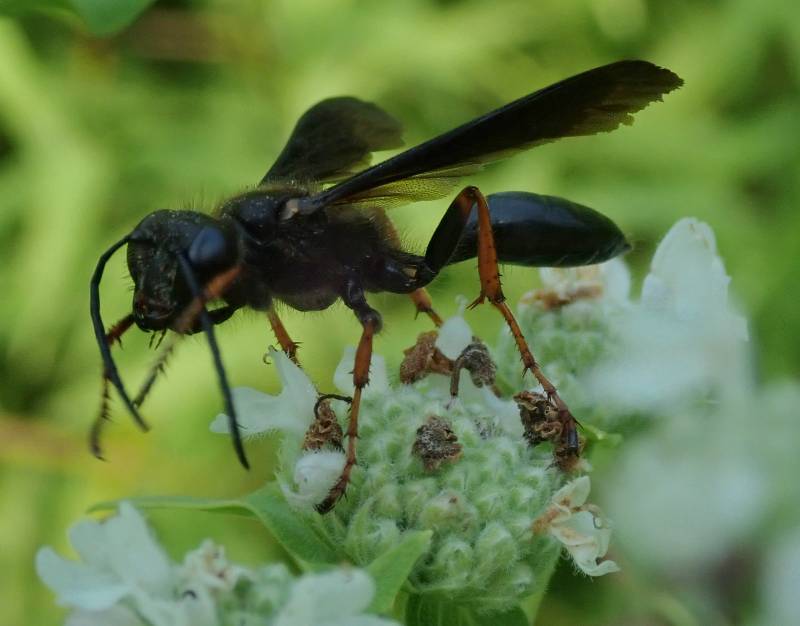

Isodontia auripes (Brown-legged Grass-carrying Wasp) on Virginia Mountainmint (Pycnanthemum virginianum)
Sphex ichneumoneus (Great Golden Digger Wasp)
Group: Invertebrates
Type: Insects
Family: Sphecidae
Notes
Common Names: Great Golden Digger Wasp
Years Observed: 2020; 2021
Identified and First Noted By: Nur Ritter
Comments:
Sphex ichneumoneus nest in full sun areas with low vegetation. After immobilizing prey of katydids (Tettigoniidae), true crickets (Gryllidae), raspy crickets (Gryllacrididae), the female stings it several more times to cause paralysis and drags it backwards into the nest (Holm, 2021).
iNaturalist Observations:
88184289 (Observed: 7/22/2021)
88172553 (Observed: 7/22/2021)
58259616 (Observed: 9/1/2020)
Images
Sphex nudus (Katydid Wasp)
Group: Invertebrates
Type: Insects
Family: Sphecidae
Notes
Common Names: Katydid Wasp
Years Observed: 2020; 2021
Identified and First Noted By: Nur Ritter
Comments:
Shpex nudus drag their prey of katydids (Tettigoniidae) and Carolina leaf rollers (Camptonotus carlinensis) into the nest backwards. No time is spent closing the entrance to the nest while foraging or hunting occurs, which leaves it open to natural enemies (Holm, 2021).
iNaturalist Observations:
94851769 (Observed: 9/10/2021)
58531488 (Observed: 9/4/2020)
Images
Sphex pensylvanicus (Great Black Digger Wasp)
Group: Invertebrates
Type: Insects
Family: Sphecidae
Notes
Common Names: Great Black Digger Wasp
Years Observed: 2020; 2021; 2022
Identified and First Noted By: Nur Ritter
Comments:
With an otherwise dull appearance, the wings of Sphex pensylvanicus shimmer with iridescent highlights. When building nests underground in sandy or soft soils, the female gathers soil in her mandibles and "vibrates her flight muscles to loosen the soil." Nesting and reproductive success may be decreased by birds (house sparrows, American robins, and gray catbirds) exploiting up to 1/3 of their primary food source, katydids (Amblycorpha) (Holm, 2021).
iNaturalist Observations:
126470425 (Observed: 7/15/2022)
88183934 (Observed: 7/22/2021)
86908867 (Observed: 7/13/2021)
60460796 (Observed: 9/22/2020)
Images
Eumorpha pandorus (Pandora Sphinx Moth)
Hyles lineata (White-lined Sphinx)
Paonias excaecata Indet. #1 (Blinded Sphinx)
Group: Invertebrates
Type: Insects
Family: Sphingidae
Notes
Common Names: Blinded Sphinx
Year Observed: 2021
Identified By: A. Liang (iNaturalist)
First Noted By: Maeve Dowd
iNaturalist Observations:
95779588 (Observed: 9/22/2021)
Images
Bledius Indet. #1 (Rove Beetle)
Group: Invertebrates
Type: Insects
Family: Staphylinidae
Notes
Common Names: Rove Beetle
Year Observed: 2021
Identified and First Noted By: Nur Ritter
iNaturalist Observations:
79192777 (Observed: 5/17/2021)
Images
Philonthus Indet. #1 (Rove Beetle)
Group: Invertebrates
Type: Insects
Family: Staphylinidae
Notes
Common Names: Rove Beetle
Year Observed: 2021
Identified By: B. Büche (iNaturalist)
First Noted By: Nur Ritter
iNaturalist Observations:
77874014 (Observed: 5/7/2021)
Images
Quedius cruentus (Rove Beetle)
Group: Invertebrates
Type: Insects
Family: Staphylinidae
Notes
Common Names: Rove Beetle
Year Observed: 2021
Identified By: B. Büche (iNaturalist)
First Noted By: Nur Ritter
iNaturalist Observations:
77431565 (Observed: 5/4/2021)
Images
Stratiomyidae Indet. #1 (Soldier Fly)
Group: Invertebrates
Type: Insects
Family: Stratiomyidae
Notes
Common Names: Soldier Fly
Year Observed: 2021
Identified By: J. van der Linden (BugGuide)
First Noted By: Nur Ritter
iNaturalist Observations:
71612342 (Observed: 3/19/2021)
Images
Eristalis dimidiata (Black-shouldered Drone Fly)
Group: Invertebrates
Type: Insects
Family: Syrphidae
Notes
Common Names: Black-shouldered Drone Fly
Years Observed: 2020; 2022
Identified and First Noted By: Nur Ritter
iNaturalist Observations:
138603325 (Observed: 10/12/2022)
137816985 (Observed: 10/6/2022)
136844653 (Observed: 9/28/2022)
61441977 (Observed: 10/1/2020)
69085473 (Observed: 10/1/2020)
Images
Eristalis tenax (Common Drone Fly)
Group: Invertebrates
Type: Insects
Family: Syrphidae
Notes
Common Names: Common Drone Fly
Year Observed: 2021
Identified and First Noted By: Nur Ritter
iNaturalist Observations:
78517955 (Observed: 5/12/2021)
Images
Helophilus fasciatus (Narrrow-headed Marsh Fly)
Group: Invertebrates
Type: Insects
Family: Syrphidae
Notes
Common Names: Narrrow-headed Marsh Fly
Years Observed: 2020; 2022
Identified By: T. Roberts (iNaturalist)
First Noted By: Nur Ritter
iNaturalist Observations:
138376449 (Observed: 10/10/2022)
137894571 (Observed: 10/7/2022)
61427206 (Observed: 10/1/2020)
Images
Mallota posticata (Hairy-eyed Mimic Fly)
Group: Invertebrates
Type: Insects
Family: Syrphidae
Notes
Common Names: Hairy-eyed Mimic Fly
Year Observed: 2023
Identified By: Nur Ritter
First Noted By: Miranda Davies
Also Noted By: Kathryn Krueger; Nur Ritter
iNaturalist Observations:
228446756 (Observed: 5/18/2023)
161860836 (Observed: 5/11/2023)
Images
Meromacrus acutus (Carolinian Elegant)
Group: Invertebrates
Type: Insects
Family: Syrphidae
Notes
Common Names: Carolinian Elegant
Year Observed: 2020
Identified and First Noted By: Nur Ritter
iNaturalist Observations:
59373006 (Observed: 9/12/2020)
Images
Ocyptamus fuscipennis (Hover Fly)
Group: Invertebrates
Type: Insects
Family: Syrphidae
Notes
Common Names: Hover Fly
Year Observed: 2022
Identified By: C. C. Galley (iNaturalist)
First Noted By: Nur Ritter
iNaturalist Observations:
132164451 (Observed: 8/24/2022)
Images
Sphaerophoria contigua (Tufted Globetail)
Group: Invertebrates
Type: Insects
Family: Syrphidae
Notes
Common Names: Tufted Globetail
Year Observed: 2023
Identified and First Noted By: Nur Ritter
iNaturalist Observations:
171562252 (Observed: 7/7/2023)
Syrphus rectus (Yellow-legged Flower Fly)
Group: Invertebrates
Type: Insects
Family: Syrphidae
Notes
Common Names: Yellow-legged Flower Fly
Year Observed: 2022
Identified By: T. Roberts (iNaturalist)
First Noted By: Nur Ritter
iNaturalist Observations:
137852690 (Observed: 10/6/2022)
Temnostoma trifasciatum (Three-lined Falsehorn)
Toxomerus boscii (Thin-lined Calligrapher)
Group: Invertebrates
Type: Insects
Family: Syrphidae
Notes
Common Names: Thin-lined Calligrapher
Year Observed: 2022
Identified and First Noted By: Nur Ritter
iNaturalist Observations:
122939341 (Observed: 6/21/2022)
Images
Toxomerus geminatus (Eastern Calligrapher)
Group: Invertebrates
Type: Insects
Family: Syrphidae
Notes
Common Names: Eastern Calligrapher
Years Observed: 2020; 2021
Identified and First Noted By: Nur Ritter
Comments:
To date: noted in a couple wetland areas. One individual was visiting a Longbeak Arrowhead (Sagittaria australis); the other was visiting an undetermined species of Boraginaceae.
iNaturalist Observations:
77518364 (Observed: 5/5/2021)
75439378 (Observed: 4/27/2021)
53776833 (Observed: 7/20/2020)
Images
Toxomerus marginatus (Margined Calligrapher)
Group: Invertebrates
Type: Insects
Family: Syrphidae
Notes
Common Names: Margined Calligrapher
Years Observed: 2020; 2021; 2022; 2023
Identified By: T. Roberts (iNaturalist)
First Noted By: Nur Ritter
Also Noted By: Kathryn Krueger
iNaturalist Observations:
180149105 (Observed: 8/25/2023)
137857019 (Observed: 10/6/2022)
122939945 (Observed: 6/21/2022)
83064257 (Observed: 6/14/2021)
79194625 (Observed: 5/17/2021)
58270948 (Observed: 9/1/2020)
59365079 (Observed: 9/12/2020)
62343834 (Observed: 10/11/2020)
Images
Goniops chrysocoma (Golden-Haired Tabanid Fly)
Group: Invertebrates
Type: Insects
Family: Tabanidae
Notes
Common Names: Golden-Haired Tabanid Fly
Year Observed: 2022
Identified By: R. Nygard (iNaturalist)
First Noted By: R. Nygard
iNaturalist Observations:
123977047 (Observed: 6/29/2022)
Images
Tabanus lineola (Striped Horse Fly)
Group: Invertebrates
Type: Insects
Family: Tabanidae
Notes
Common Names: Striped Horse Fly
Year Observed: 2022
Identified and First Noted By: Nur Ritter
iNaturalist Observations:
119756205 (Observed: 6/1/2022)
Images
Dinera Indet. #1
Group: Invertebrates
Type: Insects
Family: Tachinidae
Notes
Year Observed: 2021
Identified and First Noted By: Nur Ritter
iNaturalist Observations:
97357385 (Observed: 10/6/2021)
Images
Exoristinae Indet. #1 (Bristle Fly)
Group: Invertebrates
Type: Insects
Family: Tachinidae
Notes
Common Names: Bristle Fly
Year Observed: 2020
Identified By: A. Santos (iNaturalist)
First Noted By: Nur Ritter
iNaturalist Observations:
59773261 (Observed: 9/15/2020)
Images
Gonia Indet. #1 (Bristle Fly)
Group: Invertebrates
Type: Insects
Family: Tachinidae
Notes
Common Names: Bristle Fly
Year Observed: 2021
Identified By: C. Angell (iNaturalist)
First Noted By: Nur Ritter
iNaturalist Observations:
75701806 (Observed: 4/29/2021)
Images
Juriniopsis adusta (No Common Name)
Trichopoda pennipes (Swift Feather-legged Fly)
Taeniopterygidae Indet. #1 (Winter Stoneflies)
Group: Invertebrates
Type: Insects
Family: Taeniopterygidae
Notes
Common Names: Winter Stoneflies
Year Observed: 2022
Identified By: E. Falquet (iNaturalist)
First Noted By: Kathryn Krueger
iNaturalist Observations:
109864309 (Observed: 3/29/2022)
Images
Alobates pensylvanicus (False Mealworm Beetle)
Group: Invertebrates
Type: Insects
Family: Tenebrionidae
Notes
Common Names: False Mealworm Beetle
Years Observed: 2020; 2021
Identified and First Noted By: Nur Ritter
iNaturalist Observations:
87900205 (Observed: 7/20/2021)
45018565 (Observed: 5/5/2020)
67257078 (Observed: 12/29/2020)
69316841 (Observed: 2/9/2021)
Images
Tenebrionidae Indet. #1 (Darkling Beetle)
Group: Invertebrates
Type: Insects
Family: Tenebrionidae
Notes
Common Names: Darkling Beetle
Year Observed: 2021
Identified By: Nur Ritter
First Noted By: Noah Long
iNaturalist Observations:
81916589 (Observed: 6/4/2021)
Images
Eurosta solidaginis (Goldenrod Gall Fly)
Group: Invertebrates
Type: Insects
Family: Tephritidae
Notes
Common Names: Goldenrod Gall Fly
Year Observed: 2021
Identified and First Noted By: Nur Ritter
iNaturalist Observations:
85263302 (Observed: 7/1/2021)
Images
Procecidochares atra (Goldenrod Brussels Sprout Gall Fly)
Group: Invertebrates
Type: Insects
Family: Tephritidae
Notes
Common Names: Goldenrod Brussels Sprout Gall Fly
Year Observed: 2020
Identified By: D. McClosky (iNaturalist)
First Noted By: Nur Ritter
iNaturalist Observations:
59738050 (Observed: 9/15/2020)
Images
Rhagoletis suavis (Walnut Husk Maggot Fly)
Group: Invertebrates
Type: Insects
Family: Tephritidae
Notes
Common Names: Walnut Husk Maggot Fly
Year Observed: 2023
Identified By: Nur Ritter
First Noted By: Mary Teresa O'Hara
iNaturalist Observations:
183395277 (Observed: 9/15/2023)
Conocephalus brevipennis (Short-winged Meadow Katydid)
Group: Invertebrates
Type: Insects
Family: Tettigoniidae
Notes
Common Names: Short-winged Meadow Katydid
Years Observed: 2020; 2021; 2022
Identified By: B. Woo (iNaturalist)
First Noted By: Nur Ritter
Comments:
Seemingly quite common along the PECO power line right-of-way, but these are fast-moving and hard to photograph and there may have been multiple species involved.
iNaturalist Observations:
95092341 (Observed: 9/16/2021)
91590128 (Observed: 8/17/2021)
57723067 (Observed: 8/26/2020)
58543392 (Observed: 9/4/2020)
59253240 (Observed: 9/11/2020)
Images
Conocephalus strictus (Straight-lanced Meadow Katydid)
Scudderia (Scutters Bush Katydids)
Group: Invertebrates
Type: Insects
Family: Tettigoniidae
Notes
Common Names: Scutter's Bush Katydids
Year Observed: 2022
Identified By: Nur Ritter
First Noted By: Alex Desjardines
iNaturalist Observations:
126978340 (Observed: 7/19/2022)
Images
Myzinum quinquecinctum (Five-banded Thynnid Wasp)
Group: Invertebrates
Type: Insects
Family: Thynnidae
Notes
Common Names: Five-banded Thynnid Wasp
Year Observed: 2021
Identified By: Nur Ritter
First Noted By: Noah Long
iNaturalist Observations:
110684371 (Observed: 7/23/2021)
Images
Corimelaena Indet. #1 (No Common Name)
Group: Invertebrates
Type: Insects
Family: Thyreocoridae
Notes
Common Names: No Common Name
Year Observed: 2022
Identified By: Nur Ritter
First Noted By: Miranda Davies
iNaturalist Observations:
116442953 (Observed: 5/10/2022)
Images
Tanyptera dorsalis (Antlered Crane Fly)
Group: Invertebrates
Type: Insects
Family: Tipulidae
Notes
Common Names: Antlered Crane Fly
Year Observed: 2022
Identified and First Noted By: Nur Ritter
iNaturalist Observations:
119760253 (Observed: 6/1/2022)
Images
Tipula borealis (Crane Fly)
Group: Invertebrates
Type: Insects
Family: Tipulidae
Notes
Common Names: Crane Fly
Year Observed: 2020
Identified By: Stephen Luk (iNaturalist)
First Noted By: Nur Ritter
iNaturalist Observations:
61441356 (Observed: 10/1/2020)
Images
Tipula Indet. #2 (Crane Fly)
Group: Invertebrates
Type: Insects
Family: Tipulidae
Notes
Common Names: Crane Fly
Year Observed: 2020
Identified By: HypersonicGX (iNaturalist)
First Noted By: Nur Ritter
iNaturalist Observations:
62081082 (Observed: 10/8/2020)
Images
Tipula Indet. #3 (Crane Fly)
Group: Invertebrates
Type: Insects
Family: Tipulidae
Notes
Common Names: Crane Fly
Year Observed: 2020
Identified and First Noted By: Nur Ritter
iNaturalist Observations:
62081157 (Observed: 10/8/2020)
Images
Tipula Indet. #4 (Crane Fly)
Group: Invertebrates
Type: Insects
Family: Tipulidae
Notes
Common Names: Crane Fly
Years Observed: 2007; 2017
Identified and First Noted By: Danielle DiFederico
Also Noted By: Stroud Water Research Center - 2017
Choristoneura fractivittana (Broken-banded Leafroller Moth)
Group: Invertebrates
Type: Insects
Family: Tortricidae
Notes
Common Names: Broken-banded Leafroller Moth
Year Observed: 2021
Identified and First Noted By: Nur Ritter
iNaturalist Observations:
79440552 (Observed: 5/19/2021)
Images
Choristoneura parallela (Parallel-banded Leafroller Moth)
Group: Invertebrates
Type: Insects
Family: Tortricidae
Notes
Common Names: Parallel-banded Leafroller Moth
Year Observed: 2023
Identified By: Nur Ritter
First Noted By: Miranda Davies and Kathryn Krueger
iNaturalist Observations:
200116874 (Observed: 8/25/2023)
Clepsis melaleucanus (Black-patched Clepsis Moth)
Group: Invertebrates
Type: Insects
Family: Tortricidae
Notes
Common Names: Black-patched Clepsis Moth
Year Observed: 2022
Identified and First Noted By: Nur Ritter
iNaturalist Observations:
119762732 (Observed: 6/1/2022)
Images
Neophylax concinnus (No Common Name)
Group: Invertebrates
Type: Insects
Family: Uenoidae
Notes
Common Names: No Common Name
Year Observed: 2020
Identified and First Noted By: Stroud Water Research Center
Neophylax Indet. #1
Group: Invertebrates
Type: Insects
Family: Uenoidae
Notes
Year Observed: 2007
Identified and First Noted By: Danielle DiFederico
Neophylax mitchelli (No Common Name)
Group: Invertebrates
Type: Insects
Family: Uenoidae
Notes
Common Names: No Common Name
Year Observed: 2020
Identified and First Noted By: Stroud Water Research Center
Neophylax oligius (No Common Name)
Group: Invertebrates
Type: Insects
Family: Uenoidae
Notes
Common Names: No Common Name
Years Observed: 2017; 2018; 2020; 2022
Identified and First Noted By: Stroud Water Research Center
Tritoxa incurva (Picture-winged Fly)
Group: Invertebrates
Type: Insects
Family: Ulidiidae
Notes
Common Names: Picture-winged Fly
Year Observed: 2020
Identified and First Noted By: Nur Ritter
iNaturalist Observations:
61425585 (Observed: 10/1/2020)
Images
Microvelia Indet. #1 (No Common Name)
Group: Invertebrates
Type: Insects
Family: Veliidae
Notes
Common Names: No Common Name
Year Observed: 2020
Identified and First Noted By: Stroud Water Research Center
Ancistrocerus adiabatus (Potter Wasp)
Group: Invertebrates
Type: Insects
Family: Vespidae
Notes
Common Names: Potter Wasp; Bramble Mason Wasp
Years Observed: 2020; 2021; 2022
Identified By: M. Buck (iNaturalist)
First Noted By: Nur Ritter
Comments:
Seemingly, fairly common in the wet meadow at the eastern end of the Gordon. A female can easily be identified by a yellow band across the thorax combined with two spots above, which forms a "smiley face." This species mainly preys upon moth caterpillars (Holm, 2021).
iNaturalist Observations:
138604296 (Observed: 10/12/2022)
80293306 (Observed: 5/25/2021)
60655469 (Observed: 9/24/2020)
61149673 (Observed: 9/28/2020)
Images
Ancistrocerus antilope (Lobed Mason Wasp)
Group: Invertebrates
Type: Insects
Family: Vespidae
Notes
Common Names: Lobed Mason Wasp
Year Observed: 2022
Identified and First Noted By: Nur Ritter
iNaturalist Observations:
136906964 (Observed: 9/28/2022)
Images
Ancistrocerus campestris (Smiling Mason Wasp)
Group: Invertebrates
Type: Insects
Family: Vespidae
Notes
Common Names: Smiling Mason Wasp
Year Observed: 2022
Identified By: bdagley (iNaturalist)
First Noted By: Nur Ritter
iNaturalist Observations:
135815070 (Observed: 9/20/2022)
Images
Dolichovespula maculata (Bald-faced Hornet)
Group: Invertebrates
Type: Insects
Family: Vespidae
Notes
Common Names: Bald-faced Hornet
Years Observed: 2015; 2017; 2018; 2019; 2020; 2022; 2023
Identified and First Noted By: Nur Ritter
Also Noted By: Kendra McMillin; Kathryn Krueger
iNaturalist Observations:
177205999 (Observed: 8/3/2023)
137853558 (Observed: 10/6/2022)
59254008 (Observed: 9/11/2020)
60650807 (Observed: 9/24/2020)
Images
Eumenes fraternus (Fraternal Potter Wasp)
Monobia quadridens (Four-toothed Mason Wasp)
Group: Invertebrates
Type: Insects
Family: Vespidae
Notes
Common Names: Four-toothed Mason Wasp
Year Observed: 2020
Identified and First Noted By: Nur Ritter
iNaturalist Observations:
61146318 (Observed: 9/28/2020)
Images
Parancistrocerus histrio (No Common Name)
Group: Invertebrates
Type: Insects
Family: Vespidae
Notes
Common Names: No Common Name
Year Observed: 2022
Identified and First Noted By: Nur Ritter
iNaturalist Observations:
127268595 (Observed: 7/20/2022)
Images
Parancistrocerus perennis (No Common Name)
Group: Invertebrates
Type: Insects
Family: Vespidae
Notes
Common Names: No Common Name
Year Observed: 2022
Identified and First Noted By: Nur Ritter
iNaturalist Observations:
132001178 (Observed: 8/22/2022)
Images
Polistes dominula (European Paper Wasp)
Polistes fuscatus (Northern Paper Wasp)
Group: Invertebrates
Type: Insects
Family: Vespidae
Notes
Common Names: Northern Paper Wasp; Dark Paper Wasp
Years Observed: 2018; 2019; 2022
Identified and First Noted By: Nur Ritter
iNaturalist Observations:
138375770 (Observed: 10/10/2022)
136905780 (Observed: 9/28/2022)
134334092 (Observed: 9/9/2022)
71314215 (Observed: 11/7/2018)
Images
Polistes metricus (Metric Paper Wasp)
Group: Invertebrates
Type: Insects
Family: Vespidae
Notes
Common Names: Metric Paper Wasp
Years Observed: 2020; 2022
Identified and First Noted By: Nur Ritter
iNaturalist Observations:
137818103 (Observed: 10/6/2022)
136194935 (Observed: 9/23/2022)
61426310 (Observed: 10/1/2020)
62193957 (Observed: 10/9/2020)
Images
Vespa crabro (European Hornet)
Group: Invertebrates
Type: Insects
Family: Vespidae
Notes
Common Names: European Hornet
Years Observed: 2007; 2009; 2020; 2021
Identified By: Nur Ritter
First Noted By: Gerry Hertel
Also Noted By: Nur Ritter; John Pisciotta
iNaturalist Observations:
70918166 (Observed: 3/9/2021)
63176090 (Observed: )
Images
Vespula germanica (German Yellowjacket)
Group: Invertebrates
Type: Insects
Family: Vespidae
Notes
Common Names: German Yellowjacket
Year Observed: 2020
Identified and First Noted By: Nur Ritter
iNaturalist Observations:
66301176 (Observed: 12/8/2020)
Images
Vespula maculifrons (Eastern Yellowjacket)
Group: Invertebrates
Type: Insects
Family: Vespidae
Notes
Common Names: Eastern Yellowjacket
Years Observed: 2016; 2017; 2018; 2019; 2022
Identified and First Noted By: Nur Ritter
Also Noted By: Maribeth Beatty
iNaturalist Observations:
137854280 (Observed: 10/6/2022)
Images
Vespula squamosa (Southern Yellowjacket)
Group: Invertebrates
Type: Insects
Family: Vespidae
Notes
Common Names: Southern Yellowjacket
Years Observed: 2019; 2020; 2021
Identified and First Noted By: Nur Ritter
Also Noted By: Kathryn Krueger; Miranda Davies
iNaturalist Observations:
102298780 (Observed: 11/30/2021)
71307762 (Observed: 10/1/2020)
39923586 (Observed: 10/4/2019)
58974758 (Observed: 9/8/2020)
67257691 (Observed: 12/29/2020)
Images
Vespula vidua (Widow Yellowjacket)
Dialysis elongata (Awl-fly)
Group: Invertebrates
Type: Insects
Family: Xylophagidae
Notes
Common Names: Awl-fly
Year Observed: 2022
Identified By: Z. Dankowicz (iNaturalist)
First Noted By: Nur Ritter
iNaturalist Observations:
123213566 (Observed: 6/22/2022)
Images
Xylophagus reflectens (Awl-fly)
Group: Invertebrates
Type: Insects
Family: Xylophagidae
Notes
Common Names: Awl-fly
Year Observed: 2022
Identified By: Nur Ritter
First Noted By: Kathryn Krueger
iNaturalist Observations:
115423965 (Observed: 5/3/2022)
Images
Pyromorpha dimidiata (Orange-patched Smoky Moth)
Group: Invertebrates
Type: Insects
Family: Zygaenidae
Notes
Common Names: Orange-patched Smoky Moth
Year Observed: 2021
Identified and First Noted By: Nur Ritter
iNaturalist Observations:
81476069 (Observed: 6/3/2021)
Images
Litylenchus crenatae (Beech Leaf Disease)
Group: Invertebrates
Type: Nematodes
Family: Anguinidae
Notes
Common Names: Beech Leaf Disease
Year Observed: 2023
Identified and First Noted By: Brice Dorwart
Also Noted By: Nur Ritter
iNaturalist Observations:
166101860 (Observed: 6/6/2023)
Nemertea Indet. #1 (Ribbon Worm)
Group: Invertebrates
Type: Ribbon Worms
Notes
Common Names: Ribbon Worm
Years Observed: 2017; 2018
Identified and First Noted By: Stroud Water Research Center
Dicyrtomina ornata (No Common Name)
Group: Invertebrates
Type: Springtails
Family: Dicyrtomidae
Notes
Common Names: No Common Name
Years Observed: 2021; 2022; 2023; 2024
Identified By: Nur Ritter
First Noted By: Kathryn Krueger
Also Noted By: Miranda Davies; Nur Ritter
Comments:
One of the globular springtails. Some very good photos and discussion can be found here.
iNaturalist Observations:
198233333 (Observed: 2/2/2024)
146842145 (Observed: 1/18/2023)
106927190 (Observed: 2/17/2022)
102294223 (Observed: 11/30/2021)
Images
Homidia sauteri (Slender Springtail)
Group: Invertebrates
Type: Springtails
Family: Entomobryidae
Notes
Common Names: Slender Springtail
Year Observed: 2020
Identified By: J. Shorma (iNaturalist)
First Noted By: Nur Ritter
iNaturalist Observations:
41784157 (Observed: 4/9/2020)
Images
Lepidocyrtus Indet. #1 (Springtail)
Hypogastrura Indet. #1 (Snow Flea)
Group: Invertebrates
Type: Springtails
Family: Hypogastruridae
Notes
Common Names: Snow Flea
Year Observed: 2022
Identified and First Noted By: Nur Ritter
iNaturalist Observations:
106746352 (Observed: 2/11/2022)
Images
Hypogastruridae Indet. #1 (Hypogastrurid Springtail)
Group: Invertebrates
Type: Springtails
Family: Hypogastruridae
Notes
Common Names: Hypogastrurid Springtail
Year Observed: 2018
Identified By: J. Radwański (iNaturalist)
First Noted By: Nur Ritter
iNaturalist Observations:
71312603 (Observed: 9/26/2018)
Images
Sminthurinus quadrimaculatus (Globular Springtail)
Neanura muscorum (Moss Springtail)
Group: Invertebrates
Type: Springtails
Family: Neanuridae
Notes
Common Names: Moss Springtail
Year Observed: 2023
Identified and First Noted By: Nur Ritter
iNaturalist Observations:
146777378 (Observed: 1/11/2023)
Tomoceridae Indet. #1 (Elongate-bodied Springtails)
Group: Invertebrates
Type: Springtails
Family: Tomoceridae
Notes
Common Names: Elongate-bodied Springtails
Year Observed: 2020
Identified and First Noted By: Nur Ritter
iNaturalist Observations:
47663630 (Observed: 5/28/2020)
Images
Tomocerinae Indet. #1 (Springtail)
Group: Invertebrates
Type: Springtails
Family: Tomoceridae
Notes
Common Names: Springtail
Year Observed: 2020
Identified By: binbongo (iNaturalist)
First Noted By: Paige Vermeulen
iNaturalist Observations:
71299842 (Observed: 3/9/2020)
Images
Oligochaeta Indet. #1 (Worm)
Group: Invertebrates
Type: Worms
Notes
Common Names: Worm
Years Observed: 2007; 2017; 2018; 2019; 2020
Identified and First Noted By: Danielle DiFederico
Also Noted By: Stroud Water Research Center - 2017
Amynthas agrestis (Crazy Snake Worm)
Group: Invertebrates
Type: Worms
Family: Megascolecidae
Notes
Common Names: Crazy Snake Worm
Year Observed: 2018
Identified and First Noted By: Nur Ritter

